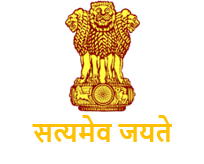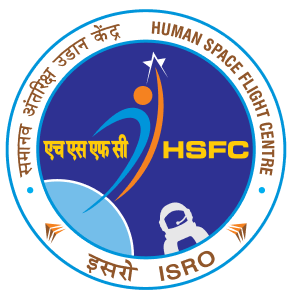Astronaut Corner
Indian Astronauts
1. Rakesh Sharma
Wing Commander Rakesh Sharma, is a former Indian Air Force pilot who flew aboard Soyuz T-11 on 3 April 1984 as part of the Soviet Interkosmos programme. Rakesh Sharma became the first Indian citizen to enter space when he flew aboard the Soviet rocket Soyuz T-11 launched from Baikonur Cosmodrome in the Kazakh Soviet Socialist Republic on 3 April 1984. The Soyuz T-11 spacecraft carrying cosmonauts including Sharma docked and transferred the three member Soviet-Indian international crew, consisting of Yury Malyshev, and Gennadi Strekalov, to the Salyut 7 Orbital Station. Sharma spent 7 days, 21 hours, and 40 minutes aboard the Salyut 7 during which his team conducted scientific and technical studies which included forty-three experimental sessions. His work was mainly in the fields of bio-medicine and remote sensing. The crew held a joint television news conference with officials in Moscow and then Indian Prime Minister Indira Gandhi. When Indira Gandhi asked Sharma how India looked from outer space, he replied, "Sare Jahan Se Accha" (the best in the world). This is the title of a patriotic poem by Iqbal , that continues to be popular today. With Sharma's voyage aboard Soyuz T-11, India became the 14th nation to send a man to outer space
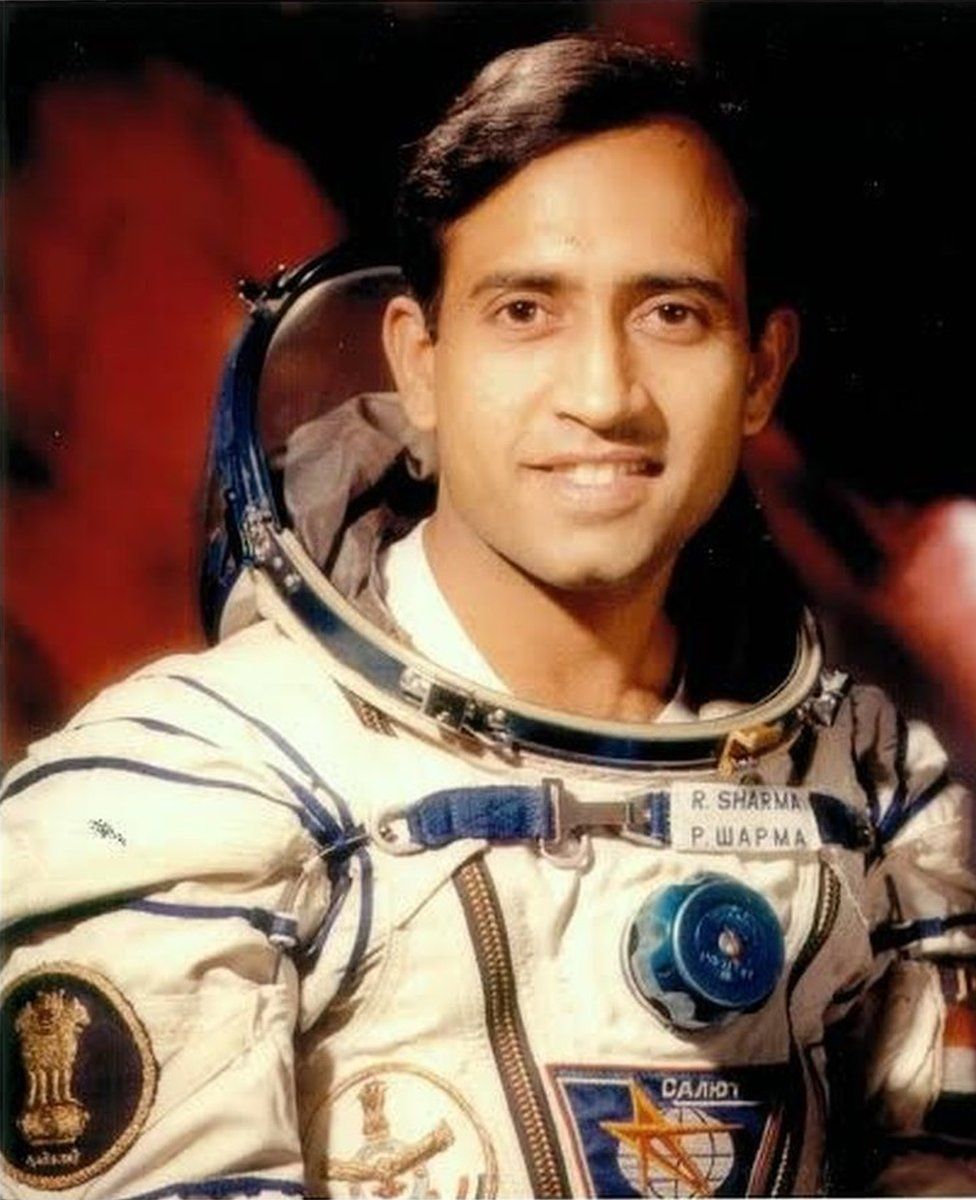
Astronauts of Indian origin
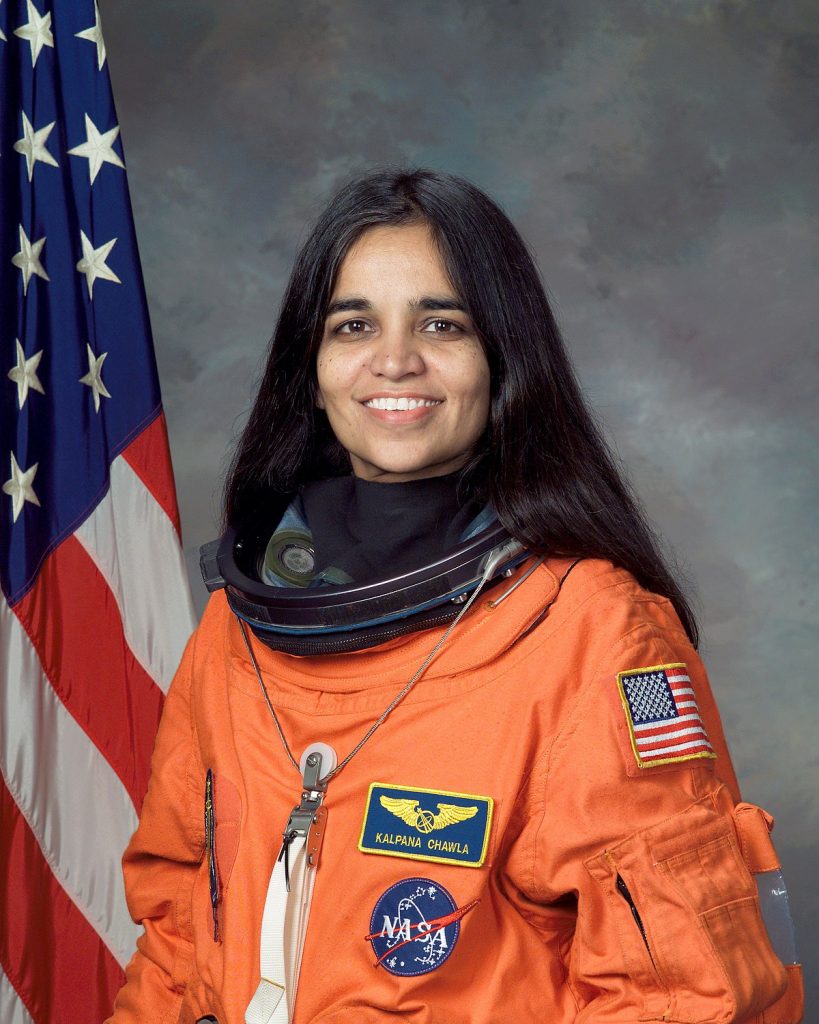
1. Kalpana Chawla
The first ever woman of Indian origin to visit space was Kalpana Chawla. Born in Karnal, Punjab, Chawla went to America to study engineering in Texas. She ultimately received a PhD in aerospace engineering and thus began her journey toward space.
She was one of the six-member crew on STS-87 in 1997 and travelled over 10.4 million miles. Her second mission was STS-107 in 2003. The fatal mission ended in disaster when the shuttle disintegrated while re-entering Earth after a successful mission in space.
Chawla was awarded Congressional Space Medal of Honour, posthumously.
2. Sunitha Williams
Sunita Williams was selected as an astronaut by NASA in 1998 and is a veteran of two space missions, Expeditions 14/15 and 32/33. NASA Expedition 14/15 (December 9, 2006 to June 22, 2007). Ms. Williams was launched with the crew of STS-116 on December 9, 2006, docking with the International Space Station on December 11, 2006 and Expedition 32/33 (July 14 to November 18, 2012). Again she was launched from the Baikonur Cosmodrome in Kazakhstan. While on-board, she established a world record for females with four spacewalks totalling 29 hours and 17 minutes.
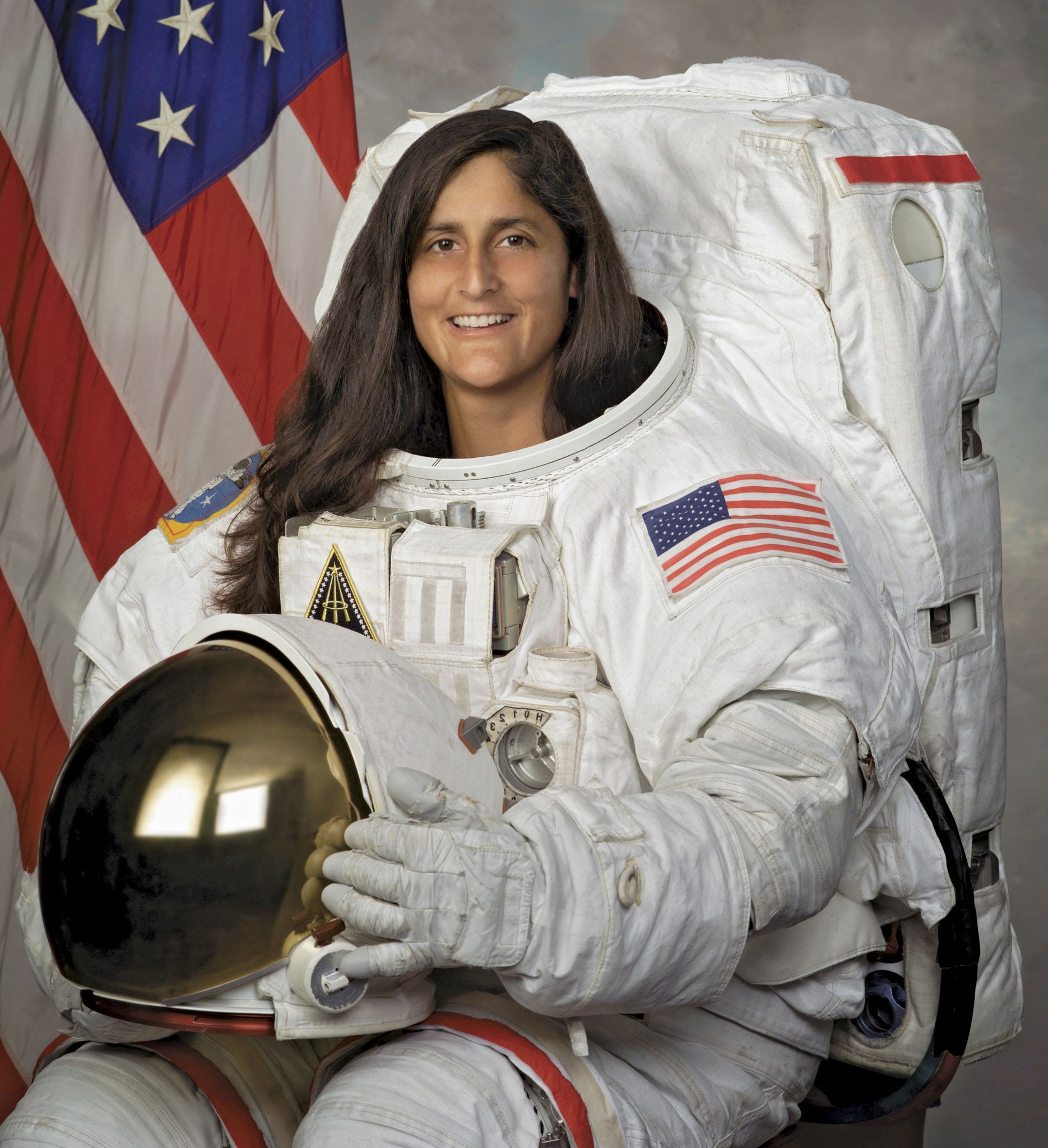
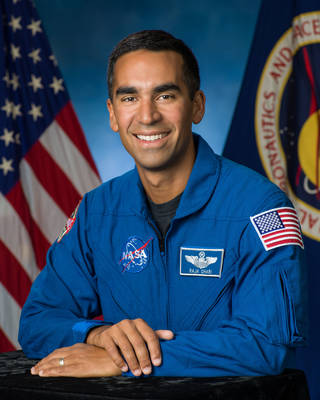
3. Raja Jon Vurputoor Chari
Raja Jon Vurputoor Chari, an Indian-American astronaut test pilot, was born on June 24, 1977. He holds more than 2,000 flying hours and is a Massachusetts Institute of Technology, United States Naval Test Pilot School, and United States Air Force Academy graduate. In the American Air Force, he has the rank of colonel.
In June 2017, Chari was selected for NASA Astronaut Group 22, and reported for duty in August to begin two years of training as an astronaut.
In December 2020, Chari was selected to be a part of the Artemis Team, a group of astronauts "to help pave the way for the next lunar missions including sending the first woman and next man to walk on the lunar surface in 2024." The same month, he became the first astronaut from Group 22 to be selected for a space mission, SpaceX Crew-3, which he commanded. Chari is the first NASA rookie to command a spaceflight since Joe Engle, who commanded the STS-2 mission in 1981.
On March 23, 2022, Chari and ESA astronaut Matthias Maurer exited the Quest Joint Airlock on the ISS and performed an EVA.
4. Sirisha Bandla
American aeronautical engineer Sirisha Bandla, born in India in 1988,and is another Indian American astronaut. She works for Virgin Galactic as the Vice President of Government Affairs and Research Operations. After Rakesh Sharma, Kalpana Chawla, and Sunita Williams, she was the third Indian-origin woman to travel to space in the Virgin Galactic Unity 22 project.
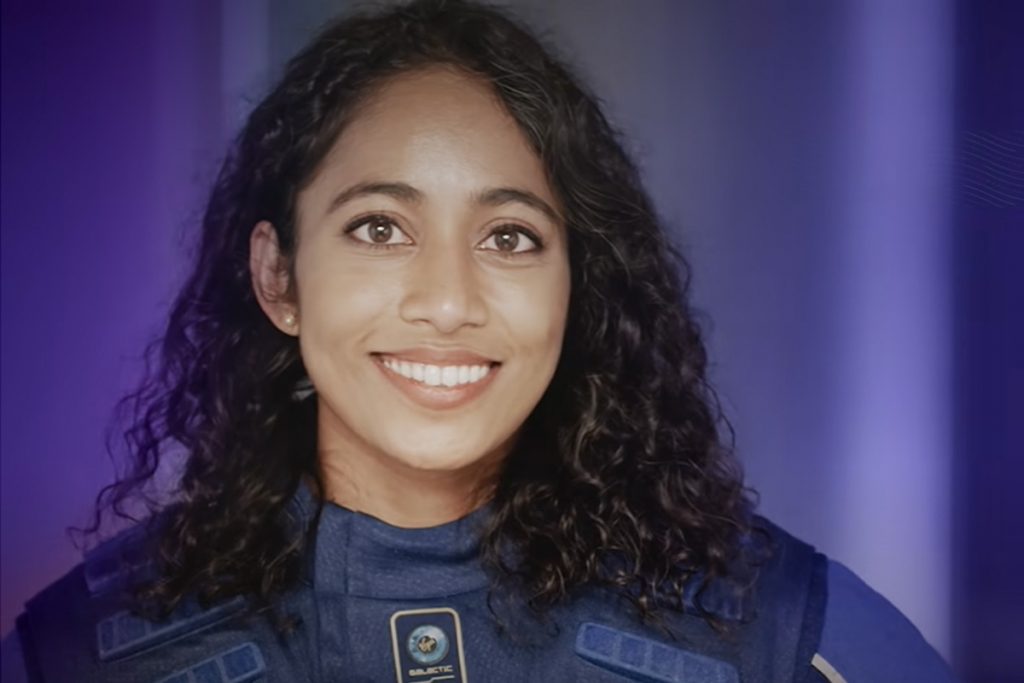
The Moon Travelers
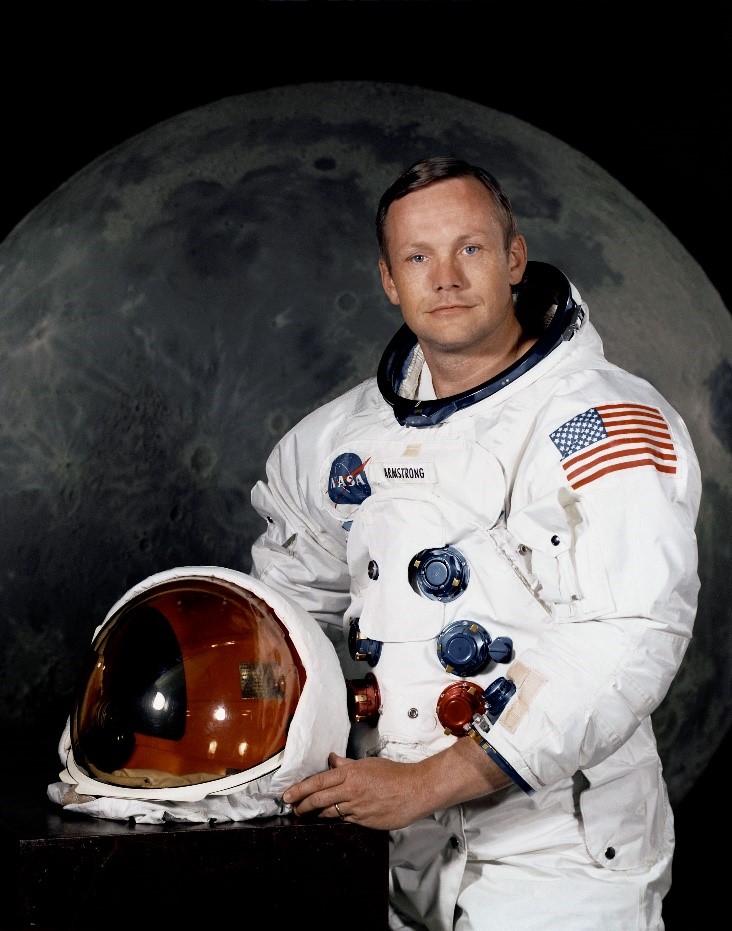
Neil Armstrong

Neil Armstrong
Neil A. Armstrong, the first man to walk on the moon, was born in Wapakoneta, Ohio, on August 5, 1930. He began his NASA career in Ohio.
Armstrong joined the National Advisory Committee for Aeronautics (NACA) in 1955. Over the next 17 years, he was an engineer, test pilot, astronaut and administrator for NACA and its successor agency, the National Aeronautics and Space Administration (NASA).
He was assigned as command pilot for the Gemini 8 mission. Gemini 8 was launched on March 16, 1966, and Armstrong performed the first successful docking of two vehicles in space.
Armstrong was decorated by 17 countries. He was the recipient of many special honors, including the Presidential Medal of Freedom; the Congressional Gold Medal; the Congressional Space Medal of Honor; the Explorers Club Medal; the Robert H. Goddard Memorial Trophy; the NASA Distinguished Service Medal etc.
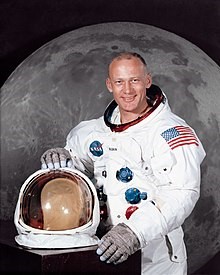
Buzz Aldrin (Edwin Eugene Aldrin Jr)

Buzz Aldrin (Edwin Eugene Aldrin Jr)
Born on January 20, 1930 is an American former astronaut, engineer and fighter pilot. He made three spacewalks as pilot of the 1966 Gemini 12 mission. He was the Lunar Module Eagle pilot on the 1969 Apollo 11 mission and became the second person to walk on the Moon after mission commander Neil Armstrong.
After earning a Doctor of Science degree in astronautics from the Massachusetts Institute of Technology (MIT), Aldrin was selected as a member of NASA's Astronaut Group 3, making him the first astronaut with a doctoral degree. His doctoral thesis, Line-of-Sight Guidance Techniques for Manned Orbital Rendezvous, earned him the nickname "Dr. Rendezvous" from fellow astronauts. His first space flight was in 1966 on Gemini 12, during which he spent over five hours on extravehicular activity. Three years later, Aldrin set foot on the Moon at 03:15:16 on July 21, 1969 (UTC), nineteen minutes after Armstrong first touched the surface, while command module pilot Michael Collins remained in lunar orbit.
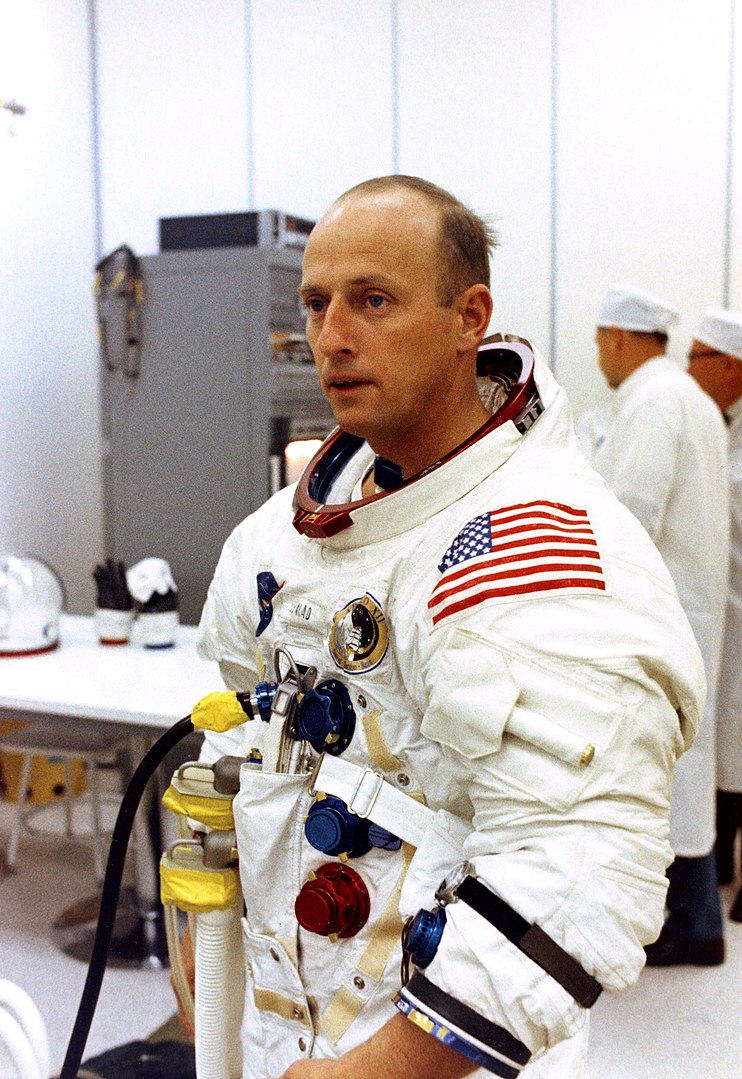
Charles "Pete" Conrad, Jr.

Charles "Pete" Conrad, Jr.
Charles "Pete" Conrad, Jr. (June 2, 1930 – July 8, 1999) was an American test pilot, aeronautical engineer and astronaut. During the Apollo 12 flight he became the third man to walk on the Moon. On August 21, 1965, Conrad flew into space as pilot of Gemini 5. This was the third trip by astronauts in NASA's Project Gemini. The trip lasted until August 29, 1965. Conrad made another spaceflight as command pilot (pilot in charge) of Gemini 11. This was the ninth trip by astronauts in Project Gemini. The trip lasted from September 12, 1966 to September 15, 1966.
Conrad made his third space flight as spacecraft commander (person in charge) of Apollo 12. This was the second trip to land astronauts on the moon. The trip lasted from November 14, 1969 to November 24, 1969. Conrad flew in space for the fourth time as commander of the Skylab 2 flight. This was the first flight to take astronauts to Skylab, the first space station sent into space by the United States. The trip lasted from May 25, 1973 to June 22, 1973.
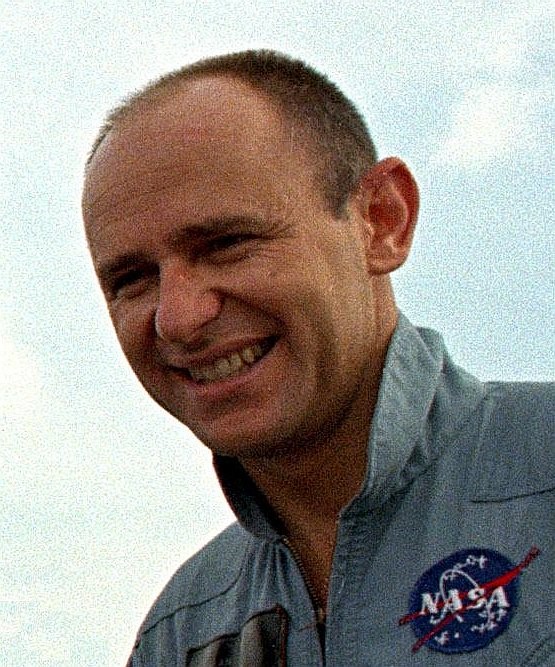
Alan LaVern Bean

Alan LaVern Bean
Alan LaVern Bean (March 15, 1932–May26,2018), (Capt, USN, Ret.), was an American former naval officer and aviator, aeronautical engineer, test pilot, and NASA astronaut. He was the fourth person to walk on the Moon. He was selected to become an astronaut by NASA in 1963 as part of Astronaut Group 3. He made his first flight into space aboard Apollo 12, the second manned mission to land on the Moon, at the age of thirty-seven years in November 1969
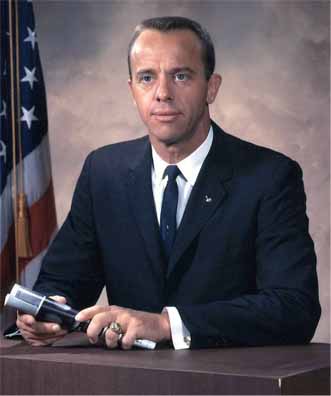
Alan Shepard

Alan Shepard
Alan Shepard (November 18, 1923 - July 21, 1998)was an American astronaut. He was the first American to travel into space. He was born in East Derry, New Hampshire. He received a Bachelor of Science at Naval Academy in 1944, graduated at Naval Testpilot School in 1951 and he earned a Master of Arts at the Naval War College in 1957.
On May 5, 1961, Shepard flew into space in the Mercury spacecraft. This was powered by a Redstone rocket.
He made another space flight as spacecraft commander (person in charge) of Apollo 14. This was the third trip to land astronauts on the moon. The trip lasted from January 31 - February 9, 1971.[2] At the age of 47, he was the oldest person to ever walk on the Moon.
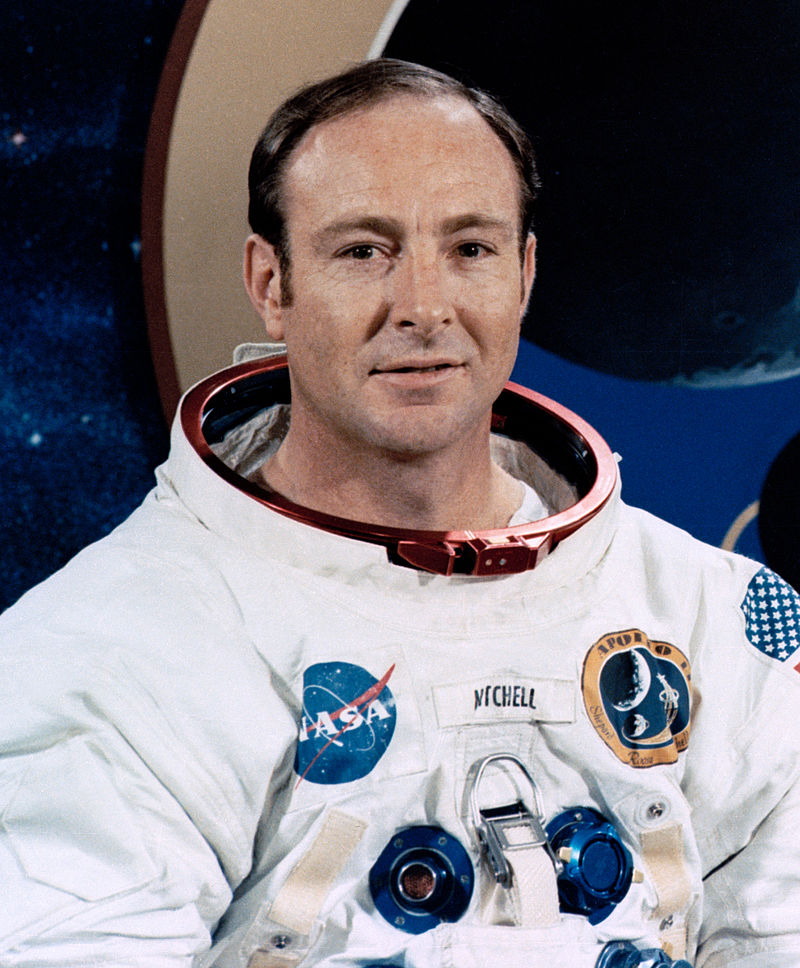
Dr. Edgar Dean "Ed" Mitchell

Dr. Edgar Dean "Ed" Mitchell
Dr. Edgar Dean "Ed" Mitchell, (September 17, 1930 – February 4, 2016), (Capt, USN, Ret.) was an American retired naval officer and aviator, test pilot, aeronautical engineer, parapsychologist, and NASA astronaut. He was a moonwalker.
He was the Lunar Module Pilot of Apollo 14. He spent nine hours working on the lunar surface in the Fra Mauro Highlands region. Mitchell was born in Hereford, Texas.
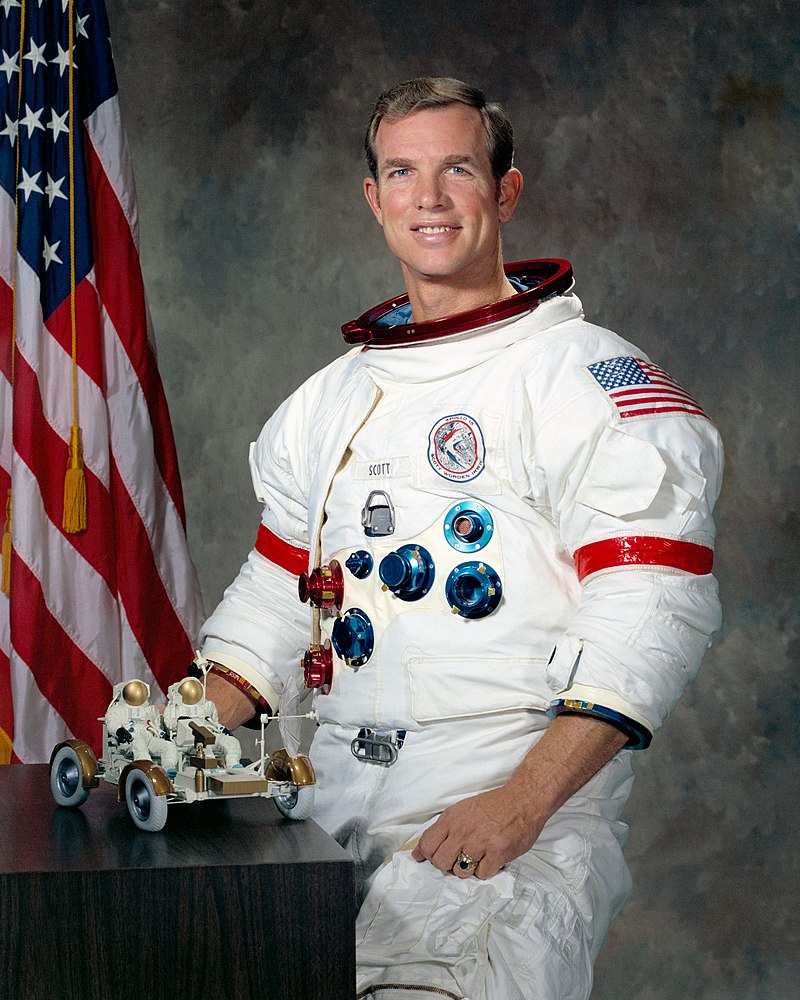
David Randolph  "Dave" Scott

David Randolph  "Dave" Scott
David Randolph "Dave" Scott (born June 6, 1932), (Col, USAF, Ret.), is an American former NASA astronaut, retired U.S. Air Force officer and former test pilot. He belonged to the third group of NASA astronauts, selected in October 1963. As an astronaut, Scott became the seventh person to walk on the Moon.
As an astronaut, Scott made his first flight into space as pilot of the Gemini 8 mission, along with Neil Armstrong, in March 1966, spending just under eleven hours in low Earth orbit. Scott then spent ten days in orbit as Command Module Pilot aboard Apollo 9, his second spaceflight, along with Commander James McDivitt and Lunar Module Pilot Rusty Schweickart.
During this mission, Scott became the last American to fly solo in Earth orbit (not counting subsequent untethered EVAs). Scott made his third and final flight into space as commander of the Apollo 15 mission, the fourth human lunar landing, becoming the seventh person to walk on the Moon and the first person to drive on the Moon.
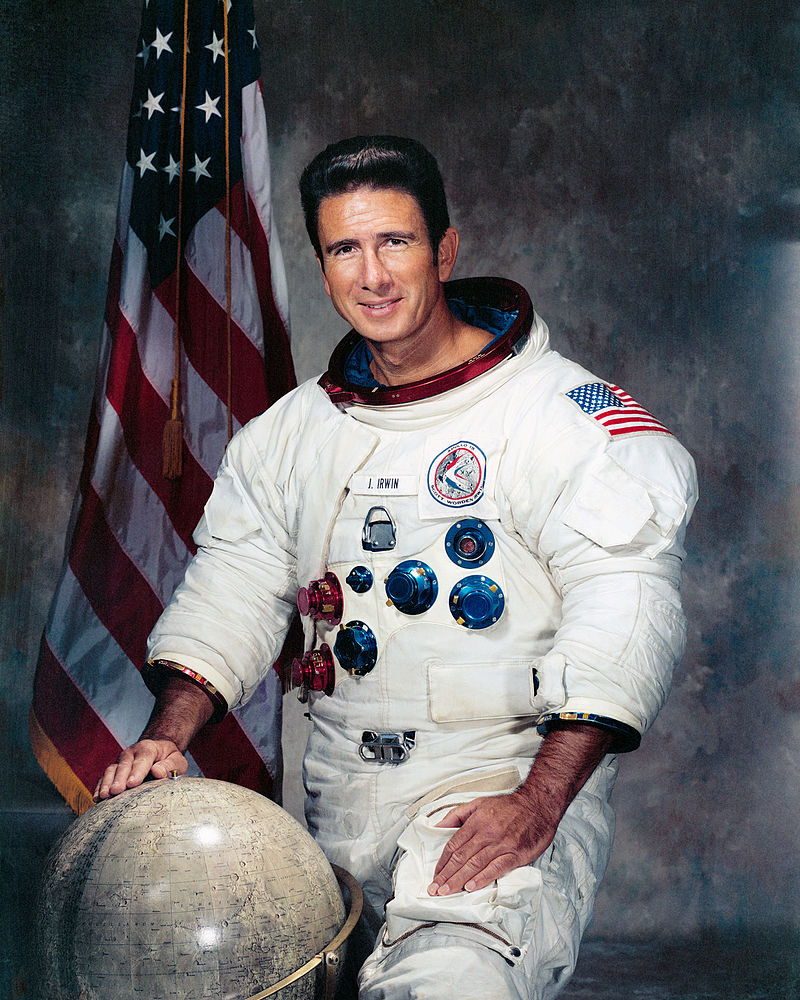
James B. Irwin

James B. Irwin
James Benson "Jim" Irwin (March 17, 1930 – August 8, 1991) (Col, USAF) was an American astronaut and test pilot. He was the eighth person to walk on the Moon. Colonel Irwin was one of the 19 astronauts selected by NASA in April 1966. He was crew commander of lunar module (LTA-8)—this vehicle finished the first series of thermal vacuum tests on June 1, 1968. He also served as a member of the astronaut support crew for Apollo 10 and as backup lunar module pilot for the Apollo 12 flight. Irwin served as lunar module pilot for Apollo, July 26 to August 7, 1971. His companions on the flight were David R. Scott, spacecraft commander and Alfred M. Worden, command module pilot. Apollo 15 was the fourth manned lunar landing mission and the first to visit and explore the moon’s Hadley Rille and Apennine Mountains which are located on the southeast edge of the Mare Imbrium (Sea of Rains). The lunar module, “Falcon”, remained on the lunar surface for 66 hours, - more - National Aeronautics and Space Administration Biographical Data Lyndon B. Johnson Space Center Houston, Texas 77058 54 minutes—setting a new record for lunar surface stay time—and Scott and Irwin logged 18 hours and 35 minutes each in extravehicular activities conducted during three separate excursions onto the lunar surface.
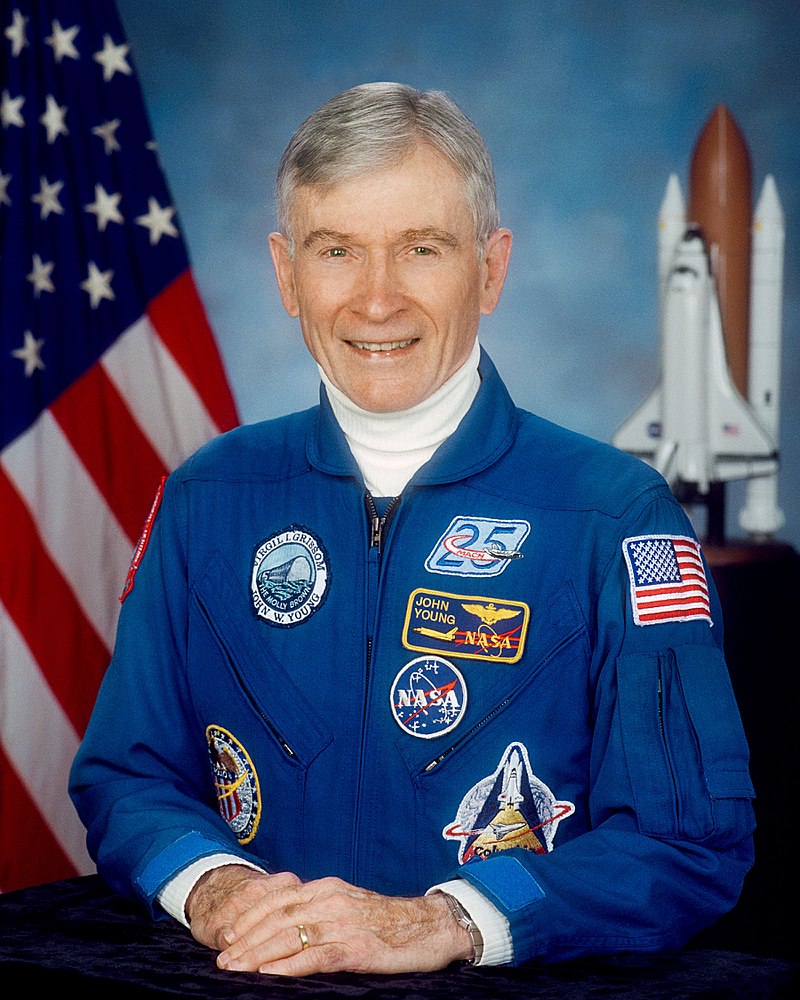
Captain John Watts Young

Captain John Watts Young
Captain John Watts Young (September 24, 1930–January 5, 2018) was an American astronaut, naval officer and aviator, test pilot, and aeronautical engineer. He became the ninth person to walk on the Moon as Commander of the Apollo 16 mission in 1972. Young was on the first orbital Space Shuttle mission, STS-1, in April 1981. He was the only person to have piloted, and been commander of, four different classes of spacecraft: Gemini, the Apollo Command/Service Module, the Apollo Lunar Module, and the Space Shuttle.
In September 1962, Young was selected as an astronaut. He is the first person to fly in space six times from earth, and seven times counting his lunar liftoff. Young was Command Module Pilot of Apollo 10. His fourth space flight, Apollo 16, April 16-27, 1972, was a lunar exploration mission, with Young as Spacecraft Commander, and Ken Mattingly and Charlie Duke. Young and Duke set up scientific equipment and explored the lunar highlands at Descartes. They collected 200 pounds of rocks and drove over 16 miles in the lunar rover on three separate geology traverses.
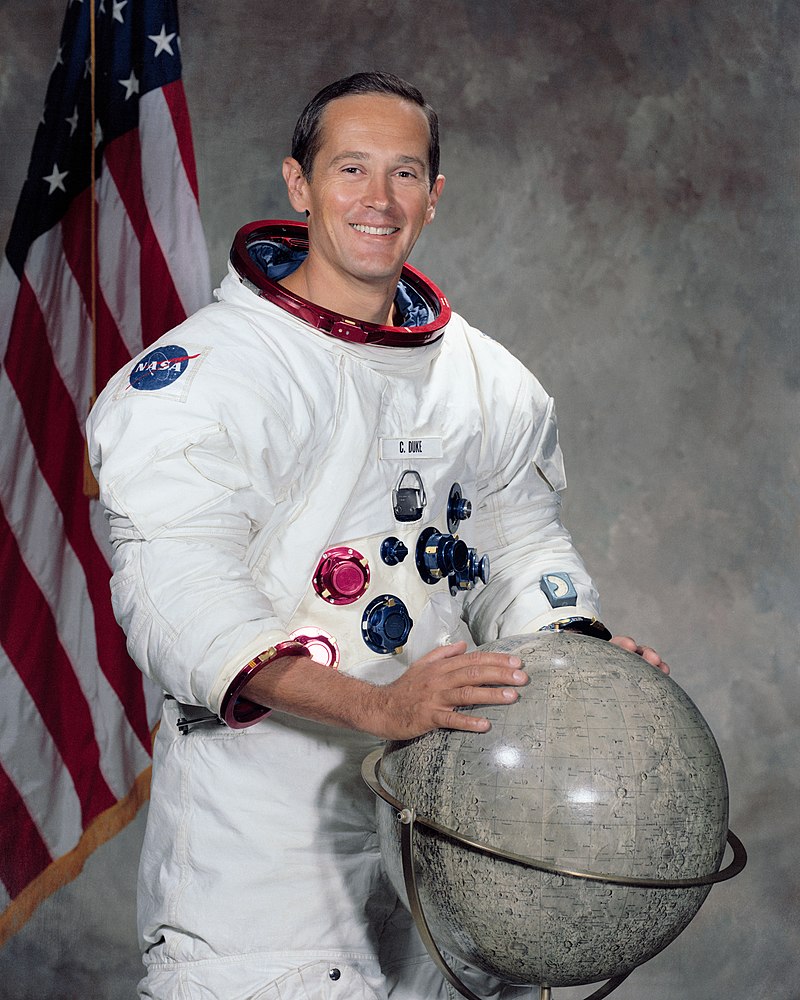
Charles M. Duke

Charles M. Duke
Charles Moss "Charlie" Duke Jr. (born October 3, 1935), (Brig Gen, USAF, Ret.), is an American former astronaut, retired U.S. Air Force officer and test pilot. As Lunar Module Pilot for Apollo 16 in 1972, he became the tenth and youngest person to walk on the Moon.
He is a former test pilot, Duke has logged 4,147 hours flying time, which includes 3,632 hours in jet aircraft; and 265 hours in space, plus 20 hours and 15 minutes of extravehicular activity.
He graduated from the Aerospace Research Pilot School in September 1965 and stayed on there as an instructor. He is a retired Air Force Reserve Brigadier General and was commissioned in 1957 upon graduation from the Naval Academy. Duke was one of the 19 astronauts selected by NASA in April 1966. He served as member of the astronaut support crew for the Apollo 10 flight. He was CAPCOM for Apollo 11, the first landing on the Moon and he served as backup lunar module pilot on Apollo 13. Duke served as lunar module pilot of Apollo 16, April 16-27, 1972. He was accompanied on the fifth manned lunar landing mission by John W. Young (spacecraft commander) and Thomas K. Mattingly II (command module pilot). Apollo 16 was the first scientific expedition to inspect, survey, and sample materials and surface features in the Descartes region of the rugged lunar highlands
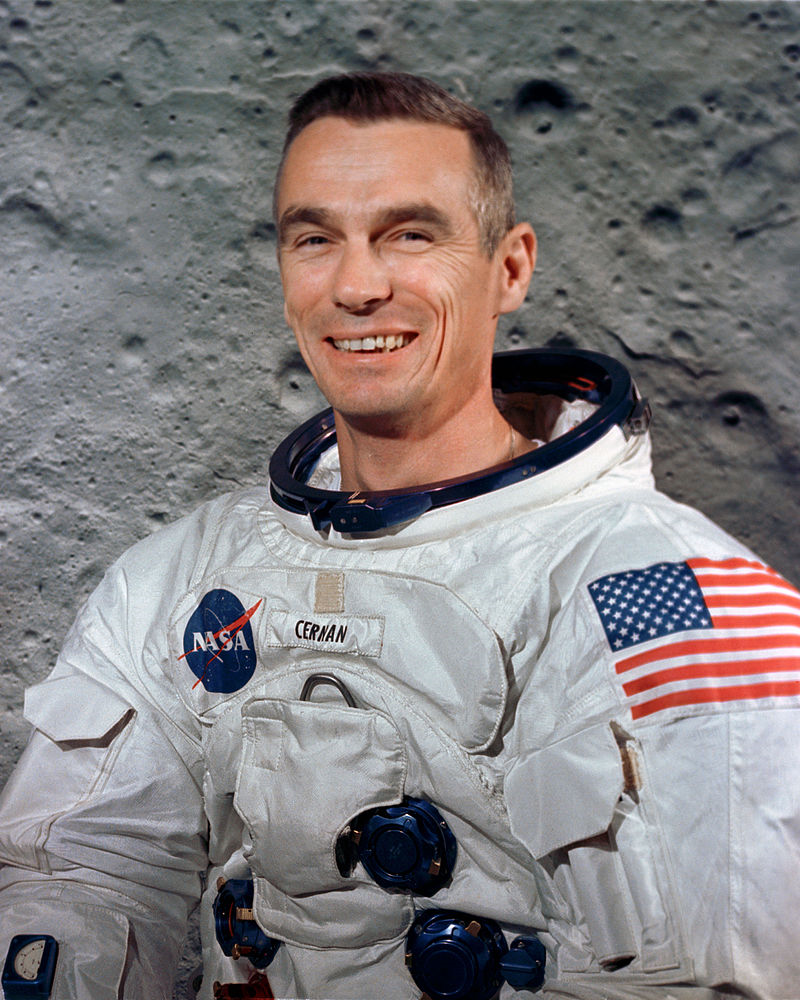
Eugene Andrew Cernan

Eugene Andrew Cernan
Eugene Andrew Cernan (March 14, 1934 – January 16, 2017) was an American astronaut, naval aviator, electrical engineer, aeronautical engineer, and fighter pilot. During the Apollo 17 mission, Cernan became the 11th human being to walk on the Moon. As he re-entered the Lunar Module after Harrison Schmitt on their third and final lunar excursion, he remains as of 2023, famously: "The last human on the Moon".
Before becoming an astronaut, Cernan graduated with a Bachelor of Science degree in electrical engineering from Purdue University and joined the U.S. Navy through the Naval Reserve Officers Training Corps (NROTC). After flight training, he received his naval aviator wings and served as a fighter pilot. In 1963, he received a Master of Science degree in aeronautical engineering from the U.S. Naval Postgraduate School. Achieving the rank of captain, he retired from the Navy in 1976.
Cernan travelled into space three times and to the Moon twice: as pilot of Gemini 9A in June 1966, as lunar module pilot of Apollo 10 in May 1969, and as commander of Apollo 17 in December 1972, the final Apollo lunar landing. Cernan was also a backup crew member of the Gemini 12, Apollo 7 and Apollo 14 space missions.
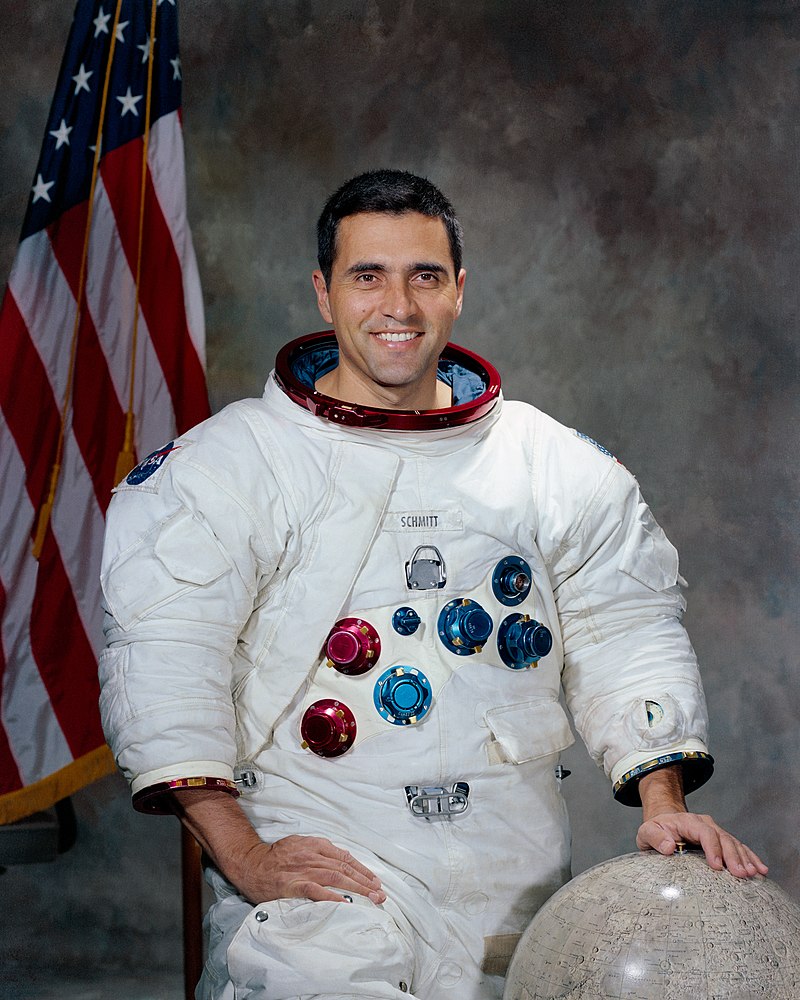
Harrison Hagan Schmitt

Harrison Hagan Schmitt
Harrison Hagan Schmitt (born July 3, 1935) is an American geologist, retired NASA astronaut, university professor, former U.S. senator from New Mexico, and the most recent living person—and only person without a background in military aviation—to have walked on the Moon.
In December 1972, as one of the crew on board Apollo 17, Schmitt became the first member of NASA's first scientist-astronaut group to fly in space. As Apollo 17 was the last of the Apollo missions, he also became the twelfth and second-youngest person to set foot on the Moon and the second-to-last person to step off of the Moon (he boarded the Lunar Module shortly before commander Eugene Cernan). Schmitt also remains the only professional scientist to have flown beyond low Earth orbit and to have visited the Moon. He was influential within the community of geologists supporting the Apollo program and, before starting his own preparations for an Apollo mission, had been one of the scientists training those Apollo astronauts chosen to visit the lunar surface.
Other Astronauts / Cosmonauts
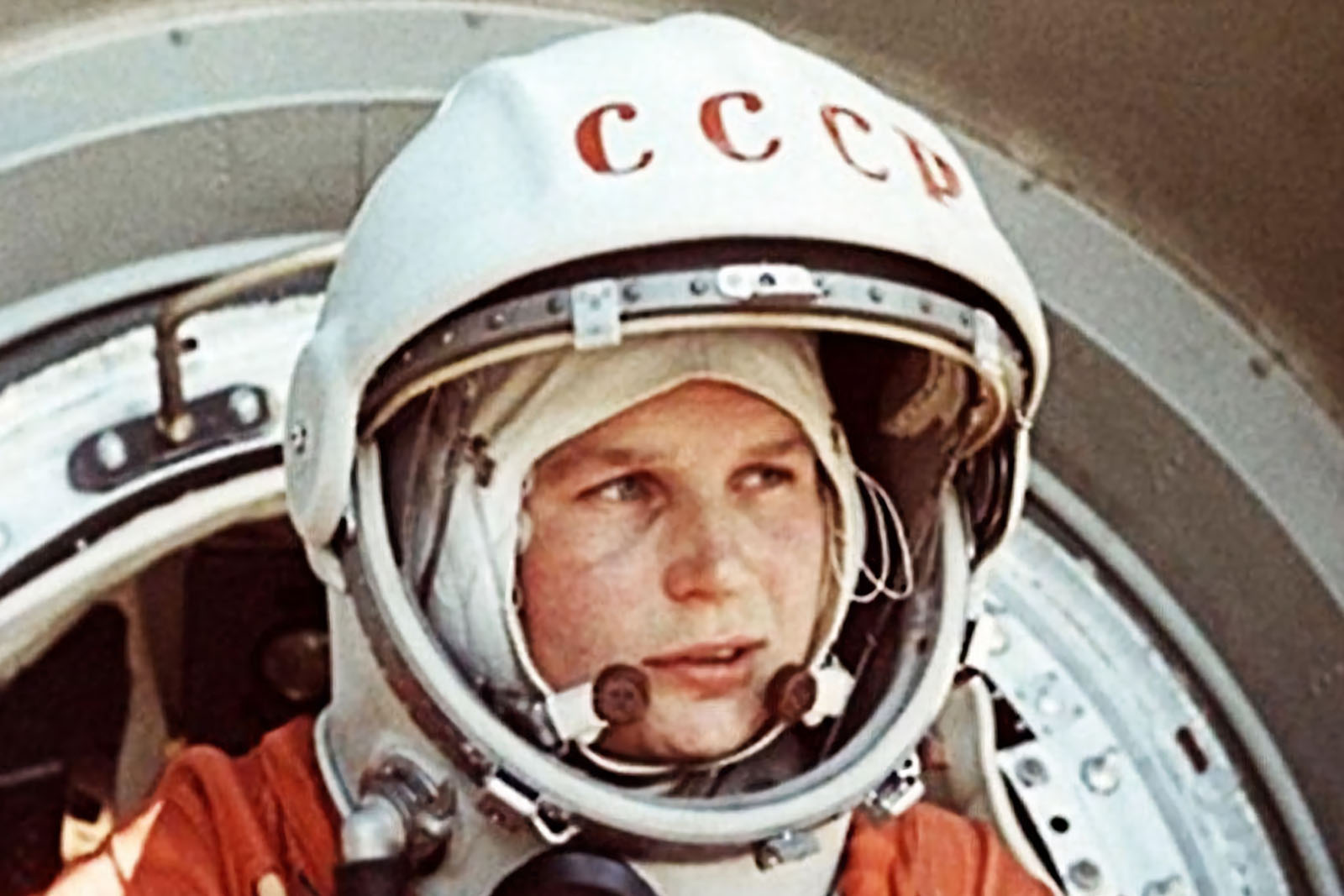
Yuri Gagarin

Yuri Gagarin
Yuri Alekseyevich Gagarin (9 March 1934 – 27 March 1968) was a Soviet pilot and cosmonaut who, aboard the first successful crewed spaceflight, became the first human to journey into outer space. Travelling on Vostok 1, Gagarin completed one orbit of Earth on 12 April 1961. By achieving this major milestone for the Soviet Union amidst the Space Race, he became an international celebrity and was awarded many medals and titles, including the nation's highest distinction: Hero of the Soviet Union.
Hailing from the village of Klushino in the Russian SFSR, Gagarin was a foundryman at a steel plant in Lyubertsy in his youth. He later joined the Soviet Air Forces as a pilot and was stationed at the Luostari Air Base, near the Norway–Soviet Union border, before his selection for the Soviet space programme alongside five other cosmonauts. Following his spaceflight, Gagarin became the deputy training director of the Cosmonaut Training Centre, which was later named after him. He was also elected as a deputy of the Soviet of the Union in 1962 and then to the Soviet of Nationalities, respectively the lower and upper chambers of the Supreme Soviet.
Vostok 1 was Gagarin's only spaceflight, but he served as the backup crew to Soyuz 1, which ended in a fatal crash, killing his friend and fellow cosmonaut Vladimir Komarov. Fearful that a high-level national hero might be killed, Soviet officials banned Gagarin from participating in further spaceflights. After completing training at the Zhukovsky Air Force Engineering Academy in February 1968, he was again allowed to fly regular aircraft. However, Gagarin died five weeks later, when the MiG-15 that he was piloting with flight instructor Vladimir Seryogin crashed near the town of Kirzhach.
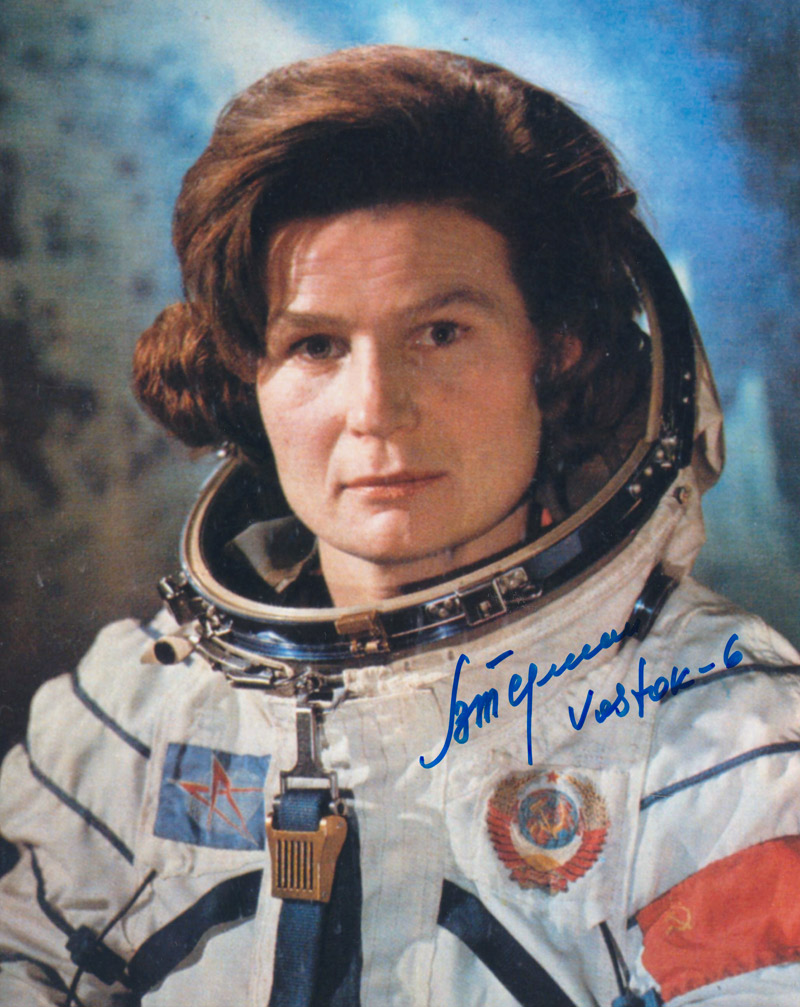
Valentina Tereshkova

Valentina Tereshkova
Valentina Vladimirovna Tereshkova (born 6 March 1937) is a Russian engineer, member of the State Duma, and former Soviet cosmonaut, being the first woman ever to fly in space. She is known for being the first and youngest woman in space, having flown a solo mission on the Vostok 6 on 16 June 1963. She orbited the Earth 48 times, spent almost three days in space, and remains the only woman to have been on a solo space mission.
Before her selection for the Soviet space program, Tereshkova was a textile factory worker and an amateur skydiver. She joined the Air Force as part of the Cosmonaut Corps and was commissioned as an officer after completing her training. After the dissolution of the first group of female cosmonauts in 1969, Tereshkova remained in the space program as a cosmonaut instructor. She later graduated from the Zhukovsky Air Force Engineering Academy and re-qualified for spaceflight, but never went to space again. She retired from the Air Force in 1997 having attained the rank of major general.
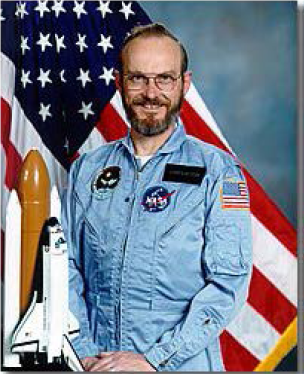
LOREN W ACTON

LOREN W ACTON
Born March 7, 1936, in Lewiston, Montana. Dr. Acton is the senior staff scientist with the Space Sciences Laboratory, Lockheed Palo Alto Research Laboratory, California. As a research scientist, his principle duties included conducting scientific studies of the Sun and other celestial objects using advanced space instruments and serving as a co-investigator on one of the Spacelab 2 solar experiments, the Solar Optical Universal Polarimeter. In 1985, he was a payload specialist on STS-51F/ Spacelab-2. At mission conclusion, Dr. Acton
had travelled over 2.8 million miles in 126 Earth orbits, logging over 190 hours in space.
STS-51F/Spacelab-2 Challenger (July 29 to August 6, 1985) was launched from Kennedy Space Center, Florida, and returned to land at Edwards Air Force Base, California. STS-51F was the first pallet-only Spacelab mission, and the first mission to operate the Spacelab Instrument Pointing System (IPS). It carried 13 major experiments in astronomy, astrophysics, and life sciences. Mission duration was 7 days, 22 hours, 45 minutes and 26 seconds
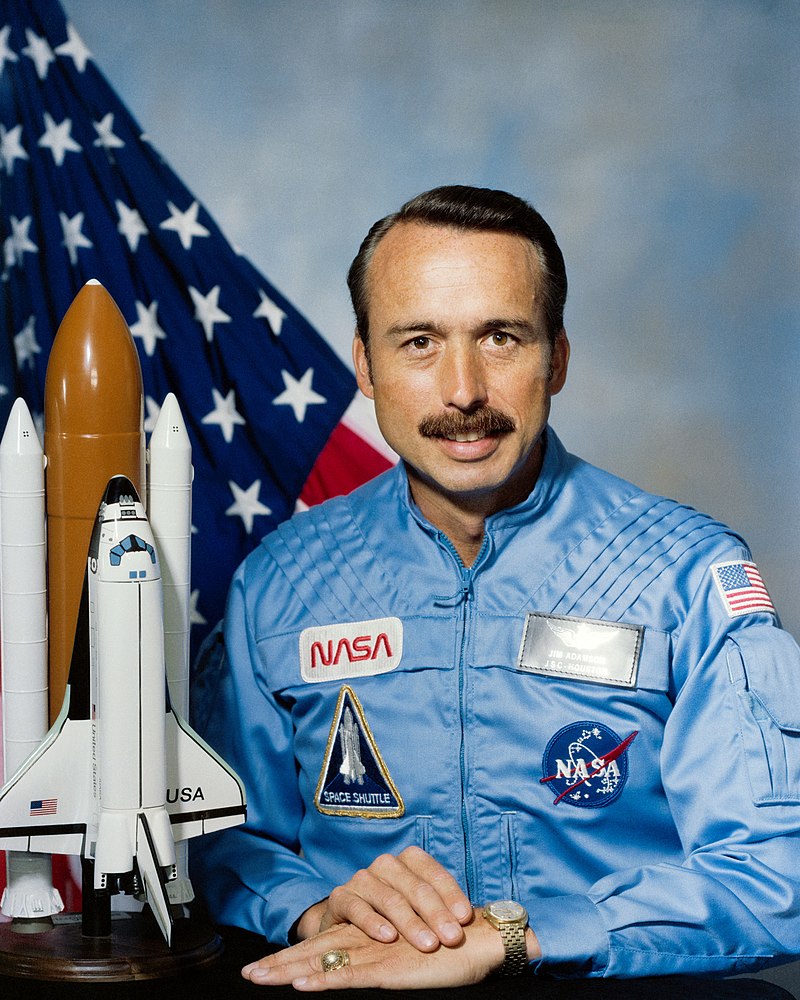
JAMES C ADAMSON

JAMES C ADAMSON
Born March 3, 1946, in Warsaw, New York. Currently resides in Woodbine Maryland.
As test pilot, Adamson has flown research aircraft at Edwards Air Force Base, Princeton University, West Point, Patuxent Naval Air Station, and NASA Houston. He has logged over 3,000 hours of flight time in over 30 types aircrafts. He also developed flight laboratories in aircraft flight testing and completed a text on aircraft performance. In addition to being an Experimental Test Pilot and Master Aviator, Adamson is also a Certified Professional Engineer and licensed Commercial Pilot.
NASA EXPERIENCE: Adamson was employed at the Lyndon B. Johnson Space Center from 1981 to 1992. During the Operational Flight Test phase of the Shuttle Program, he served as a research test pilot and aerodynamics officer in Mission Control. Following completion of the operational test flights he became Guidance Navigation and Control Officer for Shuttle Missions 5 through 11. As research test pilot he also conducted airborne remote sensing studies in Biospheric Research.
Selected by NASA as an Astronaut in 1984, Adamson became qualified for mission assignment on Space Shuttle flights. In November 1985, he was selected to the crew of a Department of Defense mission, which was subsequently delayed due to the Challenger Accident. During the Shuttle Program reconstruction period Adamson was one of eleven astronauts selected to hold management positions within NASA. He served as Shuttle Program Office Assistant Manager for Engineering Integration. In this position he was responsible for the initial development of a reliability based maintenance program for the Space Shuttle program. He also initiated an enhancements program for Shuttle ground processing.
In February 1988 Adamson was assigned to the flight crew of STS-28, the first flight of Columbia following the reconstruction period. Columbia launched from the Kennedy Space Center, Florida, on August 8, 1989. The mission carried a classified Department of Defense payload and a number of secondary payloads. After 80 earth orbits in 121 hours, this five day mission concluded with a dry lakebed landing on runway 17 at Edwards Air Force Base, California, on August 13, 1989.
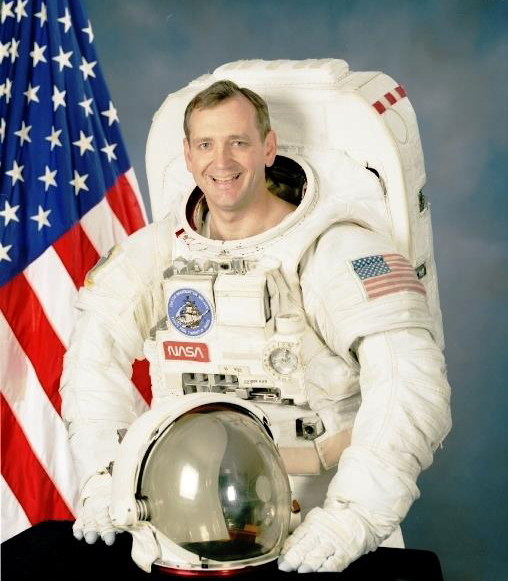
TOM AKERS

TOM AKERS
Born May 20, 1951, in St. Louis, Missouri, but raised and educated in his hometown of Eminence, Missouri.
Akers was selected for the astronaut program in 1987. Positions held include: Astronaut Office focal point for Space Shuttle software development; astronaut representative during Shuttle software testing in the Shuttle Avionics Integration Laboratory (SAIL); supported launch activities at the Kennedy Space Center; astronaut representative for EVA activities (space walks); Deputy Director of Mission Operations; Acting Deputy Director of Flight Crew Operations, and Assistant Director (Technical) of Johnson Space Center. Akers left the astronaut program and NASA in August of 1997 to return to the USAF as the commander of the USAFROTC Detachment 442 at the University of Missouri-Rolla.
5
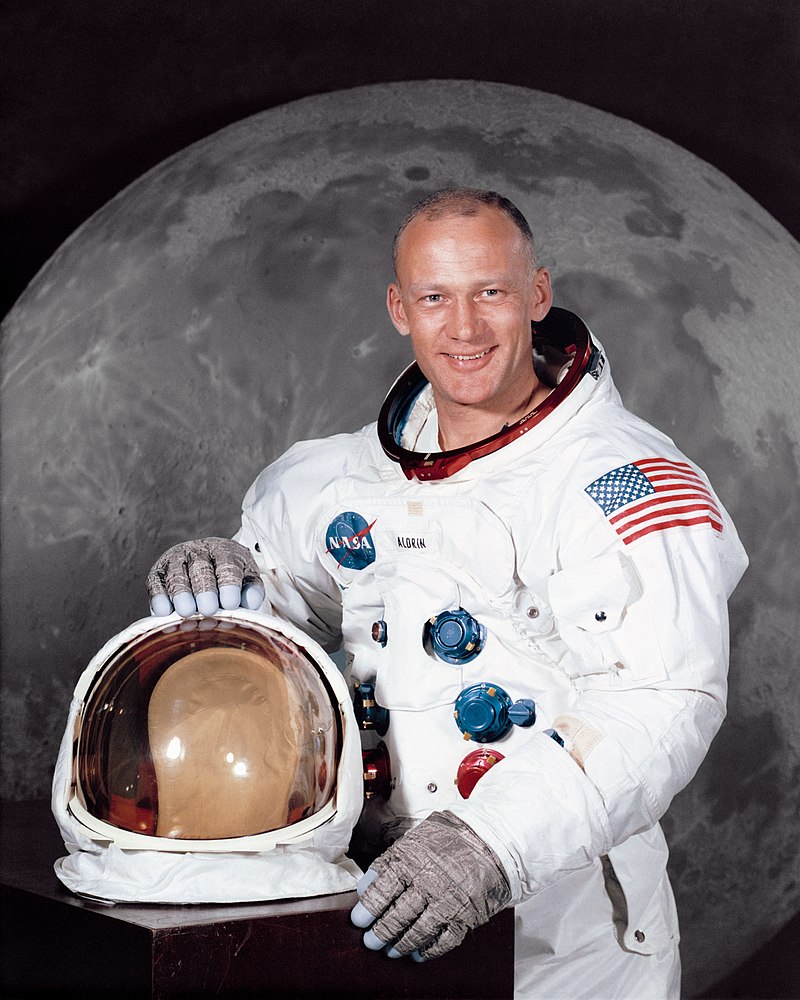
BUZZ ALDRIN

BUZZ ALDRIN
Born January 20, 1930, in Montclair, New Jersey.
Aldrin was one of the third group of astronauts named by NASA in October 1963. On November 11, 1966, he and command pilot James Lovell were launched into space in the Gemini 12 spacecraft on a 4-day flight, which brought the Gemini program to a successful close. Aldrin established a new record for extravehicular activity (EVA), spending 5-1/2 hours outside the spacecraft.
He served as lunar module pilot for Apollo 11, July 16-24, 1969, the first manned lunar landing mission. Aldrin followed Neil Armstrong onto the lunar surface on July 20, 1969, completing a 2-hour and 15 minute lunar EVA. Aldrin has logged 289 hours and 53 minutes in space, of which, 7 hours and 52 minutes were spent in EVA.
6
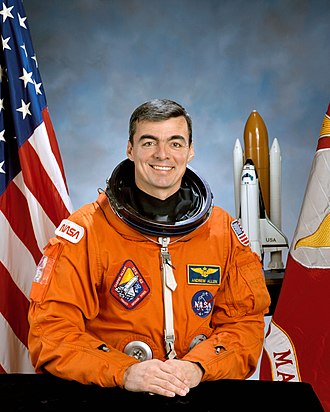
ANDREW M ALLEN

ANDREW M ALLEN
Born August 4, 1955, in Philadelphia, Pennsylvania.
Selected by NASA in June 1987, Allen became an astronaut in August 1988. His technical assignments have included: Astronaut Office representative for all Space Shuttle issues related to landing sites, landing and deceleration hardware, including improvements to nose wheel steering, brakes and tires, and drag chute design; Shuttle Avionics Integration Laboratory (SAIL), which oversees, checks, and verifies all Shuttle flight control software and avionics programs; Technical Assistant to the Flight Crew Operations Director who is responsible for and manages all flight crew operations and support; lead of the Astronaut Support Personnel team which oversee Shuttle test, checkout, and preparation at Kennedy Space Center; Special Assistant to the Director of the Johnson Space Center in Houston, Texas; lead of a Functional Workforce Review at the Kennedy Space Center, Florida, to determine minimal workforce and management structure requirements which allow maximum budget reductions while safely continuing Shuttle Flight Operations; Director of Space Station Requirements at NASA eadquarters,
responsible for the International Space Station requirements, policies, external communications and liaison with Congress, international partners, and industry. A veteran of three space flights, Allen has logged over 900 hours in space. He was the pilot on STS-46 in 1992 and STS-62 in 1994, and was mission commander on STS-75 in 1996.
7
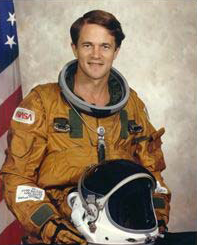
JOSEPH P ALLEN

JOSEPH P ALLEN
Born in Crawfordsville, Indiana, on June 27, 1937.
Dr. Allen was selected as a scientist-astronaut by NASA in August 1967. He completed flight training at Vance Air Force Base, Oklahoma. He served as mission scientist while a member of the astronaut support crew for Apollo 15 and served as a staff consultant on science and technology to the President's Council on International Economic Policy.
From August 1975 to 1978, Dr. Allen served as NASA Assistant Administrator for Legislative Affairs in Washington, D.C. Returning to the Johnson Space Center in 1978, as a senior scientist astronaut, Dr. Allen was assigned to the Operations Mission Development Group. He served as a support crew member for the first orbital flight test of the Space Transportation System and was the entry CAPCOM for this mission. In addition, in 1980 and 1981, he worked as the technical assistant to the director of flight operations. He was a mission specialist on STS-5 (November 11-16, 1982) and STS-51A (November 8-16,1984) and has logged a total of 314 hours in space. He left NASA in 1985.
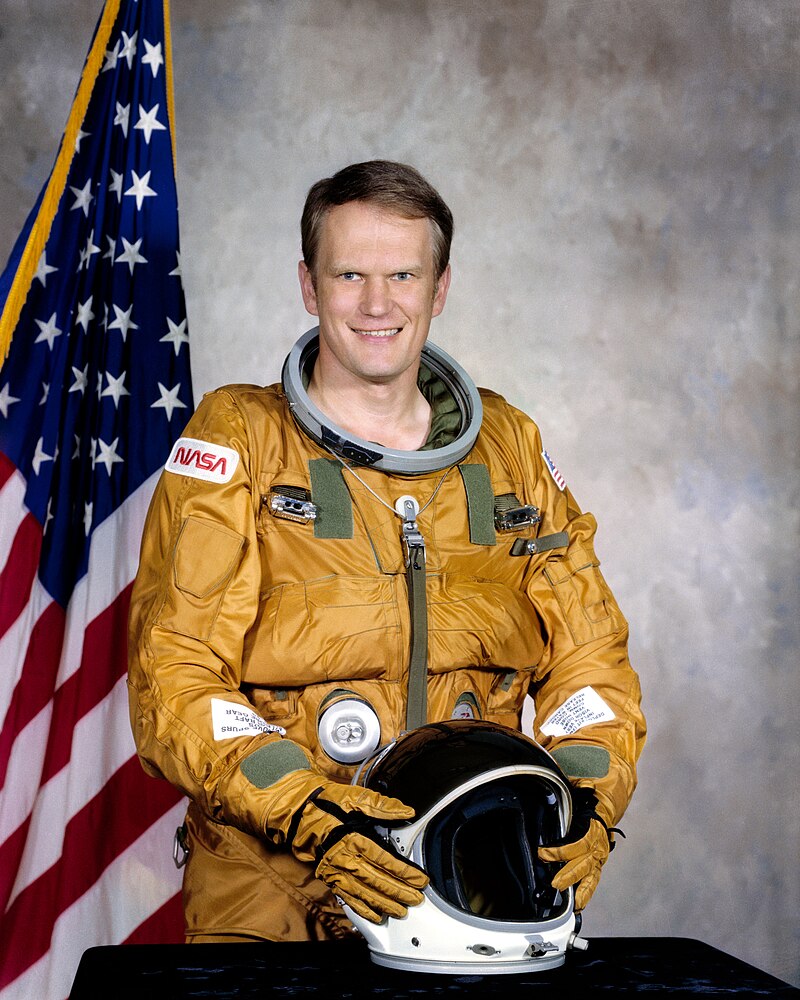
Karol Joseph "Bo" Bobko

Karol Joseph "Bo" Bobko
Karol Joseph "Bo" Bobko (born December 23, 1937), (Col, USAF, Ret.), is an American aerospace engineer, retired U.S. Air Force officer, test pilot, and a former USAF and NASA astronaut. Bobko was the first graduate of the US Air Force Academy to travel in space.
Bobko became part of NASA Astronaut Group 7 in September 1969 after the cancellation of the Manned Orbiting Laboratory (MOL) program. He was a crewmember on the highly successful Skylab Medical Experiment Altitude Test (SMEAT) -- a 56-day ground simulation of the Skylab mission, enabling crewmen to collect medical experiments baseline data and evaluate equipment, operations and procedures.
Bobko was a member of the astronaut support crew for the Apollo–Soyuz Test Project (ASTP). This historic first international manned space flight was completed in July 1975. Subsequently, he was a member of the support crew for the Space Shuttle Approach and Landing Tests conducted at Edwards Air Force Base. He served alternately as CAPCOM and prime chase pilot during these Approach and Landing Test (ALT) flights.
In preparation for the first flight of Columbia (STS-1) Bobko served as the lead astronaut in the test and checkout group at Kennedy Space Center.
A veteran of three space flights, Bobko logged a total of 386 hours in space. He was the pilot on STS-6 (April 4–9, 1983); and was the mission commander on STS-51-D (April 12–19, 1985) and STS-51-J (October 3–7, 1985).
8/45
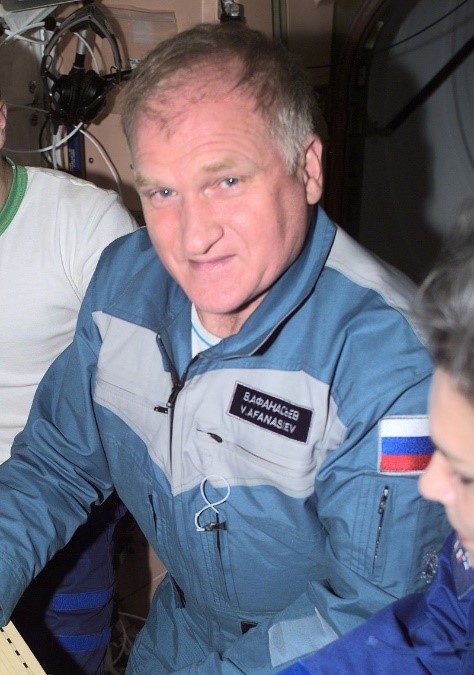
Viktor Mikhaylovich Afanasyev

Viktor Mikhaylovich Afanasyev
Viktor Mikhailovich Afanasyev (born 31 December 1948) is a colonel in the Russian Air Force and a test cosmonaut of the Yu. A. Gagarin Cosmonaut Training Center.
1970 to 1976 served in the Air Force fighting troops as a pilot, senior pilot, and aircraft flight commander. 1976 to 1977 attended the Test Pilot Training Center. 1977 to 1988 served as a test pilot and senior test pilot at the State Research/Test Institute named after Valery Chkalov. Viktor Afanasyev has a Class 1 military test pilot certification. He has logged over 2000 flight hours in more than 40 different aircraft.
1985 to 1987 Viktor Afanasyev was taking a basic space training course at the Yuri Gagarin Cosmonaut Training Center on a part-time training basis. He reported to the GCTC and proceeded to advanced training in 1988. From February 1989 on Afanasyev was training for a space flight aboard the Mir orbital station as the Mir-7 mission backup crew commander.
He has logged 175 flight days during his first space flight (2 December 1990 to 26 May 1991) as the Mir-8 mission crew commander. The mission program included a joint flight with a Japanese and British crewmember. He performed 4 EVAs totaling 20 hours and 55 minutes.
8 January to 9 July 1994, Afanasyev was participating in a space flight aboard the Soyuz-TM-18 transport vehicle and Mir orbital station as the Mir-15 mission crew commander.
October 1996 to January 1998 Afanasyev was training for the Mir-25 mission as a backup crew commander. The mission was supposed to include NASA-7 and Pegasus (CNES) programs.
From March 1998 he underwent training as the Mir-27 mission primary crew commander. 20 February to 28 August 1999, he was participating in a 189-day space flight aboard the Soyuz-TM transport vehicle and Mir orbital station. He has performed 3 EVAs.
Colonel Afanasyev is a veteran of three long-duration missions. He has logged over 545 days in space, and 7 EVAs totaling 38.55 hours. He has a Class 1 cosmonaut certification.
9
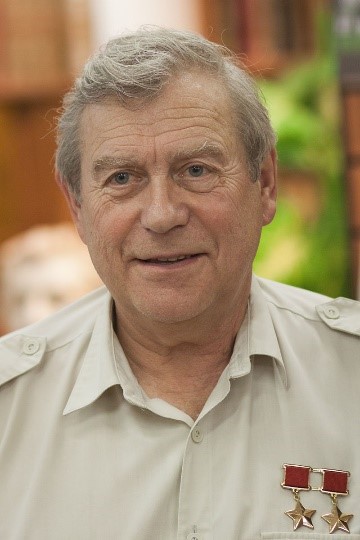
Aleksandr Pavlovich Aleksandrov

Aleksandr Pavlovich Aleksandrov
Aleksandr Pavlovich Aleksandrov, born in Moscow, Russia on February 20, 1943 is a former Soviet cosmonaut and twice Hero of the Soviet Union. He graduated from Moscow Bauman-Highschool in 1969 with a doctorate degree, specialised on spacecraft steering systems.
He was selected as cosmonaut on December 1, 1978.[1] For his first spaceflight, he flew as Flight Engineer on Soyuz T-9, which lasted from June to November 1983. For his second spaceflight, he replaced one of the long-duration crew members of Mir EO-2. For the spaceflight, he was launched with the spacecraft Soyuz TM-3 in July 1987, and landed with the same spacecraft in December 1987. All together he spent 309 days, 18 hours, 2 minutes in space. He served as backup for Soyuz T-8, Soyuz T-13, and Soyuz T-15. He resigned from the cosmonaut team on October 26, 1993, when he became chief of NPOE Cosmonaut-group; since 1996 he is Chief flight test directorate of RKKE.
10
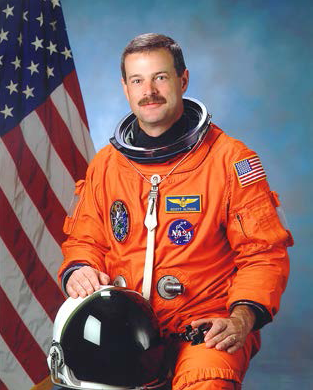
SCOTT D ALTMAN

SCOTT D ALTMAN
Born August 15, 1959 in Lincoln, Illinois. Married to the former Jill Shannon Loomer of Tucson, Arizona. They have three children. Hometown is Pekin, Illinois, where his parents, Fred and Sharon Altman, currently reside.
Altman reported to the Johnson Space Center in March 1995 as an astronaut candidate. He was the pilot on STS-90 (1998) and STS-106 (2000), and the mission commander on STS-109 (2002) and STS-125 (2009). Following two years as Shuttle Branch Chief for the Astronaut Office and lead for the Cockpit Avionics Upgrade, he was assigned on temporary duty to NASA Headquarters as Deputy Director, Requirements Division of the Exploration Systems Mission Directorate. On returning to Houston, and following STS-125, he served as the Chief of the Exploration Branch of the Astronaut Office. A veteran of four space flights, Altman has logged over 51 days in space. Altman retired from NASA in September 2010 to join ASRC Research and Technology Solutions in Greenbelt, Maryland.
11

Anatoly Pavlovich Artsebarsky

Anatoly Pavlovich Artsebarsky
Anatoly Pavlovich Artsebarsky was born on 9 September 1956) is a former Soviet cosmonaut. He became a cosmonaut in 1985. Artsebarsky spent almost five months in space on a single spaceflight. In 1991, he flew aboard Soyuz TM-12 and docked with the Mir Space Station. Artsebarsky and Sergei Krikalev stayed aboard Mir while the rest of the crew flew back to Earth after eight days. Artsebarsky took six spacewalks during the Mir EO-9 mission. He spent over 33 hours walking in space.
During his stay, Artsebarsky constructed a space tower for use with a control module. Artsebarsky and Krikalev were almost stuck at the station. They were in orbit during the Soviet coup attempt of 1991. For several days, the political situation seriously jeopardised their position.
12
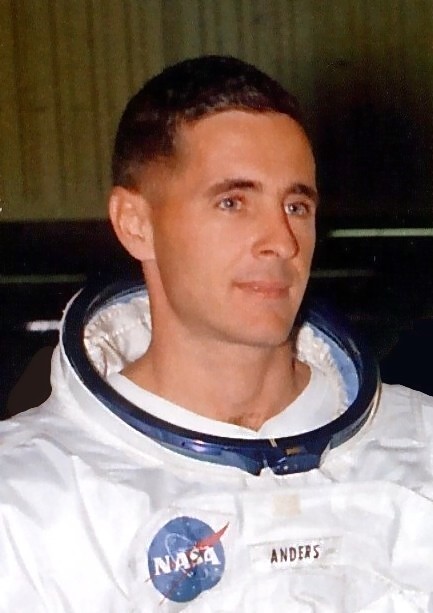
WILLIAM A. ANDERS

WILLIAM A. ANDERS
WILLIAM A. ANDERS, Born October 17, 1933, in Hong Kong.
While at NASA, he became involved in dosimetry, radiation effects, and environmental controls.[9] In September 1966, he was the backup pilot for the Gemini 11 mission, with Neil Armstrong as the backup commander. This would have put him in line to fly a Gemini 13 mission, but no such mission was flown; Project Gemini ended with Gemini 12. Armstrong and Anders then became the first astronauts to fly the Lunar Landing Training Vehicle. The astronauts in his group without test pilot training—Anders, Roger Chaffee, Walter Cunningham, Rusty Schweickart, Gene Cernan and Buzz Aldrin—were assigned to Apollo crews as the lunar module pilot (LMP), the lowest-ranking crew member.
On 22 December 1966, Anders was assigned to the third Apollo mission, which was to be commanded by Frank Borman, with command module pilot (CMP) Michael Collins; Neil Armstrong, Jim Lovell and Buzz Aldrin were assigned as their backup crew the following year. Collins was replaced by Lovell in July 1968, after suffering a cervical disc herniation that required surgery to repair. The mission, scheduled for December 1968, was intended to be a second test of the lunar module (LM) in medium Earth orbit,] but the delivery of the LM fell behind schedule, and when it arrived at the Kennedy Space Center (KSC) in June 1968, more than a hundred significant defects were discovered. There was no prospect of it being ready to fly in 1968. In August 1968, there were reports, including one from the CIA, that the Soviet Union was planning a crewed lunar orbit mission before the end of the year.
In December 1968, Anders flew on the Apollo 8 mission, the first mission where humans traveled beyond low Earth orbit, and the first crewed flight to reach and orbit the Moon. When the spacecraft came out from behind the Moon for its fourth pass across the front, the crew witnessed an "Earthrise" for the first time in human history. NASA's Lunar Orbiter 1 had taken the first picture of an Earthrise from the vicinity of the Moon, on 23 August 1966.
13
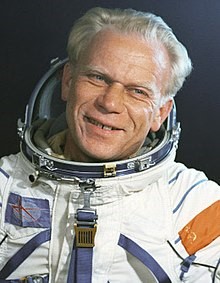
Yuri Petrovich Artyukhin

Yuri Petrovich Artyukhin
Yuri Petrovich Artyukhin born on 22 June 1930 – 4 August 1998, was a Soviet Russian cosmonaut and engineer who made a single flight into space.
Artyukhin graduated from the Soviet Air Force Institute with a doctorate in engineering, specializing in military communication systems. He was selected for the space programme in 1963 and would have flown on the Voskhod 3 mission had it not been canceled. He made his single flight on Soyuz 14 in 1974, where his area of expertise was presumably put to good use.
He left the space programme in 1982 and held various positions in space-related fields. Most notably, he was involved in the development of the Soviet space shuttle Buran and in cosmonaut training.
14
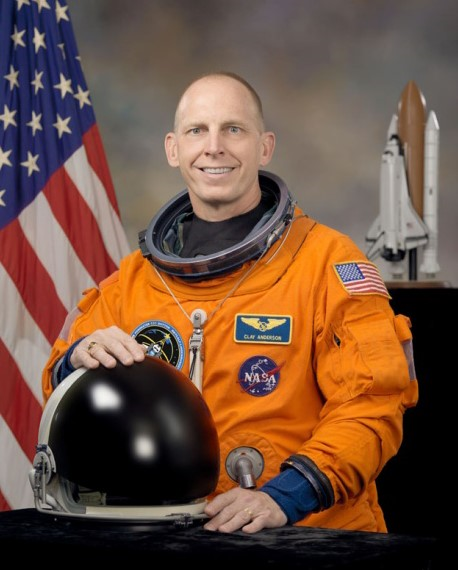
CLAYTON C ANDERSON

CLAYTON C ANDERSON
Born February 23, 1959, in Omaha, Nebraska. He considers Ashland, Nebraska, to be his hometown. Married to the former Susan Jane Harreld of Elkhart, Indiana.
Anderson joined the JSC, NASA in 1983 in the Mission Planning and Analysis Division, performing rendezvous and proximity operations trajectory designs for early space shuttle and International Space Station missions. In 1988, he moved to the Mission Operations Directorate (MOD) as a Flight Design Manager, leading the trajectory design team for the Galileo planetary mission (STS-34) while serving as the backup for the Magellan planetary mission (STS-31). In 1989, Anderson was chosen to be supervisor of the MOD Ascent Flight Design Section and, following reorganization, the Flight Design Engineering Office of the Flight Design and Dynamics Division. In 1993, he was named the Chief of the Flight Design Branch. From 1996 until his selection, Anderson held the post of Manager, Emergency Operations Center, NASA Johnson Space Center.
Selected as a Mission Specialist by NASA in June 1998, he reported for training in August of that year. Training included orientation briefings and tours, numerous scientific and technical briefings, intensive instruction in shuttle and International Space Station systems, physiological training, ground school to prepare for T-38 flight training as well as learning water and wilderness survival techniques.
Prior to being assigned to a spaceflight, Anderson served as lead for the Enhanced Caution and Warning (ECW) System development effort within the space shuttle Cockpit Avionics Upgrade (CAU) project. Previously, he was the Crew Support astronaut for International Space Station Expedition 4, providing ground support on technical issues in addition to supporting the crew families. Anderson also served as a space station Capsule Communicator (CAPCOM) and as the Astronaut Office Crew Representative for the space station electrical power system. In November 2002, Anderson completed training in the Extravehicular Activity (EVA) Skills program. He also served as backup Flight Engineer for International Space Station Expeditions 12, 13 and 14. A veteran of two space flights, Anderson has logged 167 days in space and 38 hours and 28 minutes of EVA in six spacewalks. He completed 5 months aboard the space station in 2007 and served aboard the STS-131 crew in 2010.
15
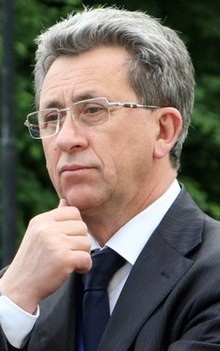
Oleg Yur'yevich At'kov

Oleg Yur'yevich At'kov
Oleg Yur'yevich At'kov born on 9 May 1949 is a Russian cardiologist and former Soviet cosmonaut. With a doctorate from the Russian Academy of Medical Science, Atkov was chosen to be the health specialist on board Soyuz T-10 and Soyuz T-11.
Atkov is notable for his lengthy time in orbit, with a total flight time of 236 days, 22 hours, and 49 minutes. As a cardiologist, it was his duty to monitor the health of the other cosmonauts on board and to research the long term effects of zero gravity on the human body.
On February 8, 1984 Atkov made a spaceward flight as a cosmonaut-researcher at the spaceship "Soyuz T-10V".
While in flight, Dr. Atkov had the primary duty of researching the long term effects of space flight such as what happens to the body over the course of a year in zero gravity. Measurements were consecutively taken using echocardiographic and biochemical systems. In addition, studies were conducted on vestibular and sensory organs. In order to avoid muscle deterioration and keep the crew members active, the cosmonauts exercised for an hour twice a day three days in a row, with an "active rest" day in between where they were encouraged to take water-salt supplements.
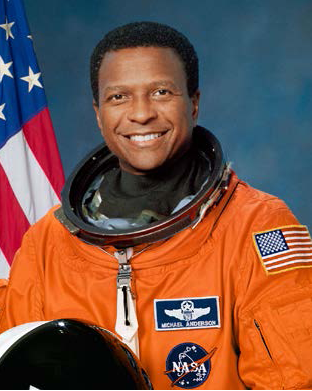
MICHAEL PHILIP ANDERSON

MICHAEL PHILIP ANDERSON
MICHAEL P ANDERSON: Born December 25, 1959, in Plattsburgh, New York, but considered Spokane, Washington, to be his hometown. Died on February 1, 2003 over the southern United States when Space Shuttle Columbia and her crew perished during entry, 16 minutes prior to scheduled landing.
NASA EXPERIENCE: Selected by NASA in December 1994, Anderson reported to the Johnson Space Center in March 1995. He completed a year of training and evaluation, and was qualified for flight crew assignment as a mission specialist. Anderson was initially assigned technical duties in the Flight Support Branch of the Astronaut Office. Anderson flew on STS-89 and STS-107, logging over 593 hours in space.
17
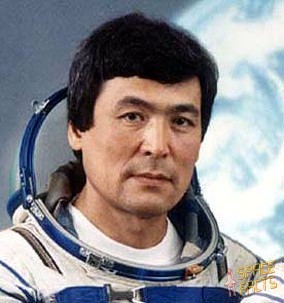
Toktar Ongarbayuly Aubakirov

Toktar Ongarbayuly Aubakirov
Toktar Ongarbayuly Aubakirov Born on 27 July 1946, is a retired Kazakh Air Force officer and a former cosmonaut. He is the first person from Kazakhstan to go to space.
In 1991, in accordance with an agreement between the governments of the USSR and the Kazakh SSR, started training at the Gagarin Cosmonaut Training Center. On 2 October 1991 he launched with Russian cosmonaut Alexander Volkov as flight commander, and the Austrian research cosmonaut Franz Viehböck in Soyuz TM-13 from the Baikonur Cosmodrome spaceport, and spent over eight days in space. Their mission was the last launched by the Soviet Union, which dissolved shortly thereafter, with Aubakirov becoming a citizen of the independent Republic of Kazakhstan.
Since 1993, he has been the general director of the National Aerospace Agency of Republic of Kazakhstan.
18
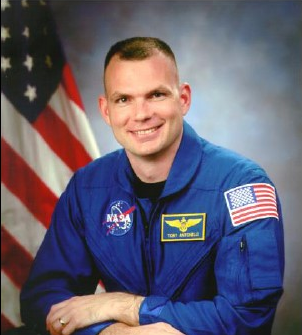
DOMINIC A. ANTONELLI

DOMINIC A. ANTONELLI
Born in Detroit, Michigan. Raised in Indiana and North Carolina. EDUCATION: Graduated from Douglas Byrd High School, Fayetteville, North Carolina; Bachelor of Science, Aeronautics & Astronautics, Massachusetts Institute of Technology; Master of.Science, Aeronautics & Astronautics, University of Washington.
Selected as a pilot by NASA in 2000. He completed 18 months of training and evaluation as an Astronaut Candidate. Antonelli initially served in various technical assignments in support of the Astronaut Office. A veteran of two space flights, Antonelli has logged a total of 24 days, 3 hours, 57 minutes and 35 seconds in space.
19
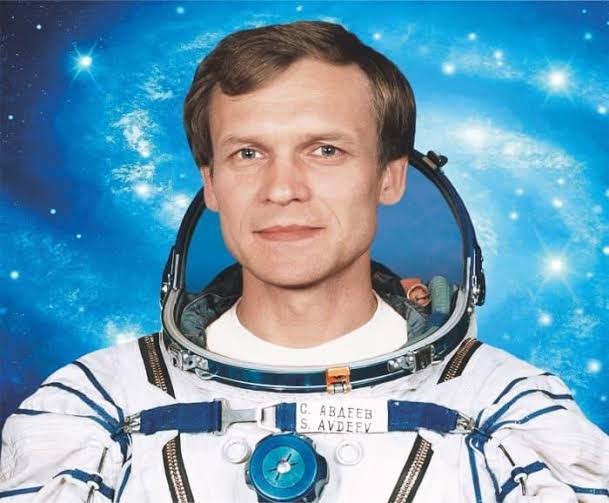
Sergei Avdeyev

Sergei Avdeyev
Sergei Vasilyevich Avdeyev Avdeyev was born on Born on 1st January 1956 in Chapayevsk, Samara Oblast (formerly Kuybyshev Oblast), Russian SFSR.
He was selected as a cosmonaut as part of the Energia Engineer Group 9 on 26 March 1987. His basic cosmonaut training was from December 1987 through to July 1989. He retired as a cosmonaut on 14 February 2003.
Avdeyev at one point held the record for cumulative time spent in space with 747.59 days in Earth orbit, accumulated through three tours of duty aboard the Mir Space Station. He has orbited the Earth 11,968 times traveling about 515,000,000 kilometers. In August 2005, this record was taken by another cosmonaut, Sergei K. Krikalev; it has since been surpassed by several other cosmonauts and the current record of 879 days was set by Gennady Padalka in 2015.
Time dilation Record: For a long time, Avdeyev held the record for time dilation experienced by a human being. In his 747 days aboard Mir, cumulative across three missions, he went approximately 27,360 km/h and thus aged roughly 0.02 seconds (20 milliseconds) slower from an Earthbound person's perspective, which is considerably more than any other human being, except Sergei Krikalev. This is due to the special relativistic effect of time dilation and is not properly thought of as time travelling as described by mainstream culture. A common misconception is that the Apollo program astronauts hold the record—they did go faster than Avdeyev, but they were only in space for a few days.
20
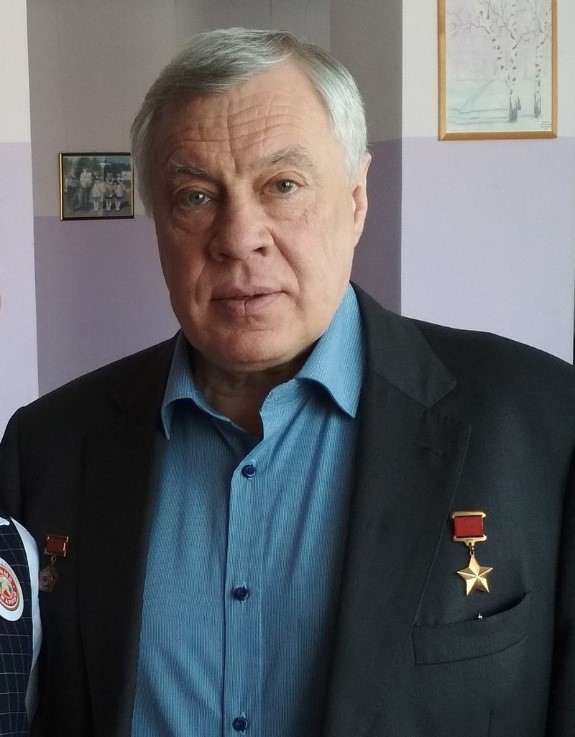
Aleksandr Nikolayevich Balandin

Aleksandr Nikolayevich Balandin
Aleksandr Nikolayevich Balandin, is a Russian cosmonaut He was selected as a cosmonaut on December 1, 1978, and retired on October 17, 1994.
He flew as a flight engineer on Soyuz TM-9.
He was born on July 30, 1953 in Fryazino. In 1970, he graduated from high school in Fryazino, and in 1976, the Bauman Moscow State Technical University, with specialty - Flight Dynamics and Control. He worked as an engineer in the Moscow region at the Scientific Production Association (SPA) "Energy".
On December 8, 1978, he was enrolled in the cosmonaut detachment (the 5th recruitment of civilian specialists from SPA Energia), and was prepared for flying at the Buran reusable spacecraft (1979-1984), Soyuz-TM spacecraft and Mir space station. In September 1989 - flight engineer of the backup crew of the Soyuz TM-8. On September 5, 1989, Soyuz TM-8 Union reached the orbit with the main crew (Aleksandr Serebrov and Aleksandr Viktorenko).
21
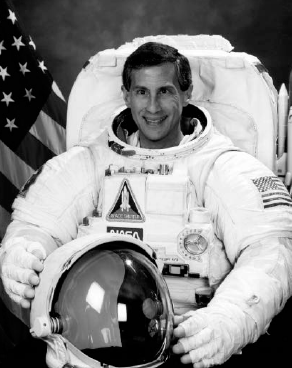
JAY APT

JAY APT
Born April 28, 1949, in Springfield, Massachusetts, but considers Pittsburgh, Pennsylvania, to be his hometown.
In 1980 Dr. Apt joined the Earth and Space Sciences Division of NASA’s Jet Propulsion Laboratory (JPL), doing planetary research, studying Venus, Mars, and the outer solar system. In 1981 he became Director of JPL’s Table Mountain Observatory. From 1982 through 1985, he was a flight controller responsible for Shuttle payload operations at NASA’s Johnson Space Center.
He was selected as an astronaut candidate by NASA in June 1985, and qualified as an astronaut in July 1986. His assignments to date have included Shuttle Orbiter modification support at Kennedy Space Center, developing techniques for servicing the Hubble Space Telescope and the Gamma Ray Observatory, development of EVA (space walk) construction and maintenance techniques for Space Station, as a spacecraft communicator (CAPCOM) for Shuttle flights, the voice link between the flight crew and the Mission Control Center (MCC), and the Astronaut Office EVA point of contact.
Apt flew as a member of the crew of the space Shuttle Atlantis on the STS-37 mission, which launched from Kennedy Space Center, Florida, on April 5, 1991. After completing 93 orbits of the Earth, the crew landed Atlantis at Edwards Air Force Base, California, on April 11, 1991.
Dr. Apt was Endeavour’s flight engineer on the crew of STS-47, Spacelab-J. This eight-day cooperative mission between the United States and Japan was launched on September 12, 1992, to perform life science and materials processing experiments in space. Dr. Apt was responsible for operating the Orbiter during one of the two shifts on this dual shift mission. After completing 126 orbits of the Earth, the crew landed Endeavour at Kennedy Space Center, Florida, on September 20, 1992.
He flew again aboard Endeavour on STS-59, the first flight of the Space Radar Laboratory, from April 9-20, 1994. As the blue shift commander, he was responsible for operating Endeavour during one of the two shifts on an 11-day mission to observe the land surface and oceans of Earth with three imaging radar systems, and to map air pollution in the lower atmosphere. After completing 183 orbits of the Earth, the crew landed Endeavour at Edwards Air Force Base, California.
He served aboard Atlantis during mission STS-79, September 16-26, 1996. The crew docked Atlantis with the Russian Mir space station, having ferried supplies, personnel, and scientific equipment to this base 240 miles above the Earth This historic mission of international cooperation and scientific research ended at Kennedy Space Center, Florida, after 160 orbits of the Earth.
With the completion of his fourth flight, Dr. Apt has logged over 847 hours (35 days) in space, including 10 hours and 49 minutes on two space walks. He has flown around the Earth 562 times.
22
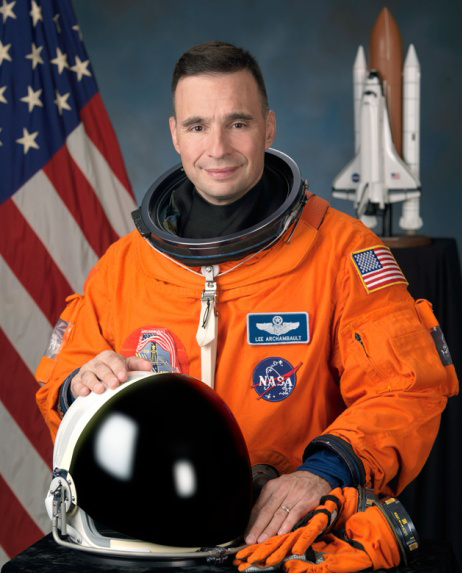
LEE J ARCHAMBAULT

LEE J ARCHAMBAULT
LEE J ARCHAMBAULT was Born on August 25, 1960 in Oak Park, Illinois, but considers Bellwood, Illinois to be his hometown.
He has logged over 5,000 flight hours in more than 30 different aircraft.
Selected as a pilot by NASA in June 1998, Archambault reported for training in August 1998. Upon completion of astronaut candidate training in June 1999, Archambault was assigned to the Astronaut Office Shuttle Operations branch, where he worked on flight instrument upgrades that were incorporated into the shuttle in 2003. Archambault also served as an Astronaut Support Person at the Kennedy Space Center and performed duties as spacecraft communicator (CAPCOM).
Archambault completed his first flight in space as the pilot on STS-117 (June 8-22, 2007) and then served as the spacecraft commander for STS-119 (March 15-28, 2009). He logged a total of 27 days in space. Following his two missions in space, he concluded his duties at NASA as the Astronaut Office Exploration Branch Chief. Colonel Archambault retired from the United States Air Force in 2012 and resigned from NASA in March of 2013.
23
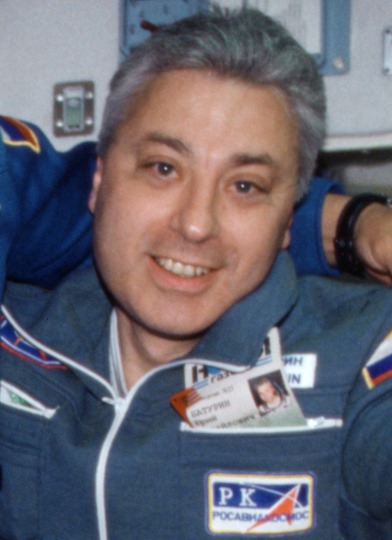
Yuri Mikhailovich Baturin

Yuri Mikhailovich Baturin
Yuri Mikhailovich Baturin was born on 12 June 1949, in Moscow, is a Russian cosmonaut and former politician.[1] He has the federal state civilian service rank of 1st class Active State Councillor of the Russian Federation. Baturin was also a cosmonaut who flew on two missions.
His first spaceflight, sometimes called Mir EP-4, was launched with the spacecraft Soyuz TM-28 13 August 1998, and landed with Soyuz TM-27. He was a Research Cosmonaut for this mission, which lasted for 11 days 19 hours 39 minutes. His second spaceflight was ISS EP-1, which was launched with the spacecraft Soyuz TM-32 on April 28, 2001, and landed with Soyuz TM-31. This mission was notable as carrying to first paying space tourist Dennis Tito. For this mission he was designated a Flight Engineer; the mission lasted for 7 days 22 hours and 4 minutes.
24
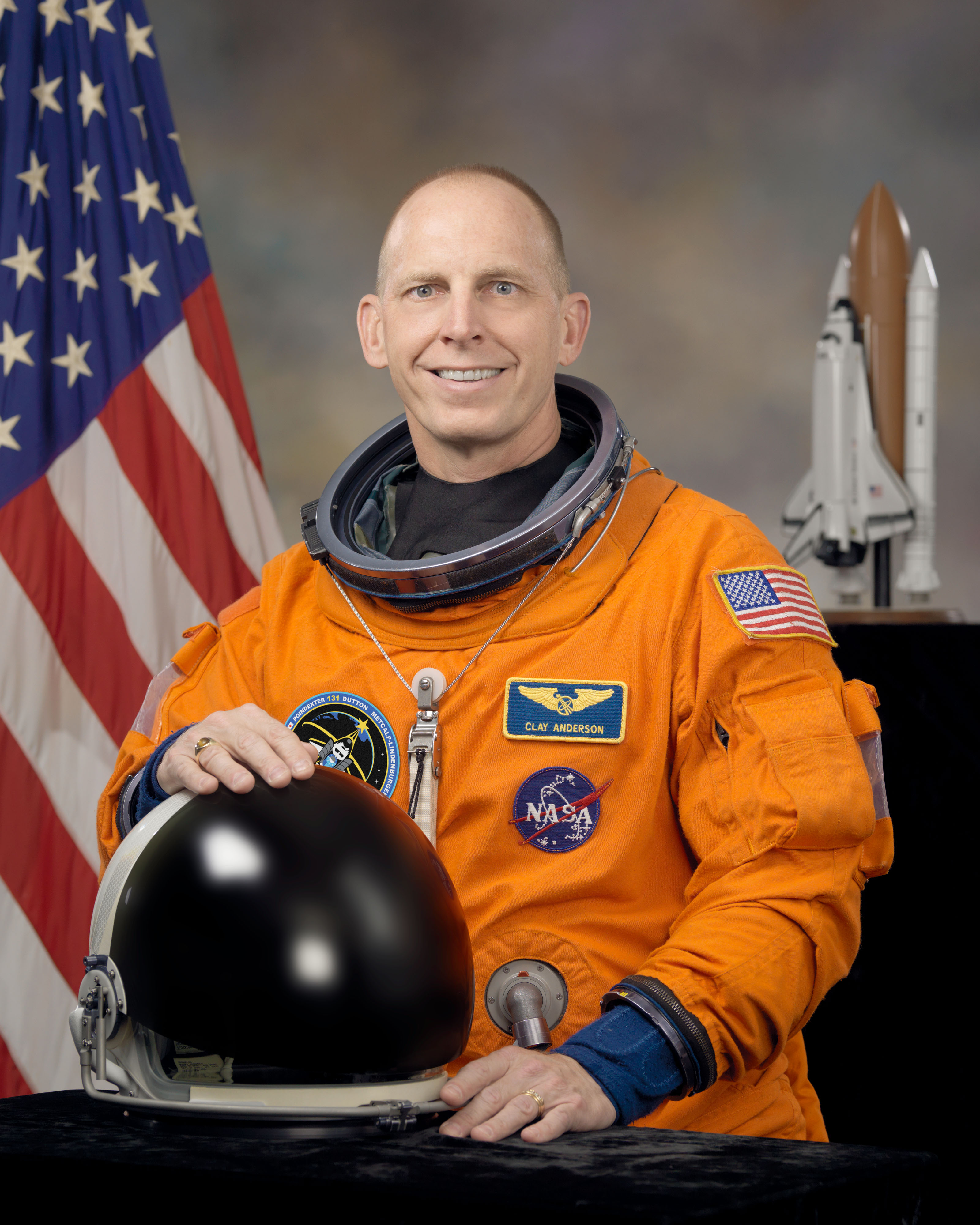
Clayton Conrad Anderson

Clayton Conrad Anderson
Clayton Conrad Anderson (born February 23, 1959) is a retired NASA astronaut. Launched on STS-117, he replaced Sunita Williams on June 10, 2007 as a member of the ISS Expedition 15 crew. Selected as an astronaut candidate by NASA in June 1998. he reported for training in August to have intensive instruction in Shuttle and International Space Station (ISS) systems, physiological training, ground school to prepare for T-38 flight training, as well as learning water and wilderness survival techniques.
Anderson also served as an ISS Capsule Communicator (CAPCOM) and as the Astronaut Office crew representative for the Station's electrical power system. In November 2002, Anderson completed training in the Extravehicular Activity (EVA) Skills program. He was back-up flight engineer for Expedition 12, Expedition 13 and Expedition 14 to the International Space Station.
He was a mission specialist on STS-131, launched in April 2010. The primary payload of this mission was a Multi-Purpose Logistics Module loaded with supplies and equipment for the International Space Station.
Anderson was a member of the Expedition 15 crew and spent 152 days on board the International Space Station. He was launched to the station aboard Shuttle Atlantis as mission specialist 5 for the STS-117 mission on June 8, 2007, and remained on board as a member of the Expedition 16 crew before returning to earth aboard Discovery on mission STS-120 on November 7, 2007. On return his official title was mission specialist 5.
25
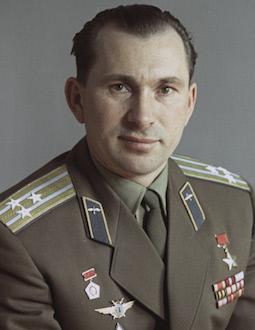
Pavel Ivanovich Belyayev

Pavel Ivanovich Belyayev
Pavel Ivanovich Belyayev, (26 June 1925 – 10 January 1970) was a Soviet fighter pilot with extensive experience in piloting different types of aircraft. He was the first commander of the cosmonaut corps and the cosmonaut who commanded the historic Voskhod 2 mission which saw the first man walk in space in 1965.
During Belyayev's final studies at the Red banner Air Force Academy he had been interviewed and tested for possible inclusion in the space program. Belyayev reported for assignment at the newly formed TsPK (cosmonaut training centre) on 25 March 1960. At 34, he was the oldest candidate accepted into the program. As a major he was the highest ranking candidate and the only one to have seen active service in World War II. Because of his senior rank, Belyayev became the first commander of the cosmonaut corps.
After the success of the first Voskhod mission in 1964, a second more technically demanding mission was planned for 1965. Its primary aim was to have a cosmonaut leave the capsule and "space-walk". Belyayev was confirmed as prime crew commander of Voskhod 2 just 3 days prior to launch.
Voskhod 2 launched with Belyayev and Leonov on board on 18 March 1965. Belyayev's call sign was Diamond and his designation as mission commander was 1.
After Leonov successfully performed the first space walk, Belyayev prepared to return to Earth. Belyayev had to perform a manual reentry when the automatic reentry system failed. After the success of the mission Belyayev and Leonov were awarded the Hero of the Soviet Union medal, given 15,000 rubles, a Volga car and 45 days leave.
26
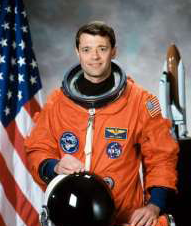
Jeffrey Shears Ashby

Jeffrey Shears Ashby
Jeffrey Shears Ashby was born on June 16, 1954, in Dallas, Texas, and grew up in Evergreen, Colorado, southwest of Denver is an American mechanical engineer, and former naval officer and aviator, test pilot and NASA astronaut, a veteran of three Space Shuttle missions. He is a retired Captain in the U.S. Navy.
Ashby was selected as an astronaut candidate in December 1994 at age 40. He was initially scheduled to be the pilot on STS-85 in 1997 but was replaced due to a family illness.[4] He piloted Space Shuttle missions STS-93 in July 1999 and STS-100 in April 2001, and commanded STS-112 in October 2002.
His first flight, aboard Columbia, deployed the Chandra X-ray Observatory. Ashby's latter two flights aboard Endeavour and Atlantis were the sixth and ninth assembly missions for the International Space Station. He has travelled over 11 million miles, flown 436 orbits around the Earth, and logged over 660 hours (27.5 days) in space.
27
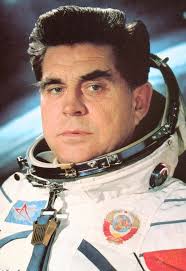
Georgy Timofeyevich Beregovoy

Georgy Timofeyevich Beregovoy
Georgy Timofeyevich Beregovoy was born on 15 April 1921 in Fedorivka, Poltava Oblast, Ukrainian Soviet Socialist Republic (now Ukraine). was a Soviet cosmonaut who commanded the space mission Soyuz 3 in 1968. From 1972 to 1987, he headed the Yuri Gagarin Cosmonaut Training Center.
At the time of his space flight, Beregovoy was 47 years of age: he was the earliest-born human to go to orbit, being born three months and three days earlier than the second earliest-born man in orbit – John Glenn, but later than X-15 pilot Joe Walker who made 2 (or 3, according to USAF definition) suborbital space flights.
In 1965, Colonel Beregovoy was scheduled to fly the following year in Voskhod 3, but the mission was never launched.
On 25 October 1968 Beregovoy took the Soyuz 3 into outer space: he orbited the Earth for almost four days at an altitude of up to 252 km. As part of his mission, Beregovoy twice maneuvered his craft into rendezvous positions with the uncrewed Soyuz 2 satellite[4] but was unable to establish a direct physical link to the craft before returning on 30 October 1968.
Nonetheless, Beregovoy's flight was in some ways an encouraging success for the Soviet crewed space program, and the colonel was celebrated as a hero upon his return. Soyuz 3 was Beregovoy's only spaceflight and soon after it he retired from active duty, having been promoted to Major General.
28
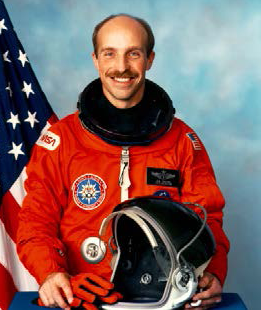
JAMES P BAGIAN

JAMES P BAGIAN
JAMES P BAGIAN born February 22, 1952, in Philadelphia, Pennsylvania.
Bagian became a NASA astronaut in July 1980. He took part in both the planning and provision of emergency medical and rescue support for the first six Shuttle flights. He also served as the Astronaut Office coordinator for Space Shuttle payload software and crew equipment, as well as supporting the development of a variety of payloads and participating in the verification of Space Shuttle flight software. A veteran of two space flights, STS-29 in 1989 and STS-40 in 1991, Dr. Bagian has logged over 337 hours in space.
29
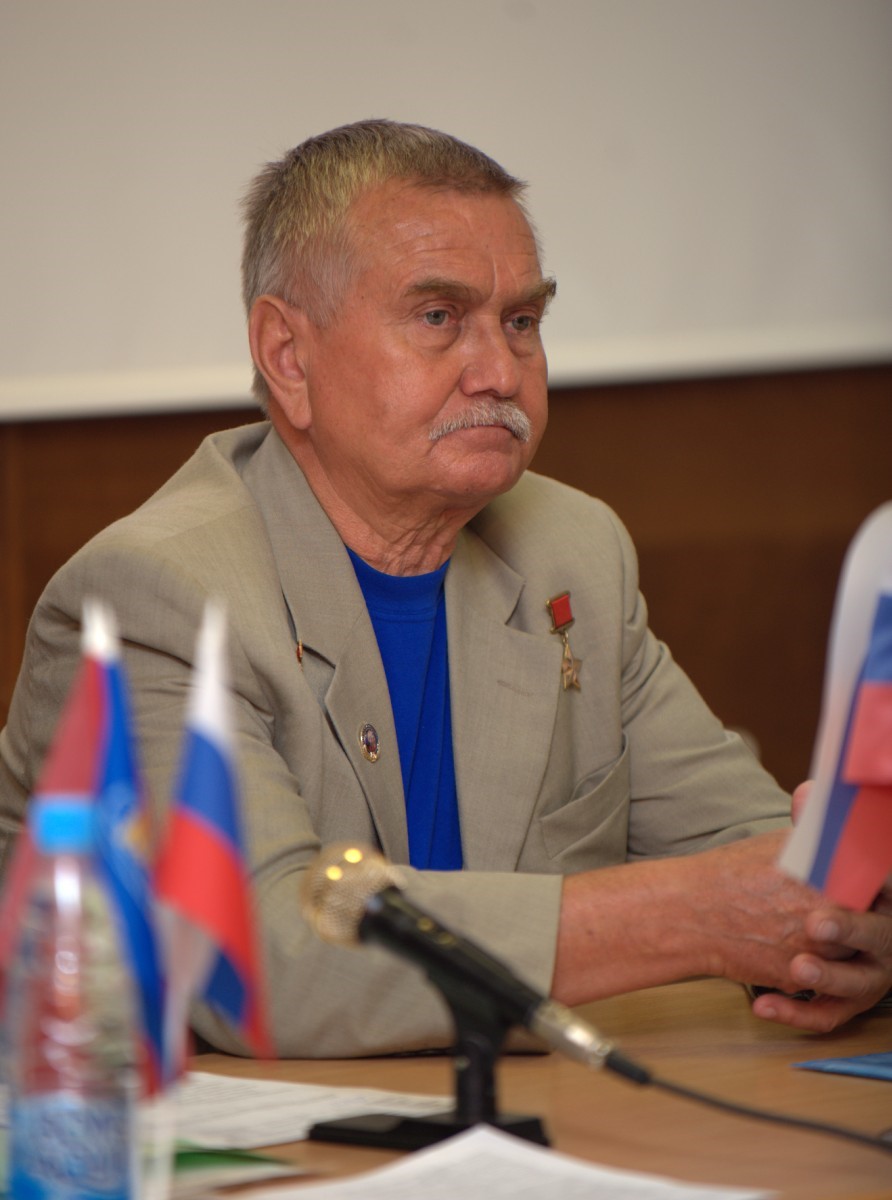
Anatoly Nikolayevich Berezovoy

Anatoly Nikolayevich Berezovoy
Anatoly Nikolayevich Berezovoy (11 April 1942 – 20 September 2014) was a Soviet cosmonaut.
Berezovoy was born in Enem, Adyghe Autonomous Oblast, Russian SFSR in a Ukrainian family.
On 27 April 1970 he was selected as a cosmonaut. In 1982 he flew as Commander on Soyuz T-5 on the first mission to the Salyut 7 space station, returning to Earth on the Soyuz T-7 after 211 days 9 hours. He retired on 31 October 1992 due to age. From 1992 to 1999, he was a Deputy President of Russian Space Federation.
30
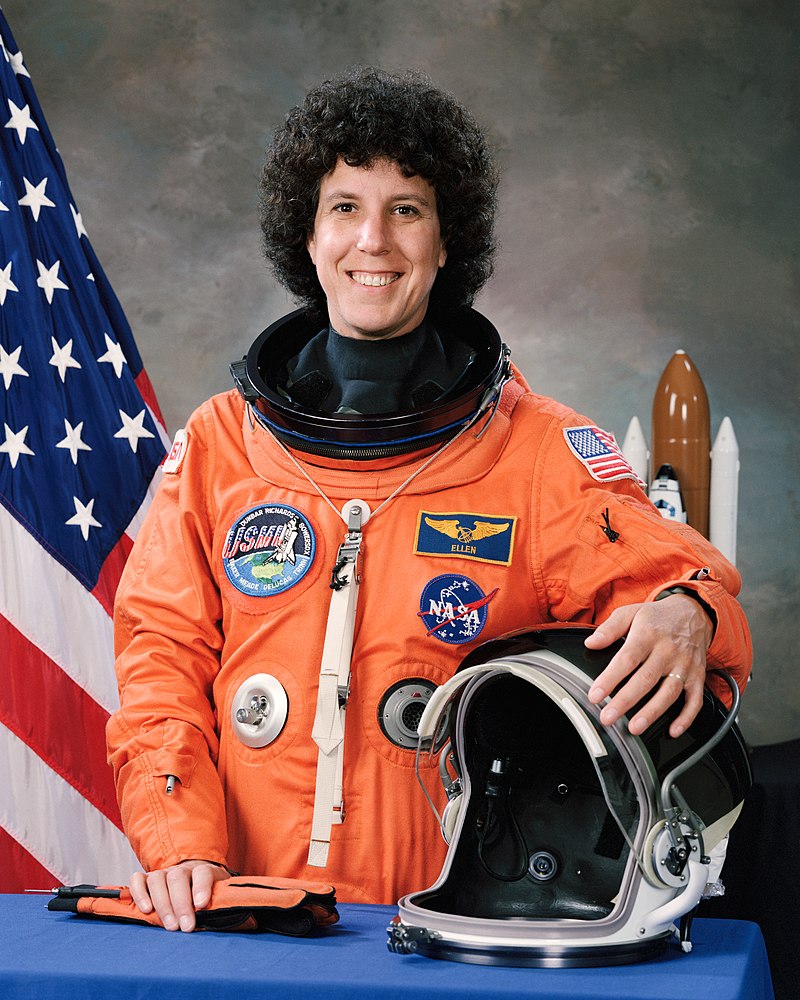
Ellen Louise Shulman Baker

Ellen Louise Shulman Baker
Ellen Louise Shulman Baker, M.D., M.P.H. (born April 27, 1953) is an American physician and a former NASA astronaut. Baker is a veteran of three shuttle flights and logged more than 686 hours in space. Baker served as Chief of the Education/Medical Branch of the NASA Astronaut Office until her retirement in 2011 after more than 30 years of service to NASA.
In 1981 Baker joined NASA as a medical officer at the Lyndon B. Johnson Space Center. Prior to her selection as an astronaut candidate, she served as a physician in the Flight Medicine Clinic at the Johnson Space Center. Selected by NASA in May 1984, Baker became an astronaut in June 1985. Since then, she has had a variety of jobs at NASA in support of the Space Shuttle program and Space Station development. She was a mission specialist on STS-34 in 1989, STS-50 in 1992, and STS-71 in 1995 and has logged over 686 hours in space. She then served as Chief of the Astronaut Office Education/Medical Branch.
31
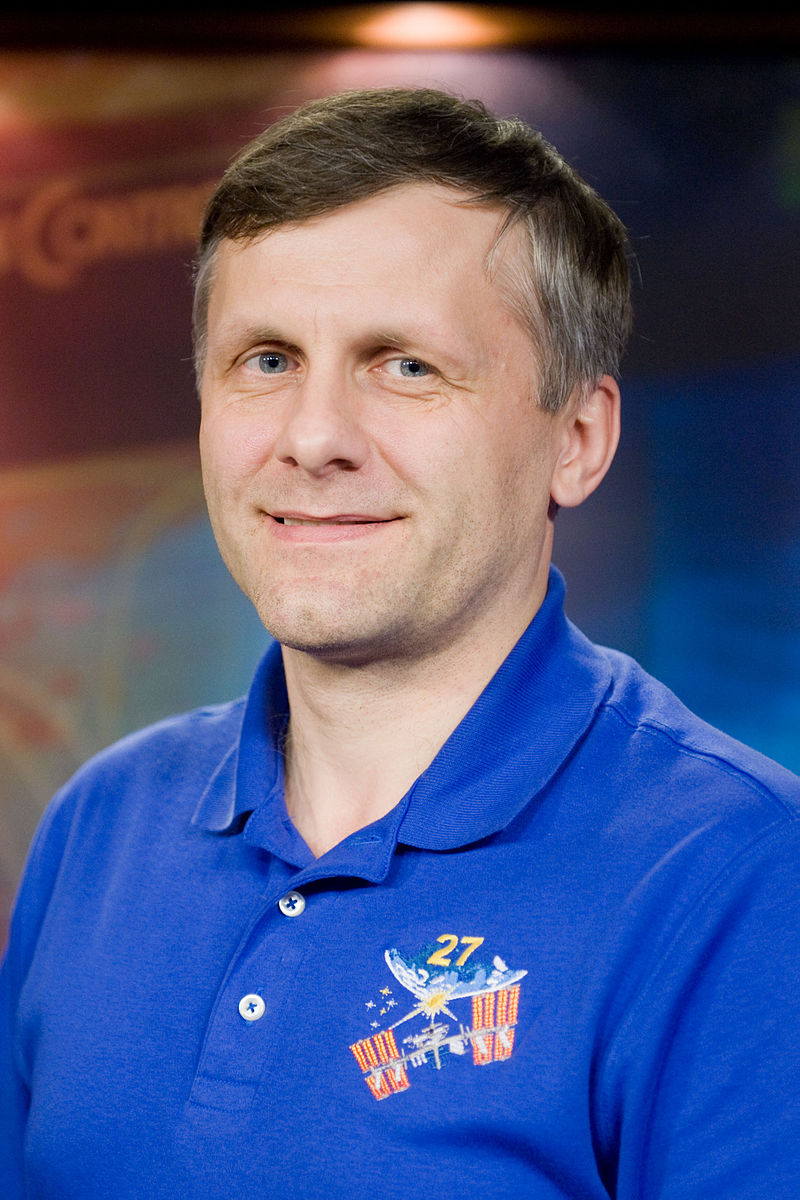
Andrey Ivanovich Borisenko

Andrey Ivanovich Borisenko
Andrey Ivanovich Borisenko born on 17th April 1964, is a Russian cosmonaut. He was selected as a cosmonaut in May 2003, and is a veteran of two long duration missions to the International Space Station.
Borisenko served as a flight engineer on board Soyuz TMA-21 for Expedition 27, the 27th long-duration mission to the International Space Station (ISS). He also served as the commander of the International Space Station for Expedition 28. He launched for the second time in October 2016 onboard Soyuz MS-02 as a flight engineer of Expedition 49 and Expedition 50. He returned to Earth in April 2017.
Following graduation from the institute Borisenko worked for a military unit from 1987–1989. In 1989, he started working at RSC Energia where he was responsible for the Mir motion control system and took part in the Mission Control Center - Moscow (MCC-M) on board systems operation analysis board. In 1999, Borisenko was a shift flight director at the MCC-M, first for the Mir space station and then for the International Space Station (ISS).
32
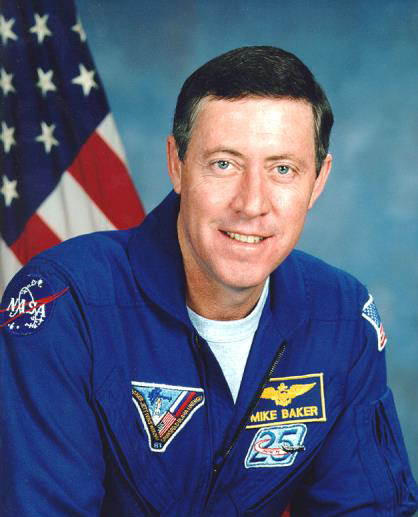
MICHAEL A BAKER

MICHAEL A BAKER
MICHAEL A BAKER was born on October 27, 1953, in Memphis, Tennessee, but considers Lemoore, California, to be his hometown.
Selected by NASA in June 1985, Baker became an astronaut in July 1986 upon completion of a one-year training and evaluation program.
Following the Challenger accident, from January 1986 to December 1987, Baker was assigned as a member of the team that was pursuing redesign, modification and improvements to the Shuttle Landing and Deceleration Systems, including nose wheel steering, brakes, tires, and drag chute, in an effort to provide greater safety margins during landing and rollout.
Baker then served as an ascent, entry and orbit spacecraft communicator (CAPCOM) for STS-27, STS-29, STS-30, STS-28, STS- 34, STS-33, STS-32, STS-36, STS-31, STS-38, and STS-35.
A veteran of four space flights, Baker has logged 965 hours in space. He served as pilot on STS-43 (August 2-11, 1991) and STS-52 (October 22 to November 1, 1992), and was the mission commander on STS-68 (September 30 to October 11, 1994) and STS-81 (January 12-22, 1997).
Mike Baker was assigned as the International Space Station Program Manager for International and Crew Operations and was responsible for the coordination of program operations, integration and flight crew training and support activities with the International Partners. He retired from NASA January 2017.
33
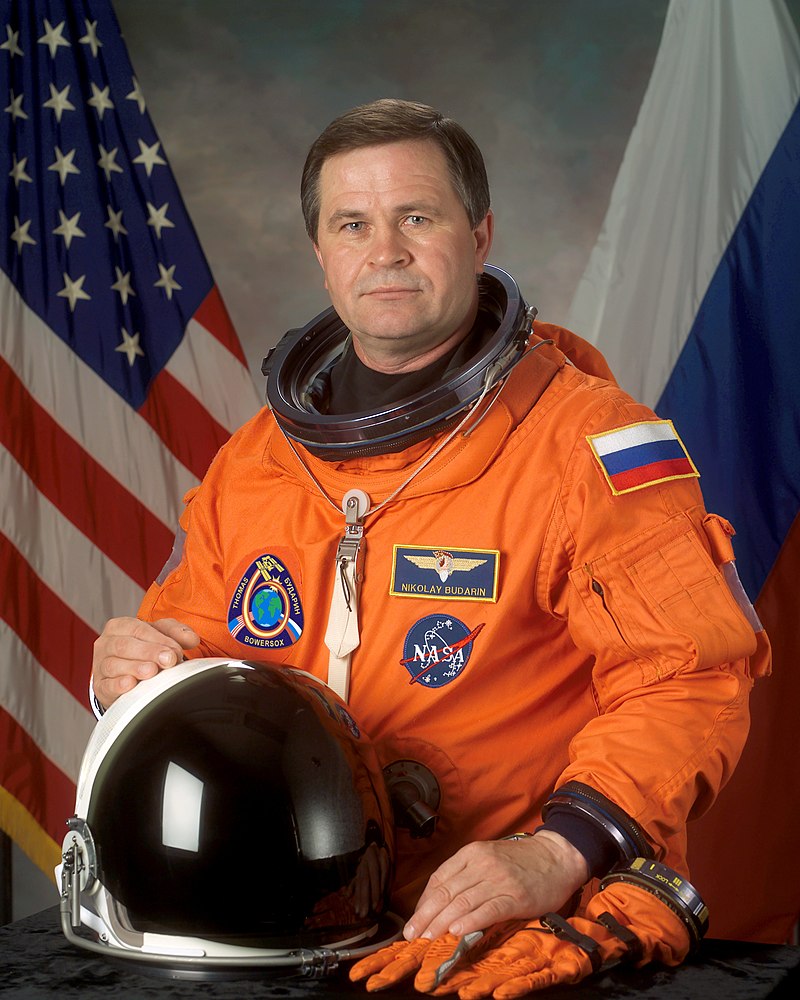
Nikolai Mikhailovich Budarin

Nikolai Mikhailovich Budarin
Nikolai Mikhailovich Budarin was born on April 29, 1953 in Kirya, Chuvashia, is a retired Russian cosmonaut, a veteran of three extended space missions aboard the Mir Space Station and the International Space Station. He has also performed eight career spacewalks with a total time of 44 hours.
Named a cosmonaut candidate in 1989, Budarin's first space mission was a long-term assignment aboard the space station Mir in 1995. Since then, he again made extended stays on Mir in 1998 and the International Space Station Expedition 6 from 2002 to 2003.
In February 1989 he was enrolled in the Energia cosmonaut detachment as a candidate test cosmonaut.
From June 27 to September 11, 1995, Budarin participated in a space mission as a board engineer of the 19th long-term Mir expedition. He was launched into space by Space Shuttle Atlantis on the STS-71 mission. Atlantis lifted off from the Kennedy Space Center at 19:32:19 UTC on June 27, 1995. After 2 days of solo flight the space shuttle docked with the Mir station on June 29, 1995, at 13:00:16 UTC. Budarin spent 75 days, 11 hours and 20minutes in space and landed on the Soyuz TM-21 spacecraft. The Soyuz capsule carrying Budarin landed on September 11, 1995 at 06:52:40 UTC, 108 km north east of Arkalyk.
From January 28 to August 25, 1998, he participated in a space mission as a board engineer of the 25th long-term expedition aboard the Mir orbital station. Soyuz TM-27 carrying Budarin, landed near Dzhezkazgan on August 25, 1998 at 05:24:44 UTC. During the Soyuz and Mir missions Budarin spent 207 days, 12 hours and 51 minutes in space.
From November 23, 2002 to May 3, 2003, Budarin logged 161 days, 1 hour and 14 minutes in space as Expedition 6 Flight Engineer aboard the International Space Station. The medical research he conducted studied the effects of microgravity on the human body. Budarin returned to Earth on board the Soyuz TMA-1 spacecraft.
During his two visits to the Mir orbital station, Budarin performed eight spacewalks totalling 44 hours.
34
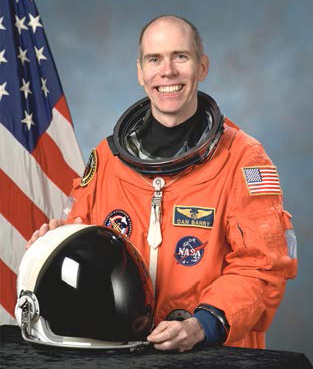
DANIEL T BARRY

DANIEL T BARRY
DANIEL T BARRY, born on December 30, 1953, in Norwalk, Connecticut, but considers South Hadley, Massachusetts, to be his hometown.
Selected by NASA in March 1992, Dr. Barry reported to the Johnson Space Center in August 1992. He completed one year of training and qualified for assignment as a mission specialist on Space Shuttle flight crews. Dr. Barry has worked on primary payload development, the Shuttle Avionics Integration Laboratory (SAIL), portable computing issues for Space Shuttle, Chief of Astronaut Appearances, flight clinic ombudsman, source board member for the NASA Space Biomedical Research Institute (NSBRI), Astronaut Office team lead to NASDA, the Japanese Space Agency, Chief, ISS Hardware, US and International, and a tour of duty with the Office of Biological & Physical Research and the Office of Education, NASA Headquarters, Washington D.C. A veteran of three space flights, STS-72 (1996), STS-96 (1999) and STS-105 (2001), Dr. Barry has logged over 734 hours in space, including 4 spacewalks totaling 25 hours and 53 minutes.
35
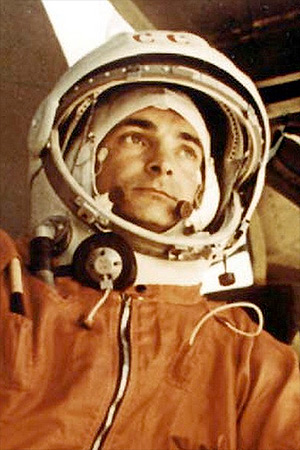
Valery Fyodorovich Bykovsky

Valery Fyodorovich Bykovsky
Valery Fyodorovich Bykovsky Born in Pavlovsky Posad, Russia (2 August 1934 – 27 March 2019) was a Soviet cosmonaut who flew on three space flights: Vostok 5, Soyuz 22, and Soyuz 31. He was also backup for Vostok 3 and Soyuz 37.
He graduated from the academy at 21 years old and received the rank of lieutenant. By the time he began his cosmonaut training, he had done over 72 parachute jumps.[1]
At 26 years old he started his cosmonaut training at Zhukovsky Military Engineering academy. Bykovsky's space flight started in Kazakhstan, Soviet Central Asia at the Baikonur cosmodrome. Bykovsky was launched on the Vostok 5 mission on 14 June 1963. During the flight he conducted experiments, such as photographing the Earth's horizon and documenting the growth of peas. He also floated around in the cabin, adjusting the orientation of the spacecraft plenty of times throughout the mission.[3] Two days into his flight, Valentina Tereshkova flew the Vostok 6 spacecraft within five kilometers of his spacecraft. He set a space endurance record in solo flight when he spent five days in orbit aboard Vostok 5 in 1963. Of Note, is the fact that Vostok 5 and the Vostok 6 flight missions flew in relatively close proximity to each other. At times traveling as close at 3 miles for each other. These flight paths were crucial in establishing future docking missions between two vehicles in orbiting in space
He flew the Soyuz 22 mission launched on 15 September 1976. The capsule was originally a backup for the Apollo–Soyuz Test Project (ASTP). The main purpose of the mission was studying and practising Earth observation techniques.
He flew the Soyuz 31 mission to the Salyut 6 space station with the East German Sigmund Jähn which was launched on 26 August 1978. They joined two other cosmonauts on the space station that had arrived on Soyuz 29. The four conducted biological experiments on themselves during their stay. Bykovsky and Jähn undocked from the station in the Soyuz 29 capsule on 3 September and landed back on Earth later that day.
36
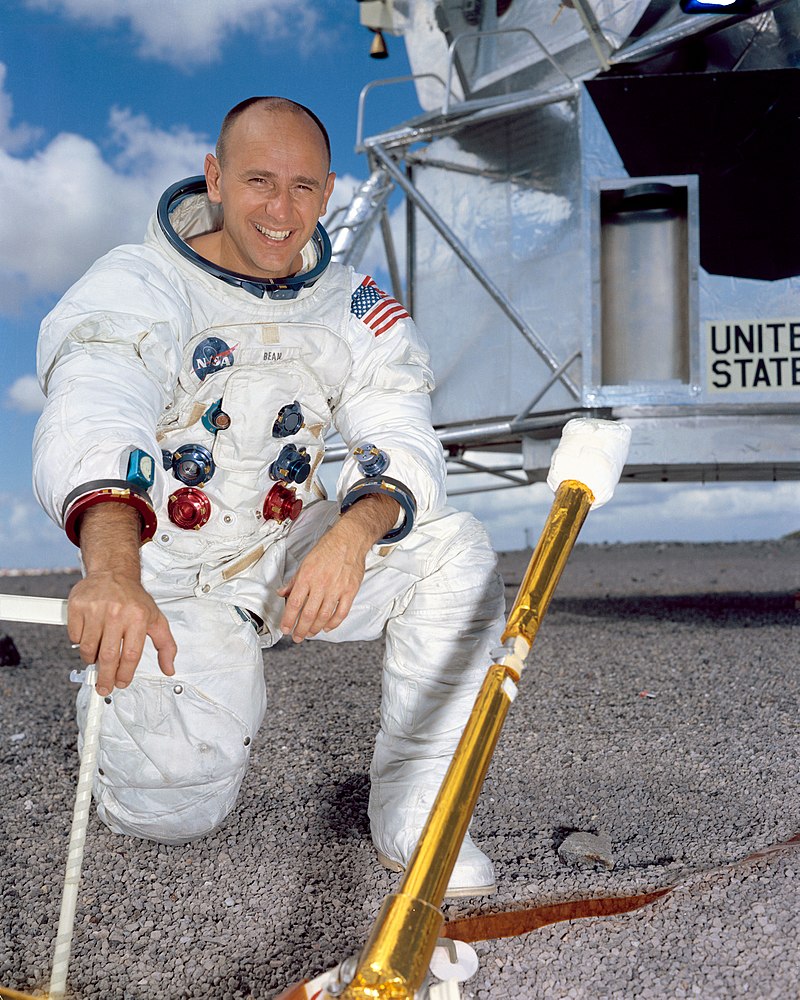
Alan Bean

Alan Bean
Alan Bean was born in Wheeler, Texas, on March 15, 1932.
he was one of the third group of astronauts named by NASA in October 1963. He served as backup astronaut for the Gemini 10 and Apollo 9 missions.
Captain Bean was lunar module pilot on Apollo 12, man’s second lunar landing. In November 1969, Captain Bean and Captain Pete Conrad landed in the moon’s Ocean of Storms—after a flight of some 250,000 miles.
Captain Bean was spacecraft commander of Skylab Mission II (SL-3), July 29 to September 25, 1973, on the 59-day, 24,400,000 mile world record setting flight were scientist-astronaut Dr. Owen K. Garriott and Marine Corps Lieutenant Colonel Jack R. Lousma. Mission II accomplished 150% of its pre-mission forecast goals.
On his next assignment, Captain Bean was backup spacecraft commander of the United States flight crew for the joint American-Russian Apollo-Soyuz Test Project.
Captain Bean has logged 1,671 hours and 45 minutes in space—of which 10 hours and 26 minutes were spent in EVAs on the moon and in earth orbit.
37
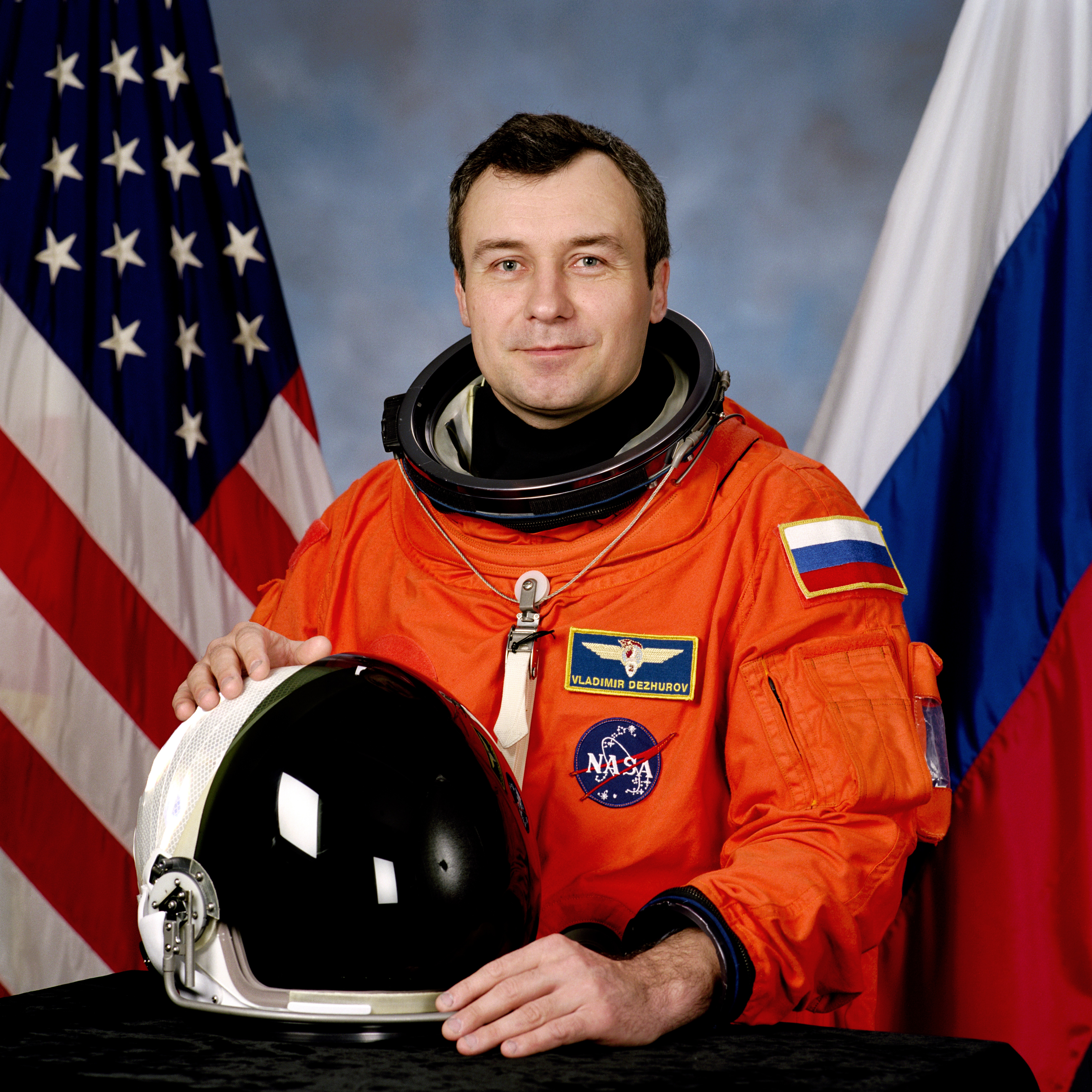
Vladimir Nikolayevich Dezhurov

Vladimir Nikolayevich Dezhurov
Vladimir Nikolayevich Dezhurov was born in the settlement of Yavas, Zubovo-Polyansky District, Mordovia, Russia on July 30, 1962. is a Russian former cosmonaut who resides in Star City, Moscow. He is a veteran of two spaceflights, to the Mir and International Space Stations. During his career, Dezhurov also conducted nine spacewalks before his retirement on July 12, 2004.In 1987, he was assigned to the Cosmonaut Training Center. From December 1987 to June 1989, he underwent a course of general space training.
In March 1994, Dezhurov began flight training as commander of the prime crew of the Mir-18 mission. The crew was launched from the Baikonur Cosmodrome in Kazakhstan on March 14, 1995, aboard the Soyuz TM-21 spacecraft. Following a two-day solo flight, the Soyuz spacecraft docked with the Mir on March 16. Following a 115-day flight, the mission concluded with landing at the Kennedy Space Center in Florida, aboard Space Shuttle Atlantis on July 7, 1995.
Dezhurov lived and worked aboard the International Space Station where he served as a member of the Expedition 3 crew. Space Shuttle Discovery carrying Dezhurov and six other crewmembers on STS-105 mission blasted off to space from the Kennedy Space Center (KSC) on August 10, 2001. The shuttle docked with the ISS on 12 August at 18:41 UTC. Dezhurov spent approximately 4 months aboard the station as a flight engineer. During the long-duration mission the Expedition 3 crew enjoyed a unique view of the 2001 Leonid meteor storm. At the end of the stay Expedition 3 crewmembers, Dezhurov, NASA astronaut Frank Culbertson and cosmonaut Mikhail Tyurin returned to Earth on board Space Shuttle Endeavour. Endeavour's STS-108 mission delivered the Expedition 4 crew to the ISS and landed at KSC on December 17, 2001.
During his cosmonaut career, Dezhurov has performed nine spacewalks. During Mir EO-18 long-duration mission Dezhurov conducted five spacewalks. As of June 2010, his nine spacewalks totalling 37 hours and 2 minutes has placed him in the 25th position in the list of astronauts who have the most extra-vehicular activity (EVA) time.
38
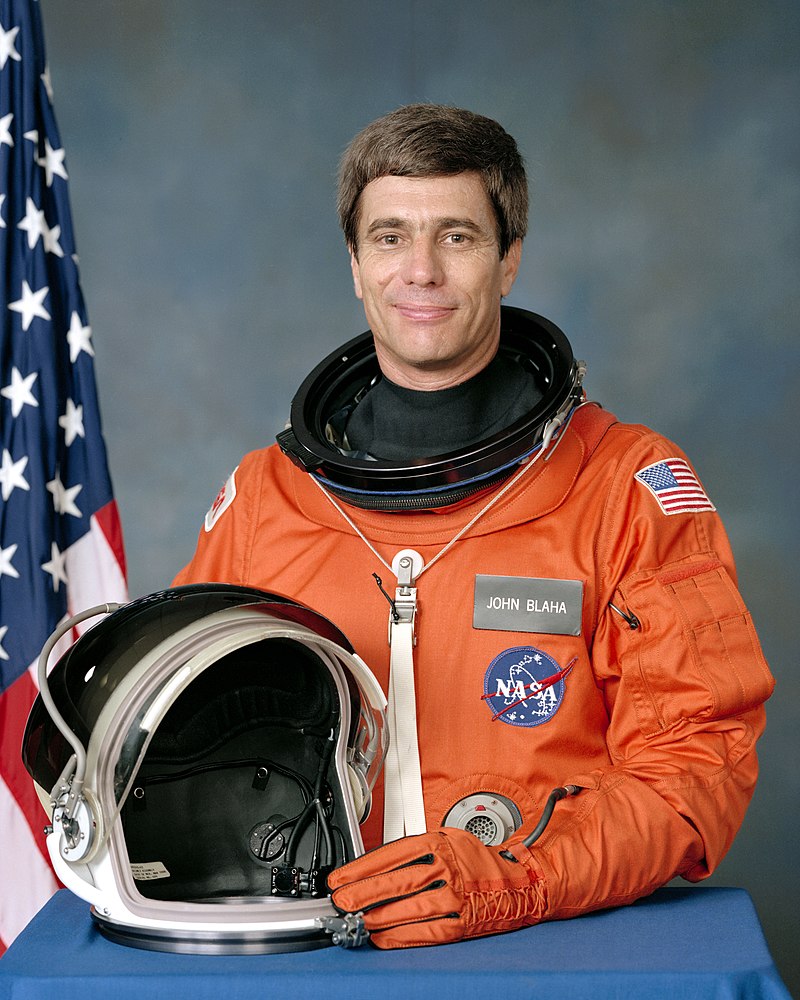
JOHN E BLAHA

JOHN E BLAHA
JOHN E BLAHA was born August 26, 1942, in San Antonio, Texas.
Selected as an astronaut in May 1980, Blaha has logged 161 days in space on 5 space missions. He served as pilot on STS-33 and STS 29, was Spacecraft Commander on STS-58 and STS-43, served on Mir-22 as Board Engineer 2, and was a Mission Specialist on STS-79 and STS-81.
In addition to flying 5 space missions, Blaha has served as the Chairman, NASA Space Flight Safety Panel; Weather Manager, Mission Management Team; lead spacecraft communicator; member, NASA Space Shuttle Improvement Panel. Blaha also led the design, development, and integration of the Orbiter Head Up Display system.
John Blaha retired from NASA in September 1997 to return to his hometown of San Antonio, Texas, where he joined the Executive Management Group of the United Services Automobile Association.
39
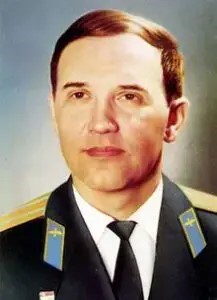
Georgy Timofeyevich Dobrovolsky

Georgy Timofeyevich Dobrovolsky
Georgy Timofeyevich Dobrovolsky (1 June 1928 – 30 June 1971) was a Soviet cosmonaut who commanded the three-man crew of the Soyuz 11 spacecraft. They became the world's first space station crew aboard Salyut 1, but died of asphyxiation because of an accidentally opened valve. They were the first and only humans to have died in space.
After a normal re-entry, the capsule was opened and the crew was found dead. It was discovered that a valve had opened just prior to leaving orbit that had allowed the capsule's atmosphere to vent away into space, suffocating the crew.
40
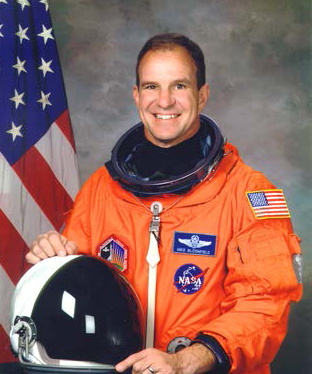
MICHAEL J BLOOMFIELD

MICHAEL J BLOOMFIELD
MICHAEL J BLOOMFIELD was on born March 16, 1959, in Flint, Michigan. Considers Lake Fenton, Michigan, to be his hometown.
He was Selected by NASA in December 1994, Bloomfield reported to the Johnson Space Center in March 1995. He worked as Chief of Safety for the Astronaut Office, Chief Instructor Astronaut, Director of Shuttle Operations, and Chief of the Shuttle Branch which oversees all Shuttle technical issues for the Astronaut Office. His last NASA position was Deputy Director, Flight Crew Operations, overseeing the Astronaut Office and flying operations at Ellington Field. A veteran of three space flights, STS-86 (1997), STS-97 (2000) and STS-110 (2002), he has logged over 753 hours in space.
41
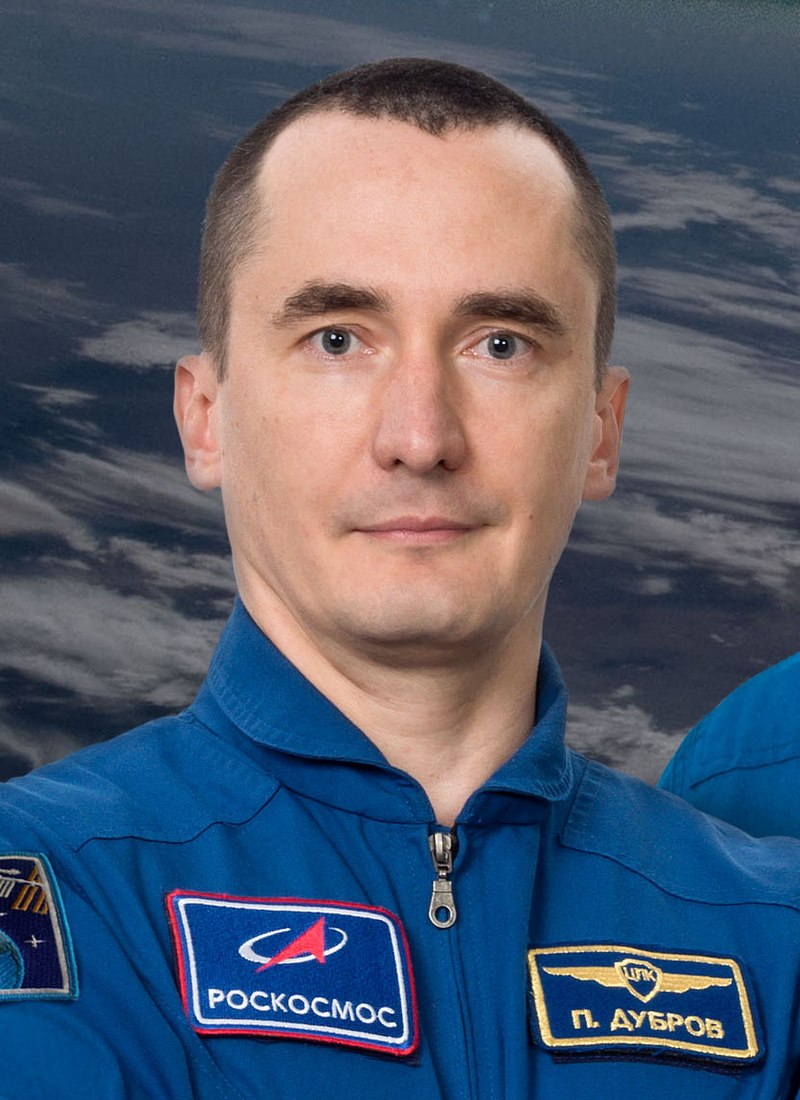
Pyotr Valerievich Dubrov

Pyotr Valerievich Dubrov
Pyotr Valerievich Dubrov was born in Khabarovsk, Russia SFSR on 30 January 1978, is a Russian engineer and cosmonaut selected by Roscosmos in 2012.
Dubrov was selected by Roscosmos as a cosmonaut on 8 October 2012, as one of eight cosmonauts selected as part of Roscosmos's 2012 selection group.
Dubrov launched aboard Soyuz MS-18 in April 2021 for his first long duration mission aboard the International Space Station. He returned to Earth along with Mark T. Vande Hei with Soyuz MS-19 on March 30, 2022, having spent a total of 355 days in space.
His team has supported the making of the film “The Challenge” on board ISS which was a joint project of Roscosmos, Channel One and the Yellow, Black and White studio.
42
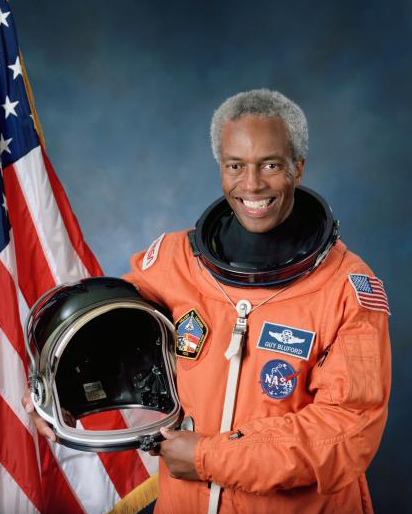
GUION S BLUFORD

GUION S BLUFORD
GUION S BLUFORD was born in Philadelphia, Pennsylvania, on November 22, 1942.
Bluford became a NASA astronaut in August 1979. A veteran of four space flights, Bluford was a mission specialist on STS-8, STS 61-A, STS-39 and STS-53.
Bluford’s first mission was STS-8, which launched from Kennedy Space Center, Florida, on August 30, 1983. This was the third flight for the orbiter Challenger and the first mission with a night launch and night landing. During the mission, the STS-8 crew deployed the Indian National Satellite (INSAT-1B). STS-8 completed 98 orbits of the Earth in 145 hours before landing at Edwards Air Force Base, California, on September 5, 1983.
Bluford then served on the crew of STS 61-A, the German D-1 Spacelab mission, which launched from Kennedy Space Center, Florida, on October 30, 1985. This mission was the first to carry eight crew members, the largest crew to fly in space, and included three European payload specialists.
After completing 111 orbits of the Earth in 169 hours, Challenger landed at Edwards Air Force Base, California, on November 6, 1985.
Bluford also served on the crew of STS-39, which launched from the Kennedy Space Center, Florida, on April 28, 1991, aboard the orbiter Discovery. After completing 134 orbits of the Earth and 199 hours in space, Discovery landed at Kennedy Space Center, Florida, on May 6, 1991.
On his last flight, Bluford served on the crew of STS-53 which launched from Kennedy Space Center, Florida, on December 2, 1992. After completing 115 orbits of the Earth in 175 hours, Discovery landed at Edwards Air Force Base, California, on December 9, 1992.
With the completion of his fourth flight, Bluford has logged over 688 hours in space.
43
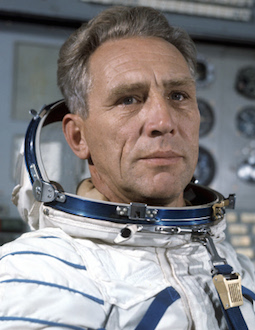
Lev Stepanovich Dyomin

Lev Stepanovich Dyomin
Lev Stepanovich Dyomin (11 January 1926 – 18 December 1998[) was born in Moscow and was a Soviet cosmonaut who flew on the Soyuz 15 spaceflight in 1974. This spaceflight was intended to dock with the space station Salyut 3, but the docking failed.
Aged 48 at the time of his flight on Soyuz 15, he was the oldest cosmonaut up to that point as well as the first grandfather to go into space. He remained in the program until leaving in 1982 to pursue deep-sea research.
44
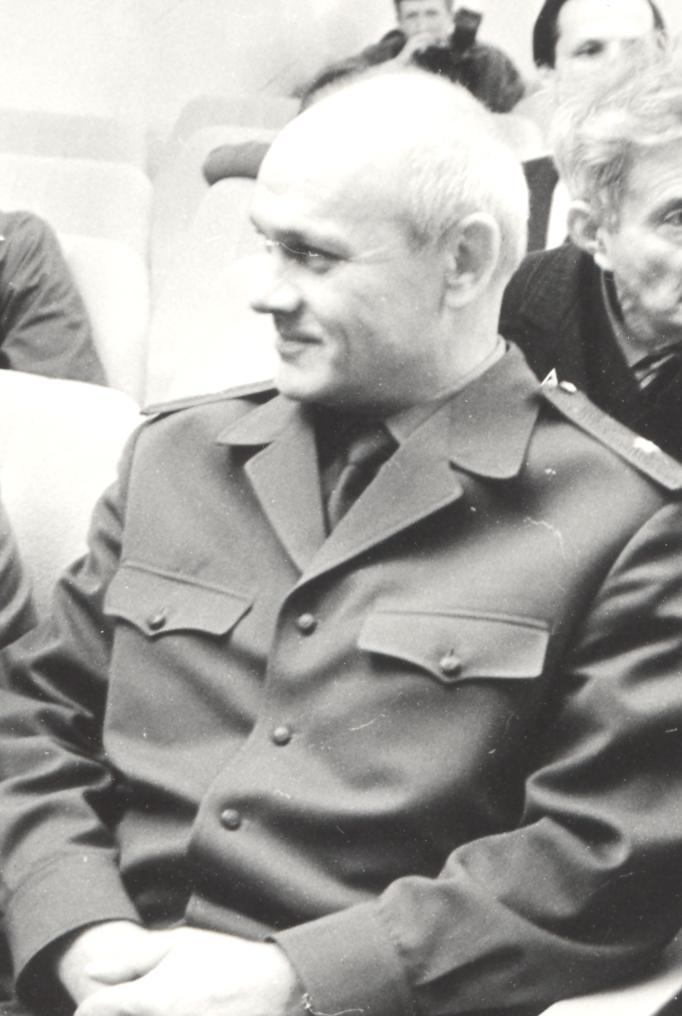
Vladimir Aleksandrovich Dzhanibekov

Vladimir Aleksandrovich Dzhanibekov
Vladimir Aleksandrovich Dzhanibekov was born in the remote area of Iskandar in what was then Bostanliq District, South Kazakhstan Region, Kazakh SSR (since 1956 – Tashkent Region, Uzbekistan) on 13 May 1942.
Dzhanibekov made five flights: Soyuz 27, Soyuz 39, Soyuz T-6, Soyuz T-12, and Soyuz T-13. In all he had spent 145 days, 15 hours, and 56 minutes in space over these five missions. He had also performed two EVAs with a total time of 8 hours and 35 minutes. In 1985 he noted the effects of the tennis racket theorem, subsequently also called the Dzhanibekov effect, by showing that rotation about an object's intermediate principal axis is unstable while in free fall.
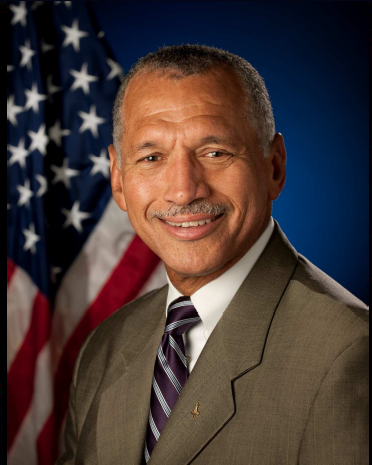
Charles Frank Bolden Jr

Charles Frank Bolden Jr
Charles Frank Bolden Jr. (born August 19, 1946) is a former Administrator of NASA, a retired United States Marine Corps Major General, and a former astronaut who flew on four Space Shuttle missions.
Selected by NASA in May 1980, Bolden became an astronaut in August 1981. A veteran of four space flights, he has logged over 680 hours in space. Bolden served as pilot on STS-61-C (January 12–18, 1986) and STS-31 (April 24–29, 1990), was the mission commander on STS-45 (March 24 – April 2, 1992), and STS-60 (February 3–11, 1994).
Bolden was the first person to ride the Launch Complex 39 slidewire baskets which enable rapid escape from a Space Shuttle on the launch pad. The need for a human test was determined following a launch abort on STS-41-D where controllers were afraid to order the crew to use the untested escape system.
On STS-61-C, Bolden piloted Space Shuttle Columbia, Space Shuttle Discovery during STS-3 and commanded STS-60's crew of six aboard Discovery. The STS-61-C mission was launched from Kennedy Space Center on January 12, 1986, orbited the Earth 96 times, and ended with a successful night landing at Edwards Air Force Base, California on January 18, 1986.
STS-31, Launched on April 24, 1990, from Kennedy Space Center, the crew spent the five-day mission deploying the Hubble Space Telescope and conducting a variety of mid-deck experiments. Following 75 orbits of Earth in 121 hours, Discovery landed at Edwards Air Force Base on April 29, 1990.
On STS-45, Bolden commanded a crew of seven aboard Space Shuttle Atlantis, launched on March 24, 1992, from Kennedy Space Center. STS-45 was the first Spacelab mission dedicated to NASA's "Mission to Planet Earth". Following 143 orbits of Earth, Atlantis landed at Kennedy Space Center on April 2, 1992.
Bolden commanded STS-60's crew of six aboard Discovery. This was the historic first joint-American–Russian Space Shuttle mission involving the participation of a Russian cosmonaut, Sergei Krikalev, as a mission specialist. The flight launched on February 3, 1994, from Kennedy Space Center, and carried the Space Habitation Module-2 (SPACEHAB-2), and the Wake Shield Facility. The crew conducted a series of joint American/Russian science activities. The mission achieved 130 orbits of the Earth, ending with a landing on February 11, 1994, at the Kennedy Space Center.
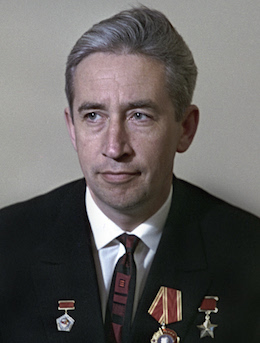
Konstantin Petrovich Feoktistov

Konstantin Petrovich Feoktistov
Konstantin Petrovich Feoktistov born on 7 February 1926 – 21 November 2009, was a Soviet cosmonaut and an eminent space engineer. As a cosmonaut Feoktistov flew on Voskhod 1, the first spacecraft to carry three crew members. Feoktistov also wrote several books on space technology and exploration. The Feoktistov crater on the far side of the Moon is named in his honor.
In 1964, Feoktistov was selected as part of a group of engineers for cosmonaut training, and in October of that very same year, he was hastily assigned to the multi-disciplinary Voskhod 1 crew. During his space flight, he spent just over 24 hours and 17 minutes in space.
After the flight of Voskhod 1, Feoktistov's training for any further space mission was discontinued for medical reasons. However, Feoktistov continued his outer space engineering work, and he later became the head of the Soviet space design bureau that designed the Salyut and Mir space stations.
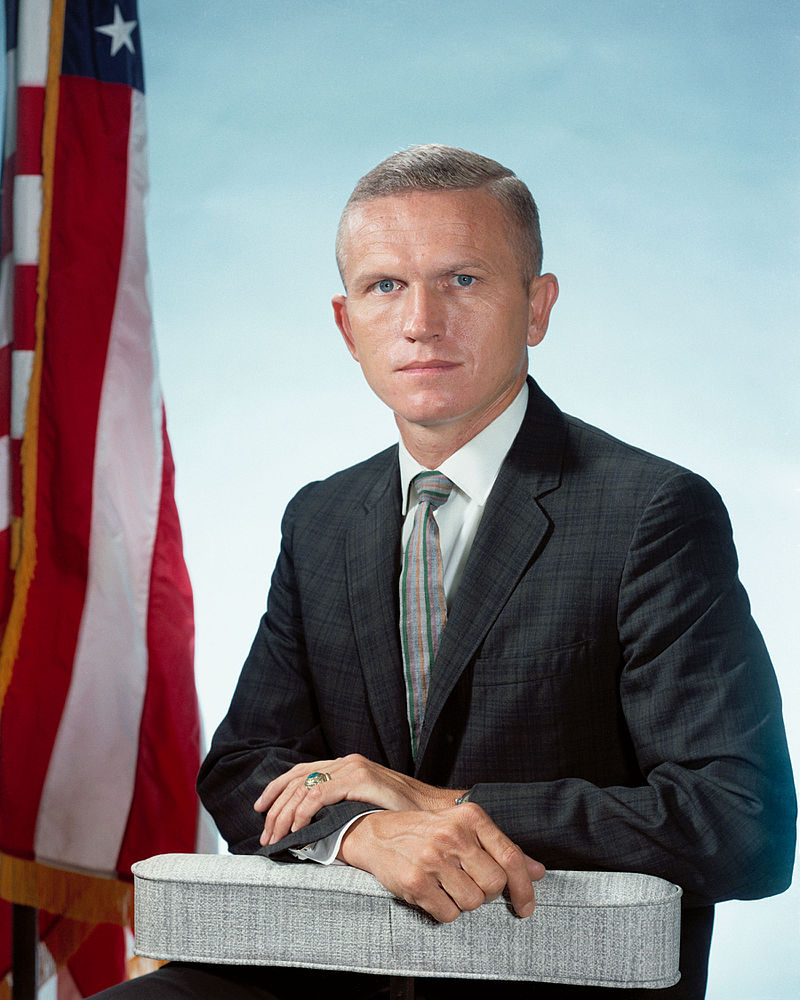
Frank Frederick Borman II

Frank Frederick Borman II
Frank Frederick Borman II (born March 14, 1928) is a retired United States Air Force (USAF) colonel, aeronautical engineer, NASA astronaut, test pilot, and businessman. He was the commander of Apollo 8, the first mission to fly around the Moon, and together with crewmates Jim Lovell and William Anders, became the first of 24 humans to do so, for which he was awarded the Congressional Space Medal of Honor. As of 2023, he is the oldest living former American astronaut, eleven days older than Lovell.
When selected by NASA, Frank Borman was instructor at the Aerospace Research Pilot School at Edwards AFB, California.
Frank Borman is well remembered as a part of history, a pioneer in the exploration of space and a veteran of both the Gemini 7, 1965 Space Orbital Rendezvous with Gemini 6 and the first manned lunar orbital mission, Apollo 8, in 1968.
In 1967 he served as a member of the Apollo 204 Fire Investigation Board, investigating the causes of the fire which killed three astronauts aboard an Apollo spacecraft, reminiscent of the Challenger tragedy. Later he became the Apollo Program Resident Manager, heading the team that re-engineered the Apollo spacecraft. He also served as Field Director of NASA's Space Station Task Force.
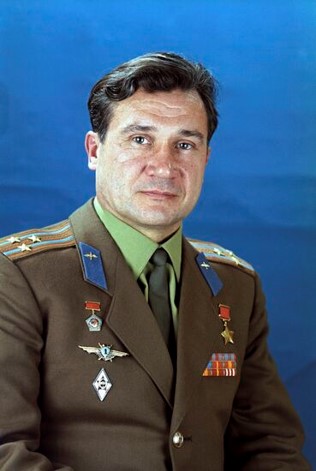
Major General Anatoly Vasilyevich Filipchenko

Major General Anatoly Vasilyevich Filipchenko
Major General Anatoly Vasilyevich Filipchenko (26 February 1928 – 7 August 2022) was a Soviet cosmonaut of Ukrainian descent. He flew on the Soyuz 7 and Soyuz 16 missions. He was born in Davydovka, Voronezh Governorate, RSFSR.
Anatoly Vasilyevich made the first flight from October 12 to 17, 1969 on the Soyuz-7 spacecraft together with Vladislav Volkov and Victor Gorbatko. The flight program included docking with the Soyuz-8 spacecraft, which did not take place due to technical problems. The total duration of the flight was 4 days 22 hours 40 minutes and 23 seconds.
In 1973 Anatoly Vasilyevich was appointed commander of the crew, undergoing training for the joint Soviet-American space flight (EPAS). The second flight took place from December 2 to 8, 1974 on the Soyuz-16 spacecraft together with Nikolai Rukavishnikov. The flight took place in preparation for the EPAS project; during the flight, the development of the ship and the docking station was completed. The total duration of the flight was 5 days 22 hours 23 minutes and 35 seconds. Anatoly Vasilyevich was in the cosmonaut detachment until 1979.
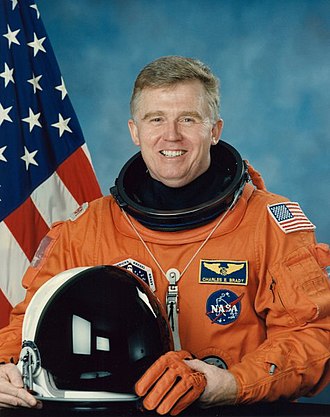
CHARLES E BRADY JR

CHARLES E BRADY JR
CHARLES E BRADY JR (August 12 1951 – July 23 2006) was born in Pinehurst, North Carolina.
NASA EXPERIENCE: Brady was selected by NASA in March 1992, and reported to the Johnson Space Center in August 1992. He was qualified for selection as a mission specialist on future Space Shuttle flight crews. Technical assignments included working issues for the Astronaut Office Mission Development Branch; flight software testing in the Shuttle Avionics Integration Laboratory (SAIL); astronaut representative to the Human Research Policy and Procedures Committee; deputy chief for Space Shuttle astronaut training; and chief for Space Station astronaut training in the Mission Operations Division. He flew on STS-78 in 1996 and logged over 405 hours in space.
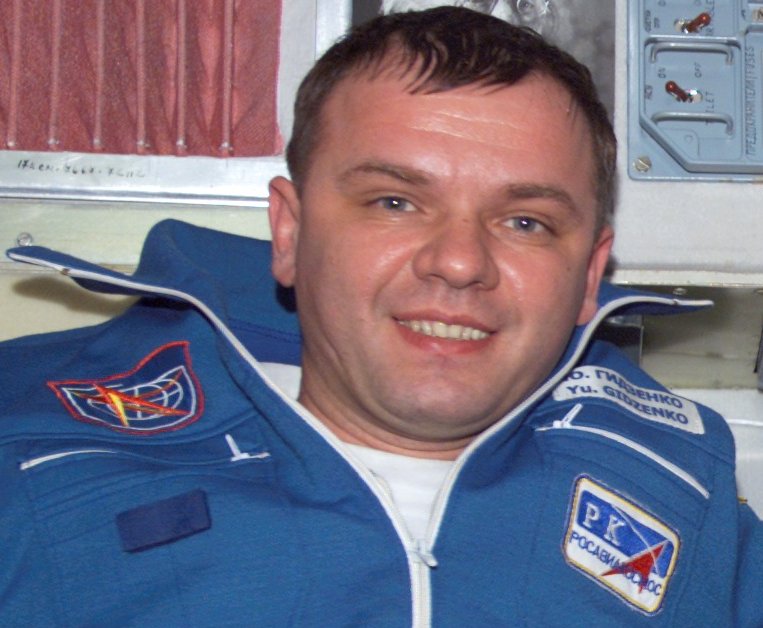
Yuri Pavlovich Gidzenko

Yuri Pavlovich Gidzenko
Yuri Pavlovich Gidzenko was born on March 26, 1962, Elanets, Mykolaiv Oblast, Ukraine, is a Russian cosmonaut. He has flown into space three times and has lived on board the Mir and the International Space Station. He has also conducted two career spacewalks.
Yuri Gidzenko served aboard Mir as the commander of the long duration Mir EO-20 (Euromir 95) expedition from September 3, 1995, to February 29, 1996, and logged 179 days in space. On February 29, 1996, Gidzenko returned to Earth on board the Soyuz TM-22 capsule which landed at 10:42 UTC, 105 km northeast of Arkalyk.
From November 2000 to March 2001, Gidzenko was part of the first permanent ISS resident crew, the Expedition 1. The crew were on board the ISS for over four months. Expedition 1 crew hosted three visiting Shuttle crews, STS-97, STS-98 and STS-102. The crew unloaded two unmanned Russian Progress resupply vehicles.
On March 2001, Expedition 1 crewmembers returned to Earth aboard the Space Shuttle Discovery at the completion of the STS-102. Discovery landed at the Kennedy Space Center's Runway 15, on March 21 at 02:33:06 EST. On board Soyuz/shuttle and ISS, Gidzenko logged 140 days in space.
He was Launched on April 25, 2002, on the Soyuz TM-34 (Soyuz 4 Taxi Crew) mission along with ESA astronaut Roberto Vittori and South African Space Tourist Mark Shuttleworth. The Soyuz TM-34 lifted off from the Baikonour cosmodrome at 06:26:35 UTC. Soyuz TM-33 undocked from the Pirs Docking Compartment and landed 26 km south east of Arkalyk at 03:51:53 UTC. On board Soyuz TM-33/TM-34 and the ISS, Gidzenko logged 9 days in space.
Gidzenko has performed two career spacewalks during his stay on board the Mir space station.
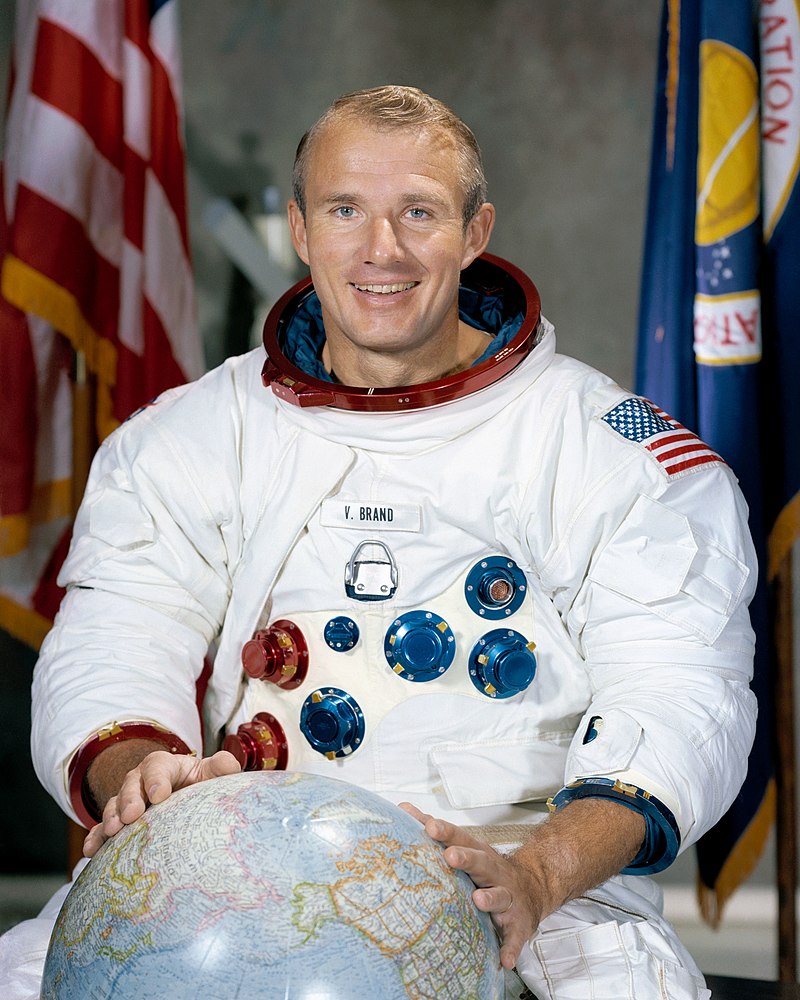
VANCE DEVOE BRAND

VANCE DEVOE BRAND
VANCE DEVOE BRAND was born in Longmont, Colorado, May 9, 1931.
As an astronaut he held management positions relating to spacecraft development, acquisition, flight safety and mission operations. Brand flew on four space missions; Apollo-Soyuz, STS-5, STS 41-B, and STS-35. He has logged 746 hours in space and has commanded three Shuttle missions. Mr. Brand departed the Astronaut Office in 1992 to become Chief of Plans at the National Aerospace Plane (NASP) Joint Program Office at Wright-Patterson Air Force Base, Dayton, Ohio. Mr. Brand retired from NASA in January 2008.
53
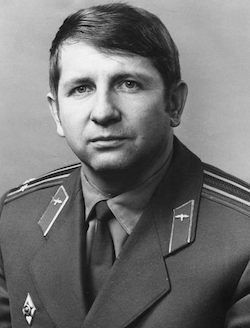
Yury Nikolayevich Glazkov

Yury Nikolayevich Glazkov
Yury Nikolayevich Glazkov (2 October 1939 – 9 December 2008) was born in Moscow, in the USSR was a Soviet Air Force officer and a cosmonaut.
He served as a flight engineer in the Soviet Air Force before being selected as a cosmonaut on 23 October 1965. He flew as a Flight Engineer on the Soyuz 24 mission. He retired from the cosmonaut corps on 26 January 1982. After Soyuz 24, he was made a Hero of the Soviet Union.
He was awarded a doctorate in technical sciences in 1974, and in 1989 he became the first Deputy Chief of Gagarin Cosmonaut Training Center, a position from which he retired in May 2000.
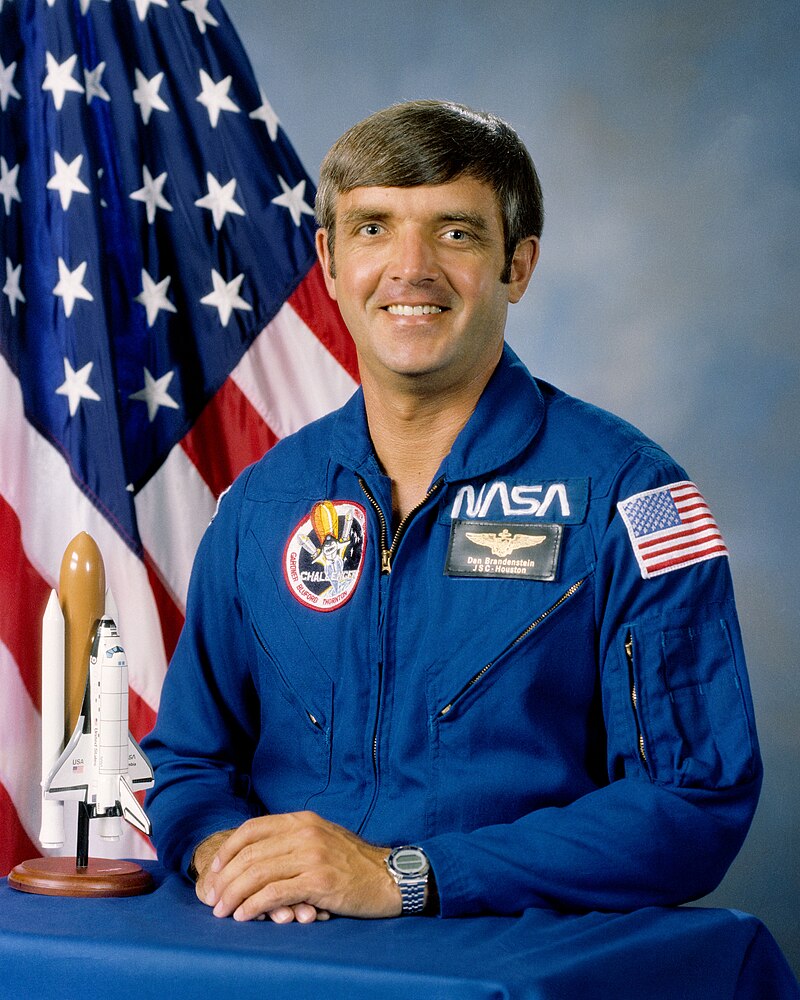
DANIEL C. BRANDENSTEIN

DANIEL C. BRANDENSTEIN
DANIEL C. BRANDENSTEIN was born on January 17, 1943, in Watertown, Wisconsin.
He joined NASA in January 1978, and became an astronaut in August 1979. He was ascent spacecraft communicator (CAPCOM) and a member of the astronaut support crew for STS-1 (the first flight of the Space Shuttle). He was subsequently assigned to the STS-2 astronaut support crew and was the ascent CAPCOM for the second Space Shuttle flight. A veteran of four space flights -- STS-8 (August 30-September 3, 1983), STS-51G (June 17-24, 1985), STS-32 (January 9-20, 1990), and STS-49 (May 7-16, 1992) -- Brandenstein has logged over 789 hours in space. Following his second space flight, Brandenstein served as the Deputy Director of Flight Crew Operations. From April 1987 through September 1992 Brandenstein served as Chief of the Astronaut Office. In October 1992 Brandenstein retired from NASA and the U.S. Navy.
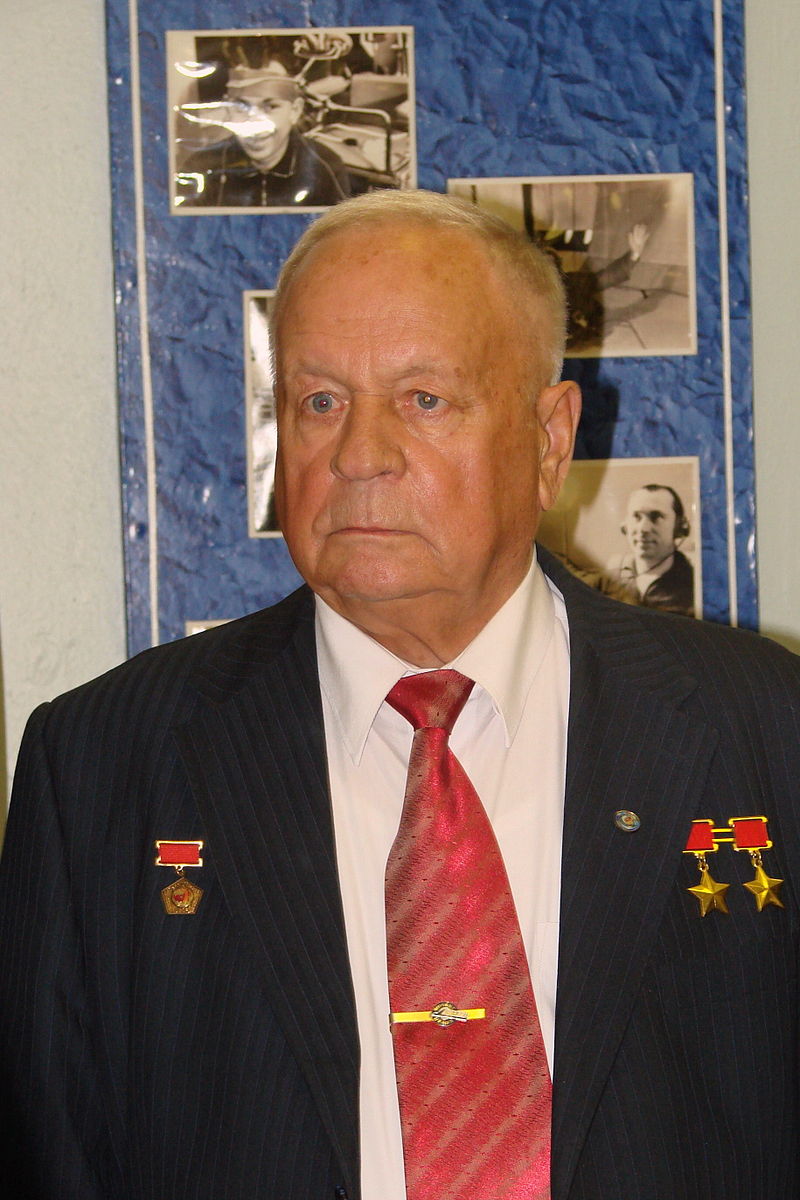
Viktor Vasilyevich Gorbatko

Viktor Vasilyevich Gorbatko
Viktor Vasilyevich Gorbatko (3 December 1934 – 17 May 2017 Viktor was raised in the Northern Caucasus settlement of Ventsy-Zarya in the Gulkevich district, was a Soviet cosmonaut who flew on the Soyuz 7, Soyuz 24, and Soyuz 37 missions.
Viktor's interest in becoming a pilot was sparked during the conflict between the Soviets and the Nazis. His siblings often told him stories of brave pilots and their adventures and he too followed in their footsteps. Upon joining the Soviet Army in 1952, Viktor requested to be assigned to flight school.[3] Following his enlisting, Viktor was sent to the 8th Military Aviation School of Pilot Basic Training in the Ukrainian town of Pavlograd, Dnepropetrovsk Region where he was taught to fly. Viktor graduated on 23 June 1956 as a lieutenant in the Soviet air force.
Gorbatko was among the first group of Soviet cosmonauts. His first spaceflight was Soyuz 7 from 12 to 17 October 1969 where he was Research Engineer. This mission tested Soviet lunar equipment but a failed docking with Soyuz 8 was the last in-space test before that program was abandoned. Gorbatko was the commander of the 18-day Soyuz 24 mission in February 1977 to the Salyut 5 space station. In 1980, Gorbatko commanded Soyuz 37 which flew to Salyut 6 and landed in the Soyuz 36 capsule that had earlier docked at the space station. Gorbatko spent 7 days and 20 hours in space on this mission.
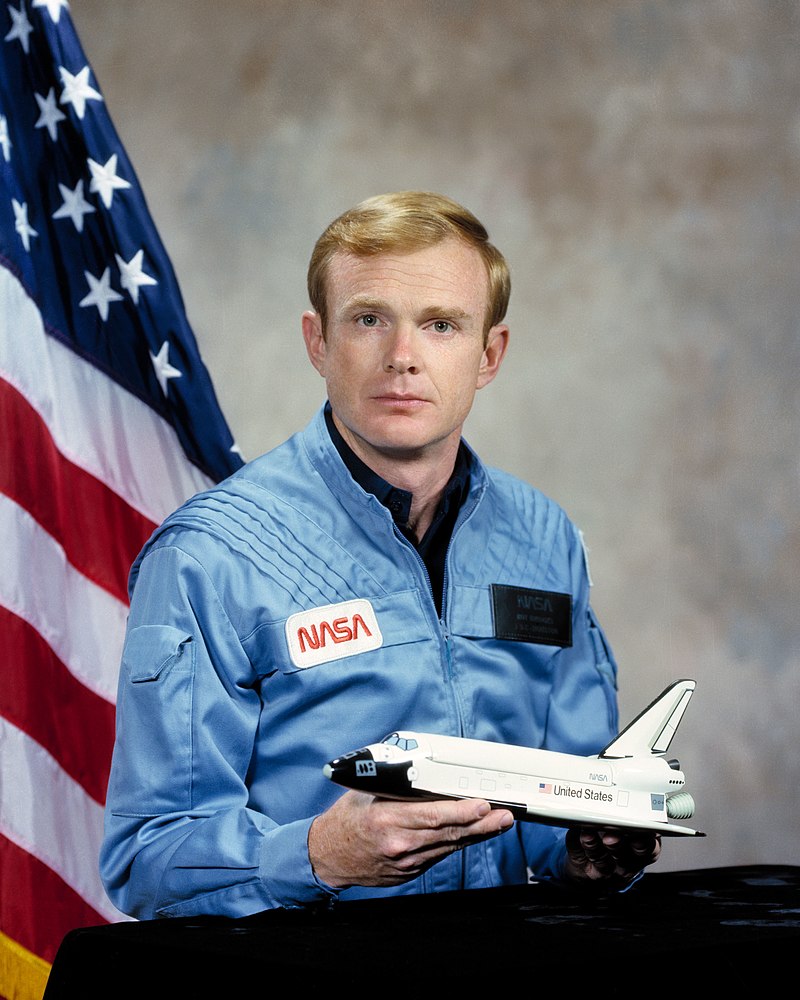
Roy Dubard Bridges Jr.

Roy Dubard Bridges Jr.
Roy Dubard Bridges Jr. Born July 19, 1943, in Atlanta, Bridges grew up in Gainesville, Georgia, is an American pilot, engineer, retired United States Air Force officer, test pilot, former NASA astronaut and the former director of NASA's John F. Kennedy Space Center and Langley Research Center.
Bridges served as a NASA astronaut, piloting the Space Shuttle Challenger on mission STS-51-F (July 29 to August 6, 1985).
Bridges became the Director of NASA's Langley Research Center in 2003, after serving as Director of the John F. Kennedy Space Center (KSC). He retired from Langley and from NASA at the end of 2005. As the senior management official of the laboratory employing approximately 2,100 NASA civil service and 1,800 contractor personnel, Bridges was responsible for the center's aeronautical and space research programs, as well as facilities, personnel, and administration. In that capacity, he was responsible for managing facilities and activities related to the processing and launch of the Space Shuttle, processing and integration of Shuttle payloads and those aboard Expendable Launch Vehicles (ELVs), as well as final tests and preparation of elements delivered to the International Space Station via Shuttle.
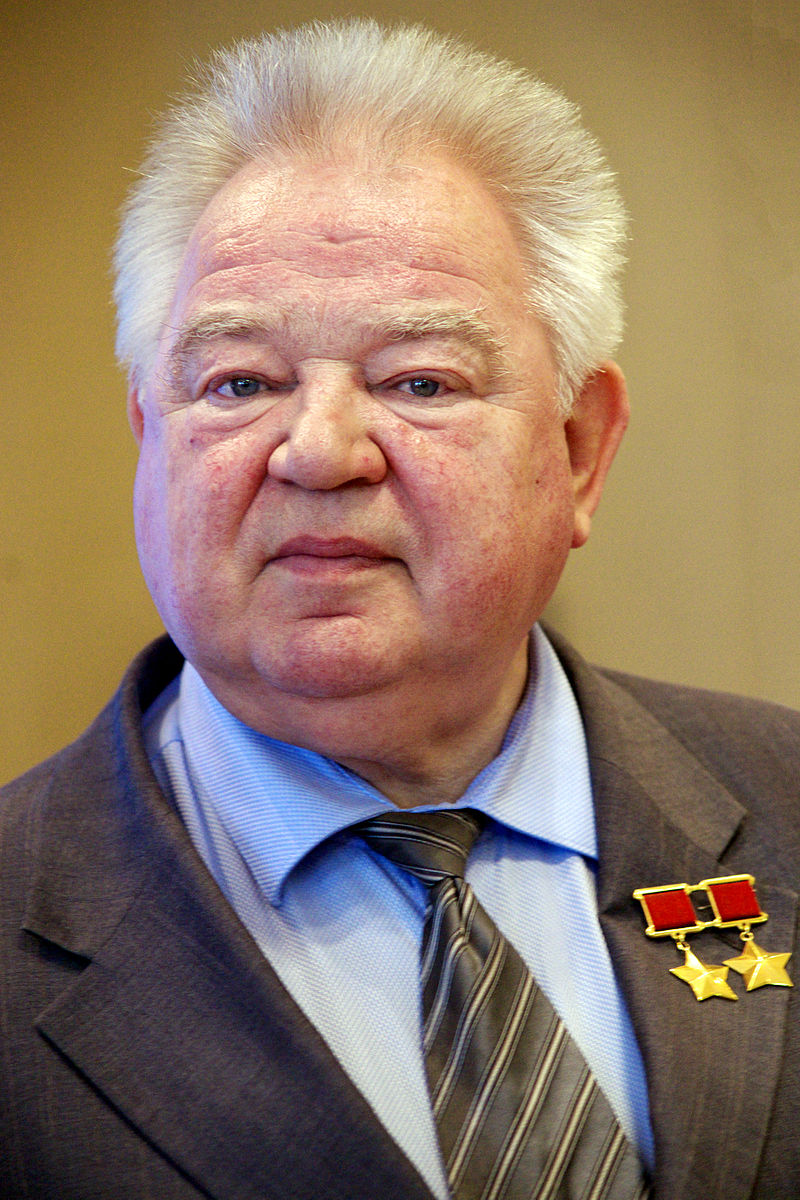
Georgy Mikhaylovich Grechko

Georgy Mikhaylovich Grechko
Georgy Mikhaylovich Grechko (25 May 1931 – 8 April 2017) was a Soviet cosmonaut. He flew to space on three missions, each bound for rendezvous with a different Salyut space station. Soyuz 17 was the first crewed vehicle to visit Salyut 4, Soyuz 26 was the first crewed vehicle to visit Salyut 6, and Soyuz T-14 visited Salyut 7.
The Soyuz 17 rocket launched on 26 December 1974 and successfully docked with the Salyut 4 Space Station on 12 January 1975. This successful docking marked only the second complete success in five Soyuz-Salyut undertakings. Grechko spent a total of 30 days in orbit, which set the Soviet record at the time, before returning safely on 9 February 1975.
In December 1977, Georgy Grechko returned to space with Yuri Romanenko during the Soyuz 26-Salyut 6 mission. The crew boarded the Soviet Salyut 6 Space Station, where they would stay long enough to eclipse the 84-day record set in 1974 by US Skylab astronauts Gerald Carr, William Pogue, and Edward Gibson. In January 1978, Grechko and Romanenko were joined by fellow cosmonauts Vladimir Dzhanibekov and Oleg Makarov, who linked their Soyuz 27 craft with the Salyut 6 Space Station and spent five days aboard the station along with Grechko and Romanenko, before returning to earth in Soyuz 26 craft. This event marked the first double docking and first double crew occupancy of a space station. On March 15, after spending a record-setting total of 96 days in orbit, Grechko finally left the Salyut 6 Space Station and returned to earth aboard the Soyuz 27 spacecraft.
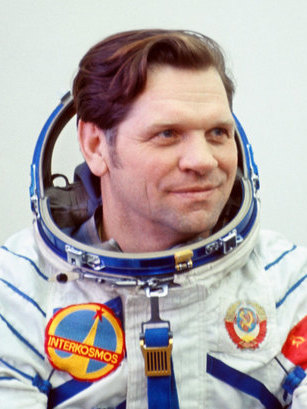
Aleksei Aleksandrovich Gubarev

Aleksei Aleksandrovich Gubarev
Aleksei Aleksandrovich Gubarev (29 March 1931 – 21 February 2015) was a Soviet cosmonaut who flew on two space flights: Soyuz 17 and Soyuz 28.
He was originally trained for the Soviet lunar programme and for military Soyuz flights before training for Salyut missions.
Soyuz 17 lifted off on 10 January 1975 and docked with the space station Salyut 4 on January 12, 1975.
Salyut 4 (DOS 4) was a Salyut space station launched on December 26, 1974 into an orbit with an apogee of 355 km, a perigee of 343 km and an orbital inclination of 51.6 degrees. His second mission, in 1978, was Soyuz 28, the first Interkosmos flight, where he was accompanied by Vladimír Remek from Czechoslovakia.
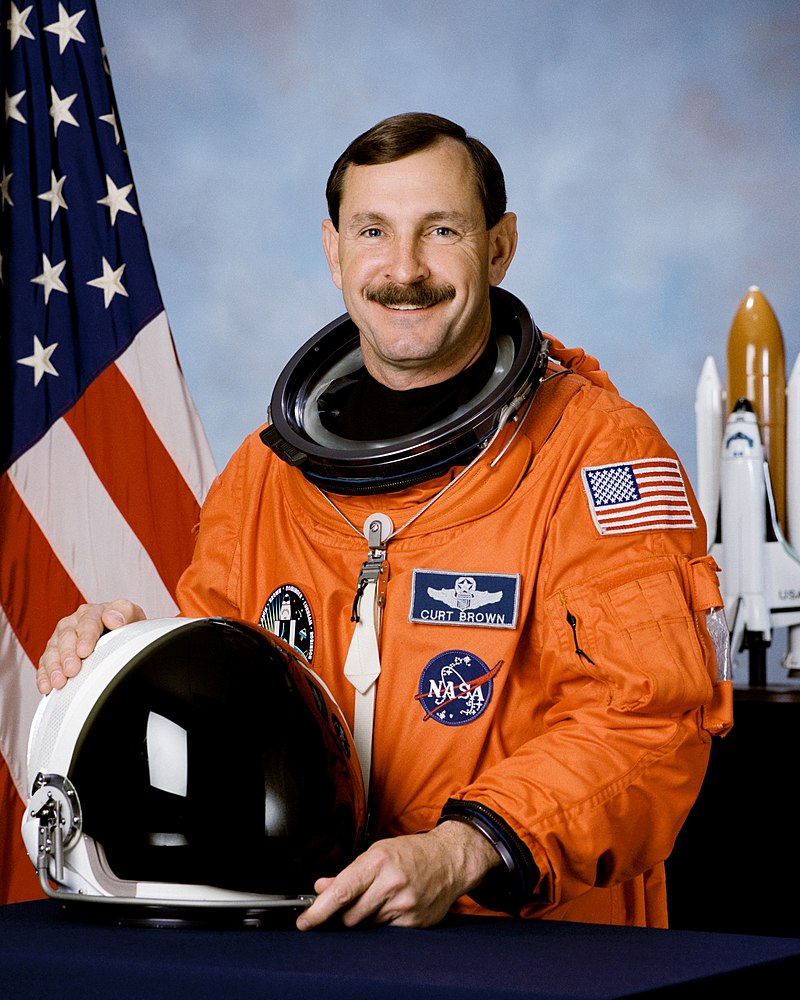
CURTIS L BROWN JR

CURTIS L BROWN JR
CURTIS L BROWN JR was born on March 11, 1956, in Elizabethtown, North Carolina.
He was selected as an astronaut candidate by NASA in June 1987, Brown completed a one-year training and evaluation program in August 1988.
A veteran of six space flights, Brown has logged over 1,383 hours in space. He was the pilot on STS-47 in 1992, STS-66 in 1994 and STS-77 in 1996, and was spacecraft commander on STS-85 in 1997, STS-95 in 1998, and STS-103 in 1999.
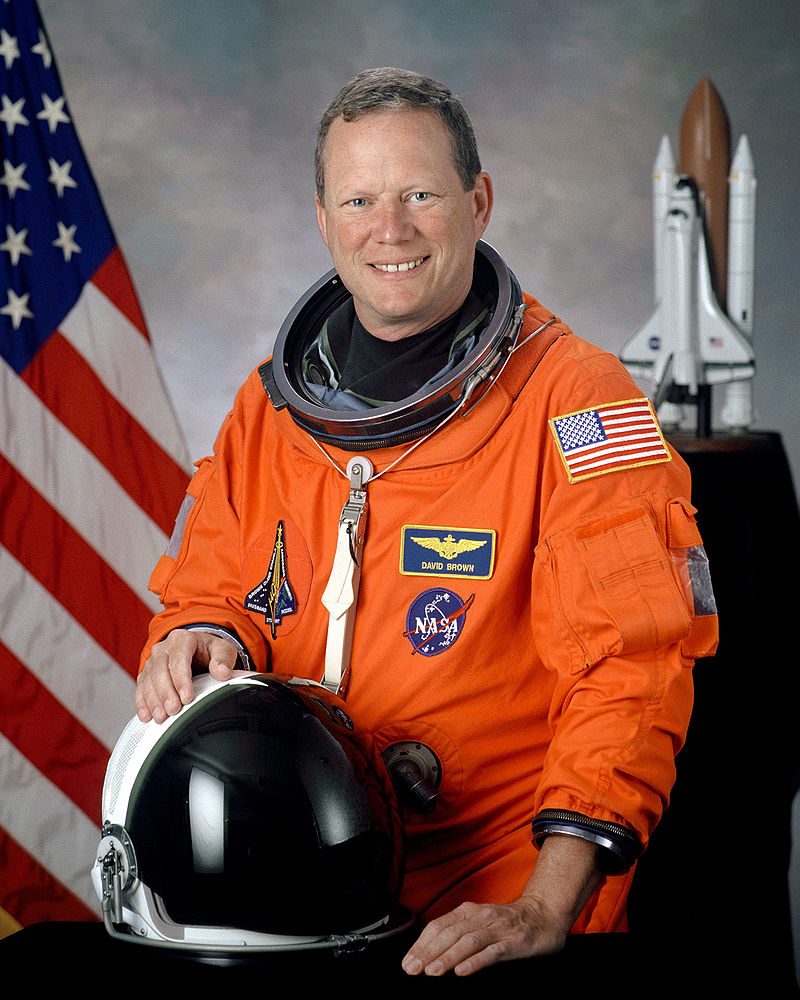
DAVID M BROWN

DAVID M BROWN
DAVID M BROWN (April 16, 1956 - February 1, 2003) born in Arlington, Virginia.
He was a United States Navy captain and NASA astronaut. Selected by NASA in April 1996, Brown reported to the Johnson Space Center in August 1996. He completed two years of training and evaluation, and was qualified for flight assignment as a mission specialist. He was initially assigned to support payload development for the International Space Station, followed by the astronaut support team responsible for orbiter cockpit setup, crew strap-in, and landing recovery. Dave Brown flew aboard STS-107, logging 15 days, 22 hours, and 20 minutes in space.
He died on his first spaceflight, when the Space Shuttle Columbia (STS-107) disintegrated during orbital reentry into the Earth's atmosphere. Brown became an astronaut in 1996 but had not served on a space mission prior to the Columbia disaster.
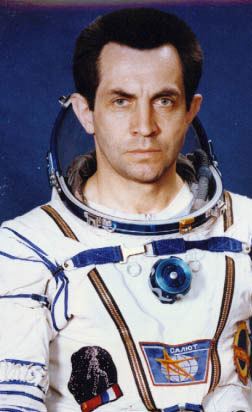
Aleksandr Sergeyevich Ivanchenkov

Aleksandr Sergeyevich Ivanchenkov
Aleksandr Sergeyevich Ivanchenkov (born on 28 September 1940 ) is a retired Soviet cosmonaut who flew as Flight Engineer on Soyuz 29 and Soyuz T-6, he spent 147 days, 12 hours and 37 minutes in space.
Ivanchenkov first flew on Soyuz 29 in 1978 to the Salyut 6 space station. It was the fifth mission, the fourth successful docking, and the second long-duration crew for the orbiting station. Commander Vladimir Kovalyonok and flight engineer Ivanchenkov established a new space-endurance record of 139 days.
Ivanchenkov flew for a second time in 1982 on the Soyuz T-6 mission to the Salyut 7 space station.
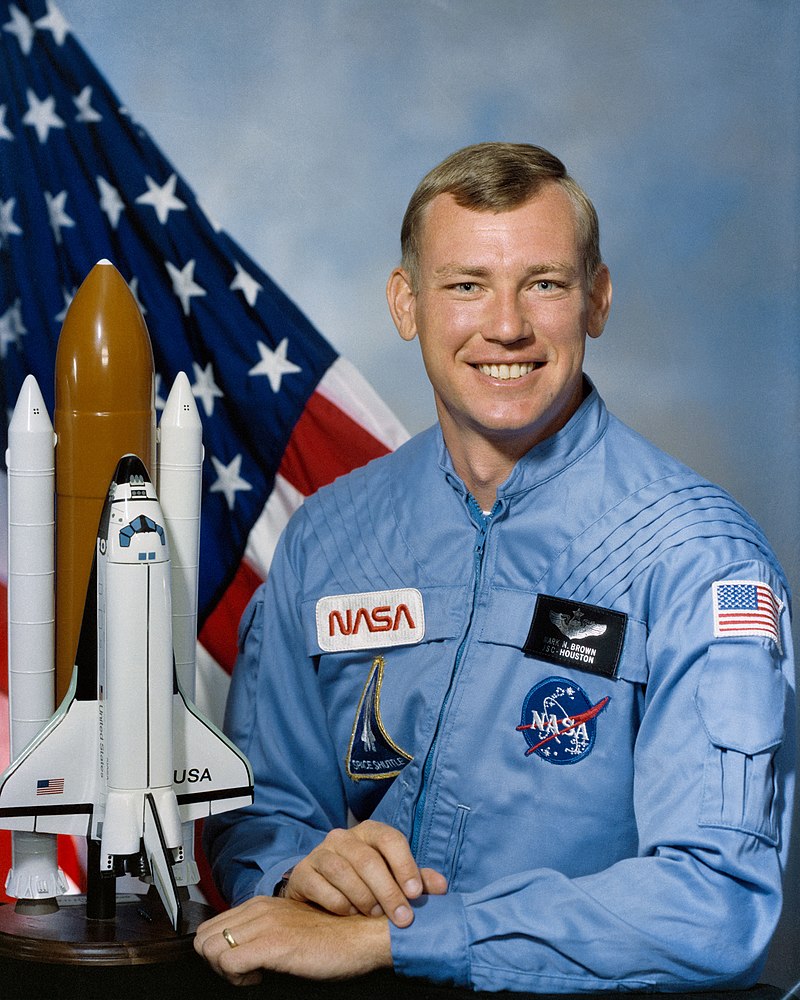
MARK N. BROWN

MARK N. BROWN
MARK N. BROWN was born on November 18, 1951, in Valparaiso, Indiana.
Selected by NASA in May 1984, Brown became an astronaut in June 1985, and qualified for assignment as a mission specialist on future Space Shuttle flight crews. In February 1988 Brown was assigned to a new flight crew. He flew on STS-28 (August 8-13, 1989), following which he served as astronaut member on the Space Station Freedom Program. He next flew on STS-48 (September 12-18, 1991). With the completion of his second mission, Brown has logged over 249 hours in space. The Orbiter Columbia was launched from Kennedy Space Center, Florida, on August 8, 1989. After 80 orbits of the Earth, this five-day mission concluded with a dry lakebed landing on Runway 17 at Edwards Air Force Base, California on August 13, 1989.
Brown next flew on the crew of STS-48 aboard the Orbiter Discovery which was launched from Kennedy Space Center, Florida, on September 12, 1991. This was a five-day mission
The mission was accomplished in 81 orbits of the Earth and concluded with a landing at Edwards Air Force Base, California, on September 18, 1991.
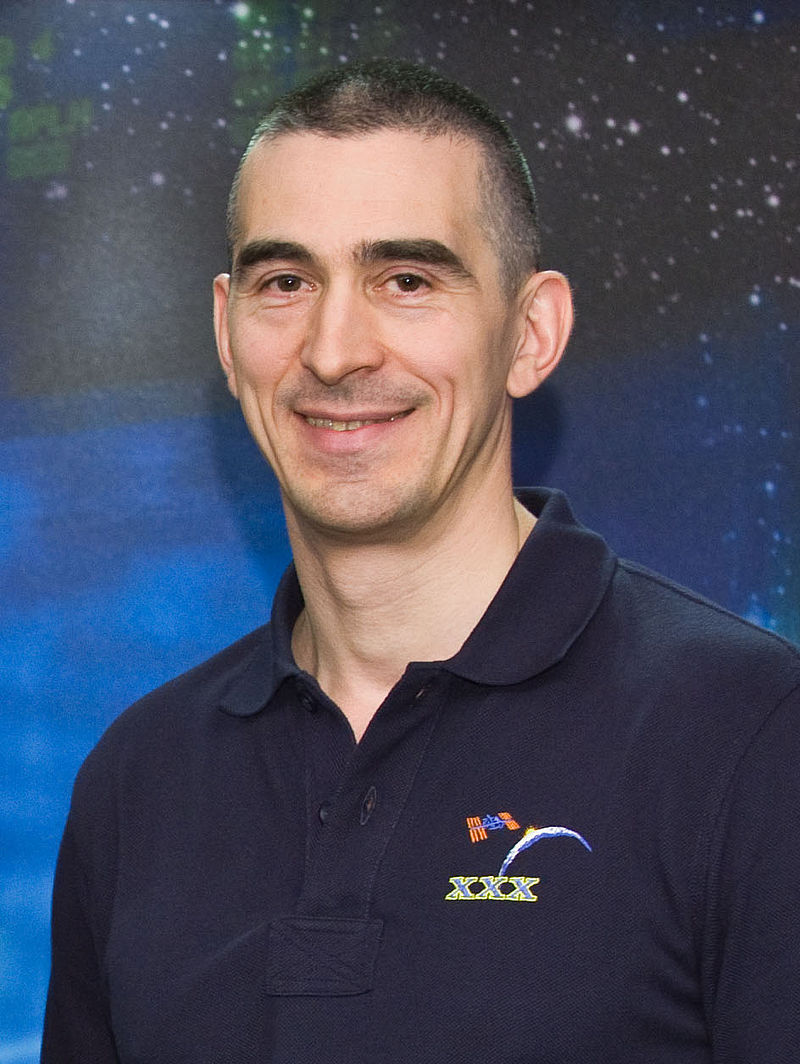
Anatoli Alekseyevich Ivanishin

Anatoli Alekseyevich Ivanishin
Anatoli Alekseyevich Ivanishin, born in Irkutsk in Siberia on 15 January 1969, is a former Russian cosmonaut.
On 29 May 2003, Ivanishin was enlisted as a cosmonaut candidate to go through space training.
His first visit to space was to the International Space Station on board the Soyuz TMA-22 spacecraft as an Expedition 29 / Expedition 30 crew member, launching in November 2011 and returning in April 2012. Ivanishin was the Commander of the International Space Station for Expedition 49. He was also part of Expedition 62/63.
Ivanishin launched aboard Soyuz MS-16, along with Vagner and NASA astronaut Christopher Cassidy, on 9 April 2020 on Expedtition 62/63. The trio successfully arrived in orbit and docked with the ISS six hours later, officially joining the Expedition 62 crew.
The Expedition 63 marked the first crewed test flight of the SpaceX Crew Dragon spacecraft and the first crewed orbital spacecraft to launch from US soil since STS-135, the final flight of the Space Shuttle program, in 2011.
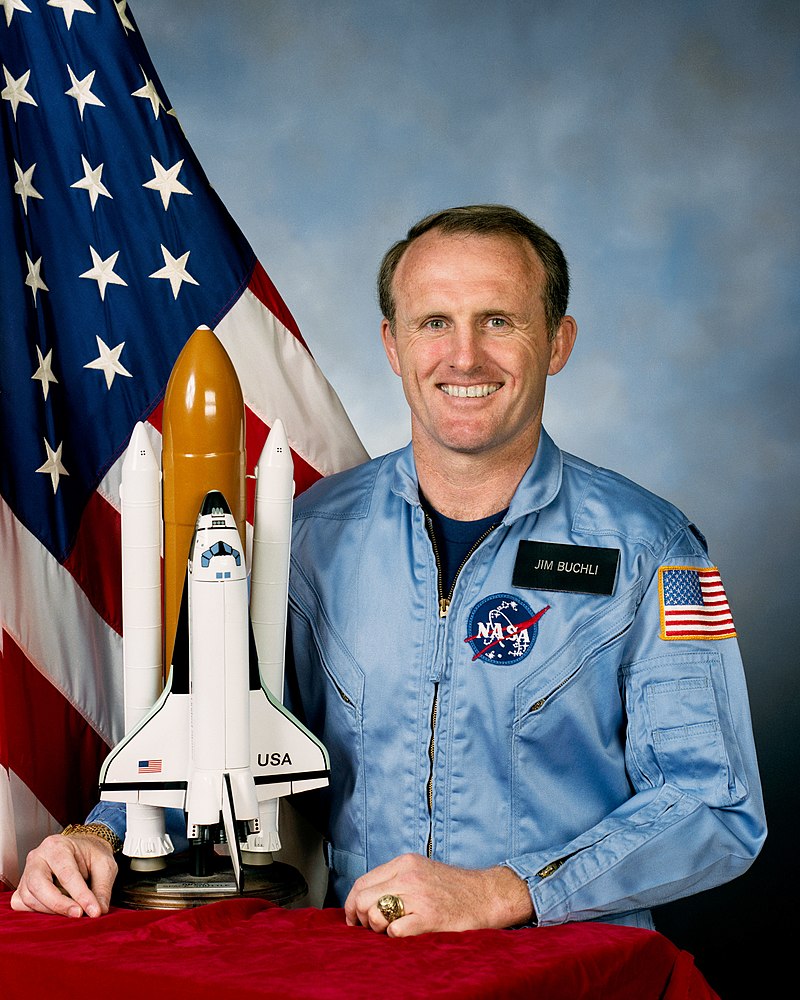
James Frederick Buchli

James Frederick Buchli
James Frederick Buchli, born on June 20, 1945, in New Rockford, North Dakota, is a retired United States Marine aviator and former NASA astronaut who flew on four Space Shuttle missions.
Buchli became a NASA astronaut in August 1979, selected as part of Group 8. He was a member of the support crew for STS-1 and STS-2, and On-Orbit CAPCOM for STS-2. A veteran of four space flights, Buchli has orbited the earth 319 times, traveling 7.74 million miles in 20 days, 10 hours, 25 minutes, 32 seconds. He served as a mission specialist on STS-51-C, STS-61-A, STS-29, and STS-48. From March 1989 till May 1992 he also served as Deputy Chief of the Astronaut Office.
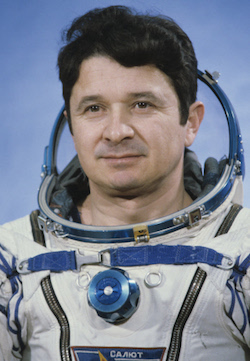
Leonid Denisovich Kizim

Leonid Denisovich Kizim
Leonid Denisovich Kizim (5 August 1941 – 14 June 2010) was born in Krasnyi Lyman, Donetsk Oblast, Soviet Union (now Lyman, Ukraine) was a Soviet cosmonaut.
He was selected as a cosmonaut on October 23, 1965. Kizim flew as Commander on Soyuz T-3, Soyuz T-10 and Soyuz T-15, and also served as backup commander for Soyuz T-2. All together he spent 374 days 17 hours 56 minutes in space. On Soyuz T-15, he was part of the only crew to visit two space stations on one spaceflight (Mir and Salyut 7).
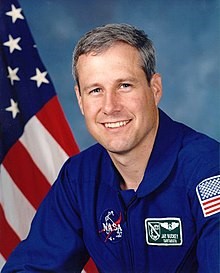
Jay Clark Buckey Jr.

Jay Clark Buckey Jr.
Jay Clark Buckey, Jr. (born June 6, 1956, in New York City) is an American physician and astronaut who flew aboard one Space Shuttle mission (STS-90) as a Payload Specialist.
In 1998 he was a Payload Specialist aboard NASA Space Shuttle flight STS-90 as part of the Neurolab mission from April 17 to May 3, 1998. Aboard the Neurolab Mission, Buckey was the Payload Specialist for the experiment "Cardiovascular Adaptation to Zero-Gravity" and assisted with other Spacelab Life Sciences experiments. During the 16-day Spacelab flight, the seven person crew aboard Space Shuttle Columbia served as both experiment subjects and operators for 26 individual life science experiments focusing on the effects of microgravity on the brain and nervous system. The STS-90 flight orbited the Earth 256 times, covered 6.3 million miles, and logged him over 381 hours in space.
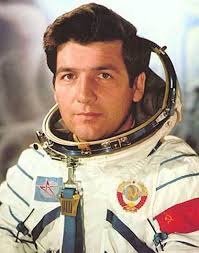
Pyotr Ilyich Klimuk

Pyotr Ilyich Klimuk
68 Pyotr Ilyich Klimuk (10 July 1942) is a former Soviet cosmonaut and the first Belarusian to perform space travel. Klimuk made three flights into space. From 1991 to 2003, he headed the Yuri Gagarin Cosmonaut Training Center.
Klimuk attended the Leninski Komsomol Chernigov High Aviation School and entered the Soviet Air Force in. He was selected to join the space programme in 1964.
His first flight was a long test flight on Soyuz 13 in 1973. This was followed by a mission to the Salyut 4 space station on Soyuz 18 in 1975.
From 1976 he became involved in the Intercosmos and made his third and final spaceflight on an Intercosmos flight with Polish cosmonaut MirosÅÂÂÂaw Hermaszewski on Soyuz 30 in 1978.
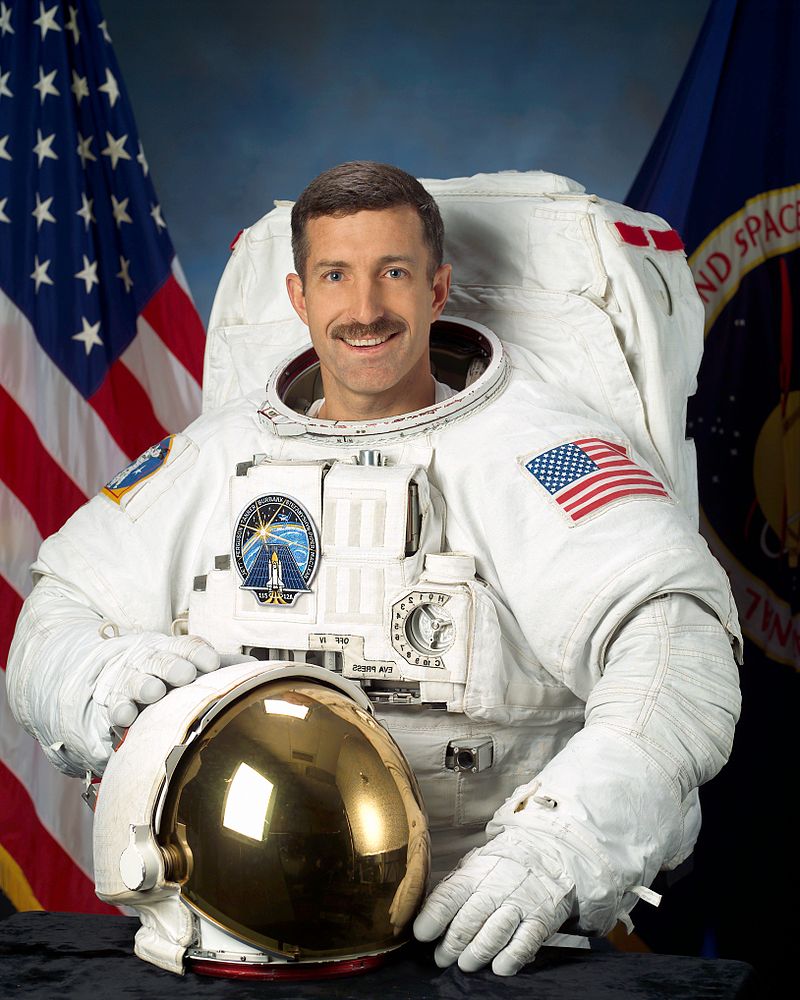
Daniel C. Burbank

Daniel C. Burbank
Daniel C. Burbank was born on July 27, 1961, in Manchester, Connecticut, but considers Yarmouth Port, Massachusetts, to be his home.
Selected by NASA as an astronaut in April 1996. The Connecticut native has served as Mission Specialist on Space Shuttle missions STS-106 and STS-115, Flight Engineer on Expedition 29 and Commander of Expedition 30.
During the 163 days aboard the station for Expedition 29/30, Burbank and his crew conducted science and technology development experiments and completed dozens of repairs and enhancements to the station’s systems. During his career, Burbank logged a total of 188 days in space and 7 hours and 11 minutes of spacewalk time.
His last two years at NASA were spent as the Chief of the Vehicle Integration and Test Office, leading a team of engineers responsible for ISS hardware and visiting spacecraft testing and the development of launch, landing, recovery and rescue operations for the next generation of US human-rated spacecraft, including Orion, Boing's Starliner and he SpaceX Dragon.
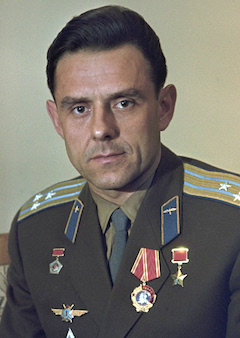
Vladimir Mikhaylovich Komarov

Vladimir Mikhaylovich Komarov
Vladimir Mikhaylovich Komarov (16 March 1927 – 24 April 1967) was a Soviet test pilot, aerospace engineer, and cosmonaut. In October 1964, he commanded Voskhod 1, the first spaceflight to carry more than one crew member. He became the first Soviet cosmonaut to fly in space twice when he was selected as the solo pilot of Soyuz 1, its first crewed test flight. A parachute failure caused his Soyuz capsule to crash into the ground after re-entry on 24 April 1967, making him the first human to die in a space flight.
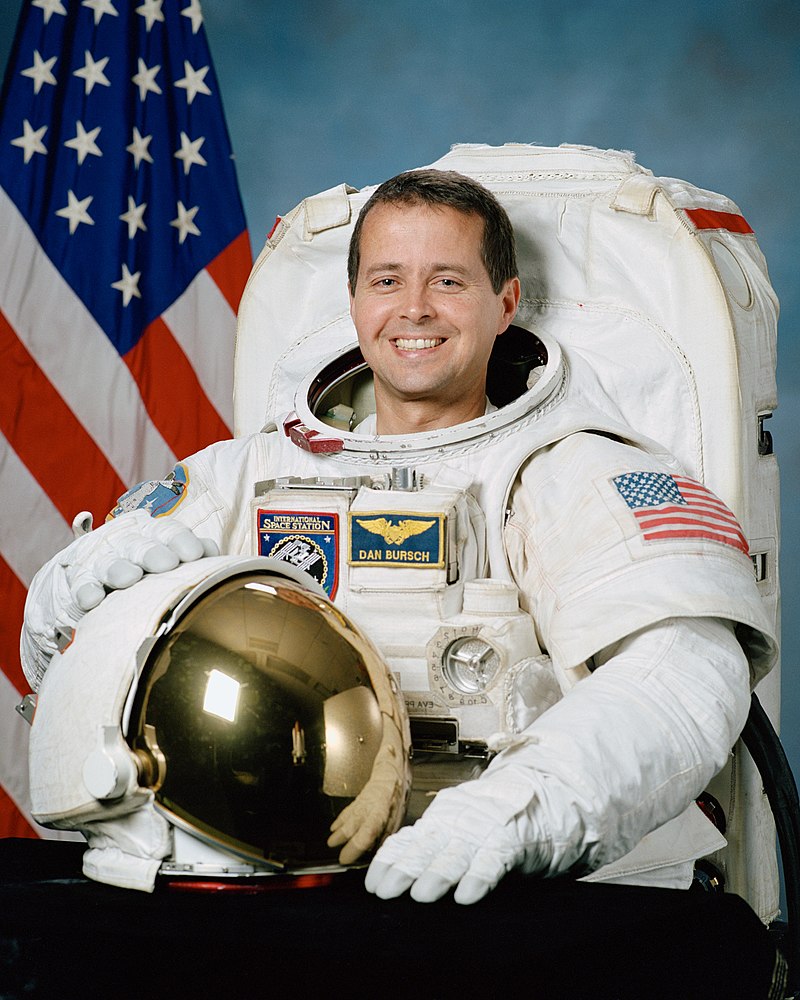
DANIEL W BURSCH

DANIEL W BURSCH
DANIEL W BURSCH born on July 25, 1957, in Bristol, Pennsylvania, but considers Vestal, New York, to be his hometown.
He was selected by NASA in January 1990, Bursch became an astronaut in July 1991. A veteran of four space flights, Bursch has logged over 227 days in space. He was a mission specialist on STS-51 (1993), STS-68 (1994) and STS-77 (1996), and served as flight engineer on ISS Expedition-Four (2001-2002). Dan Bursch and fellow astronaut Carl Walz currently hold the U.S. space flight endurance record of 196 days in space.
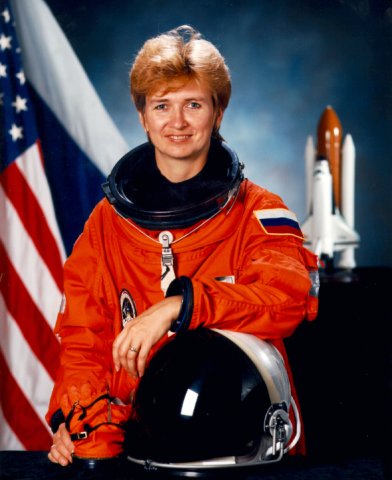
Yelena Vladimirovna Kondakova

Yelena Vladimirovna Kondakova
Yelena Vladimirovna Kondakova was born in Mytishchi in the Moscow Oblast of Russia, but grew up near Kaliningrad, Moscow Oblast. She was born on 30 March 1957, is the third Soviet or Russian female cosmonaut to travel to space and the first woman to make a long-duration spaceflight. Her first trip into space was on Soyuz TM-20 on 4 October 1994. She returned to Earth on 22 March 1995, after a five-month stay at the Mir space station. Kondakova's second flight was as a mission specialist on the United States Space Shuttle Atlantis during mission STS-84 in May 1997. She was the last Russian woman in space until her successor cosmonaut Elena Serova flew to the International Space Station (ISS) on 25 September 2014.
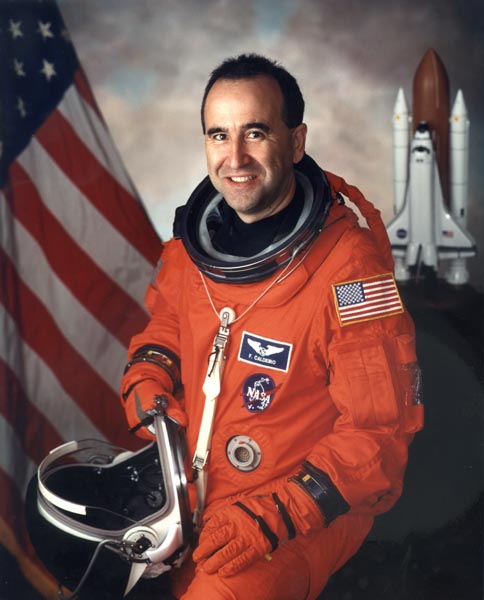
FERNANDO (FRANK) CALDEIRO

FERNANDO (FRANK) CALDEIRO
FERNANDO (FRANK) CALDEIRO (June 12, 1958 - October 3, 2009) was born in Buenos Aires, Argentina, but considered New York City and Merritt Island, Florida, to be his hometown.
He was hired by NASA KSC in 1991 as a cryogenics and propulsion systems expert for the safety and mission assurance office.
Selected by NASA as an astronaut candidate in April 1996, Caldeiro reported to the Johnson Space Center in August 1996. From June 2005 to December 2006 Caldeiro served as the lead astronaut in charge of Shuttle software testing at the Shuttle Avionics Integration Laboratory. In January 2006 Caldeiro was reassigned to the WB-57 High Altitude Research Program at Flight Crew Operations, Aircraft Operations Division (AOD) at Ellington Field where he directed the integration and operation of high altitude atmospheric research experiments carried onboard the NASA WB-57 aircraft.

Dmitri Yuryevich Kondratyev

Dmitri Yuryevich Kondratyev
Dmitri Yuryevich Kondratyev born on 25 May 1969 in Irkutsk, Russia, is a retired cosmonaut. He served as a crew member on the International Space Station long duration mission Expedition 27 as Commander, having also served as a Flight Engineer on Expedition 26 during the same stay in space. Kondratyev traveled to space for the first time aboard the Soyuz TMA-20 spacecraft in December 2010.
Kondratyev was selected as a test-cosmonaut candidate of the Gagarin Cosmonaut Training Center Cosmonaut Office in December 1997.
Kondratyev was assigned to the ISS Expedition 26/27 Prime crew as Soyuz Commander and Expedition 27 Commander. He traveled to the space station on 15 December 2010 aboard the Soyuz TMA-20 spacecraft.
Kondratyev participated in two spacewalks during his stay aboard the space station as an Expedition 26 and 27 Flight Engineer and Commander.[3]
On 16 February 2011, Kondratyev and cosmonaut Skripochka participated in a spacewalk (Russian EVA #28) outside the space station.
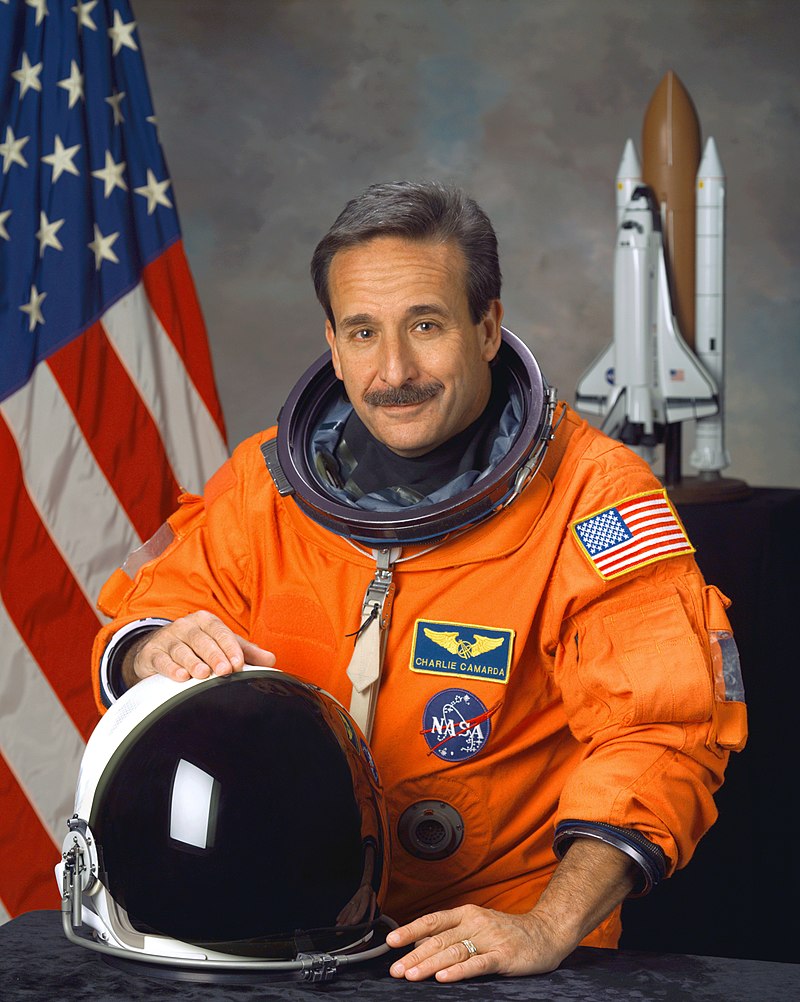
Charles Joseph "Charlie" Camarda

Charles Joseph "Charlie" Camarda
Charles Joseph "Charlie" Camarda (born May 8, 1952, in Queens, New York) is an American engineer and a NASA astronaut who flew his first mission into space on board the Space Shuttle mission STS-114.
Dr. Camarda flew as MS-5 on the Return to Flight mission STS-114 Discovery (July 26-August 9, 2005), and has logged over 333 hours in space.
Following his flight, he was the Director of Engineering at NASA's Johnson Space Center and served as Senior Advisor for Innovation to the Office of Chief Engineer, NASA Headquarters. Camarda retired from NASA in 2019.
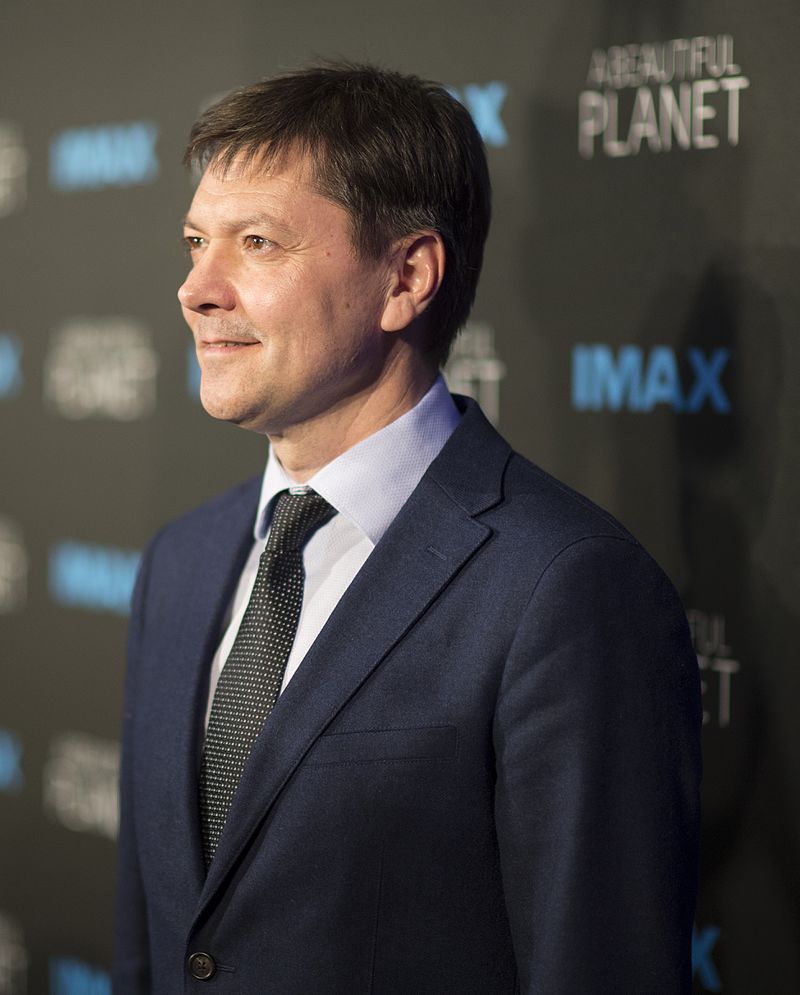
Oleg Dmitriyevich Kononenko

Oleg Dmitriyevich Kononenko
Oleg Dmitriyevich Kononenko (born 21 June 1964) is a Russian cosmonaut. He has flown to the International Space Station four times, as a flight engineer for Expedition 17 aboard Soyuz TMA-12, as a flight engineer on Expedition 30 and commander of Expedition 31 aboard Soyuz TMA-03M, as a flight engineer on Expedition 44 and Expedition 45 aboard Soyuz TMA-17M, and as commander of Expedition 58 and Expedition 59 aboard Soyuz MS-11. Kononenko accumulated over 736 days in orbit during his four long duration flights to ISS, that is, the longest time in space of any currently active cosmonaut or astronaut.
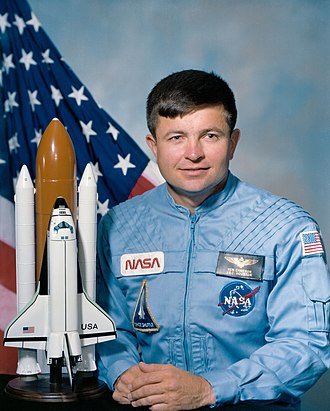
KENNETH D CAMERON

KENNETH D CAMERON
KENNETH D CAMERON was born in Cleveland, Ohio.
Selected by NASA in May 1984, Cameron became an astronaut in June 1985. A veteran of three space flights, Cameron has logged over 561 hours in space. He served as pilot on STS-37 (April 5-11, 1991), and was the spacecraft commander on STS-56 (April 9-17, 1993) and STS-74 (November 12-20, 1995)
Cameron flew his first mission as pilot on STS-37. This mission was launched on April 5, 1991, and featured the deployment of the Gamma Ray Observatory for the purpose of exploring gamma ray sources throughout the universe.
STS-56 was launched on April 8, 1993, and landed at Kennedy Space Center on April 17, 1993. On his third mission, Cameron commanded Atlantis on STS-74, NASA’s second Space Shuttle mission to rendezvous and dock with the Russian Space Station Mir, and the first mission to use the Shuttle to assemble a module and attach it to a Space Station, validating the procedures to be used in assembly of ISS. STS-74 launched on November 12, 1995, and landed at Kennedy Space Center on November 20, 1995.
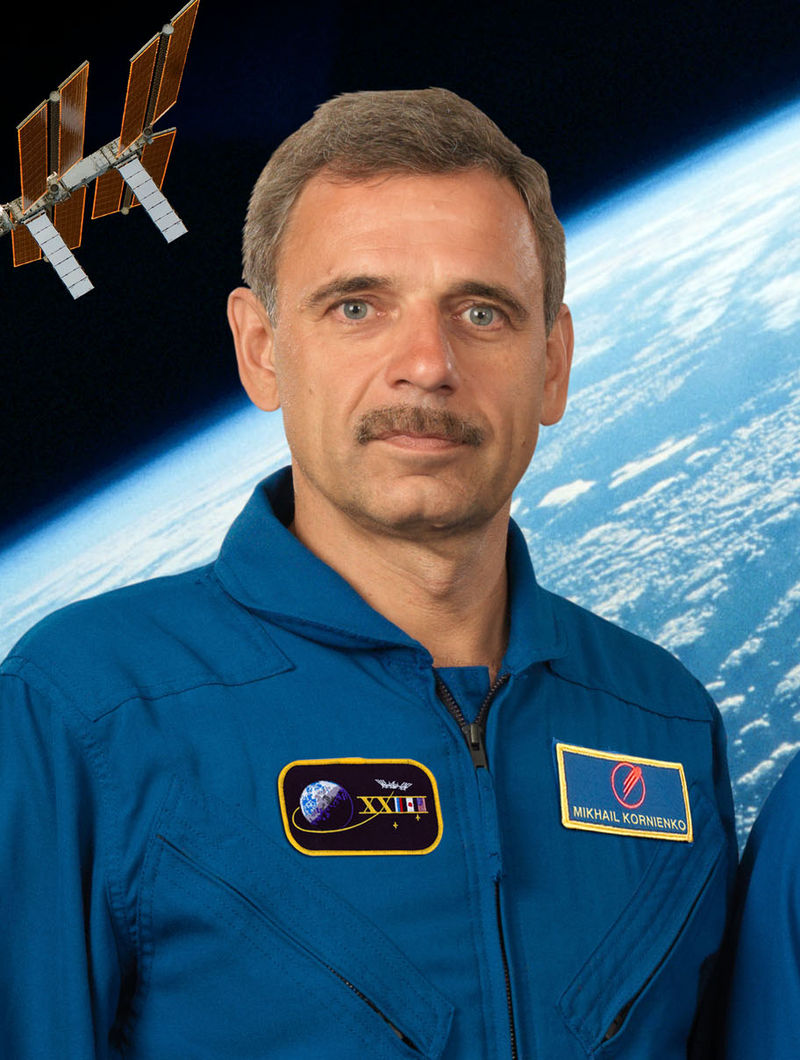
Mikhail Borisovich Kornienko

Mikhail Borisovich Kornienko
Mikhail Borisovich Kornienko (born in Syzran, Kuybyshev Oblast, Russian SFSR on 15 April 1960) is a Russian cosmonaut. Kornienko served as a flight engineer on the International Space Station during Expedition 23/24 and was selected along with Scott Kelly for a year-long mission aboard the ISS. Kornienko began the year long mission in March 2015, blasting off on Soyuz TMA-16M.
Kornienko was aboard the space station as a Flight Engineer, being part of the Expedition 23/24 crew. He lifted off on 2 April 2010, along with fellow Russian cosmonaut Aleksandr Skvortsov and NASA astronaut Tracy Caldwell-Dyson aboard Soyuz TMA-18 from the Baikonur Cosmodrome.
Ending Expedition 24, the Soyuz TMA-18 spacecraft carrying Mikhail Kornienko, Alexander Skvortsov and NASA astronaut Tracy Caldwell-Dyson undocked from the space station at 10:02 pm EDT on 24 September 2010. Following a normal descent, the Soyuz crew landed at 5:23 am GMT ear Arkalyk, Kazakhstan on 25 September.
On 27 July 2010, Kornienko and fellow Russian cosmonaut Fyodor Yurchikhin participated in a spacewalk outside the ISS. The spacewalk lasted six hours and 42 minutes.
In November 2012, NASA, the Russian Federal Space Agency (Roscosmos), and their international partners selected two veteran spacefarers for a one-year mission aboard the International Space Station in 2015. NASA selected Scott Kelly and Roscosmos chose Mikhail Kornienko. Data from the 12-month expedition will help inform current assessments of crew performance and health and will determine better and validate countermeasures to reduce the risks associated with future exploration as NASA plans for missions around the moon, an asteroid and ultimately Mars.
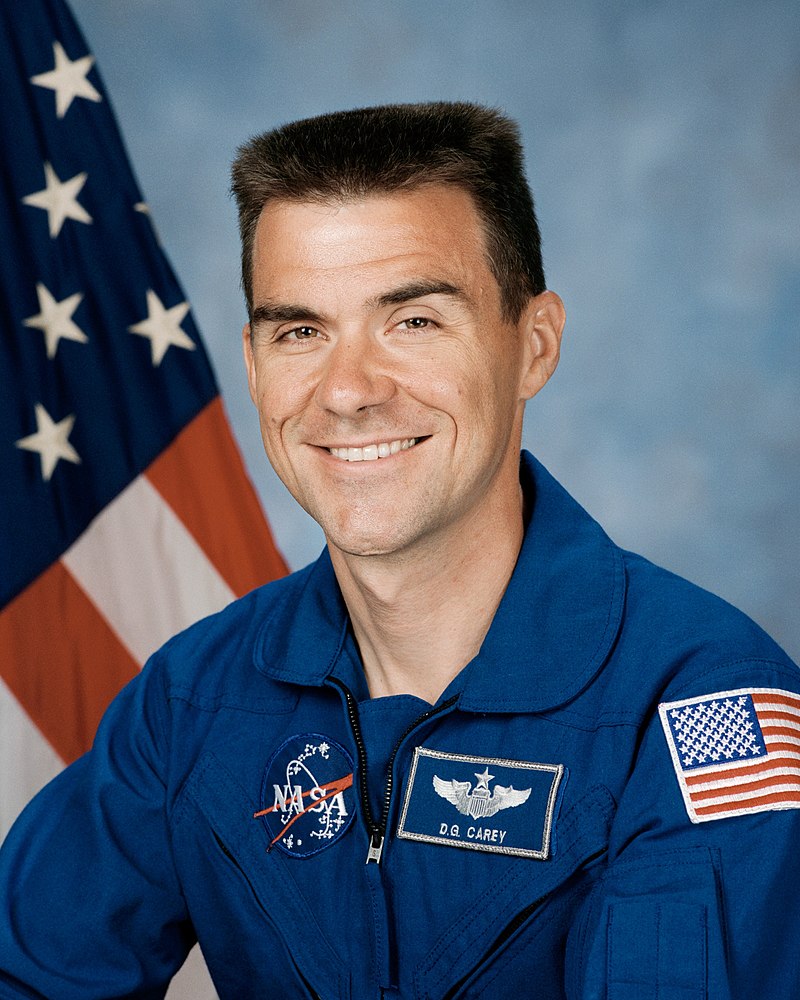
DUANE G CAREY

DUANE G CAREY
DUANE G. “DIGGER” CAREY was born on April 30, 1957 in St. Paul, Minnesota.
Carey was selected as an astronaut candidate by NASA in April 1996 and reported to the NASA Johnson Space Center in August 1996. Having completed two years of training and evaluation, he qualified for flight assignment as a pilot. Carey was initially assigned technical duties in the Astronaut Office Spacecraft Systems/Operations Branch and later on served as a Shuttle CAPCOM in Mission Control. In 2002 he served as pilot on STS-109. In completing his first space flight, Carey logged over 10 days in space.
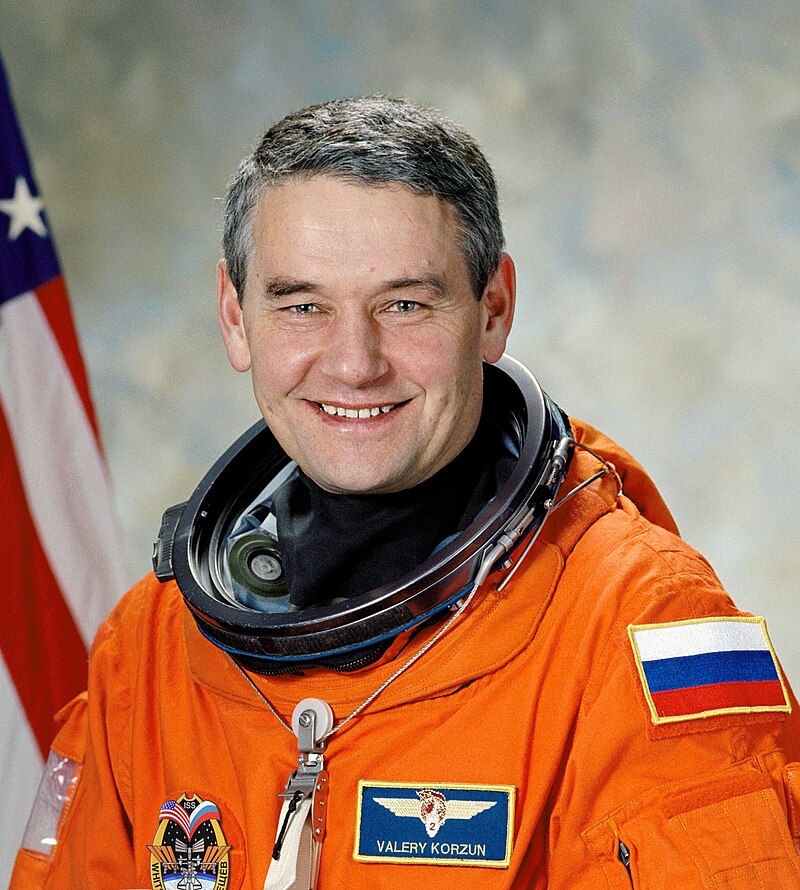
Valery Grigoryevich Korzun

Valery Grigoryevich Korzun
Valery Grigoryevich Korzun (born on 5 March 1953) is a former Russian cosmonaut. He has been in space twice totalling 381 days. He has also conducted four career spacewalks.
Korzun made his first trip to space on board the Soyuz TM-24 on Soyuz spacecraft which lifted off from the Baikonur Cosmodrome at 13:18:03 UTC. After two days of solo flight, the Soyuz docked with the Mir station on 19 August at 14:50:23 UTC. Korzun and Kaleri became the 22nd resident crew, first together with NASA astronaut Shannon Lucid, later with astronauts John Blaha and Jerry Linenger. On 2 March 1997 Soyuz TM-24 carrying Korzun, Kaleri and ESA astronaut Reinhold Ewald returned to Earth. Korzun spent 196 days, 17 hours and 26 minutes on board Soyuz TM-24 and Mir.
The Expedition 5 crew was launched on 5 June 2002 aboard STS-111. Space Shuttle Endeavour lifted off from the Kennedy Space Center LC-39A at 21:22:49 UTC. After two days Endeavour docked with the International Space Station (ISS) on 7 June 2002 at 16:25 UTC.
The Expedition 5 crew returned to Earth on December 7, 2002, aboard Space shuttle Endeavour's STS-113 mission. The shuttle touched down at KSC Runway 33 at 19:38:25 UTC. Completing his second long duration spaceflight, Korzun logged 184 days and 22 hours in space.
Korzun has performed four career spacewalks. During the Mir EO-22 mission he performed 2 spacewalks totaling 12 hours and 33 minutes.[3] During ISS Expedition 5, he again performed two spacewalks totalling 9 hours and 46 minutes.
On 2 December 1996 Korzun performed his first career spacewalk with cosmonaut Aleksandr Kaleri , lasting 5 hours and 57 minutes. During the spacewalk, Korzun performed his second career spacewalk on 9 December 1996 lasting 6 hours and 38 minutes.
On 16 August 2002 Korzun performed his third career spacewalk together with NASA astronaut Peggy Whitson The spacewalk lasted 4 hours and 25 minutes.
Korzun performed his fourth career spacewalk on 26 August 2002 Wearing Russian Orlan spacesuits. The spacewalk was staged from the Pirs docking compartment airlock and lasted 5 hours and 21 minutes.
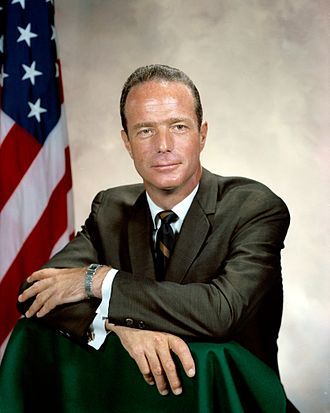
Scott Carpenter

Scott Carpenter
Scott Carpenter was born in Boulder, Colorado, on May 1, 1925.
Scott Carpenter, a dynamic pioneer of modern exploration, has the unique distinction of being the first human ever to penetrate both inner and outer space, thereby acquiring the dual title, Astronaut/Aquanaut.
Carpenter was selected as one of the original seven Mercury Astronauts on April 9, 1959 by NASA, specializing in communication and navigation. Carpenter flew the second American manned orbital flight on May 24, 1962. He piloted his Aurora 7 spacecraft through three revolutions of the earth, reaching a maximum altitude of 164 miles. The spacecraft landed in the Atlantic Ocean about 1000 miles southeast of Cape Canaveral after 4 hours and 54 minutes of flight time.
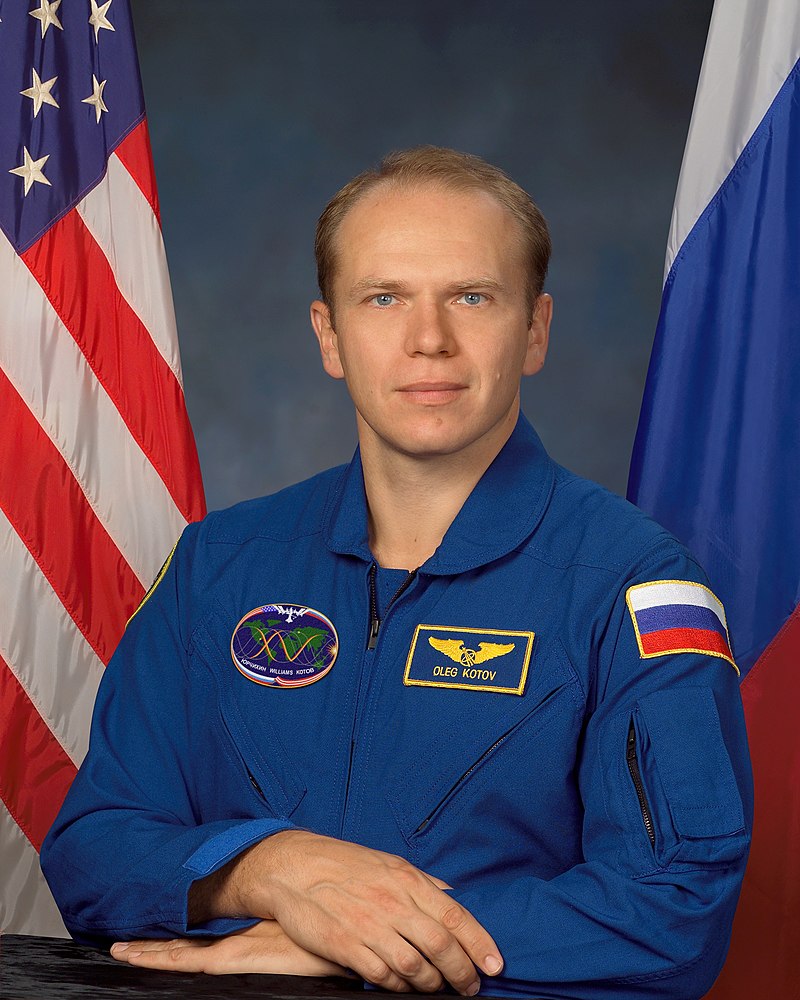
Oleg Valeriyevich Kotov

Oleg Valeriyevich Kotov
Oleg Valeriyevich Kotov was born on 27 October 1965 in Simferopol, Crimean oblast in the Ukrainian SSR. He has flown three long duration spaceflights on the International Space Station logging over 526 days in space. Kotov flew on the Soyuz TMA-10M/Expedition 37/Expedition 38 long duration spaceflight, from September 2013 until March 2014.
He was a member (Flight Engineer) of the ISS Expedition 15, that launched on 7 April 2007 from Baikonur Cosmodrome, aboard Soyuz TMA-10 spacecraft.
On October 21, Kotov returned to Earth inside the Soyuz TMA-10 capsule after spending 196 days and 17 hours in space.
Kotov commanded Soyuz TMA-17 and was assigned to Expedition 22 as a Flight Engineer and Expedition 23 as the Commander aboard the International Space Station. Kotov returned to Earth on 2 June 2010 aboard the Soyuz TMA-17 spacecraft.
Kotov launched on Soyuz TMA-10M on 25 September 2013, with Russian cosmonaut Sergey Ryazansky and American astronaut Michael Hopkins joined Expedition 37 as a Flight Engineer.
Kotov and cosmonaut Ryazansky made history after they took an Olympic torch for a spacewalk for the first time ever on 9 November 2013. Kotov returned to Earth on 11 March 2014 after staying at the ISS for 166 days.
On 30 May 2007 at 19:05 GMT, Kotov began his first spacewalk, lasting 5 hours and 25 minutes, during which they installed protective panels to shield the ISS from space debris.
On 6 June 2007 Kotov performed his second spacewalk from the Pirs docking compartment airlock and returned to the ISS at 4:00 p.m. EDT to wound up the 5 hours, 37 minutes spacewalk.
On 14 January 2010 Kotov again ventured outside the ISS to begin his third spacewalk. The spacewalk lasted 5 hours and 44 minutes.[8]
On 9 November 2013, Kotov performed his fourth spacewalk outside the ISS with Sergey Ryazansky. They took the Olympic torch for the 2014 Winter Olympic Games outside ISS. They also continued work on an extravehicular activity workstation and biaxial pointing platform by removing launch brackets and bolts, as well as retrieving an experimental package. The planned installation of a foot restraint on the mounting seat of the workstation was deferred to a future spacewalk after the spacewalkers noticed some issues with its alignment. The spacewalk lasted 5 hours 50 minutes.
On 27 December 2013, Kotov and Ryazansky were outside of the ISS to perform a spacewalk. The spacewalk lasted 8 hours and 7 minutes and extended the record for the longest Russian spacewalk set by Expedition 36. On 27 January 2014, Kotov did perform his sixth spacewalk outside the ISS with cosmonaut Ryazansky. The spacewalk marked the fourth EVA conducted during the Expedition 38 and lasted six hours and eight minutes.
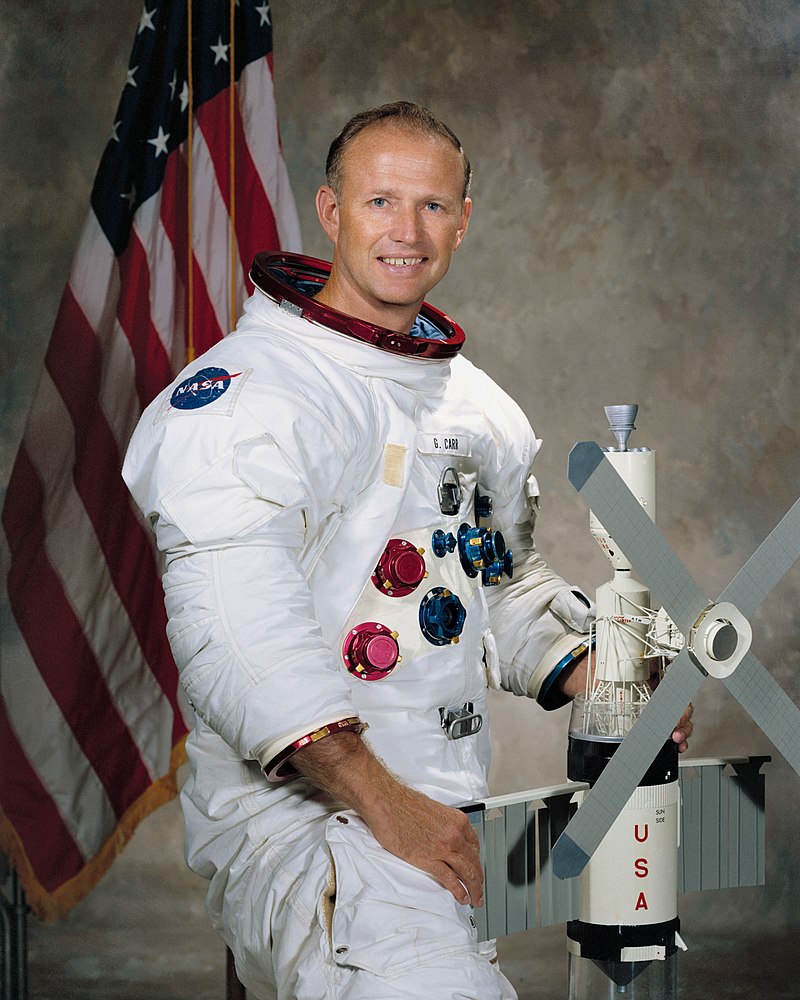
GERALD P CARR

GERALD P CARR
GERALD P CARR born in Denver, Colorado (August 22, 1932 - August 26, 2020).
Colonel Carr was one of the 19 astronauts selected by NASA in April 1966. He served as a member of the astronaut support crews and as CAPCOM for the Apollo 8 and 12 flights, and was involved in the development and testing of the lunar roving vehicle which was used on the lunar surface by Apollo flight crews.
Carr was commander of Skylab 4 (third and final manned visit to the Skylab Orbital Workshop) launched November 16, 1973, and concluded February 8, 1974. This was the longest manned flight (84 days, 1 hour, 15minutes) in the history of manned space exploration to date. He was accompanied on the record-setting 34.5-million-mile flight by Dr. Edward G. Gibson (science pilot) and William R. Pogue (pilot). From February 1974 until March 1978, Colonel Carr and his Skylab 4 teammates shared the world record for individual time in space: 2,017 hours 15 minutes 32 seconds, and Carr logged 15 hours and 48 minutes in three EVAs outside the Orbital Workshop.
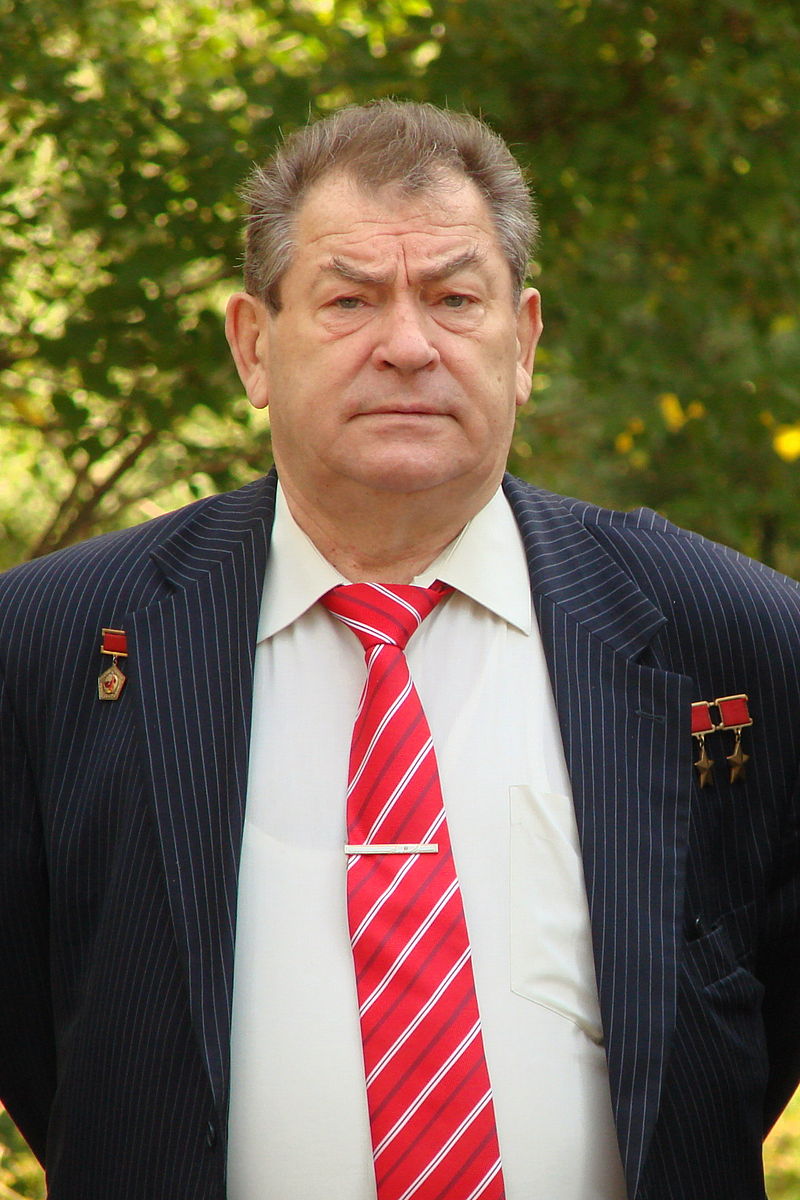
Vladimir Vasiliyevich Kovalyonok

Vladimir Vasiliyevich Kovalyonok
Vladimir Vasiliyevich Kovalyonok (Belarusian: born 3 March 1942) is a retired Soviet cosmonaut.
He entered the Soviet space programme on July 5, 1967, and was part of four soviet missions, viz. Soyuz 25, Soyuz 29/Soyuz 31, Soyuz T-4 and Salyut 6. Together with Aleksandr Ivanchenkov he flew the long-endurance mission EO-2 which set a new record of 139 days in space. He retired from the cosmonaut team on June 23, 1984.
From 1990 to 1992 he was a Director of the 30th Central Scientific Research Institute, Ministry of Defence (Russia).
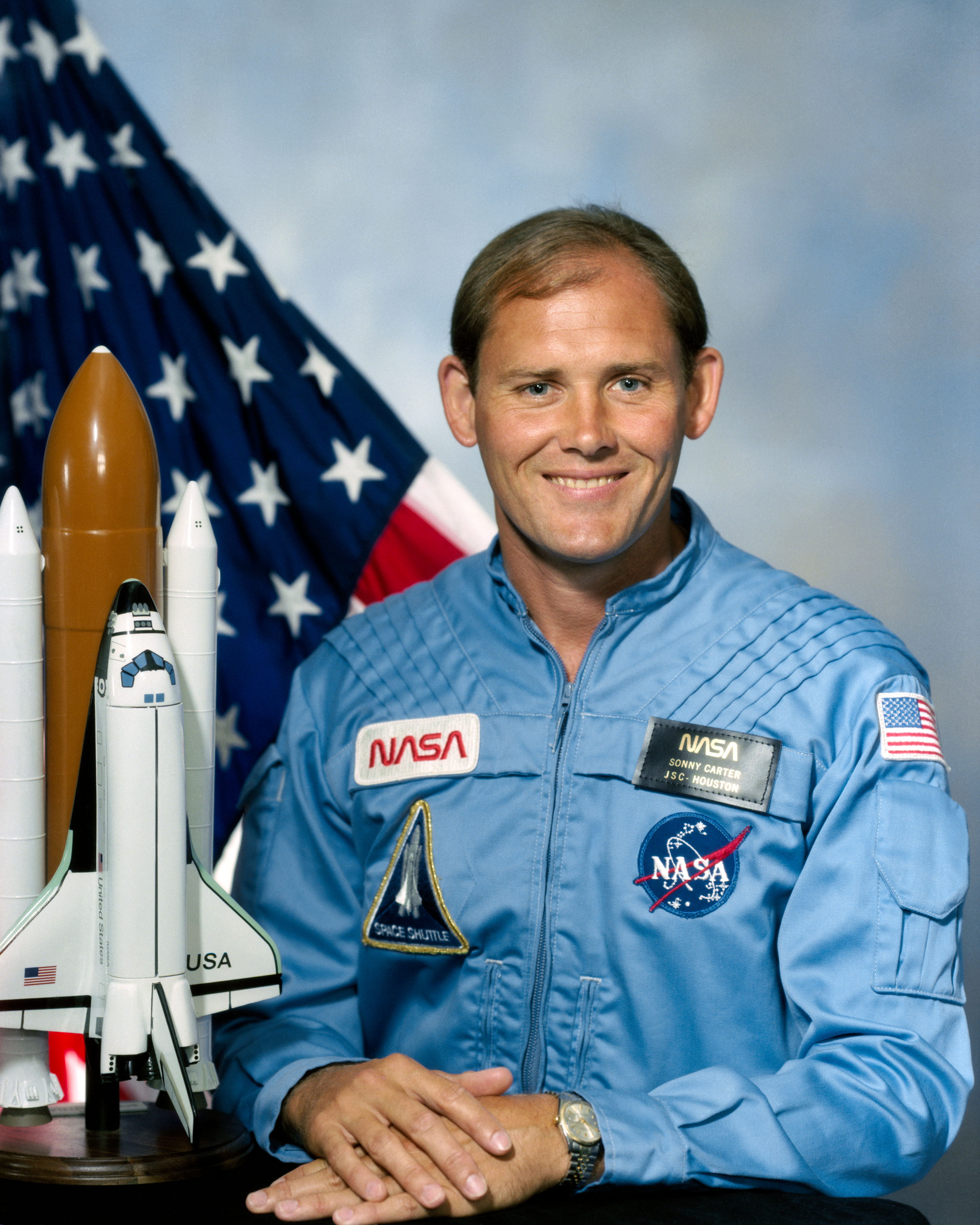
MANLEY LANIER CARTER JR

MANLEY LANIER CARTER JR
MANLEY LANIER CARTER JR, born in Macon, Georgia (August 15, 1947 - April 5, 1991), but considered Warner Robins, Georgia, to be his hometown.
Selected by NASA in May 1984, Carter became an astronaut in June 1985, qualified for assignment as a mission specialist on future Space Shuttle flight crews. Carter was assigned as Extravehicular Activity (EVA) Representative for the Mission Development Branch of the Astronaut Office when selected to the crew of STS-33. The STS-33 crew launched, at night, from Kennedy Space Center, Florida, on November 22, 1989, aboard the Space Shuttle Discovery. After 79 orbits of the earth, this five-day mission concluded on November 27, 1989 with a hard surface landing on Runway 04 at Edwards Air Force Base, California. With the completion of his first mission, Carter logged 120 hours in space.
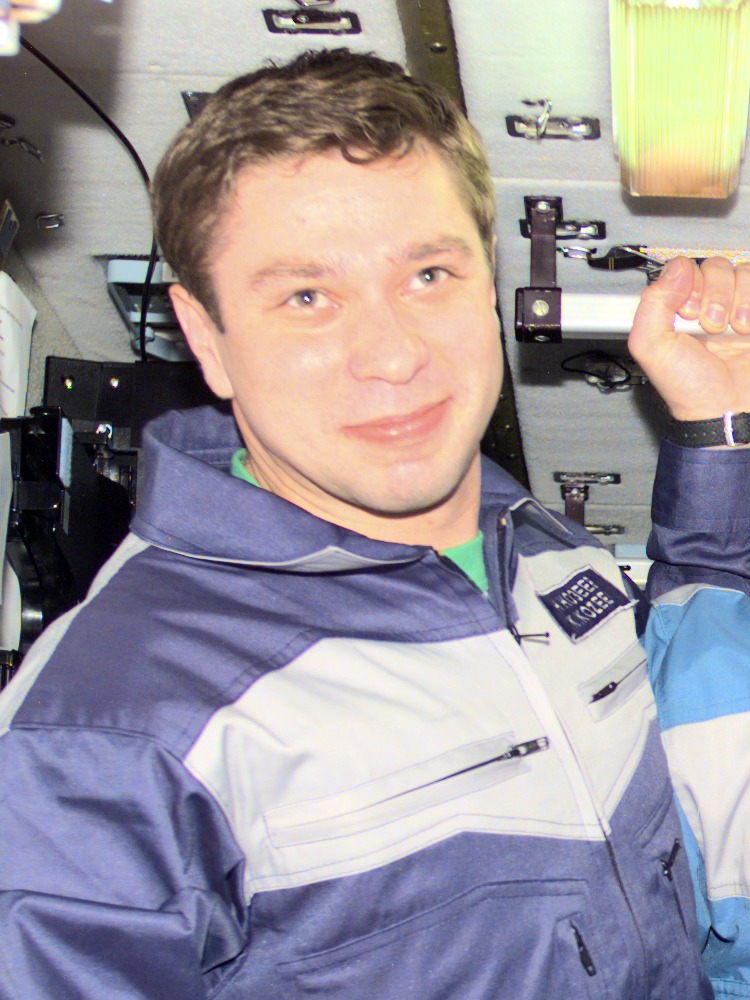
Konstantin Mirovich Kozeyev

Konstantin Mirovich Kozeyev
Konstantin Mirovich Kozeyev is a retired Russian cosmonaut.
Kozeyev was born in Korolyov, Moscow Oblast, Russian SFSR on December 1, 1967. He is a graduate student from Moscow Aviation Technology Institute and was selected as a cosmonaut on February 9, 1996. He flew as Flight Engineer on Soyuz TM-33 in 2001.
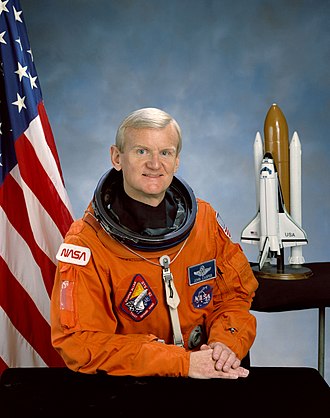
JOHN H CASPER

JOHN H CASPER
JOHN H CASPER, born on July 9, 1943 in Greenville, South Carolina, but considers Gainesville, Georgia, to be his hometown.
Selected as an astronaut by NASA in May 1984, Casper became an astronaut in June 1985. A veteran of four spaceflights, he has logged over 825 hours in space. He was the pilot on STS-36 (1990) and commander on missions STS-54 (1993), STS-62 (1994) and STS-77 (1996). His technical assignments while in the Astronaut Office included: chief of the Operations Development branch; lead for improvements to the nosewheel steering, brakes, tires and development of a landing drag chute; astronaut team leader for the Shuttle Avionics Integration Laboratory (SAIL) and ascent/entry Capsule Communicator (CAPCOM) in the Mission Control Center.
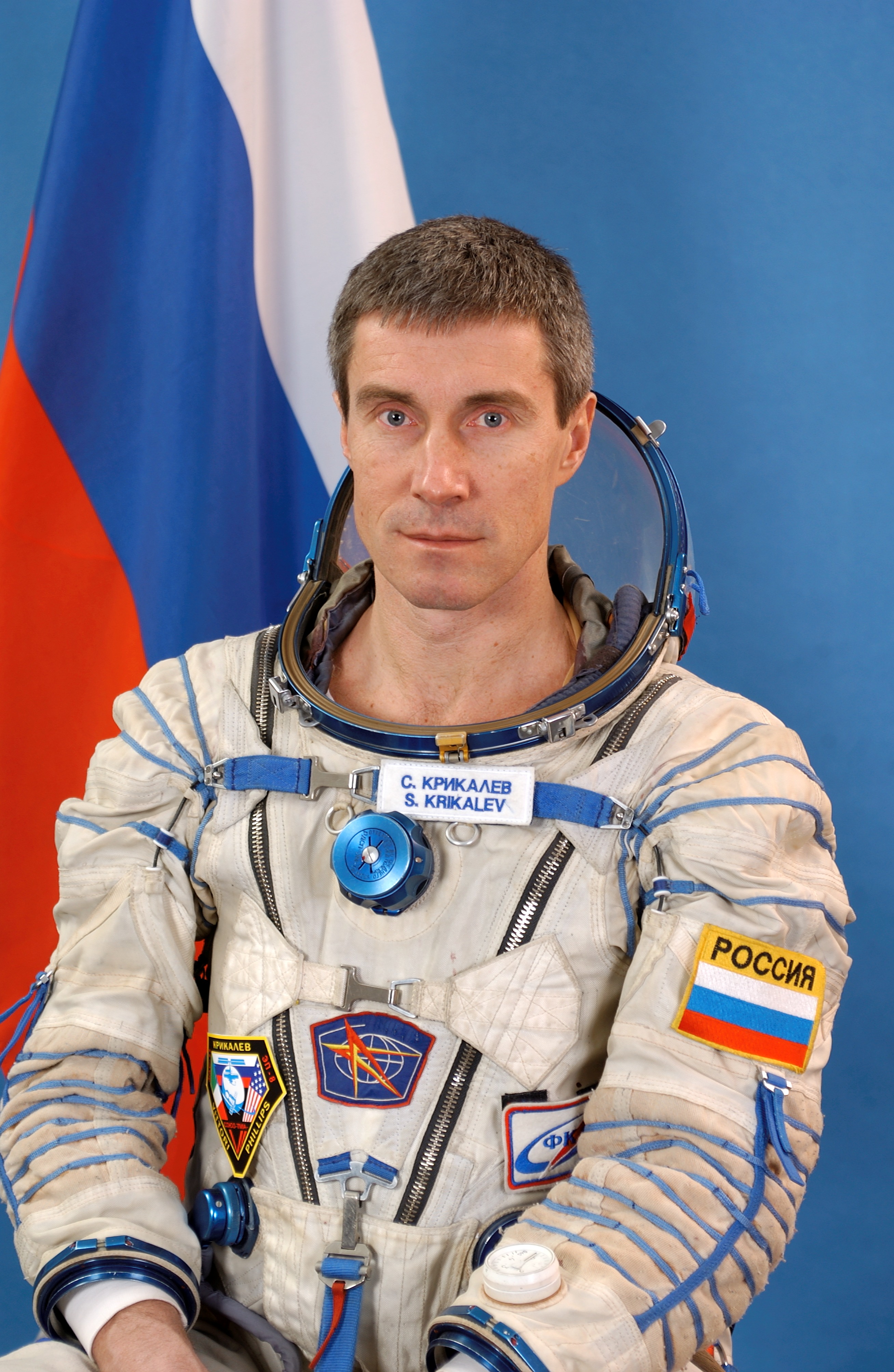
Sergei Konstantinovich Krikalev

Sergei Konstantinovich Krikalev
Sergei Konstantinovich Krikalev born in Krikalev was born in Leningrad in the Soviet Union (now Saint Petersburg, Russia)on 27 August 1958, is a Russian mechanical engineer, former cosmonaut and former head of the Yuri Gagarin Cosmonaut Training Center.
As a prominent rocket scientist, he is a veteran of six space flights and ranks third to Gennady Padalka and Yuri Malenchenko for the most time spent in space: a total of 803 days, 9 hours, and 39 minutes.
Soyuz TM-7 was launched on 26 November 1988, with Krikalev as flight engineer, Commander Aleksandr Volkov, and French astronaut Jean-Loup Chrétien. The previous crew (Vladimir Titov, Musa Manarov, and Valeri Polyakov) remained on Mir for another 25 days, marking the longest period a six-person crew had been in orbit.
Krikalev flew on STS-60, the first joint U.S./Russian Space Shuttle Mission. Launched on 3 February 1994, STS-60 was the second flight of the Space Habitation Module-2 (Spacehab-2), and the first flight of the Wake Shield Facility (WSF-1).
Krikalev was a member of the Expedition 1 crew to ISS, launched 31 October 2000, on a Soyuz rocket from Baikonur Cosmodrome in Kazakhstan, successfully docking with the station on 2 November 2000.
He retired as a cosmonaut in 2007 and was working as vice president of Space Corporation Energia.
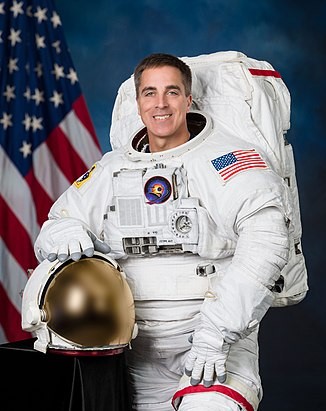
Christopher J. Cassidy

Christopher J. Cassidy
Christopher J. Cassidy was born in 1970 in Salem, Massachusetts. Considers York, Maine, to be his hometown. Selected as an astronaut by NASA in 2004 and is a veteran of three space flights, STSâ127, Expedition 35, and Expedition 63. During STS-127, Cassidy served as a Mission Specialist and was the 500th person in history to fly into space.
Cassidy was selected as an astronaut by NASA in May 2004. In February 2006, he completed Astronaut Candidate (ASCAN) training. From 2006 through 2008, he served as Capsule Communicator (CAPCOM) in the Mission Control Center. From 2009 through 2011, Cassidy was assigned as the support astronaut on the Space Shuttle Closeout Crew tasked with strapping in the crew and closing and sealing the access hatch for flight. From 2014 to 2015, he served as the Extravehicular Activity (EVA) branch chief and in 2015 was assigned as the Deputy Chief, Astronaut Office. After serving four months as deputy, Cassidy became NASA’s 14th Chief Astronaut in July 2015 where he was responsible for flight assignments, mission preparation and on-orbit support of U.S. crews as well as organizing astronaut office support for future launch vehicles.
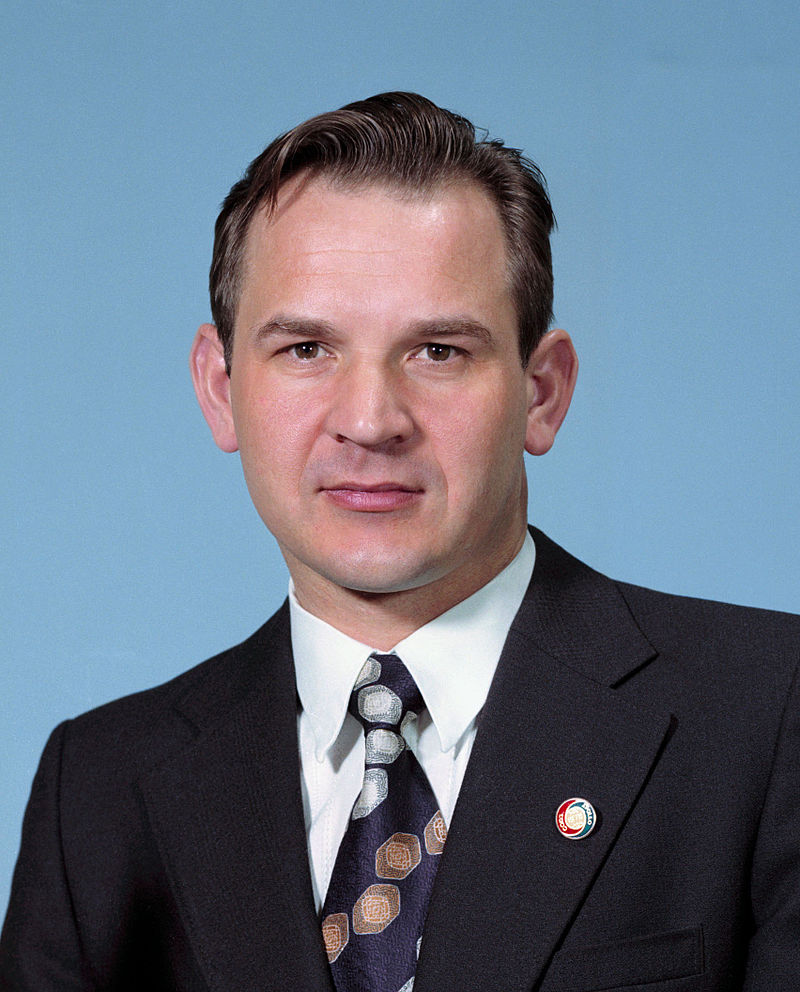
Valery Nikolaevich Kubasov

Valery Nikolaevich Kubasov
Valery Nikolaevich Kubasov (7 January 1935 – 19 February 2014) was born 7 January 1935, in Vyazniki, Vladimir Oblast, Ivanovo Industrial Oblast, RSFSR, now Vladimir Oblast, Russia. He was a Soviet/Russian cosmonaut who flew on two missions in the Soyuz programme as a flight engineer: Soyuz 6 and Soyuz 19 (the Apollo–Soyuz mission), and commanded Soyuz 36 in the Intercosmos programme.
Kubasov's first space mission, the five-day Soyuz 6 flight in October 1969, was unsuccessful due to technical issues as space vehicles never met up. During Soyuz 6 mission Kubasov and Georgy Shonin performed the first welding experiment in space module.
The July, 1975, Apollo–Soyuz Test Project became Kubasov's second space mission and he was a flight engineer on it. Kubasov spent several hours in the Apollo command and docking modules.
Kubasov's last spaceflight was aboard Soyuz 36 in 1980.
Kubasov retired as a cosmonaut on 13 November 1993.
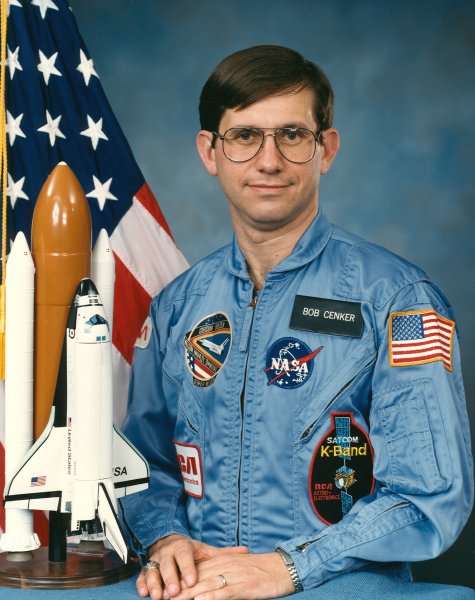
Robert Joseph "Bob" Cenker

Robert Joseph "Bob" Cenker
Robert Joseph "Bob" Cenker (born on November 5, 1948, and raised in Menallen Township, Pennsylvania) is an American aerospace and electrical engineer, aerospace systems consultant, and former astronaut. In January 1986, Cenker was a crew member on the twenty-fourth mission of NASA's Space Shuttle program, the seventh flight of Space Shuttle Columbia, designated as mission STS-61-C. Cenker served as a Payload Specialist, representing RCA Astro-Electronics. As an incentive for a spacecraft owner to contract with NASA to use a Shuttle launch instead of an unmanned, commercial launch system, NASA permitted contracting companies to apply for a payload specialist seat on the same mission. When RCA contracted with NASA to launch Satcom Ku-1, RCA Astro-Electronics' manager of systems engineering for the Satcom-K program Bob Cenkerwas selected to train as payload specialists so that one of the pair could accompany Satcom Ku-1 into space. Cenker and Magilton trained with career astronauts as well as other payload and mission specialists, including those scheduled for the next scheduled flight, that of the Challenger mission, STS-51-L. In July 1985 the payload was finalized to include the RCA satellite, and Cenker was assigned to the mission, now designated as STS-61-C. Magilton was assigned as the back-up. Columbia was launched and achieved orbit on January 12, 1986, with a full crew of seven. Cenker and his crewmates travelled over 2.5 million miles in 98 orbits aboard Columbia and logged over 146 hours in space.
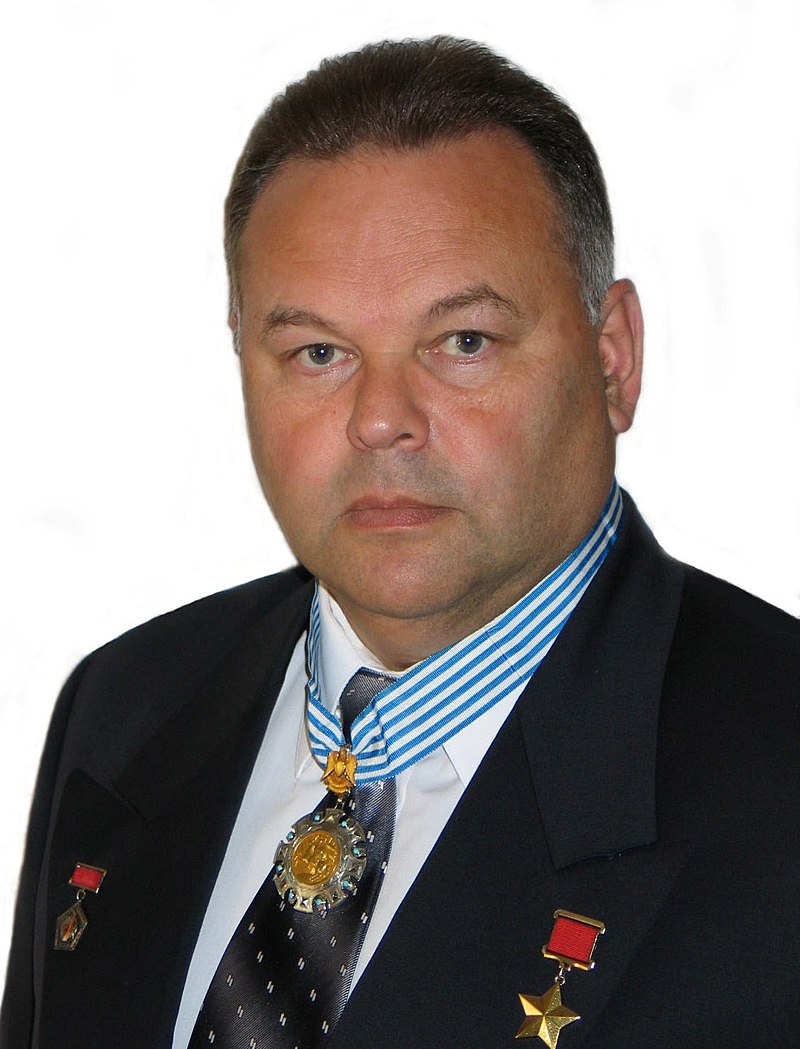
Aleksandr Ivanovich Laveykin

Aleksandr Ivanovich Laveykin
Aleksandr Ivanovich Laveykin is a retired Soviet cosmonaut. Born in Moscow, Laveykin on April 21, 1951, was selected as a cosmonaut on December 1, 1978.
He flew on one spaceflight, for the first part of the long duration expedition Mir EO-2. He flew as a flight engineer, and was both launched and landed with the spacecraft Soyuz TM-2. He spent 174 days 3 hours 25 minutes in space. Launched in February 1987, his spaceflight was intended to last until December 1987, but doctors on the ground determined that he was having minor heart irregularities. For this reason, in July he was replaced by Soviet cosmonaut Aleksandr Pavlovich Aleksandrov, who stayed on Mir to the end of the expedition in December.
Laveykin retired on March 28, 1994.
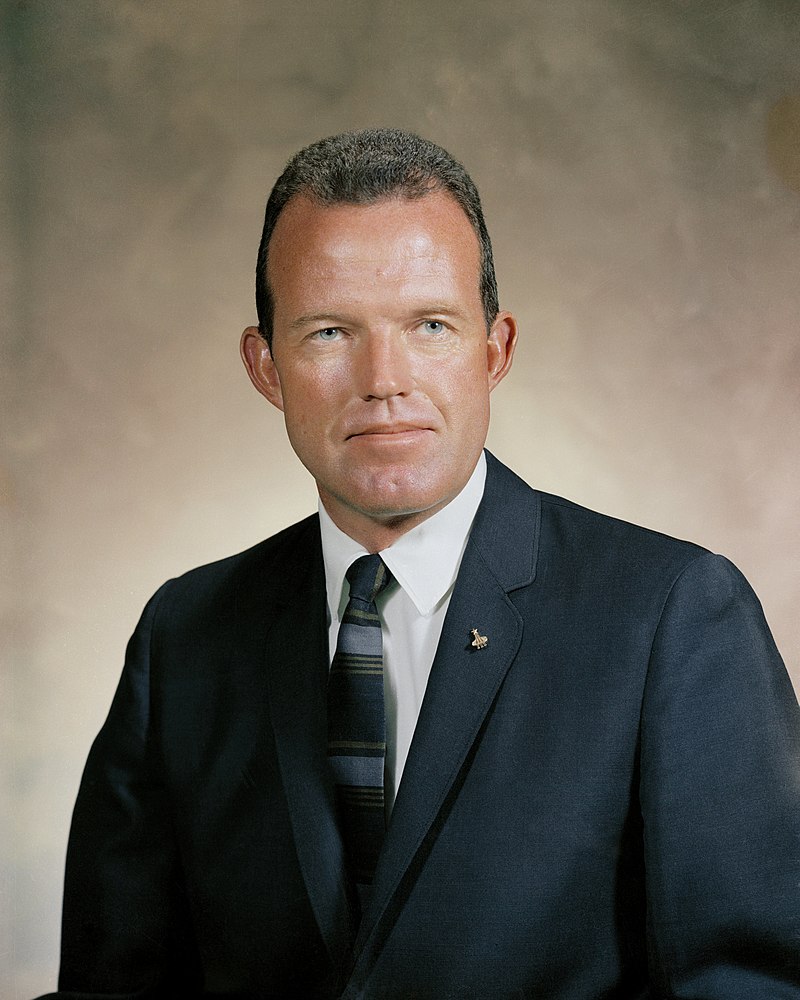
Leroy Gordon "Gordo" Cooper Jr.

Leroy Gordon "Gordo" Cooper Jr.
Leroy Gordon "Gordo" Cooper Jr. (March 6, 1927 – October 4, 2004) was an American aerospace engineer, test pilot, United States Air Force pilot, and the youngest of the seven original astronauts in Project Mercury, the first human space program of the United States. Cooper was selected as an astronaut in 1959. In 1963 Cooper piloted the longest and last Mercury spaceflight, Mercury-Atlas 9. During that 34-hour mission he became the first American to spend an entire day in space, the first to sleep in space, and the last American launched on an entirely solo orbital mission. Along with pilot Pete Conrad, he set a new space endurance record by traveling 3,312,993 miles (5,331,745 km) in 190 hours and 56 minutes—just short of eight days—showing that astronauts could survive in space for the length of time necessary to go from the Earth to the Moon and back. Cooper was launched into space on May 15, 1963, aboard the Faith 7 spacecraft, for what turned out to be the last of the Project Mercury missions. Faith 7 splashed down four miles (6.4 km) ahead of the recovery ship, the aircraft carrier USS Kearsarge, under manual control. Gemini 5 was launched at 09:00 on August 21, 1965. The Titan II booster placed them in a 163 by 349 kilometers (101 by 217 mi) orbit. He established a new space endurance record by traveling a distance of 3,312,993 miles (5,331,745 km) in 190 hours and 56 minutes—just short of eight days—showing that astronauts could survive in space for the length of time necessary to go from the Earth to the Moon and back. Cooper became the first astronaut to make a second orbital flight.
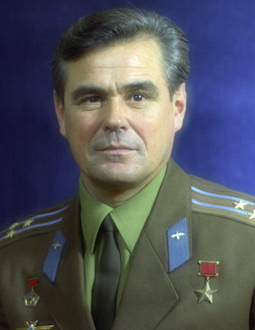
Vasily Grigoryevich Lazarev

Vasily Grigoryevich Lazarev
Vasily Grigoryevich Lazarev (23 February 1928 – 31 December 1990) was a Soviet cosmonaut who flew on the Soyuz 12 spaceflight as well as the abortive Soyuz 18a launch on 5 April 1975.
He was injured by the high acceleration of the abort and landing Soyuz 18a.
Lazarev held a degree in medicine and the rank of colonel in the Soviet Air Force. He remained in the space programme until failing a physical in 1981. He never fully recovered from the injuries sustained on Soyuz 18a and died on the last day of 1990 at the age of 62.
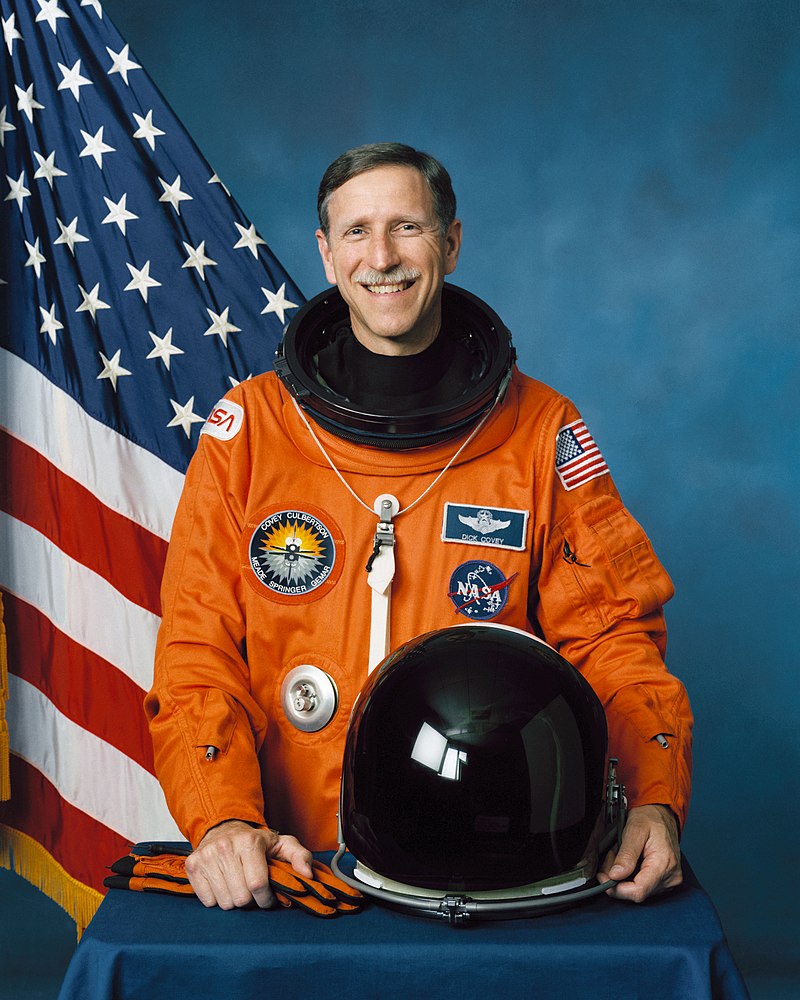
Richard Oswalt Covey

Richard Oswalt Covey
Richard Oswalt Covey (born August 1, 1946) is a retired United States Air Force officer, former NASA astronaut, and a member of the United States Astronaut Hall of Fame.
Born August 1, 1946, in Fayetteville, Arkansas, he considers Fort Walton Beach, Florida, to be his hometown.
Selected as an astronaut candidate by NASA in January 1978, Covey became an astronaut in August 1979. A veteran of four space flights, STS-51-I in 1985, STS-26 in 1988, STS-38 in 1990, and STS-61 in 1993, Covey has logged over 646 hours in space.
On his first mission, Covey was on the five-man crew of STS-51-I, which launched from Kennedy Space Center, Florida, on August 27, 1985. During this seven-day mission, crew members deployed three communications satellites The crew also performed the successful on-orbit rendezvous and repair of SYNCOM IV-3 satellite. The Space Shuttle Discovery completed 112 orbits before landing at Edwards Air Force Base, California, on September 3, 1985.
He next served as pilot on STS-26, the first flight to be flown after the loss of Challenger. Discovery completed 64 orbits of the Earth before landing at Edwards Air Force Base, California, on October 3, 1988.
On STS-38 Covey was the spacecraft commander of a five-man crew that launched at night from the Kennedy Space Center, Florida, on November 15, 1990. After 80 orbits of the Earth in 117 hours, Covey piloted the Space Shuttle Atlantis to a landing on the runway at the Kennedy Space Center on November 20, 1990.
On his fourth flight, Covey commanded a crew of seven aboard the Space Shuttle Endeavour on the STS-61 Hubble Space Telescope (HST) servicing and repair mission. STS-61 launched from the Kennedy Space Center, Florida, on December 2, 1993. After having traveled 4,433,772 miles (7,135,464 km) in 163 orbits of the Earth, Covey landed the Endeavour at night on the runway at the Kennedy Space Center on December 13, 1993.
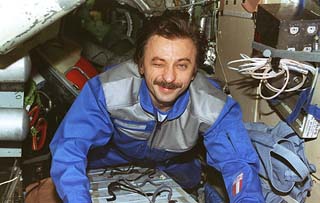
Aleksandr Ivanovich Lazutkin

Aleksandr Ivanovich Lazutkin
Aleksandr Ivanovich Lazutkin (born October 30, 1957) is a former Russian cosmonaut.
He was selected as cosmonaut on March 3, 1992. His first spaceflight was Soyuz TM-25, on which he was the flight engineer.
Lazutkin was aboard the Mir Space Station when a collision occurred with the uncrewed Progress M34, its supply craft which was piloted by Vasily Tsibliyev while on the Mir. The collision, which is considered the worst in the history of the space age, knocked out the Spektr's solar panels and took the Mir out of its alignment with the sun, also causing it to lose power. It also caused the cabin to decompress.
Quick action by the three crewmen managed to stave off immediate disaster. Lazutkin and fellow crewman Michael Foale quickly severed the connecting cables with the module and sealed off the hatches to the module, saving the rest of the station. Lazutkin managed to successfully cut some of the wires connecting the Mir and the Spektr using a tiny dinner knife. A few days after the collision, Tsibliyev and Lazutkin were ordered to attempt to repair the Mir. Foale was ordered to the Soyuz-TM escape pod. The station was eventually secured safely.
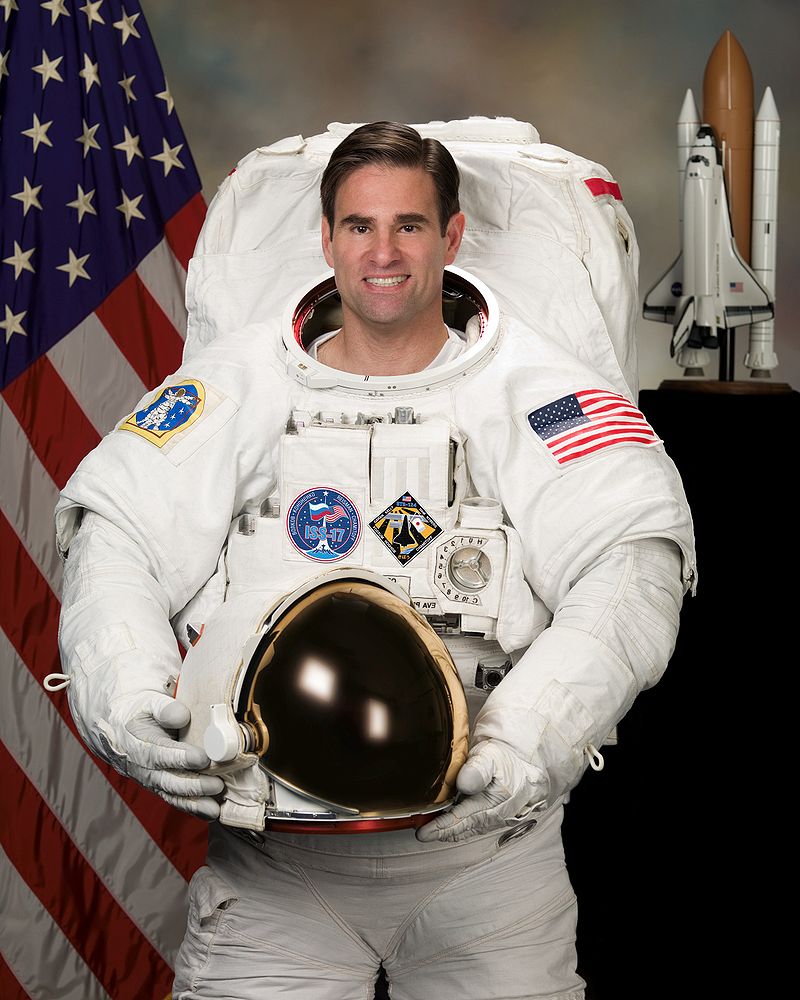
Gregory Errol Chamitoff

Gregory Errol Chamitoff
Gregory Errol Chamitoff (born 6 August 1962) is a Canadian-born American engineer and former NASA astronaut. He has been to space twice, spending 6 months aboard the ISS across Expedition 17 and 18 in 2008, and another 15 days as part of STS-134 in 2011. STS-134 was the last of Space Shuttle Endeavour which delivered the Alpha Magnetic Spectrometer and completed the US Orbital Segment.
Selected by NASA for the Astronaut Class of 1998, Chamitoff started training in August 1998 and qualified for flight assignment as a mission specialist in 2000.
He served as the backup Expedition 15/16 Flight Engineer 2 and STS-117/STS-120 Mission Specialist 5 for Clayton Anderson.
While aboard the space shuttle, he spoke with Michael Sobell Sinai School students via a live satellite link.
Chamitoff served on a long-duration mission to the International Space Station. He launched as a mission specialist on board Space Shuttle mission STS-124. He was flight engineer 2 and science officer on Expedition 17. He returned home as a mission specialist on STS-126, completing a tour that lasted six months.
While Richard Garriott was aboard the ISS at the beginning of Expedition 18, Chamitoff and Garriott filmed the first magic show in space, and along with Yury Lonchakov, Michael Fincke and Richard Garriott, filmed a science-fiction movie made in space, Apogee of Fear.
Chamitoff served as a mission specialist on STS-134, the penultimate Space Shuttle mission, during which he made two spacewalks, the last of which completed the construction of the ISS.
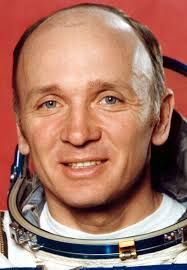
Valentin Vitalyevich Lebedev

Valentin Vitalyevich Lebedev
Valentin Vitalyevich Lebedev (born April 14, 1942, in Moscow) is a former Soviet cosmonaut who made two flights into space. His stay aboard the Space Station Salyut 7 with Anatoly Berezovoy in 1982, which lasted 211 days, was recorded in the Guinness Book of Records.
In 1982 Lebedev, along with Anatoly Berezovoy, spent 211 days in space (13 May – 10 December) as a crew engineer of the space station Salyut 7. During this mission Lebedev conducted more than 300 scientific experiments and studies. The 211-day flight was a record for that time, and recorded in the Guinness Book of Records. During that flight, an additional entry in to the Guinness Book of Records was filed under "First species of plant to flower in space", when his Arabidopsis flowered in July. After that space flight, Lebedev was awarded a second gold medal, "Hero of Soviet Union", and a second Order of Lenin.
Lebedev retired from the space program in 1993.
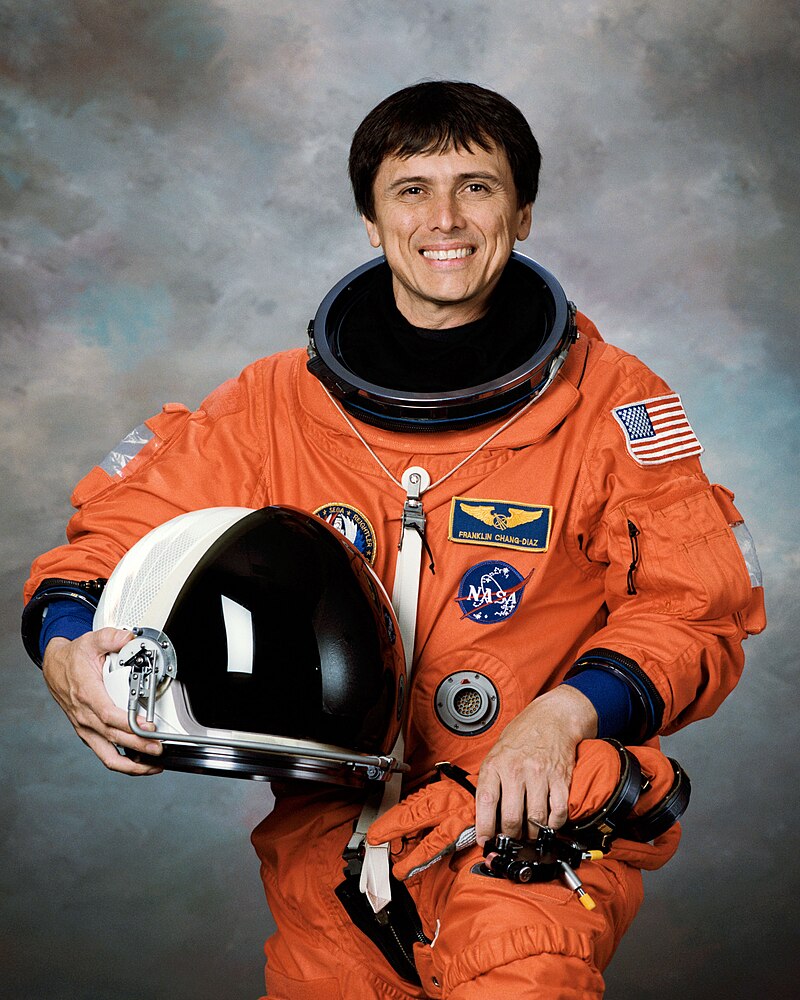
Franklin Ramon Chang-Diaz

Franklin Ramon Chang-Diaz
Franklin Ramón Chang-Díaz (born April 5, 1950, San José, Costa Rica) is an American mechanical engineer, physicist and former NASA astronaut. He is a veteran of seven Space Shuttle missions, tying the record, as of 2021 for the most spaceflights (a record set by Jerry L. Ross).
Chang-Díaz was selected as an astronaut candidate by NASA in 1980 and first flew aboard Space Shuttle mission STS-61-C in 1986. Subsequent missions included STS-34 (1989), STS-46 (1992), STS-60 (1994), STS-75 (1996), STS-91 (1998), and STS-111 (2002). During STS-111, he performed three extravehicular activities (EVAs) with Philippe Perrin as part of the construction of the International Space Station (ISS). He was also director of the Advanced Space Propulsion Laboratory at the Johnson Space Center from 1993 to 2005. Chang-Díaz retired from NASA in 2005.
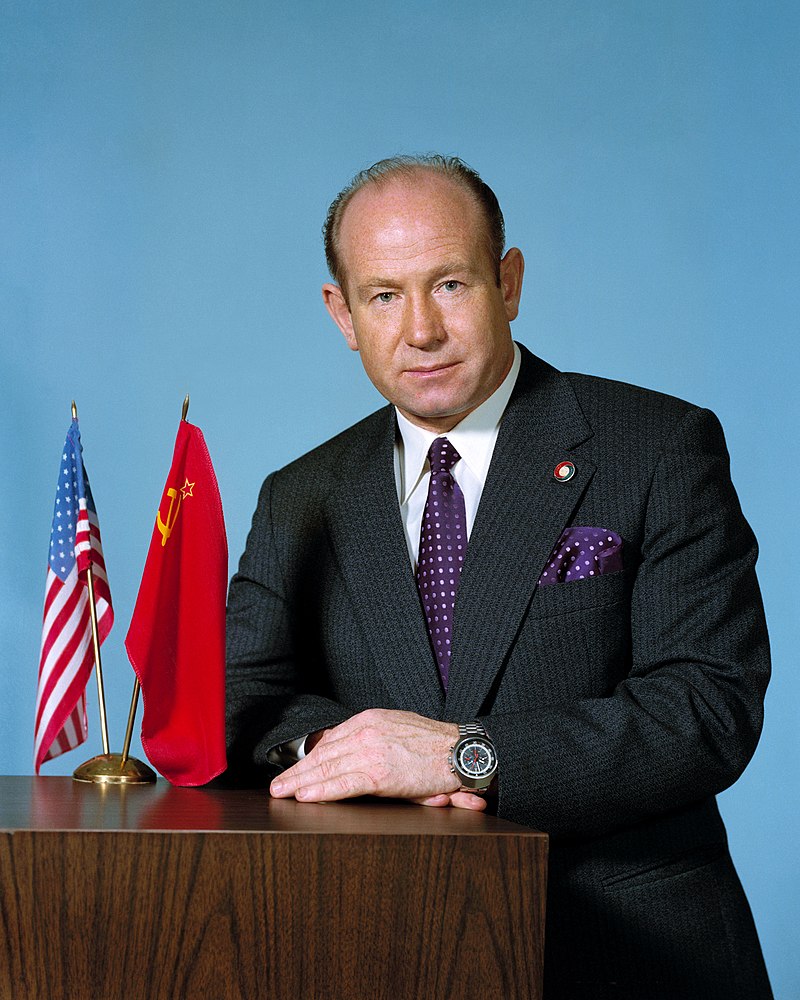
Alexei Arkhipovich Leonov

Alexei Arkhipovich Leonov
Alexei Arkhipovich Leonov was born on 30 May 1934 in Listvyanka, West Siberian Krai, Russian SFSR (30 May 1934 – 11 October 2019) was a Soviet and Russian cosmonaut, Air Force major general, writer, and artist. On 18 March 1965, he became the first person to conduct a spacewalk, exiting the capsule during the Voskhod 2 mission for 12 minutes and 9 seconds. He was also selected to be the first Soviet person to land on the Moon although the project was cancelled.
At the end of the spacewalk, Leonov's spacesuit had inflated in the vacuum of space to the point where he could not re-enter the airlock. He opened a valve to allow some of the suit's pressure to bleed off and was barely able to get back inside the capsule. While on the mission, Leonov drew a small sketch of an orbital sunrise, producing the first ever work of art made in outer space. Leonov had spent eighteen months undergoing weightlessness training for the mission
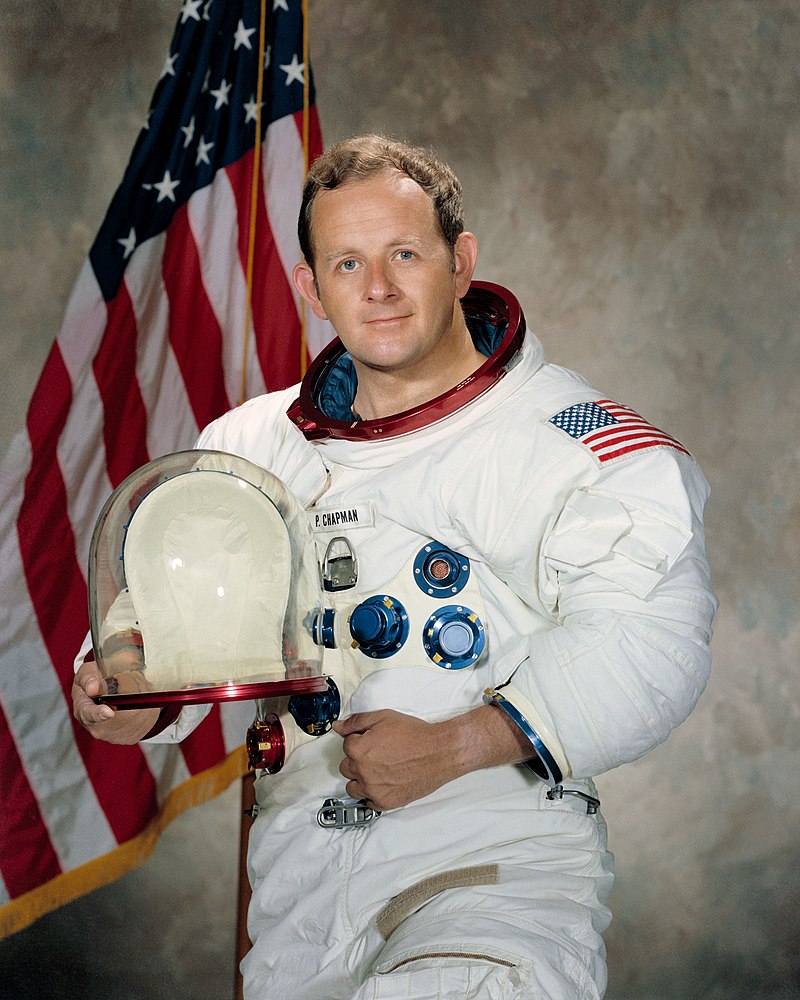
Philip Kenyon Chapman

Philip Kenyon Chapman
Philip Kenyon Chapman (5 March 1935 – 5 April 2021) was the first Australian-born American astronaut, serving for about five years in NASA Astronaut Group 6 (1967). He was born in Melbourne, Australia.
After gaining U.S. citizenship, Chapman was selected as a scientist-astronaut by NASA in August 1967. He trained as an astronaut, including jet pilot training with the USAF and the US Navy Underwater School, and served as the Apollo 14 Mission Scientist.
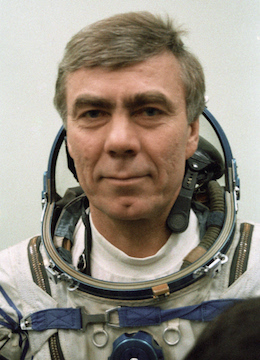
Anatoly Semyonovich Levchenko

Anatoly Semyonovich Levchenko
Anatoly Semyonovich Levchenko (May 5, 1941 – August 6, 1988) was a Soviet cosmonaut in the Buran programme.
Trained as a test pilot and selected as a cosmonaut on 12 July 1980, Levchenko was planned to be the back-up commander of the first Buran space shuttle flight. As part of his preparations, he also accomplished test-flights with Buran's counterpart OK-GLI aircraft.
In December 1987, he was launched aboard the spacecraft Soyuz TM-4 to the space station Mir, and returned to Earth about a week later on Soyuz TM-3.
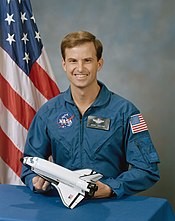
Kevin Patrick Chilton

Kevin Patrick Chilton
Kevin Patrick "Chilli" Chilton (born November 3, 1954) is an American mechanical engineer and retired United States Air Force four-star general, test pilot, and NASA astronaut. Chilton spent 11 years of his military career as a NASA astronaut.
He retired from the Air Force on February 1, 2011, after having achieved the highest rank of any military astronaut. On January 30, 2012, General Chilton was named to the board of directors of Orbital Sciences Corporation.
In August 1987 Chilton was assigned to NASA and became an astronaut in August 1988, qualifying for assignment as a pilot on Space Shuttle flight crews.
STS-49, was Chilton’s first space flight which lasted from May 7–16, 1992, was the maiden voyage of Space Shuttle Endeavour. STS-49 logged 213 hours in space and 141 Earth orbits prior to landing at Edwards Air Force Base, California, where the crew conducted the first test of the Endeavour’s drag chute.
He was part of The STS-59, Space Radar Laboratory (SRL) mission, April 9–20, 1994, was launched aboard Space Shuttle Endeavour. The mission concluded with a landing at Edwards AFB after orbiting the Earth 183 times in 269 hours.
Chilton commanded STS-76, the third docking mission to the Russian space station Mir, which launched on March 22, 1996, with a crew of six aboard Atlantis. Following rendezvous and docking with Mir, transfer of a NASA astronaut to Mir for a five-month stay was accomplished to begin a continuous presence of U.S. astronauts aboard Mir for the next two-year period. Following 145 orbits of the Earth, Atlantis landed with a crew of five at Edwards Air Force Base in California on March 31, 1996, 221 hours after liftoff.
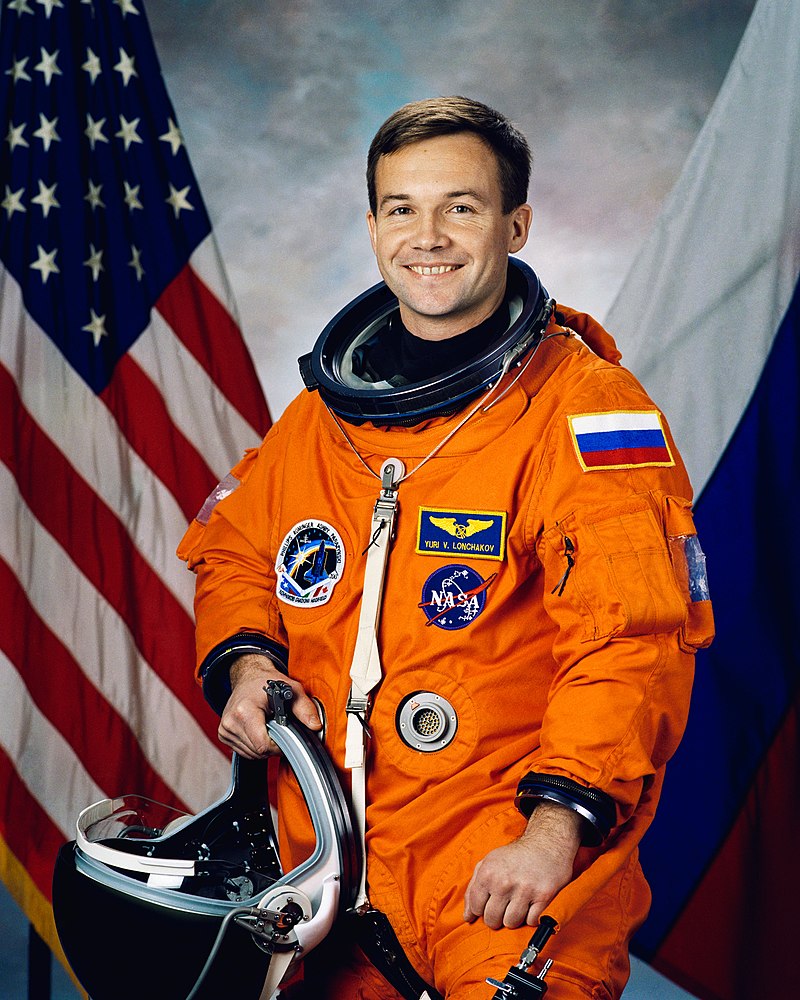
Yury Valentinovich Lonchakov

Yury Valentinovich Lonchakov
Yury Valentinovich Lonchakov, was born on 4 March 1965, in Balkhash, Dzhezkazkansk Region, Kazakhstan. He is a Russian former cosmonaut and a veteran of three space missions. He has spent 200 days in space and has conducted two spacewalks.
Lonchakov was selected as a test-cosmonaut candidate of the Gagarin Cosmonaut Training Center Cosmonaut Office in December 1997. In July 2004 he took part in the training for survival in extreme situations at the Baikonur Cosmodrome.
Lonchakov's first spaceflight was the Space Shuttle mission STS-100 that installed the International Space Station's robotic arm, Canadarm2. Space shuttle Endeavour lifted off from the Kennedy Space Center at 18:40:42 UTC on 19 April 2001. Lonchakov served as a mission specialist. Endeavour docked with the ISS on 21 April 2001 at 13:59 UTC. After 8 days of docked operations, the shuttle undocked from the ISS at 17:34 UTC on 19 April. Landing was originally planned at KSC however continuing cloud cover, rain showers and gusty winds forced Endeavour to land at Edwards Air Force Base in California.The mission duration of STS-100 was 11 days, 21 hours, 31 minutes, 14 seconds.
Lonchakov returned to the ISS in October 2002 as a crewmember of the Soyuz taxi flight Soyuz TMA-1 The successful docking between the Soyuz TMA-1 and the ISS did take place at 05:01 UTC on 1 November 2002. After spending 10 days, 20 hours and 53 minutes in space Lonchakov returned to Earth on Soyuz TM-34
Lonchakov’s third space travel was on Expedition 18 as crew as a flight engineer and Soyuz commander. The Soyuz TMA-13 spacecraft with Lonchakov, Expedition 18 commander Michael Fincke and space tourist Richard Garriott launched on 12 October 2008 at 7:01 UTC. Lonchakov served as the Soyuz commander. After a two-day autonomous flight, Soyuz TMA-13 successfully docked to the Earth-facing docking port of the Zarya module of the ISS on 14 October at 08:26 GMT, seven minutes ahead of schedule
Lonchakov returned to Earth with NASA astronaut Michael Fincke and spaceflight participant Charles Simonyi. The Soyuz TMA-13 capsule landed in Kazakhstan on 8 April 2009, at 7:16 UTC.
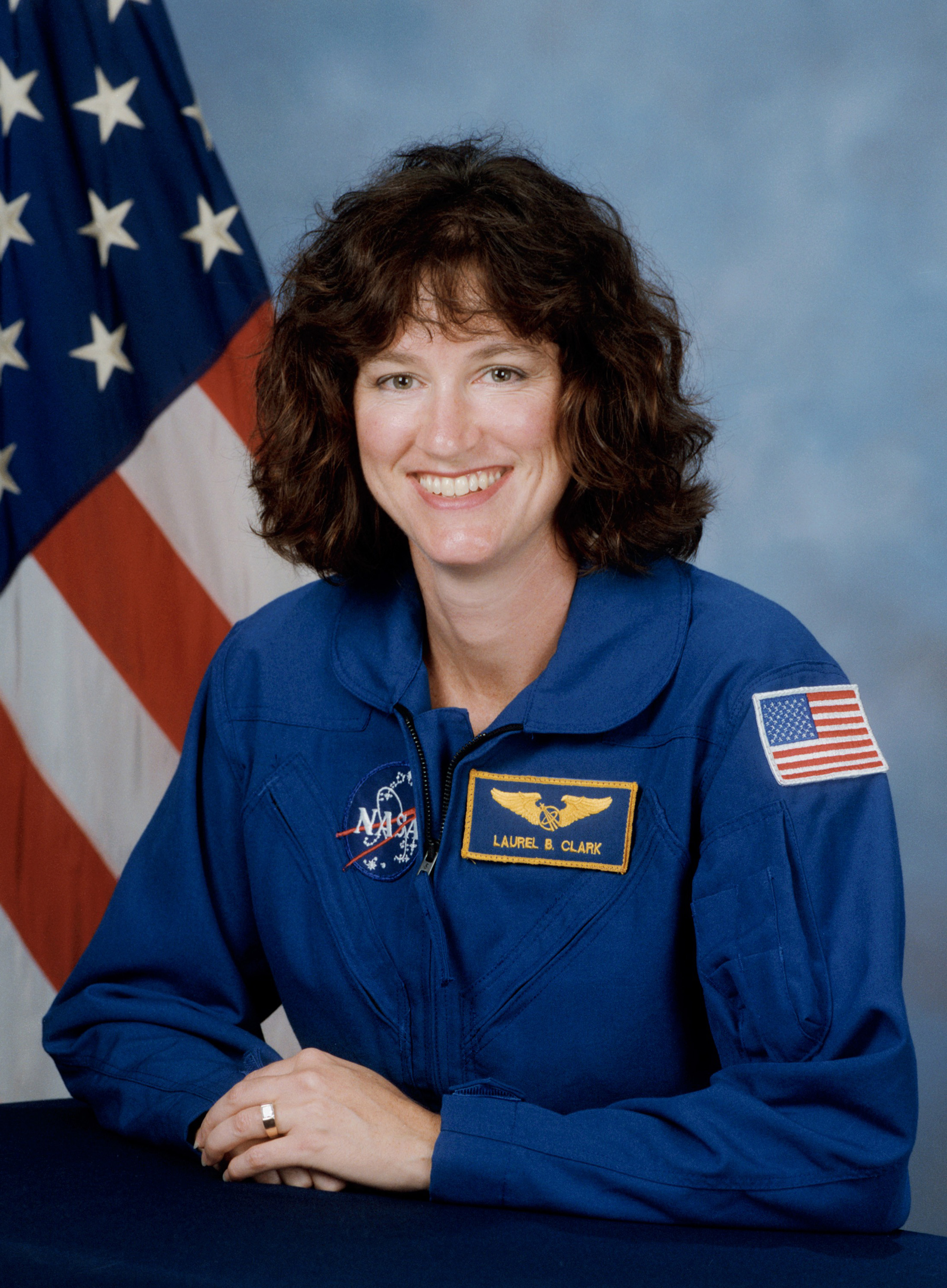
Laurel Blair Clark

Laurel Blair Clark
Laurel Blair Clark (March 10, 1961 – February 1, 2003). Clark was born in Ames, Iowa, but considered Racine, Wisconsin to be her hometown. She was a NASA astronaut, medical doctor, United States Navy captain, and Space Shuttle mission specialist. She died along with her six fellow crew members in the Space Shuttle Columbia disaster.
.
Selected by NASA in April 1996, Clark reported to the Johnson Space Center in Houston, Texas, in August 1996. After completing two years of training and evaluation, she was qualified for flight assignment as a mission specialist. She flew aboard STS-107, logging 15 days, 22 hours and 21 minutes in space.
STS-107 Columbia – The 16-day flight was a dedicated science and research mission. Working 24 hours a day, in two alternating shifts, the crew successfully conducted approximately 80 experiments. Clark's bioscience experiments included gardening in space, as she discussed only days before her death in an interview with Milwaukee media near her Wisconsin hometown. The STS-107 mission ended abruptly on February 1, 2003, when Columbia disintegrated and her crew perished during re-entry, 16 minutes before scheduled landing.
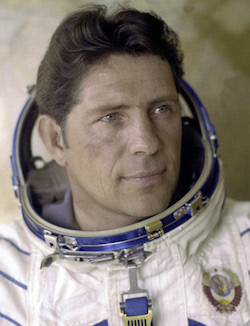
Vladimir Afanasyevich Lyakhov

Vladimir Afanasyevich Lyakhov
Vladimir Afanasyevich Lyakhov (20 July 1941 – 19 April 2018) was a Ukrainian Soviet cosmonaut.
He was selected as cosmonaut on 5 May 1967, and retired on 7 September 1994. Lyakhov was the Commander on Soyuz 32, Soyuz T-9, and Soyuz TM-6, and spent 333 days, 7 hours, 47 minutes in space. He was married and had two children.
Lyakhov's flight to Salyut-6 with Valeri Ryumin as the Soyuz 32 crew resulted in setting a space endurance record of 175 days when they returned to Earth on 2 February 1979.
Lyakhov conducted three spacewalks for a cumulative total of 7 hours and 8 minutes with one outside of Salyut 6 and two outside of Salyut 7.
Lyakhov was deputy director for cosmonaut training and deputy commander of the cosmonaut corps at the Gagarin Cosmonaut Training Center. He retired in 1994. He was twice awarded the Order of Lenin and was twice named a Hero of the Soviet Union. He was also named a Hero of the Democratic Republic of Afghanistan and awarded with the Order of the Saur Revolution and Order of The Sun of Freedom
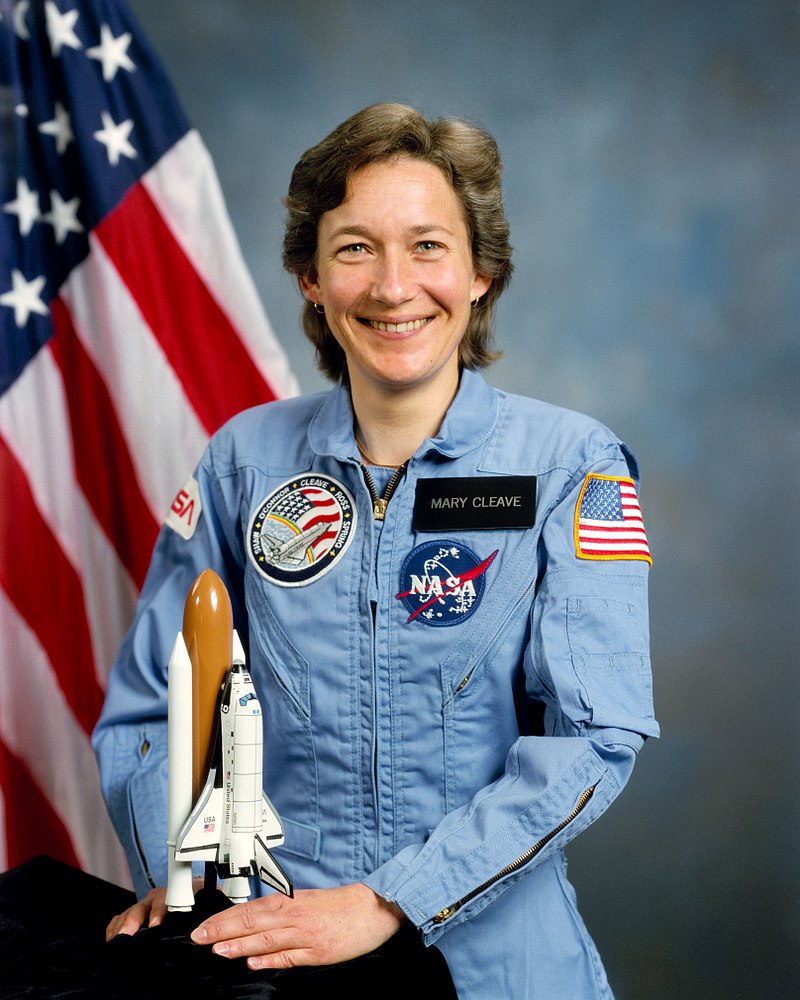
Mary Louise Cleave

Mary Louise Cleave
Mary Louise Cleave was born in Southampton, New York on February 5 1947, is an American engineer and a former NASA astronaut.
Cleave was selected as an astronaut in May 1980. A veteran of two space flights, Cleave logged a total of 10 days, 22 hours, 02 minutes, 24 seconds in space, orbited the Earth 172 times and traveled 3.94 million miles. She was a mission specialist on STS-61-B (November 26 to December 3, 1985) and STS-30 (May 4–8, 1989).
STS-61-B Atlantis (Nov 26 to December 3, 1985) launched at night from the Kennedy Space Center, Florida, and returned to land on Runway 22 at Edwards Air Force Base, California This was the heaviest payload weight carried to orbit by the Space Shuttle to date. Mission duration was 165 hours, 4 minutes, 49 seconds.
STS-30 on Space Shuttle Atlantis (May 4–8, 1989) was a four-day mission during which the crew successfully deployed the Magellan Venus-exploration spacecraft, the first U.S. planetary science mission launched since 1978, and the first planetary probe to be deployed from the Shuttle.
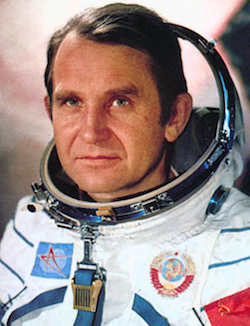
Oleg Grigoryevich Makarov

Oleg Grigoryevich Makarov
Oleg Grigoryevich Makarov (Russian: 6 January 1933 – 28 May 2003) was a Soviet cosmonaut.
Makarov was born in Udomlya, Tver Oblast, USSR. He graduated from Bauman Moscow Higher Technical School in 1957 and started working at the Special Design Bureau Number One (which is now RSC Energia) as an engineer, working on the Vostok spacecraft. In 1966, he was selected for cosmonaut training.
His first spaceflight was Soyuz 12 in 1973, a test flight to check the changes made to the Soyuz spacecraft after the Soyuz 11 disaster. His second flight was the abortive Soyuz 18a that made an emergency landing in the Altay Mountains, 21 minutes after launch. With his third launch on Soyuz 27 he flew to space station Salyut 6 and landed five days later with the Soyuz 26 spacecraft. His last mission was Soyuz T-3, during which several repairs on Salyut 6 were done. He also served on the backup crews for Soyuz 17 and Soyuz T-2. Altogether he spent 20 days, 17 hours, and 44 minutes in space.
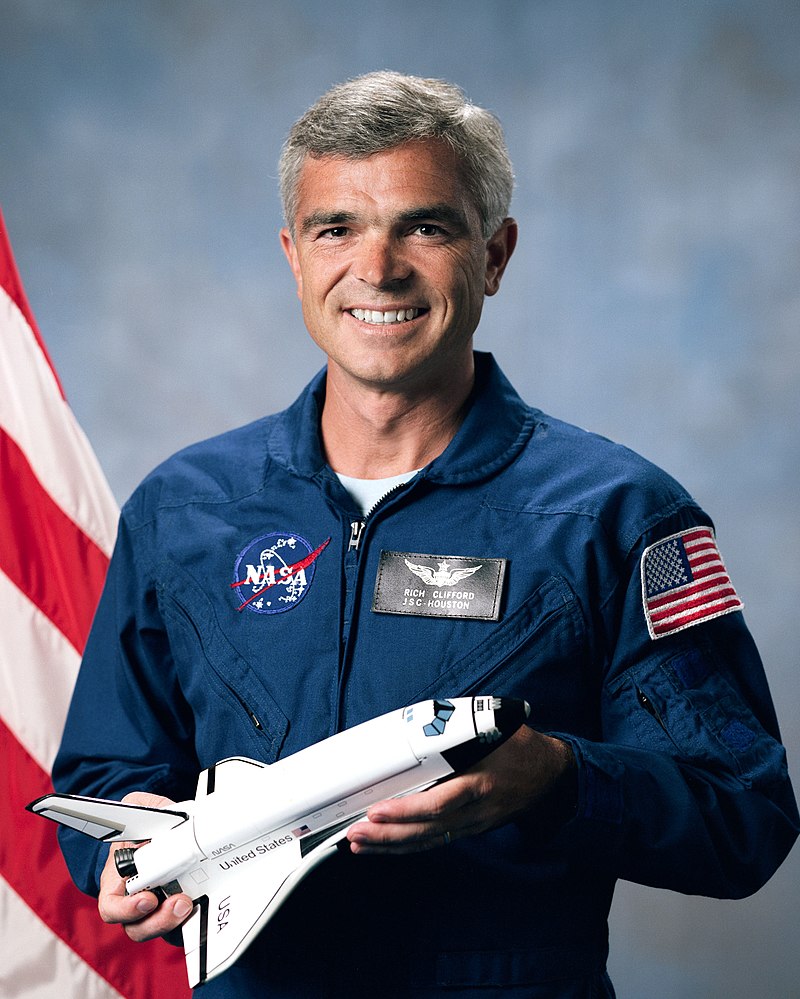
Michael R Clifford

Michael R Clifford
Michael R Clifford, born on October 13, 1952 in San Bernadino, California, but considers Ogden, Utah, to be his hometown
Clifford was assigned to the Johnson Space Center in July of 1987. Selected as an astronaut by NASA in July 1990, Clifford has served in a variety of technical assignments. A veteran of three space flights, Clifford flew as a mission specialist on STS-53 in 1992, STS-59 in 1994, and STS-76 in 1996. He has logged 665 hours in space, including a 6-hour space walk.
STS-53 Discovery launched from the Kennedy Space Center, Florida, on December 2, 1992. The mission carried a Department of Defense payload and a variety of secondary payloads. After completing 115 orbits of the Earth, STS-53 landed at Edwards Air Force Base, California, on December 9, 1992.
The STS-59 Space Radar Laboratory (SRL) mission was launched April 9, 1994, aboard Space Shuttle Endeavour. SRL consisted of three large radars, SIR-C/X-SAR (Shuttle Imaging Radar C/X-Band Synthetic Aperture Radar), and a carbon monoxide sensor that were used to enhance studies of the Earth's surface and atmosphere. The mission concluded on April 20, 1994, with a landing at Edwards Air Force Base after orbiting the Earth 183 times in 269 hours. STS-76, the third docking mission to the Russian space station Mir, launched on March 22, 1996 with a crew of six aboard Atlantis. Following rendezvous and docking with Mir, transfer of a NASA Astronaut to Mir for a five month stay was accomplished to begin a continuous presence of U.S. astronauts aboard Mir for the next two year period. Clifford performed a 6-hour spacewalk, the first while docked to an orbiting space station, to mount experiment packages on the Mir docking module to detect and assess debris and contamination in a space station environment. Following 145 orbits of the Earth, Atlantis landed with a crew of five at Edwards Air Force Base in California on March 31, 1996.
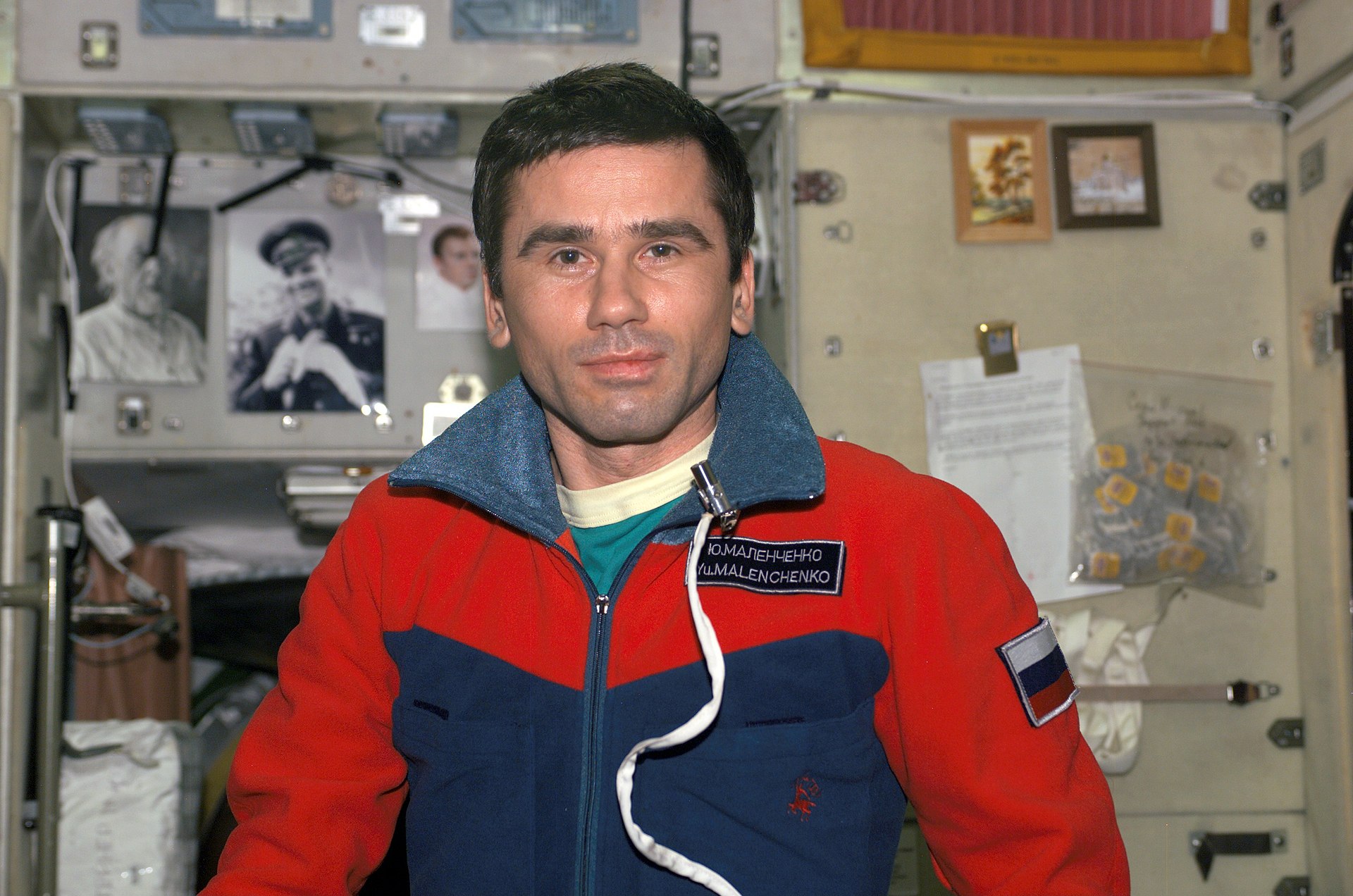
Yuri Ivanovich Malenchenko

Yuri Ivanovich Malenchenko
Malenchenko served as a mission specialist for STS-106. Space Shuttle Atlantis lifted off from the Kennedy Space Center (KSC) on September 8, 2000. After circling the globe for 186 orbits, Atlantis landed on September 19, 2000, at Runway 15, KSC. The mission lasted 11 days, 19 hours and 12 minutes.
Malenchenko conducted his first and second career spacewalks during the Mir-16 mission. He performed two spacewalks on September 9, 1994 (5h 06m) and September 14, 1994, in which the station's external insulation was repaired. The first and second spacewalks lasted 5 hours and 6 minutes, and 6 hours and 1 minute respectively.
Malenchenko performed his third career spacewalk during the STS-106 mission to the ISS. On flight day three, Malenchenko and NASA astronaut Ed Lu conducted a 6-hour and 14 minute space walk. The spacewalk started at 04:55 GMT on September 11 when the two spacewalkers exited the shuttle's airlock. This spacewalk marked the sixth spacewalk in support of the ISS assembly and the 50th spacewalk in space shuttle history.
On November 9, 2007, Malenchenko performed his fourth career spacewalk. On 20 August 2012, Malenchenko together with cosmonaut Gennady Padalka participated in his fifth career spacewalk.
Malenchenko arrived at the ISS Soyuz TMA-19M to join the Expedition 46 crew. He performed a manual docking due to a malfunction in the automatic docking system. Progress MS-1 was then scheduled for launch to the ISS, atop a Soyuz 2.1a, on 21 December. Planned for a launch date of no earlier than 7 February 2016, the SpaceX CRS-8 mission provided the ISS with the Bigelow Expandable Activity Module. Two EVAs were performed during Expedition 46. He returned to Earth on Soyuz TMA-19M, and landed on 18 June 2016 09:15 UTC, after spending additional 186 days in space.
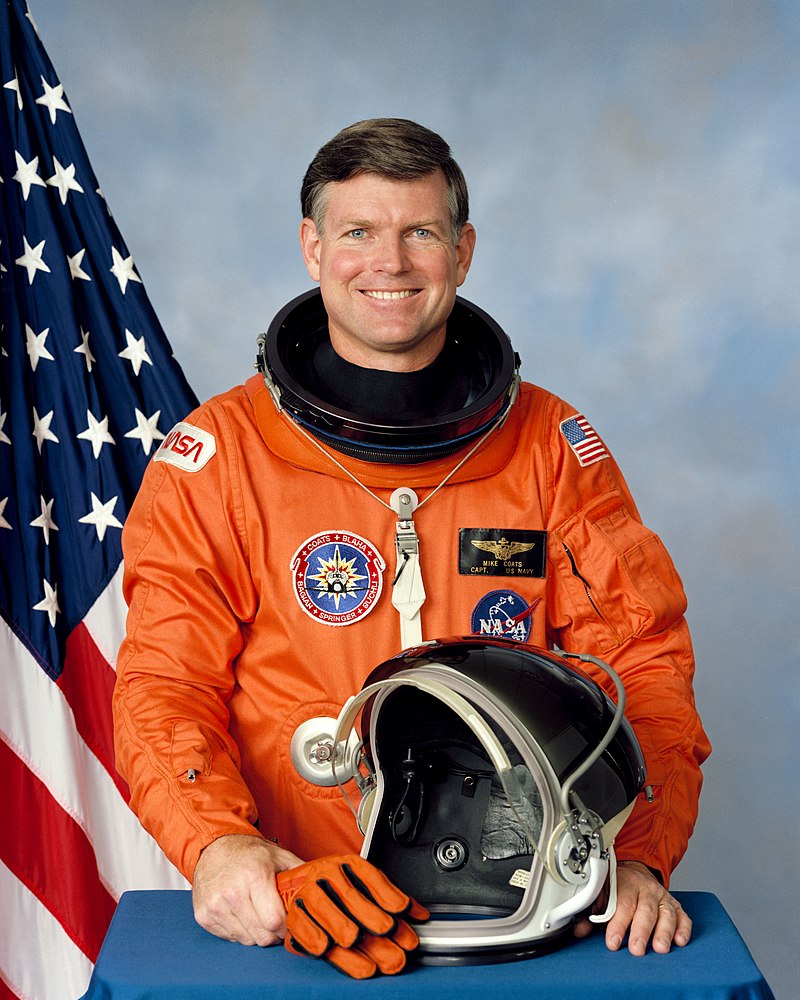
Michael Lloyd Coats

Michael Lloyd Coats
Michael Lloyd Coats (born January 16, 1946) is a former NASA astronaut (three spaceflights), raised in Riverside, California.
Selected as an astronaut candidate in 1978, Coats became a NASA astronaut in August 1979. He was a member of the STS-4 astronaut support crew, and was a capsule communicator (CAPCOM) for STS-4 and STS-5. A veteran of three space flights, Coats flew on STS-41-D in 1984, STS-29 in 1989, and STS-39 in 1991.
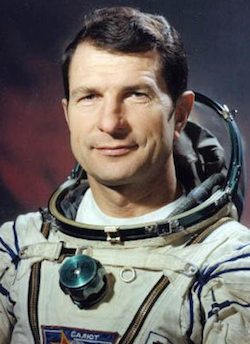
Yuri Vasilyevich Malyshev

Yuri Vasilyevich Malyshev
Yuri Vasilyevich Malyshev (Russian: 27 August 1941 – 8 November 1999) was a Soviet cosmonaut who served on the Soyuz T-2 (5–9 June 1980) and Soyuz T-11 (3–11 April 1984) missions.
He was awarded with Ashoka Chakra (India, 1984) and became twice the Hero of the Soviet Union (16 June 1980 and 11 April 1984) and Two Orders of Lenin (16 June 1980 and 11 April 1984.
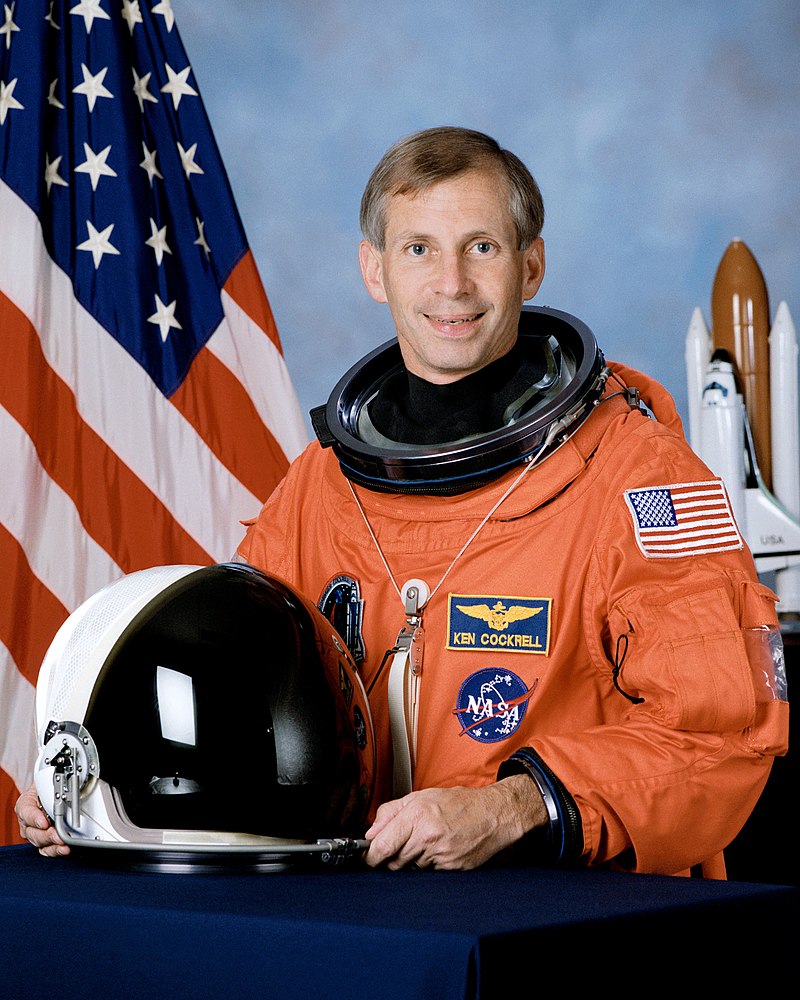
Kenneth D Cockrell

Kenneth D Cockrell
Kenneth D Cockrell, born April 9, 1950, in Austin, Texas. He considers Rockdale, Texas, his hometown.
Selected by NASA in January 1990, Cockrell became an astronaut in July 1991. A veteran of five spaceflights, Cockrell has logged more than 1,560 hours in space. He served as a mission specialist on STS-56 (April 8 to April 17, 1993); was the pilot on STS-69 (September 7 to September 18, 1995) and was the mission commander on STS-80 (November 19 to December 7, 1996), STS-98 (February 7 to February 20, 2001) and STS-111 (June 5 to June 19, 2002).
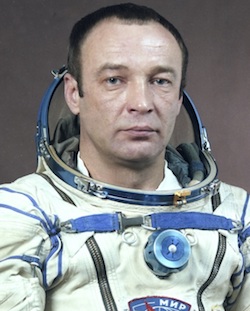
Gennady Mikhailovich Manakov

Gennady Mikhailovich Manakov
Gennady Mikhailovich Manakov (Russian: 1 June 1950 – 26 September 2019) was a Soviet and Russian cosmonaut who commanded two Soyuz flights to the Mir space station.
He was born in Yefimovka, Chkalov Oblast, Russian SFSR, on 1 June 1950. He was selected on 2 September 1985 and flew as Commander on Soyuz TM-10 and Soyuz TM-16, before retiring on 20 December 1996. Hero of the Soviet Union
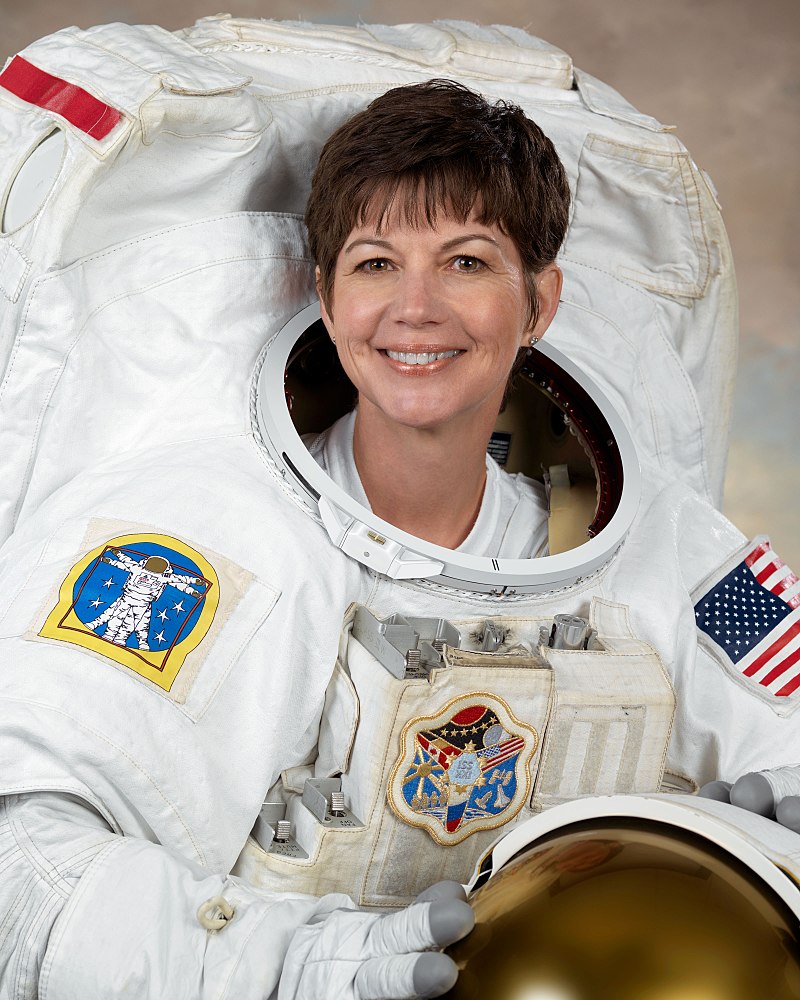
Catherine Grace Coleman

Catherine Grace Coleman
Catherine Grace Coleman (born December 14, 1960) is an American chemist, engineer, former United States Air Force colonel, and retired NASA astronaut. She is a veteran of two Space Shuttle missions, and departed the International Space Station on May 23, 2011, as a crew member of Expedition 27 after logging 159 days in space.
Coleman was selected by NASA in 1992 to join the NASA Astronaut Corps. In 1995, she was a member of the STS-73 crew on the scientific mission USML-2 with experiments including biotechnology, combustion science, and the physics of fluids. STS-93 was Coleman's second space flight in 1999. She was mission specialist in charge of deploying the Chandra X-ray Observatory and its Inertial Upper Stage out of the shuttle's cargo bay.
Coleman launched on December 15, 2010 (December 16, 2010 Baikonur time), aboard Soyuz TMA-20 to join the Expedition 26 mission aboard the International Space Station.[10] She retired from NASA on December 1, 2016.
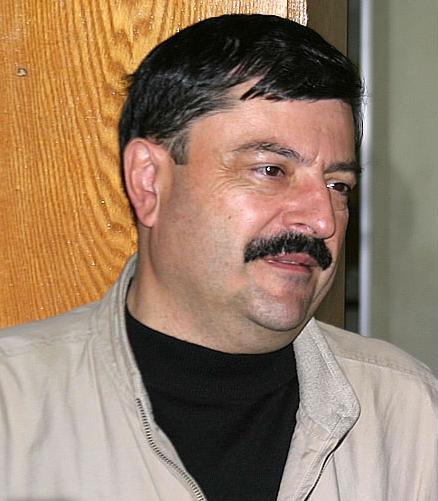
Musa Khiramanovich Manarov

Musa Khiramanovich Manarov
Musa Khiramanovich Manarov (Russian: born 22 March 1951) is a Lak former Soviet cosmonaut who spent 541 days in space.
He was a colonel in the Soviet Air Force and graduated from the Moscow Aviation Institute with an engineering qualification in 1974. Musa was selected as a cosmonaut on 1 December 1978.
From 21 December 1987 to 21 December 1988, he flew as flight engineer on Soyuz TM-4. The flight duration was 365 days 22 hours 38 minutes. From 2 December 1990 to 26 May 1991, he flew again as a flight engineer on Soyuz TM-11. The duration was 175 days, 1 hour, and 50 minutes, the longest continuous time spent in space by anyone at that time. During his 176-day stay, Manarov observed the Earth and worked in space manufacturing. He also performed more than 20 hours of spacewalks.
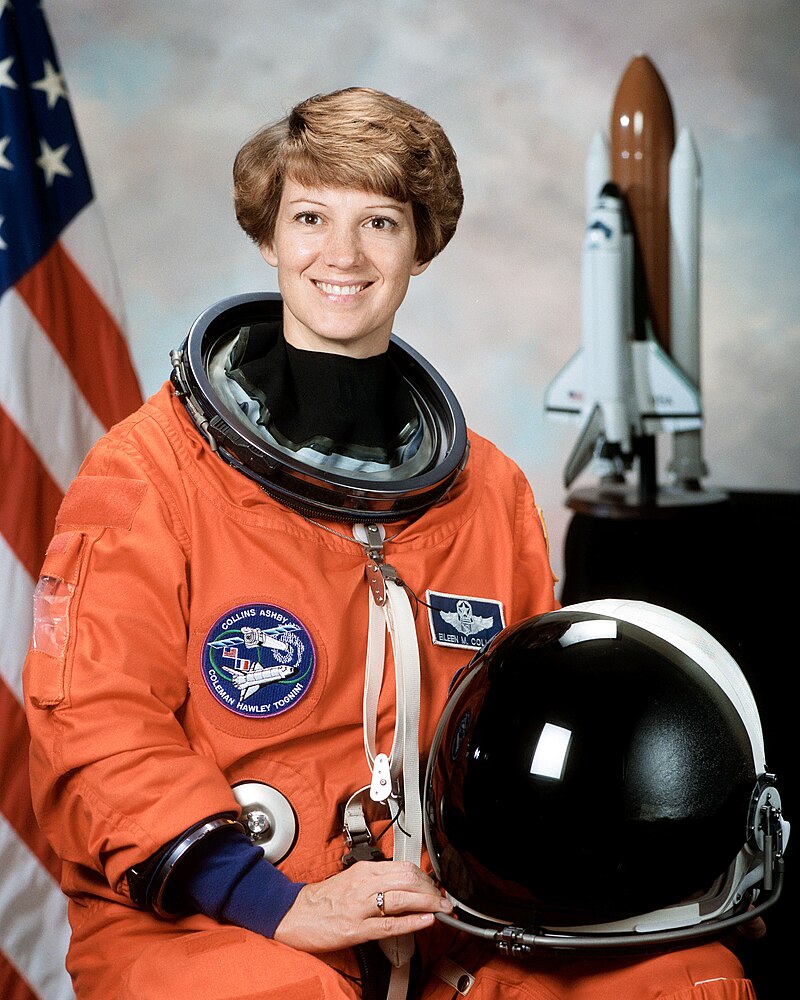
EILEEN MARIE COLLINS

EILEEN MARIE COLLINS
EILEEN MARIE COLLINS was born on November 19, 1956, in Elmira, New York. Selected by NASA in January 1990, Collins became an astronaut in July 1991.
Collins served as pilot on STS-63 (February 3-11, 1995) and STS-84 (May 15-24, 1997), and was the commander on STS-93 (July 22-27, 1999) and STS-114 (July 26 to August 9, 2005). A veteran of four space flights, Collins has logged over 872 hours in space. Collins retired from NASA in May 2006.
STS-63 Discovery (February 3-11, 1995) was the first flight of the new joint Russian-American Space Program. Mission highlights included the rendezvous with the Russian Space Station Mir, operation of Spacehab, the deployment and retrieval of an astronomy satellite, and a space walk. Collins was the first woman pilot of a Space Shuttle.
STS-84 Atlantis (May 15-24, 1997) was NASA's sixth Shuttle mission to rendezvous and dock with the Russian Space Station Mir.
STS-93 Columbia (July 23-27, 1999) was the first Shuttle mission to be commanded by a woman. STS-93 highlighted the deployment of the Chandra X-Ray Observatory. On STS-93, Collins was the first woman Shuttle Commander.
STS-114 Discovery (July 26-August 9, 2005) was the Return to Flight mission during which the Shuttle docked with the International Space Station and the crew tested and evaluated new procedures for flight safety and Shuttle inspection and repair techniques. After a 2-week, 5.8 million mile journey in space, the orbiter and its crew of seven astronauts returned to land at Edwards Air Force Base, California.
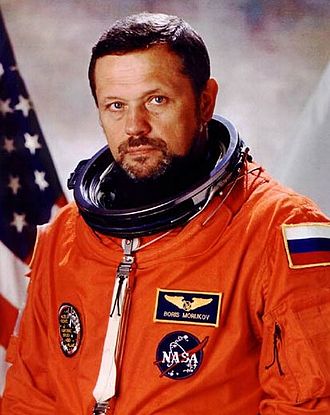
Boris Vladimirovich Morukov

Boris Vladimirovich Morukov
Boris Vladimirovich Morukov (Russian: 1 October 1950 – 1 January 2015) was a Russian physician at the State Research Center RF-Institute for Biomedical Problems (IBMP). He trained with the Russian Federal Space Agency as a research-cosmonaut and flew aboard NASA Space Shuttle mission STS-106 as a mission specialist.
Morukov was first selected for medical-cosmonaut service in 1976. Based on his qualifications, he was continually offered medical-cosmonaut selection and was chosen as a cosmonaut-researcher in 1989..
Morukov served on the crew of STS-106 (8–20, 2000). The STS-106 crew successfully prepared the International Space Station for the arrival of the first permanent crew. The five astronauts and two cosmonauts delivered more than 6,600 pounds of supplies and installed batteries, power converters, a toilet and a treadmill on the Space Station. Two crew members performed a space walk in order to connect power, data and communications cables to the newly arrived Zvezda Service Module and the Space Station. Morukov logged 11 days, 19 hours, and 10 minutes in space.
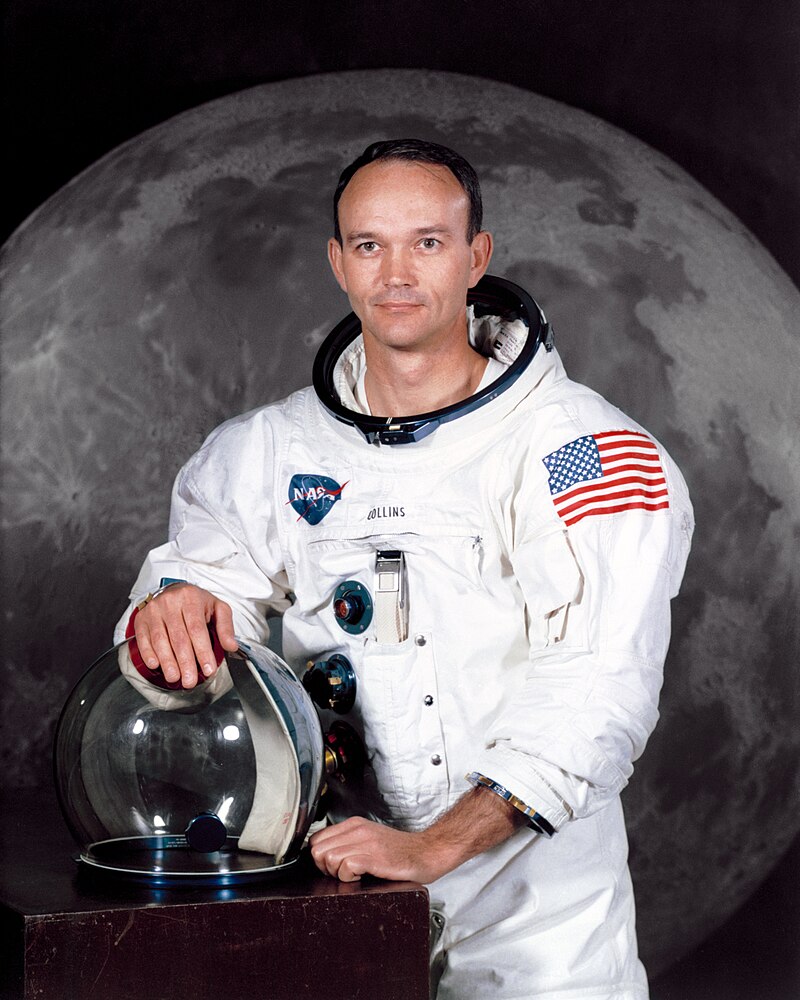
MICHAEL COLLINS

MICHAEL COLLINS
MICHAEL COLLINS was Born in Rome, Italy, on October 31, 1930.
Collins was one of the third group of astronauts named by NASA in October 1963. He served as backup pilot for the Gemini VII mission.
As pilot on the 3-day Gemini X mission, launched July 18, 1966, Collins shared with command pilot John Young in the accomplishments of that record-setting flight. These accomplishments included a successful rendezvous and docking with a separately launched Agena target vehicle and, using the power of the Agena, maneuvering the Gemini spacecraft into another orbit for a rendezvous with a second, passive Agena. Collins' skillful performance in completing two periods of extravehicular activity included the recovery of a micrometeorite detection experiment from the passive Agena. Gemini X attained an apogee of approximately 475 statute miles and traveled a distance of 1,275,091 statute miles--after which splashdown occurred in the West Atlantic, 529 miles east of Cape Kennedy. The spacecraft landed 2.6 miles from the USS GUADALCANAL and became the second spacecraft in the Gemini program to land within eye and camera range of the prime recovery ship.
Collins served as command module pilot on Apollo 11, July 16-24, 1969--the first lunar landing mission. He remained aboard the command module , "Columbia," on station in lunar orbit while Neil Armstrong , spacecraft commander, and Edwin Aldrin, lunar module pilot, descended to the lunar surface in their lunar module "Eagle." Collins performed the final re-docking maneuvers following a successful lunar orbit rendezvous which was initiated by Armstrong and Aldrin from within the "Eagle" after their ascent from the lunar surface. Among the accomplishments of the Apollo 11 mission were collection of lunar surface samples for return to earth, deployment of lunar surface experiments, and an extensive evaluation of the life supporting extravehicular mobility unit worn by astronauts.
Collins completed two space flights, logging 266 hours in space--of which 1 hour and 27 minutes was spent in EVA.
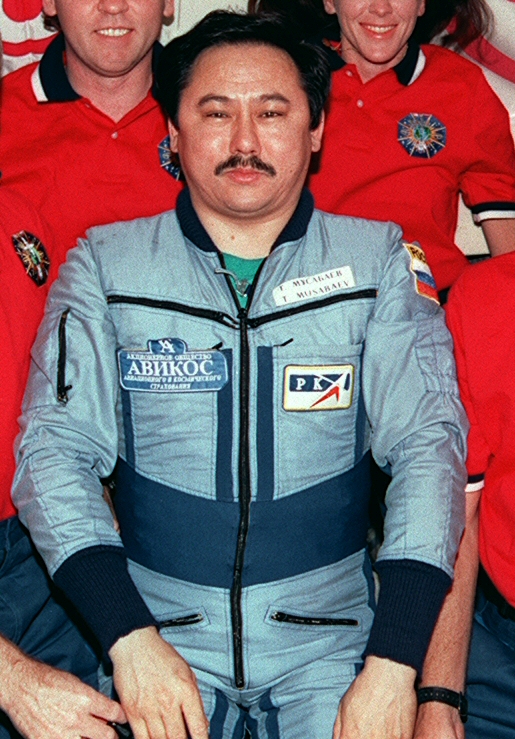
Talgat Amangeldyuly Musabayev

Talgat Amangeldyuly Musabayev
Talgat Amangeldyuly Musabayev (Kazakh: born 7 January 1951) is a Kazakh test pilot and former cosmonaut who flew on three spaceflights. His first two spaceflights were long-duration stays aboard the Russian space station Mir. His third spaceflight was a short duration visiting mission to the International Space Station, which also carried the first paying space tourist Dennis Tito. He retired as a cosmonaut in November 2003. Since 2007 he has been head of Kazakhstan's National Space Agency, KazCosmos.
Musabayev was selected to be a cosmonaut on 11 May 1990.
His first spaceflight was as a crew member of the long-duration mission Mir EO-16, which was launched and landed by the spacecraft Soyuz TM-19 which lasted from 1 July 1994 to 4 November 1994, for a total duration of 125 days 22 hours 53 minutes
His second spaceflight was as Commander of another long-duration expedition called Mir EO-25, which was launched by the spacecraft Soyuz TM-27. The mission lasted from 29 January 1998 to 25 August 25, 1998.
His third mission was as Commander of ISS EP-1, which was a visiting mission to the International Space Station. It was launched by Soyuz TM-32, and was landed by Soyuz TM-31 on 6 May 2001, for a total duration of 7 days 22 hours 4 minutes.[1] This visiting mission was notable for carrying the first ever paying space tourist Dennis Tito.
As of 2007, he was among the top 30 cosmonauts by time in space.
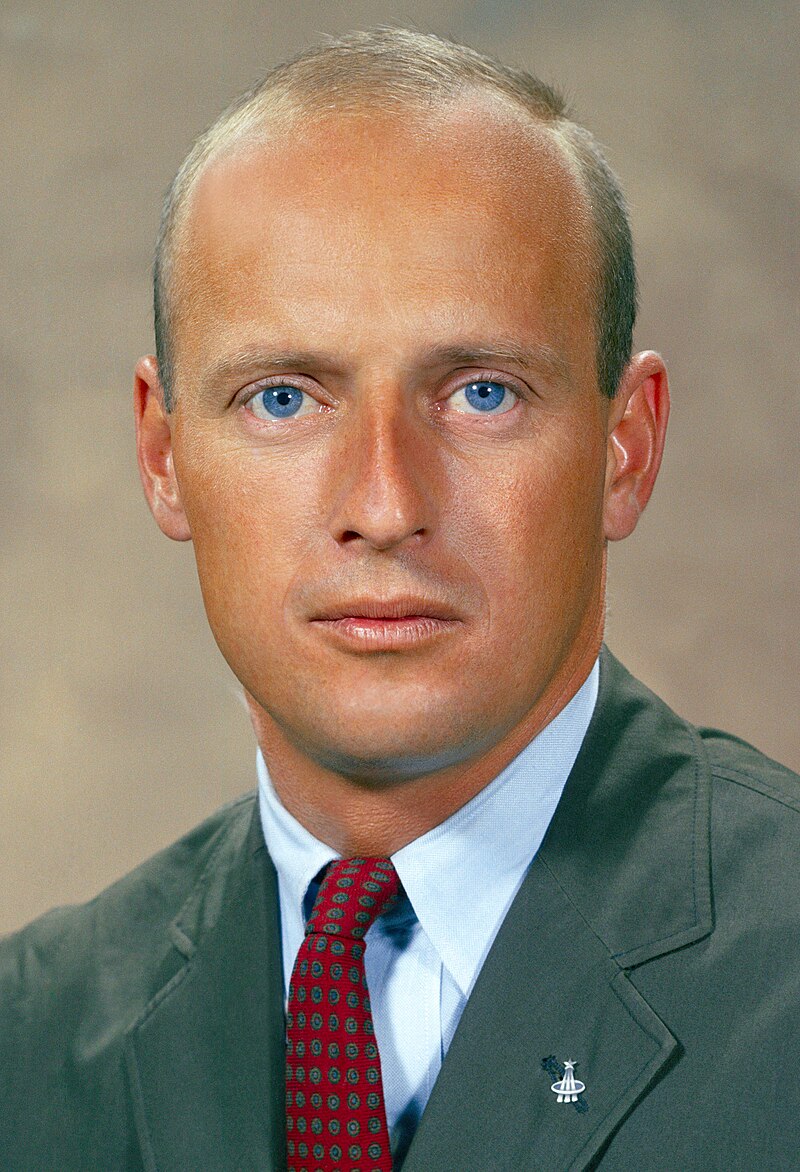
CHARLES CONRAD, JR

CHARLES CONRAD, JR
CHARLES CONRAD, JR., NASA ASTRONAUT (June 2, 1930 - July 8, 1999) born in Philadelphia, Pennsylvania.
In September of 1962, Mr. Conrad was selected as an astronaut by NASA. His first flight was Gemini V, which established the space endurance record and placed the United States in the lead for man-hours in space. As commander of Gemini XI, Mr. Conrad helped to set a world's altitude record. He then served as commander of Apollo XII, the second lunar landing. On Mr. Conrad's final mission, he served as commander of Skylab II, the first United States Space Station.
In December 1973, after serving 20 years (11 of which were as an astronaut in the space program), Mr. Conrad retired from the U.S. Navy.
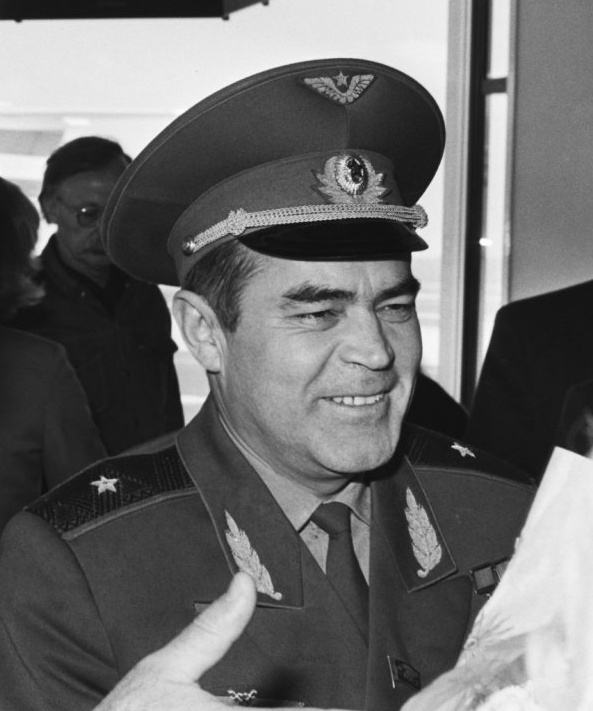
Andriyan Grigoryevich Nikolayev

Andriyan Grigoryevich Nikolayev
Andriyan Grigoryevich Nikolayev (Chuvash and Russian: 5 September 1929 – 3 July 2004) was a Soviet cosmonaut. In 1962, aboard Vostok 3, he became the third Soviet cosmonaut to fly into space.
Nikolayev flew on two space flights: Vostok 3 (becoming the third Soviet cosmonaut) and Soyuz 9. His call sign in these flights was Falcon. On both, he set new endurance records for the longest time a human being had remained in orbit. He also served as backup for the Vostok 2 and Soyuz 8 missions..
Nikolayev was also the first person to make a television broadcast from space, in August 1962.
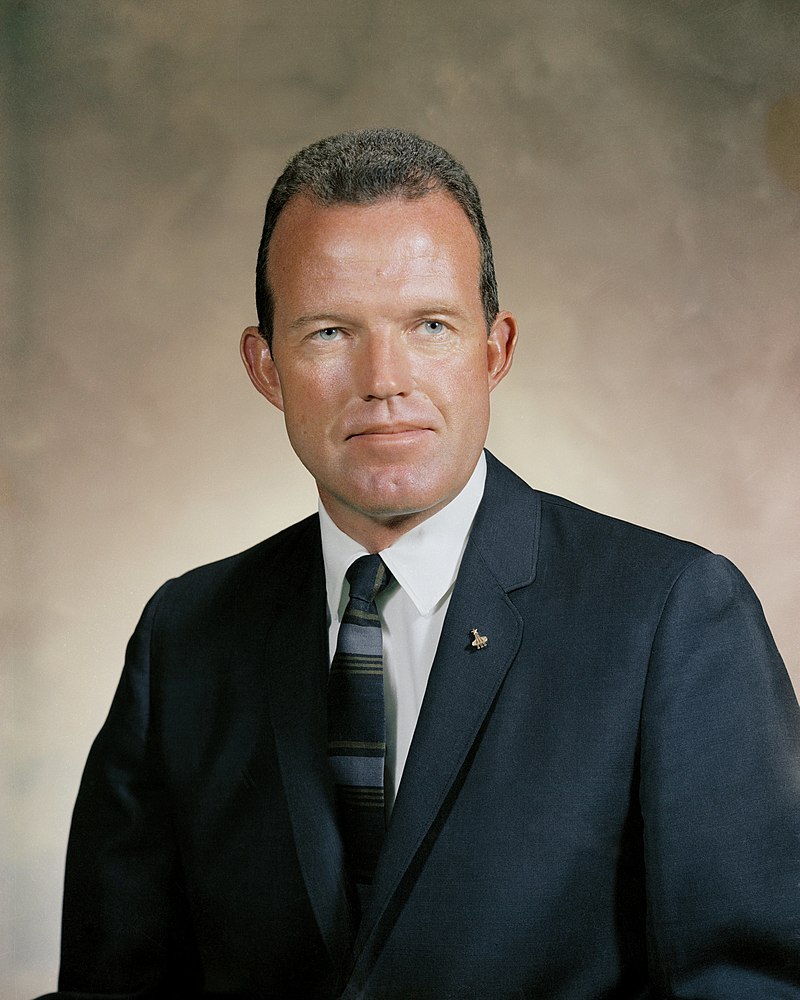
LEROY GORDON COOPER, JR.

LEROY GORDON COOPER, JR.
LEROY GORDON COOPER, JR. NASA ASTRONAUT born in Shawnee, Oklahoma (March 6, 1927 - Oct. 4, 2004).
Colonel Cooper was selected as a Mercury astronaut in April 1959. On May 15-16, 1963, he piloted the “Faith 7” spacecraft on a 22-orbit mission which concluded the operational phase of Project Mercury. During the 34 hours and 20 minutes of flight, Faith 7 attained an apogee of 166 statue miles and a speed of 17,546 miles per hour and traveled 546,167 statute miles.
Cooper served as command pilot of the 8-day 120-revolution Gemini 5 mission which began on August 21, 1965. It was on this flight that he and pilot Charles Conrad established a new space endurance record by traveling a distance of 3,312,993 miles in an elapsed time of 190 hours and 56 minutes. Cooper also became the first man to make a second orbital flight and thus won for the United States the lead in man-hours in space by accumulating a total of 225 hours and 15 minutes.
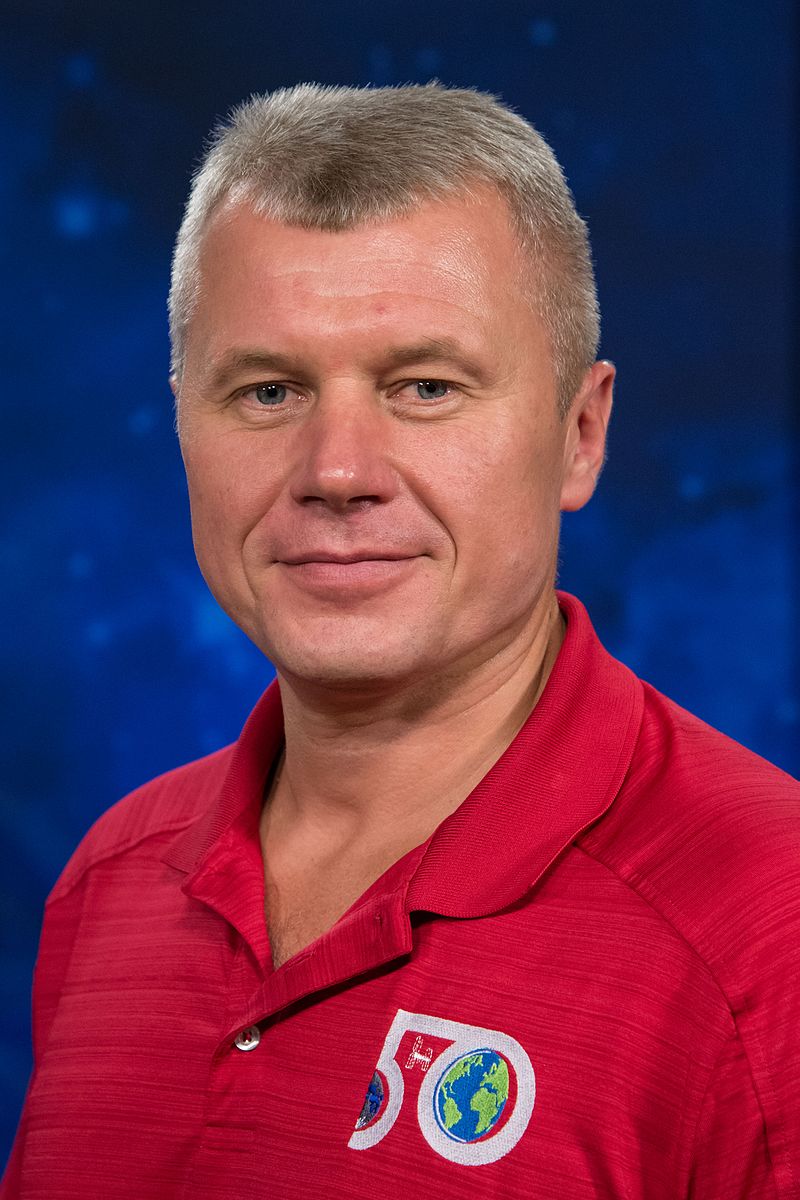
Oleg Viktorovich Novitsky

Oleg Viktorovich Novitsky
Oleg Viktorovich Novitsky (Russian:; born October 12, 1971) is a former Lieutenant Colonel in the Russian Air Force who logged over 700 hours of flight time and was awarded for bravery. He is serving as a Russian cosmonaut with Roscosmos and has participated in multiple expeditions, during which he has spent over 531 days in space.
Novitsky was selected as a cosmonaut in 2006.
He was part of Expedition 33/34 to the international space station where he served as ISS flight engineer. He was launched to space as part of the Soyuz TMA-06M crew on October 23, 2012 and returned on March 16, 2013. Overall time in space was 143 days 16 hours and 15 minutes.
Novitsky returned to space as part of Expedition 50/Expedition 51 which launched on November 17, 2016 on Soyuz MS-03.
Novitsky went to space for the third time in April 2021, launching aboard Soyuz MS-18, alongside Roscosmos cosmonaut Pyotr Dubrov and American astronaut Mark T. Vande Hei. Novitsky landed on MS-18 on 17 October 2021, with actress Yulia Peresild and director Klim Shipenko.
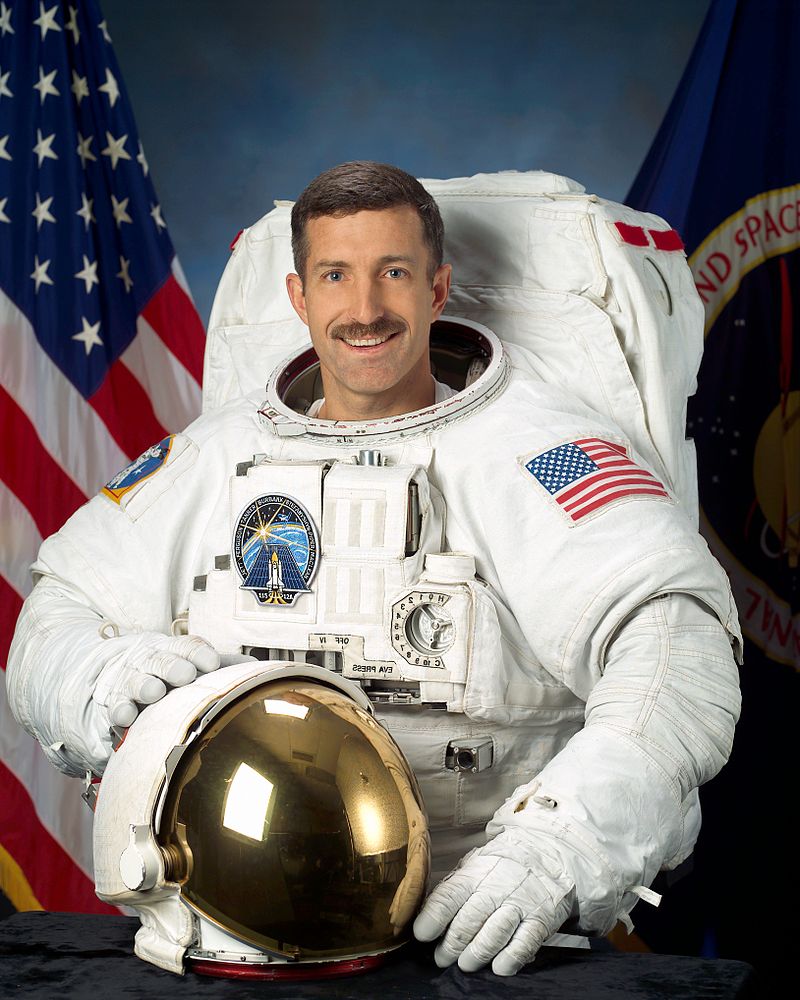
Daniel C. Burbank

Daniel C. Burbank
Daniel C. Burbank was born on July 27, 1961, in Manchester, Connecticut, but considers Yarmouth Port, Massachusetts, to be his home.
Selected by NASA in April 1996, Burbank reported to the Johnson Space Center in August 1996.
Spaceflight Experience: STS-106 Atlantis (September 2000). This was a 12-day International Space Station assembly mission. STS-115 Atlantis (September 2006) International Space Station assembly mission. During the 12-day mission, the crew delivered and installed the P3/P4 truss and solar arrays that provide about one fourth of the station’s electrical power. Burbank was the lead shuttle robotics operator delivering the 35,000 lb P3/P4 truss to ISS and performed a spacewalk to complete truss installation, activate the solar alpha rotary joint and enable the solar array and radiator deployment. Expedition 29/30 (November 14, 2011 to April 27, 2012). With his crewmates, Russian Space Agency cosmonauts Anton Shkaplerov and Anatoly Ivanishin, Burbank launched from the Baikonur Cosmodrome in Kazakhstan on November 14, 2011, aboard the Soyuz TMA-22 and docked to the station on November 16, 2011. They landed their Soyuz spacecraft in Kazakhstan on April 27, 2012. During their 163 days aboard the station, the crew completed dozens of repairs and enhancements to the station’s systems.
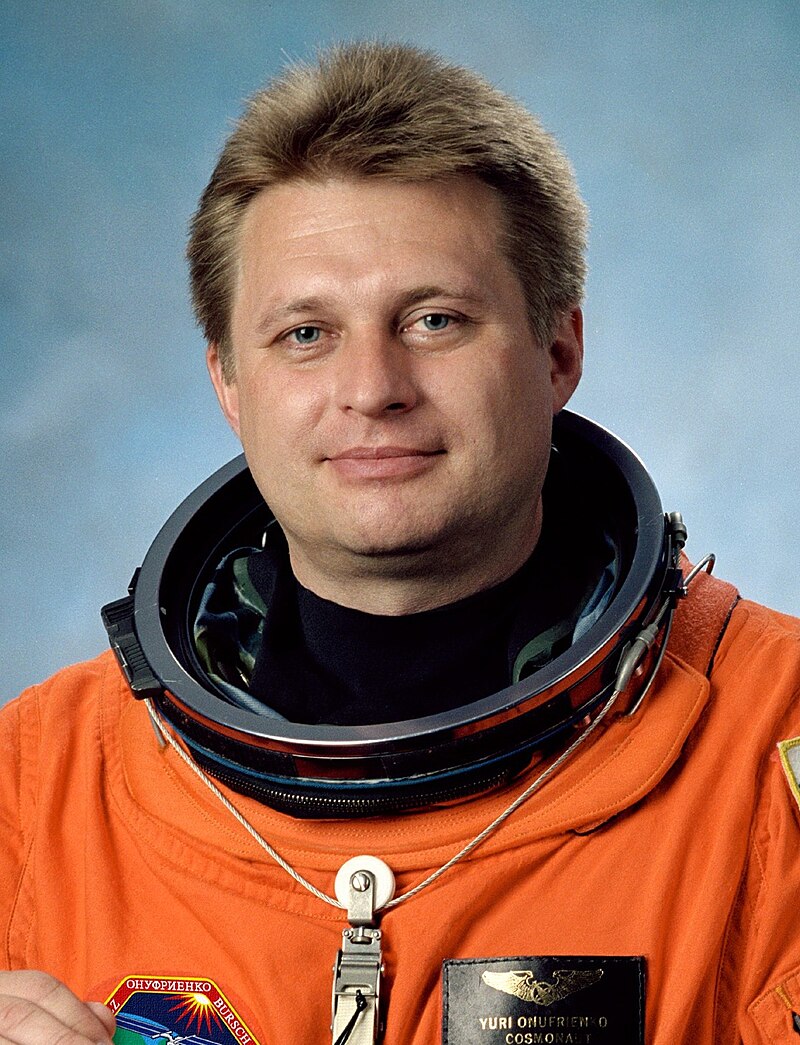
Col. Yuri Ivanovich Onufrienko

Col. Yuri Ivanovich Onufrienko
Col. Yuri Ivanovich Onufrienko (Russian/ Ukrainian: born on 6 February 1961 in Ryasne, Zolochiv Raion of Kharkiv Oblast, Soviet Union (now Ukraine).) is a retired Russian cosmonaut. He is a veteran of two extended spaceflights, aboard the space station Mir in 1996 and aboard the International Space Station in 2001–2002.
From February 21 to September 2, 1996, Onufrienko served as commander of the Mir EO-21 expedition. The Soyuz TM-23 spacecraft carrying Onufrienko with cosmonaut Yury Usachov lifted off from the Baikonur Cosmodrome on February 21, 1996, at 12:34:05 UTC. On September 2, 1996, Onufrienko, Usachev and Claudie André-Deshays returned to Earth on board the Soyuz TM-23 capsule. The spacecraft landed at 07:41:40 UTC 108 km south west of Akmola (Tselinograd). Altogether, on board Soyuz TM-23 and Mir, Onufrienko logged 193 days in space.
Onufrienko again served as commander on ISS Expedition 4. Onufrienko returned to space on board Space Shuttle Endeavour's STS-108 mission. Launched on December 5, 2001, at 22:19:28 UTC from the Kennedy Space Center, Endeavour docked with the International Space Station (ISS) on December 7, 2001, at 20:03 UTC. The Expedition 4 crew returned to Earth aboard STS-111, with Endeavour landing at Edwards Air Force Base, California, on June 19, 2002. In completing this mission, Onufrienko logged an additional 196 days in space, for a total of 389 days of spaceflight.
Onufrienko has performed eight career spacewalks totaling 42 hours and 33 minutes. As of June 2010, he has secured the 11th position in the list of astronauts who have the most spacewalk time. Onufrienko performed six spacewalks during his stay on board the Mir Space Station and performed another two during his visit to the ISS.
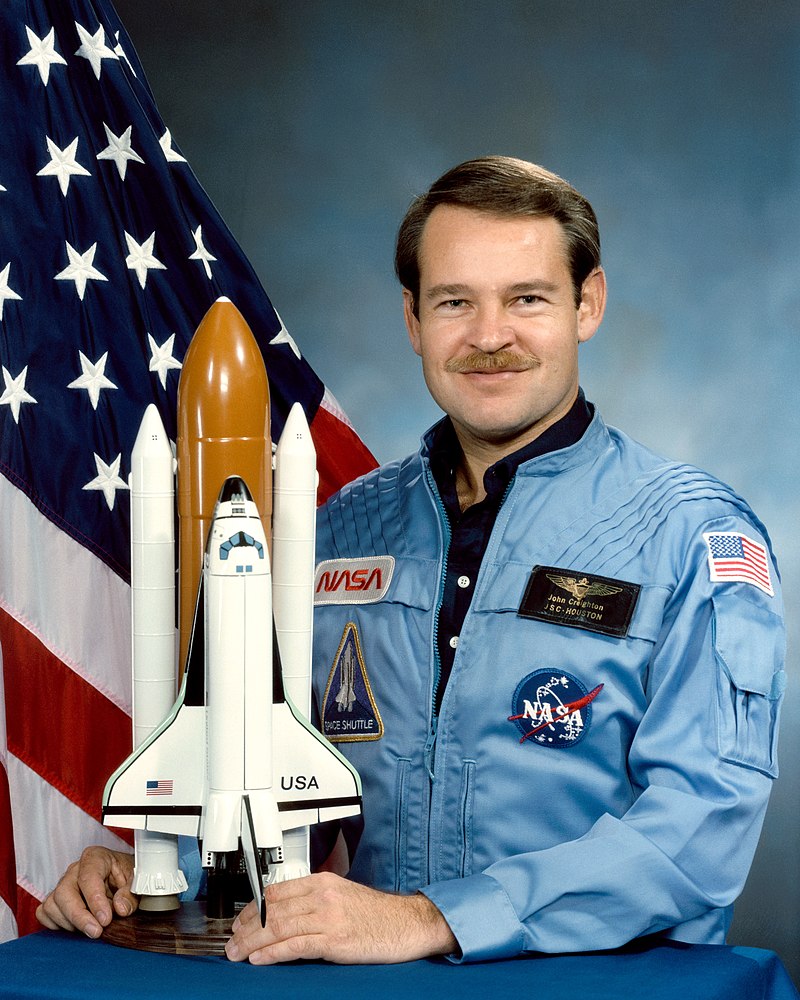
John Oliver Creighton

John Oliver Creighton
John Oliver Creighton (born on April 28, 1943, in Orange, Texas, but considers Seattle, Washington, to be his hometown.), (Capt, USN, Ret.), is a former NASA astronaut who flew three Space Shuttle missions.
Selected as an astronaut candidate by NASA in January 1978, Creighton became an astronaut in August 1979. Creighton served as pilot on STS-51-G (June 17–24, 1985), was spacecraft commander on STS-36 (February 28 to March 4, 1990) and STS-48 (September 12–18, 1991), and has logged over 403 hours in space. Captain Creighton left NASA and retired from the Navy in July 1992.
STS-51-G Discovery (June 17–24, 1985) was a 7-day mission during which the crew deployed communications satellites for Mexico (Morelos), the Arab League (Arabsat), and the United States (AT&T Telstar). Mission duration was 112 Earth orbits in 169 hours and 39 minutes.
STS-36 Atlantis (February 28 to March 4, 1990) carried Department of Defense payloads and a number of secondary payloads. Mission duration was 72 Earth orbits in 106 hours, 19 minutes, 43 seconds.
STS-48 Discovery (September 12–18, 1991) was a 5-day mission during which the crew deployed the Upper Atmosphere Research Satellite (UARS) which is designed to provide scientists with their first complete data set on the upper atmosphere's chemistry, winds and energy inputs. Mission duration was 81 Earth orbits in 128 hours, 27 minutes, 34 seconds.
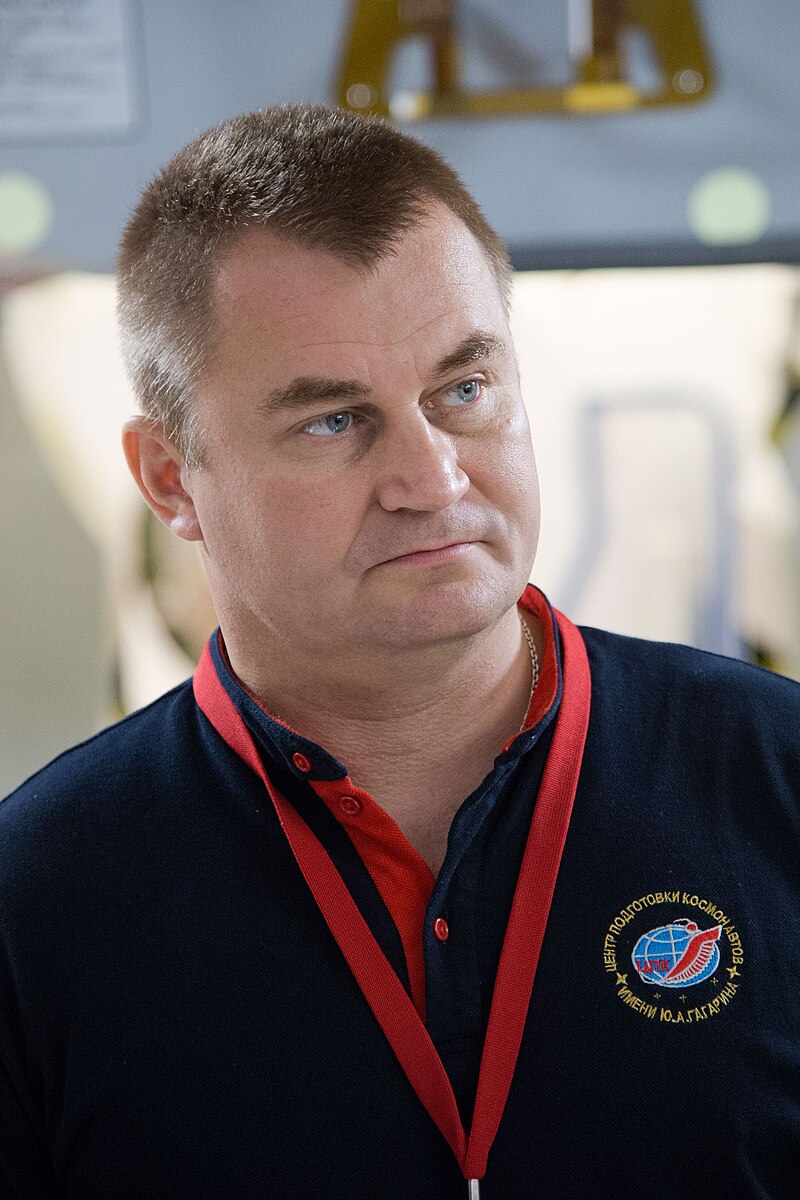
Aleksey Nikolayevich Ovchinin

Aleksey Nikolayevich Ovchinin
Aleksey Nikolayevich Ovchinin (Russian: born 28 September 1971) is a Russian Air Force Major and cosmonaut, who was selected in 2006. Ovchinin made his first spaceflight in 2016, and was assigned as Commander of Soyuz MS-10 in 2018.
He trained as a part of the backup crew for Soyuz TMA-16M, the launch of which took place on 27 March 2015. In the autumn of 2015, Ovchinin and cosmonaut Oleg Skripochka tasted 160 culinary dishes, designed for astronauts on board the ISS, over an 8-day period. Food was evaluated on a 9-point scale.
Ovchinin launched to space on his first flight as the commander of Soyuz TMA-20M which launched on 18 March 2016 21:26 UTC, to join the International Space Station as part of Expedition 47/48. He returned to Earth with his crew mates on 7 September 2016 after 172 days on orbit.
On 11 October 2018 Ovchinin and Nick Hague boarded Soyuz MS-10 on the way to the International Space Station to join Expedition 57, but the launch was aborted mid-flight due to a booster failure; the crew landed safely after a ballistic descent.[11][12] During his MS-10 flight, the Soyuz spacecraft aborted at an altitude of around 50 kilometers (31 miles) and reached an apogee of 93 km (58 mi), just short of the Kármán line, before landing 19 minutes and 41 seconds after launch.
Ovchinin launched to the ISS again on 14 March 2019, travelling on Soyuz MS-12 with American astronauts Nick Hague and Christina Koch. The trio joined the Expedition 59 crew, along with Commander Oleg Kononenko and Flight Engineers David Saint-Jacques and Anne McClain.[14] After the departure of Kononenko, Saint-Jacques and McClain on 24 June 2019, Ovchinin took command of the station for Expedition 60.
In September 2024, he is expected tp travel in Soyuz MS 26 with Oleg Platonov and Aleksader Gorbunov. His return is planned for April 2025.
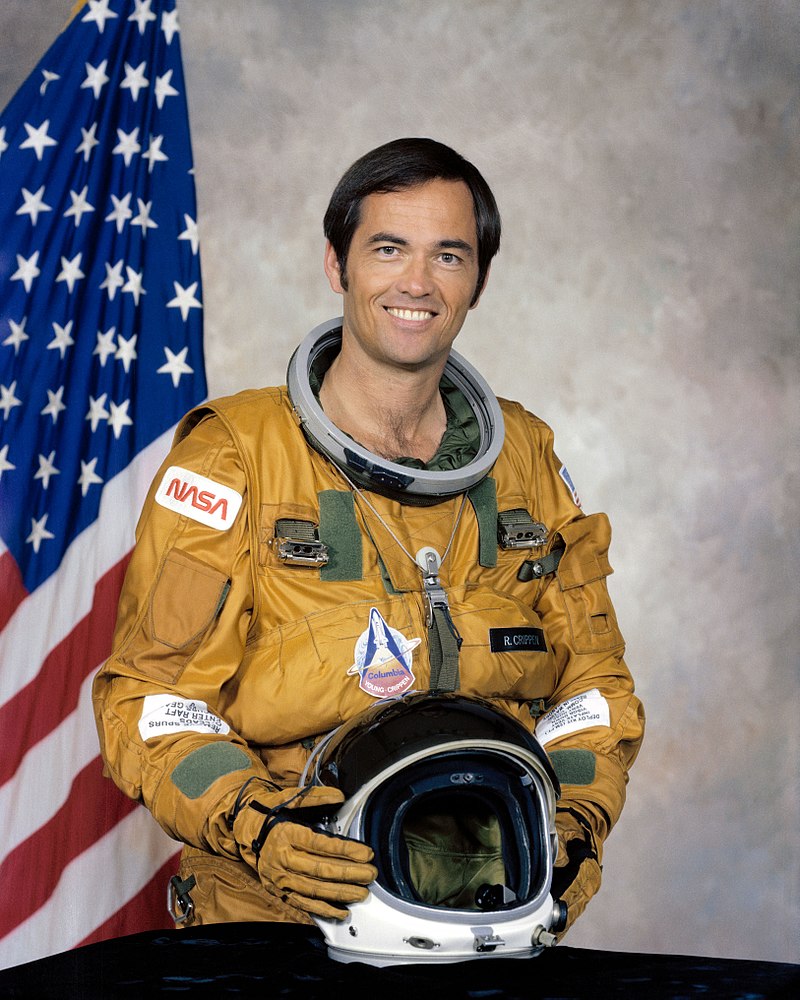
ROBERT L CRIPPEN

ROBERT L CRIPPEN
ROBERT L CRIPPEN was born in Beaumont, Texas, on September 11, 1937.
Crippen became a NASA astronaut in September 1969.. He served as pilot on STS-1 (April 12-14, 1981), and was the spacecraft commander on STS-7 (June 18-24, 1983), STS-41C (April 6-13, 1984) and STS-41G (October 5-13, 1984). A four flight veteran, Crippen has logged over 565 hours in space, orbited the earth 374 times and traveled over 9.4 million miles.
STS-1 (April 12-14, 1981) was the first orbital test flight of the Shuttle Columbia, the first true manned spaceship. It was also the first manned vehicle to be flown into orbit without benefit of previous unmanned "orbital" testing; the first to launch with wings using solid rocket boosters. It was also the first winged reentry vehicle to return to a conventional runway landing, weighing more than 99-tons as it was braked to a stop on the dry lakebed at Edwards Air Force Base, California. Mission duration was 54 hours, 20 minutes, 53 1 seconds STS-7 (June 18-24, 1983) was the second flight for the Orbiter Challenger. Mission duration was 146 hours, 23 minutes, 59 seconds. STS-41C (April 6-13, 1984) was a 7-day mission during which the crew successfully deployed the Long Duration Exposure Facility (LDEF. Mission duration was 167 hours, 40 minutes, 07 seconds. STS-41G (October 5-13, 1984) was the first mission with a 7-person crew. During the 8-day flight the crew deployed the Earth Radiation Budget Satellite, conducted scientific observations of the earth. Mission duration was 197 hours, 23 minutes, 37 seconds and concluded with a landing at Kennedy Space Center, Florida
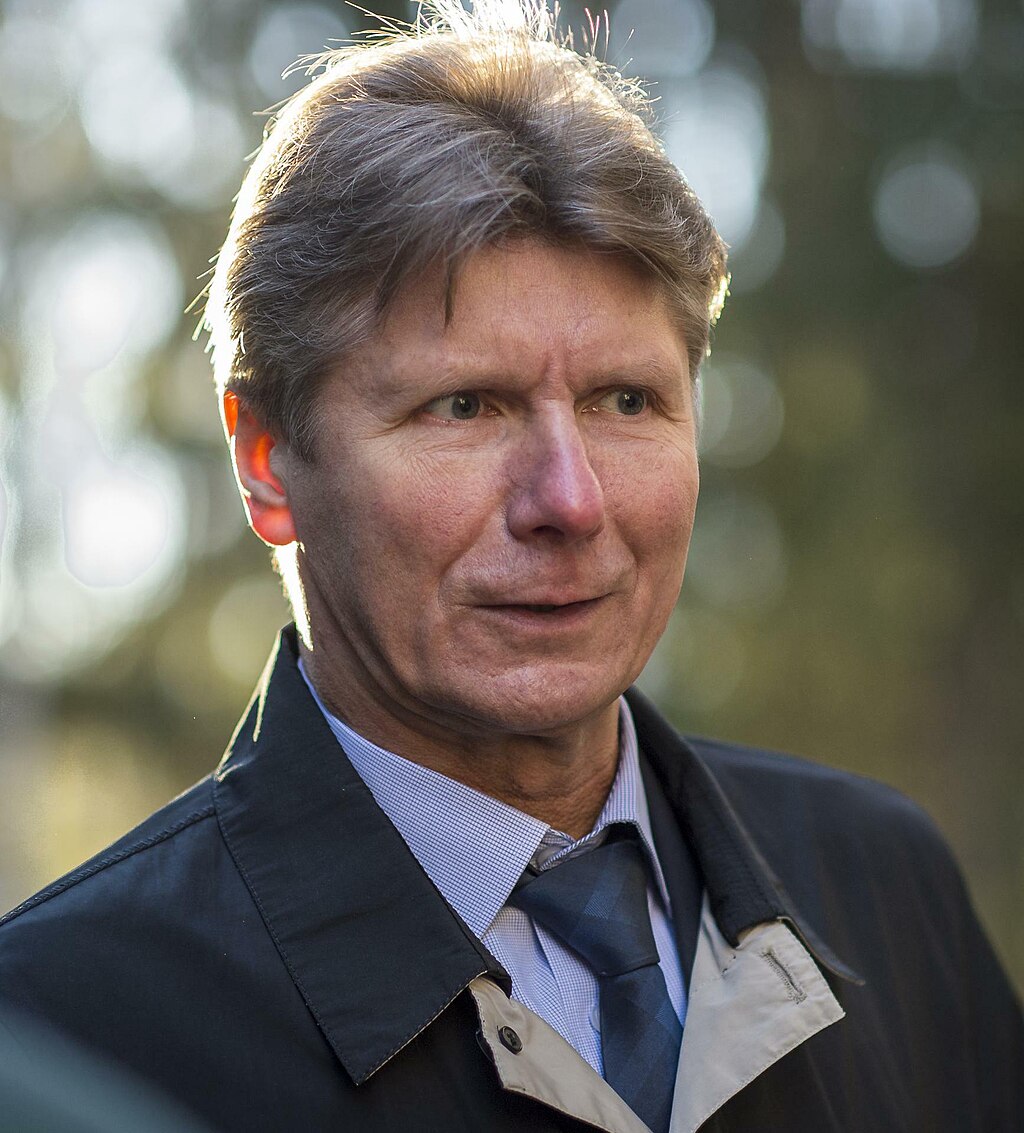
Gennady Ivanovich Padalka

Gennady Ivanovich Padalka
Gennady Ivanovich Padalka (Russian: born 21 June 1958 in Krasnodar, Soviet Union) is a Russian Air Force officer and a Roscosmos cosmonaut. Padalka currently holds the world record for the most time spent in space, at 879 days. He worked on both Mir and the International Space Station.
Gennady Padalka was selected as a cosmonaut candidate to start training at the Gagarin Cosmonaut Training Center in 1989.
On 13 August 1998 Gennady launched with Sergei Avdeyev aboard Soyuz TM-28 to become the crew of Mir Expedition 26, whose primary mission was to make repairs to life support systems and prepare the station for deorbit, which was to take place after Expedition 27. He returned to Earth on board the Soyuz TM-28 capsule on 28 February 1999. The Soyuz TM-28 undocked from the Kvant rear docking port on 27 February at 22:52 GMT and landed in Kazakhstan on 28 February at 02:14 GMT. Padalka accumulated 198 days and 16 hours of space travel during the mission.
In March 2002 Padalka was assigned as commander of the ISS Expedition 9 crew. Expedition 9 was launched from the Baikonur Cosmodrome, Kazakhstan aboard the Soyuz TMA-4 spacecraft, and docked with the ISS on 21 April 2004. The Expedition 9 mission concluded after undocking and landed back in Kazakhstan on 23 October 2004. In completing this mission, Padalka logged an additional 187 days, 21 minutes and 17 seconds in space, and 15 hours, 45 minutes and 22 seconds of EVA time.
Padalka returned to the ISS in 2009 to serve as commander of Expeditions 19 and 20. He commanded the Soyuz TMA-14 spacecraft which was launched from Baikonur on 26 March 2009 and docked with the ISS two days later. Padalka also commanded the first six-person space station crew (Expedition 20), returning to Earth on 11 October 2009.
He was launched to the ISS aboard Soyuz TMA-04M on 15 May 2012, along with fellow crew members Sergei Revin and Joseph Acaba and arrived at the space station on 17 May at 4:36 UTC. He, along with Revin and Acaba, returned to Earth on 17 September 2012
Padalka returned to the ISS aboard Soyuz TMA-16M during Expedition 43 and Expedition 44, along with Mikhail Korniyenko and Scott Kelly. He landed on Soyuz TMA-16M on 12 September 2015. Padalka set the record for most time in space of anyone in history.
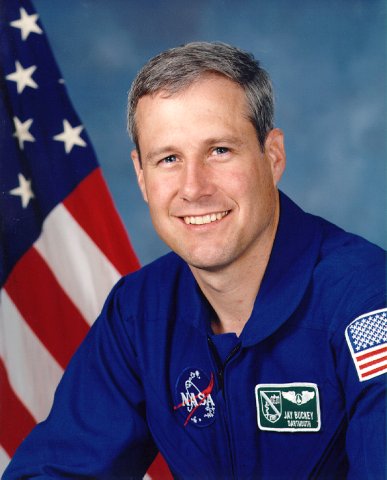
Jay Clark Buckey

Jay Clark Buckey
Jay Clark Buckey, Jr. (born June 6, 1956, in New York City) is an American physician and astronaut who flew aboard one Space Shuttle mission (STS-90) as a Payload Specialist.
In 1998 he was a Payload Specialist aboard NASA Space Shuttle flight STS-90 as part of the Neurolab mission from April 17 to May 3, 1998. Aboard the Neurolab Mission, Buckey was the Payload Specialist for the experiment "Cardiovascular Adaptation to Zero-Gravity" and assisted with other Spacelab Life Sciences experiments. During the 16-day Spacelab flight, the seven person crew aboard Space Shuttle Columbia served as both experiment subjects and operators for 26 individual life science experiments focusing on the effects of microgravity on the brain and nervous system. The STS-90 flight orbited the Earth 256 times, covered 6.3 million miles, and logged him over 381 hours in space.
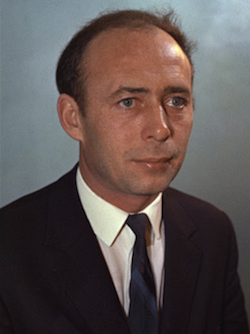
Viktor Ivanovich Patsayev

Viktor Ivanovich Patsayev
Viktor Ivanovich Patsayev (Russian: 19 June 1933 – 30 June 1971) was a Soviet cosmonaut who flew on the Soyuz 11 mission and was part of the third space crew to die during a space flight. On board the space station Salyut 1 he operated the Orion 1 Space Observatory (see Orion 1 and Orion 2 Space Observatories); he became the first man to operate a telescope outside the Earth's atmosphere.
After a normal re-entry, the capsule was opened and the crew was found dead. It was discovered that a valve had opened just prior to leaving orbit that had allowed the capsule's atmosphere to vent away into space, suffocating the crew. One of Patsayev's hands was found to be bruised, and he may have been trying to shut the valve manually at the time he lost consciousness.
Patsayev's ashes were interned in the Kremlin Wall on Red Square in Moscow. He was posthumously awarded the title of Hero of the Soviet Union, the Order of Lenin and the title of Pilot-Cosmonaut of the USSR. The lunar crater Patsaev and the minor planet 1791 Patsayev are named for him.
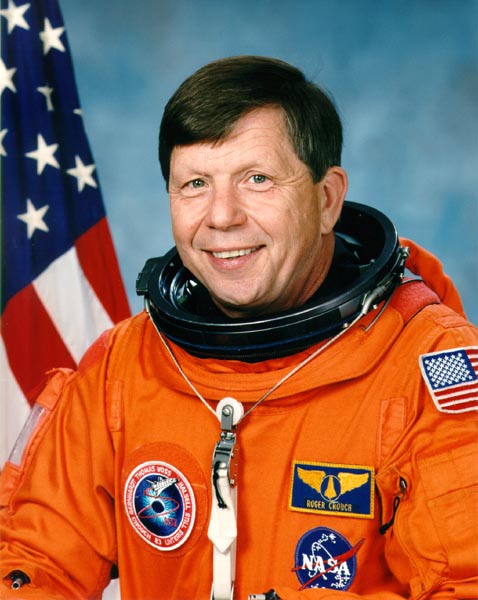
Roger Keith Crouch

Roger Keith Crouch
Roger Keith Crouch (born on September 12, 1940 in Jamestown, Tennessee) is an American scientist and astronaut who flew as a payload specialist on two NASA Space Shuttle missions in 1997.
He flew as a payload specialist on STS-83 (April 4–8, 1997) and STS-94 (July 1–17, 1997) and logged over 471 hours in space. STS-83, the Microgravity Science Laboratory (MSL-1) Spacelab mission, was cut short because of problems with one of the Shuttle’s fuel cell power units. Mission duration was 95 hours and 12 minutes, traveling 1.5 million miles in 63 orbits. STS-94 was a reflight of the MSL-1 and focused on materials and combustion science research. Mission duration was 376 hours and 45 minutes, traveling 6.3 million miles in 251 orbits of the Earth.
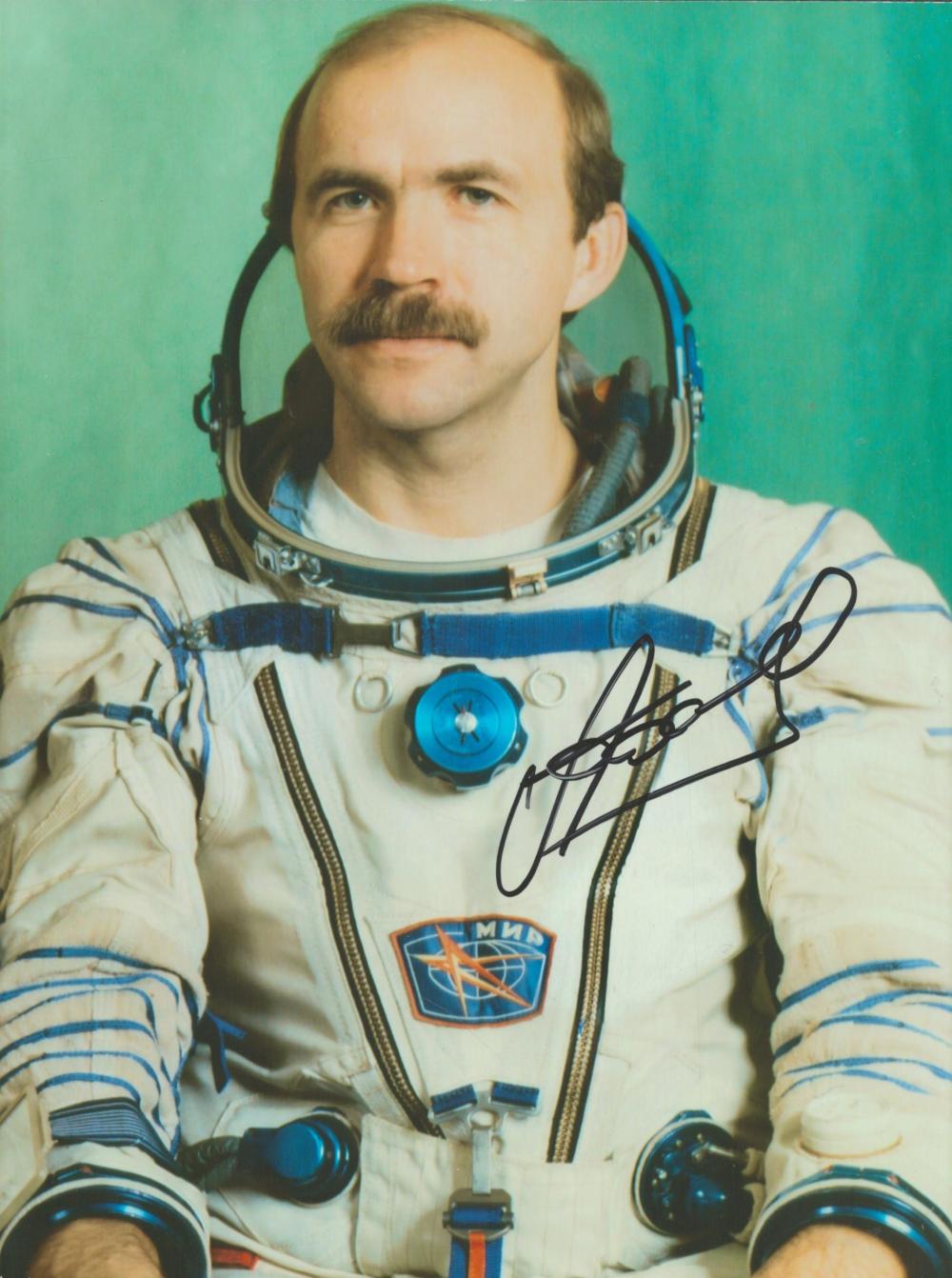
Aleksandr Fyodorovich Poleshchuk

Aleksandr Fyodorovich Poleshchuk
Aleksandr Fyodorovich Poleshchuk (Russian: born on October 30, 1953 in Cheremkhovo, Irkutsk region) is a former Russian cosmonaut.
In February 1989 he was selected as a test cosmonaut candidate (1989 Cosmonaut Candidates Class, Group 14, Civil Specialists). In 1992 he was selected as the backup flight engineer of the Soyuz TM-15 joint Russian-French mission, and consequently nominated as the flight engineer of the prime crew of Soyuz TM-16. In space from January 24 to July 22, 1993, he participated in a 179-day space flight with Gennady Manakov. During the flight he performed two EVAs totaling 9 hours and 58 minutes. Also testing of the androgynous peripheral docking subassembly of the Kristall module was performed.
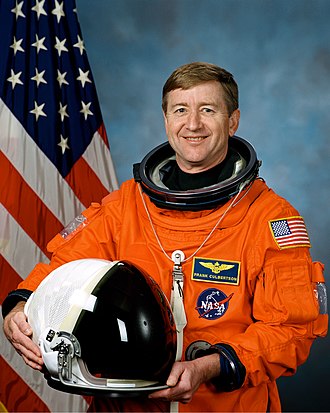
FRANK L. CULBERTSON, JR

FRANK L. CULBERTSON, JR
FRANK L. CULBERTSON, JR was born on May 15, 1949, in Charleston, South Carolina, but considers Holly Hill to be his hometown.
A veteran of three space flights, Culbertson has logged over 144 days in space.
He was part of STS-38 Atlantis (November 15-20, 1990) five-day mission during which the crew conducted Department of Defense operations. The mission concluded after 80 orbits of the Earth in 117 hours, 54 minutes, 28 seconds. STS-51 Discovery (September 12-22, 1993) was a ten-day mission during which the crew deployed the U.S. Advanced Communications Technology Satellite (ACTS/TOS), and the Shuttle Pallet Satellite (ORFEUS/SPAS) carrying U.S. and German scientific experiments, including an ultraviolet spectrometer. A seven-hour EVA was also conducted to evaluate Hubble Space Telescope repair tools and methods. After the SPAS spacecraft had completed six days of free flight some 40 miles from Discovery, the crew completed a successful rendezvous and recovered the SPAS with the Shuttle's robot arm. The mission concluded with the first night landing of a Shuttle at the Kennedy Space Center. Mission duration was 158 Earth orbits in 236 hours and 11 minutes. The Expedition-3 crew launched on August 10, 2001 aboard STS-105 Discovery and docked with the International Space Station (ISS) on August 12, 2001. Culbertson lived and worked aboard the station for a total of 129 days and was in command of the station for 117 days. The Expedition-3 crew left the station on December 15 aboard STS-108 Endeavour, landing at Kennedy Space Center, Florida, on December 17, 2001
135.
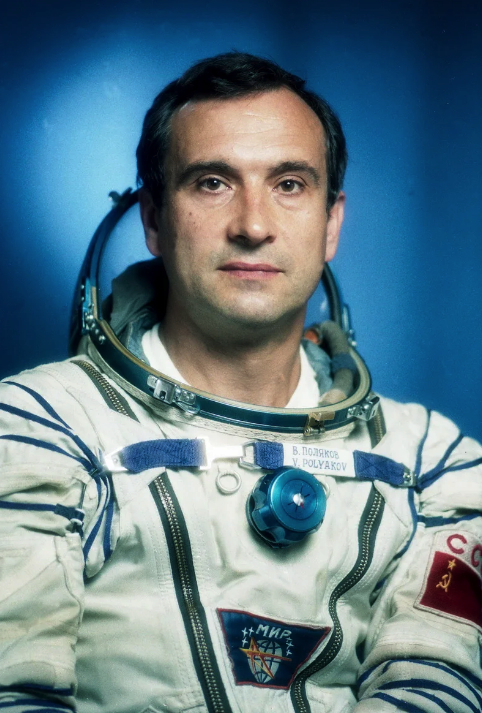
Valeri Vladimirovich Polyakov

Valeri Vladimirovich Polyakov
Valeri Vladimirovich Polyakov (27 April 1942 – 7 September 2022) born in Valeri Ivanovich Korshunov, was a Soviet and Russian cosmonaut. He is the record holder for the longest single stay in space, staying aboard the Mir space station for more than 14 months (437 days 18 hours) during one trip. His combined space experience was more than 22 months.
Polyakov was selected as a cosmonaut in Medical Group 3 on 22 March 1972. His first flight into space occurred on Soyuz TM-6 in 1988. After staying aboard the Mir space station and conducting research for 240 days, Polyakov returned to Earth aboard Soyuz TM-7. His first words upon return were "We can fly to Mars.”
Polyakov's second spaceflight, the longest human spaceflight in history, began on 8 January 1994 with the launch of the Soyuz TM-18 mission. He spent approximately 437 days aboard Mir, conducting experiments and performing scientific research. During this flight, he completed just over 7,000 orbits of the Earth. On 9 January 1995, after 366 days in space, Polyakov formally broke the spaceflight duration record previously set by Vladimir Titov and Musa Manarov six years earlier. He returned to Earth aboard Soyuz TM-20 on 22 March 1995. Upon landing, Polyakov opted not to be carried the few feet between the Soyuz capsule and a nearby lawn chair, instead walking the short distance. In doing so, he wished to prove that humans could be physically capable of working on the surface of Mars after a long-duration transit phase
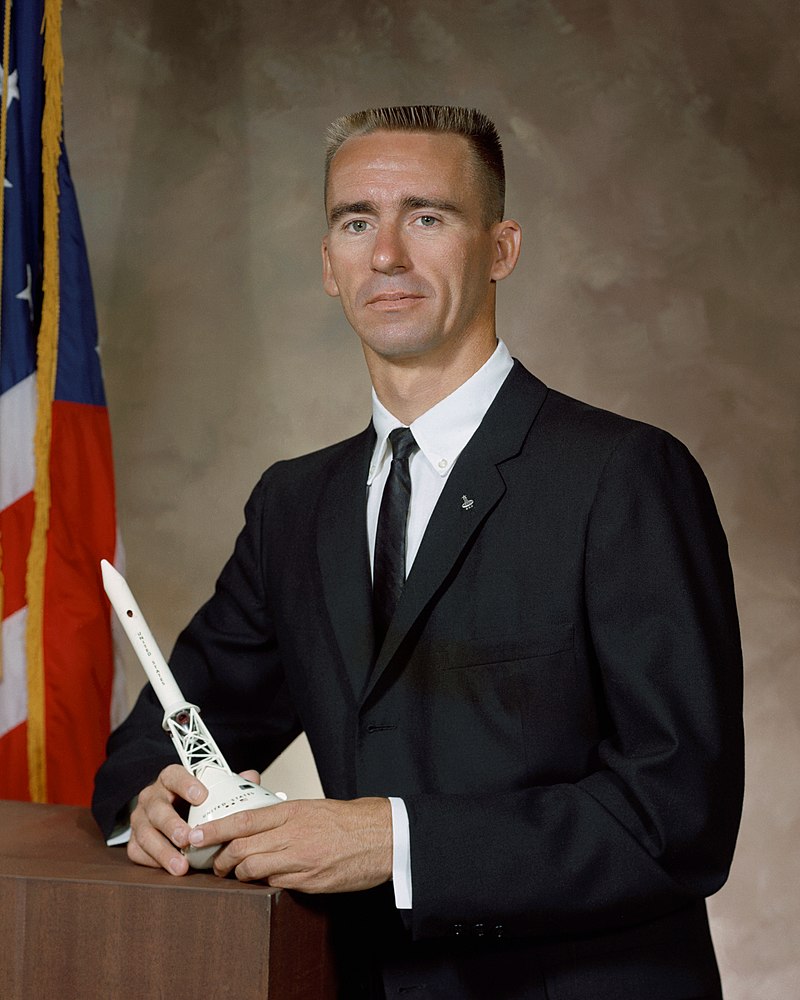
WALTER CUNNINGHAM

WALTER CUNNINGHAM
WALTER CUNNINGHAM, was born on March 16, 1932, in Creston, Iowa. Grown children, Brian and Kimberly.
Selected by NASA in 1963, Cunningham was a member of NASA’s third astronaut class.
On October 11, 1968, Cunningham piloted the eleven-day flight of Apollo 7, the first manned flight test of the third generation U.S. spacecraft. With Walter M. Schirra, Jr. and Donn F. Eisele, Cunningham participated and executed maneuvers enabling the crew to perform exercises in transposition and docking and lunar orbit rendezvous with the S-IVB stage of their Saturn IB launch vehicle and provided the first live television transmission of onboard crew activities. The 263-hour, 4.5 million mile flight was successfully concluded on October 22, 1968, with splashdown occurring in the Atlantic. Apollo 7 established a world record for greatest mass lifted into orbit and remains the longest, most successful first test flight of any new flying machine.
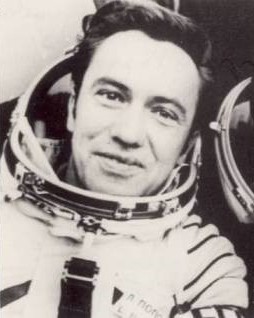
Leonid Ivanovich Popov

Leonid Ivanovich Popov
Leonid Ivanovich Popov (Russian: born on August 31, 1945) is a former Soviet cosmonaut.
Popov was born in Oleksandriia, Kirovohrad Oblast, Ukrainian SSR. He was selected as a cosmonaut on April 27, 1970, and flew as Commander on Soyuz 35, Soyuz 40 and Soyuz T-7, logging 200 days, 14 hours, and 45 minutes in space before his retirement on June 13, 1987.
138
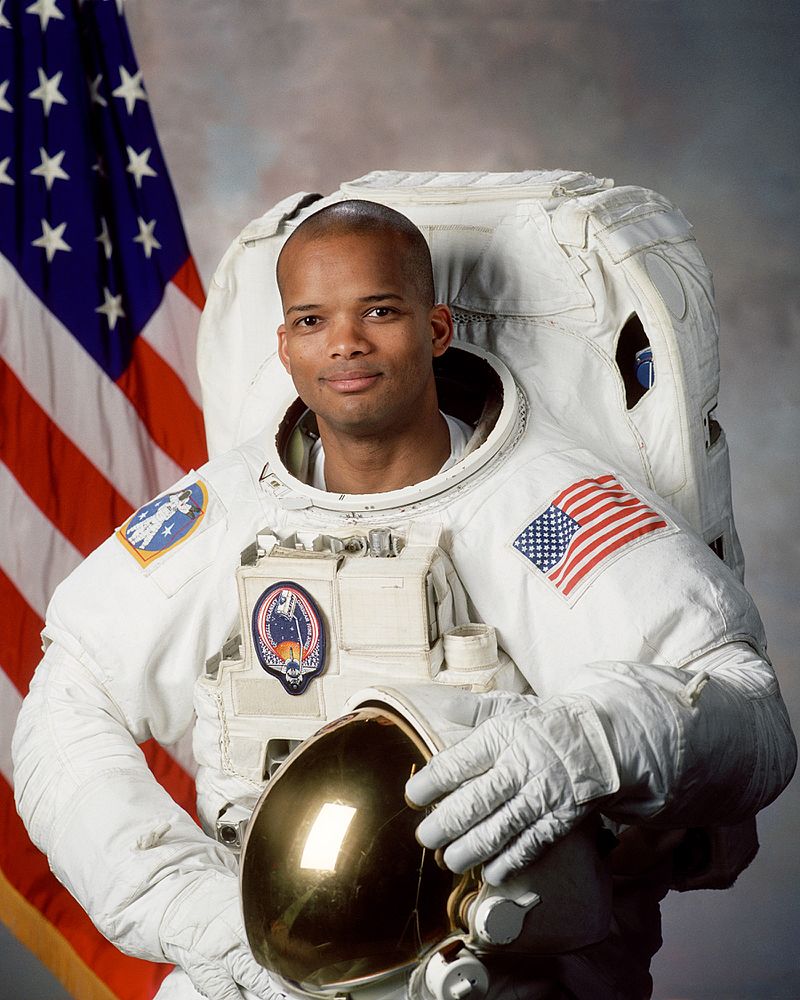
Robert Lee Curbeam Jr.

Robert Lee Curbeam Jr.
Robert Lee Curbeam Jr. (born March 5, 1962) is a former NASA astronaut and captain in the United States Navy. He currently holds the record for the most spacewalks during a single spaceflight, accomplished during the STS-116 mission, when Curbeam completed four spacewalks.
Selected by NASA in December 1994, Curbeam reported to the Johnson Space Center in March 1995. He is a veteran of three space flights: STS-85 in 1997, STS-98 in 2001, STS-116 in 2006, and has logged over 901 hours in space, including over 45 hours during three spacewalks.
STS-85 (August 7–19, 1997) was a 12-day mission during which the crew deployed and retrieved the CRISTA-SPAS payload, operated the Japanese Manipulator Flight Demonstration (MFD) robotic arm, studied changes in the Earth's atmosphere, and tested technology destined for use on the future International Space Station.
STS-98 (February 7–20, 2001) continued the task of building and enhancing the International Space Station by delivering the U.S. laboratory module Destiny. The Shuttle spent seven days docked to the station while Destiny was attached. In helping to complete its assembly, Curbeam logged over 19 EVA hours in 3 space walks.
STS-116 (December 9–22, 2006), launched December 9, 2006, at 8:47 p.m. EST, was a mission to the International Space Station. The mission involved the installation of a new truss segment and the rewiring of the station's electrical system. During the mission, Curbeam was the EVA crewmember for the record-breaking four spacewalks
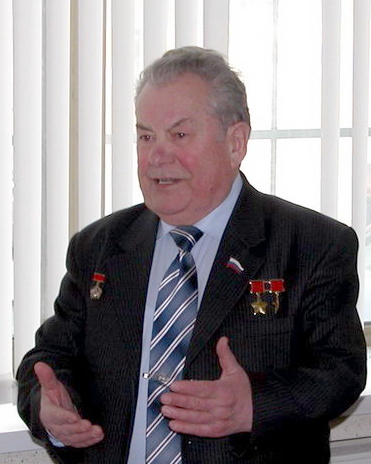
Pavel Romanovich Popovich

Pavel Romanovich Popovich
Pavel Romanovich Popovich (Russian:, Ukrainian: Pavlo Romanovych Popovych) (5 October 1930 – 29 September 2009) was a Soviet cosmonaut.
Popovich was the fourth cosmonaut in space, the sixth person in orbit, the eighth person and first Ukrainian in space.
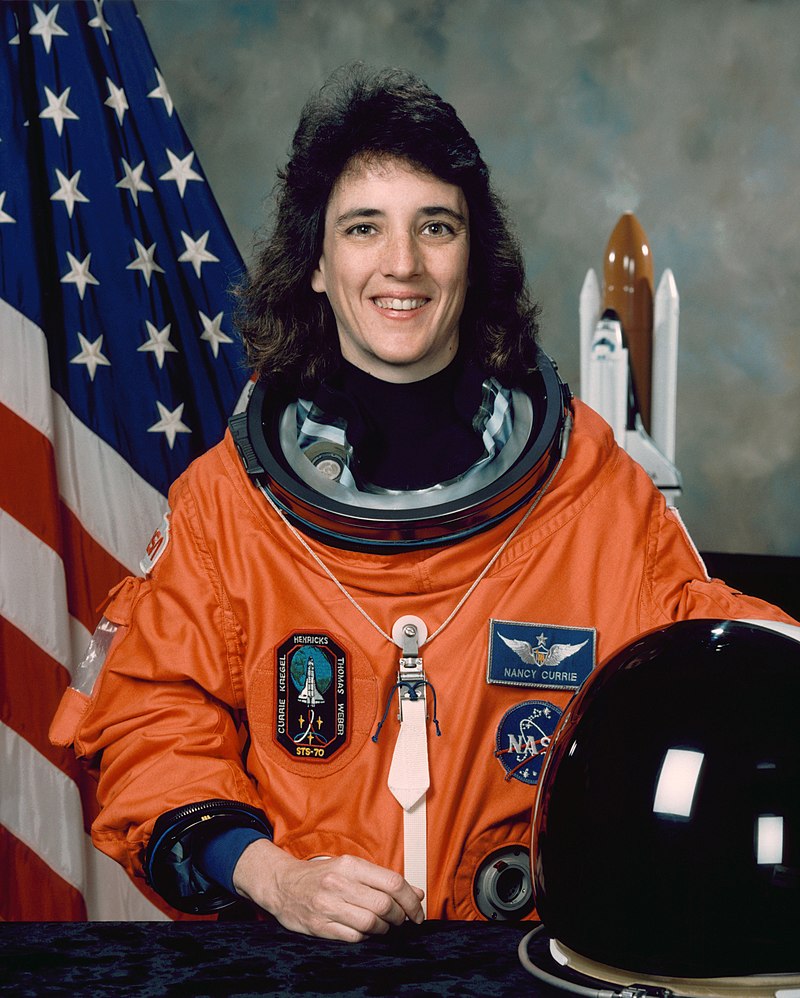
Nancy Jane Currie-Gregg

Nancy Jane Currie-Gregg
Nancy Jane Currie-Gregg (née Decker; former married names Sherlock and Currie; born December 29, 1958) is an American engineer, United States Army officer and a NASA astronaut.[3] Currie-Gregg has served in the United States Army for over 22 years and holds the rank of colonel. With NASA, she has participated in four space shuttle missions: STS-57, STS-70, STS-88, and STS-109, accruing 1,000 hours in space
Currie was assigned to NASA’s Johnson Space Center in September 1987 as a flight simulation engineer. She was selected as an astronaut in 1990. A veteran of four space shuttle missions, she has accrued 1,000 hours in space. She flew as mission specialist 2, flight engineer, on STS-57 (1993), STS-70 (1995), STS-88 (the first International Space Station assembly mission - 1998) and STS-109 (2002).
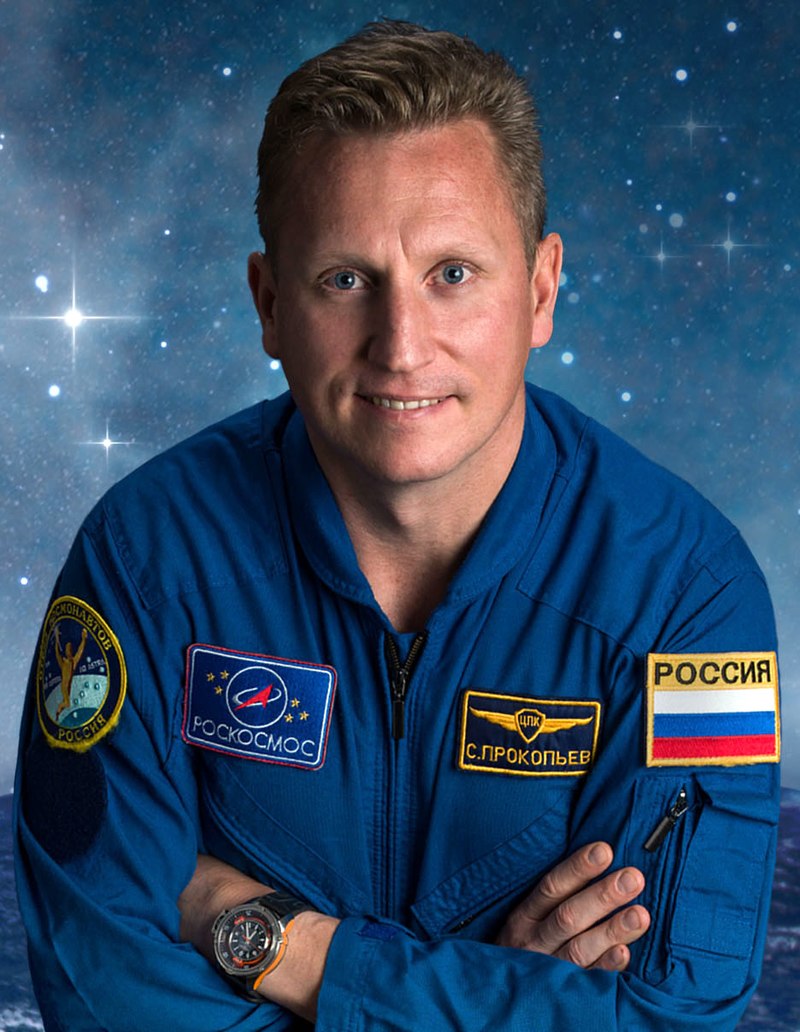
Sergey Valeryevich Prokopyev

Sergey Valeryevich Prokopyev
Sergey Valeryevich Prokopyev (Russian: born 19 February 1975) is a Russian cosmonaut. On 6 June 2018 he launched on his first flight into space aboard Soyuz MS-09 and spent 197 days in space as a flight engineer on Expedition 56/57. He is currently in space, having launched in September 2022 aboard Soyuz MS-22 and is currently scheduled to return onboard Soyuz MS-23 in September, 2023.
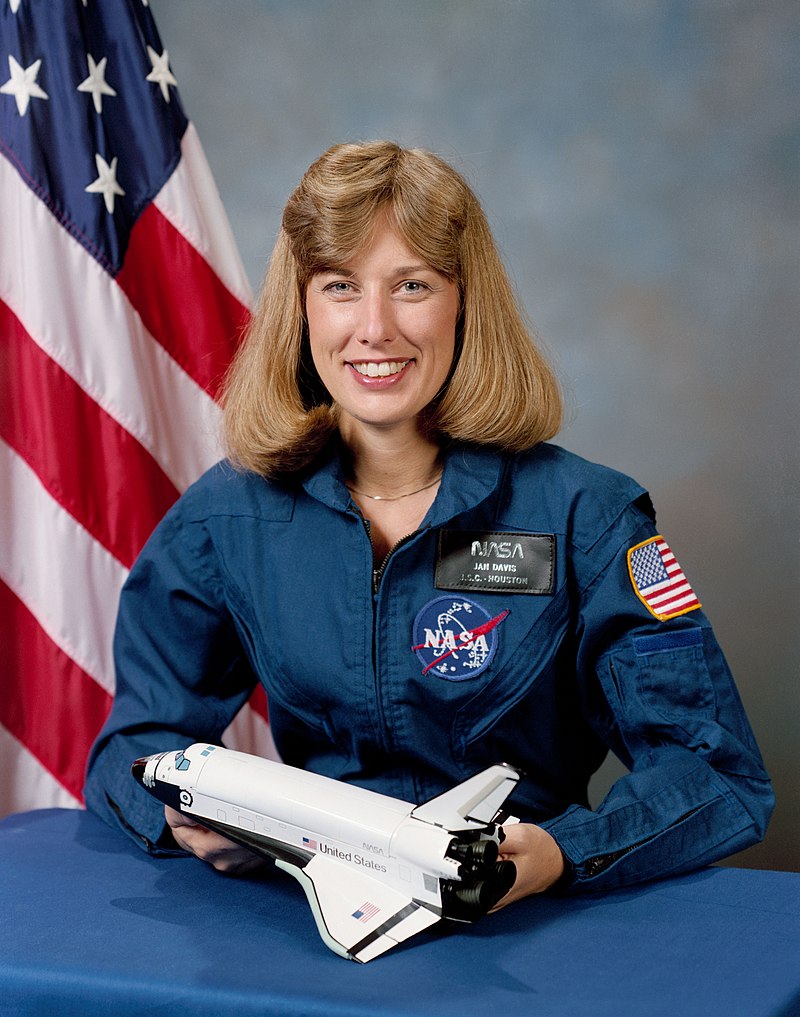
Nancy Jan Davis

Nancy Jan Davis
Nancy Jan Davis, born November 1, 1953, at Cocoa Beach, Florida, but considers Huntsville Alabama, to be her hometown.
A veteran of three space flights, Davis has logged over 673 hours in space. She flew as a mission specialist on STS-47 in 1992 and STS-60 in 1994, and was the payload commander on STS-85 in 1997.
STS-47, Spacelab-J, was the 50th Space Shuttle mission, launched on September 12, 1992, During the eight-day mission, she was responsible for operating Spacelab and its subsystems and performing a variety of experiments. After completing 126 orbits of the Earth, STS-47 Endeavour landed at Kennedy Space Center on September 20, 1992.
STS-60 was the second flight of Spacehab (Space Habitation Module). Launched on February 3, 1994, this flight was the first Space Shuttle flight on which a Russian cosmonaut was a crew member. The STS-60 Discovery landed at Kennedy Space Center on February 11, 1994, after completing 130 orbits of the Earth.
Ms.Davis was the payload commander for STS-85, which was launched on Discovery on August 7, 1997. The mission was accomplished in 189 Earth orbits, traveling 4.7 million miles. The STS-85 Discovery landed at Kennedy Space Center on August 19, 1997.
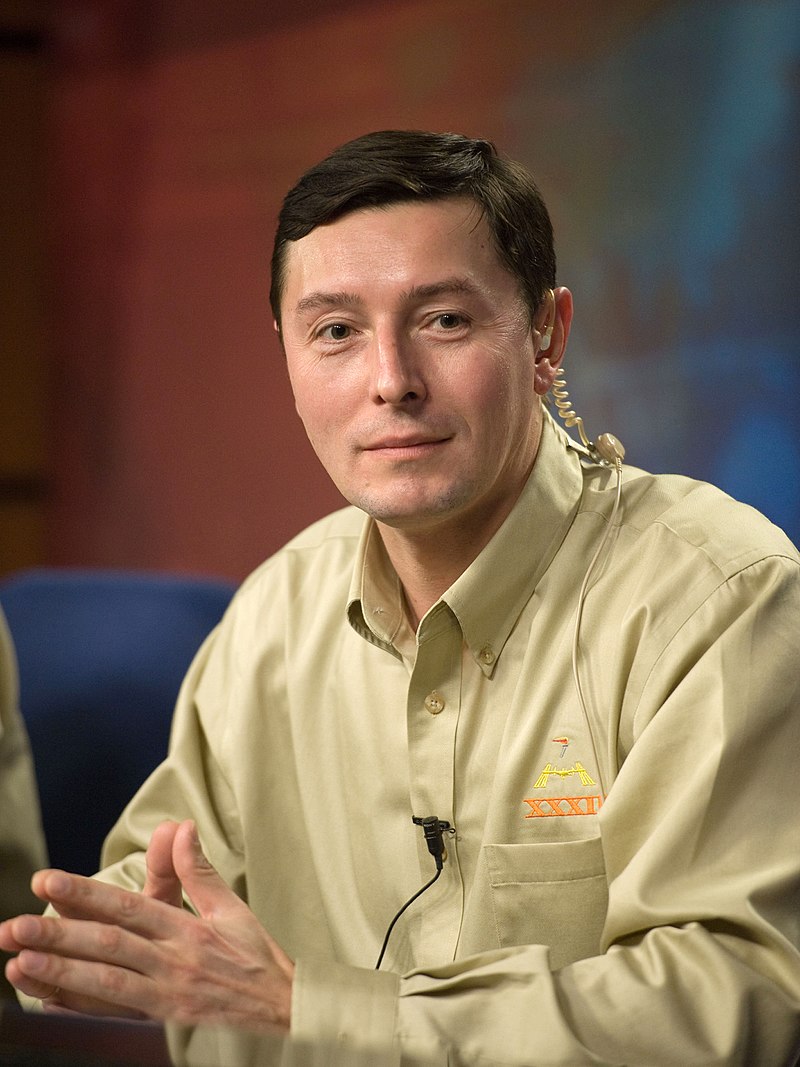
Sergei Nikolayevich Revin

Sergei Nikolayevich Revin
Sergei Nikolayevich Revin (born January 12, 1966 in Moscow) is a Russian cosmonaut that was selected in 1996, and completed spaceflight training in 1998. He served as a crew member aboard the International Space Station, having launched on his first spaceflight on 15 May 2012 and returned on 17 September 2012.
Revin served as a Flight Engineer for the ISS long duration Expedition 31/32 missions. He was launched aboard the Soyuz TMA-04M spacecraft on 15 May 2012 along with Soyuz TMA-04M crew members Gennady Padalka and NASA astronaut Joe Acaba. Revin and his fellow TMA-04M crew members docked with the International Space Station on 17 May at 4:36 UTC.
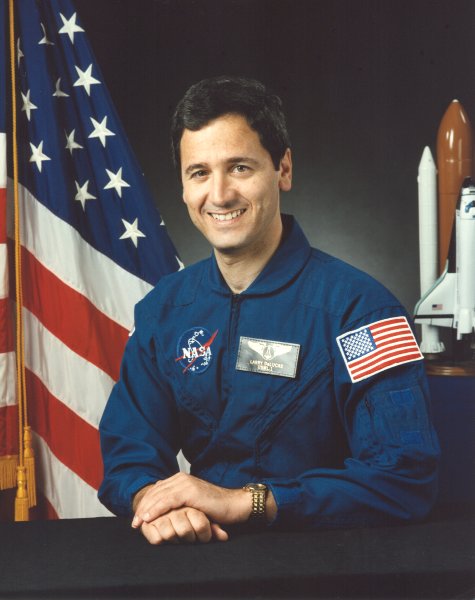
Lawrence James DeLucas

Lawrence James DeLucas
Lawrence James DeLucas is an American biochemist who flew aboard NASA Space Shuttle mission STS-50 as a Payload Specialist. He was born on July 11, 1950, in Syracuse, New York
Dr. DeLucas was a member of the crew of Space Shuttle Columbia for STS-50 (June 25-July 9, 1992), the United States Microgravity Laboratory-1 (USML-1) Spacelab mission. Over a two-week period, the crew conducted a wide variety of experiments relating to materials processing and fluid physics. Dr. DeLucas had traveled over 5.7 million miles in 221 Earth orbits, and had logged over 331 hours in space
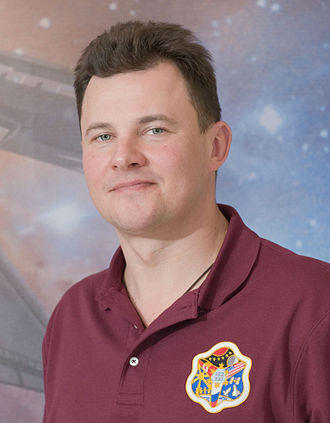
Roman Yurievich Romanenko

Roman Yurievich Romanenko
Roman Yurievich Romanenko (Major, Russian Air Force; Russian: born 9 August 1971) is a Russian retired cosmonaut at the Yuri Gagarin Cosmonaut Training Center.
Romanenko was selected as a cosmonaut candidate at the Gagarin Cosmonaut Training Center Cosmonaut Office in December 1997. He served as the backup to Oleg Kotov as the Commander of Soyuz TMA-10 and Fyodor Yurchikhin as Commander of Expedition 15.
On 27 May 2009 Romanenko was launched into space as the commander of the Soyuz TMA-15 spacecraft from Site 1/5 at the Baikonur Cosmodrome in Kazakhstan. He was part of the Expedition 20 and Expedition 21 crews and was the third second-generation space traveller after Sergey Volkov and Richard Garriott. Romanenko served as a Flight Engineer aboard the ISS during the two long duration missions.
After spending 187 days and 20 hours in space, Romanenko returned to Earth on 1 December 2009.
On 19 December 2012, Romanenko was launched to space on Soyuz TMA-07M along with Chris Hadfield and Thomas Marshburn. He was a part of the crews of Expedition 34 and Expedition 35 aboard the ISS. He served as a Flight Engineer.
Romanenko returned to Earth on 14 May 2013 spending 145 days and 14 hours in space.
Romanenko during the first spacewalk of the Expedition 35 mission on April 19, 2013.
On 19 April 2013 Romanenko completed his first spacewalk with fellow cosmonaut Pavel Vinogradov, a 6-hour 38 minute EVA to conduct repairs to the ISS.
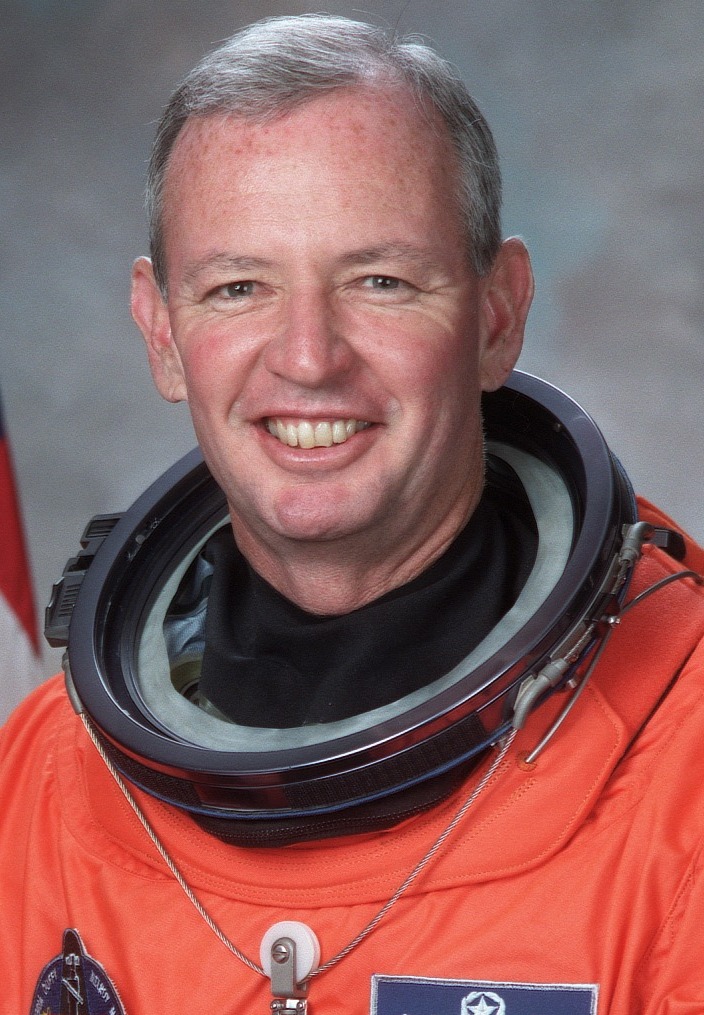
BRIAN DUFFY

BRIAN DUFFY
BRIAN DUFFY (COLONEL, USAF, RET.) NASA ASTRONAUT (FORMER) Born June 20, 1953, in Boston, Massachusetts, USA.
A veteran of four space flights, he has logged a total of 40 days, 17 hours, 34 minutes and 59 seconds in space. Duffy was the pilot on STS-45 Atlantis (March 24 to April 2, 1992), the first of the ATLAS series of missions to address the atmosphere and its interaction with the Sun. He also was the pilot on STS-57 Endeavour (June 21 to July 1, 1993). Duffy next commanded a six-man crew on STS-72 Endeavour (January 11-20, 1996). During the 9-day flight the crew retrieved the Space Flyer Unit (launched from Japan 10-months earlier), deployed and retrieved the OAST-Flyer, and conducted two spacewalks to demonstrate and evaluate techniques to be used in the assembly of the International Space Station. Later, Duffy commanded a crew of seven on STS-92 Discovery (October 11-24, 2000). During the 13-day flight, the seven member crew attached the Z1 Truss and Pressurized Mating Adapter 3 to the International Space Station using Discovery’s robotic arm and performed four space walks to configure these elements. This expansion of the ISS opened the door for future assembly missions and prepared the station for its first resident crew.
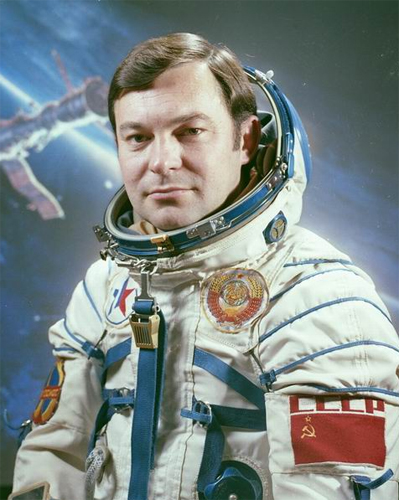
Yuri Viktorovich Romanenko

Yuri Viktorovich Romanenko
Yuri Viktorovich Romanenko (Russian, born 1 August 1944) is a former Soviet cosmonaut. Over his career, Yuri Romanenko spent a total of 430 days 20 hours 21 minutes 30 seconds in space and 18 hours in space walks. In 1987 he was a resident of the Mir space station, launching on Soyuz TM-2 and landing aboard Soyuz TM-3. He remained on Mir for 326 days; that was the longest stay in space at that time. His son, Roman Romanenko is also a cosmonaut, and has become the third second-generation space traveler on Soyuz TMA-15 in May 2009.
His first flight was on December 10, 1977, on Soyuz 26 to the space station Salyut 6. He spent 96 days and 10 hours on the orbit, meeting Soyuz 27, Soyuz 28 and Progress 1. During the mission, Romanenko performed a one and a half hour long space walk.
In his second mission on September 18, 1980, together with the first Cuban cosmonaut Arnaldo Tamayo Méndez, Romanenko flew Soyuz 38 to Salyut 6 and returned 7 days later. With this flight, Méndez was the first hispanophone and first person of African descent in space.[3]
The third and last flight of Romanenko was on Soyuz TM-2 with Aleksandr Laveykin on February 6, 1987, to the Mir station. During that mission, Romanenko spent 326 days aboard Mir, which was the longest stay in space then. He conducted three space walks, on April 11, June 11 and June 16, 1987, with a total duration 8 hr 48 min. He returned to Earth on December 29, 1987, in Soyuz TM-3.
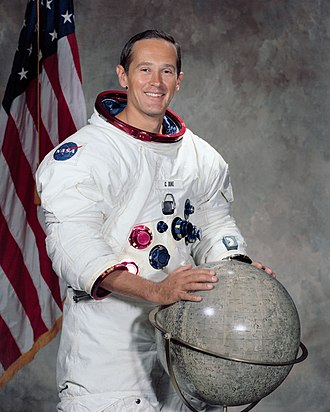
CHARLES MOSS DUKE, JR.

CHARLES MOSS DUKE, JR.
CHARLES MOSS DUKE, JR. (BRIGADIER GENERAL, USAF, RET.) NASA ASTRONAUT (FORMER) Born in Charlotte, North Carolina, on October 3, 1935.
Duke was one of the 19 astronauts selected by NASA in April 1966. He served as member of the astronaut support crew for the Apollo 10 flight. He was CAPCOM for Apollo 11, the first landing on the Moon and he served as backup lunar module pilot on Apollo 13. Duke served as lunar module pilot of Apollo 16, April 16-27, 1972. He was accompanied on the fifth manned lunar landing mission by John W. Young (spacecraft commander) and Thomas K. Mattingly II (command module pilot). Duke and Young commenced their record setting lunar surface stay of 71 hours and 14 minutes by maneuvering the lunar module "Orion" to a landing on the rough Cayley Plains. Other Apollo 16 achievements included the largest payload placed in lunar orbit (76, 109 pounds); first cosmic ray detector deployed on lunar surface; first lunar observatory with the far UV camera; and longest in-flight EVA from a command module during transearth coast (1 hour and 13 minutes). Apollo 16 concluded with a Pacific Ocean splashdown and subsequent recovery by the USS TICONDEROGA. With the completion of his first space flight, Duke has logged 265 hours in space and over 21 hours of extra vehicular activity.
149
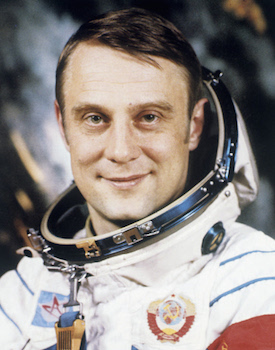
Valery Ilyich Rozhdestvensky

Valery Ilyich Rozhdestvensky
Valery Ilyich Rozhdestvensky (Russian; 13 February 1939 – 31 August 2011) was a Soviet cosmonaut.
Rozhdestvensky was born in Leningrad and graduated from the Higher Military Engineering School of Soviet Navy in Pushkin in engineering.
Rozhdestvensky was selected as a cosmonaut on 23 October 1965 and flew as Flight Engineer on Soyuz 23. After his space flight he continued to work with the space program at the Yuri Gagarin Cosmonaut Training Center. He retired on 24 June 1986.
150
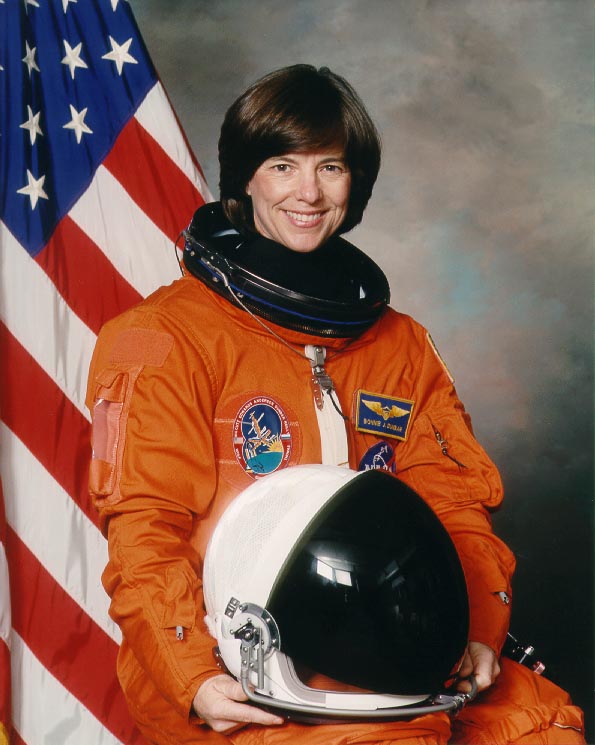
Bonnie Jeanne Dunbar

Bonnie Jeanne Dunbar
Bonnie Jeanne Dunbar (born March 3, 1949) is an American engineer and retired NASA astronaut. She flew on five Space Shuttle missions between 1985 and 1998, including two dockings with the Mir space station.
A veteran of five space flights, Dr. Dunbar has logged more than 1,208 hours (50 days) in space. She served as a mission specialist on STS 61-A in 1985, STS-32 in 1990, and STS-71 in 1995, and was the Payload Commander on STS-50 in 1992, and STS-89 in 1998. SPACE FLIGHT EXPERIENCE: STS 61-A Challenger (October 30-November 6, 1985), was the West German D-1 Spacelab mission. It was the first to carry eight crew members, and was also the first in which payload activities were controlled in Germany. STS 61-A launched from the Kennedy Space Center, Florida, and returned to land at Edwards Air Force Base, California. Mission duration was 7 days, 44 minutes 51 seconds.
STS-32 Columbia (January 9-20, 1990), launched from the Kennedy Space Center, Florida, and returned to a night landing at Edwards Air Base in California. Mission duration was 10 days, 21 hours, 01 minute, 38 seconds.
STS-50 Columbia (June 25 to July 9, 1992). Dr. Dunbar was the Payload Commander on STS-50, the United States Microgravity Lab-1 mission which was dedicated to microgravity fluid physics, materials science and life sciences. Mission duration was 13 days, 19 hours, 30 minutes and 4 seconds.
STS-71 Atlantis (June 27 to July 7, 1995), was the first Space Shuttle mission to dock with the Russian Space Station Mir, and involved an exchange of crews. The Atlantis was modified to carry a docking system compatible with the Russian Mir Space Station. Mission duration was 9 days, 19 hours, 23 minutes and 8 seconds, traveling 4.1 million miles in 153 orbits of the earth.
STS-89 Endeavour (January 22-31, 1998), was the eighth Shuttle-Mir docking mission. Dr. Dunbar was the Payload Commander, responsible for all payload activities including the conduct of 23 technology and science experiments. Mission duration was 8 days, 19 hours and 47 seconds.
151
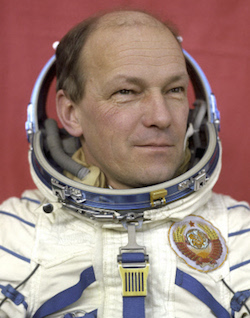
Nikolai Nikolayevich Rukavishnikov

Nikolai Nikolayevich Rukavishnikov
Nikolai Nikolayevich Rukavishnikov (Russian: 18 September 1932 – 19 October 2002) was a Soviet cosmonaut who flew three space missions of the Soyuz programme: Soyuz 10, Soyuz 16, and Soyuz 33. Two of these missions, Soyuz 10 and Soyuz 33 were intended to dock with Salyut space stations, but failed to do so.
Rukavishnikov became the 50th human to fly in space on 23 April 1971, the launch date of Soyuz 10. The mission, along with Vladimir Shatalov and Aleksei Yeliseyev, was intended to dock with the Salyut 1 space station. They were unable to dock, and returned to Earth two days later.
He began his second flight, Soyuz 16, on 2 December 1974, with Anatoly Filipchenko. The mission was a test of the Soyuz 7K-TM hardware being used in the Apollo–Soyuz Test Project. The mission lasted six days, and was a complete success.
His third flight, Soyuz 33, was an Intercosmos flight to the Salyut 6 space station on 10 April 1979 with Bulgarian cosmonaut Georgi Ivanov. On its final approach, the spacecraft's main engine failed, and the docking was aborted. They were able to return to Earth with the backup engine, but an overly-long re-entry burn led to a 10-g ballistic re-entry. The crew was recovered safely.
152
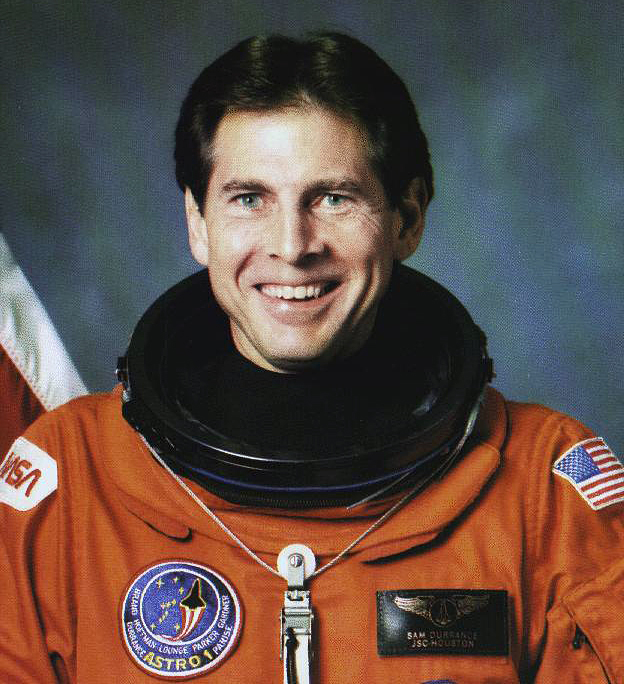
Samuel Thornton Durrance

Samuel Thornton Durrance
Samuel Thornton Durrance (September 17, 1943 – May 5, 2023) was an American scientist who flew aboard two NASA Space Shuttle missions as a payload specialist.
Durrance logged over 615 hours in space as a payload specialist and member of the crew of Space Shuttle Columbia for the STS-35/Astro-1 and Space Shuttle Endeavour for the STS-67/Astro-2 missions.
153
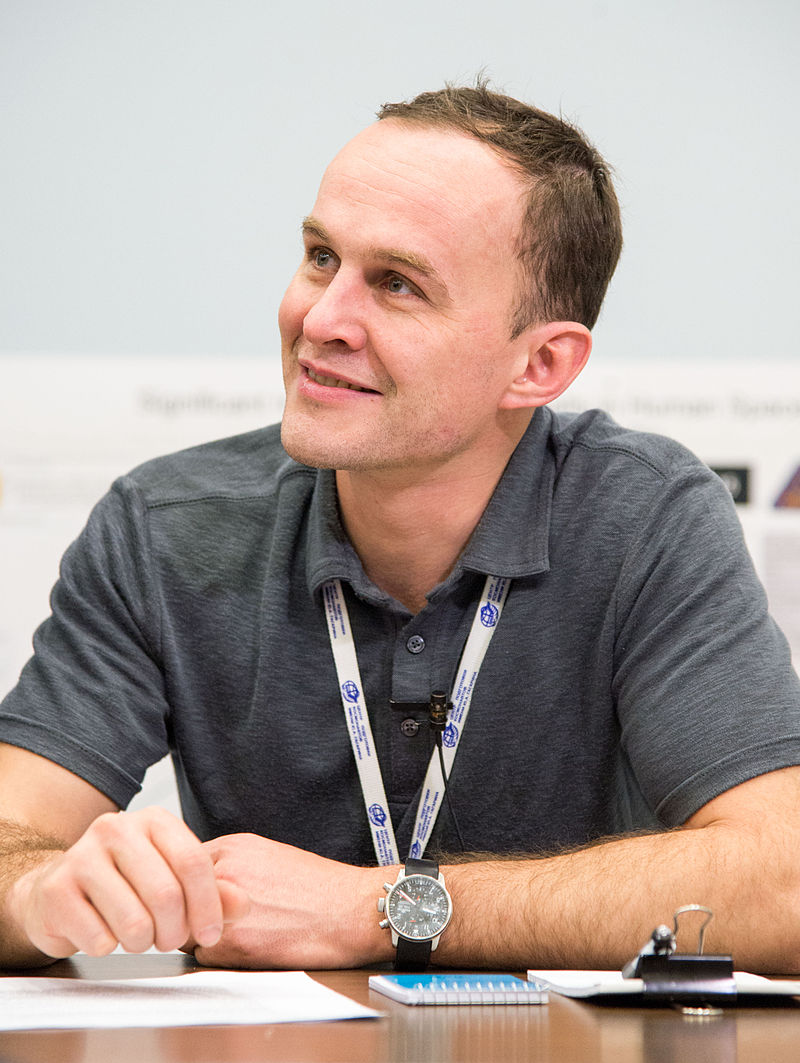
Sergey Nikolayevich Ryazansky

Sergey Nikolayevich Ryazansky
Sergey Nikolayevich Ryazansky (Russian: born November 13, 1974) is a Russian cosmonaut. He was selected as commander of the IMBP-6 cosmonaut group in 2003, but later transferred to the TsPK Cosmonaut Group.[2] Ryazansky made his first spaceflight aboard the Soyuz TMA-10M/Expedition 37/Expedition 38 mission from September 2013 until March 2014. In 2017, Ryazansky returned to space was the commander of Soyuz MS-05, and served as Flight Engineer for Expedition 52 / 53
Sergey Ryazansky launched to the International Space Station on his first spaceflight on board the Soyuz TMA-10M spacecraft on September 25, 2013. Ryazansky performed three EVA's during his mission; all were performed with crewmate Oleg Kotov. He served as a Flight Engineer on Expedition 37 and Expedition 38 before returning to Earth aboard the Soyuz on March 11, 2014.
Ryazansky was the commander of Soyuz MS-05 mission to the ISS, launched on 28 July 2017 15:41 UTC. He was Flight Engineer for Expedition 52, and Expedition 53. Ryazansky returned to Earth on December 14, 2017. The Soyuz MS-05 landed on 8:38 UTC. The duration of the mission was 138 days, 16 hours, 56 minutes and 37 seconds.
154
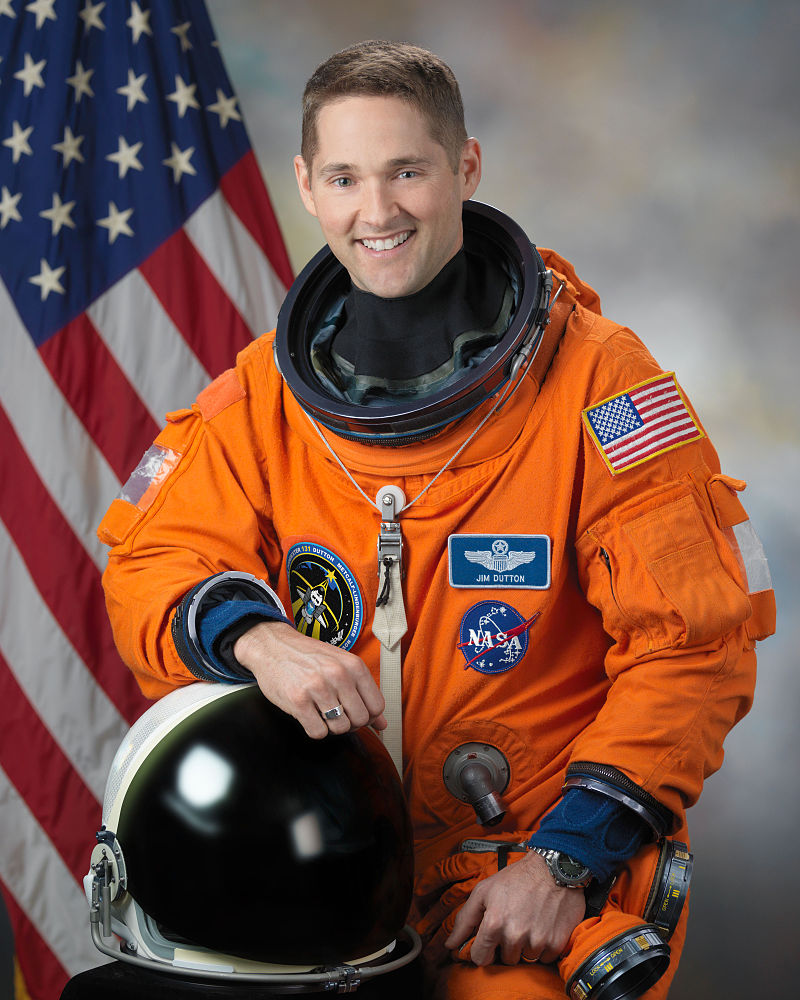
James Patrick "Mash" Dutton, Jr.

James Patrick "Mash" Dutton, Jr.
James Patrick "Mash" Dutton, Jr. (born November 20, 1968) is an engineer and a former NASA astronaut.
Dutton was selected by NASA as an astronaut candidate in May 2004 and received his astronaut pin (qualification) on February 10, 2006.
Dutton was officially assigned to his first space flight as pilot for STS-131 in December 2008.
STS-131 (April 5–20, 2010) was a resupply mission to the International Space Station performed by Space Shuttle Discovery. Dutton flew as the pilot.
He assisted Poindexter during rendezvous and landing and maneuver the orbiter during undocking and the fly-around. In addition, he served as lead shuttle robotic arm operator for the mission, responsible for airlock operations in preparation for EVAs and he assisted Wilson with the station robotic arm operations.
The STS-131 mission was accomplished in 15 days, 2 hours, 47 minutes and 10 seconds and traveled 6,232,235 statute miles in 238 orbits.
155
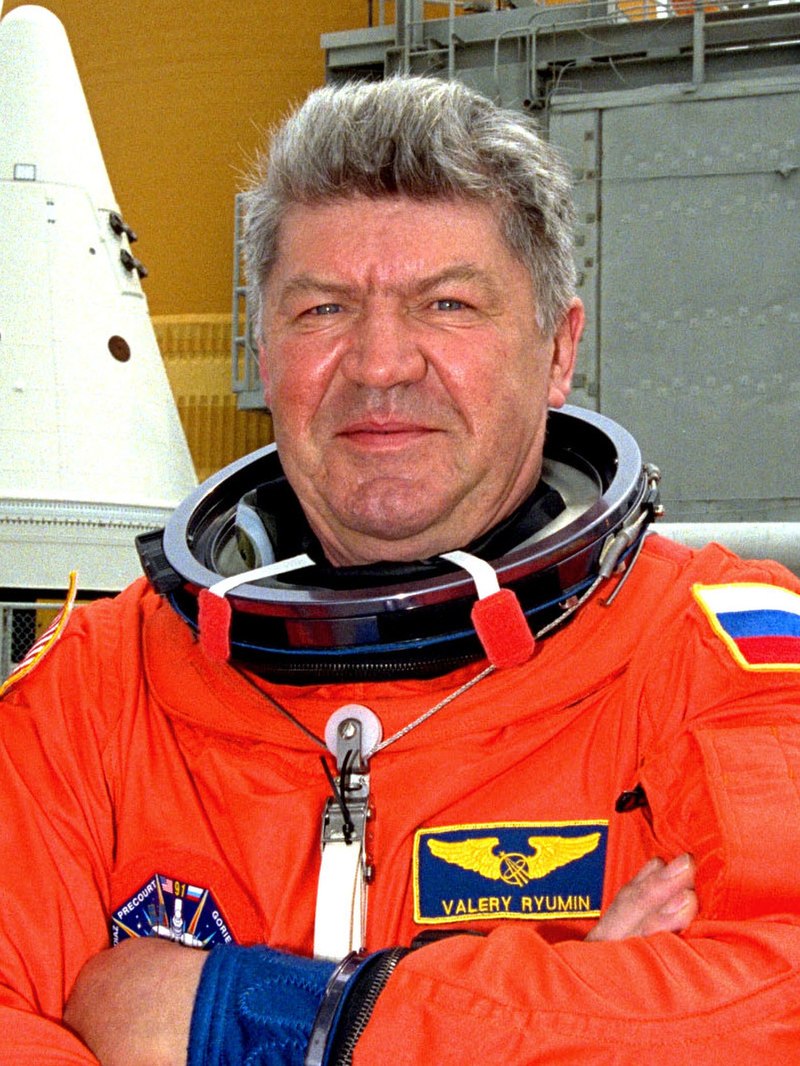
Valery Victorovich Ryumin

Valery Victorovich Ryumin
Valery Victorovich Ryumin (Russian: 16 August 1939 – 6 June 2022) was a Soviet cosmonaut.
Valery Victorovich Ryumin became a veteran of four space flights and logged a total of 371 days in space.
In 1977, he spent two days aboard Soyuz 25, in 1979, he spent 175 days aboard Soyuz vehicles 32 and 34 and the Salyut 6 space station, and in 1980, he spent 185 days aboard Soyuz vehicles 35 and 37 and the Salyut 6 space station.
From 1981 to 1989, Ryumin was flight director for the Salyut 7 space station and the Mir space station. Since 1992, he was the Director of the Russian portion of the Shuttle-Mir and NASA-Mir program.
Ryumin served aboard STS-91 Discovery (2–12 June 1998) the 9th and final Shuttle-Mir docking mission, concluding the joint U.S./Russian Phase I Program. The STS-91 mission was accomplished in 154 Earth orbits, traveling 3.8 million miles in 235 hours and 54 seconds.
156
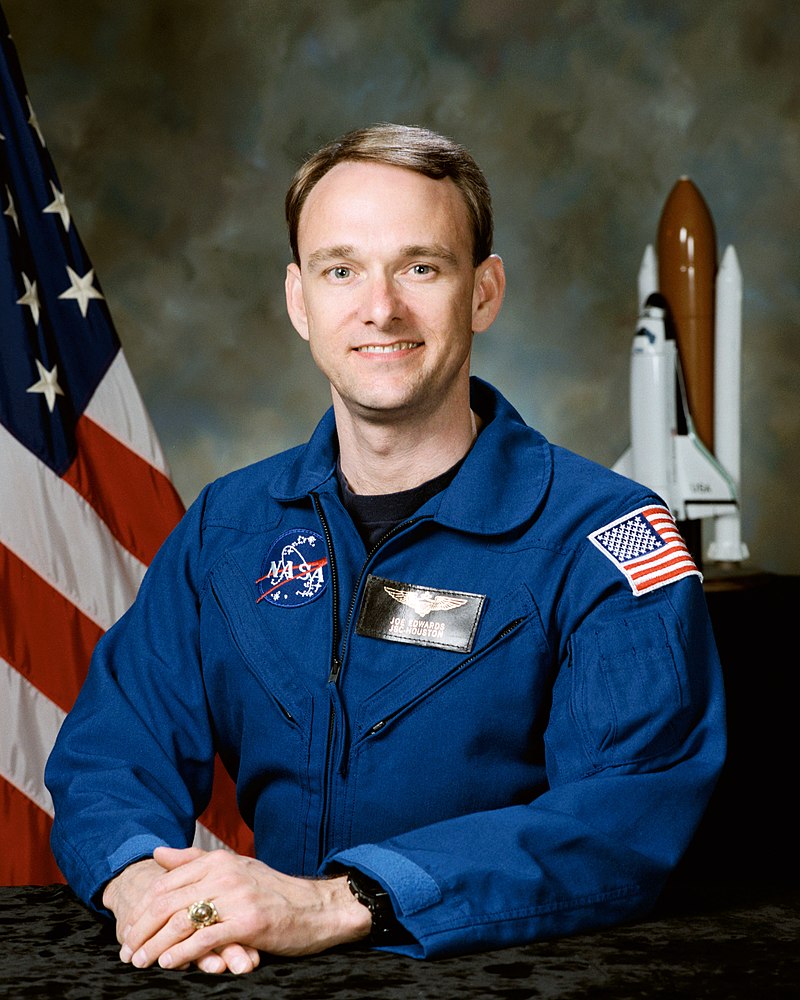
E FRANK EDWARDS, JR

E FRANK EDWARDS, JR
JOE FRANK EDWARDS, JR was born on February 3, 1958, in Richmond, Virginia. Considers Lineville, Alabama, and Roanoke, Alabama, to be his hometowns.
Edwards flew on STS-89 (January 22–31, 1998), the eighth Shuttle-Mir docking mission, during which the crew transferred more than 9,000 pounds (4,100 kg) of scientific equipment, logistical hardware and water from Space Shuttle Endeavour to Mir. In the fifth and last exchange of a U.S. astronaut, STS-89 delivered Andy Thomas to Mir and returned with David Wolf. Mission duration was 8 days, 19 hours and 47 seconds, traveling 3.6 million miles (5.8 million km) in 138 orbits of the Earth.
157
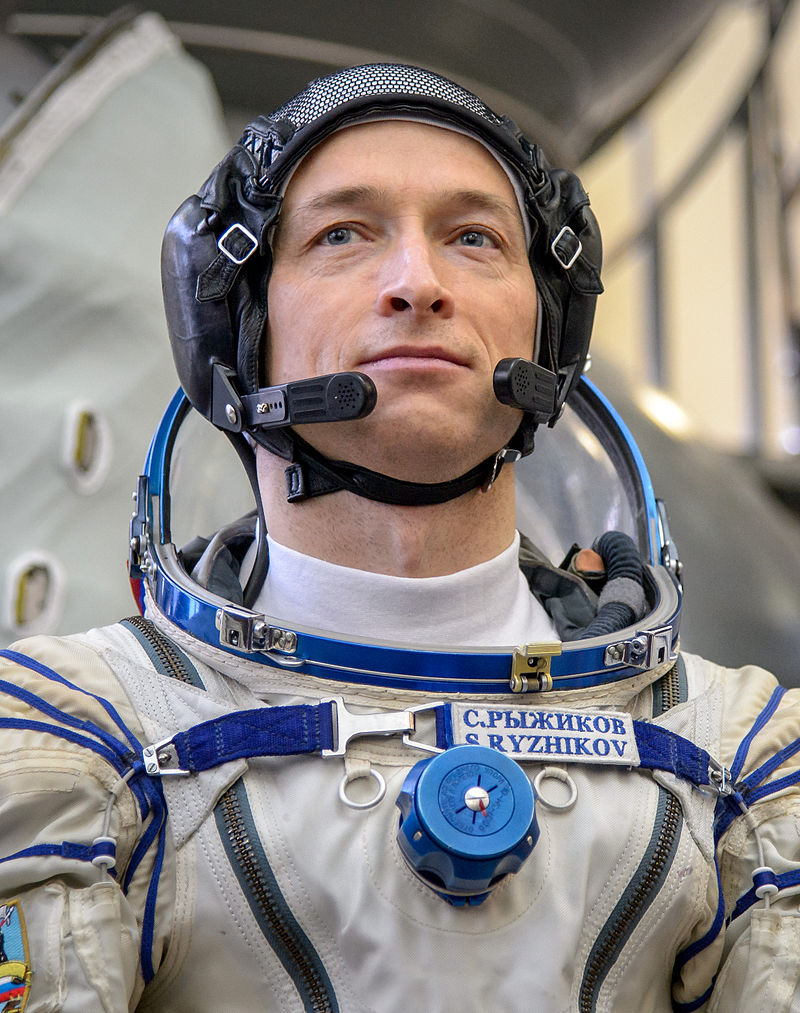
Sergey Nikolayevich Ryzhikov

Sergey Nikolayevich Ryzhikov
Sergey Nikolayevich Ryzhikov (Russian: born on 19 August 1974), lieutenant colonel of Russian Air Force, is a Russian cosmonaut, selected in 2006. He is a veteran of two long duration space flights to the ISS.
Ryzhikov was assigned as Commander of the Soyuz MS-02 spacecraft. Ryzhikov and his two crewmates was launched on 19 October 2016 and successfully docked with the ISS two days later, joining the Expedition 49 crew alongside Russian cosmonaut Anatoli Ivanishin, JAXA astronaut Takuya Onishi and NASA astronaut Kathleen Rubins.
Following the landing of Soyuz MS-01, Ryzhikov, Borisenko, and Kimbrough transferred over to Expedition 50, with Kimbrough taking command of the station. Expedition 50 lasted until 10 April 2017, when Ryzhikov, Borisenko, and Kimbrough departed the station onboard Soyuz MS-02, starting Expedition 51 with Whitson in command and the trio landing in Kazakhstan hours after their departure from the ISS, wrapping up 173 days in space.
Ryzhikov launched from Baikonur on October 14, 2020, alongside Russian Cosmonaut Sergey Kud-Sverchkov and NASA astronaut Kathleen Rubins.
On 18 November 2020, Ryzhikov along with fellow crew member Sergey Kud-Sverchkov conducted their first spacewalk. The spacewalk began at 15:12 UTC and finished after 6 hours and 48 minutes.
Ryzhikov was the Commander of Expedition 64. The MS-17 crew returned to Earth on 17 April 2021 after almost 185 days on orbit.
In April 2025 Ryzykov is scheduled to fly the Soyuz MS-27 spacecraft with Russian Sergei Mikayev and Kirill Peskov. The return of the crew is scheduled for September 2025.
158
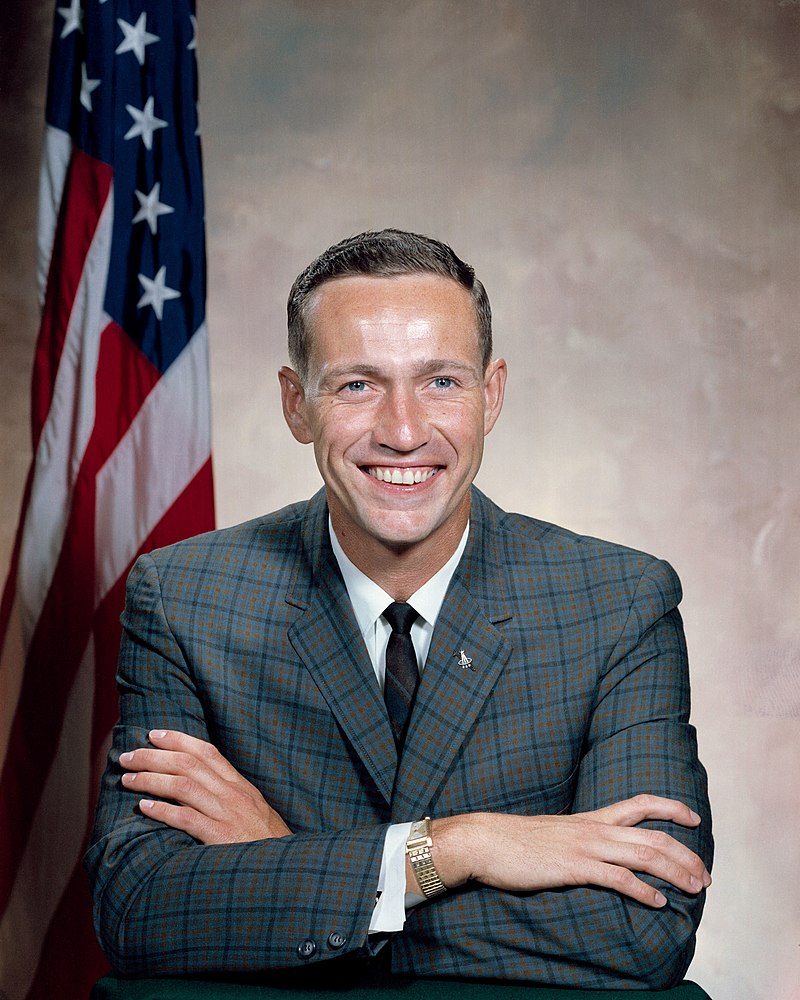
Donn Fulton Eisele

Donn Fulton Eisele
Donn Fulton Eisele (June 23, 1930 – December 1, 1987) (Colonel USAF) was a United States Air Force officer, test pilot, and later a NASA astronaut. He occupied the command module pilot seat during the flight of Apollo 7 in 1968.
October 11, 1968, Apollo 7 was launched on an 11-day mission with Eisele —the first crewed flight test of the third generation United States spacecraft. Apollo 7 was placed in an Earth-orbit with an apogee of 153.5 nautical miles (284.3 km; 176.6 mi) and perigee of 122.6 nautical miles (227.1 km; 141.1 mi). The 260-hour, 4.5 million mile (7.25 Gm; 7.25 million km) shakedown flight was successfully concluded on October 22, 1968, with splashdown occurring in the Atlantic, 8 miles (15 km) from the carrier USS Essex and only 0.3 miles (0.48 km; 480 m) from the predicted target.]Eisele logged 260 hours in space.
159
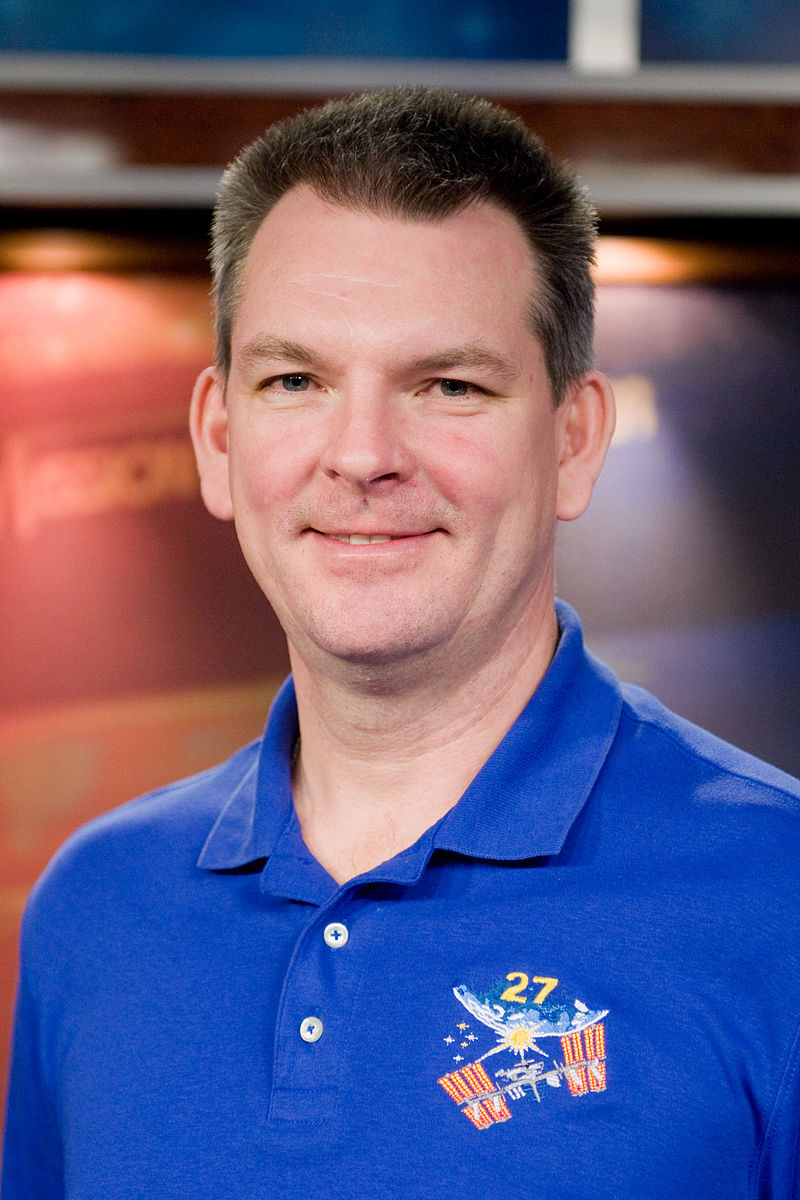
Aleksandr Mikhailovich Samokutyaev

Aleksandr Mikhailovich Samokutyaev
Aleksandr Mikhailovich Samokutyaev (Russian: born 13 March 1970 in Penza, Russian SFSR, USSR) is a Russian former cosmonaut. Samokutyaev served as a Flight Engineer for the International Space Station (ISS) long duration Expedition 27/28 missions. He also served as the Soyuz TMA-21 commander. He served on the Soyuz TMA-14M Expedition 41/42 crew aboard the ISS. He was hired as a cosmonaut in the summer of 2003.
Samokutyayev flew into space for the first time as a Flight Engineer for the ISS long duration Expedition 27/28 missions. The Soyuz TMA-21 spacecraft carrying Samokutyayev, cosmonaut Andrei Borisenko and NASA astronaut Ron Garan launched on schedule from the Baikonur Cosmodrome's Gagarin's Start launch pad, at 23:18:20 UTC on 4 April 2011. Samokutyayev served as Commander of Soyuz TMA-21. After two days of solo flight, the Soyuz TMA-21 spacecraft docked with the International Space Station (ISS) on 6 April at 23:09 UTC.
Samokutyayev concluded his 164-day stay aboard the Space Station, when his spaceship, Soyuz TMA-21 undocked from the Russian segment's Poisk module at 00:38 UTC on 16 September.On the same day, the Soyuz TMA-21 capsule carrying Samokutyayev, Borisenko and Ron Garan touched down (3:59:39 UTC) at 93 miles southeast of the city of Zhezkazgan in Kazakhstan.[9]
Samokutyayev returned to space aboard Soyuz TMA-14M, as part of the Expedition 41/42 long-duration International Space Station crew. The mission launched on 25 September 2014 and docked with the ISS just under six hours after lift-off on 26 September. He remained aboard the ISS until March 2015, when Soyuz TMA-14M returned to Earth as scheduled.
160
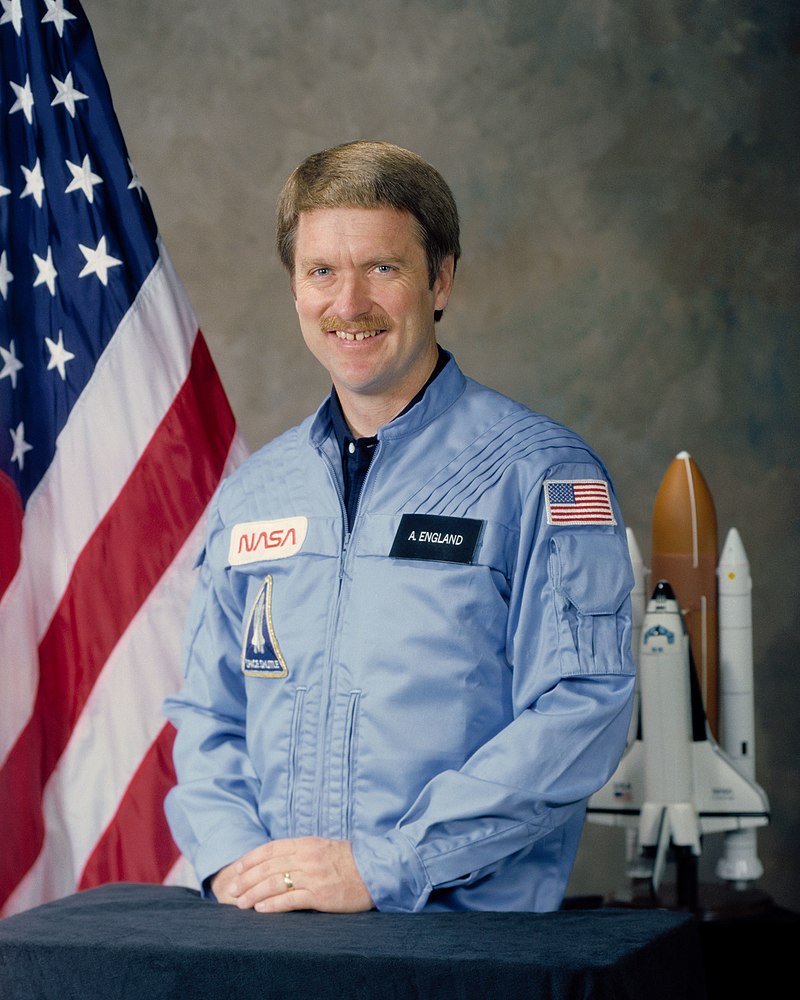
Anthony Wayne England

Anthony Wayne England
Anthony Wayne England (born May 15, 1942), better known as Tony England, is an American, former NASA astronaut. Selected in 1967, England was among a group of astronauts who served as backups during the Apollo and Skylab programs. Like most others in his class, he flew during the Space Shuttle program, serving as a mission specialist on STS-51-F in 1985. He has logged more than 4,000 hours of flying time and 188 hours in space.
STS-51-F, carrying a seven-man crew and Spacelab-2, was launched from Kennedy Space Center, Florida on July 29, 1985. After 126 orbits of the Earth, STS 51-F Challenger landed at Edwards Air Force Base, California, on August 6, 1985.[3]
From May 1986 to May 1987, England served as a program scientist for Space Station Freedom (which later evolved into the International Space Station). From June 1987 to December 1987, he taught Remote Sensing Geophysics at Rice University. England retired from NASA in 1988.
161
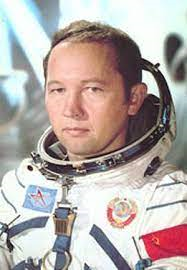
Gennady Vasiliyevich Sarafanov

Gennady Vasiliyevich Sarafanov
Gennady Vasiliyevich Sarafanov (Russian1 January 1942 – 29 September 2005) was a Soviet cosmonaut who flew on the Soyuz 15 spaceflight in 1974. This mission was intended to dock with the space station Salyut 3, but failed to do so after the docking system malfunctioned. Sarafanov was born in Sinenkiye, Saratov Oblast, USSR.
He made a single spaceflight before resigning from the space programme in 1986 and subsequently lectured on technology.
162
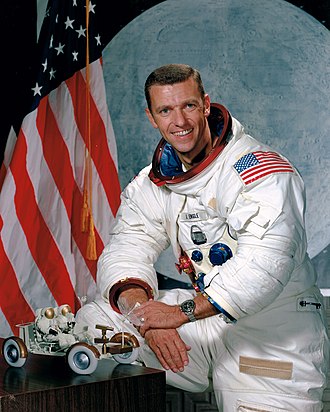
Joe H Engle ( Maj Gen)

Joe H Engle ( Maj Gen)
General Joe Engle was born 26 Aug 1932 in Dickinson County, Kansas.
On 12 Nov 1981, General Engle commanded the second orbital test flight of the Space Shuttle “Columbia”, launched from Kennedy Space Center, FL. On this flight he became the first and only pilot to manually fly an aerospace vehicle from MACH 25 to landing.
The general served as Deputy Associate Administrator for Manned Space Flight at NASA Headquarters from March to December 1982. He retained his flight astronaut status and returned to Johnson Space Center in January 1983.
General Engle was Commander of Space Shuttle “Discovery” on flight 51-I which launched from Kennedy Space Center on 27 Aug 1985. The crew deployed three communications satellites, and performed a successful on-orbit rendezvous and manual repair of the disabled SYNCOM communications satellite.
163
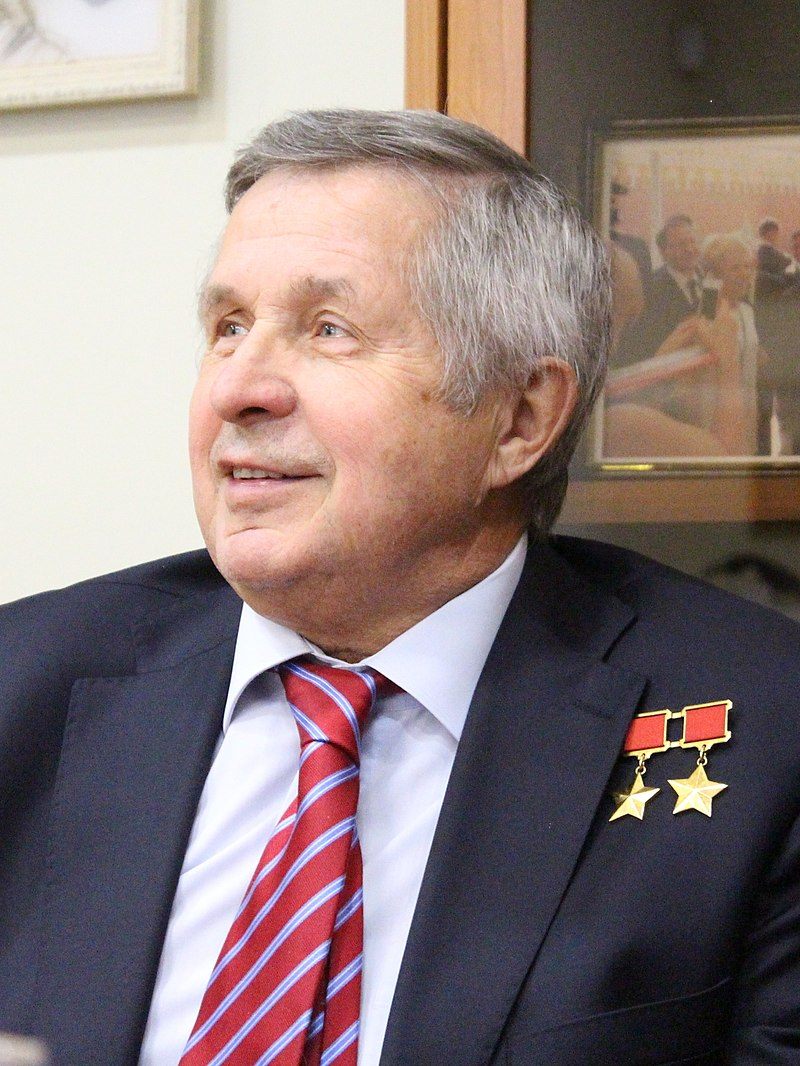
Viktor Petrovich Savinykh

Viktor Petrovich Savinykh
Viktor Petrovich Savinykh (born 7 March 1940) is a Soviet cosmonaut, scientist, and organizer of personnel training in the higher education system. Savinykh was born in Beryozkiny, Kirov Oblast, Russian SFSR on 7 March 1940.
Selected as a cosmonaut on 1 December 1978, he flew as Flight Engineer on Soyuz T-4, Soyuz T-13 and Soyuz TM-5, and has spent 252 days 17 hours 38 minutes in space. Savinykh retired on 9 February 1989.
164
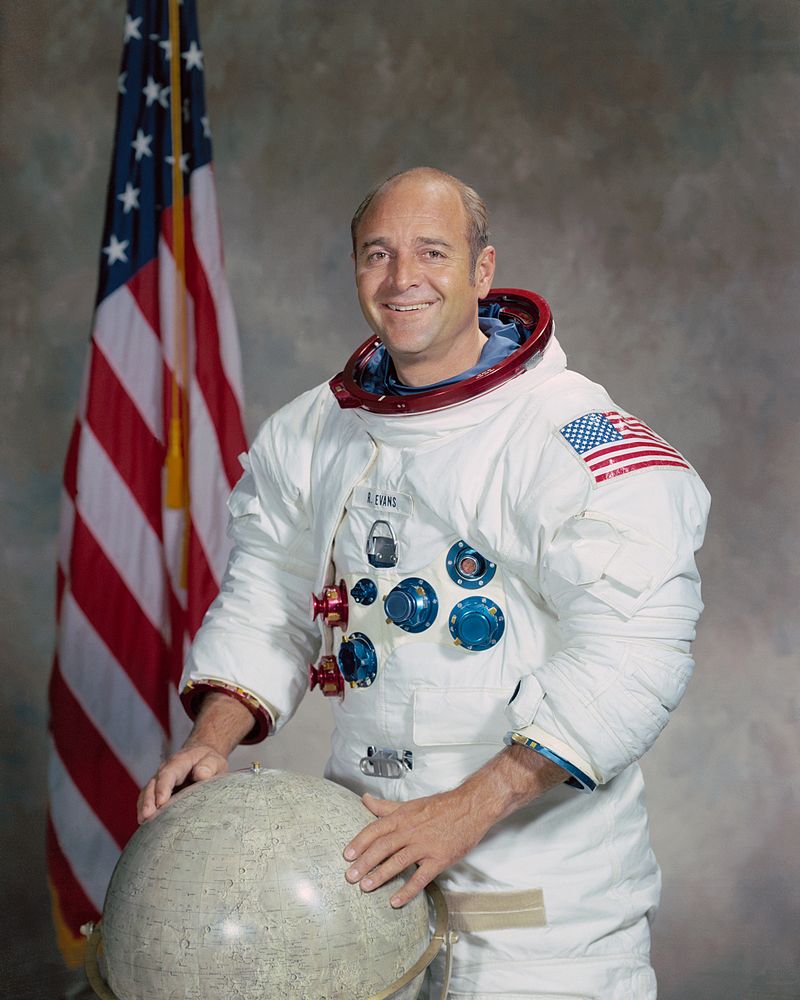
Ronald Ellwin Evans Jr.

Ronald Ellwin Evans Jr.
Ronald Ellwin Evans Jr. (November 10, 1933 – April 7, 1990) was an American electrical engineer, aeronautical engineer, officer and aviator in the United States Navy, and NASA astronaut. As Command Module Pilot on Apollo 17 he was one of the 24 astronauts to have flown to the Moon, and one of 12 people to have flown to the Moon without landing.
On his first journey into space, Captain Evans occupied the command module pilot seat for Apollo 17 which commenced at 11:33 p.m. (CST), December 6, 1972, and concluded on December 19, 1972—the last scheduled manned mission to the moon for the United States. He was accompanied on this voyage of the command module “America” and the lunar module “Challenger” by Eugene Cernan, spacecraft commander, and Harrison H. (Jack) Schmitt (lunar module pilot). Evans later completed a 1-hour, 6-minute extravehicular activity during the transearth coast phase of the return flight, successfully retrieving three camera cassettes and completing a personal inspection of the equipment bay area. This last mission to the moon for the United States broke several records set by previous flights which include: longest manned lunar landing flight, 3 01 hours, 51 minutes; longest lunar surface extravehicular activities, 22 hours, 4 minutes; largest lunar sample return, an estimated 115 kg, 249 lbs.; and longest time in lunar orbit, 147 hours, 48 minutes. Apollo 17 ended with a splashdown in the Pacific Ocean approximately 0.4 mile from the target point and 4.3 miles from the prime recovery ship, the USS TICONDEROGA.
165
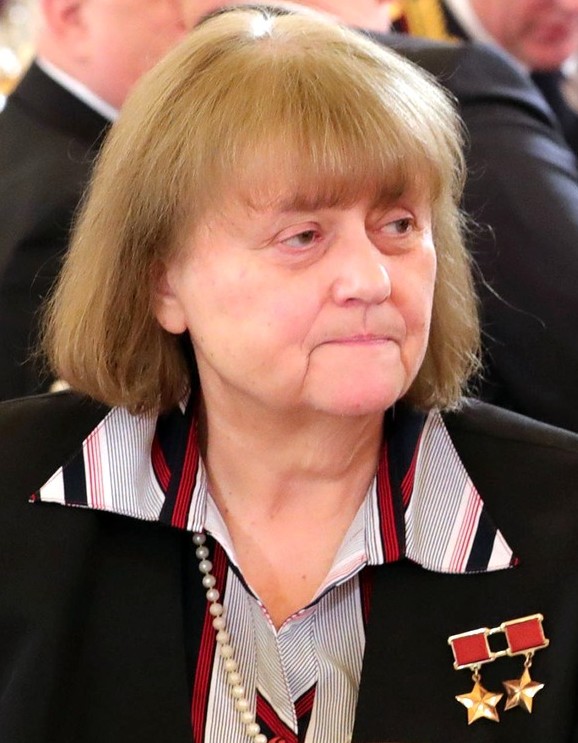
Svetlana Yevgenyevna Savitskaya

Svetlana Yevgenyevna Savitskaya
Svetlana Yevgenyevna Savitskaya (Russian: born 8 August 1948) is a Russian former aviator and Soviet cosmonaut who flew aboard Soyuz T-7 in 1982, becoming the second woman in space. On her 1984 Soyuz T-12 mission she became the first woman to fly to space twice, and the first woman to perform a spacewalk.
In December 1981, Savitskaya prepared for her first space flight (Soyuz T-7 / T-5), a short-term flight to the space station Salyut 7. She held the position of research cosmonaut on this mission. The mission of this second visiting expedition of the Salyut 7 was to prove the Soviet superiority to America by flying another woman into space and to replace the Soyuz T-5 spacecraft the crew would use for their return with a new vehicle.
The launch of Soyuz T-7 took place on August 19, 1982. This made Savitskaya the second woman in space, 19 years after Valentina Tereshkova. This was the first time a space station had a mixed gender crew. On August 27, 1982, Popov, Savitskaya, and Serebrov returned to Earth in Soyuz T-5. The total duration of the mission was 7 days, 21 hours, and 52 minutes.
In December 1983 she was assigned to her second flight, including an extravehicular activity, or EVA. Savitskaya participated in this mission under the title of flight engineer. Again, it was to be a short-term mission to Salyut 7, this time bringing tools to the station so that the third resident crew, the Salyut 7 EO-3, could repair a fuel line.
On July 17, 1984, Savitskaya launched aboard Soyuz T-12, together with Commander Vladimir Dzhanibekov and research cosmonaut Igor Volk. On July 25, 1984, Savitskaya became the first woman to spacewalk, conducting EVA outside the Salyut 7 space station for 3 hours and 35 minutes, during which she cut and welded metals in space along with her colleague Vladimir Dzhanibekov. Of the 57 Soviet/Russian spacewalkers through 2010, she is the only woman, and as of April 2020 is still the only Soviet/Russian woman to walk in space. The return to Earth took place on July 29, 1984. The total duration of their mission lasted 11 days, 19 hours, and 14 minutes.
166
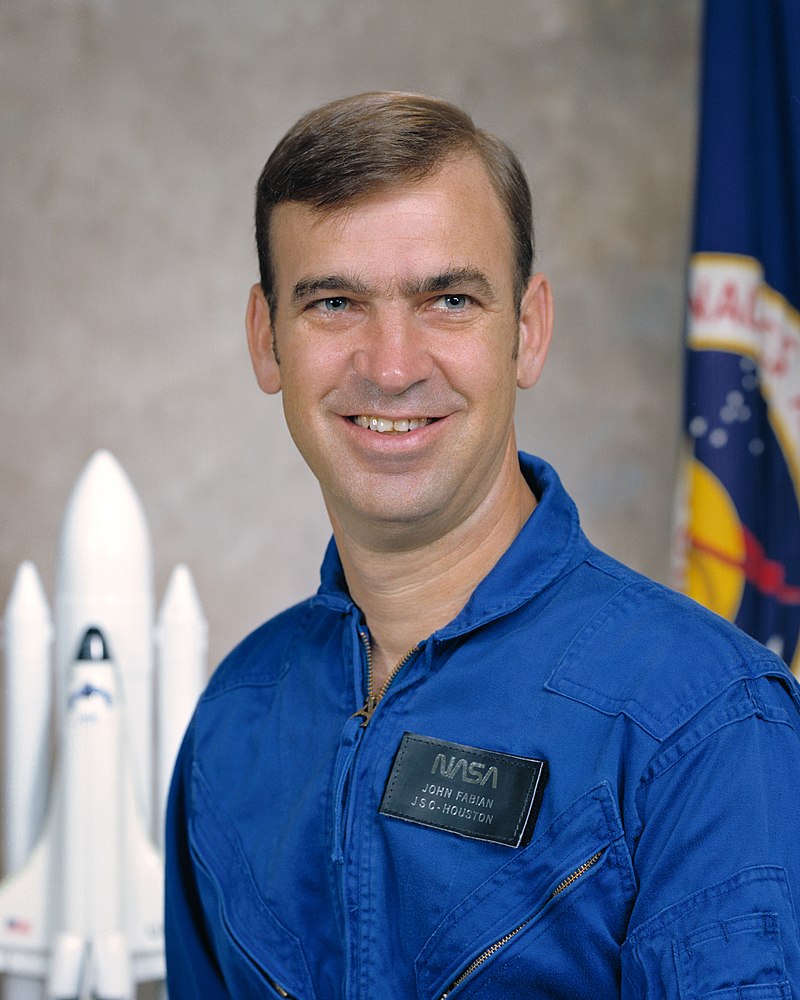
John McCreary Fabian

John McCreary Fabian
John McCreary Fabian (born January 28, 1939) is a former NASA astronaut and Air Force officer who flew two Space Shuttle missions.
Selected as an astronaut candidate by NASA in January 1978, and became an astronaut in August 1979. A veteran of two space flights, he has logged over 316 hours in space. He served as a mission specialist on STS-7 (June 18-24, 1983) and STS-51G (June 17-24, 1985). He was scheduled to fly next in May 1986 on STS-61G. This flight was one of several deferred by NASA in the wake of the Challenger accident .
Fabian first flew as a mission specialist on STS-7, which launched from Kennedy Space Center, Florida, on June 18, 1983. This was the second flight for the Orbiter Challenger and for the first mission with a 5-person crew. Mission duration was 147 hours before landing at Edwards Air Force Base, California, on June 24, 1983.
On his second mission, Fabian flew on STS 51-G which launched from the Kennedy Space Center, Florida, on June 17, 1985, and landed at Edwards Air Force Base, California, on June 24, 1985, after completing approximately 170 hours of space flight.
167
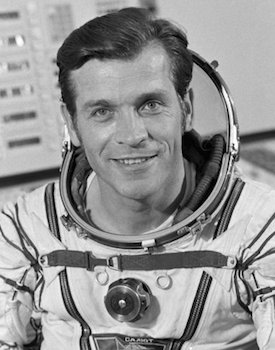
Aleksandr Aleksandrovich Serebrov

Aleksandr Aleksandrovich Serebrov
Aleksandr Aleksandrovich Serebrov (Russian: 15 February 1944 – 12 November 2013) was a Soviet cosmonaut.
Serebrov flew on Soyuz T-7, Soyuz T-8, Soyuz TM-8, and Soyuz TM-17. He was one of very few cosmonauts to fly for both the Soviet Union and the Russian Federation that followed it. He held the record for most spacewalks, 10, until Anatoly Solovyev surpassed it. In all, he spent 371.95 days in space. Serebrov contributed to the design of Salyut 6, Salyut 7, and the Mir space stations. He helped design, and, according to a New York Times obituary, "was the first to test a one-person vehicle - popularly called a space motorcycle - to rescue space crews in distress and repair satellites." This vehicle, known as Icarus, was tested in February 1990, and remained onboard Mir for several years but was never used after that.
168
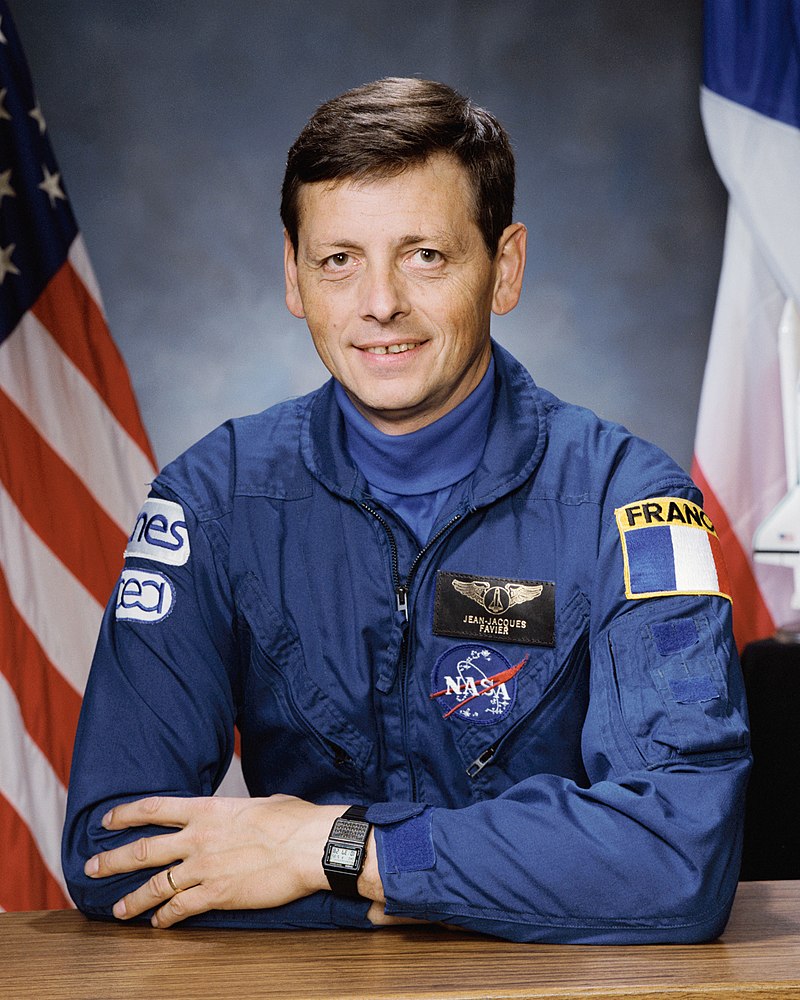
Jean-Jacques Favier

Jean-Jacques Favier
Jean-Jacques Favier (13 April 1949 – 19 March 2023) was a German-born French engineer and a CNES astronaut who flew aboard the STS-78 NASA Space Shuttle mission in 1996. Favier was due to fly aboard the doomed Columbia mission in 2003 (STS-107), but later opted out of the mission.
Favier was assigned as an alternate payload specialist on STS-65/IML-2, the second International Microgravity Laboratory mission, and supported the mission as a Crew Interface Coordinator (CIC/APS) from the Payload Operations Control Center (POCC) at the Marshall Space Flight Center in Huntsville, Alabama.
Favier flew on STS-78 and logged over 405 hours in space. STS-78 Columbia (20 June to 7 July 1996) was a 16-day Life and Microgravity Spacelab mission. It included studies sponsored by ten nations and five space agencies, was the first mission to combine both a full microgravity studies agenda and a comprehensive life science investigation, and served as a model for future studies on board the International Space Station. STS-78 orbited the Earth 271 times, covering 7 million miles in 405 hours, 48 minutes.
169
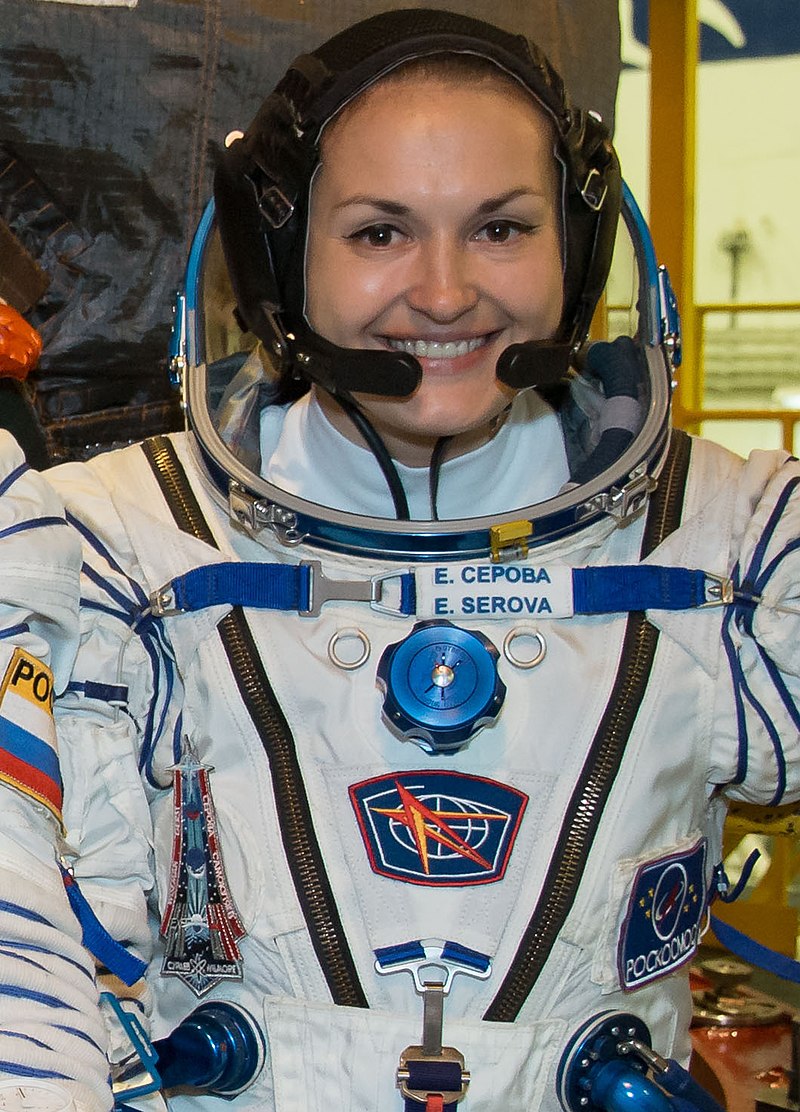
Yelena Olegovna Serova

Yelena Olegovna Serova
Yelena Olegovna Serova (Russian: born 22 April 1976) is a Russian former cosmonaut. She flew one long duration mission to the International Space Station from 2014 to 2015.
Serova was born in Vozdvizhenka, a village which is part of the city of Ussuriysk in the far east in Russia.
On 25 September 2014, she traveled aboard Soyuz TMA-14M spacecraft to serve as a flight engineer for Expedition 41/42. Serova is the fourth female cosmonaut to travel to space. The three previous female cosmonauts were Valentina Tereshkova (1963), Svetlana Savitskaya (1982 and 1984), and Yelena Kondakova (1994 and 1997). They represented the former Soviet Union and Russia.
The Soyuz FG rocket carrying TMA-14M commander Aleksandr Samokutyayev, Yelena Serova and NASA astronaut Barry Wilmore blasted off from the Baikonur Cosmodrome's Site 1/5 at 20:25 UTC. On 11 March 2015, the crew successfully returned to Earth after 167 days in space.
170
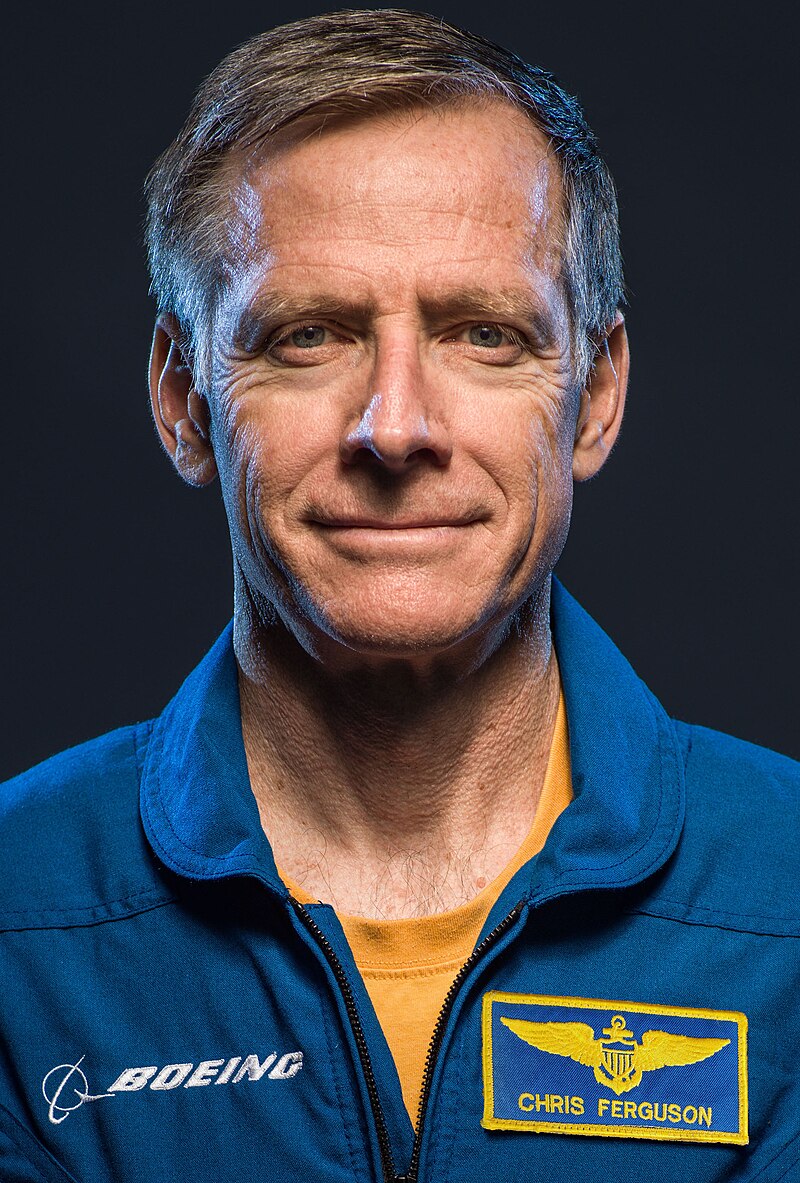
Christopher J. Ferguson

Christopher J. Ferguson
Christopher J. "Fergy" Ferguson (born September 1, 1961) is a Boeing commercial astronaut and a retired United States Navy captain and NASA astronaut. He was the pilot of Space Shuttle Atlantis on his first mission to space, STS-115, which launched on September 9, 2006, and returned to Earth on September 21, 2006. He then commanded STS-126 aboard Space Shuttle Endeavour. In 2011, he was assigned as commander of STS-135, which was the final mission of the space shuttle program.
Ferguson made his first space flight as pilot of STS-115 in 2006. A total of three spacewalks were performed, during which the crew connected the systems on the installed trusses, prepared them for deployment, and did other maintenance work on the station. He returned to Earth after over 11 days on orbit.
Ferguson returned to space for the second time, as commander of STS-126 in 2008. The purpose of the mission, referred to as ULF2 by the ISS program, was to deliver equipment and supplies to the station, to service the Solar Alpha Rotary Joints (SARJ), and repair the problem in the starboard SARJ that had limited its use since STS-120. He returned to Earth after almost 16 days on orbit.
Ferguson made his third and last flight as a NASA astronaut, Commanding STS-135, the final mission of the Space Shuttle. He returned to Earth after 12 days in space.
171
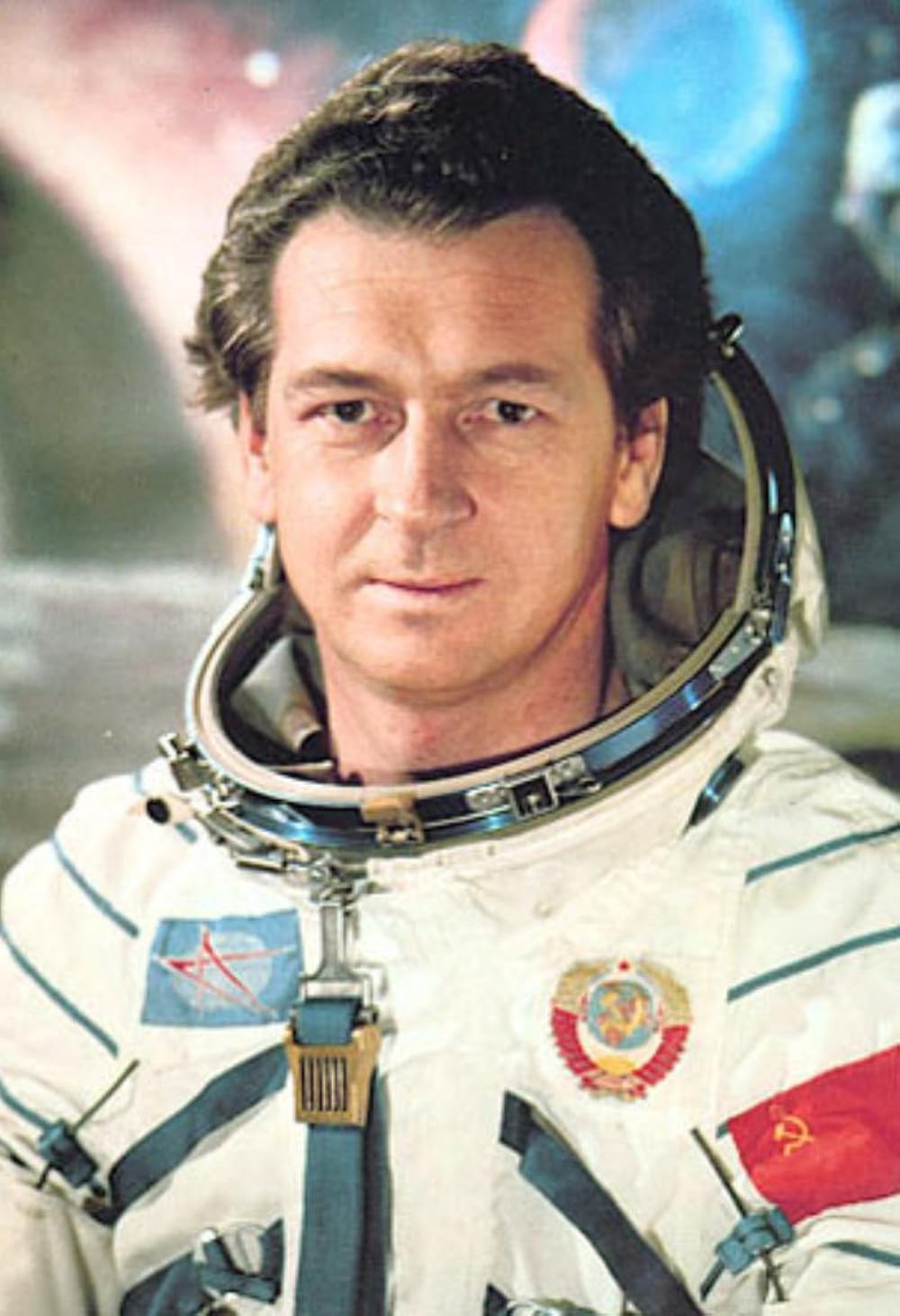
Vitaly Ivanovich Sevastyanov

Vitaly Ivanovich Sevastyanov
Vitaly Ivanovich Sevastyanov (Russian: 8 July 1935 – 5 April 2010) was Soviet cosmonaut and an engineer who flew on the Soyuz 9 and Soyuz 18 missions.
His own first flight was on Soyuz 9. Lifting off at night — one of several firsts that Soyuz 9 set — with Andrian Nikolayev, the third Soviet cosmonaut in space, Sevastyanov spent 17 days, 17 hours making 286 orbits of the Earth, breaking a five-year record for time in space and setting the stage for future space station crews to live onboard for extended stays.
Weakened by a lack of exercise countering the effects of long duration spaceflight, Nikolayev and Sevastyanov had to be carried from their spacecraft after landing.
Sevastyanov would walk away from his second flight even though it was more than three times as long. Paired with Pyotr Klimuk for the 63-day Soyuz 18 mission in 1975, Sevastyanov served as the flight engineer for the second expedition to the Salyut 4 space station.
Again tasked with studying the effects of living in space, Sevastyanov took part in biomedical research, including an exercise regime, designed to better address the crew's re-adaptation to gravity upon landing. He and Klimuk also grew plants aboard the station and observed the Earth.
In space during the first joint-U.S.-USSR spaceflight, the Apollo-Soyuz Test Project, Sevastyanov helped tie the record at the time for the most people simultaneously off the planet at seven.
Over the course of his two missions, Sevastyanov logged 80 days, 16 hours and 18 minutes in space.
172
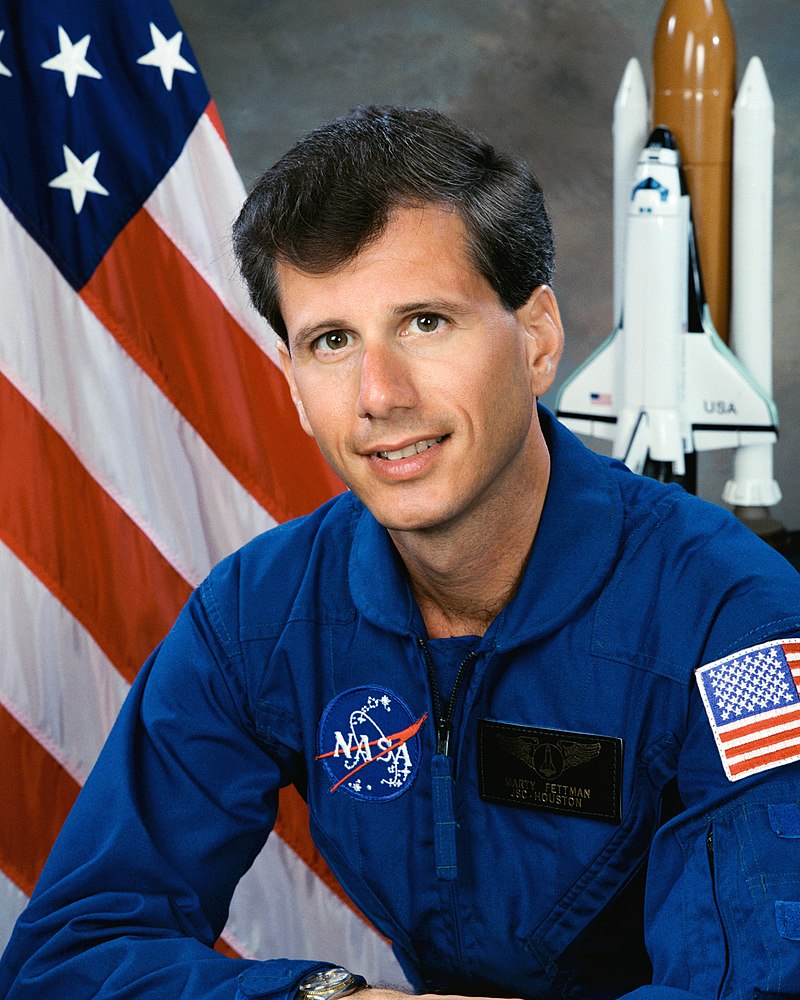
Martin Joseph Fettman

Martin Joseph Fettman
Martin Joseph Fettman, born on December 31, 1956, Brooklyn, New York. is an American pathologist and researcher who flew on NASA Space Shuttle mission STS-58 aboard the Space Shuttle Columbia as a Payload Specialist.
Fettman was selected as a NASA payload specialist candidate in December 1991, as the prime payload specialist for Spacelab Life Sciences-2 in October 1992. He then flew on STS-58 in October 1993. Since the flight, he has made over seventy public appearances representing space life sciences research before higher education, medical, veterinary, and lay organizations, and visited over twenty K-12 schools around the United States and Canada. He is a member of the NASA Advisory Council Life and Biomedical Sciences and Applications Advisory Subcommittee
173
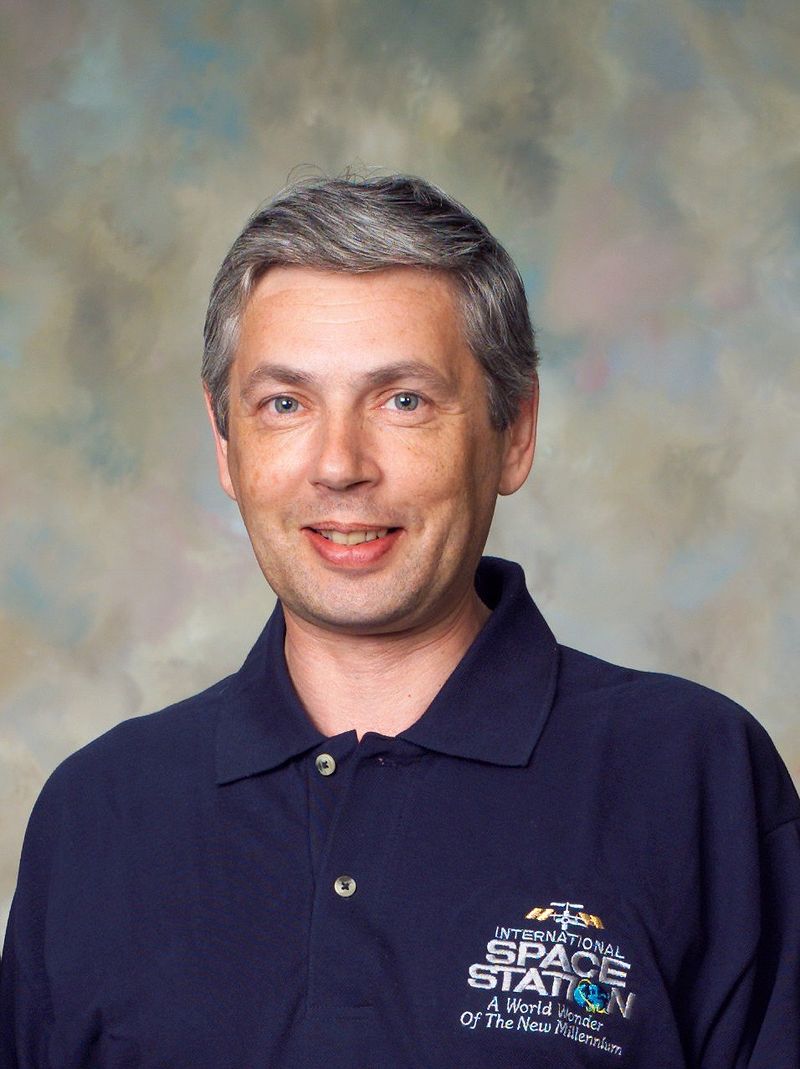
Yuri Georgiyevich Shargin

Yuri Georgiyevich Shargin
Yuri Georgiyevich Shargin (Russian: was born on March 20, 1960, in Engels, Saratov Oblast, Russian SFSR) is a retired cosmonaut of the Russian Space Forces.
He was selected as a cosmonaut on February 9, 1996.
He was selected in 2004, to be the flight engineer on the Soyuz TMA-5 mission to the International Space Station. Soyuz TMA-5 was successfully launched on October 14, 2004.
Shargin was the first Russian Space Forces cosmonaut to launch into space. Due to his late addition to the crew and lack of background information or information about his activities in space, some questioned the motives of his flight. However, chief flight director Vladimir Solovyov, assured, “We, on the ISS, are not involved in military matters.” After nearly 10 days in space, he returned to Earth on board Soyuz TMA-4.
174
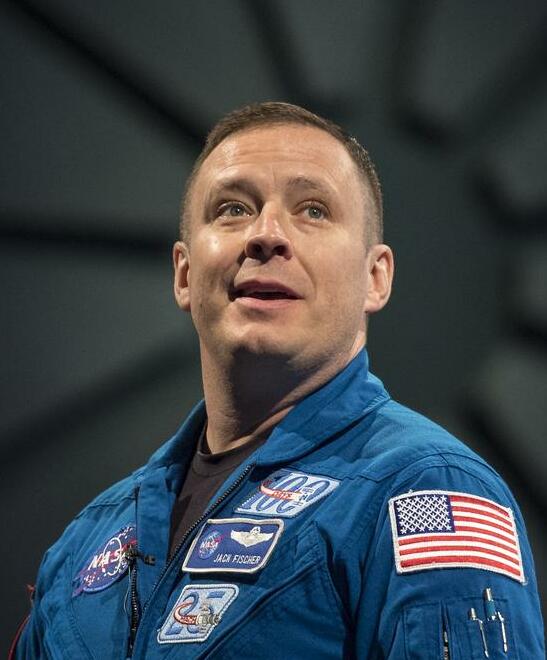
Jack David Fischer

Jack David Fischer
Jack David Fischer (born January 23, 1974) is an American engineer, test pilot and a former NASA astronaut. He made his first spaceflight in April 2017, as a flight engineer for Expedition 51/52 on the International Space Station.
Originally assigned to the Expedition 52/53 crew, he was reassigned to launch aboard Soyuz MS-04 to the ISS in April 2017 as a flight engineer for Expedition 51/52.
Fischer launched aboard MS-04 on April 20, 2017(Expedition 51/52). They docked with the station approximately 6 hours after launch, being the first crew of a Soyuz-MS series to make the shorter 6-hour rendezvous instead of the 2 day orbital rendezvous of the previous launches.
On May 13, 2017, Fischer performed his first career EVA. The EVA was shortened due to an issue ahead of the spacewalk where the spacewalkers had to share a SCU (Service Cooling Unit) line after the umbilical for Fischer's EMU suffered from a leak. His suit was in good shape, but the line could not be used. The duration was 4 hours and 13 minutes, and it was the 200th EVA to be performed on the ISS.
On May 23, 2017, Fischer performed his second EVA with Whitson. They replaced a backup multiplexer-demultiplexer (MDM) unit that had failed on May 20, 2017. The duration was 2 hours and 46 minutes.
Fischer returned to Earth aboard Soyuz MS-04 on September 3, 2017. The overall duration of his stay in space was 135 days, 18 hours and 8 minutes.
175
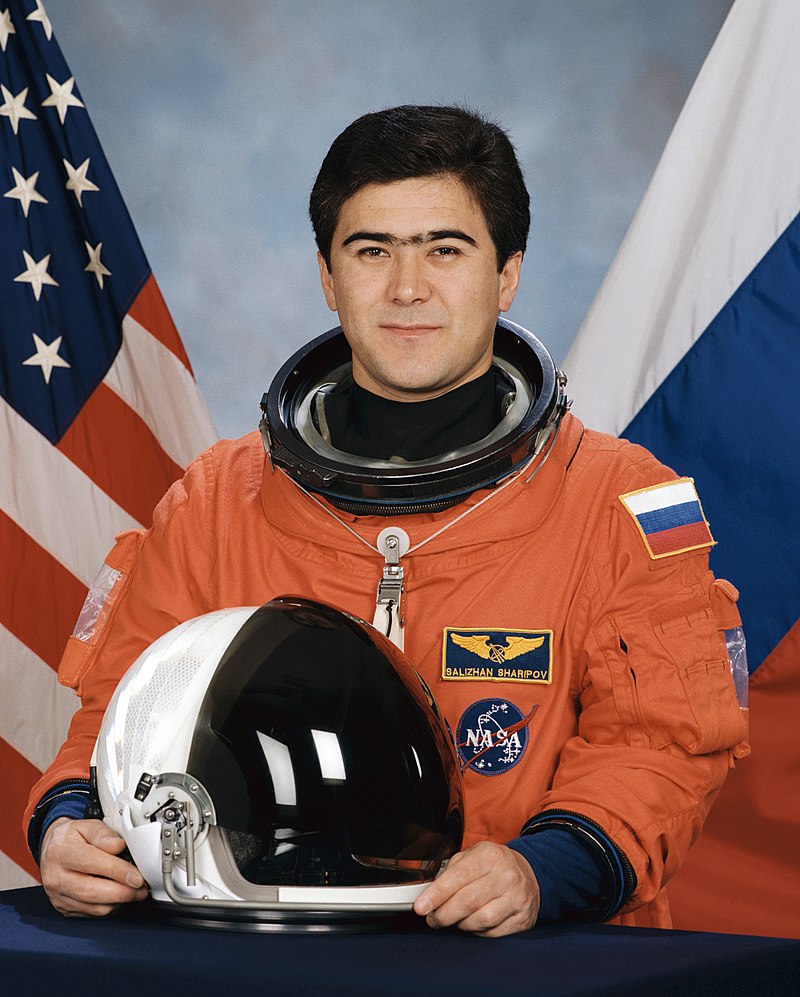
Salizhan Shakirovich Sharipov

Salizhan Shakirovich Sharipov
Salizhan Shakirovich Sharipov (Russian: born on 24 August 1964) is a Kyrgyz cosmonaut of Uzbek descent. He has been to space twice (launched from the U.S. as an astronaut in 1998 and from Russia as a cosmonaut in 2004) and has conducted two space walks.
Sharipov served as a mission specialist on the crew of STS-89 (22–31 January 1998), the eighth Shuttle-Mir docking mission during which the crew transferred more than 8,000 pounds of scientific equipment, logistical hardware and water from Space Shuttle Endeavour to Mir. Mission duration was 8 days, 19 hours and 47 seconds, traveling 3.6 million miles in 138 orbits of the Earth.
Sharipov was also flight engineer on Expedition 10 to the International Space Station (ISS). The Soyuz TMA-5 spacecraft carrying Sharipov, cosmonaut Yuri Shargin and NASA astronaut Leroy Chiao lifted off from the Baikonour cosmodrome on 14 October 2004 at 03:06 UTC. After two days of autonomous flight the Soyuz spacecraft docking with the ISS on 16 October at 4:16 UTC. After spending 192 days in space, Sharipov returned to Earth on 24 April 2005 with Leroy Chiao and ESA astronaut Roberto Vittori aboard the Soyuz TMA-5 spacecraft. The Soyuz capsule landed at 22:08 UTC 90 km north of the town of Arkalyk.
Sharipov has conducted two career spacewalks totalling 10 hours and 34 minutes.
176
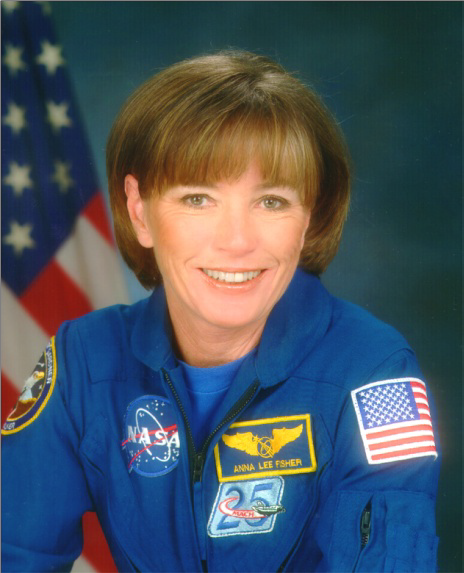
Anna L Fischer

Anna L Fischer
Anna L Fischer was born on August 24, 1949, in New York City, New York, but considers San Pedro, California, to be her hometown.
Fisher was selected as an astronaut by NASA in January 1978.
Fisher was a mission specialist on STS-51A, which launched from Kennedy Space Center, on November 8, 1984. She was accompanied by mission commander Frederick (Rick) Hauck pilot David M. Walker, and fellow mission specialists, Joseph P. Allen and Dale H. Gardner. This was the second flight of the orbiter DiscoverySTS-51A completed 127 Earth orbits before landing at Kennedy Space Center on November 16, 1984. With the completion of her first flight, Fisher logged a total of 192 hours in space.
Fisher was assigned as a mission specialist on STS-61H, prior to the Challenger accident. Following the accident, she worked as the deputy of the Mission Development branch of the Astronaut Office and as the astronaut office representative for Flight Data File issues.
Fisher was a mission specialist on STS-51A, which launched from Kennedy Space Center, on November 8, 1984. STS-51A completed 127 Earth orbits before landing at Kennedy Space Center on November 16, 1984. With the completion of her first flight, Fisher logged a total of 192 hours in space.
Fisher was a management astronaut, working on display development for the Orion Multi-Purpose Crew Vehicle (MPCV).
177
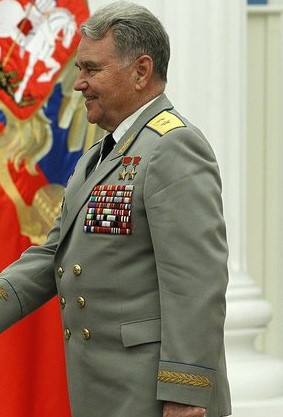
Vladimir Aleksandrovich Shatalov

Vladimir Aleksandrovich Shatalov
Vladimir Aleksandrovich Shatalov (Russian: December 8, 1927 – June 15, 2021) was a Soviet and Russian cosmonaut who flew three space missions of the Soyuz programme: Soyuz 4, Soyuz 8, and Soyuz 10. From 1987 to 1991, he headed the Yuri Gagarin Cosmonaut Training Center.
January 23, 1965, Shatalov was appointed cosmonaut of the 2nd Detachment (Military Space Programs).
He made his first flight on January 14, 1969, on the Soyuz-4 spacecraft. It was the first to carry out manual rendezvous and docking with Soyuz-5. With his participation, for the first time in the world, an experimental space station was created and the transition through open space of cosmonauts Aleksei Yeliseyev and Yevgeny Khrunov from the Soyuz-5 spacecraft to the Soyuz-4 was carried out. There was no internal connecting corridor between the two craft, and so the crew had to step into space using handrails on the craft in order to carry out the transition.
178
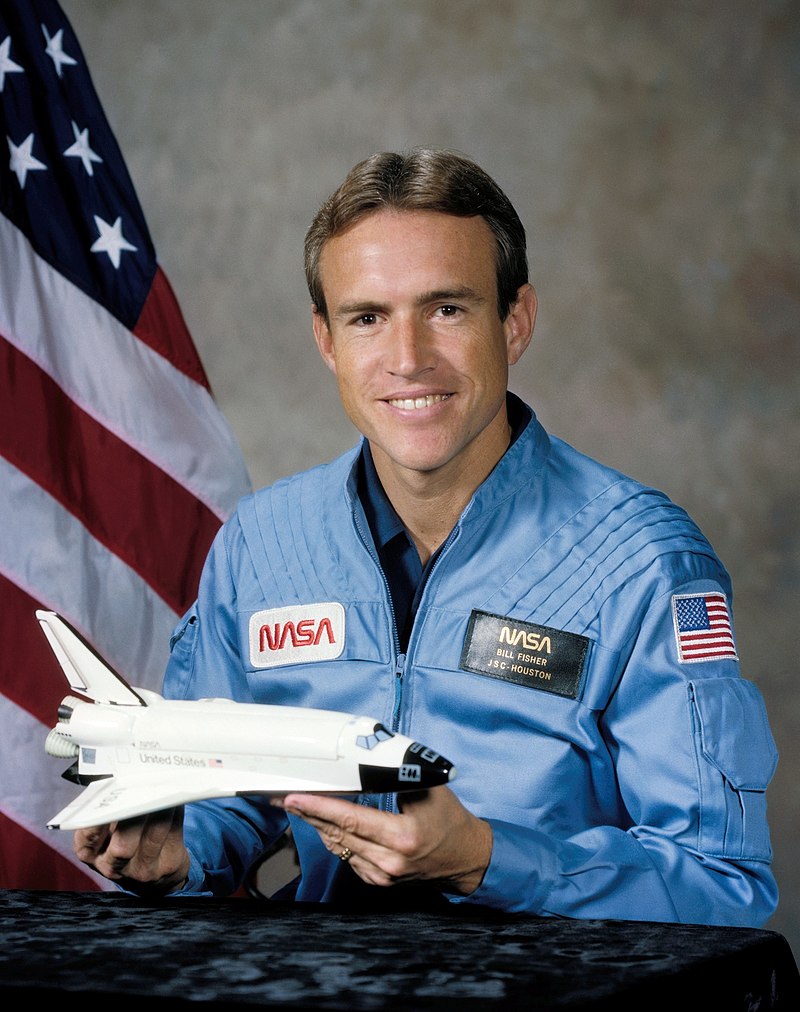
William Frederick Fisher

William Frederick Fisher
William Frederick Fisher (born April 1, 1946) is an American physician and a former NASA astronaut. Fisher went into space in 1985 on board the Space Shuttle.
Dr. Fisher was a mission specialist on STS-51I, which launched from Kennedy Space Center, Florida, on August 27, 1985. STS-51I was acknowledged as the most successful Space Shuttle mission yet flown. Discovery completed 112 orbits of the Earth before landing at Edwards Air Force Base, California, on September 3, 1985. In completing this flight, Dr. Fisher has logged over 170 hours in space, including 11 hours and 52 minutes of EVA.
179
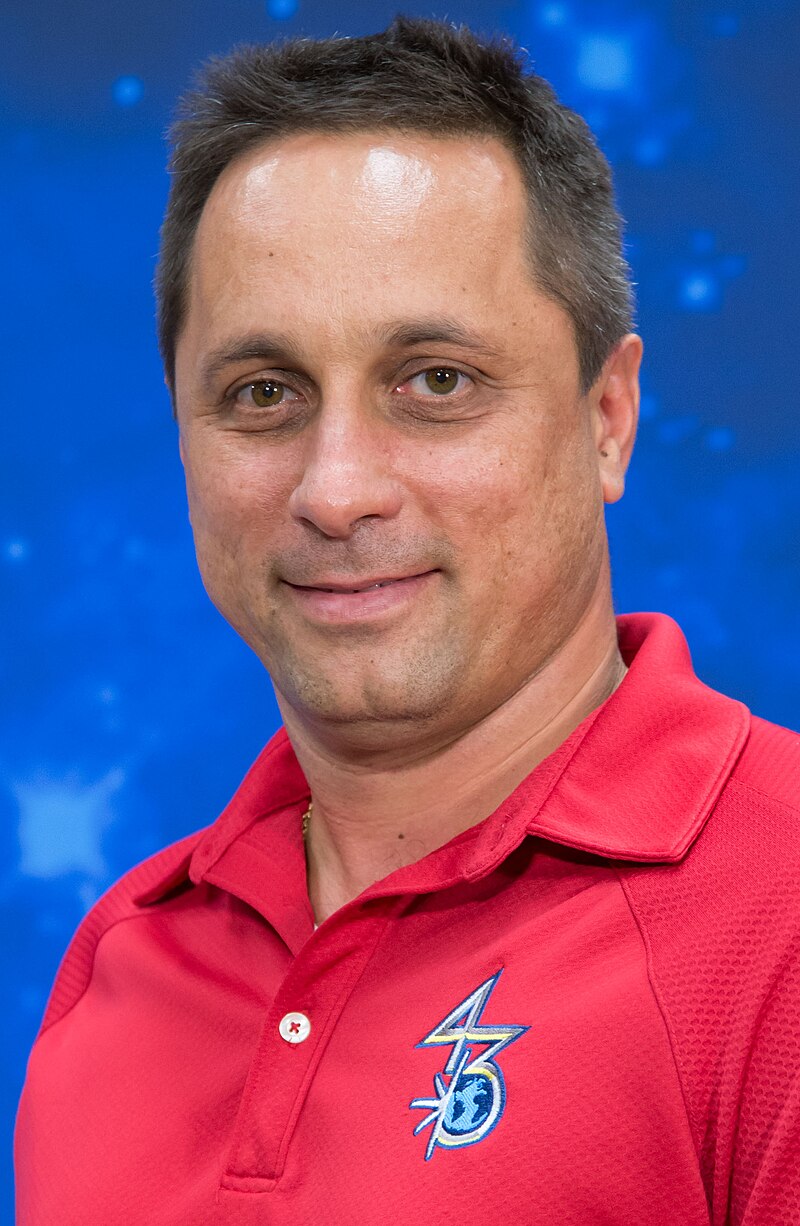
Anton Nikolaevich Shkaplerov

Anton Nikolaevich Shkaplerov
Anton Nikolaevich Shkaplerov (Russian: born 20 February 1972, in Sevastopol, Crimea) is a former Russian cosmonaut. He is a veteran of four spaceflights.
Shkaplerov served as a Flight Engineer for Expedition 29/30 aboard the ISS. He was the Commander of Soyuz TMA-22 and launched on 16 November 2011. After 2 days in orbit, docked with the International Space Station (ISS) to begin Expedition 29/30. He spent 165 days in space before undocking and returning to Earth on 27 April 2012.
On 23 November 2014, Shkaplerov commanded Soyuz TMA-15M alongside flight engineers Samantha Cristoforetti and Terry Virts (along with three Lego minifigure replicas of them) from the Baikonur Cosmodrome. It successfully docked at the ISS roughly six hours later. The crew spent 199 days in space before returning to Earth on 11 June 2015. Shkaplerov's total time in space was brought to 365 days.
Shkaplerov was launched on into space on board Soyuz MS-07 on 17 December 2017, with NASA astronaut Scott Tingle and Norishige Kanai of JAXA. He was the flight engineer of Expedition 54 and commander of Expedition 55. On 2 February 2018, Shkaplerov and Expedition 54 Commander Alexander Misurkin participated in an 8-hour 13 minutes spacewalk outside of the ISS to replace an old electronics box.
Shkaplerov flew to the ISS on board Soyuz MS-19 on 5 October 2021 with film director Klim Shipenko and actress Yulia Peresild, who were filming The Challenge, a joint project of Roscosmos, Channel One and the Yellow, Black and White studio. On 19 January 2022, he participated in an 7-hour 11 minutes spacewalk to configure the Prichal module to support visiting Soyuz and Progress vehicles. Shkaplerov returned to earth on 30 March 2022.
180
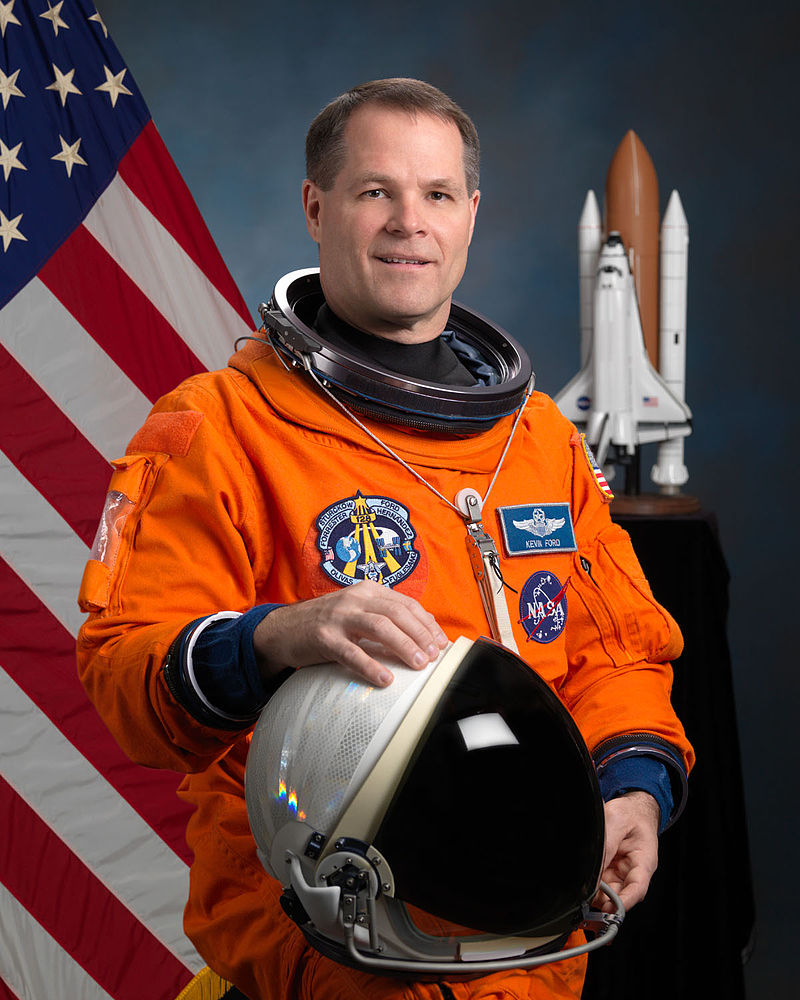
Kevin Anthony Ford

Kevin Anthony Ford
Kevin Anthony Ford was born on July 7, 1960, in Portland, Indiana and considers Montpelier, Indiana his hometown, is a retired United States Air Force Colonel and NASA astronaut. He was pilot of STS-128 and flight engineer 2 of Soyuz TMA-06M from October 23, 2012, to March 16, 2013. He served as ISS flight engineer for Expedition 33, and commander of Expedition 34.
Ford was pilot of Space Shuttle Discovery STS-128 which launched on August 28, 2009, and landed on September 11, 2009. On October 23, 2012, Ford again flew to space as part of Expedition 33 aboard Soyuz TMA-06M. Ford became commander of Expedition 34 on November 18, 2012, with the departure from the ISS of the Soyuz TMA-05M spacecraft, which returned the Expedition 33 crew to Earth. He, along with the Russian crewmbmers of Soyuz TMA-06M, returned to Earth on March 16, 2013.
181
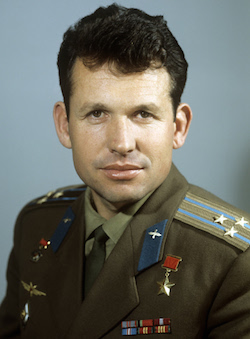
Georgy Stepanovich Shonin

Georgy Stepanovich Shonin
Georgy Stepanovich Shonin (Ukrainian: 3 August 1935 – 7 April 1997; born in Rovenky, Luhansk Oblast, (now Ukraine) but grew up in Balta of Ukrainian SSR) was a Soviet cosmonaut, who flew on the Soyuz 6 space mission.
Shonin was part of the original group of cosmonauts selected in 1960. Shonin would fly on Soyuz 6 in October 1969.
182
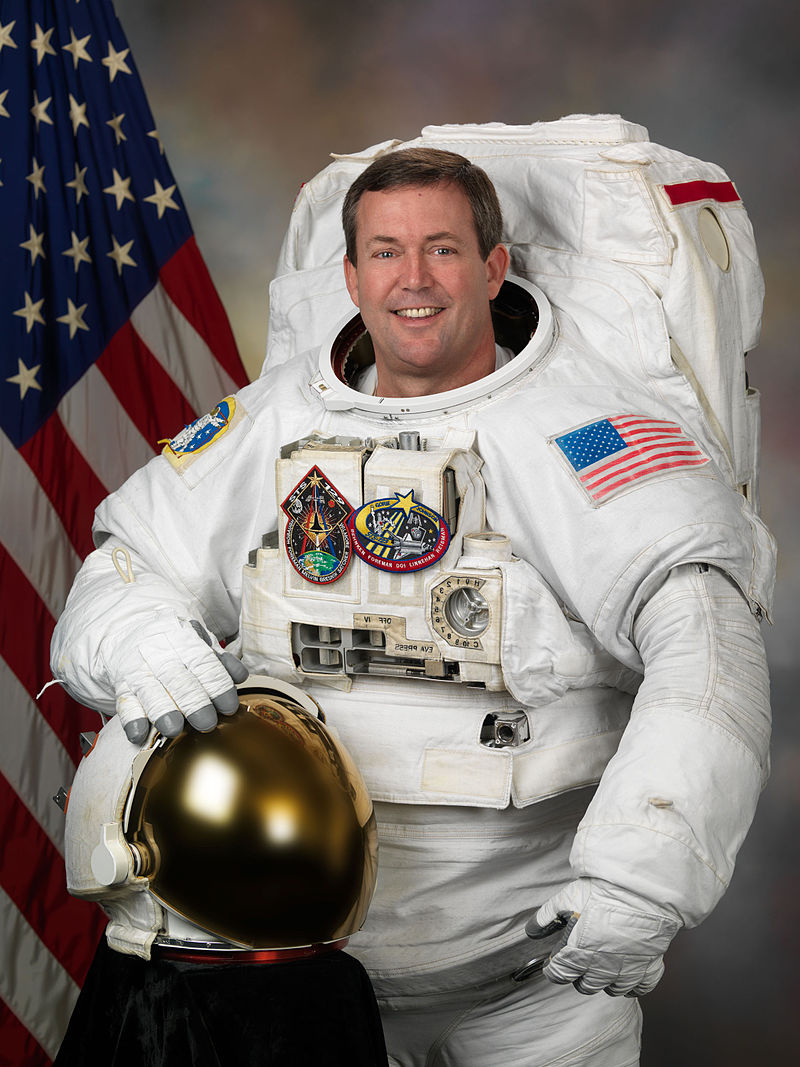
MICHAEL J. FOREMAN

MICHAEL J. FOREMAN
MICHAEL J. FOREMAN was born on March 29, 1957 in Columbus, Ohio. His hometown is Wadsworth, Ohio.
A veteran of two space flights, Foreman flew on STS-123 in March 2008, and STS-129 in November 2009, and has logged more than 637 hours in space, including 32 hours and 19 minutes of EVA in five spacewalks.
Foreman was selected as a mission specialist for the STS-123 mission in January 2007. The STS-123 Endeavour mission launched in November 2008 and delivered the Japanese Experiment Module and the Canadian Special Purpose Dexterous Manipulator to the International Space Station. During the mission, Foreman performed three Extrvehicular Activities (EVAs): the first in support of assembly of Dextre; the second to assess experimental tile materials; and the third to relocate the Orbiter Boom Sensor System.
Foreman was also a crewmember of the STS-129 mission in November 2009. STS-129 was the first flight of an ExPRESS Logistics Carrier that are designed to support equipment deliveries for the International Space Station. As a mission specialist on the flight, Foreman performed two additional EVAs bringing his total experience between two flights to five spacewalks. The two spacewalks added 12 hours and 45 minutes to his EVA time
A veteran of two space flights, Foreman has logged more than 637 hours in space, including 32 hours and 19 minutes of EVA in five spacewalks.
183
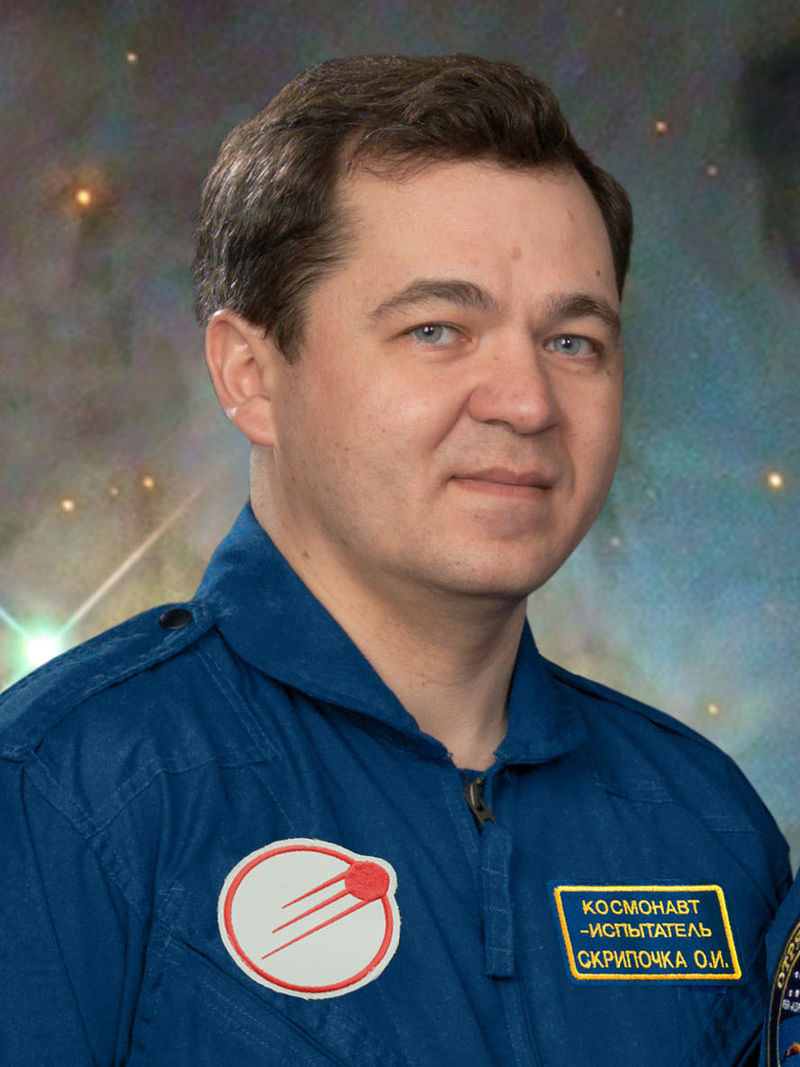
Oleg Ivanovich Skripochka

Oleg Ivanovich Skripochka
Oleg Ivanovich Skripochka (Russian: born on 24 December 1969 in Nevinnomyssk, Stavropol Krai, Russian SFSR, Soviet Union) is a Russian engineer and cosmonaut. In 2011 he was in space serving as an Expedition 25/26 crew member.
In 1997, Skripochka was selected as a test cosmonaut and from January 1998 to November 1999, he studied the advanced space training course. From April 2007 to April 2008, he trained as an ISS Expedition 17 backup crewmember (Soyuz TMA and ISS flight engineer). From August 2008 he trained as an ISS Expedition 25/26 and Soyuz TMA-M flight engineer.
Skripochka was a member (Flight Engineer) of the ISS Expedition 25/26, that was launched on 7 October 2010 from Baikonur Cosmodrome, aboard Soyuz TMA-01M spacecraft. Skripochka arrived at the ISS after the Soyuz spacecraft linked up with the space station at 00:01 UTC on 10 October 2010. He stayed on board the ISS till March 2011.
After spending 159 days in space, Skripochka returned to Earth on 16 March 2011. The Soyuz TMA-01M spacecraft carrying Skripochka undocked from the Poisk module at 4:27 GMT. Following a nominal re-entry, the Soyuz capsule touched down on its side at 7:54 GMT near Arkalyk in north central Kazakhstan.
Skripochka returned to space on Soyuz TMA-20M at 19 March 2016 03:09 UTC, as part of the Expedition 47/48 crew.
Skripochka launched to the International Space Station on board Soyuz MS-15 on 25 September 2019, as a member of Expeditions 61 and 62. He returned to Earth April 17, 2020.
184
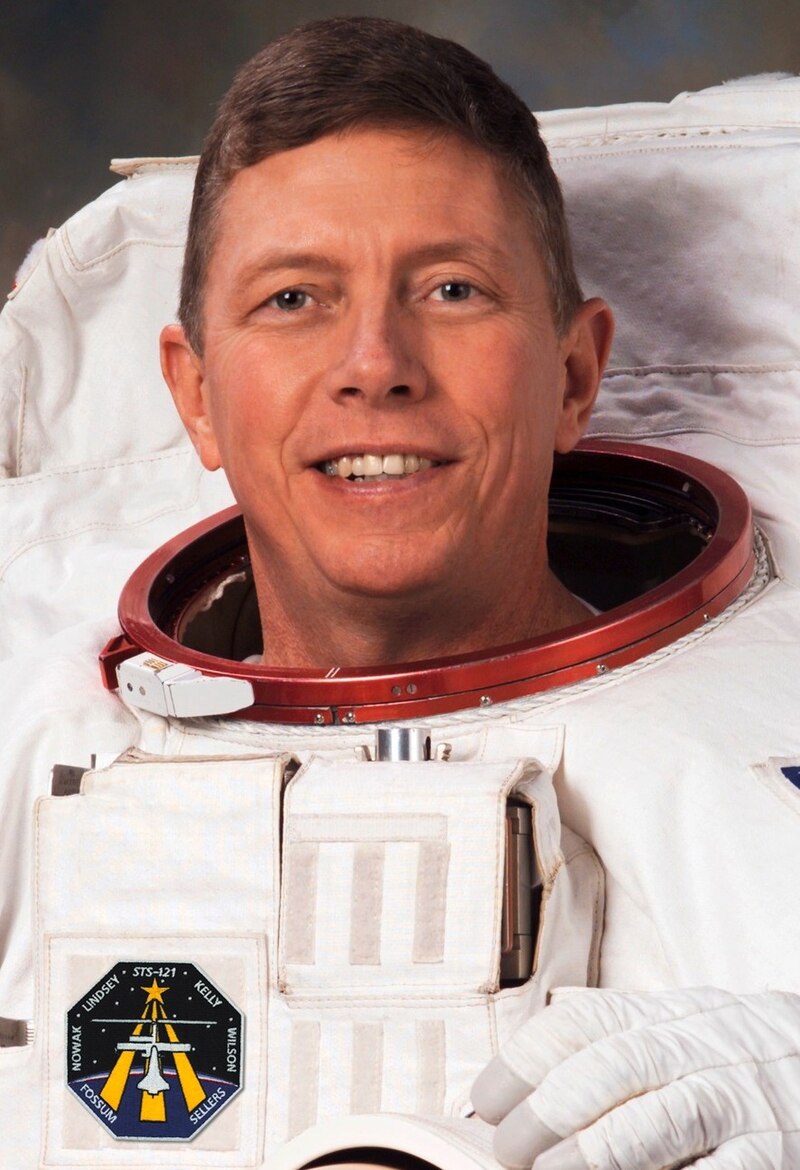
Michael E. Fossum

Michael E. Fossum
Michael E. Fossum was born on December 19, 1957, in Sioux Falls, South Dakota, and grew up in McAllen, Texas.
He entered space for the first time on July 4, 2006, as a mission specialist of mission STS-121 to the International Space Station where he participated in three spacewalks. On July 8, Fossum with Piers Sellers conducted a 7 and a half hour spacewalk making a repair to the ISS and testing using the Shuttle's arm as a platform for making repairs to the Shuttle.
In 2008, Fossum assumed the role of mission specialist on board STS-124 launching on May 31, 2008. He performed three spacewalks during the 14-day mission.
On June 7, 2011, Fossum launched with two crewmates on Soyuz TMA-02M from the Baikonur Cosmodrome, Kazakhstan, to the ISS to join the crew of Expedition 28. Upon the departure of Expedition 28, Fossum served as ISS commander during Expedition 29 from September 9 until November 21, 2011. He returned to Earth on November 22, 2011. During Expedition 28, Fossum performed his seventh EVA with Ronald Garan which lasted 6 hours and 31 minutes.
185
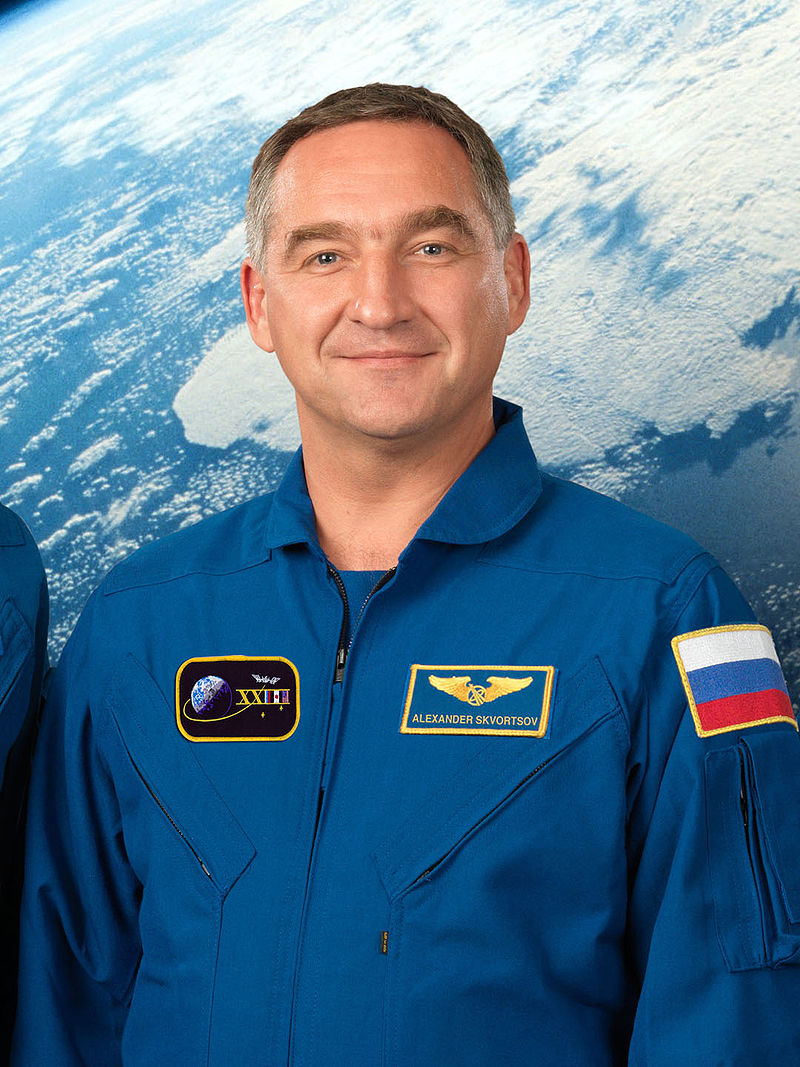
Aleksandr Aleksandrovich Skvortsov

Aleksandr Aleksandrovich Skvortsov
Aleksandr Aleksandrovich Skvortsov (Russian: born on May 6, 1966) is a Russian cosmonaut. He is a veteran of three spaceflights, which were long-duration missions aboard the International Space Station.
His first spaceflight took place from April to September 2010, and was launched with the spacecraft Soyuz TMA-18. He arrived at the station part way through Expedition 23, of which Oleg Kotov was the Commander. When Expedition 24 began in June, Skvortsov became Commander.
Skvortsov served as a flight engineer for the International Space Station (ISS) on Expedition 23. He traveled to the ISS aboard Soyuz TMA-18 on April 2, 2010, from the Baikonur Cosmodrome in Kazakhstan.
Skvortsov was the commander of the ISS Expedition 24. At the traditional "Change of Command" ceremony held on May 31, 2010, aboard the ISS Expedition 23 commander Oleg Kotov handed over his duties to Skvortsov.
Ending Expedition 24, the Soyuz TMA-18 spacecraft carrying Commander Alexander Skvortsov, and two others undocked from the space station at 10:02 p.m. EDT on September 24, 2010. Following a normal descent, the Soyuz crew landed at 5:23 a.m. GMT near Arkalyk, Kazakhstan on September 25.
Skvortsov returned to space aboard Soyuz TMA-12M, along with Oleg Artemyev and Steven Swanson, as a flight engineer on the Expedition 39 crew. The mission launched on March 25, 2014, and landed on September 11, 2014.
Skvortsov launched again on July 20, 2019, and arrived to the International Space Station on the same day, joining the Expedition 60/61 crew and returned earth on 25 September 2019.
186
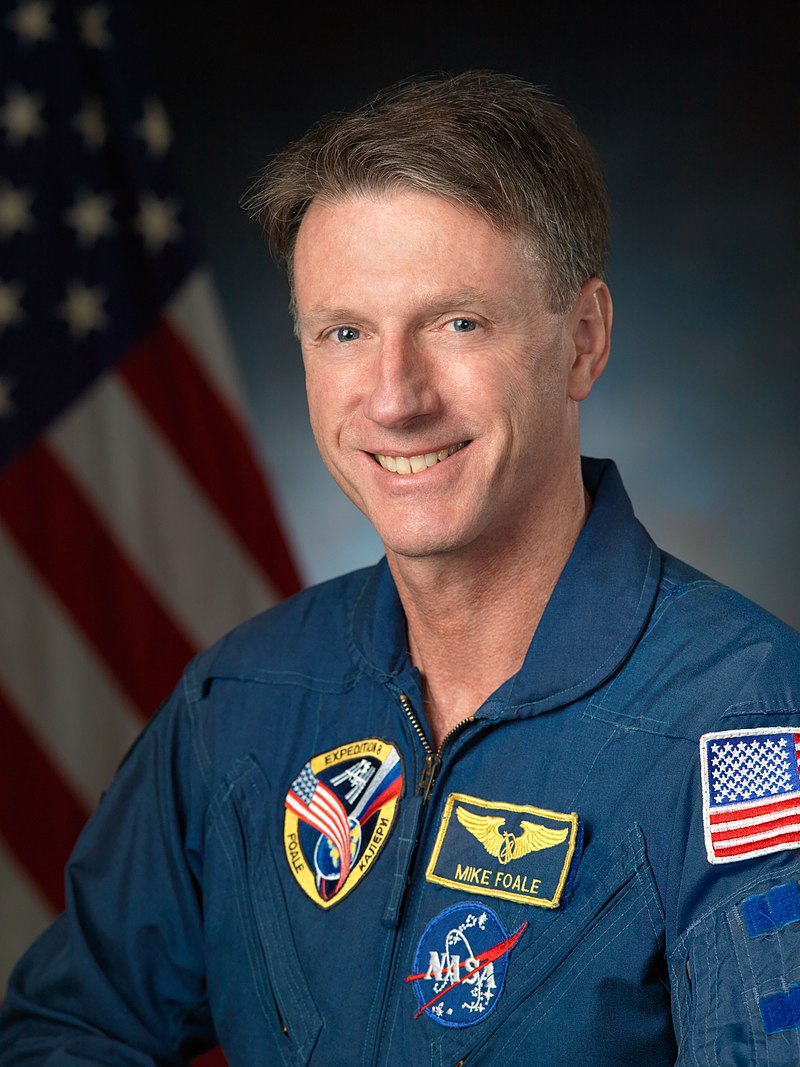
Colin Michael Foale

Colin Michael Foale
Colin Michael Foale (born on 6 January 1957) is a British-American astrophysicist and a former NASA astronaut. He is a veteran of six space missions, and is the only NASA astronaut to have flown extended missions aboard both Mir and the International Space Station. He was the second Briton in space and the first to perform a space walk. Until 17 April 2008, he held the record for most time spent in space by a US citizen: 374 days, 11 hours, 19 minutes, and he still holds the cumulative-time-in-space record for a British citizen.
He flew on Space Shuttle missions STS-45 (1992), STS-56 (1993) and STS-63 (1995). In the last mission, he undertook a four-hour EVA. He was then selected for an extended mission aboard the Russian Mir space station.
Launched by STS-84 and returned by STS-86, Foale spent four months on Mir in 1997 during the Mir 23 and Mir 24 missions.
Foale and Russian cosmonaut Anatoly Solovyev conducted a six-hour EVA in Russian Orlan spacesuits to inspect exterior damage to the Spektr module.
In 1999, Foale was a member of Space Shuttle mission STS-103, during which he conducted an eight-hour spacewalk to replace components of the Hubble Space Telescope. During their six-month tour of duty on the station, Foale and Kaleri carried out a 4-hour Russian EVA in Orlan-M space suits to install experiments outside the Service Module. The EVA was cut short when significant amounts of water in Kaleri's helmet prevented further work. Expedition 8 ended on 29 April 2004.
187
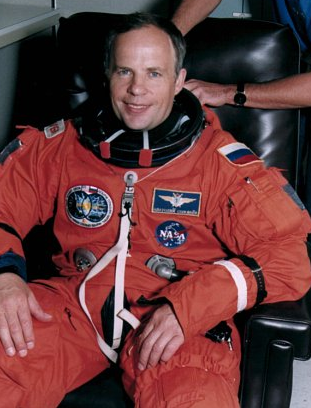
Anatoly Yakovlevich Solovyev

Anatoly Yakovlevich Solovyev
Anatoly Yakovlevich Solovyev is a retired Russian and Soviet cosmonaut and pilot. Solovyev was born on January 16, 1948, in Riga, Latvia (at that time - republic of the Soviet Union). Solovyev holds the world record on the number of spacewalks performed (16), and accumulated time spent spacewalking (over 82 hours).
He was commander for the 9-day Mir EP-2 visiting ("lifeboat" swap) crew June 1988 launched aboard Soyuz TM-5 and returned aboard Soyuz TM-4.
He then served as the Commander for 179 day Soyuz TM-9/Mir EO-6 long-duration mission February to August 1990. This included an EVA to repair thermal blankets on Soyuz TM-9, and a second EVA for repairs to the Kvant-2 module hatch.
He was commander for the 188-day Mir EO-12/Soyuz TM-15 with Sergei Avdeyev, from July 1992 until February 1993. He conducted four more EVAs during the mission.
He served as back up commander of Mir EO-18, and then as commander of Mir EO-19 with Nikolai Budarin. They launched as passengers aboard Space Shuttle Atlantis on the STS-71 mission in June 1995. This was at the first Orbiter docking with Mir, and the EO-19 crew undocked Soyuz TM-21 briefly to observe and photograph the departure of Atlantis. Solovyev also performed three EVAs. They returned to Earth aboard Soyuz TM-21 in September after 75 days.
His final space mission was as commander of Mir EO-24/Soyuz TM-26 for 197 days from August 1997 until February 1998 with Pavel Vinogradov.
Solovyev performed six more EVAs to set a world record total of 16, with a world record combined duration of 82 hours 21 minutes.
188
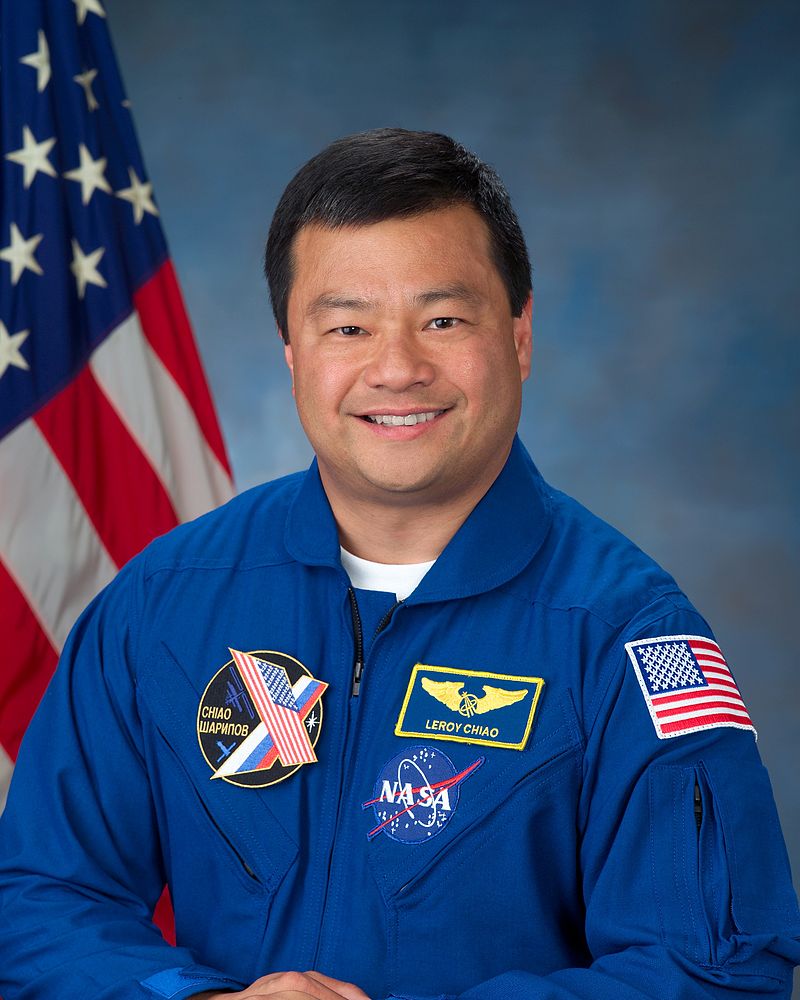
Leroy Chiao

Leroy Chiao
Leroy Chiao (born August 28, 1960) is an American chemical engineer, retired NASA astronaut, entrepreneur, motivational speaker, and engineering consultant. Chiao flew on three Space Shuttle flights, and was the commander of Expedition 10, where he lived on board the International Space Station from October 13, 2004 to April 24, 2005.
A veteran of four space flights, Chiao flew as a mission specialist on STS-65 in 1994, STS-72 in 1996 and STS-92 in 2000. Chiao had logged over 36 days and 12.5 hours in space, including over 26 EVA hours in four space walks, prior to his mission aboard the International Space Station.
Leroy Chiao was launched from STS-65 Columbia (July 8–23, 1994) and returned to land at the Kennedy Space Center, Florida, setting a new flight duration record for the Space Shuttle program at that time. The STS-65 mission was accomplished in 236 orbits of the Earth, traveling 6.1 million miles in 353 hours and 55 minutes.
STS-72 Endeavour (January 11–20, 1996) was a nine-day mission. Chiao performed two spacewalks designed to demonstrate tools and hardware, and evaluate techniques to be used in the assembly of the International Space Station. In completing this mission, Chiao logged a total of 214 hours and 41 seconds in space, including just over thirteen EVA hours, and traveled 3.7 million miles in 142 orbits of the Earth.
STS-92 Discovery (October 11–24, 2000) was launched from the Kennedy Space Center, Florida and returned to land at Edwards Air Force Base, California. During the 13-day flight, the seven member crew attached the Z1 Truss and Pressurized Mating Adapter 3 to the International Space Station using Discovery's robotic arm and performed four spacewalks to configure these elements. This expansion of the ISS opened the door for future assembly missions and prepared the station for its first resident crew. Chiao totaled 13 hours and 16 minutes of EVA time in two spacewalks. The STS-92 mission was accomplished in 202 orbits, traveling 5.3 million miles in 12 days, 21 hours, 40 minutes and 25 seconds.
ISS Expedition 10 (October 9, 2004 – April 24, 2005), Chiao was the commander of Expedition 10 on the International Space Station.
189
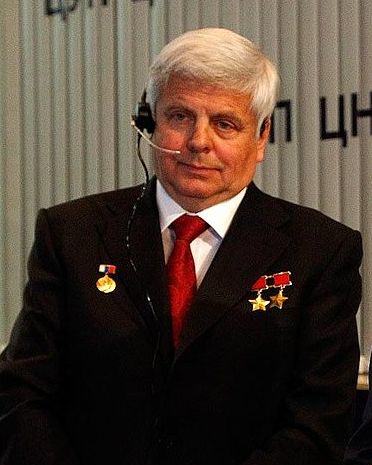
Vladimir Alekseyevich Solovyov

Vladimir Alekseyevich Solovyov
Vladimir Alekseyevich Solovyov (Russian: born on 11 November 1946) is a former Soviet and Russian cosmonaut. He was selected as a cosmonaut on 1 December 1978 and flew as Flight Engineer on Soyuz T-10 and Soyuz T-15, spending a total of 361 days, 22 hours, 49 minutes in space. His first flight, Soyuz T-10, took off on 8 February 1984, to join Salyut 7. The crew spent ten months (nearly 237 days) performing numerous medical and space manufacturing experiments. They came down aboard Soyuz T-11 on 2 October 1984. Solovyov's second flight was aboard Soyuz T-15, taking off on 13 March 1986 and coming back aboard the same craft on 16 July 1986, 125 days later. During the T-15 mission, the crew transferred equipment from Salyut-7 to the new Mir space station; they were the last aboard the former and the first aboard the latter.
190
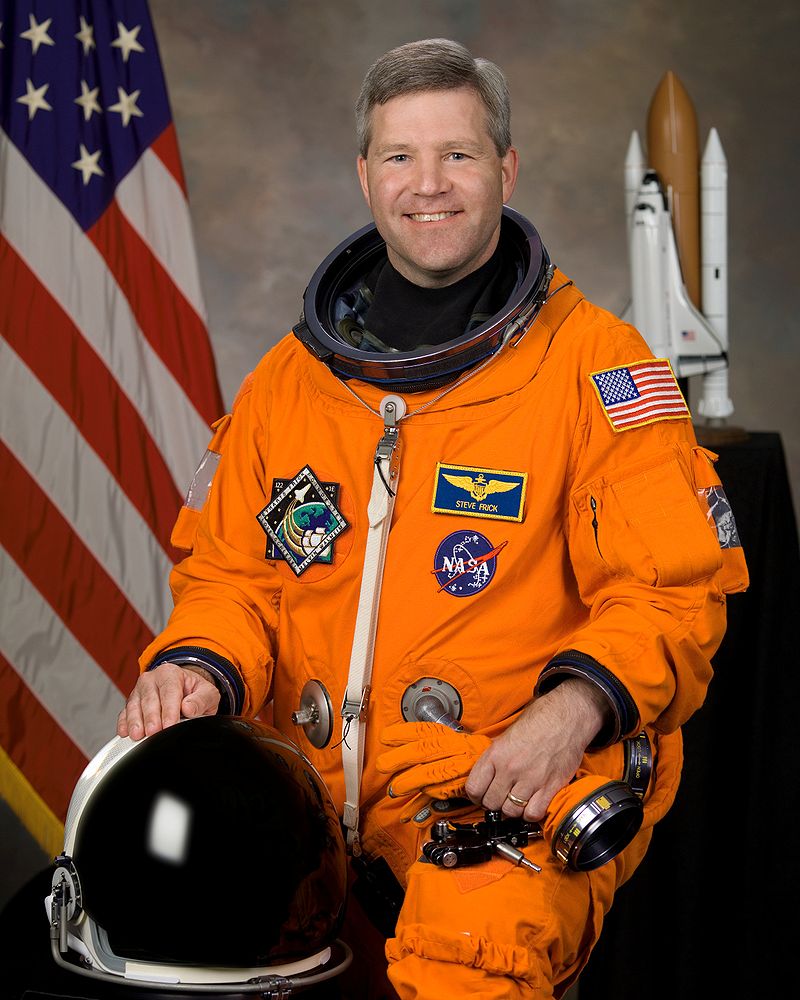
Stephen Nathaniel Frick

Stephen Nathaniel Frick
Stephen Nathaniel Frick (born September 30, 1964) is an American former astronaut and a veteran of two Space Shuttle missions.
Frick was selected as a NASA astronaut candidate in 1996 and was trained as a Space Shuttle pilot. He piloted mission STS-110, a docking mission with the International Space Station.
In July 2006, Frick was assigned to command the crew of STS-122. The 12-day mission delivered the European Space Agency's Columbus laboratory and returned Expedition 16 Flight Engineer Daniel M. Tani to Earth. The mission launched on February 7, 2008, and touched down n February 20, 2008.
191
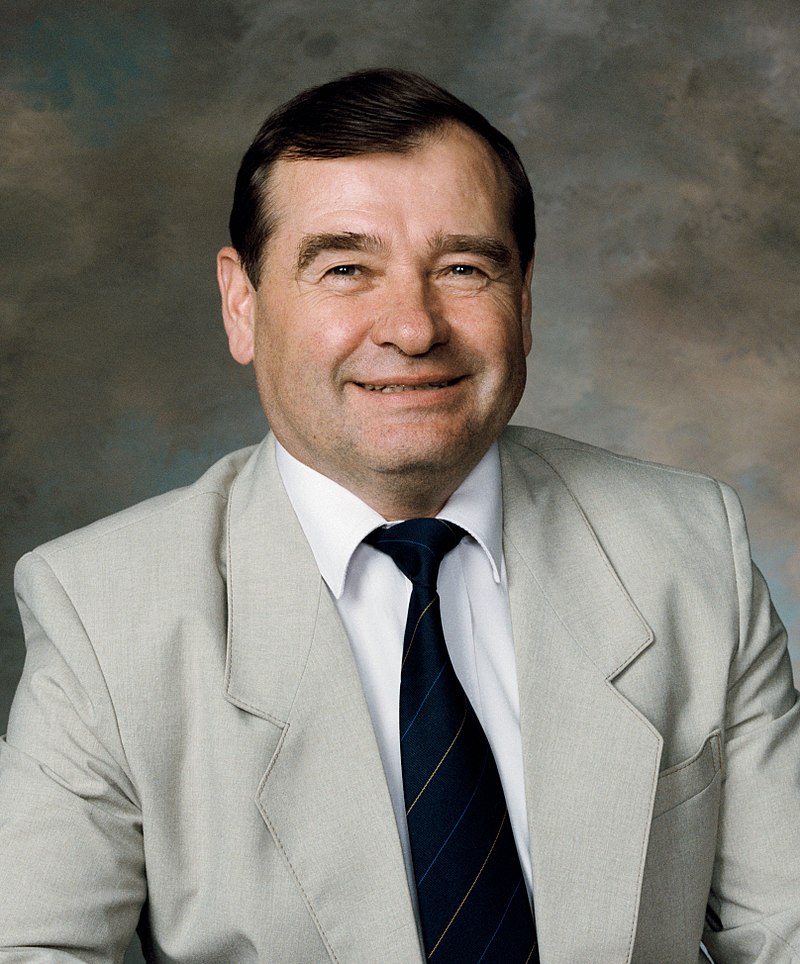
Gennady Mikhailovich Strekalov

Gennady Mikhailovich Strekalov
Gennady Mikhailovich Strekalov (Russian: 26 October 1940 – 25 December 2004, born on 26 October 1940 in Mytishchi near Moscow) was an engineer, cosmonaut, and administrator at Russian aerospace firm RSC Energia. He flew into space five times and lived aboard the Salyut 6, Salyut 7, and Mir space stations, spending over 268 days in space.
His first spaceflight was 27 November to 10 December 1980, as research engineer on Soyuz T-3's mission to the Salyut 6 station.
The pair, Gennady Mikhailovich Strekalov and Vladimir Titov together with Aleksandr Serebrov, launched in April 1983 on Soyuz T-8. Having used up too much of their propellant in the failed rendezvous attempts, the crew were forced to return to Earth on 22 April 1983.
Strekalov and Titov were again scheduled to fly to Salyut 7 on 26 September 1983. The mission's Soyuz-U launcher developed a serious fuel leak in the minutes before launch, forcing launch control to attempt to fire the launch escape system to pull the spacecraft away from the rocket to safety. Strekalov and Titov's capsule was dragged (at accelerations of more than 10 G) to safety and landed 4 km (2.5 mi) from the pad, its occupants bruised but otherwise uninjured. Strekalov and Titov's narrow escape is the only live use of a launch escape system in the history of human spaceflight
Strekalov's next spaceflight was aboard Soyuz T-11, with Yuri Malyshev and Indian cosmonaut Rakesh Sharma. The flight launched from Baikonur's Site 31 on 3 April 1984 and, successfully docked with Salyut-7. The crew stayed on Salyut-7 until 11 April 1984, and returned to Earth not in the spacecraft in which they had come, but in the reentry module of Soyuz T-10, which was already docked at the space station.
From 1 August to 10 December 1990, he was the flight engineer on Soyuz TM-10's flight to Mir, with Gennady Manakov and Japanese reporter-cosmonaut Toyohiro Akiyama. At 130 days, this was his longest spaceflight.
192
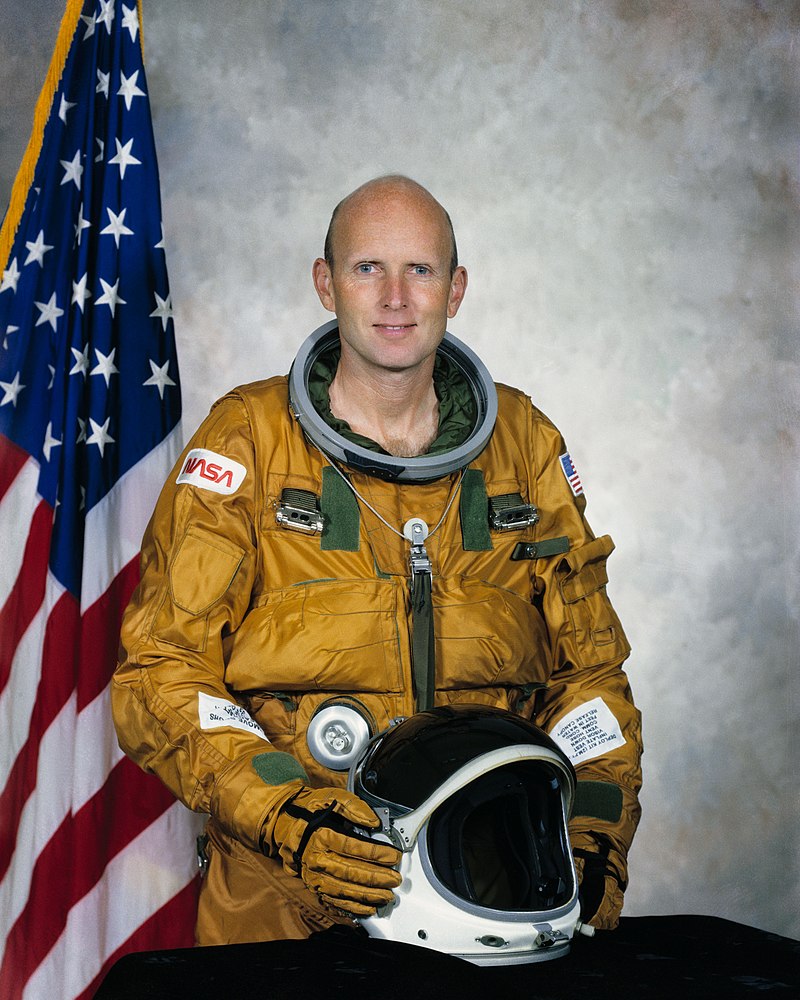
Charles Gordon Fullerton

Charles Gordon Fullerton
Charles Gordon Fullerton (October 11, 1936 – August 21, 2013) was a United States Air Force colonel, a USAF and NASA astronaut, and a research pilot at NASA's Dryden Flight Research Facility, Edwards, California.
Fullerton logged more than 380 hours in space flight, and was a NASA astronaut from September 1969 until November 1986.
In 1977, Fullerton was assigned to one of the two-man flight crews which piloted the Space Shuttle prototype Enterprise during the Approach and Landing Tests Program at Dryden that same year.
Fullerton was the pilot on the eight-day STS-3 Space Shuttle orbital flight test mission March 22–30, 1982. Launched from the Kennedy Space Center, Florida, the mission exposed the orbiter Columbia to extremes in thermal stress and tested the 50-foot (15 m) Canadarm used to grapple and maneuver payloads to orbit. STS-3 landed at Northrup Strip, White Sands, New Mexico.
Fullerton was commander of the STS-51-F "Spacelab 2" mission, launched from Kennedy Space Center on July 29, 1985. This mission, with the orbiter Challenger, was the first pallet-only Spacelab mission and the first to operate the Spacelab Instrument Pointing System (IPS).
193
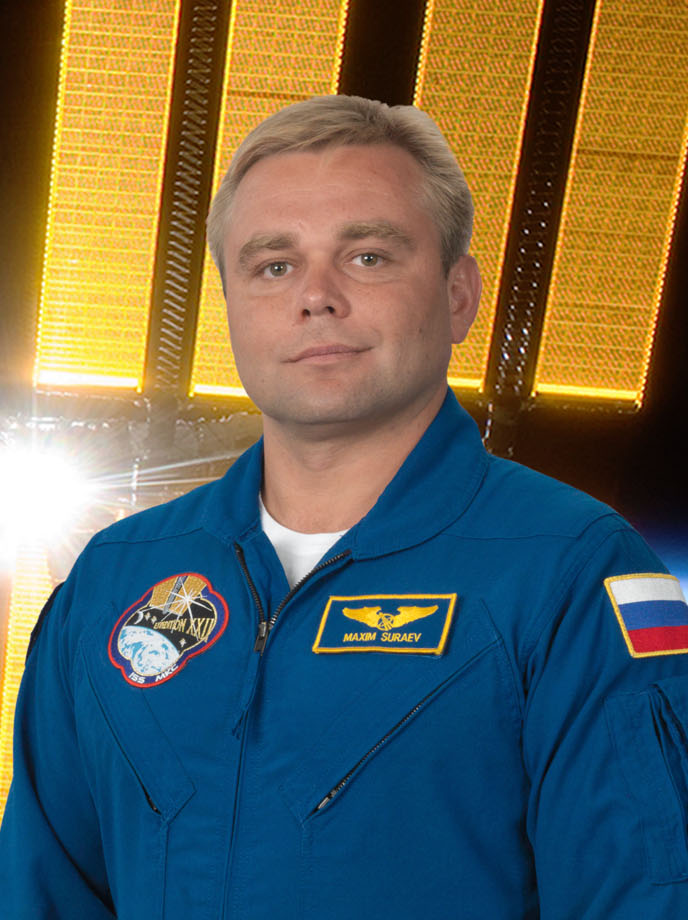
Maksim Viktorovich Surayev

Maksim Viktorovich Surayev
Maksim Viktorovich Surayev (Russian: ÐакÑим ÐикÑоÑÐ¾Ð²Ð¸Ñ Ð¡ÑÑаев, born 24 May 1972) is a retired Russian cosmonaut and politician. He served in the State Duma between 2016 and 2021.
Surayev served as a Flight Engineer on the International Space Station as a member of the Expedition 22 crew. He also served in the same capacity during Expedition 21 having traveled to the station aboard Soyuz TMA-16 on 30 September 2009 from the Baikonour cosmodrome in Kazakhstan. He was the commander of the Soyuz spacecraft. Surayev with Jeffrey Williams landed their Soyuz TMA-16 spacecraft on the steppes of Kazakhstan on 18 March 2010, concluding a 167-day stay aboard the International Space Station. Surayev kept a blog while in space.
Surayev served as a Flight Engineer on the International Space Station(ISS) as a member of the Expedition 40/41 crew. The Soyuz TMA-13M spacecraft commanded by Surayev and carrying crew mates Alexander Gerst and Reid Wiseman lifted off from Baikonour's historic 1/5 launch pad on 28 May 2014. Soyuz TMA-13M docked with the space station's Rassvet Module on 29 May, approximately six hours after launch.
He served as ISS expedition commander of Expedition 41 from 10 September until 10 November 2014. The mission returned to Earth on 10 November at 03:58 UTC.
On 14 January 2010 Surayev went outside the ISS into space with fellow Russian cosmonaut Oleg Kotov to begin his first spacewalk. The spacewalk lasted 5 hours and 44 minutes.
Surayev and cosmonaut Aleksandr Samokutyaev performed a spacewalk (Russian EVA-40) outside the space station on 22 October 2014. Although planned as a six-hour spacewalk, the cosmonauts were able to complete all the scheduled tasks in 3 hours and 38 minutes. Russian EVA-40 was the 184th spacewalk in support of the Space Station assembly.
194
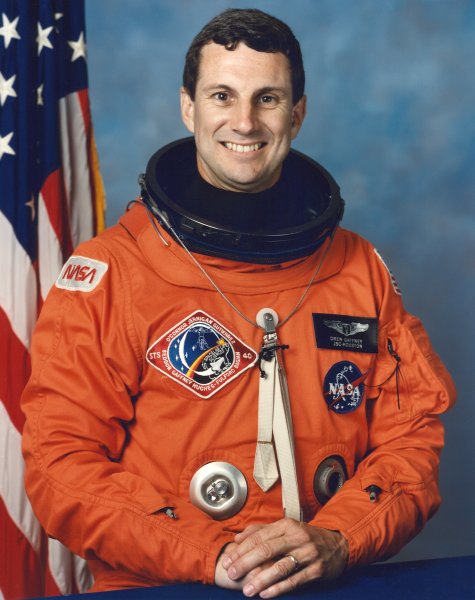
Francis Andrew Gaffney

Francis Andrew Gaffney
Francis Andrew "Drew" Gaffney is an American doctor and former astronaut. He previously worked for NASA and participated in the STS-40 Space Life Sciences (SLS 1) Space Shuttle mission in 1991 as a payload specialist. Gaffney was born June 9, 1946, in Carlsbad, New Mexico.
Gaffney's 15 years of experience in cardiac research and operation of equipment such as echocardiograms and rebreathing devices led to his being selected as a payload specialist aboard STS-40 Spacelab Life Sciences (SLS 1), a mission which took place in June 1991. STS-40 was the first Spacelab mission dedicated to biomedical studies. The SLS-1 mission flew over 3.2 million miles in 146 orbits and its crew completed over 18 experiments in nine days, bringing back more medical data than any previous NASA flight. Mission duration was 218 hours, 14 minutes and 20 seconds.
195
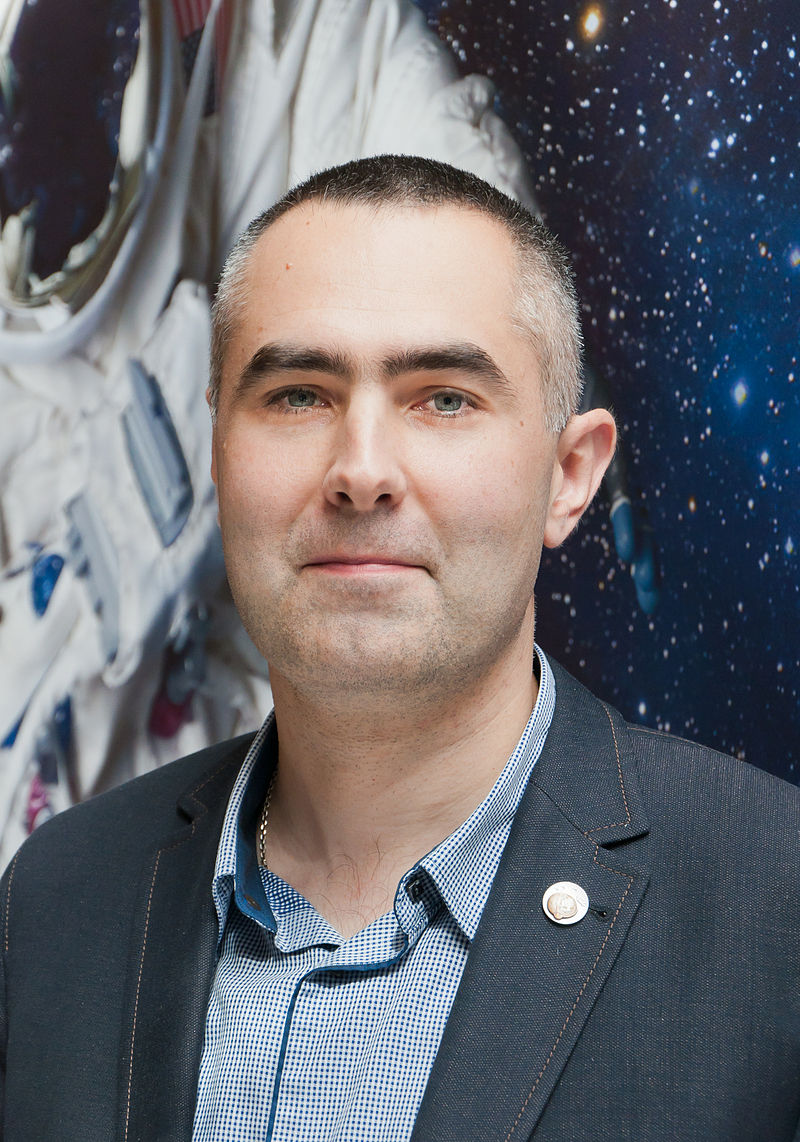
Evgeny Igorevich Tarelkin

Evgeny Igorevich Tarelkin
Evgeny Igorevich Tarelkin (Russian: born on December 29, 1974) is a Russian cosmonaut. He was selected as part of the TsPK-13 group in 2003.
Tarelkin made his first flight into space in October 2012 as a member of the Soyuz TMA-06M crew, during which he spent six months aboard the International Space Station as part of the Expedition 33/34 crews and returned on March 16, 2013. This was his only spaceflight.
196
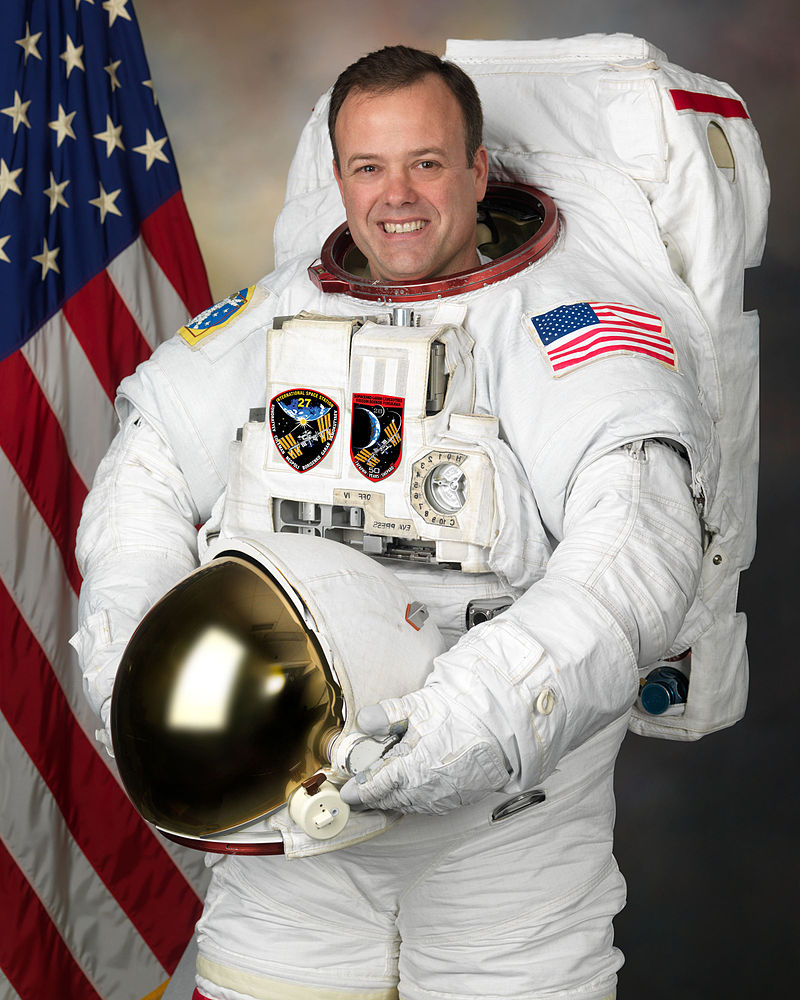
Ronald John Garan Jr.

Ronald John Garan Jr.
Ronald John Garan Jr. (born on October 30, 1961) is a retired NASA astronaut.
He first flew in space as a mission specialist on the May 2008 STS-124 mission to the International Space Station (ISS). He returned to ISS on April 4, 2011, for a six-month stay as a member of Expedition 27. Garan is a highly decorated former NASA astronaut who flew on the US Space Shuttle, Russian Soyuz, and International Space Station. In total he spent 178 days in space and more than 71 million miles in 2,842 orbits of Earth, 27 hours and 3 minutes of EVA in four spacewalks, and 18 days on the bottom of the ocean during the NEEMO-9 undersea mission.
197
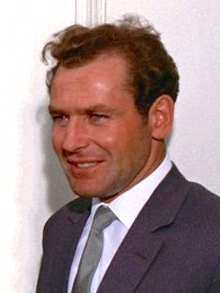
Gherman Stepanovich Titov

Gherman Stepanovich Titov
Gherman Stepanovich Titov (Russian: 11 September 1935 – 20 September 2000) was a Soviet cosmonaut who, on 6 August 1961, became the second human to orbit the Earth, aboard Vostok 2, preceded by Yuri Gagarin on Vostok 1. He was the fourth person in space, counting suborbital voyages of US astronauts Alan Shepard and Gus Grissom. A month short of 26 years old at launch, he was the youngest person to fly in space until 2021 when Oliver Daemen flew on Blue Origin NS-16 at the age of 18. Since Daemen flew a suborbital mission, Titov remains the youngest man to fly in Earth orbit.
Titov's flight finally proved that humans could live and work in space. He was the first person to orbit the Earth multiple times (a total of 17), the first to pilot a spaceship and to spend more than a day in space. He was also the first to sleep in orbit and to suffer from space sickness (becoming the first person to vomit in space).
Titov was the first photographer from space: he made the first manual photographs from orbit, thus setting a record for modern first photos of Earth from space. He also was the first person to film the Earth using a professional quality Konvas-Avtomat movie camera, which he used for ten minutes.
198
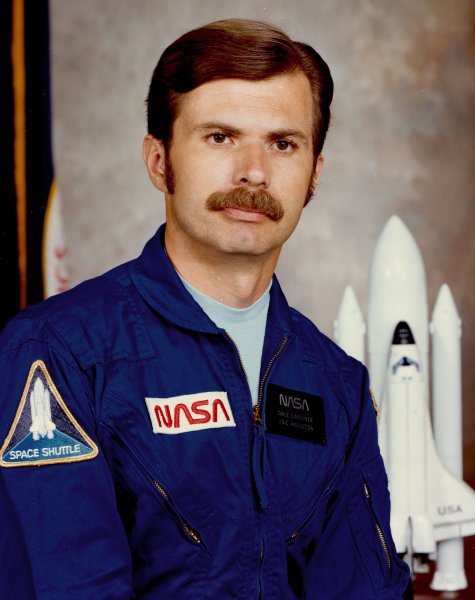
Dale Allan Gardner

Dale Allan Gardner
Dale Allan Gardner was a NASA astronaut, and naval flight officer who flew two Space Shuttle missions during the mid 1980s. Born on November 8, 1948, in Fairmont, Minnesota, Gardner grew up in Sherburn, Minnesota, and Savanna, Illinois. He considered his hometown to be Clinton, Iowa.
He was on board STS-8 launched from the Kennedy Space Center, Florida on August 30, 1983. This was the third flight of the Orbiter Challenger and the first night launch and landing mission of the Shuttle program. During the flight, the crew of STS-8 deployed the Indian National Satellite (INSAT-1B), operated and tested the Canadian-built Remote Manipulator System (RMS) robot arm, and performed numerous earth resources and space science experiments. STS-8 completed 98 Earth orbits in 145 hours before landing at Edwards Air Force Base, California on September 5, 1983.
He was part of the crew of STS-51-A, the fourteenth flight of the Shuttle program, launched on November 8, 1984 (his birthday). This was the second flight of Discovery. Gardner and Allen completed two spacewalks totaling 12 hours and flew the Manned Maneuvering Unit (MMU) backpack during the salvage operation. STS-51-A completed 127 orbits of the Earth before landing at the Kennedy Space Center on November 16, 1984.
199
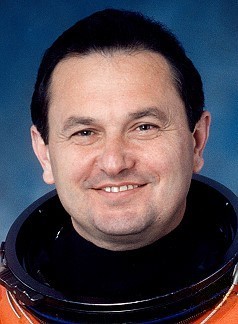
Vladimir Georgiyevich Titov

Vladimir Georgiyevich Titov
Vladimir Georgiyevich Titov (Russian: ÐÐ»Ð°Ð´Ð¸Ð¼Ð¸Ñ ÐеоÑÐ³Ð¸ÐµÐ²Ð¸Ñ Ð¢Ð¸Ñов; born 1 January 1947 in Sretensk, Zabaykalsky Krai, Russia) is a retired Russian Air Force Colonel and former cosmonaut. He has participated in four spaceflight missions. The catastrophic explosion of a Soyuz rocket in 1983 led to him being one of only four people to use a launch escape system.
A veteran of five missions, Titov served as commander on Soyuz T-8 and Soyuz T-10-1 in 1983 and Soyuz TM-4 in 1987, and flew on the crew of STS-63 in 1995 and STS-86 in 1997. He has logged a total of 18 hours, 48 minutes of EVA, and has spent a total of 387 days, 52 minutes, 18 seconds in space (including the Soyuz T-10-1 launch abort).
Titov made his first space flight on April 20, 1983, as commander of Soyuz T-8. He returned to Earth after a flight lasting just 2 days, 17 minutes, 48 seconds after the failed attempt or rendezvouis.
His next assignment came as the commander of Soyuz TM-4, which launched on December 21, 1987. On February 26, 1988, the two cosmonauts carried out an EVA lasting 4 hours and 25 minutes.
On June 30, 1988, they attempted a repair on the Roentgen X-ray telescope. Their bulky gloves made removing the small bolts very difficult, and it took 90 minutes instead of the 20 allocated. When a special wrench they were using suddenly snapped, the EVA had to be aborted, and the two men returned inside the Mir, having spent 5 hours, 10 minutes in open space.
On October 20, 1988, repairs were successfully completed, and the X-ray telescope recommenced operations. Titov and Manarov returned to Earth after a mission lasting 365 days, 22 hours, 39 minutes, setting a new record, and exceeding one year in space for the first time.
From February 2 to 11, 1995, Titov was a mission specialist aboard Space Shuttle Discovery, on STS-63, the first flight of the new joint Russian-American Space Program. In completing this mission, he logged an additional 8 days, 6 hours, 29 minutes in space.
Titov served on the crew of STS-86 Atlantis (September 25 to October 6, 1997) NASA's seventh mission to rendezvous and dock with the Russian Space Station Mir. Vladimir Titov and Scott Parazynski performed a 5-hour, 1-minute spacewalk during which they retrieved four experiments first deployed on Mir during the STS-86 docking mission, tethered the Solar Array Cap for use in a future Mir spacewalk to seal any hole found in the hull of the damaged Spektr module, and evaluated common EVA tools which may be used by astronauts wearing either Russian or American-made spacesuits. Mission accomplished in 169 orbits in 10 days, 19 hours, 21 minutes.
200
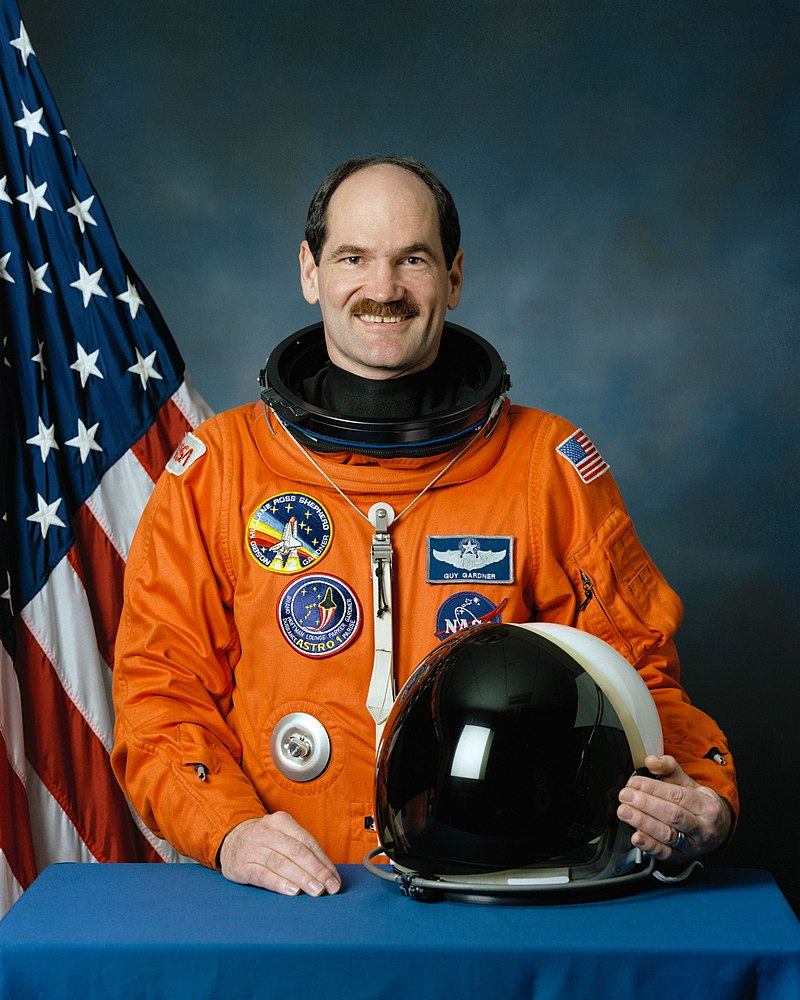
Guy S Gardner

Guy S Gardner
Guy S Gardner was born on January 6, 1948, in Altavista, Virginia, and grew up in Alexandria, Virginia. He was a United States Air Force officer and a former astronaut. He flew as pilot on two Space Shuttle missions, STS-27 and STS-35.
Gardner first flew in space as pilot on the crew of STS-27, aboard the Space Shuttle Atlantis, on December 2–6, 1988. The mission carried a Department of Defense payload and is noteworthy due to the severe damage Atlantis sustained to its critical heat-resistant tiles during ascent. Gardner next flew as pilot on the crew of STS-35, aboard the Space Shuttle Columbia, on December 2–10, 1990. The mission carried the ASTRO-1 astronomy laboratory consisting of three ultraviolet telescopes and one x-ray telescope.
201
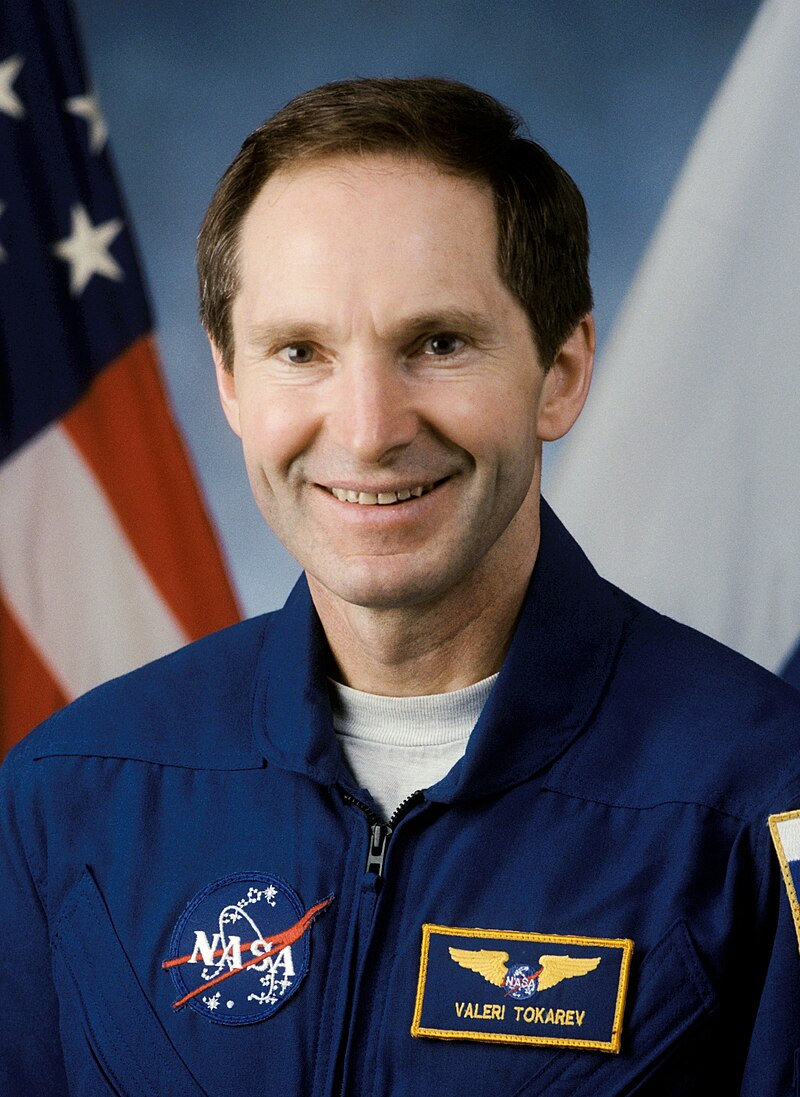
Valeri Ivanovich Tokarev

Valeri Ivanovich Tokarev
Valeri Ivanovich Tokarev (Russian: born on 29 October 1952) is a test cosmonaut at the Yuri A. Gagarin Cosmonaut Training Center. Tokarev traveled to space twice, and has performed two career spacewalks, before retiring in June 2008. Tokarev was born on 29 October 1952 in Kapustin Yar, Astrakhan Oblast, Soviet Union.
Tokarev flew on STS-96, on 27 May 1999. STS-96 was a mission flown by Space Shuttle Discovery to the International Space Station (ISS). It was first shuttle flight to dock with the ISS. Tokarev served as a mission specialist. During the 10-day mission, the crew of Discovery. delivered four tons of logistics and supplies to the ISS in preparation for the arrival of the first crew to live on the station. At the end of the mission on 6 June, Discovery landed at the Kennedy Space Center runway 15 at 2:02:43 a.m. EDT. The mission was accomplished in 153 Earth orbits, traveling 4 million miles in 235 hours and 13 minutes.
Tokarev was the flight engineer for the Expedition 12 crew on the ISS, arriving at the station aboard the Soyuz TMA-7 spacecraft on 3 October 2005. The Soyuz TMA-7 carrying Tokarev, and others lifted off from the Baikonour cosmodrome at 03:55 UTC on 1 October. After two days of autonomous flight Soyuz TMA-7 docked with the Pirs Docking Compartment Module on the ISS at 05:27 UTC.
During Expedition 12, one cargo flight, Progress M-55 docked with the ISS on 23 December 2005. The resupply ship transported scientific equipment and supplies to the station.
Torakev departed the ISS on 6 April 2006. Tokarev, and colleagues returned to Earth inside the Soyuz TMA-7 capsule on 8 April 2006 at 23:48 UTC. The spacecraft landed at the assigned site near the town of Arkalyk in Kazakhstan. Torakev spent 189 days, 19 hours and 53 minutes in space on board the Soyuz spacecraft and the ISS.
Tokarev has performed two spacewalks during the course of his cosmonaut career totaling 11 hours and 5 minutes.
202
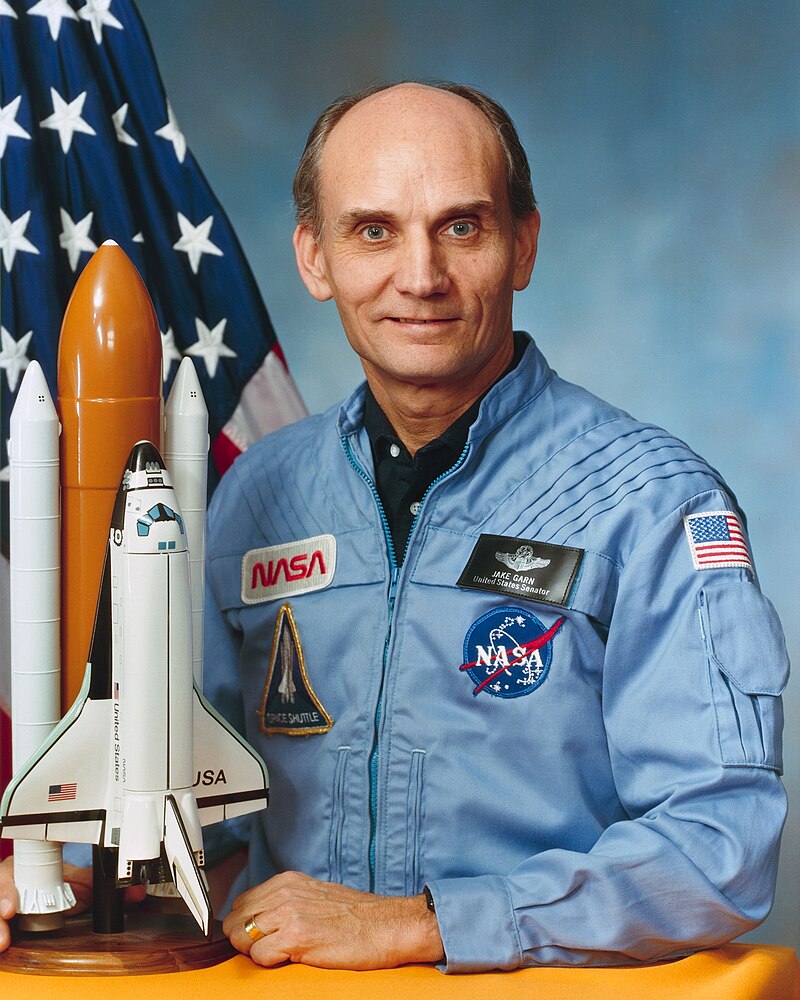
Edwin Jacob "Jake" Garn

Edwin Jacob "Jake" Garn
Edwin Jacob "Jake" Garn (born October 12, 1932) is an American politician and member of the Republican Party who served as a United States senator representing Utah from 1974 to 1993. Garn became the first sitting member of Congress to fly in space when he flew aboard the Space Shuttle Discovery as a payload specialist during NASA mission STS-51-D (April 12–19, 1985).
STS-51-D with Garn was launched from and returned to land at the Kennedy Space Center, Florida. Its primary objective was to deploy two communications satellites, and to perform electrophoresis and echocardiograph operations in space in addition to a number of other experiments. As a payload specialist, Garn's role on the mission was as a congressional observer and as a subject for medical experiments on space motion sickness. At the conclusion of the mission, Garn had traveled over 2.5 million miles (4.0 million kilometers) in 108 Earth orbits, logging over 167 hours in space.
203
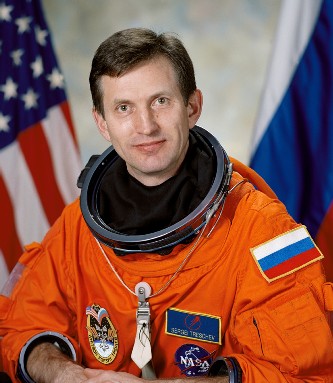
Sergey Yevgenyevich Treshchov

Sergey Yevgenyevich Treshchov
Sergey Yevgenyevich Treshchov (Russian: born 18 August 1958) is a former cosmonaut of the RSC Energia. He spent 184 days in space as a flight engineer of the International Space Station long duration Expedition 5 crew. During the mission he also conducted a spacewalk.
The Expedition 5 crew was launched on June 5, 2002, aboard STS-111. Space Shuttle Endeavour lifted off from the Kennedy Space Center LC-39A at 21:22:49 UTC. After two days Endeavour docked with the International Space Station (ISS) on June 7, 2002, at 16:25 UTC. The Expedition 5 crew returned to Earth on December 7, 2002, aboard Space Shuttle Endeavour's STS-113 mission. The shuttle touched down at KSC Runway 33 at 19:38:25 UTC. Completing his second-long duration spaceflight, Treshchev logged 184 days, 22 hours and 15 minutes in space.
Treschov performed his first and only career spacewalk on August 26, 2002. The spacewalk was staged from the Pirs docking compartment airlock and lasted 5 hours and 21 minutes.
204
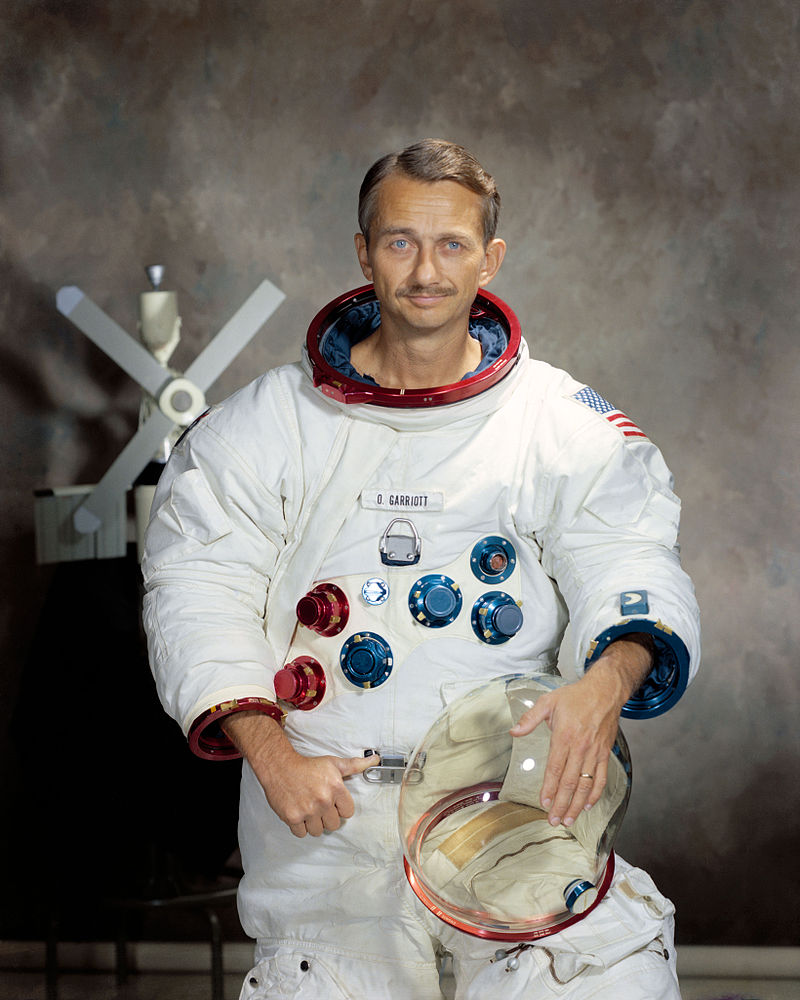
Owen Kay Garriott

Owen Kay Garriott
Owen Kay Garriott (November 22, 1930 – April 15, 2019) was an American electrical engineer and NASA astronaut, who spent 60 days aboard the Skylab space station in 1973 during the Skylab 3 mission, and 10 days aboard Spacelab-1 on a Space Shuttle mission in 1983.
In 1965, Garriott was one of the six scientist-astronauts selected by NASA. His first spaceflight, the Skylab 3 mission in 1973, set a world record for duration of approximately 60 days, more than double the previous record. Extensive experiments were conducted of the Sun, of Earth resources and in various life sciences relating to human adaptation to weightlessness.
His second space flight was aboard STS-9 (Spacelab-1) in 1983, a multidisciplinary and international mission of 10 days aboard Space Shuttle Columbia. Over 70 separate experiments in six different disciplines were conducted, primarily to demonstrate the suitability of Spacelab for research in all these areas.
205
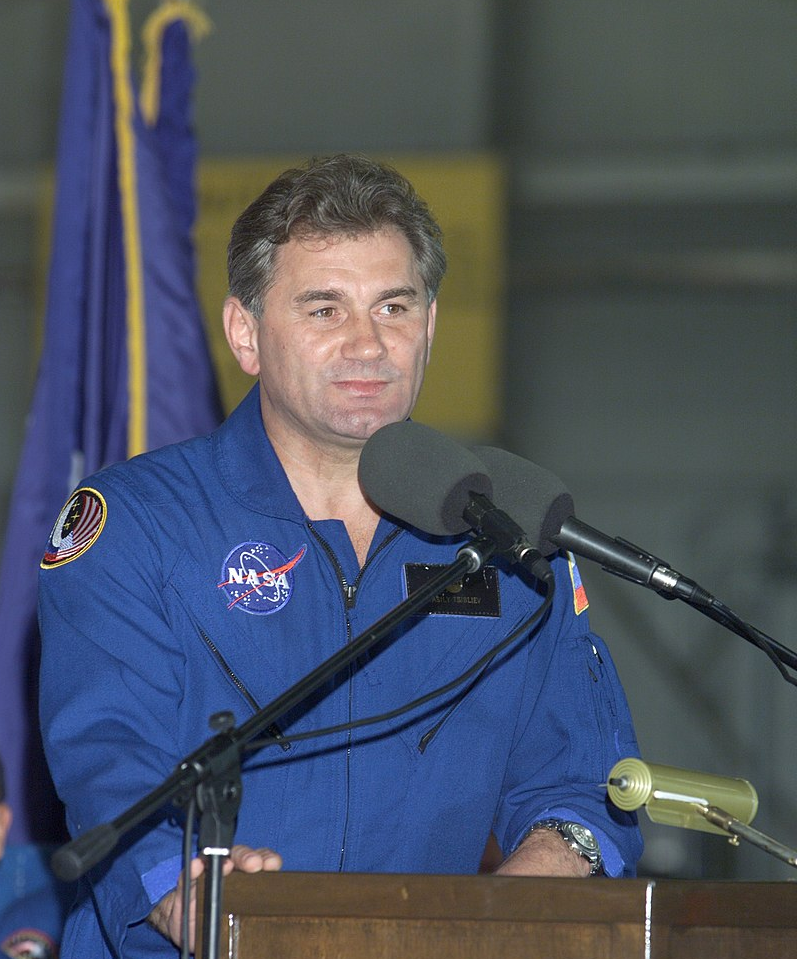
Vasily Vasiliyevich Tsibliyev

Vasily Vasiliyevich Tsibliyev
Vasily Vasiliyevich Tsibliyev (Russian: born on February 20, 1954) is a retired Russian cosmonaut and former head of the Yuri Gagarin Cosmonaut Training Center.
He was selected as a cosmonaut on March 26, 1987. Tsibliyev flew as Commander on Soyuz TM-17 from July 1, 1993 to January 14, 1994 and on Soyuz TM-25 from February 2, 1997 to August 14 of the same year. He retired as a cosmonaut on June 19, 1998.
206
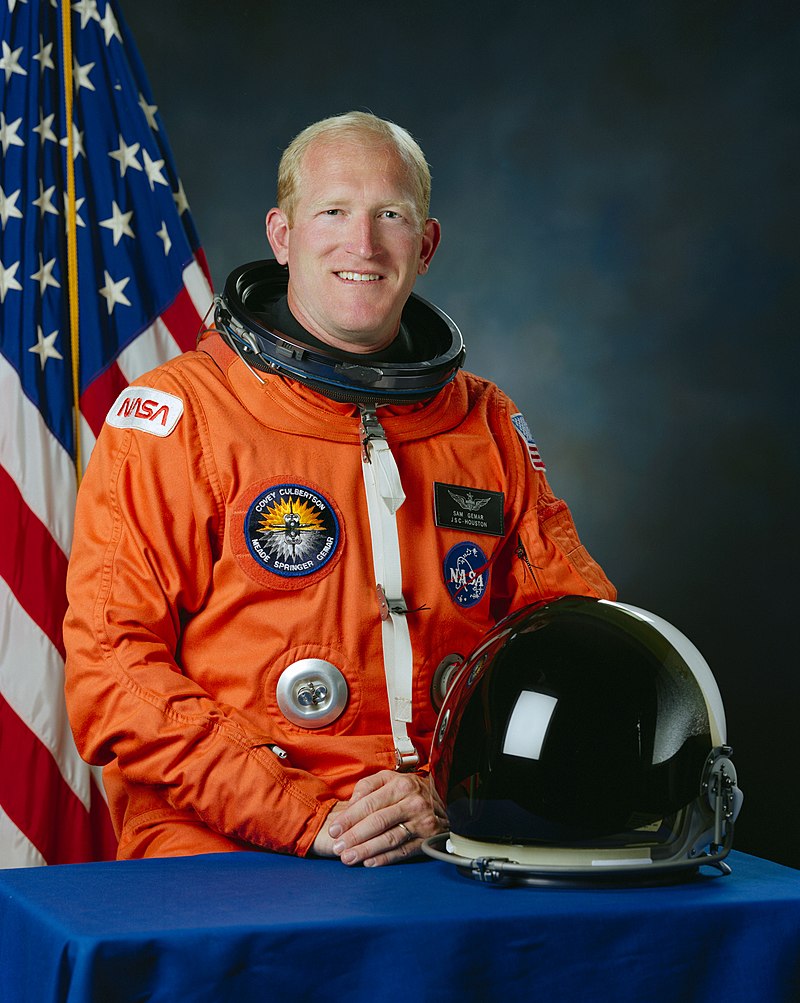
Charles Donald Gemar

Charles Donald Gemar
Charles Donald Gemar (born August 4, 1955) is an American former astronaut with NASA.Gemar has flown on three Space Shuttle missions (STS-38, STS-48 and STS-62). Gemar has completed 385 orbits of the Earth and over 581 hours in space.
He flew on STS-38 (November 15–20, 1990), STS-48 (September 12–18, 1991), and STS-62 (March 4–18, 1994).
On his first mission, Gemar served on the five-man crew of STS-38 which launched at night from the Kennedy Space Center, Florida, on November 15, 1990. After 80 orbits of the Earth in 117 hours, in the first Shuttle recovery in Florida since 1985, Space Shuttle Atlantis and her crew landed back at the Kennedy Space Center on November 20, 1990.[2]
Gemar then served on the five-man crew of STS-48 aboard the Space Shuttle Discovery, which launched from the Kennedy Space Center, Florida, on September 12, 1991. During 81 orbits of the Earth, the crew successfully deployed the Upper Atmosphere Research Satellite (UARS), designed to study the Earth's upper atmosphere. This five-day mission concluded with a landing at Edwards Air Force Base, California, on September 18, 1991. Mission duration was 128 hours.
Gemar's next mission was STS-62 aboard the Space Shuttle Columbia, which launched from the Kennedy Space Center, Florida, on March 4, 1994. During the spacecraft glow investigation, Columbia's orbital altitude was lowered to 105 nautical miles (194 km), the lowest ever flown by a Space Shuttle. STS-62, the second longest Space Shuttle mission to date, concluded after 13 days, 23 hours, and 16 minutes, following 224 orbits of the Earth with a landing at the Kennedy Space Center on March 18, 1994, after traveling 5.8 million miles.
207
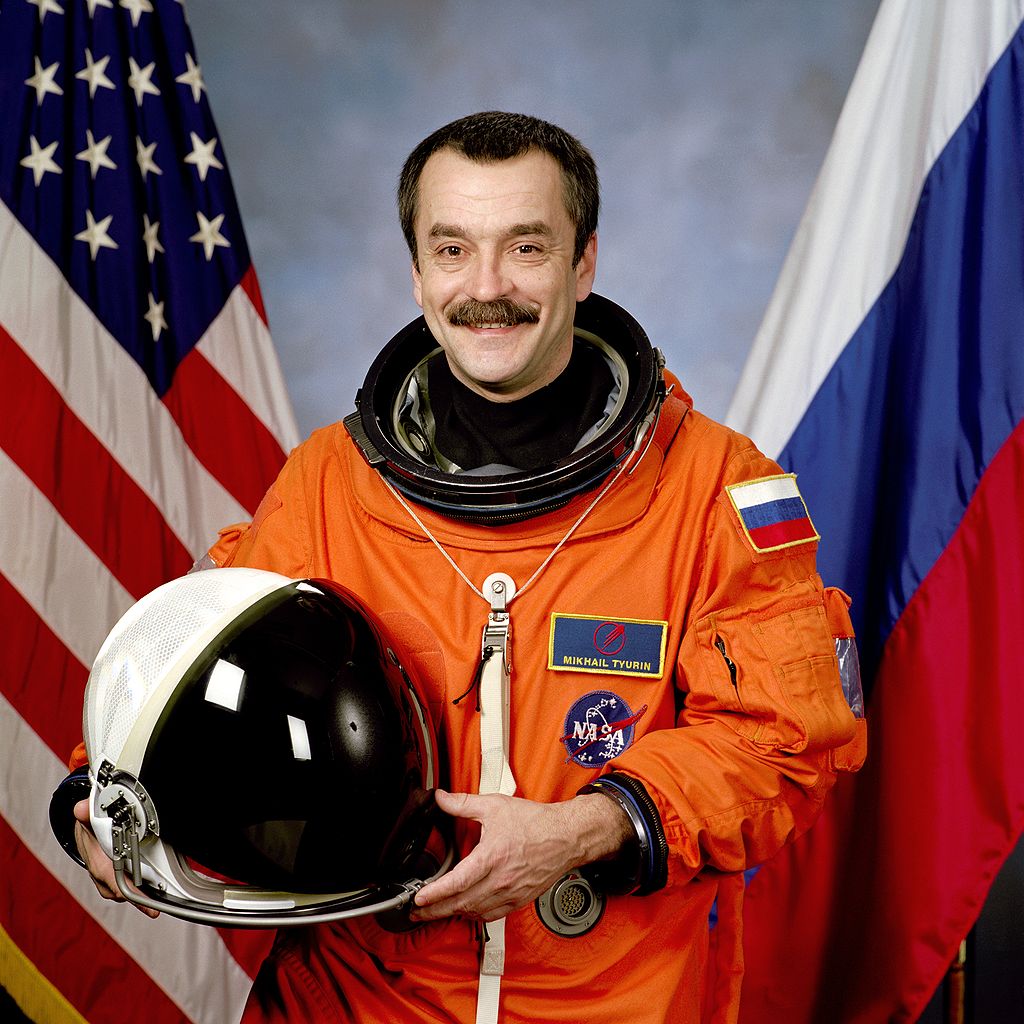
Mikhail Vladislavovich Tyurin

Mikhail Vladislavovich Tyurin
Mikhail Vladislavovich Tyurin (Russian: born on March 2, 1960) is a former Russian cosmonaut who flew several missions to the International Space Station and completed four spacewalks during his career.
Tyurin lived and worked aboard the International Space Station as part of the Expedition 3 crew. Space Shuttle Discovery carrying Tyurin and six other crewmembers on STS-105 mission blasted off to space from the Kennedy Space Center (KSC) on August 10, 2001. The shuttle docked with the ISS on 12 August at 18:41 UTC. Tyurin spent approximately 4 months aboard the station as flight engineer 1. At the end of the stay Expedition 3 crewmembers, NASA astronaut Frank Culbertson, Tyurin, and cosmonaut Vladimir Dezhurov returned to Earth on board Space Shuttle Endeavour. Endeavour's STS-108 mission delivered the Expedition 4 crew to the ISS and landed at KSC on December 17, 2001.
Tyurin with NASA astronauts lifted off on board the Soyuz TMA-9 spacecraft from the Baikonur Cosmodrome on 18 September 2006 at 04:08 UTC, to the ISS. The spacecraft docked with the ISS on September 20 at 05:21 UTC following two days of autonomous flight. Tyurin spent 215 days aboard the International Space Station as a flight engineer. The Soyuz TMA-9 capsule carrying Tyurin, Lopez-Alegria and spaceflight participant Charles Simonyi landed southwest of Karaganda, Kazakhstan on 21 April 2007 12:30 UTC.
Tyurin was commander of flight Soyuz TMA-11M, which docked with the ISS on November 7, 2013. The Soyuz FG rocket carrying Tyurin, lifted off from the Baikonur Cosmodrome at 04:14 GMT and docked with the ISS six hours later. Tyurin returned to Earth on May 14, 2014, after 188 days in space.
As of June 2010, Tyurin has performed four career spacewalks. Tyurin's EVA time through four spacewalks is 17 hours and 14 minutes.
208
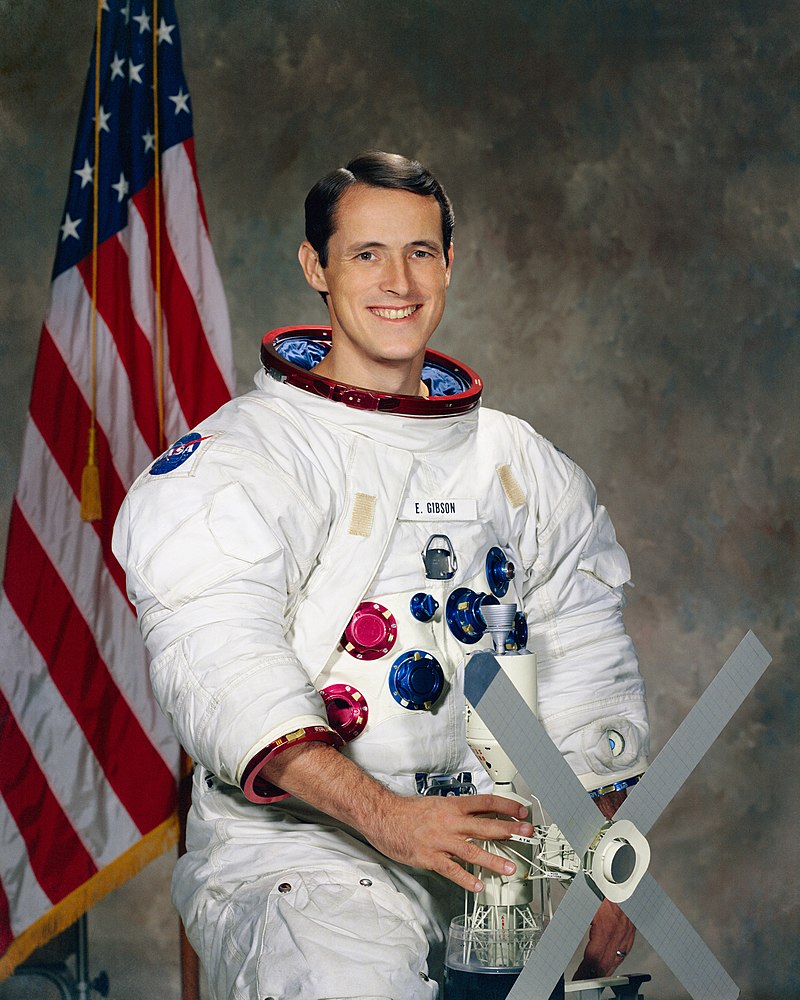
Edward George Gibson

Edward George Gibson
Edward George Gibson (born November 8, 1936) is a former NASA astronaut, pilot, engineer, and physicist.
Gibson was the science pilot of Skylab 4. The third and final crewed visit to the Skylab space station, it launched November 16, 1973, and concluded February 8, 1974. This was the longest crewed flight (84 days 1 hour 15 minutes) in the history of crewed space exploration at that time. Gibson was accompanied on the record-setting 34.5-million-mile flight by Commander Gerald P. Carr and Pilot William R. Pogue. Gibson logged 15 hours and 22 minutes in three EVAs outside the Skylab Orbital Workshop.
209
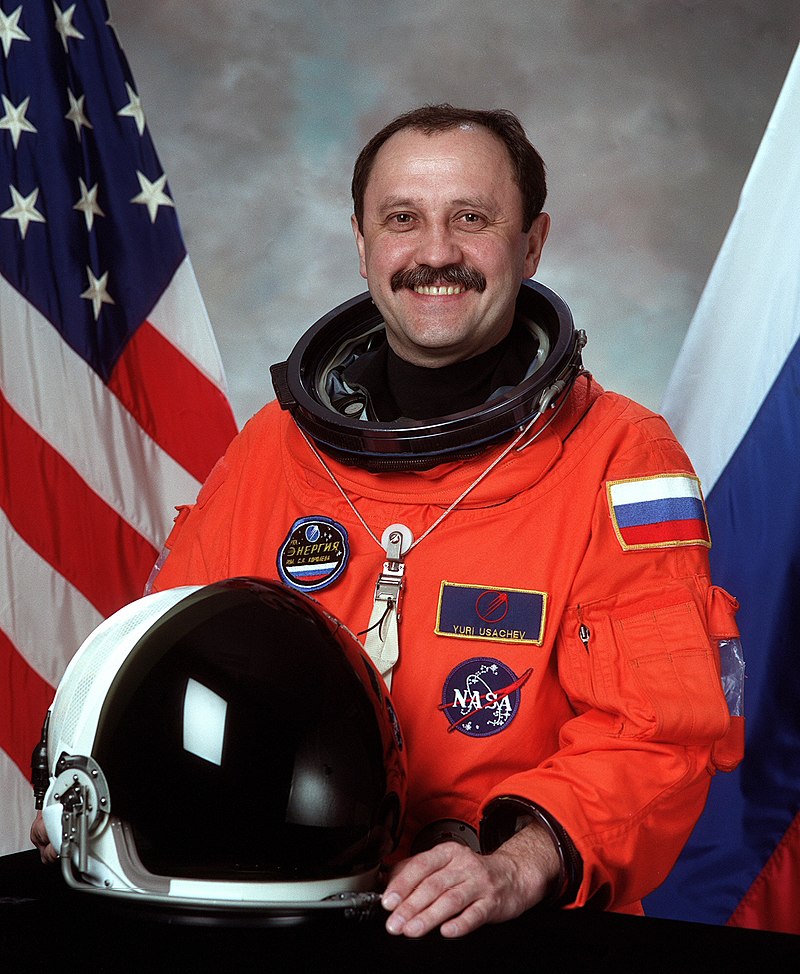
Yury Vladimirovich Usachov

Yury Vladimirovich Usachov
Yury Vladimirovich Usachov (Russian: ЮÑий ÐладимиÑÐ¾Ð²Ð¸Ñ Ð£ÑаÑÑв; born October 9, 1957) is a former cosmonaut who resides in Star City, Moscow. Usachov is a veteran of four spaceflights, including two long-duration missions on board the Mir Space Station and another on board the International Space Station. During his career, he also conducted seven spacewalks before his retirement on April 5, 2004.
Usachov made his first trip into space on January 8, 1994. The Soyuz TM-18 spacecraft carrying Usachov lifted off from the Baikonur Cosmodrome at 10:05:34 UTC. Usachov served as the flight engineer. After two days of solo flight, Soyuz TM-18 docked at the Kvant-1 module of the Mir space station on January 10 at 11:15 UTC. During Usachov's stay three Progress spacecraft arrived at Mir. On 30 January, on March 24 and on May 24: Progress M-21, Progress M-22 and Progress M-23 spacecraft arrived at Mir. Usachov and Afanasyev uneventfully returned to Earth on board the Soyuz TM-18 descent module, which landed 110 km north of Arkalyk in Kazakhstan at 10:32:35 GMT on July 9, 1994. Usachov flew on the Mir space station for 182 days.
From February 21 to September 2, 1996, Usachov served as a Board Engineer of the Mir EO-21 expedition. The Soyuz TM-23 spacecraft carrying Usachov lifted off from the Baikonur Cosmodrome on February 21, 1996, at 12:34:05 UTC. After two days of autonomous flight, the Soyuz spacecraft docked with the Mir space station's forward-facing port on February 23 at 14:20 UTC. During Mir EO-21 supplies arrived with the Progress M-31 spacecraft.
On September 2, 1996, Usachov, Yuri Onufriyenko and Claudie André-Deshays returned to Earth on board the Soyuz TM-23 capsule. The spacecraft landed at 07:41:40 UTC 108 km south west of Akmola (Tselinograd). On board Soyuz TM-23 and Mir, Usachov spent 193 days in space.
Usachov next flew on STS-101, the third Shuttle mission devoted to International Space Station (ISS) construction. On 9 May 2000 at 6:11 a.m. EDT Space Shuttle Atlantis lifted off from Kennedy Space Center. On May 29, Atlantis flew to a nighttime touchdown at KSC Runway 15 at 2:20 a.m. EDT after completing a 4,076,000 mile mission. Atlantis circled the globe 155 times for a mission duration of 9 days, 21 hours, 10 minutes.
Usachov made his fourth trip into space on board Space Shuttle Discovery on STS-102. Launched from KSC on March 8, 2001, at 06:42 EST Discovery successfully docked with the ISS a day later on March 9 at 6:38 UTC. The Expedition 2 crew of Usachov and NASA astronauts Susan Helms and James Voss lived and worked aboard ISS for the next 167 days. There were four Space Shuttle and one Soyuz missions to the ISS during Expedition 2: STS-102, STS-100, STS-104, STS-105 and Soyuz TM-32.
Usachov, Helms and Voss returned to Earth with the crew of STS-105 on August 22, 2001, on the Shuttle flight delivering the third Expedition crew.
Usachov has performed seven career spacewalks. He performed six spacewalks during his stay on board the Mir Space Station and performed another internal spacewalk during his visit to the ISS as the commander of the Expedition 2.
210
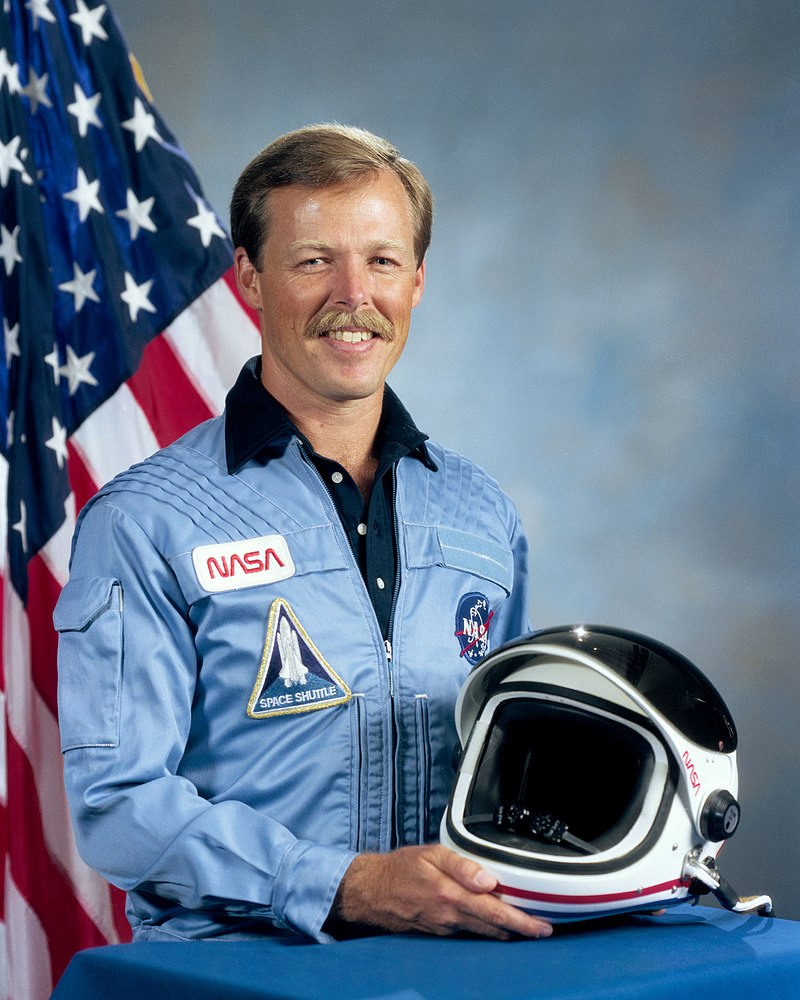
Robert Lee Gibson

Robert Lee Gibson
Robert Lee Gibson (born October 30, 1946), (Capt, USN, Ret.), is a former American naval officer and aviator, test pilot, and aeronautical engineer. A retired NASA astronaut, he also served as Chief of the Astronaut Office from 1992 to 1994.
Selected by NASA in January 1978, Gibson became an astronaut in August 1979. Gibson flew five missions: STS-41-B in 1984, STS-61-C in 1986, STS-27 in 1988, STS-47 in 1992, and STS-71 in 1995.
On his first space flight, Gibson was the pilot on the crew of STS 41-B which launched from the Kennedy Space Center, Florida, on February 3, 1984. The eight-day orbital flight of Challenger culminated in the first-ever landing at the Kennedy Space Center on February 11, 1984.
Gibson was the commander of the STS-61-C mission, and the first of only four people under the age of 40 to command a STS Orbiter Columbia launched from the Kennedy Space Center on January 12, 1986. The mission concluded with a successful night landing at Edwards Air Force Base, California, on January 18, 1986.
As the commander of STS-27, Gibson and his five-man crew launched from the Kennedy Space Center on December 2, 1988, aboard the Orbiter Atlantis. After 68 orbits of the Earth the mission concluded with a dry lakebed landing on Runway 17 at Edwards Air Force Base on December 6, 1988. The mission is noteworthy due to the severe damage Atlantis sustained to its critical heat-resistant tiles during ascent.
On Gibson's fourth space flight, the fiftieth Space Shuttle mission, he served as commander of STS-47, Spacelab-J, which launched on September 12, 1992, aboard the Orbiter Endeavour. The mission ended with a successful landing on the runway at the Kennedy Space Center in Florida on September 20, 1992.
On his last flight, (June 27 to July 7, 1995), Gibson commanded a crew of seven-members (up) and eight-members (down) on Space Shuttle mission STS-71. This was the first Space Shuttle mission to dock with the Russian Space Station Mir, and involved an exchange of crews. In five space flights, Gibson completed a total of 36.5 days in space.
211
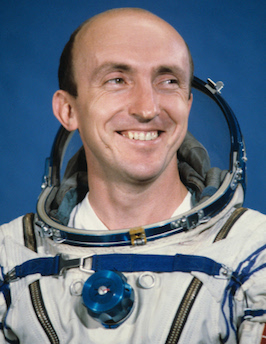
Vladimir Vladimirovich Vasyutin

Vladimir Vladimirovich Vasyutin
Vladimir Vladimirovich Vasyutin (Russian: 8 March 1952 – 19 July 2002) was a Soviet cosmonaut.
He was selected as a cosmonaut on 1 December 1978 (TsPK-6). He retired on 25 February 1986.
He flew as the Commander on Soyuz T-14 to the Salyut 7 space station, for part of the long-duration mission Salyut 7 EO-4. He spent 64 days 21 hours 52 minutes in space. The TKS module was already docked to the Salyut and Vasyutin was due to lead an extended program of military space experiments. However Vasyutin fell ill soon after arriving at the station and was unable to perform his duties. Although he was originally scheduled to have a six-month stay aboard Salyut 7, his illness forced the crew to make an emergency return to Earth after only two months. His illness is said to have been caused by a prostate infection, which had manifested itself as inflammation and a fever.
212
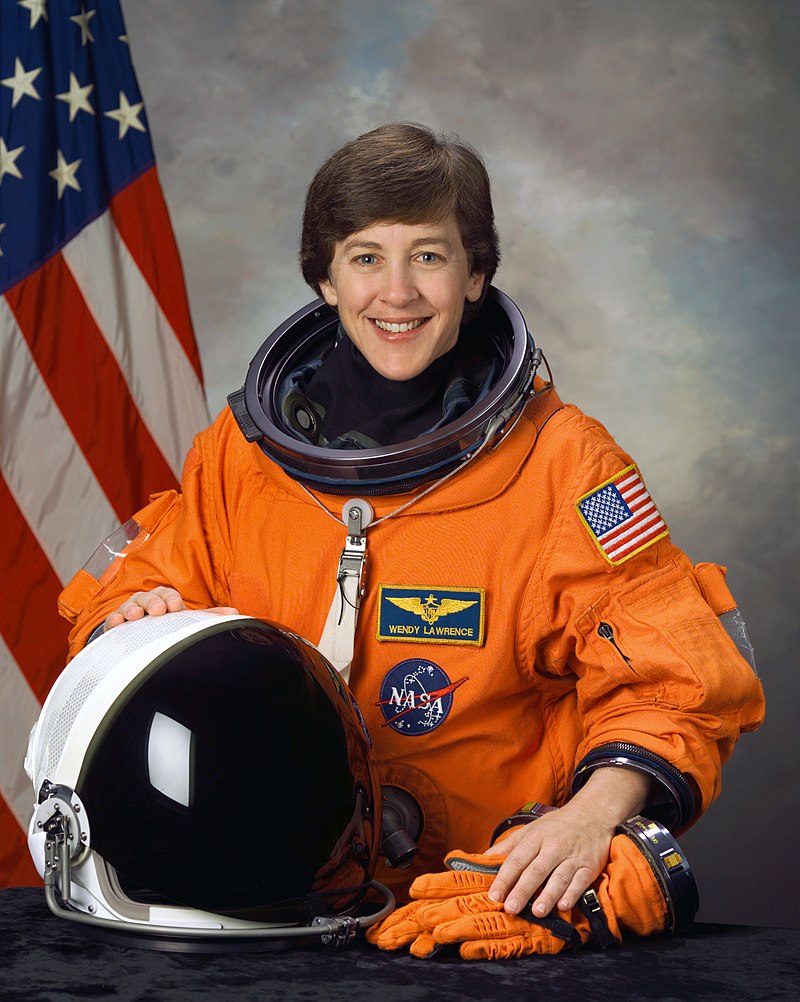
Wendy Barrien Lawrence

Wendy Barrien Lawrence
Wendy Barrien Lawrence (born July 2, 1959) is a retired United States Navy Captain, an engineer, and former helicopter pilot and NASA astronaut. She was the first female graduate of the United States Naval Academy to fly into space and she has also visited the Russian Space Station Mir. She was a mission specialist on STS-114, the first Space Shuttle flight after the Space Shuttle Columbia disaster.
She flew as the ascent/entry flight engineer and blue shift orbit pilot on STS-67 (March 2–18, 1995). Because of her knowledge and experience with Mir systems and with crew transfer logistics for the Mir, she flew on STS-86 (September 25 to October 6, 1997) and STS-91 (June 2–12, 1998). A veteran of four space flights, she logged over 1,200 hours in space. Lawrence was a mission specialist on the crew of STS-114. She was in charge of the transfer of supplies and equipment and operated the Space Station robotic arm on the Return To Flight mission during which the crew tested and evaluated new procedures for the inspection and repair of the Space Shuttle thermal protection system. The mission launched on July 26, 2005, and landed on August 9, 2005.
213
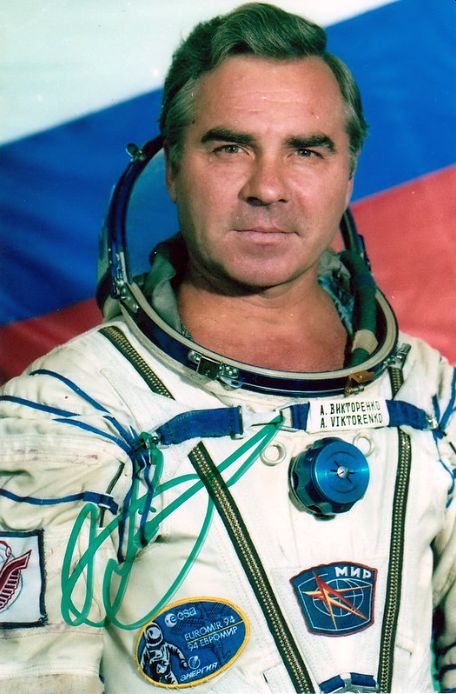
Aleksandr Stepanovich Viktorenko

Aleksandr Stepanovich Viktorenko
Aleksandr Stepanovich Viktorenko (Russian: 29 March 1947 – 10 August 2023) was a Soviet and Russian cosmonaut.
Viktorenko was selected as a cosmonaut on 23 March 1978 and retired on 30 May 1997. He was commander of Soyuz TM-3, Soyuz TM-8, Soyuz TM-14, and Soyuz TM-20. He spent a total of 489 days in space.
214
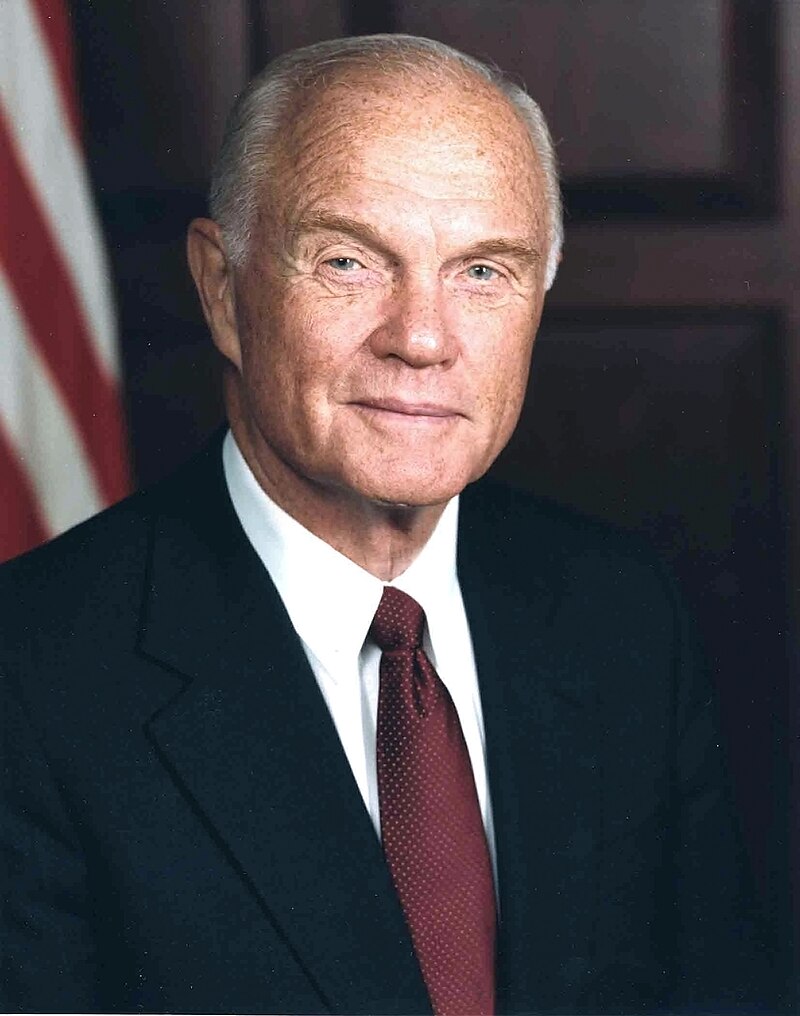
John Herschel Glenn Jr.

John Herschel Glenn Jr.
John Herschel Glenn Jr. (July 18, 1921 – December 8, 2016) was an American Marine Corps aviator, engineer, astronaut, businessman, and politician. He was the third American in space, and the first American to orbit the Earth, circling it three times in 1962.
Glenn was selected for Mercury-Atlas 6, NASA's first crewed orbital flight, with Carpenter as his backup.
After a long series of delays, Friendship 7 lifted off from Cape Canaveral Air Force Station on February 20, 1962. During the countdown, there were eleven delays due to equipment malfunctions and improvements and the weather.
Friendship 7 safely splashed down 800 miles (1,290 km) southeast of Cape Canaveral after Glenn's 4-hour, 55-minute flight. He carried a note on the flight which read, "I am a stranger. I come in peace. Take me to your leader and there will be a massive reward for you in eternity" in several languages, in case he landed near southern Pacific Ocean islands. The original procedure called for Glenn to exit through the top hatch, but he was uncomfortably warm and decided that egress through the side hatch would be faster. During the flight, he endured up to 7.8 g of acceleration and traveled 75,679 miles (121,794 km) at about 17,500 miles per hour (28,200 km/h). The flight took Glenn to a maximum altitude (apogee) of about 162 miles (261 km) and a minimum altitude of 100 miles (160 km) (perigee). Unlike the crewed missions of Soviet Union's Vostok programme, Glenn remained within the spacecraft during landing. The flight made Glenn the first American to orbit the Earth, the third American in space, and the fifth human in space. As the first American in orbit, Glenn became a national hero.
215
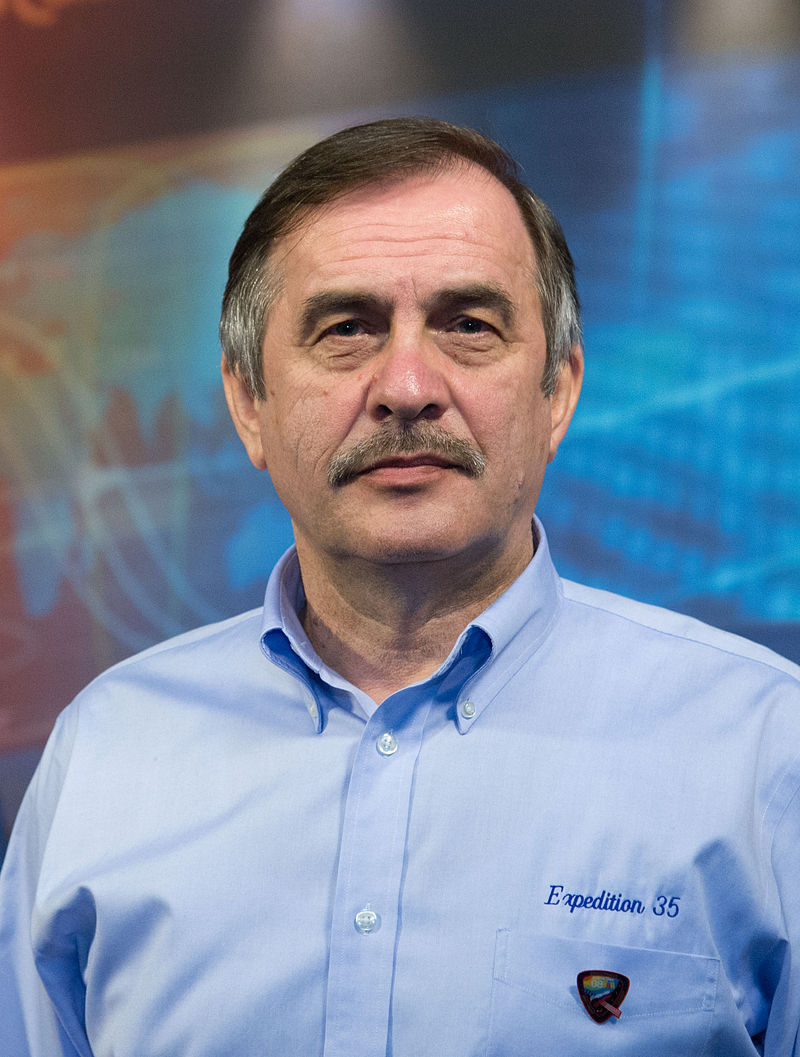
Pavel Vladimirovich Vinogradov

Pavel Vladimirovich Vinogradov
Pavel Vladimirovich Vinogradov (Russian: born 31 August 1953 in Magadan, USSR) is a former cosmonaut and commander of the International Space Station. As of January 2023, he has flown into space three times, aboard Mir and the International Space Station, and was one of the top 10 astronauts in terms of total time in space after his third spaceflight. Vinogradov has also conducted seven spacewalks in his cosmonaut career, and holds the record for the oldest person to perform a spacewalk.
Vinogradov flew as the flight engineer on Soyuz TM-26 on 5 August 1997 with cosmonaut Anatoly Solovyev to the Mir space station. After two days of autonomous flight the Soyuz spacecraft docked with Mir on 7 August. Vinogradov, Solovyev along and ESA astronaut Léopold Eyharts returned to Earth on 19 February 1998. The Soyuz capsule landed 30 km of Arkalyk at 09:10 UTC. During the mission, Vinogradov spent 197 days, 17 hours, and 34 minutes in space.
The Expedition-13 mission was launched aboard the Soyuz TMA-8 with Vinogradov and NASA astronaut Jeffrey Williams from the Baikonour Cosmodrome in Kazakhstan on 29 March 2006. Vinogradov served as the Soyuz commander. After two days of solo flight, Soyuz TMA-8 docked with the ISS on 31 March 2006. The Soyuz capsule carrying Vinogradov undocked from the ISS at 5:53 p.m. EDT on 28 September 2006, and landed in the steppes of Kazakhstan near Arkalyk at 9:13 p.m. EDT. Vinogradov spent 182 days, 23 hours and 44 minutes in space on board the Soyuz spacecraft and the ISS.
Pavel flew with ISS Expeditions 35 and 36, from March to September 2013. On 12 May 2013 Pavel assumed command of the International Space Station.
Vinogradov has conducted seven spacewalks during his cosmonaut career. Five of these spacewalks were in 1997 and 1998 during his stay on board the Mir space station. His EVA time through seven spacewalks is 38 hours and 25 minutes.
216
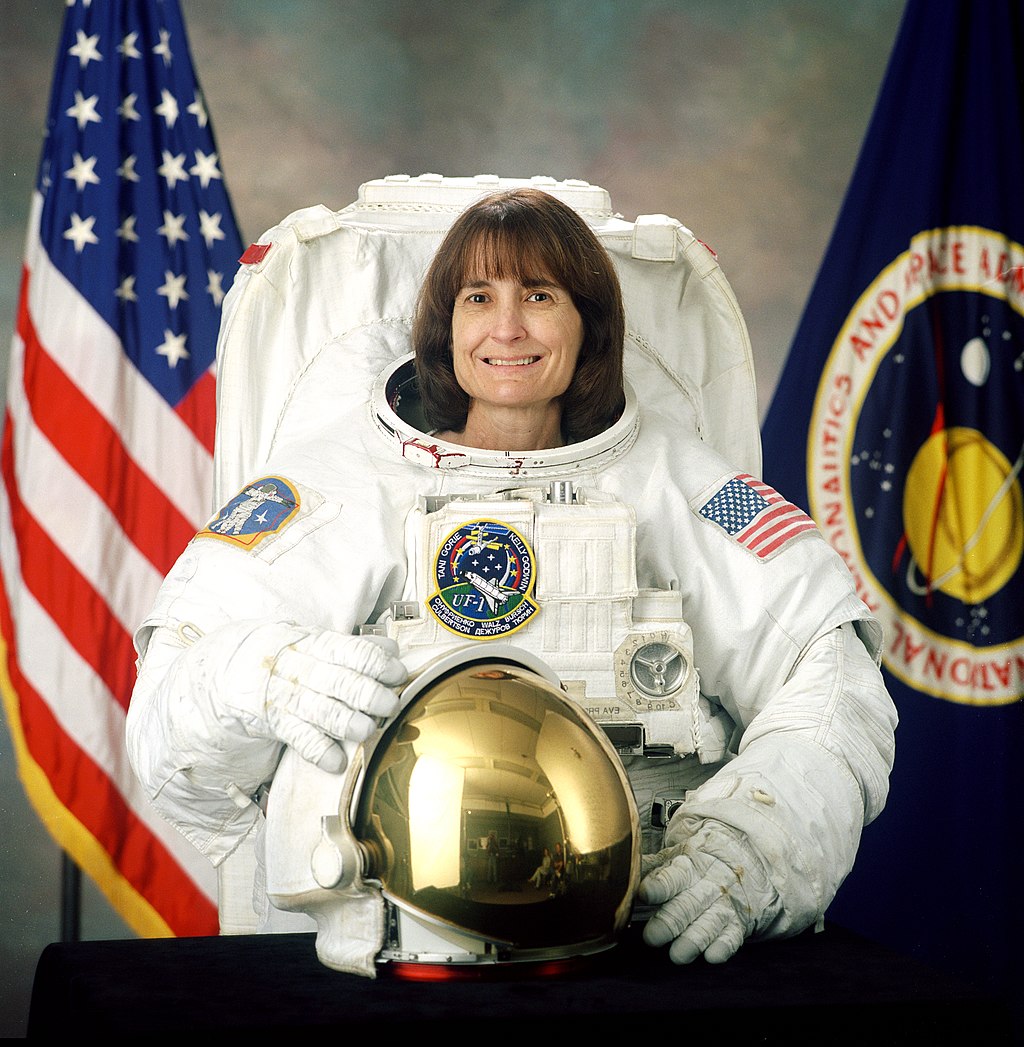
Linda Maxine Godwin

Linda Maxine Godwin
Linda Maxine Godwin (born July 2, 1952) is an American scientist and retired NASA astronaut. Godwin joined NASA in 1980 and became an astronaut in July 1986.
Godwin joined NASA in 1980, in the Payload Operations Division, Mission Operations Directorate, where she worked in payload integration (attached payloads and Spacelabs), and as a flight controller and payloads officer on several Space Shuttle missions.
Selected by NASA as an astronaut candidate in June 1985, Godwin became an astronaut in July 1986. Her technical assignments have included working with flight software verification in the Shuttle Avionics Integration Laboratory (SAIL), and coordinating mission development activities for the Inertial Upper Stage (IUS), deployable payloads, and Spacelab missions. She also has served as chief of astronaut appearances, chief of the Mission Development Branch of the Astronaut Office and as the astronaut liaison to its Educational Working Group, deputy chief of the Astronaut Office, and deputy director, Flight Crew Operations Directorate. Godwin is currently the assistant to the director for exploration, Flight Crew Operations Directorate at the Johnson Space Center.
A veteran of four space flights, Godwin has logged over 38 days in space, including over ten EVA hours in two spacewalks. In 1991 she served as a mission specialist on STS-37, was the payload commander on STS-59 in 1994, flew on STS-76 in 1996, a Mir docking mission, and served on STS-108/International Space Station Flight UF-1 in 2001.
217
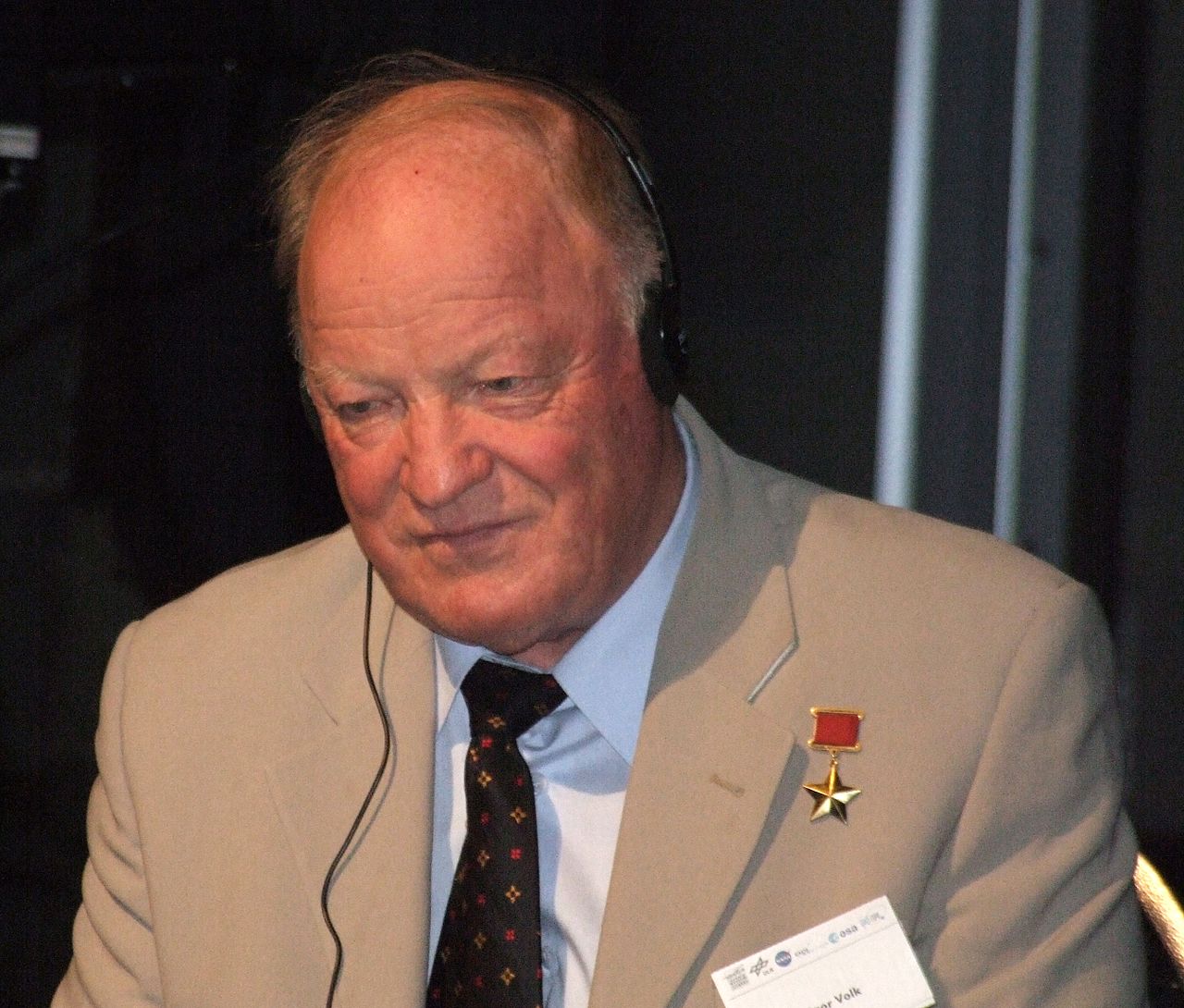
Igor Petrovich Volk

Igor Petrovich Volk
Igor Petrovich Volk (Russian: Ukrainian: 12 April 1937 – 3 January 2017) was a Russian test pilot and former Soviet cosmonaut in the Buran programme.
Igor Volk was selected as a cosmonaut on 12 July 1977 and subsequently assigned to the Buran programme. As part of his preparations for a space shuttle flight, he also accomplished test-flights with Buran's counterpart OK-GLI aircraft.
In July 1984, Volk flew aboard Soyuz T-12, intended to give him some experience in space.
218
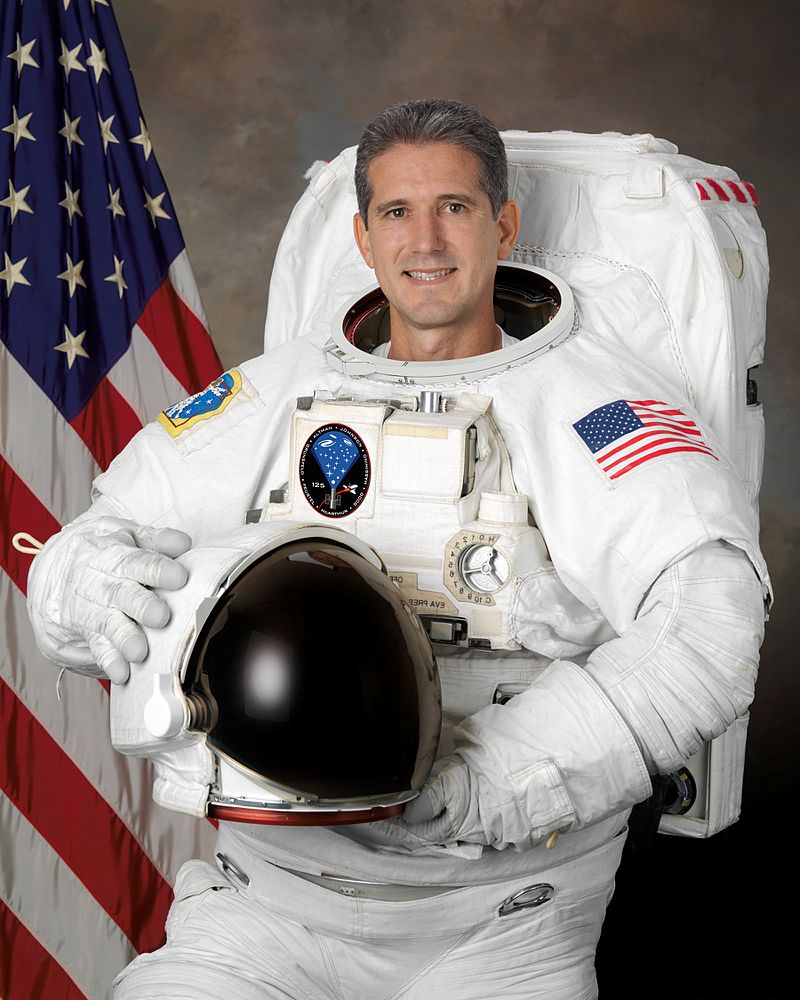
Michael Timothy Good

Michael Timothy Good
Michael Timothy "Bueno" Good (born October 13, 1962) is a retired NASA astronaut. Mike Good flew aboard Space Shuttle Atlantis for its STS-125 mission. STS-125 was the final Hubble Space Telescope servicing mission. Good flew as mission specialist 2 to the International Space Station on STS-132. Good was born in Parma, Ohio, but was raised in Broadview Heights.
219
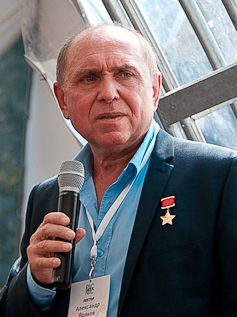
Aleksandr Aleksandrovich Volkov

Aleksandr Aleksandrovich Volkov
Aleksandr Aleksandrovich Volkov (Russian: born 27 May 1948) is a retired Soviet cosmonaut. He is a veteran of 3 space flights, including twice to the Mir Soviet space station.
His first spaceflight was a trip to Salyut 7 in 1985 (64 days in space), followed by two flights to the Mir space station, in 1988–1989 (151 days) and again in 1991–1992 (175 days) as commander of flight Soyuz TM-13. On board the Mir space station, he controlled the docking procedures among other things.
220
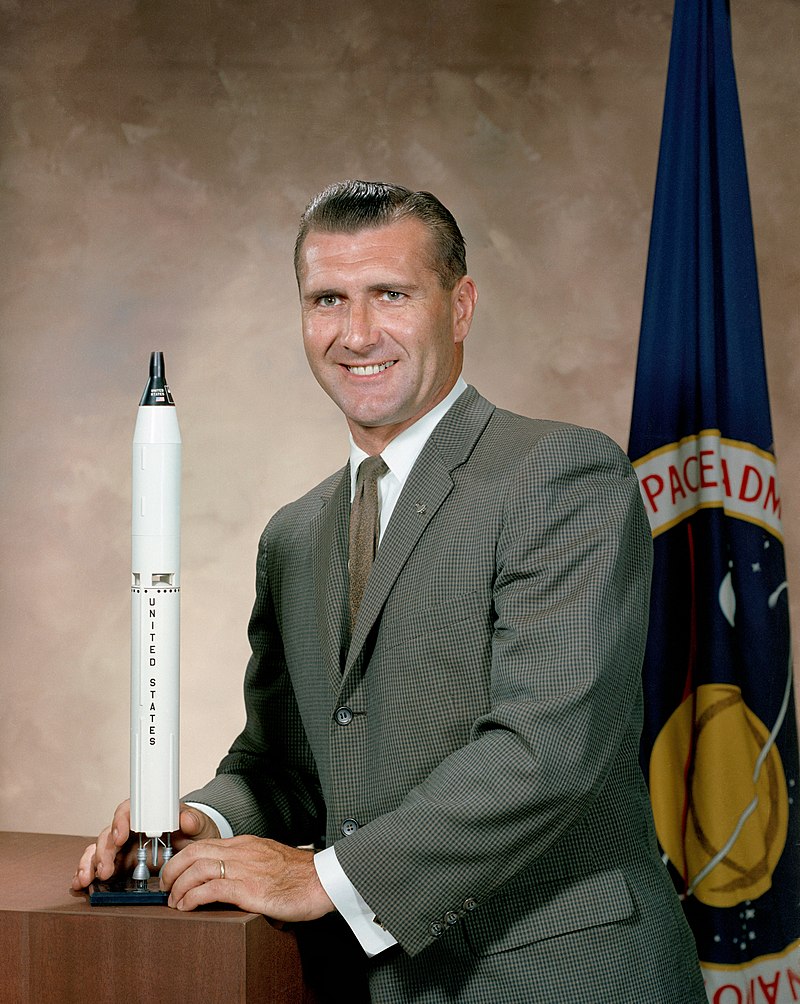
Richard Francis Gordon Jr.

Richard Francis Gordon Jr.
Richard Francis Gordon Jr. (October 5, 1929 – November 6, 2017) was an and NASA astronaut. He was one of 24 people to have flown to the Moon, as command module pilot of the 1969 Apollo 12 mission, which orbited the Moon 45 times. Gordon had already flown in space as the pilot of the 1966 Gemini 11 mission.
On September 12, 1966, he served as pilot for the 3-day Gemini XI mission--on which rendezvous with an Agena was achieved in less than one orbit. He executed docking maneuvers with the previously launched Agena and performed two periods of extravehicular activity which included attaching a tether to the Agena and retrieving a nuclear emulsion experiment package. Other highlights accomplished by Gordon and command pilot Charles Conrad on this flight included the successful completion of the first
tethered station-keeping exercise, establishment of a new altitude record of 850 miles, and completion of the first fully automatic controlled reentry. The flight was concluded on September 15, 1966, with the spacecraft landing in the Atlantic--2 1/2 miles from the prime recovery ship USS GUAM.
He occupied the command module pilot seat on Apollo 12, November 14-24, 1969. Other crewmen on man's second lunar landing mission were Charles Conrad, spacecraft commander, and Alan L. Bean, lunar module pilot. Throughout the 31-hour lunar surface stay by Conrad and Bean, Gordon remained in lunar orbit aboard the command module, "Yankee Clipper," obtaining desired mapping photographs of tentative landing sites for future missions. He also performed the final re-docking maneuvers following the successful lunar orbit rendezvous which was initiated by Conrad and Bean from within "Intrepid" after their ascent from the moon's surface.
All of the mission's objectives were accomplished and Apollo 12 achievements include: The first precision lunar landing with "Intrepid's" touchdown in the moon's Ocean of Storms; the first lunar traverse by Conrad and Bean as they deployed the Apollo Lunar Surface Experiment Package (ALSEP), installed a nuclear power generator station to provide the power source for these
long-term scientific experiments, gathered samples of the lunar surface for return to earth, and completed a close up inspection of the Surveyor III spacecraft.
The Apollo 12 mission lasted 244 hours and 36 minutes and was concluded with a Pacific spashdown and subsequent recovery operations by the USS HORNET. Captain Gordon has completed two space flights, logging a total of 315 hours and 53 minutes in space--2 hours and 44 minutes of which were spent in EVA.He served as backup spacecraft commander for Apollo 15.
221
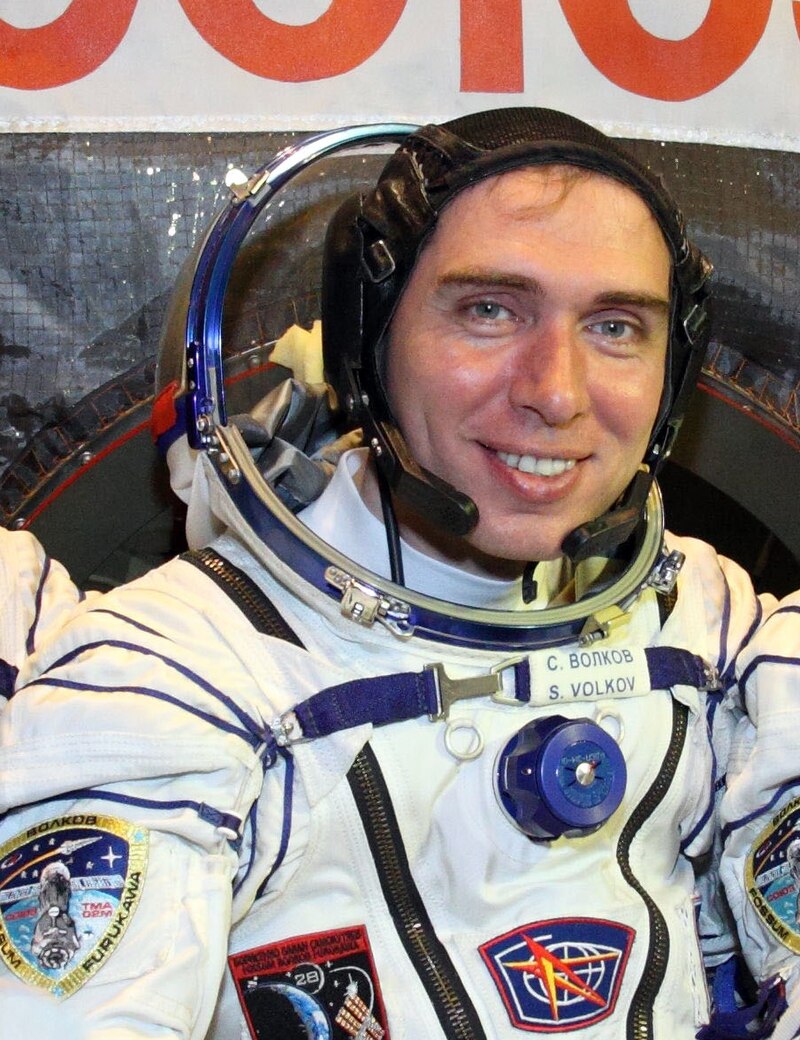
Sergey Aleksandrovich Volkov

Sergey Aleksandrovich Volkov
Sergey Aleksandrovich Volkov (Russian: born 1 April 1973) is a retired Russian cosmonaut and engineer. He was a member of three missions to he International Space Station, spending more than a year in total in space. During his missions he did four spacewalks lasting more than 23 hours in total. Volkov retired from the Cosmonaut group in February 2017.
The Soyuz TMA-12 spacecraft carrying Volkov along with fellow cosmonaut Oleg Kononenko and South Korean spaceflight participant Yi So-Yeon blasted into space on 8 April 2008. Volkov served as the commander of the ISS expedition 17. He is the youngest ISS commander to date. His mission lasted from April to October 2008.
Volkov, Kononeko and space tourist Richard Garriott, the son of astronaut Owen K. Garriott returned to Earth aboard Soyuz TMA-12 on 24 October 2008. Garriott is the first second-generation American space explorer. The spacecraft landed at 03:36 GMT 55 miles north of Arkalyk, Kazakhstan.
On 7 June 2011 (UTC) Volkov returned to space aboard Soyuz TMA-02M to join the crew of Expedition 28. With undocking of Soyuz TMA-02M, carrying Volkov, Fossum and Satoshi Furukawa on 21 November 2011 at 23:00 UTC the Expedition 29 concluded and the new ISS Expedition 30 began.
Volkov was launched for his third trip with his team to the ISS as commander of Soyuz TMA-18M on the 2nd September 2015. They docked to the Poisk Module 2 days later (a higher station orbit prevented the normal 6 hr rendezvous from being possible) on the 4th September. With undocking of Soyuz TMA-18M, carrying Volkov, Korniyenko and Kelly, on 2 March 2016 at 01:02:48 UTC, the Expedition 46 concluded and the new ISS Expedition 47 began. The landing of TMA-18M occurred two and half hours later.
Volkov conducted his first spacewalk on 10 July 2008 when he ventured into space from the Pirs docking compartment airlock of the ISS. The spacewalk lasted 6 hours and 18 minutes and Volkov served as the lead spacewalker.
On 15 July 2008 Volkov, together with Kononenko, again went outside from Pirs to conduct a spacewalk. The spacewalk was in Russian Orlan suits and Volkov, as the lead spacewalker wore the suit with red stripes. This spacewalk lasted 5 hours and 54 minutes.
An EVA by Volkov and crewmate Aleksandr Samokutyayev occurred on 3 August 2011 to move a small crane, install a communications terminal and remove and inspect antennas. The duration of the spacewalk was 6 hours 23 minutes.
The fourth EVA of Volkov's career was during Expedition 46, with veteran cosmonaut Yuri Malenchenko. The spacewalk concluded after 4 hours 45 minutes.
222
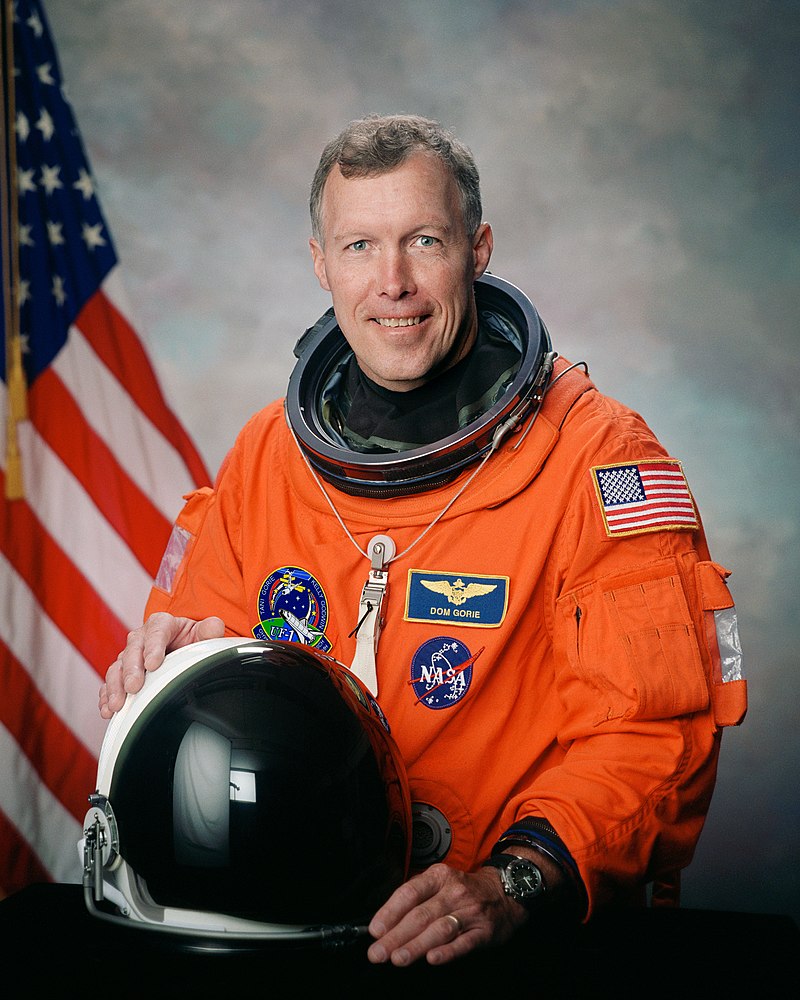
Dominic Lee Pudwill Gorie

Dominic Lee Pudwill Gorie
Dominic Lee Pudwill Gorie (born May 2, 1957) is a retired United States Navy officer and NASA astronaut.
A veteran of four space flights, Gorie has logged over 47 days in space. He served as pilot aboard STS-91 in 1998 and STS-99 in 2000, and was the crew commander on STS-108 in 2001 and STS-123 in 2008.
STS-91 Discovery (June 2-12, 1998) was the 9th and final Shuttle-Mir docking mission, concluding the joint U.S./Russian Phase I Program. The STS-91 mission was accomplished in 154 Earth orbits, traveling 3.8 million miles in 235 hours and 54 seconds.
STS-99 (February 11-22, 2000) was an 11-day flight during which the international crew aboard Space Shuttle Endeavour worked dual shifts to support payload operations. The STS-99 mission was accomplished in 181 Earth orbits, traveling over 4 million miles in 268 hours and 38 minutes.
STS-108 Endeavour (December 5-17, 2001) was the 12th shuttle flight to visit the International Space Station. The crew unloaded over 3 tons of equipment and supplies from the Raffaello Multi-Purpose Logistics Module, and performed one space walk to wrap thermal blankets around ISS Solar Array Gimbals. STS-108 was accomplished in 185 Earth orbits, traveling 4.8 million miles in 283 hours and 36 minutes. STS-123 Endeavour (March 11-26, 2008) was a night launch and landing. It was the 25th Shuttle/Station assembly mission.
The STS-123 crew also delivered Expedition 16 Flight Engineer Garrett Reisman, and returned to Earth with ESA’s Léopold Eyharts. The mission was accomplished in 250 orbits of the Earth, traveling over 6 million miles in 15 days, 18 hours, 10 minutes and 54 seconds.
223
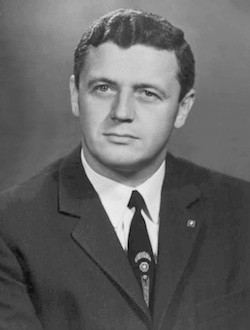
Vladislav Nikolayevich Volkov

Vladislav Nikolayevich Volkov
Vladislav Nikolayevich Volkov (Russian: 23 November 1935 – 30 June 1971) was a Soviet cosmonaut who flew on the Soyuz 7 and Soyuz 11 missions. The second mission terminated fatally. Volkov and the two other crew members were asphyxiated on reentry, the only three people to have died in outer space.
He flew aboard Soyuz 7 in 1969.
Volkov, on his second space mission in 1971, was assigned to Soyuz 11. The three cosmonauts on this flight spent 23 days on Salyut 1, the world's first space station. After three relatively placid weeks in orbit, however, Soyuz 11 became the second Soviet space flight to terminate fatally, after Soyuz 1.
224
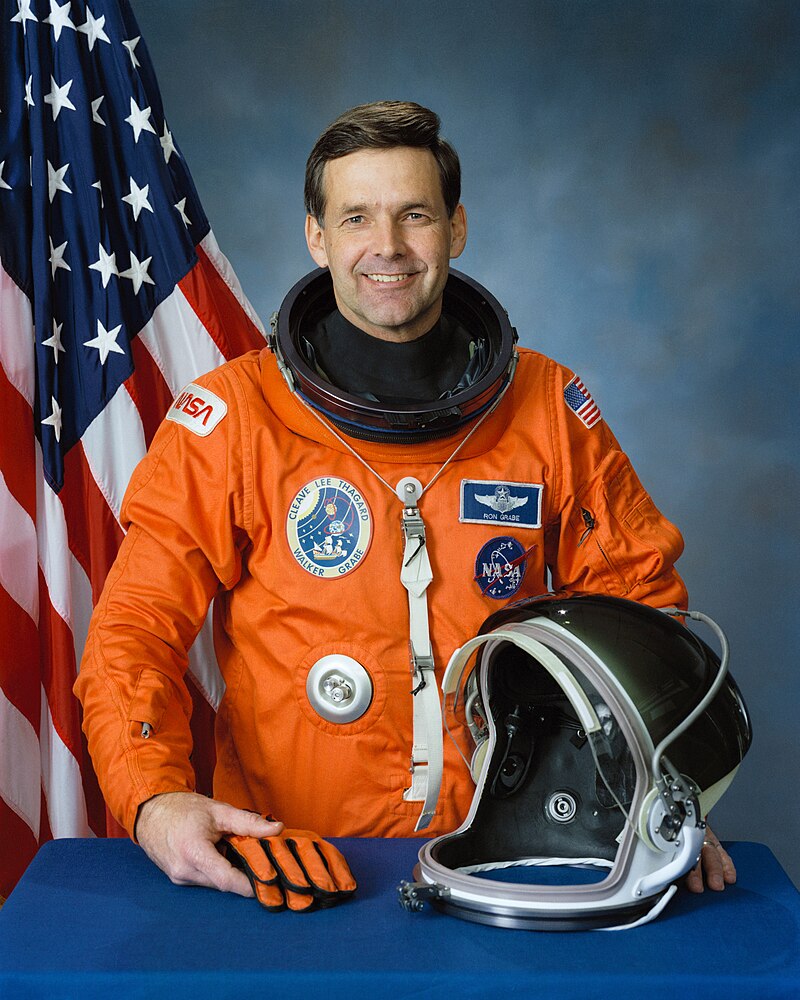
Ronald John Grabe

Ronald John Grabe
Ronald John Grabe (born June 13, 1945, in New York, New York), (Col, USAF, Ret.), is a former NASA astronaut.
Grabe became a NASA astronaut in August 1981. A veteran of four space flights, Grabe served as pilot on STS-51-J (October 3–7, 1985) and STS-30 (May 4–8, 1989), and was the mission commander on STS-42 (January 22–30, 1992) and STS-57 (June 21 to July 1, 1993).
Grabe has logged over 627 hours in space. Effective April 11, 1994, Grabe left NASA and the Air Force to join Orbital Sciences Corporation, Dulles, Virginia.
Grabe was on board STS-51-J, the second Space Shuttle Department of Defense mission, launched from Kennedy Space Center, Florida, on October 3, 1985. This was the maiden voyage of the Atlantis, the final Orbiter in the Shuttle fleet. After 98 hours of orbital operations, Atlantis landed at Edwards Air Force Base, California, on October 7, 1985. Mission duration was 97 hours, 14 minutes, 38 seconds.
He also travelled in STS-30 Atlantis launched from Kennedy Space Center, Florida, on May 4, 1989. Following 64 orbits of the Earth, the STS-30 mission concluded with a landing at Edwards Air Force Base, California, on May 8, 1989. Mission duration was 96 hours, 57 minutes, 35 seconds.
STS-42 Discovery launched from the Kennedy Space Center, Florida, on January 22, 1992. This eight-day mission culminated in a landing at Edwards Air Force Base, California, on January 30, 1992. Mission duration was 193 hours, 14 minutes, 45 seconds.
STS-57 Endeavour launched from the Kennedy Space Center, Florida, on June 21, 1993. The primary mission of this flight was the retrieval of the European Retrievable Carrier satellite (EURECA). A spacewalk was conducted on this flight as part of an ongoing program to evaluate extravehicular activity (EVA) techniques for future missions. The Space Shuttle Endeavour landed at the Kennedy Space Center on July 1, 1993, after 10 days on orbit. Mission duration was 239 hours, 45 minutes.
225
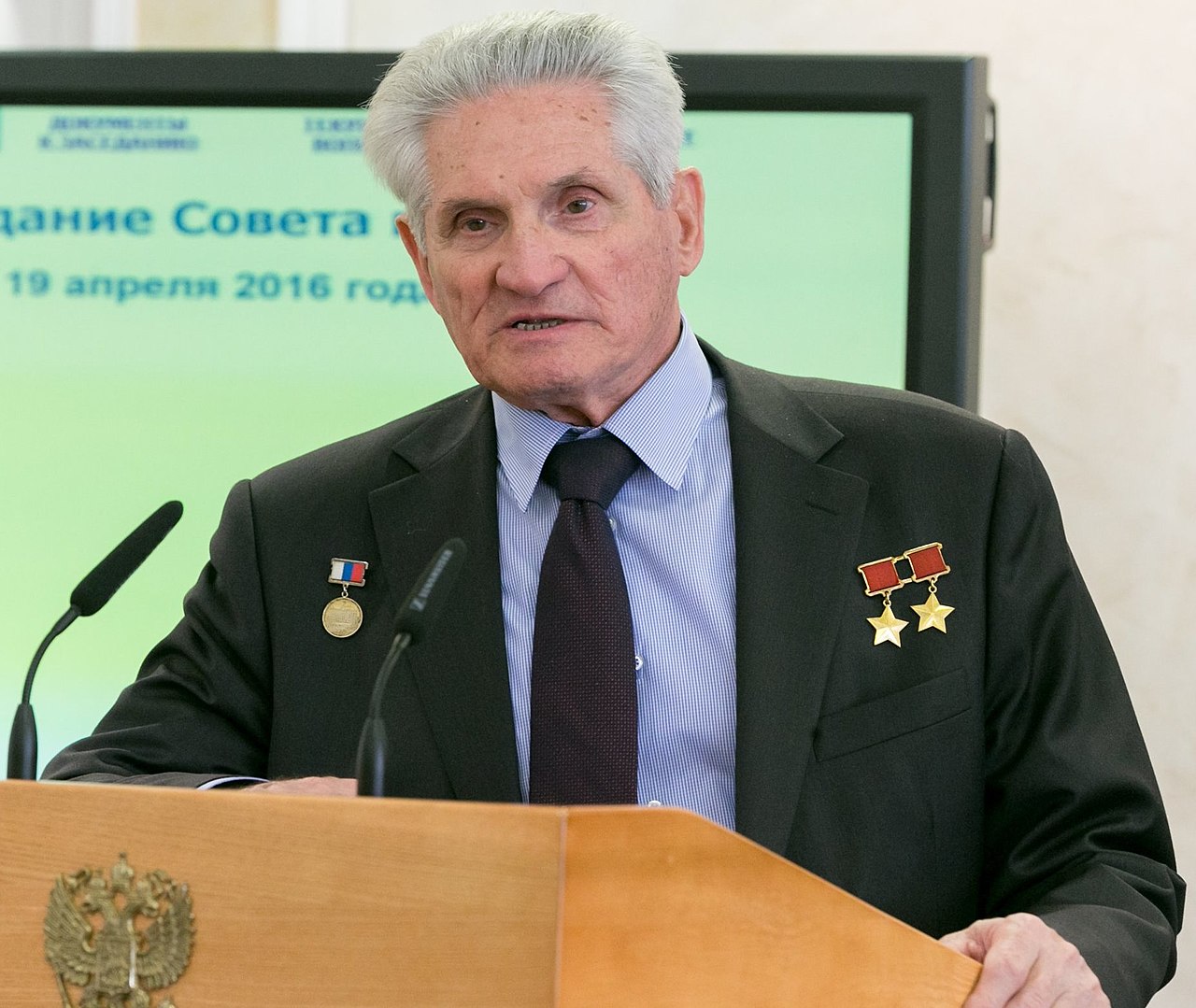
Boris Valentinovich Volynov

Boris Valentinovich Volynov
Boris Valentinovich Volynov (Russian: born on 18 December 1934) is a Soviet cosmonaut who flew two space missions of the Soyuz programme: Soyuz 5, and Soyuz 21
Soyuz 5 was launched on January 15, 1969, crewed by Volynov, Aleksei Yeliseyev, and Yevgeny Khrunov. On 16 January Yeliseyev and Khrunov transferred to Soyuz 4, crewed by Commander Vladimir Shatalov, following an orbital rendezvous and docking. Soyuz 4 undocked from Soyuz 5 the following day and Volynov prepared for a solo re-entry.
During the re-entry of Soyuz 5 on January 17, 1969 there were a few anomalies which were managed by Volynov in manual mode. Following re-entry, the module's parachutes deployed only partially, and a failure of the soft-landing retrorockets in the base of the descent module caused a hard landing which almost wrecked the module, and broke some of Volynov's teeth.
On July 6, 1976 Volynov and Flight Engineer Vitaliy Zholobov were launched on board Soyuz 21 to spend between 54 and 66 days aboard the space station Salyut 5. Following a deterioration in the health of Zholobov, who was making his first spaceflight, the decision was made to return the crew at the earliest available opportunity and they boarded their Soyuz on August 24. Because Soyuz 21 was returning early, it was outside the normal recovery window, and encountered strong winds as it descended, which caused uneven firing of the retrorockets. It made a hard landing around midnight 200 km southwest of Kokchetav, Kazakhstan
226
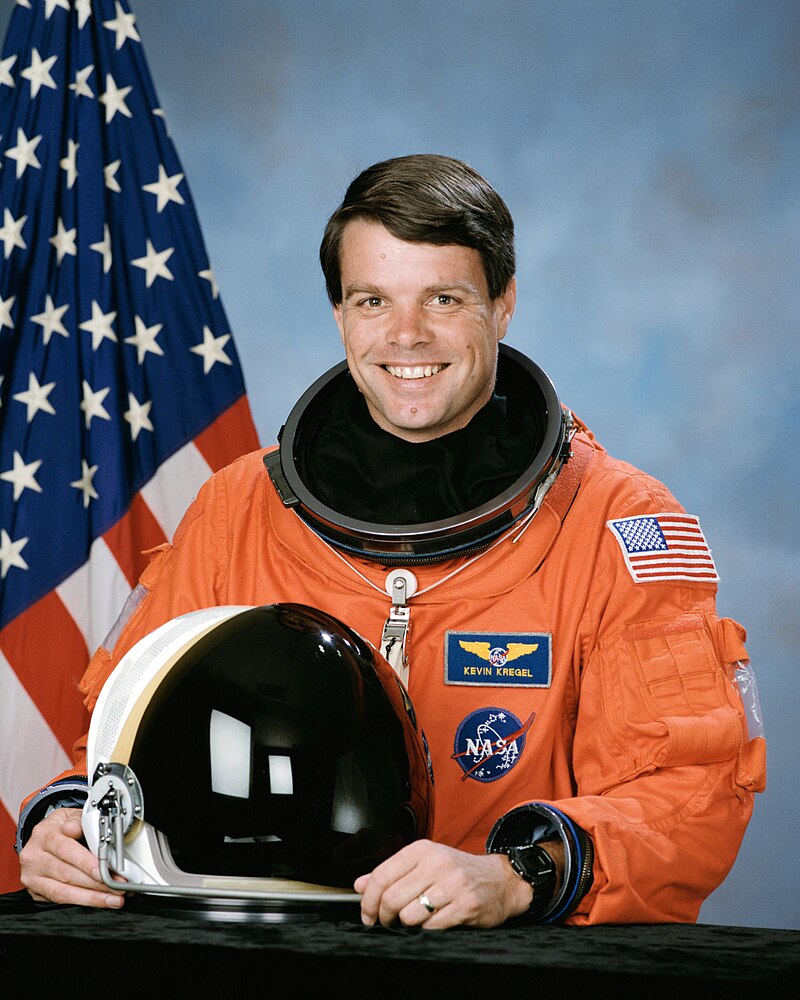
Kevin Richard Kregel

Kevin Richard Kregel
Kevin Richard Kregel born on September 16, 1956, grew up in Amityville, New York. He is an American former astronaut, and former member of the Space Launch Initiative Project at the Lyndon B. Johnson Space Center A veteran of four space flights, Kregel has logged 52 days, 17 hours, 20 minutes and 5 seconds in space. He was the pilot on STS-70 (July 13–22, 1995) and STS-78 (June 20 to July 7, 1996), and was the spacecraft commander on STS-87 (November 19 to December 5, 1997) and STS-99 (February 11–22, 2000).
STS-70 Discovery (July 13–22, 1995) was a 9-day mission during which the crew performed a variety of experiments in addition to deploying the sixth and final NASA Tracking and Data Relay Satellite. The mission was completed in 142 orbits of the Earth, traveling 3.7 million miles in 214 hours, 20 minutes.
STS-78 Columbia (June 20 to July 7, 1996) was a 16-day Life and Microgravity Spacelab mission. STS-78 orbited the Earth 271 times, covering 7 million miles in 405 hours, 48 minutes.
STS-87 Columbia (November 19 to December 5, 1997) was the fourth U.S Microgravity Payload flight and focused on experiments to study how the weightless environment of space affects various physical processes, and observations of the Sun's outer atmospheric layers. The mission was accomplished in 252 Earth orbits during which the crew traveled 6.5 million miles in 376 hours, 34 minutes.
STS-99 (February 11–22, 2000) was an 11-day mission during which the international crew aboard Endeavour worked dual shifts to support payload operations. The Shuttle Radar Topography Mission mapped more than 47 million miles of the Earth's land surface. The STS-99 mission was accomplished in 181 Earth orbits, traveling over 4 million miles in 268 hours and 38 minutes.
227
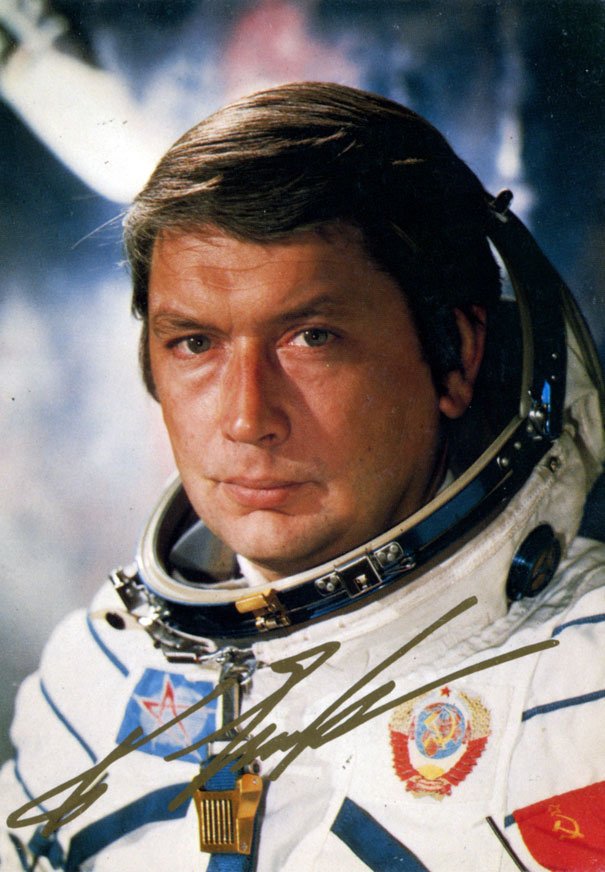
Boris Yegorov

Boris Yegorov
Boris Yegorov (November 26, 1937 – September 12, 1994) was a Soviet physician and cosmonaut who became the first medical doctor to travel to space.
On October 12, 1964, Yegorov made history as a member of the Voskhod 1 crew. The mission was significant in that it was the first to carry more than one crew member and the first to use a multi-person spacecraft. During the flight, Yegorov conducted medical experiments to study the effects of spaceflight on the human body. He also monitored the health of his fellow crew members and provided medical assistance when needed, demonstrating his skill as a physician.
228
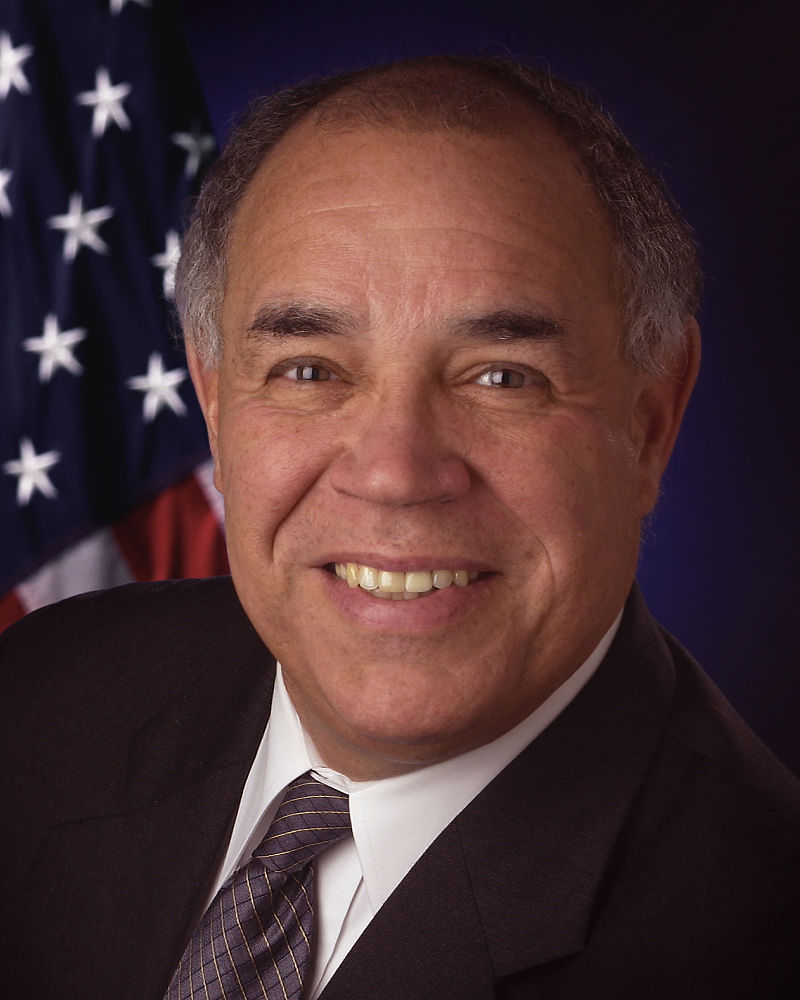
Frederick Drew Gregory

Frederick Drew Gregory
Frederick Drew Gregory, a former NASA astronaut as well as former NASA Deputy Administrator. Frederick Gregory was born on January 7, 1941, in Washington, D.C.
A veteran of three Shuttle missions he has logged about 456 hours in space. He served as pilot on STS-51B (April 29 to May 6, 1985), and was the spacecraft commander on STS-33 (November 22–27, 1989), and STS-44 (November 24 to December 1, 1991) as detailed in the following paragraphs.
STS-51B/Spacelab-3 launched from Kennedy Space Center, Florida, on April 29, 1985, with Gregory serving as pilot. After seven days of around-the-clock scientific operations, Challenger and its laboratory cargo landed on the dry lakebed at Edwards Air Force Base, California, on May 6, 1985. Mission duration was 168 hours, 8 minutes, 47 seconds.
When STS-33 launched at night, from Kennedy Space Center, Florida, on November 22, 1989, Gregory became the first African-American to command a space flight.NASA - Diversity in Space. After 79 orbits of the Earth, this five-day mission concluded on November 27, 1989, with a hard surface landing on Runway 04 at Edwards AFB, California. Mission duration was 120 hours, 7 minutes, 32 seconds.
STS-44 launched at night from the Kennedy Space Center, Florida, on November 24, 1991. During 110 orbits of the Earth, the crew successfully deployed their prime payload, the Defense Support Program (DSP) satellite. The mission concluded on December 1, 1991, with a landing at Edwards Air Force Base in Californd, the Defense Support Program (DSP) satellite. The mission concluded on December 1, 1991, with a landing at Edwards Air Force Base in California. Mission duration was 166 hours, 50 minutes, 42 seconds.
229
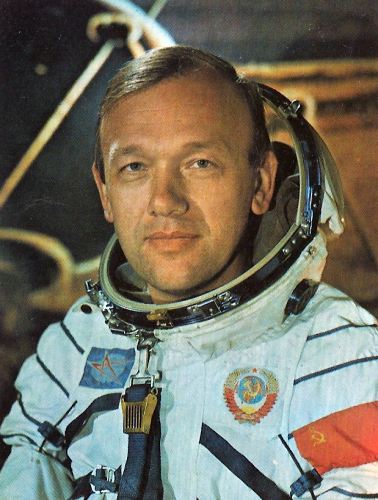
Aleksei Stanislavovich Yeliseyev

Aleksei Stanislavovich Yeliseyev
Aleksei Stanislavovich Yeliseyev (Russian: born 13 July 1934) is a retired Soviet cosmonaut who flew on three missions in the Soyuz programme as a flight engineer: Soyuz 5 , Soyuz 8, and Soyuz 10. He made the world's eighth spacewalk during Soyuz 5 in 1969.
230
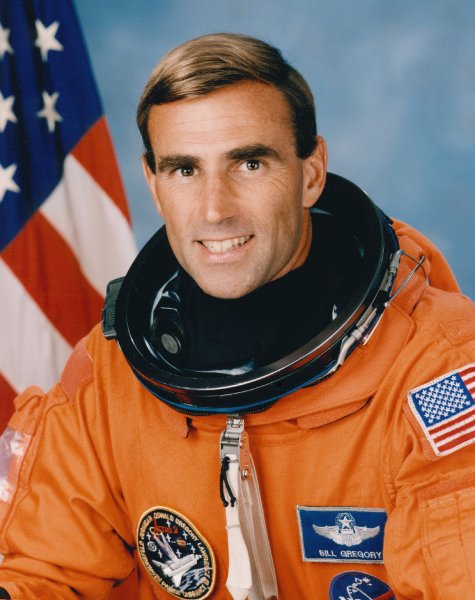
William George Gregory

William George Gregory
William George "Borneo" Gregory (born May 14, 1957) is an American retired NASA astronaut and United States Air Force lieutenant colonel.
Gregory served as the STS-67 pilot on the seven-person astronomical research mission aboard the Space Shuttle Endeavour. Launching from the Kennedy Space Center on March 2, 1995, and landing at Edwards AFB on March 18, 1995, the crew established a new mission duration record of 16 days, 15 hours, 8 minutes and 46 seconds, while completing 262 orbits and traveling nearly seven million miles. This second flight of the ASTRO telescope primary payload also included numerous secondary payloads.
231
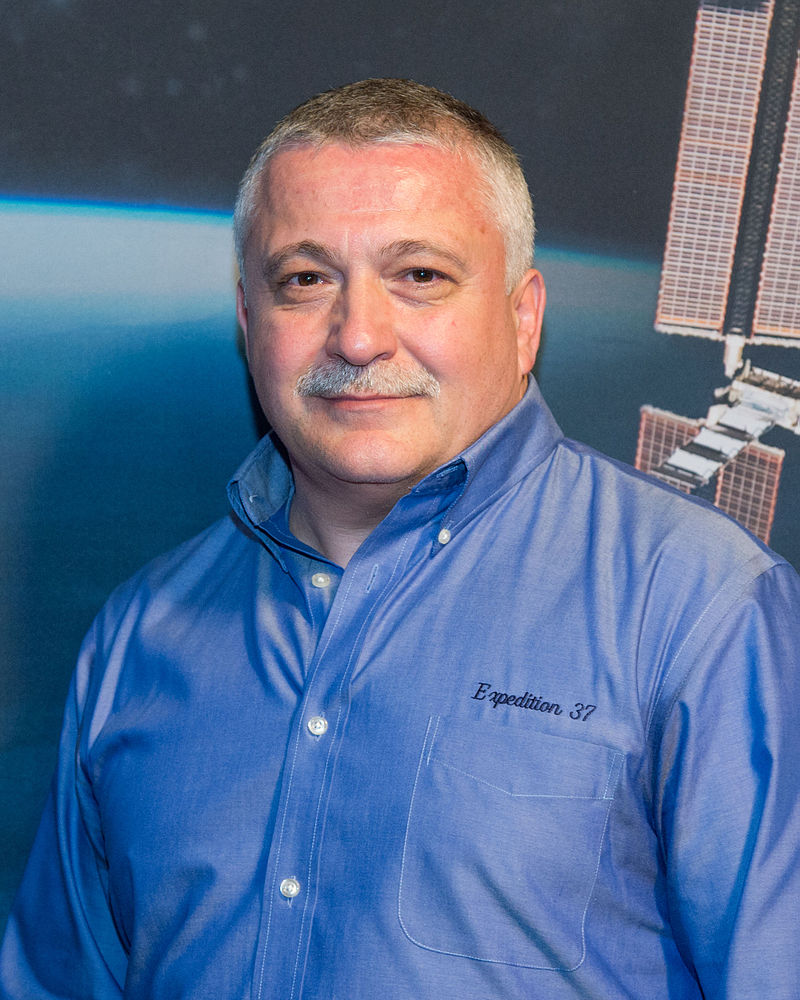
Fyodor Nikolayevich Yurchikhin

Fyodor Nikolayevich Yurchikhin
Fyodor Nikolayevich Yurchikhin (Russian: born 3 January 1959) is a Russian cosmonaut who has flown on five spaceflights. His first spaceflight was a 10-day Space Shuttle mission STS-112. His second was a long-duration stay aboard the International Space Station (ISS) as a flight engineer for Expedition 15; for this mission he was launched in the Soyuz TMA-10 spacecraft. He has undertaken two further long-duration stays aboard the ISS, as a crew member of Expedition 24 / 25. For this mission he was launched with the spacecraft Soyuz TMA-19, and he landed in November 2010, also with the Soyuz TMA-19 spacecraft. He served as Soyuz commander for his fourth mission aboard Soyuz TMA-09M, as flight engineer for Expedition 36 and ISS commander for Expedition 37. In April 2017, Yurchikhin launched on Soyuz MS-04 for the fifth spaceflight of his career, a six-month mission to the ISS as part of Expedition 51 and 52, for which he was the commander.
232
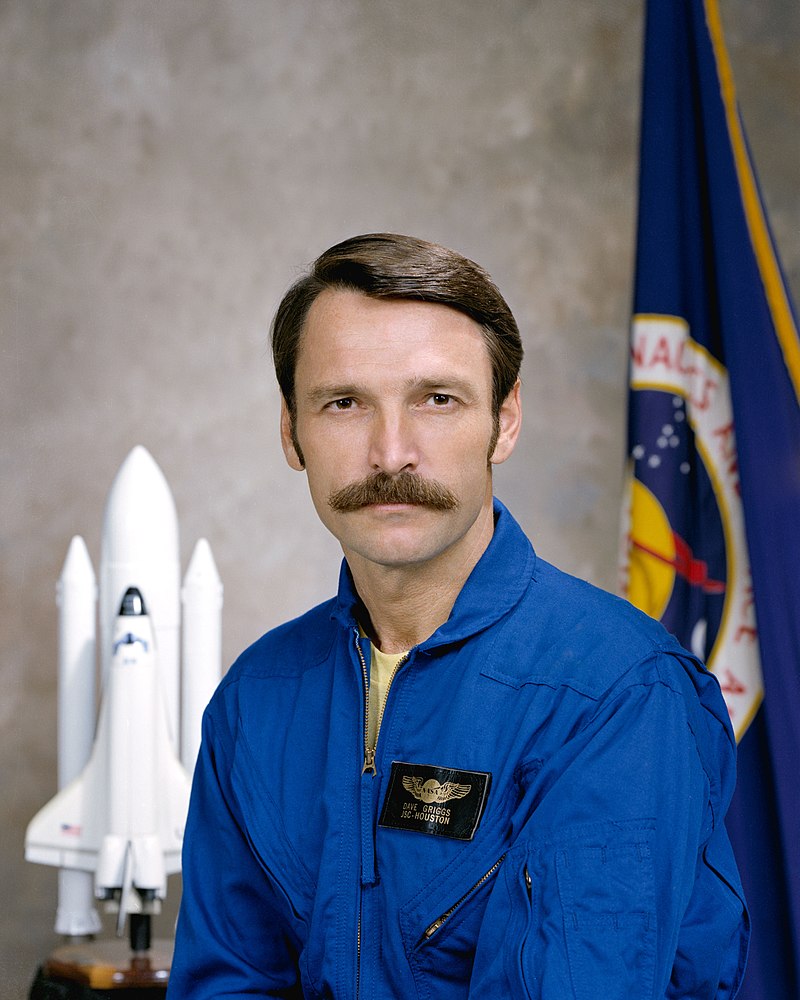
Stanley David Griggs

Stanley David Griggs
Stanley David Griggs (September 7, 1939 – June 17, 1989) was a United States Navy officer and a NASA astronaut. In September 1983 he began crew training as a mission specialist for flight STS-51-D, which flew April 12–19, 1985. During the flight, Griggs conducted the first unscheduled extravehicular activity (space walk) of the space program. The space walk lasted for over three hours during which preparations for a satellite rescue attempt were completed.
233
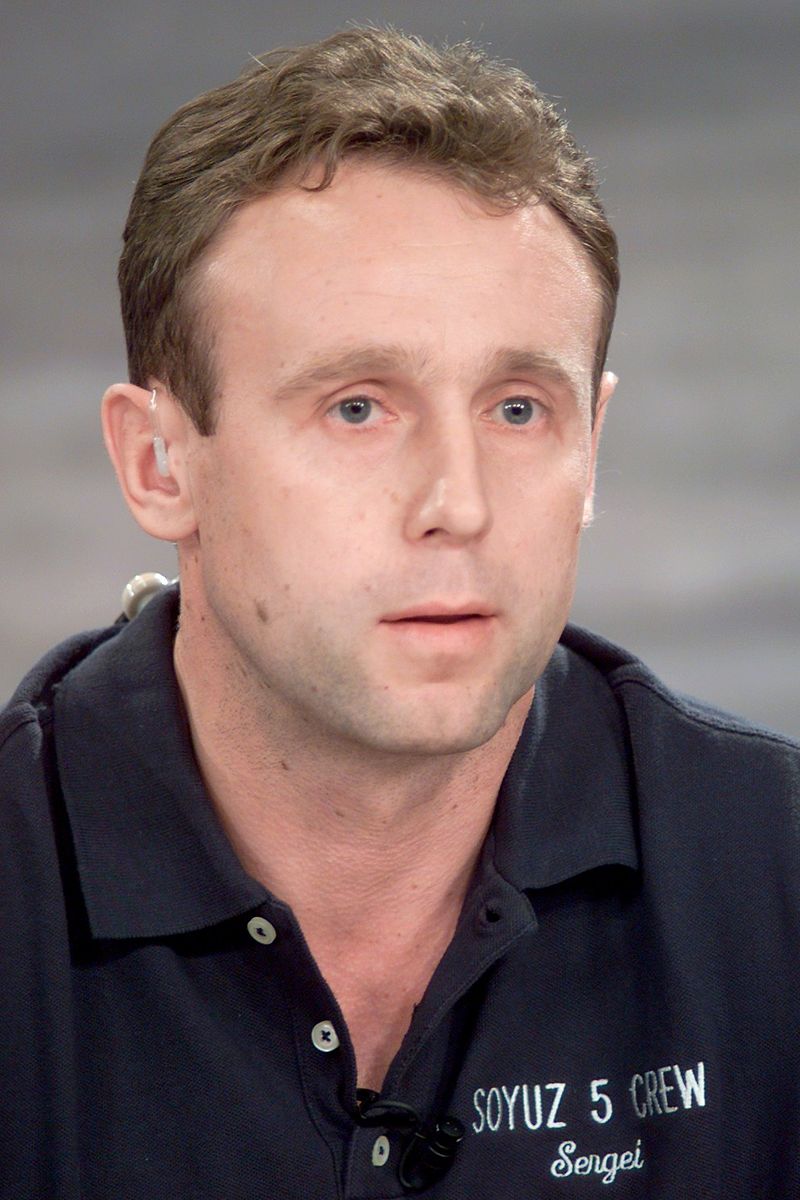
Sergei Viktorovich Zalyotin

Sergei Viktorovich Zalyotin
Sergei Viktorovich Zalyotin (Russian: born April 21, 1962) is a Russian cosmonaut and a veteran of two space missions.( Soyuz TM-30, Soyuz TMA-1/TM-34)
From April 4 to June 16, 2000, he performed the first space flight as the commander of the Soyuz TM-30 spacecraft and Mir Orbital Complex under PC-28 programme together with A. Kaleri. In the course of operations on the orbital complex the crew carried out the station activation. During the flight he performed one egress into open space with a duration of 5 hours 3 minutes.
He briefly visited the International Space Station aboard Soyuz TMA-1 in 2002.
234
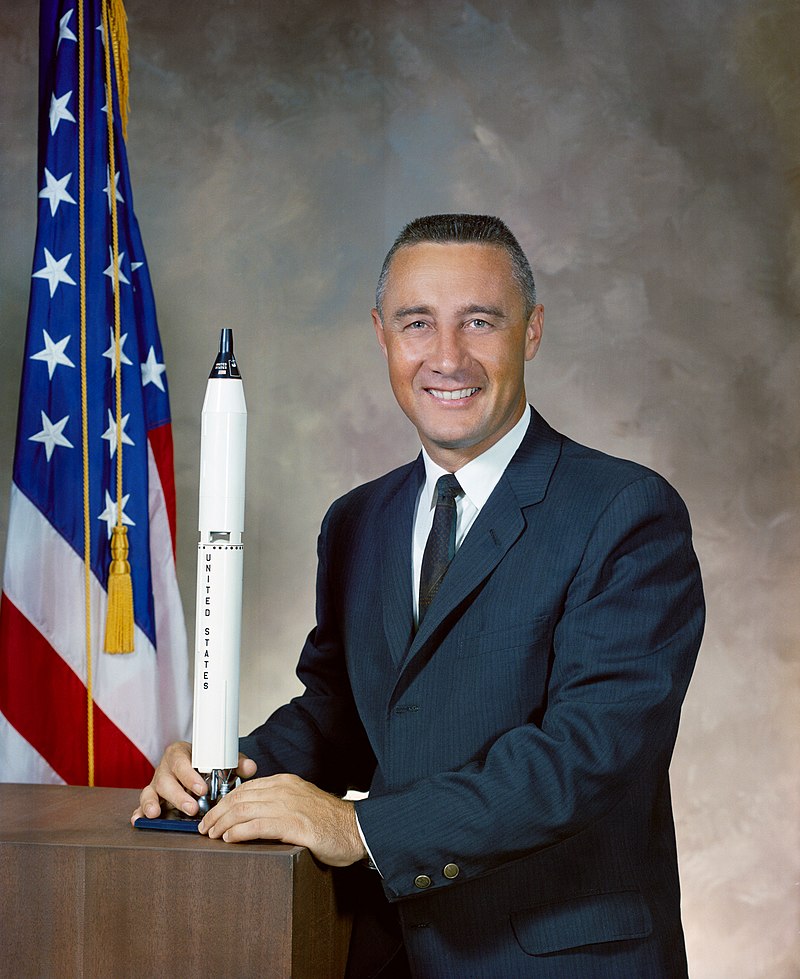
Virgil Ivan Grissom

Virgil Ivan Grissom
Virgil Ivan "Gus" Grissom (April 3, 1926 – January 27, 1967) was an American engineer, pilot in the United States Air Force, and member of the Mercury Seven selected by National Aeronautics and Space Administration's (NASA) as Project Mercury astronauts to be the first Americans in outer space. He was a Project Gemini and an Apollo program astronaut. He was also the second American to fly in space twice, preceded only by Joe Walker with his sub-orbital X-15 flights.
Grissom, commander of AS-204 (Apollo 1), died with astronauts Ed White and Roger B. Chaffee on January 27, 1967, during a pre-launch test for the Apollo 1 mission at Cape Kennedy, Florida.
235
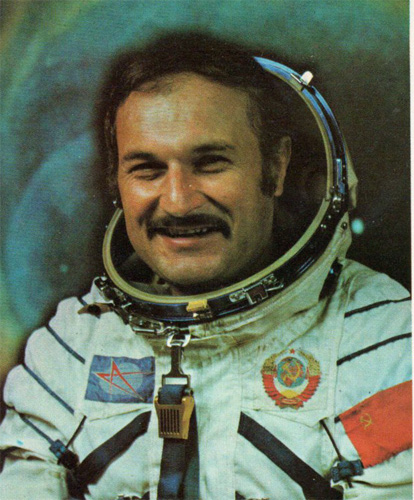
Vitaly Mikhaylovich Zholobov

Vitaly Mikhaylovich Zholobov
Vitaly Mikhaylovich Zholobov (Russian: Ukrainian: born 18 June 1937) is a retired Soviet cosmonaut who flew on Soyuz 21 space flight as the flight engineer.
His only trip to space involved a two-month stay on the Salyut 5 space station (Soyuz 21 mission). The flight was scheduled to last for 60 days but lasted for only 49. Vitaly Zholobov reported to the Mission Control Center about a smell similar to that of a propellant which was known to be toxic. The Control Center decided to abort the mission to avoid exposing the crew to further risk and because the research and technology programs were already successfully finished. He was in orbit from 6 June 1976 to 24 August 1976.
236
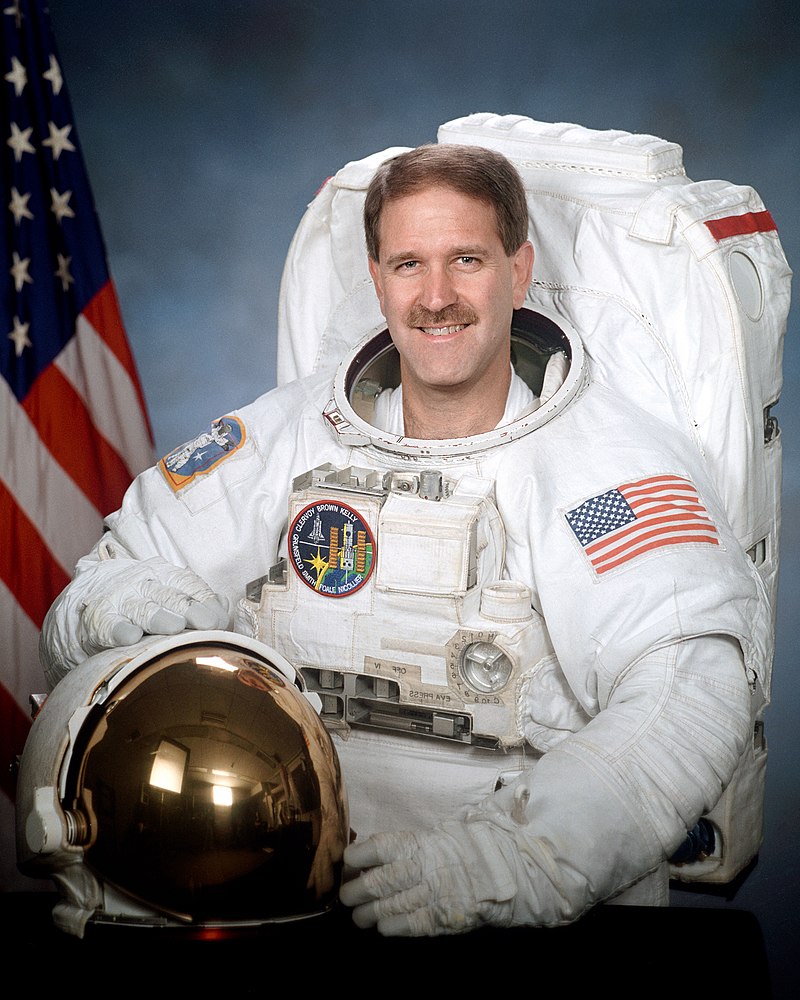
John Mace Grunsfeld

John Mace Grunsfeld
John Mace Grunsfeld (born 10 October 1958) is an American physicist and a former NASA astronaut. He is a veteran of five Space Shuttle flights and has served as NASA Chief Scientist.
Following are his Space Missions.
STS-67/Astro-2 Space Shuttle Endeavour (March 2–18, 1995) was launched from Kennedy Space Center, Florida, and returned to land at Edwards Air Force Base, California. Mission duration was 399 hours and 9 minutes.
STS-81 Space Shuttle Atlantis (January 12–22, 1997) was a 10-day mission, the fifth to dock with Russia's Mir space station, and the second to exchange U.S. astronauts. Following 160 orbits of the Earth the STS-81 mission concluded with a landing on Kennedy Space Center's Runway 33 ending a 3.9 million mile journey. Mission duration was 244 hours, 56 minutes.
STS-103 Space Shuttle Discovery (December 19–27, 1999) was an eight-day mission during which the crew successfully installed new gyroscopes and scientific instruments and upgraded systems on the Hubble Space Telescope (HST). Grunsfeld performed two spacewalks totaling 16 hours and 23 minutes. The STS-103 mission was accomplished in 120 Earth orbits, traveling 3.2 million miles in 191 hours and 11 minutes.
STS-109 Space Shuttle Columbia (March 1–12, 2002) was the fourth Hubble Space Telescope (HST) servicing mission. The crew of STS-109 successfully upgraded the Hubble Space Telescope installing a new digital camera, a cooling system for the infrared camera, new solar arrays and a new power system. He also performed three spacewalks totaling 21 hours and 9 minutes, including the installation of the new Power Control Unit. STS-109 orbited the Earth 165 times, and covered 3.9 million miles in over 262 hours.
STS-125 Space Shuttle Atlantis (May 11–24, 2009) was the fifth and final servicing mission to the Hubble Space Telescope. Atlantis launched from Kennedy Space Center Launch Pad 39A May 11, 2009 at 2:01 p.m. EDT, and landed on May 24, 2009 at California's Edwards Air Force Base. During the mission, Grunsfeld performed three of the mission's five back-to-back spacewalks, which installed two new instruments to the Hubble Space Telescope. Grunsfeld has logged over 58 days in space, including eight space walks totaling 58 hours and 30 minutes.
237
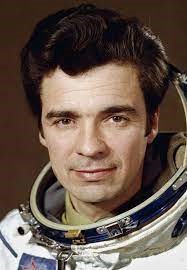
Vyacheslav Dmitriyevich Zudov

Vyacheslav Dmitriyevich Zudov
Vyacheslav Dmitriyevich Zudov (Russian: born 8 January 1942) is a retired Soviet cosmonaut.
He was selected as a cosmonaut on 23 October 1965, flew as Commander on Soyuz 23 on 14–16 October 1976 and retired on 14 May 1987.
238
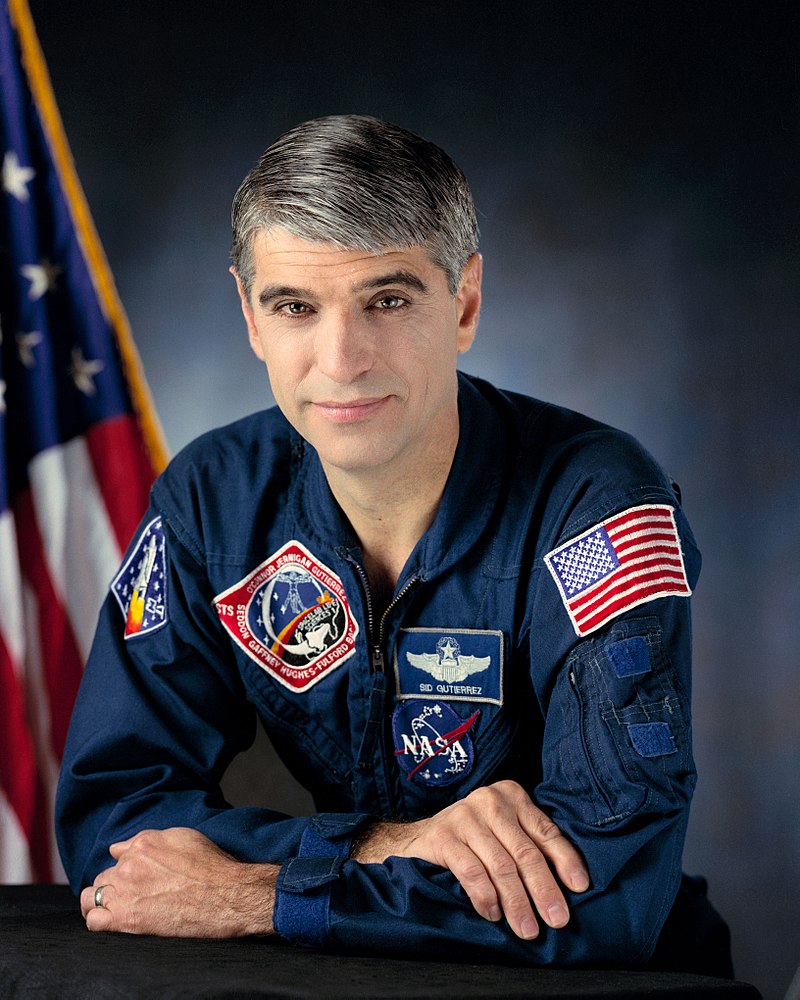
Sidney McNeill Gutierrez

Sidney McNeill Gutierrez
Sidney McNeill Gutierrez (Colonel, USAF, Ret.) (born June 27, 1951), is an American pilot and former NASA astronaut. Since retiring from NASA, Gutierrez has worked in several leadership positions at Sandia National Laboratories and Rocket Crafters Inc.
Gutierrez was born in Albuquerque, New Mexico.
A veteran of two space flights, he has logged over 488 hours in space. He was the pilot on STS-40 (June 5 – 14, 1991) and was the spacecraft commander on STS-59 (April 9 – 20, 1994.
STS-40 Spacelab Life Sciences (SLS-1), a dedicated space and life sciences mission, which launched from the Kennedy Space Center, Florida, on June 5, 1991. Following 146 orbits of the Earth, Columbia and her crew returned to land at Edwards Air Force Base, California, on June 14, 1991. Mission duration was 218 hours, 14 minutes, 20 seconds.
STS-59 Space Radar Laboratory (SRL-1), part of Mission to Planet Earth, was an eleven-day flight dedicated to the study of the Earth and the atmosphere around it. Launching on April 9, 1994, from the Kennedy Space Center in Florida, the Endeavour and her crew of six completed 183 orbits of the Earth before landing at Edwards AFB, California, on April 20, 1994.
239
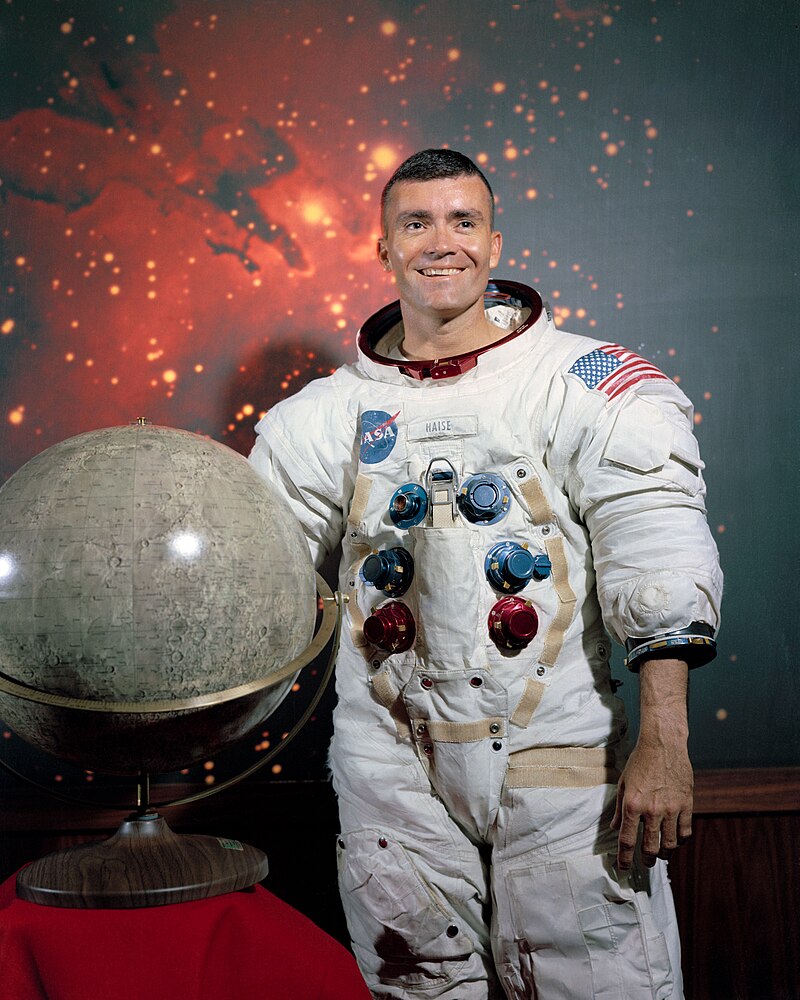
Fred Wallace Haise Jr

Fred Wallace Haise Jr
Fred Wallace Haise Jr. (born November 14, 1933) is an American former NASA astronaut. He is one of 24 people to have flown to the Moon, having flown as Lunar Module Pilot on Apollo 13. He was slated to become the 6th person to walk on the Moon, but the Apollo 13 landing mission was aborted en route.
He flew as Lunar Module Pilot on the aborted Apollo 13 lunar mission in 1970. Due to the distance between the Earth and Moon during the mission, Haise, Jim Lovell, and Jack Swigert hold the record for the farthest distance from the Earth ever traveled by human beings. Haise and Jack Swigert were the first people from Group 5 to fly in space.
240
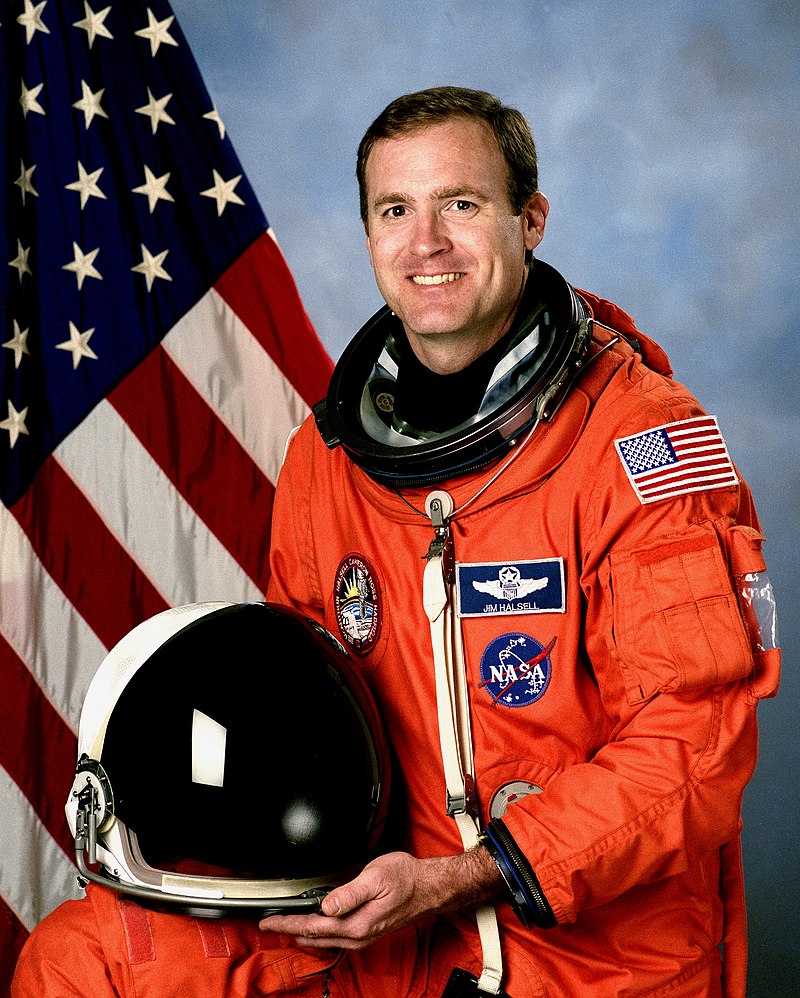
James Donald Halsell Jr.

James Donald Halsell Jr.
James Donald Halsell Jr. (born September 29, 1956) is a retired United States Air Force officer, a former NASA astronaut and veteran of five Space Shuttle missions, as detailed below.
STS-65 flew the second International Microgravity Laboratory (IML-2). During the 15-day flight, the crew conducted more than 80 experiments focusing on materials and life sciences research in microgravity. The mission was accomplished in 236 orbits of the Earth, traveling 6.1 million miles in 353 hours and 55 minutes.
STS-74 was NASA's second Space Shuttle mission to rendezvous and dock with the Russian Space Station Mir. During the 8-day flight, the Atlantis crew successfully attached a permanent docking module to Mir and transferred over 2,000 pounds of food, water and scientific supplies for use by the cosmonauts. The STS-74 mission was accomplished in 129 orbits of the Earth, traveling 3.4 million miles in 196 hours, 30 minutes, 44 seconds.
STS-83, the Microgravity Science Laboratory (MSL-1) Spacelab mission, was cut short because of problems with one of the Shuttle's three fuel cell power generation units. Mission duration was 95 hours and 12 minutes, traveling 1.5 million miles in 63 orbits of the Earth.
STS-94, a re-flight of the Microgravity Science Laboratory (MSL-1) Spacelab mission, focused on materials and combustion science research in microgravity. Mission duration was 376 hours and 45 minutes, traveling 6.3 million miles in 251 orbits of the Earth.
STS-101 was the third Shuttle mission devoted to International Space Station (ISS) construction. Objectives included transporting and installing over 5,000 pounds of equipment and supplies, and conducting a spacewalk. The mission was accomplished in 155 orbits of the Earth, traveling 4.1 million miles in 236 hours and 9 minutes.
241
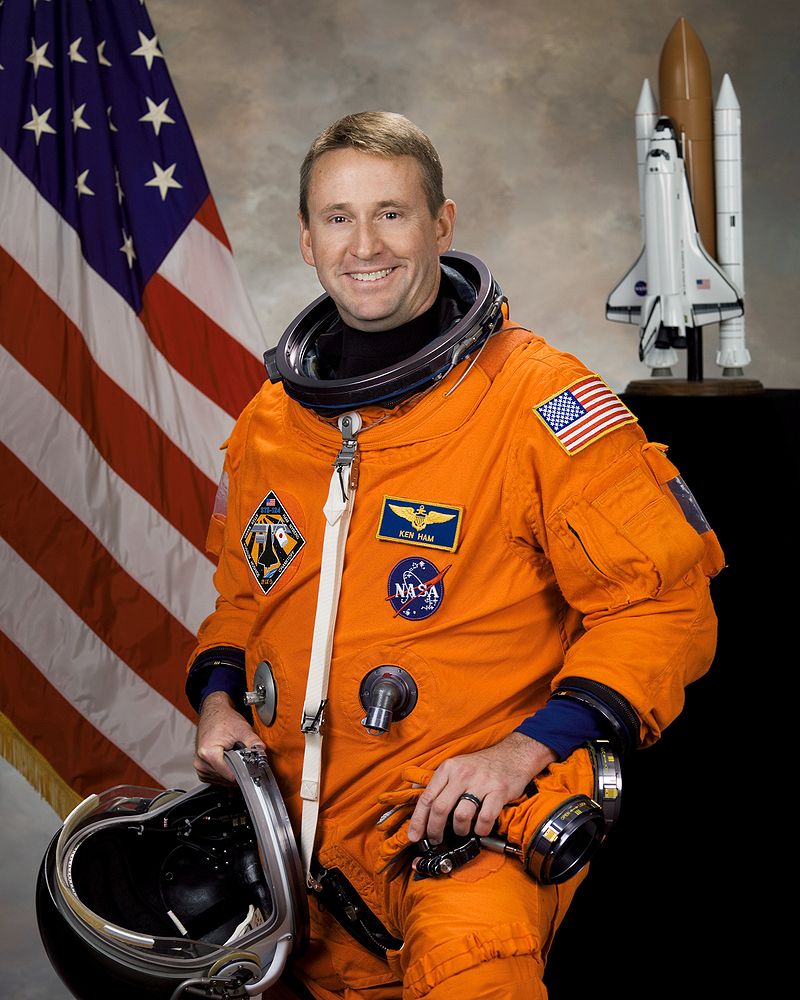
Kenneth Todd Ham

Kenneth Todd Ham
Kenneth Todd Ham (born December 12, 1964) is a retired American astronaut and a captain in the United States Navy. He flew on STS-124 as pilot and then on STS-132 as mission commander.
He made his first spaceflight as pilot of STS-124, in which Discovery flew to the International Space Station in June 2008. Discovery delivered the Japanese Experiment Module-Pressurized Module (JEM-PM) and the Japanese Remote Manipulator System to the International Space Station (ISS).
He also flew as the commander of mission STS-132, which launched on May 14, 2010 and landed on May 26, 2010. The STS-132 mission completed in 186 orbits and delivered the Russian-built Mini Research Module (MRM1) to the ISS.
242
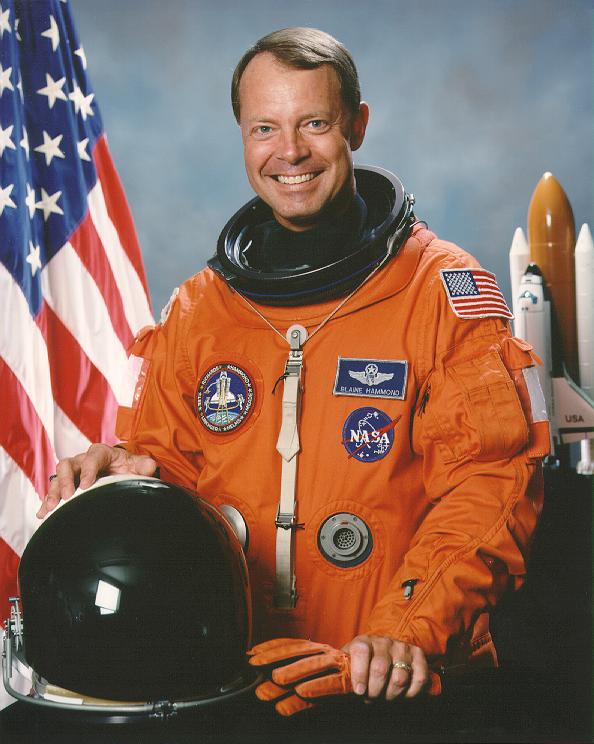
Lloyd Blaine Hammond Jr.

Lloyd Blaine Hammond Jr.
Lloyd Blaine Hammond Jr. (born January 16, 1952) is a Gulfstream test pilot, a former United States Air Force officer, and a former NASA astronaut. He flew on two Space Shuttle missions. Hammond was born on January 16, 1952, in Savannah, Georgia, but considers St. Louis, Missouri his hometown.
Hammond flew as pilot of Discovery on STS-39, the first unclassified Department of Defense mission (April 28 to May 6, 1991). He logged 199 hours and 23 minutes of space flight.
He was the pilot on STS-64 aboard the Discovery. Mission highlights included: first use of lasers for environmental research; deployment and retrieval of a solar science satellite; robotic processing of semiconductors; use of RMS boom for jet thruster research; first untethered spacewalk in 10 years to test a self-rescue jetpack. Mission duration was 10 days, 22 hours, 51 minutes.
243
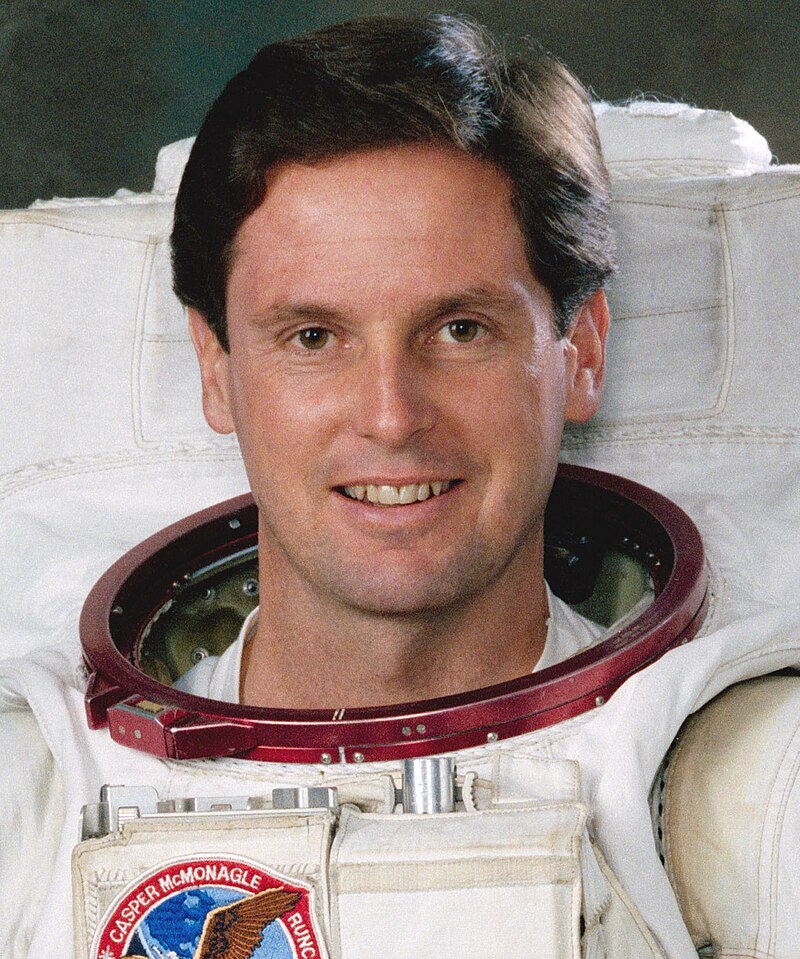
Gregory Jordan Harbaugh

Gregory Jordan Harbaugh
Gregory Jordan Harbaugh is an aeronautical/astronautical engineer and former NASA astronaut. He flew on four space shuttle missions as a mission specialist with responsibilities that included Remote Manipulator System (RMS) operation and Extravehicular Activity (EVAs). He performed three spacewalks during the shuttle missions including in support of repair/refurbishment of the Hubble Space Telescope.
A veteran of four space flights, Harbaugh has logged a total of 818 hours in space, including 18 hours, 29 minutes EVA.
STS-39 Discovery (April 28 through May 6, 1991) was an eight-day unclassified Department of Defense mission involving research for the Strategic Defense Initiative. Harbaugh flew as a mission specialist and was responsible for operation of the RMS and the Infrared Background Signature Survey (IBSS) spacecraft, and he was one of two crewmen trained for EVA in the event of a contingency requiring a spacewalk. Mission duration was 199 hours, 22 minutes.
STS-54 Endeavour (January 13–19, 1993) was a six-day mission which featured the deployment of TDRS-F, and a 4-hour 28-minute space walk by Harbaugh. Mission duration was 143 hours 38 minutes.
STS-71 Atlantis (June 27 to July 7, 1995) was the first docking mission with the Russian Space Station Mir, and involved an exchange of crews. On this mission, Harbaugh served as the Flight Engineer (Mission Specialist) on a seven-member (up) eight-member (down) crew. Space Shuttle Atlantis was modified to carry a docking system compatible with the Russian Mir Space Station, and Harbaugh was responsible for the inflight operation of the docking system. He was also assigned to perform any contingency EVA. Mission duration was 235 hours, 23 minutes.
STS-82 Discovery (February 11–21, 1997) the second Hubble Space Telescope (HST) servicing mission. Harbaugh participated in two spacewalks, totaling 14 hours and 01 minute. Following completion of upgrades and repairs, HST was redeployed and boosted to its highest orbit ever. Mission duration was 239 hours, 37 minutes.
244
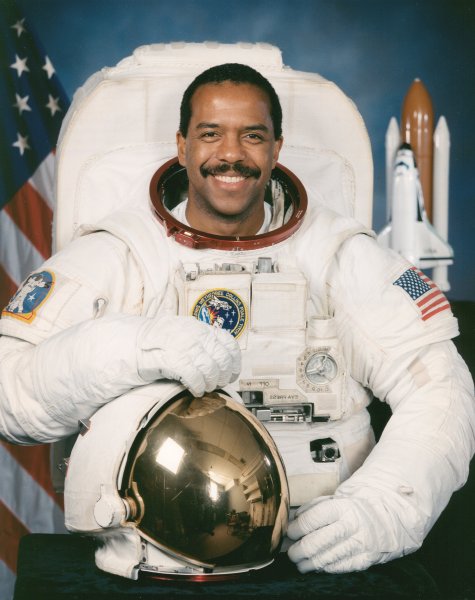
Bernard Anthony Harris Jr.

Bernard Anthony Harris Jr.
Bernard Anthony Harris Jr. (born June 26, 1956) is a former NASA astronaut. On February 9, 1995, Harris became the first African American to perform an extra-vehicular activity (spacewalk), during the second of his two Space Shuttle flights.
He flew on board Columbia for ten days, (26 April 1993 – 6 May 1993); on the mission the Shuttle reached one year of accumulated flight time. Harris was part of the payload crew of Spacelab D-2, conducting a variety of research in physical and life sciences. During this flight, Harris logged over 239 hours and 4,164,183 miles in space.
His second mission was as the payload commander on STS-63 ( February 2, 1995 – February 11, 1995), the first flight of the new joint Russian-American Space Program. During the flight, Harris became the first African-American to walk in space, while fellow astronaut Michael Foale became the first British-born spacewalker.[2] (It was also on this flight that Eileen Collins became the first female Shuttle pilot.) On this mission, Harris logged 198 hours, 29 minutes in space, completed 129 orbits, and traveled over 2.9 million miles.
245
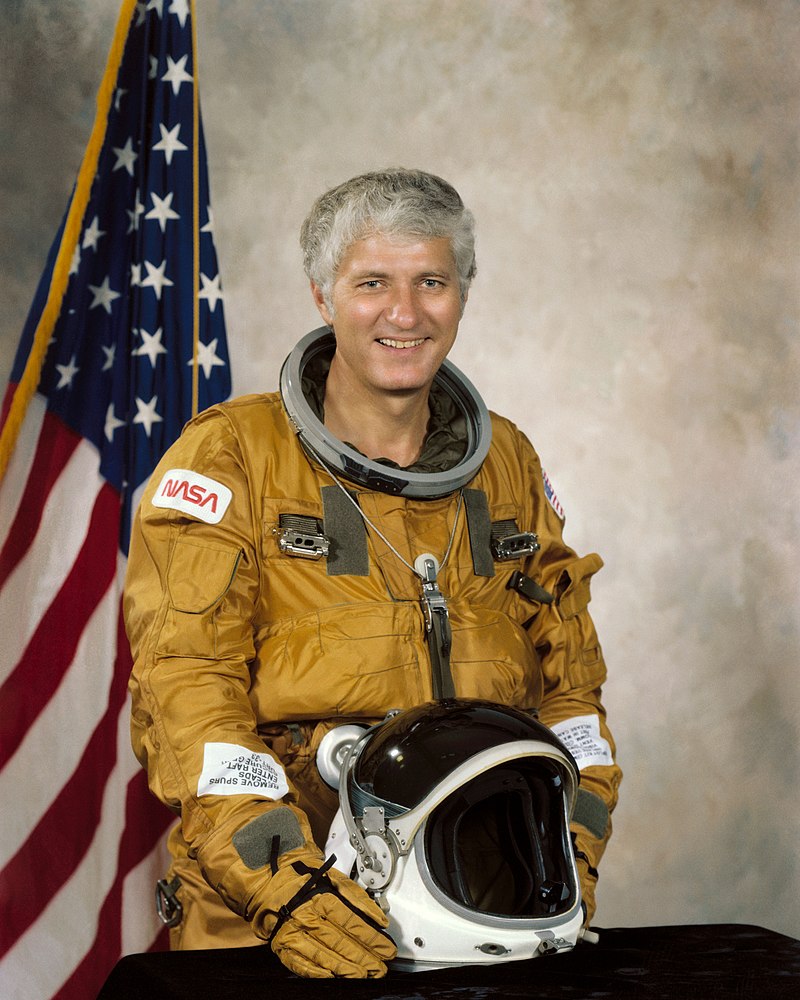
Henry Warren Hartsfield Jr.

Henry Warren Hartsfield Jr.
Henry Warren Hartsfield Jr. (21 November 1933 – 17 July 2014) was a NASA astronaut who logged over 480 hours in space. Henry Hartsfield was born in Birmingham, Alabama.
Hartsfield was the pilot on STS-4, the fourth and final orbital test flight of the shuttle Columbia, which launched from Kennedy Space Center, Florida, on 27 June 1982. STS-4 completed 112 orbits of the Earth before landing on a concrete runway at Edwards Air Force Base, California, on 4 July 1982.[5]
Hartsfield was next spacecraft commander of STS-41-D which launched from Kennedy Space Center, Florida, on 30 August 1984. STS-41-D completed 96 orbits of the Earth before landing at Edwards Air Force Base, California, on 5 September 1984.
On his third flight, Hartsfield was spacecraft commander of Challenger on STS-61-A, which launched from Kennedy Space Center, Florida, on 30 October 1985. The seven-day mission was the first with eight crew members, and the first Spacelab science mission planned and controlled by a foreign customer. After completing 111 orbits of the Earth, STS-61-A landed at Edwards Air Force Base, California, on November 6, 1985. With the completion of this flight, Hartsfield had logged 483 hours in space.
246
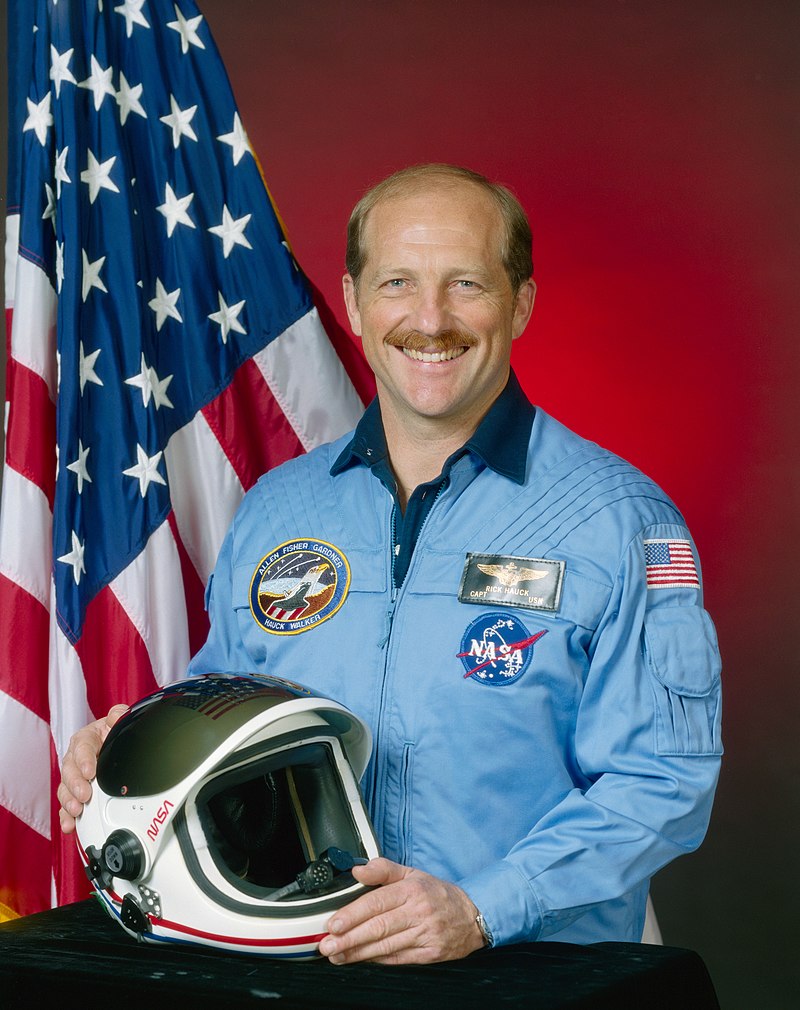
Frederick Hamilton Hauck

Frederick Hamilton Hauck
Frederick Hamilton Hauck is a retired NASA astronaut. He piloted Space Shuttle mission STS-7 and commanded STS-51-A and STS-26. He was born April 11, 1941, in Long Beach, California, but considers Winchester, Massachusetts and Washington, D.C. to be his hometowns.
His first spaceflight was as pilot for STS-7, the seventh flight of the Space Shuttle, which launched from Kennedy Space Center, Florida, on June 18, 1983. This was the second flight for the orbiter Challenger and the first mission with a 5-person crew. Mission duration was 147 hours before landing on a lakebed runway at Edwards Air Force Base, California, on June 24, 1983.
Hauck was spacecraft commander for the second mission of Discovery on mission STS-51-A, which launched on November 8, 1984. In the first space salvage mission in history, the crew also retrieved for return to Earth the Palapa B-2 and Westar VI satellites. STS-51-A completed 127 orbits of the Earth before landing at Kennedy Space Center, Florida, on November 16, 1984.
Hauck was spacecraft commander of Discovery on STS-26, the first flight to be flown after the Challenger accident. The mission launched on September 29, 1988. Discovery completed 64 orbits of the Earth before landing at Edwards Air Force Base, California, on October 3, 1988.
Hauck has logged over 436 flight hours in space.
247
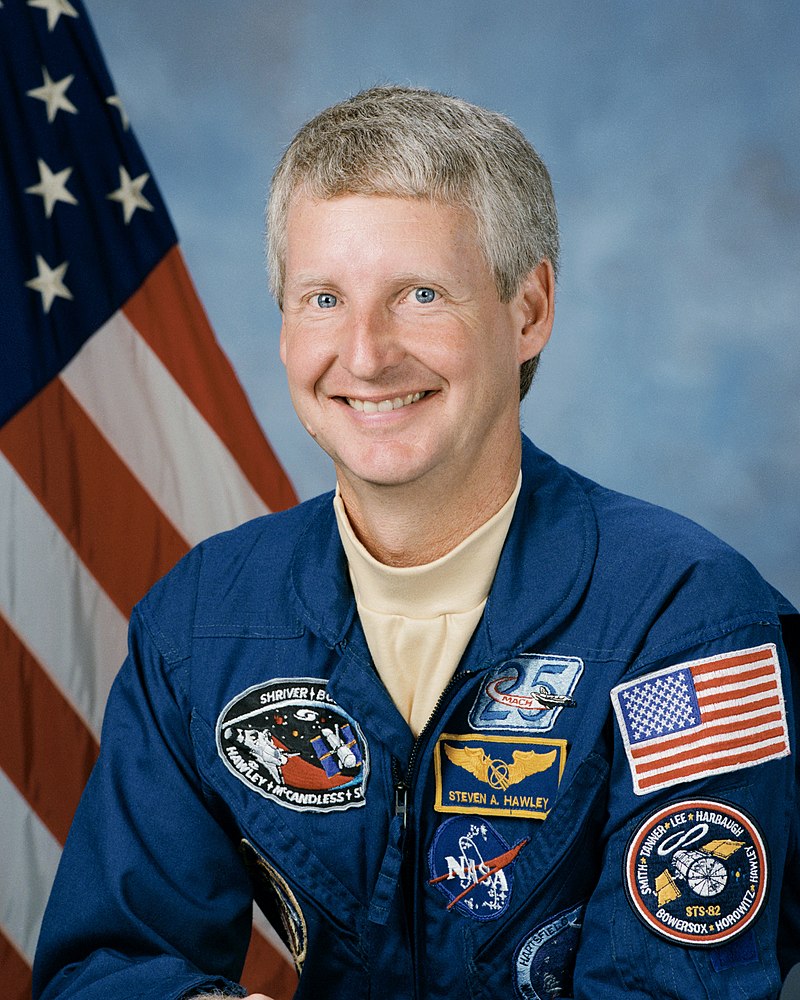
Steven Alan Hawley

Steven Alan Hawley
Steven Alan Hawley is a former NASA astronaut who flew on five U.S. Space Shuttle flights. Hawley was born on December 12, 1951, in Ottawa, Kansas.
Hawley logged a total of 770 hours and 27 minutes in five space flights. He served as a mission specialist on STS-41D in 1984, STS-61C in 1986, STS-31 in 1990, STS-82 in 1997 and STS-93 in 1999. The details of his space flights are given below.
STS-41-D Discovery (August 30 to September 5, 1984) was launched from the Kennedy Space Center, Florida, on its maiden flight and landed at Edwards Air Force Base, California. The mission was completed in 96 orbits of the Earth in 144 hours and 57 minutes.
STS-61-C Columbia (January 12–18, 1986) was launched from the Kennedy Space Center, Florida, and returned to a night landing at Edwards Air Force Base, California. During the six-day flight, the crew deployed the SATCOM K1 satellite and conducted experiments in astrophysics and materials processing. Mission duration was 146 hours and 03 minutes.
STS-31 Discovery ( April 24–29, 1990) was launched from the Kennedy Space Center in Florida, and also returned to land at Edwards Air Force Base, California. During the five-day mission, the crew deployed the Hubble Space Telescope, and conducted a variety of middeck experiments. The mission was completed in 76 orbits of the earth in 121 hours.
STS-82 Discovery (February 11–21, 1997), the second Hubble Space Telescope (HST) maintenance mission, was launched at night and returned to a night landing at Kennedy Space Center, Florida. HST was then redeployed and boosted to a higher orbit. The flight was completed in 149 orbits covering 3.8 million miles in 9 days, 23 hours, 37 minutes.
STS-93 Columbia (July 22–27, 1999) was launched at night from the Kennedy Space Center on a five-day mission returning to KSC for the 12th night landing in the Shuttle Program's history. Hawley served as Columbia's flight engineer. The mission completed 79 orbits in 4 days, 22 hours, and 50 minutes.
248
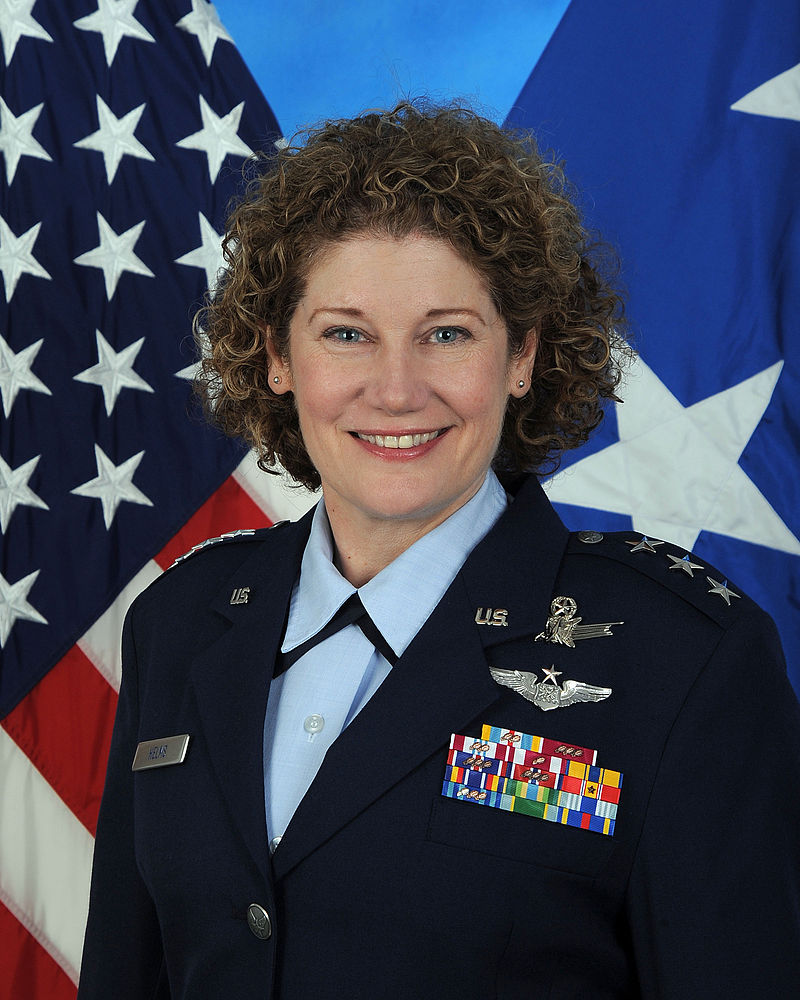
Susan Jane Helms

Susan Jane Helms
Susan Jane Helms (born February 26, 1958) is a retired NASA astronaut. Helms was a crew member on five Space Shuttle missions and was a resident of the International Space Station (ISS) for over five months in 2001.
Selected by NASA in January 1990, Helms became an astronaut in July 1991. She flew on STS-54 (1993), STS-64 (1994), STS-78 (1996), STS-101 (2000) and served aboard the International Space Station as a member of the ISS Expedition 2 crew (2001). A veteran of five space flights, Helms logged 5,064 hours in space, including an EVA of 8 hours and 56 minutes (world record).
STS-54 Endeavour, January 13–19, 1993. The primary objective of this mission was the deployment of a $200-million NASA Tracking and Data Relay Satellite (TDRS-F). A highly successful extra-vehicular activity (EVA) resulted in many lessons learned that will benefit International Space Station assembly. Mission duration was 5 days, 23 hours, 38 minutes, 17 seconds.
STS-64 Discovery, September 9–20, 1994. On this flight, Helms served as the flight engineer for orbiter operations and the primary RMS operator aboard Space Shuttle. Mission duration was 10 days, 22 hours, 51 minutes.
STS-78 Columbia, June 20 to July 7, 1996, Helms was the payload commander and flight engineer aboard Columbia. The mission included studies sponsored by ten nations and five space agencies, and was the first mission to combine both a full microgravity studies agenda and a comprehensive life science investigation. Mission duration was 16 days, 21 hours, 48 minutes.
STS-101 Atlantis, May 19–29, 2000, was a mission dedicated to the delivery and repair of critical hardware for the International Space Station. Mission duration was 9 days, 20 hours and 9 minutes.
Expedition 2 March 8 to August 22, 2001, was a mission to the International Space Station and Helms was a member of the second crew to inhabit the International Space Station Alpha. The Expedition 2 crew (two American astronauts and one Russian cosmonaut) launched on March 8, 2001, on board STS-102 Discovery and successfully docked with the station on March 9, 2001. On March 11 she performed a world-record 8 hour and 56 minute spacewalk to install hardware to the external body of the laboratory module. Helms spent a total of 163 days aboard the space station. She returned to Earth with the STS-105 crew aboard Discovery on August 22, 2001.
249
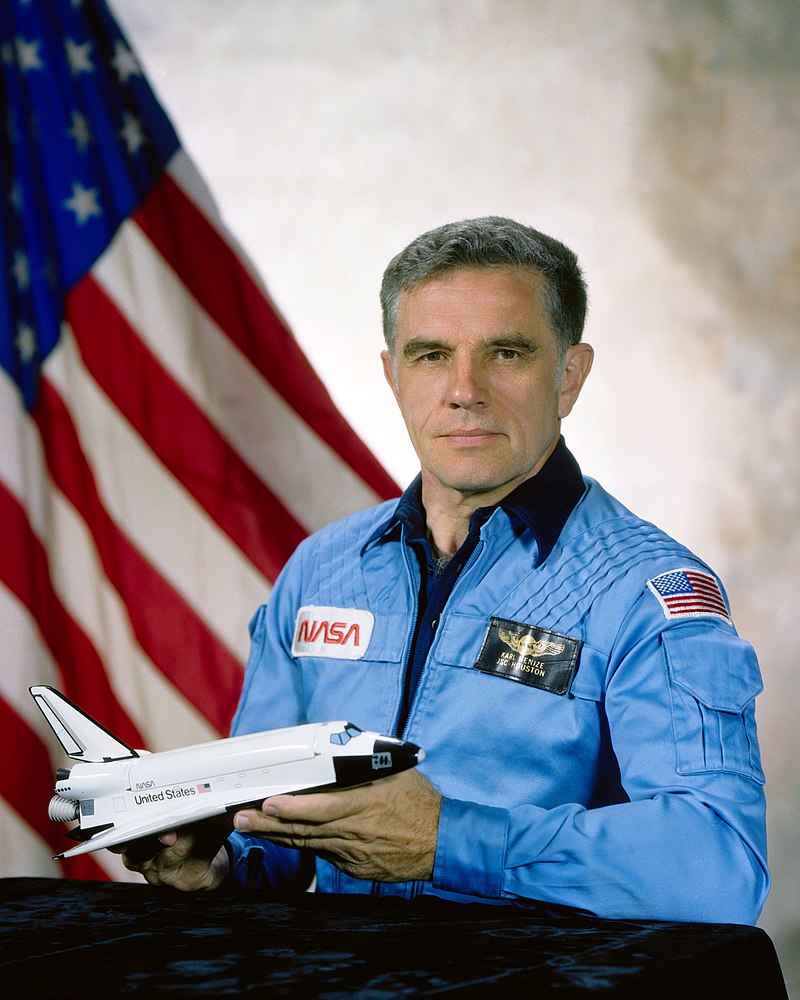
Karl Gordon Henize

Karl Gordon Henize
Karl Gordon Henize (October 17, 1926 – October 5, 1993) was an American astronomer, space scientist, NASA astronaut, and professor at Northwestern University. As a mission specialist on the Spacelab-2 mission (STS-51-F), he flew on Space Shuttle Challenger in July/August 1985.
Henize was a mission specialist on the Spacelab-2 mission (STS-51-F) which launched from Kennedy Space Center, Florida, on July 29, 1985. Henize's responsibilities included testing and operating the IPS, operating the Remote Manipulator System (RMS), maintaining the Spacelab systems, and operating several of the experiments.
After 126 orbits of the Earth, STS 51-F Challenger landed at Edwards Air Force Base, California, on August 6, 1985. With the completion of this flight Henize logged 190 hours in space.
250
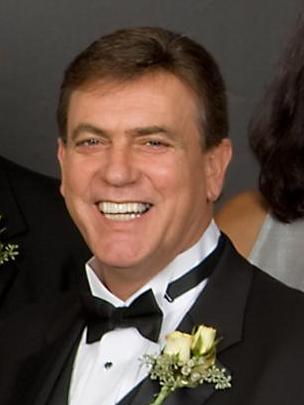
Thomas John Hennen

Thomas John Hennen
Thomas John Hennen (born August 17, 1952) is a NASA payload specialist astronaut who flew aboard Space Shuttle mission STS-44.
During August 1989 he was selected as the primary Payload Specialist for the Terra Scout experiment manifested on STS-44 and he reported to NASA in 1990 to begin NASA Payload Specialist and Space Shuttle Crew Training.
Hennen became the first warrant officer in space, flying aboard the Space Shuttle Atlantis (STS-44), which launched from Kennedy Space Center Pad 39A at 6:44 PM (EST), November 24, 1991. He orbited the Earth 109 times, traveling 2.9 million miles (4.7 million km), before landing at Edwards Air Force Base, California on December 1, 1991.251
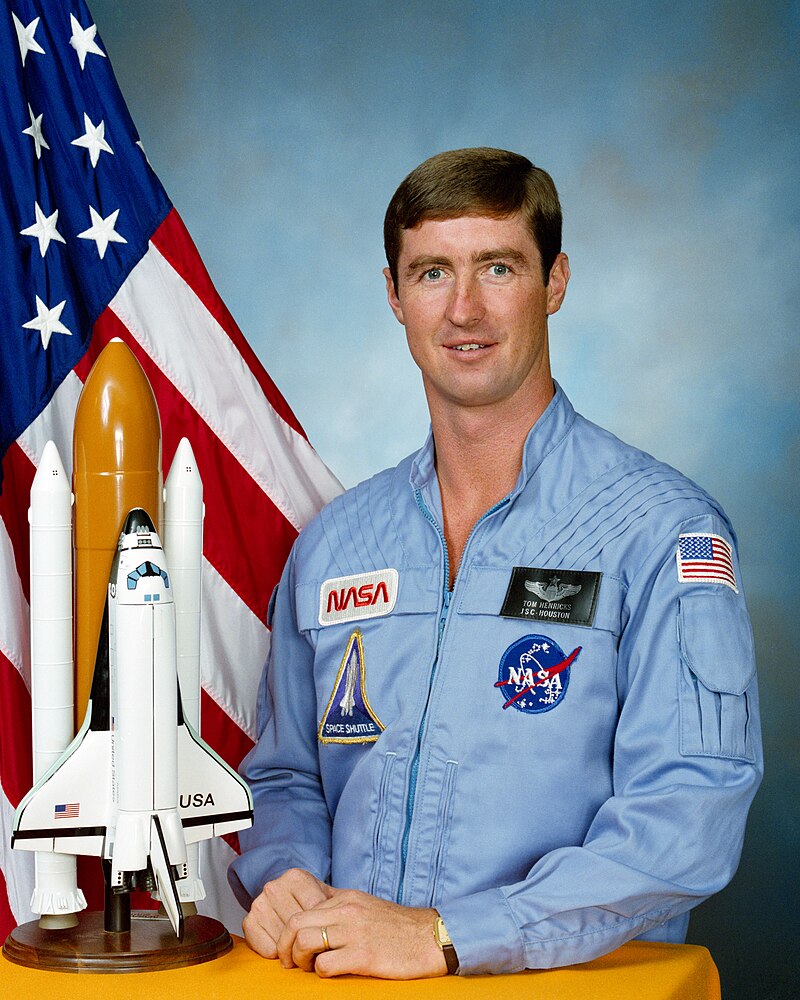
Terence Thomas Henricks

Terence Thomas Henricks
Terence Thomas "Tom" Henricks is a former NASA astronaut. He served on four Space Shuttle missions as listed. Henricks was born on July 5, 1952, in Bryan, Ohio.
STS-44 Atlantis launched the night of November 24, 1991. The primary mission objective was the deployment of a Defense Support Program (DSP) satellite. The mission was concluded after 110 orbits of the Earth returning to a landing on the lakebed at Edwards Air Force Base, California, on December 1, 1991.
STS-55, the German D-2 Spacelab mission, was launched on April 26, 1993, aboard Columbia, and landed 10 days later on May 6, 1993, at Edwards AFB California.
STS-70 launched from the Kennedy Space Center, Florida, on July 13, 1995, and returned there July 22, 1995. During 142 orbits of the Earth, the crew performed a variety of experiments in addition to deploying the sixth and final NASA Tracking and Data Relay Satellite.
STS-78 launched June 20, 1996 and landed July 7, 1996, becoming the longest Space Shuttle mission to date (later that year the STS-80 mission broke its record by 19 hours.) The 16-day mission included studies sponsored by 10 nations and five space agencies, and was the first mission to combine both a full microgravity studies agenda and a comprehensive life science investigation. The Life and Microgravity Spacelab mission served as a model for future studies on board the International Space Station.
252
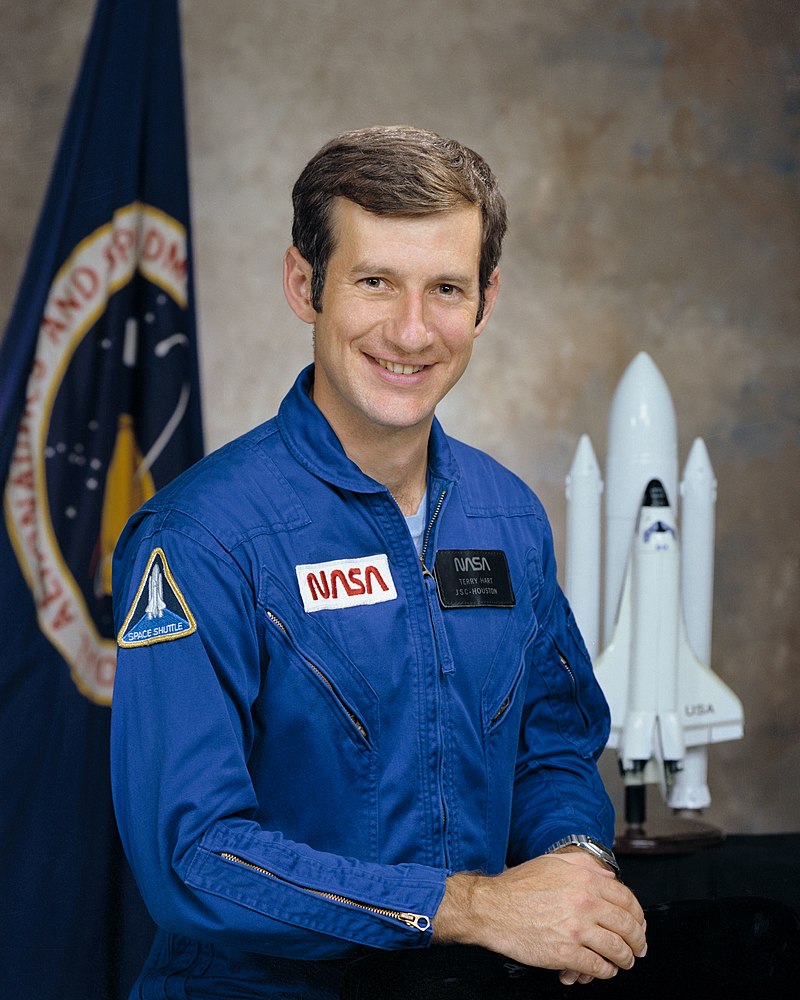
Terry Jonathan Hart

Terry Jonathan Hart
Terry Jonathan "T.J." Hart (born October 27, 1946) is former NASA astronaut. Hart served as a mission specialist on the STS-41-C mission, where tasks included operation of the shuttle Remote Manipulator System (RMS) arm. He flew as a mission specialist on STS-41-C (April 6–13, 1984) and has logged a total of 168 hours in space.
STS-41-C Challenger was launched from Kennedy Space Center in Merritt Island, Florida, on April 6, 1984. During this mission, the crew successfully deployed the Long Duration Exposure Facility (LDEF); retrieved the ailing Solar Maximum Satellite, repaired it on board Challenger, and replaced it in orbit using the robot arm called the Remote Manipulator System (RMS). Mission duration was 7 days before landing at Edwards Air Force Base in Edwards, California, on April 13, 1984.
253
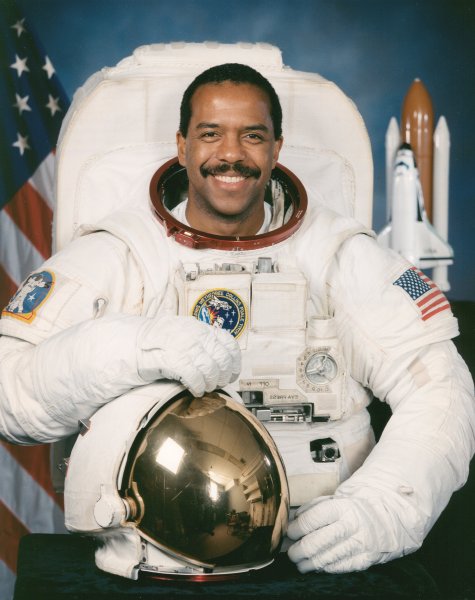
Bernard Anthony Harris Jr.

Bernard Anthony Harris Jr.
Bernard Anthony Harris Jr. (born June 26, 1956) is a former NASA astronaut. On February 9, 1995, Harris became the first African American to perform an extra-vehicular activity (spacewalk), during the second of his two Space Shuttle flights.
Harris was assigned as a mission specialist on STS-55, Spacelab D-2, in August 1991. He flew on board Columbia for ten days, (26 April 1993 – 6 May 1993); on the mission the Shuttle reached one year of accumulated flight time. Harris was part of the payload crew of Spacelab D-2, conducting a variety of research in physical and life sciences. During this flight, Harris logged over 239 hours and 4,164,183 miles in space.
His second mission was as the payload commander on STS-63 ( February 2, 1995 – February 11, 1995), the first flight of the new joint Russian-American Space Program. Mission highlights included the first rendezvous (but not docking) with the Russian space station Mir and retrieval of Spartan 204 satellite. On this mission, Harris logged 198 hours, 29 minutes in space, completed 129 orbits, and traveled over 2.9 million miles
254
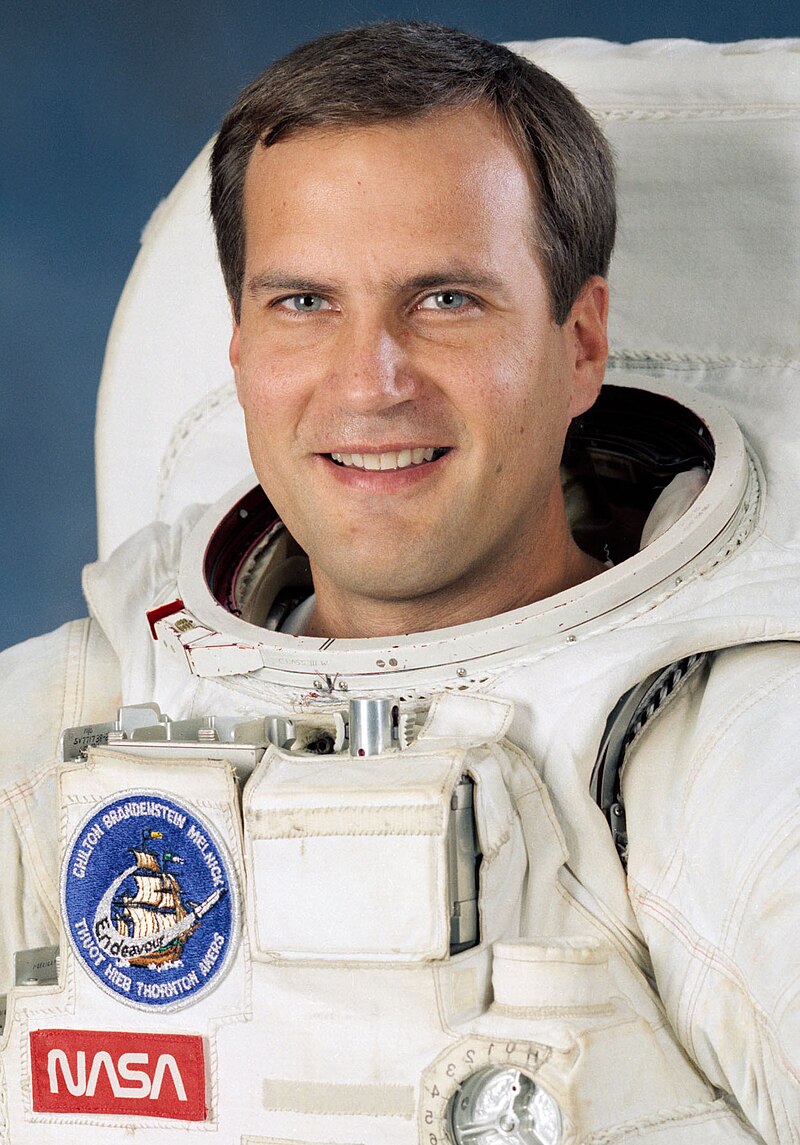
Richard James Hieb

Richard James Hieb
Richard James Hieb (born September 21, 1955 in Jamestown, North Dakota) is a former NASA astronaut and a veteran of three Space Shuttle missions. He was a mission specialist on STS-39 and STS-49, and was a payload commander on STS-65.
A veteran of three space flights, Hieb flew on STS-39 in 1991, STS-49 in 1992, and STS-65 in 1994. He logged over 750 hours in space, including over 17 hours of EVA (spacewalk), traveling over 13 million miles.
Hieb first flew on the crew of STS-39, an unclassified Department of Defense mission which launched on April 28, 1991, from the Kennedy Space Center in Florida. After 134 orbits of the Earth which covered 3.5 million miles (5,600,000 km) and lasted just over 199 hours, the crew landed at California, on May 6, 1991.
Hieb was also a mission specialist on the crew of STS-49, the maiden voyage of the new Space Shuttle Endeavour, which launched from the Kennedy Space Center on May 7, 1992. During that mission, Hieb along with astronaut Pierre Thuot, performed three spacewalks which resulted in the capture and repair of the stranded Intelsat VI F3 communications satellite. The third spacewalk, which also included astronaut Tom Akers, was the first ever (and to date only) three-person spacewalk. This 8 hour and 29 minute spacewalk, the longest in history, broke a twenty-year-old record that was held by Apollo 17 astronauts. The STS-49 record endured for 9 years. The mission concluded on May 16, 1992 with a landing at Edwards Air Force Base after orbiting the Earth 141 times in 213 hours and traveling 3.7 million miles (5.9 million kilometres).
Hieb was the payload commander on the second flight of the International Microgravity Laboratory on Space Shuttle Mission STS-65. The mission launched from Kennedy Space Center in Florida on July 8, 1994, and returned there on July 23, 1994, setting a new flight duration record for the Space Shuttle program. During the 15-day flight, mission was accomplished in 236 orbits of the Earth, traveling 6.1 million miles (9.8 million kilometres).
255
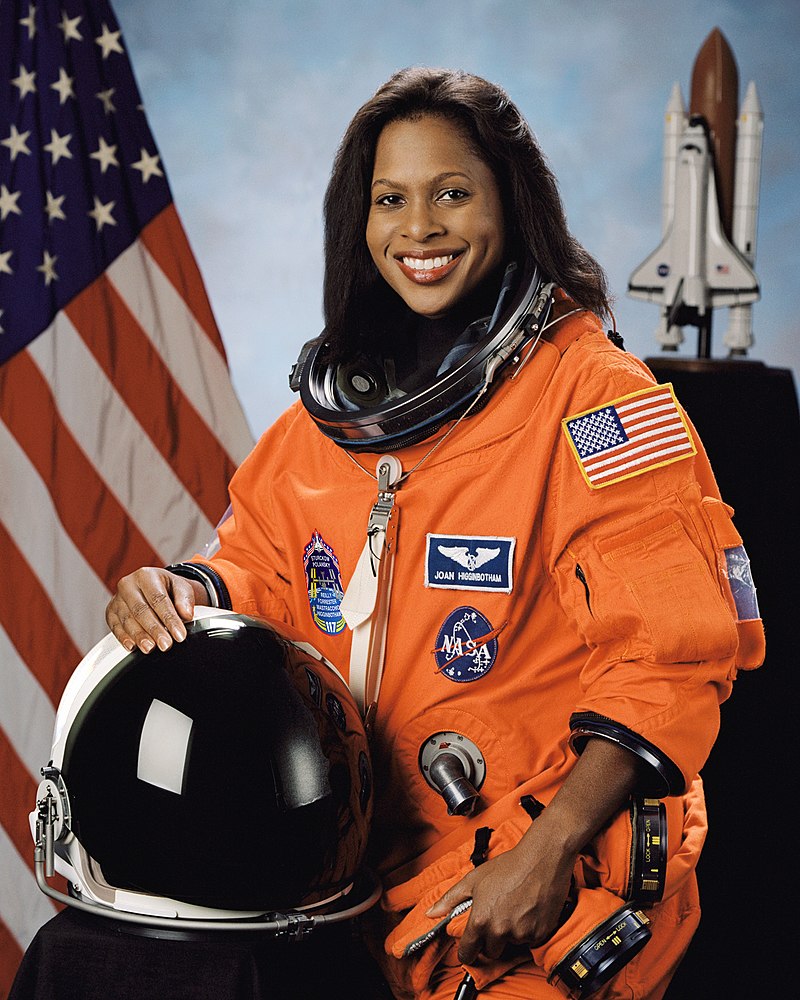
Joan Elizabeth Higginbotham

Joan Elizabeth Higginbotham
Joan Elizabeth Higginbotham (born August 3, 1964) is an electrical engineer and a former NASA astronaut. She flew aboard Space Shuttle Discovery mission STS-116 as a mission specialist and is the third African American woman to go into space. Higginbotham was born in Chicago, Illinois.
Higginbotham logged over 308 hours in space during her mission with the crew of STS-116 where her primary task was to operate the Space Station Remote Manipulator System (SSRMS).
Higginbotham was originally assigned to the crew of STS-126 targeted for launch in September 2008. On November 21, 2007, NASA announced a change in the crew manifest, due to Higginbotham's decision to leave NASA to take a job in the private sector. Donald Pettit replaced Higginbotham for STS-126.
256
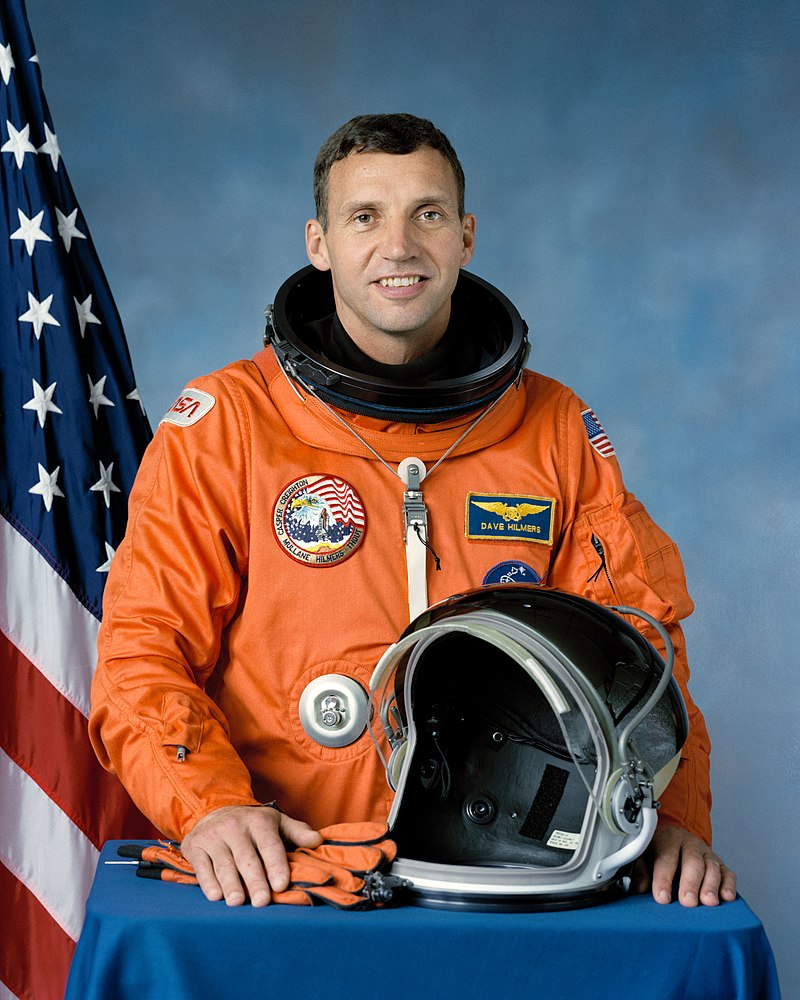
David Carl Hilmers

David Carl Hilmers
David Carl Hilmers (born January 28, 1950) is a former NASA astronaut who flew four Space Shuttle missions. He was born in Clinton, Iowa, but considers DeWitt, Iowa, to be his hometown.
A veteran of four space flights, he has logged over 493 hours in space. He served as a mission specialist on STS-51-J (October 3–7, 1985), STS-26 (September 29 to October 3, 1988), STS-36 (February 28 to March 4, 1990), and STS-42 (January 22–30, 1992).
STS-51-J Atlantis, a classified Department of Defense mission, launched from Kennedy Space Center, Florida, on October 3, 1985. This was the maiden voyage of the Orbiter Atlantis. Hilmers had prime responsibility for a number of on-orbit activities during the mission. After 98 hours of orbital operations, Atlantis landed at Edwards Air Force Base, California, on October 7, 1985.
STS-26 Discovery, was launched from the Kennedy Space Center, Florida, on September 29, 1988. During the four-day mission, the crew successfully deployed the Tracking and Data Relay Satellite (TDRS-C). Discovery completed 64 orbits of the Earth before landing at Edwards Air Force Base, California, on October 3, 1988.
STS-36 Atlantis launched from the Kennedy Space Center, Florida, on February 28, 1990. After 72 orbits of the Earth, the STS-36 mission concluded with a lakebed landing at Edwards Air Force Base, California, on March 4, 1990, after traveling 1.87 million miles.
STS-42 Discovery launched from the Kennedy Space Center, Florida, on January 22, 1992. Fifty-five major experiments conducted in the International Microgravity Laboratory-1 module were provided by investigators from eleven countries, and represented a broad spectrum of scientific disciplines. During 128 orbits of the Earth, the STS-42 crew accomplished the mission's primary objective of investigating the effects of microgravity on materials processing and life sciences. This eight-day mission culminated in a landing at Edwards Air Force Base, California, on January 30, 1992.
257
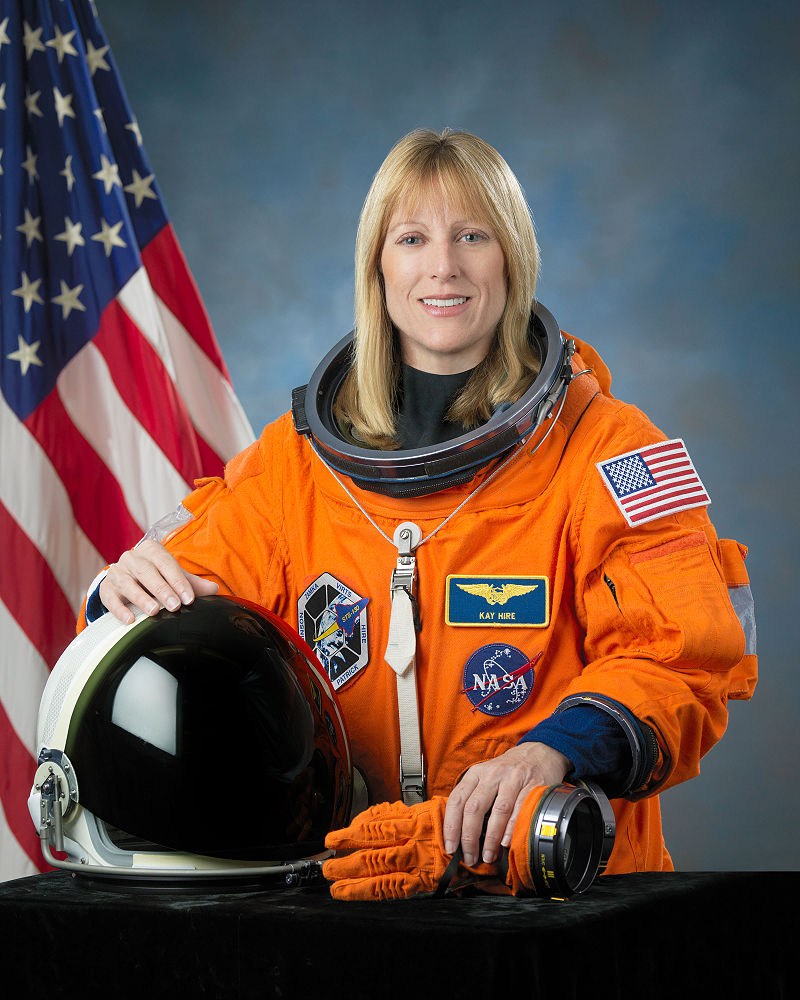
Kathryn Patricia Hire

Kathryn Patricia Hire
Kathryn Patricia "Kay" Hire (born August 26, 1959) is a former NASA astronaut and Captain in the U.S. Navy Reserve who has flown aboard two Space Shuttle missions.
STS-90 Neurolab (April 17 – May 3, 1998). During the 16-day Spacelab flight, the seven-member crew aboard Space Shuttle Columbia served as both experimental subjects and operators for 26 life science experiments focusing on the effects of microgravity on the brain and nervous system. The STS-90 flight orbited the Earth 256 times and covered 6.3 million miles.
STS-130 (February 8, 2010 – February 21, 2010) She also journeyed to the International Space Station as a mission specialist for Space Shuttle mission STS-130.
258
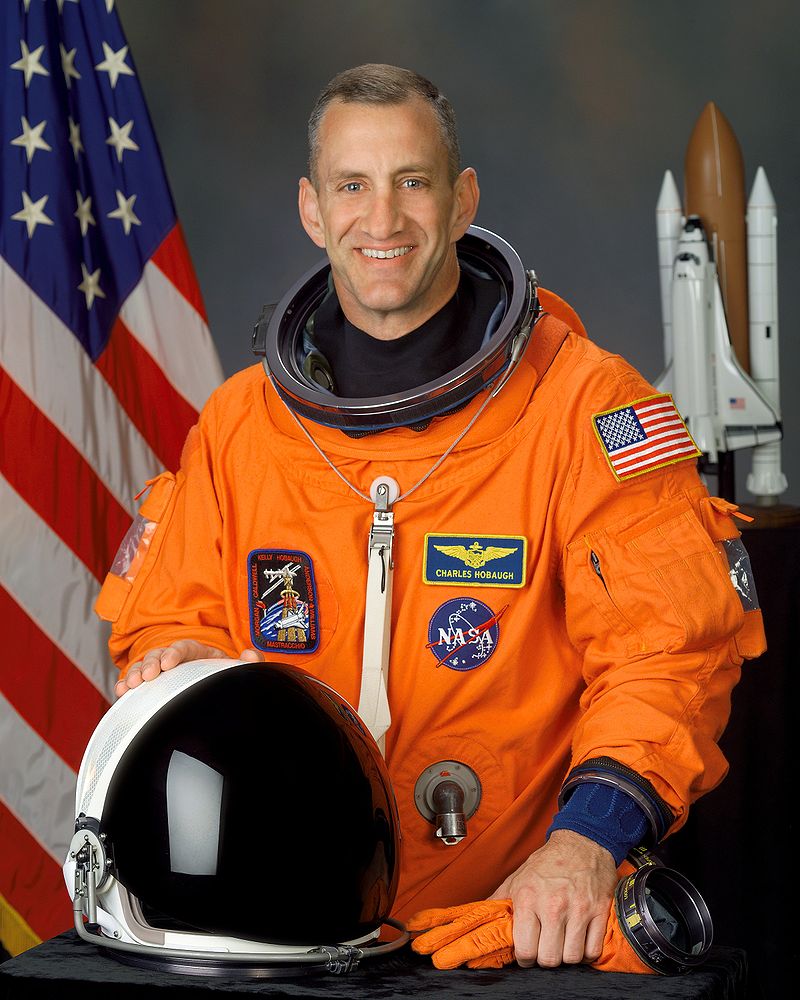
Charles Owen Hobaugh

Charles Owen Hobaugh
Charles Owen Hobaugh (born November 5, 1961, in Bar Harbor, Maine) is a former NASA astronaut and a retired U.S. Marine Corps officer. He has had three spaceflights, all of which were Space Shuttle missions to the International Space Station, lasting between 10 and 13 days.
Hobaugh flew as the pilot of STS-104 (July 12–24, 2001). This mission was the tenth mission to the International Space Station (ISS). During the 13-day flight the crew conducted joint operations with the Expedition 2 crew and performed three spacewalks to install the Quest Joint Airlock and to outfit it with four high-pressure gas tanks. The mission was accomplished in 200 Earth orbits, traveling 5.3 million miles in 306 hours and 35 minutes.
He flew as pilot on STS-118 in August 2007 for 13 days and Hobaugh served as commander on the STS-129 mission aboard Space Shuttle Atlantis for 10 days in November 2009.
259
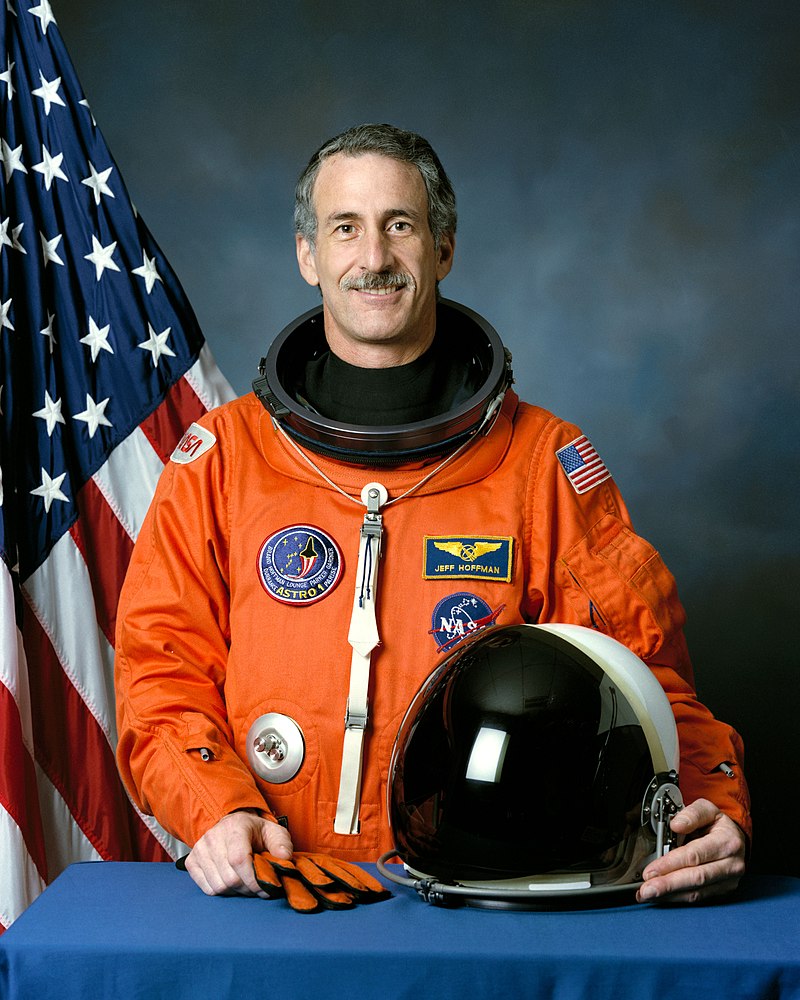
Jeffrey Alan Hoffman

Jeffrey Alan Hoffman
Jeffrey Alan Hoffman (born November 2, 1944) is an American former NASA astronaut.
Hoffman made five flights as a Space Shuttle astronaut, including the first mission to repair the Hubble Space Telescope in 1993, when the orbiting telescope's flawed optical system was corrected. Trained as an astrophysicist, he also flew on the 1990 Spacelab Shuttle mission that featured the Astro-1 ultraviolet astronomical observatory in the Shuttle's payload bay. Over the course of his five missions he logged more than 1,211 hours and 21.5 million miles in space.
Hoffman made his first space flight as a mission specialist on STS 51-D, April 12–19, 1985, on the Space Shuttle Discovery. On this mission, he made the first STS contingency spacewalk, in an attempted rescue of a malfunctioning satellite.
Hoffman made his second space flight as a mission specialist on STS-35, December 2–10, 1990, on the Space Shuttle Columbia. This Spacelab mission featured the ASTRO-1 ultraviolet astronomy laboratory, a project on which Hoffman had worked since 1982.
Hoffman made his third space flight as payload commander and mission specialist on STS-46, July 31 – August 8, 1992, on the Space Shuttle Atlantis.
Hoffman made his fourth flight as an EVA crewmember on STS-61, December 2–13, 1993, on the Space Shuttle Endeavour. During this flight, the Hubble Space Telescope (HST) was captured, serviced, and restored to full capacity through a record five spacewalks by four astronauts, including Hoffman.
Hoffman last flew on STS-75 (February 22 – March 9, 1996) on the Space Shuttle Columbia. This was a 16-day mission whose principal payloads were the reflight of the Tethered Satellite System (TSS) and the third flight of the United States Microgravity Payload (USMP-3). With the completion of his fifth space flight, Dr. Hoffman has logged more than 1,211 hours and 21.5 million miles in space.
260
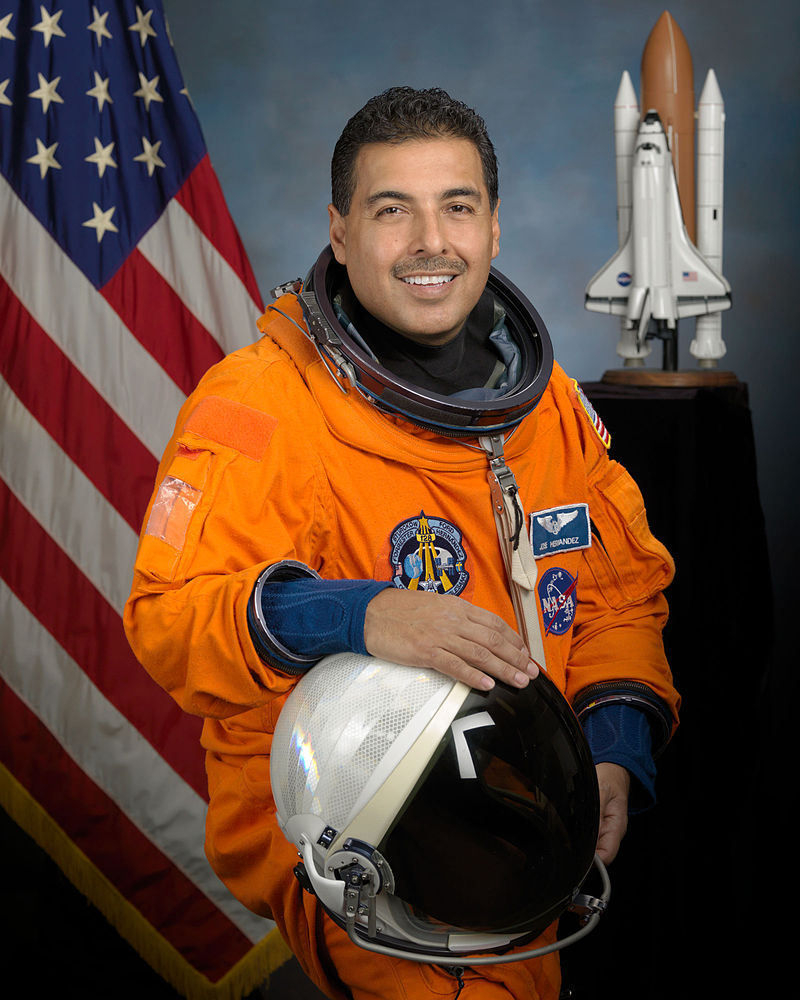
Jose Moreno Hernandez

Jose Moreno Hernandez
José Moreno Hernández (born August 7, 1962) is an American engineer and former NASA astronaut.
Hernández worked various technical assignments until his selection on July 15, 2008, as a mission specialist on the STS-128 mission, which launched on August 28, 2009. While in orbit, Hernández became the first person to use the Spanish language in space while tweeting.
The STS-128 mission ended its 14-day journey on September 11, 2009, at Edwards Air Force Base, California, at 5:53 pm PST.
261
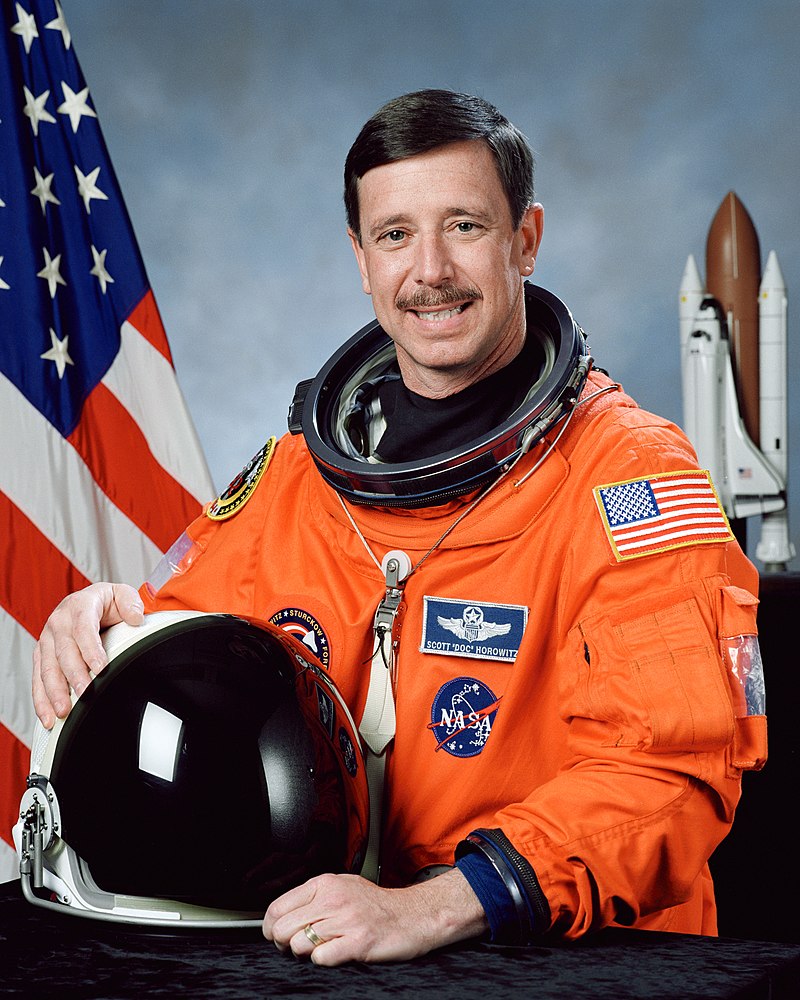
Scott Jay Horowitz

Scott Jay Horowitz
Scott Jay Horowitz (born March 24, 1957) is a retired American astronaut and a veteran of four Space Shuttle missions.
Horowitz was selected as an astronaut candidate by NASA in 1992, and piloted missions STS-75 (1996), STS-82 (1997) and STS-101 (2000). He commanded mission STS-105 (2001), a visit to the International Space Station for equipment and crew transfer.
262
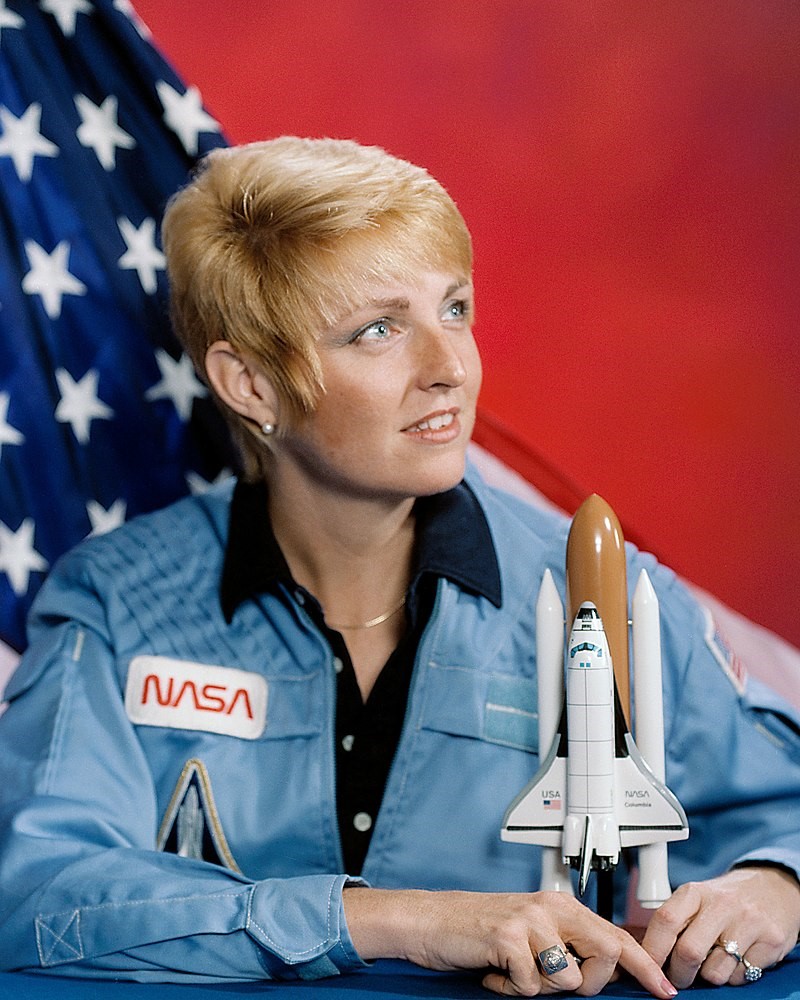
Millie Elizabeth Hughes-Fulford

Millie Elizabeth Hughes-Fulford
Millie Elizabeth Hughes-Fulford (December 21, 1945 – February 2, 2021) was an American medical investigator, molecular biologist, and NASA payload specialist who flew aboard the NASA Space Shuttle Columbia in June 1991.
Selected into a payload specialist by NASA in January 1983, Hughes-Fulford flew in June 1991 aboard STS-40 Spacelab Life Sciences (SLS 1), the first Spacelab mission dedicated to biomedical studies. SLS-1 was also the first mission to have a crew with three female members, and Hughes-Fulford was both NASA's first female payload specialist in orbit and the first representative of the United States Department of Veterans Affairs in space. The mission flew over 3.2 million miles in 146 orbits and its crew completed over 18 experiments during a nine-day period, bringing back more medical data than any previous NASA flight. Mission duration was 218 hours, 14 minutes and 21 seconds, or 9 days, 2 hours, 14 minutes, and 20 seconds.
263
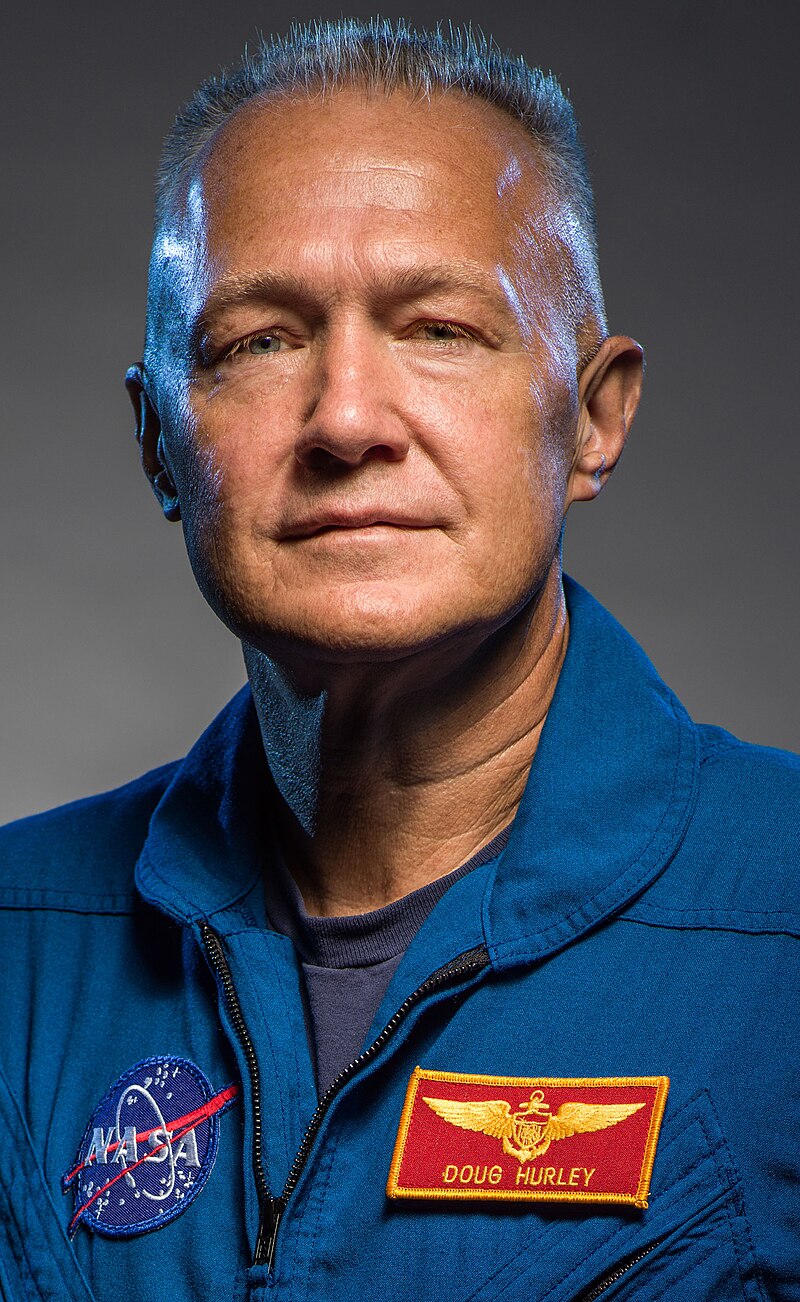
Douglas Gerald Hurley

Douglas Gerald Hurley
Douglas Gerald Hurley (born October 21, 1966) is an American engineer, former Marine Corps pilot and former NASA astronaut. He piloted Space Shuttle missions STS-127 (July 2009) and STS-135 (July 2011), the final flight of the Space Shuttle program. He was launched into space for the third time as commander of Crew Dragon Demo-2, the first crewed spaceflight from American soil since STS-135 and became, together with Bob Behnken, the first astronaut in history launching aboard a commercial orbital spacecraft.
In July 2009, he was the pilot on STS-127, ISS Assembly Mission 2J/A, which delivered the Japanese-built Exposed Facility (JEM-EF) and the Experiment Logistics Module Exposed Section (ELM-ES) to the International Space Station. The mission duration was 15 days, 16 hours, 45 minutes.
In July 2011, Hurley returned to space on the final shuttle flight, STS-135 on the Space Shuttle Atlantis. The mission delivered the Multi-Purpose Logistics Module (MPLM) Raffaello and a Lightweight Multi-Purpose Carrier (LMC) to the International Space Station and tested a system which investigated the potential of robotically refueling existing spacecraft. STS-135 mission duration was 12 days, 18 hours, 27 minutes and 56 seconds.
SpaceX-DM2
In July 2015, NASA announced Hurley as one of the first astronauts for U.S. commercial spaceflights. Subsequently, he started working with Boeing and SpaceX to train in their commercial crew vehicles, along with the other chosen astronauts Sunita Williams, Robert Behnken and Eric Boe. In August 2018, Hurley was assigned to SpaceX-DM2, the first test flight of the SpaceX Crew Dragon. Following the in-flight abort test of Crew Dragon, Hurley was confirmed to be the flight's commander. Hurley and fellow crewmember Bob Behnken were humorously compared in news and social media to the fictional brothers Bob and Doug McKenzie because of their friendship when they participated in the first commercial astronaut launch on SpaceX Crew Dragon Demo-2. Crew Dragon successfully launched on May 30, 2020, and successfully docked with the International Space Station on May 31, 2020. The crew joined the ISS Expedition 63 crew, which consisted of NASA astronaut and ISS commander Chris Cassidy and Russian cosmonauts Ivan Vagner and Anatoli Ivanishin. Crew Dragon undocked from the International Space Station on August 1, 2020, and successfully returned to Earth on August 2, 2020, after splashing down in the Gulf of Mexico off the coast of Pensacola, Florida.
264
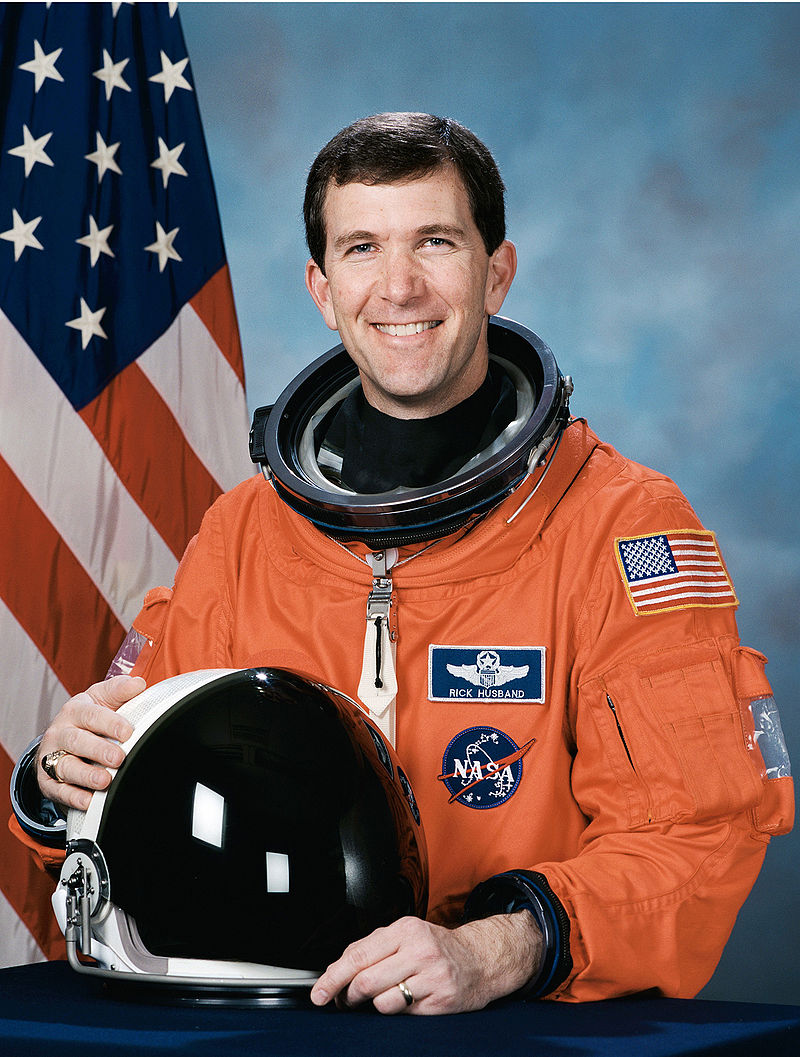
Richard Douglas Husband

Richard Douglas Husband
Richard Douglas "Rick" Husband (July 12, 1957 – February 1, 2003) was an American astronaut. He traveled into space twice: as pilot of STS-96 and commander of STS-107. Husband and the rest of the crew of STS-107 were killed when Columbia disintegrated during reentry into the Earth's atmosphere.
He flew as pilot on STS-96 in 1999, and logged 235 hours and 13 minutes in space. Husband was later assigned to command the crew of STS-107, which was launched early in 2003. Along with the rest of the STS-107 crew, Husband was killed upon reentry when the shuttle exploded over Texas.
STS-96 (May 27 to June 6, 1999) aboard the Space Shuttle Discovery was a 10-day mission during which the crew performed the first docking with the International Space Station and delivered four tons of logistics and supplies in preparation for the arrival of the first crew to live on the station early the following year. The mission was accomplished in 153 Earth orbits, traveling 4 million miles in 9 days, 19 hours and 13 minutes.
STS-107 (January 16 to February 1, 2003) aboard the Space Shuttle Columbia was a 16-day mission during which the crew performed over 80 experiments testing applications of microgravity to gain insight into the environment of space and improve life on Earth as well as enable future space exploration. The mission ended on the morning of February 1 when the shuttle disintegrated upon reentry killing all crew members, including Husband.
265
रिà¤à¤°à¥à¤¡ डà¤à¤²à¤¸ "रिà¤"
Richard Douglas "Rick" Husband (July 12, 1957 – February 1, 2003) was an American astronaut. He traveled into space twice: as pilot of STS-96 and commander of STS-107. Husband and the rest of the crew of STS-107 were killed when Columbia disintegrated during reentry into the Earth's atmosphere.
He flew as pilot on STS-96 in 1999, and logged 235 hours and 13 minutes in space. Husband was later assigned to command the crew of STS-107, which was launched early in 2003. Along with the rest of the STS-107 crew, Husband was killed upon reentry when the shuttle exploded over Texas.
STS-96 (May 27 to June 6, 1999) aboard the Space Shuttle Discovery was a 10-day mission during which the crew performed the first docking with the International Space Station and delivered four tons of logistics and supplies in preparation for the arrival of the first crew to live on the station early the following year. The mission was accomplished in 153 Earth orbits, traveling 4 million miles in 9 days, 19 hours and 13 minutes.
STS-107 (January 16 to February 1, 2003) aboard the Space Shuttle Columbia was a 16-day mission during which the crew performed over 80 experiments testing applications of microgravity to gain insight into the environment of space and improve life on Earth as well as enable future space exploration. The mission ended on the morning of February 1 when the shuttle disintegrated upon reentry killing all crew members, including Husband.
265
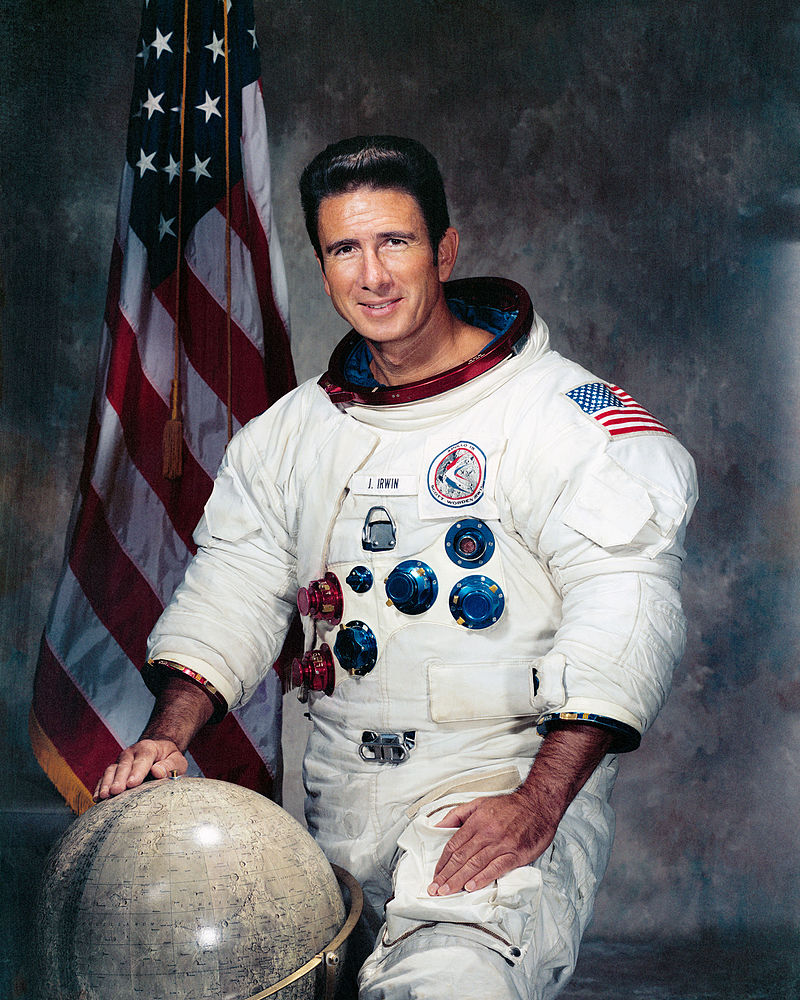
James Benson Irwin

James Benson Irwin
James Benson Irwin was born in Pittsburgh, Pennsylvania (March 17, 1930 – August 8, 1991). He was an American astronaut, aeronautical engineer, test pilot, and a United States Air Force pilot. He served as Lunar Module pilot for Apollo 15, the fourth human lunar landing. He was the 8th person to walk on the Moon and the first, and youngest, of those astronauts to die.
Between July 26 and August 7, 1971 – as the Apollo 15 lunar module pilot (LMP) – Irwin logged 295 hours and 11 minutes in space. His extravehicular activity (EVA) on the Moon's surface amounted to 18 hours and 35 minutes of the mission time. Irwin and David Scott's mission was more science-based than previous missions, which meant that they received intensive geological training to meet the demanding nature of the J-Mission profile. This extra training is credited with allowing them to make one of the most important discoveries of the Apollo era, the Genesis Rock.
Apollo 15 landed in the Moon's Hadley-Apennine region, noted for its mountains and rilles. As a J-Mission, they would spend more time on the Moon than previous missions, to allow for three EVAs. As well, Irwin was the first automobile passenger on the Moon as Scott drove the Lunar Roving Vehicle.
266
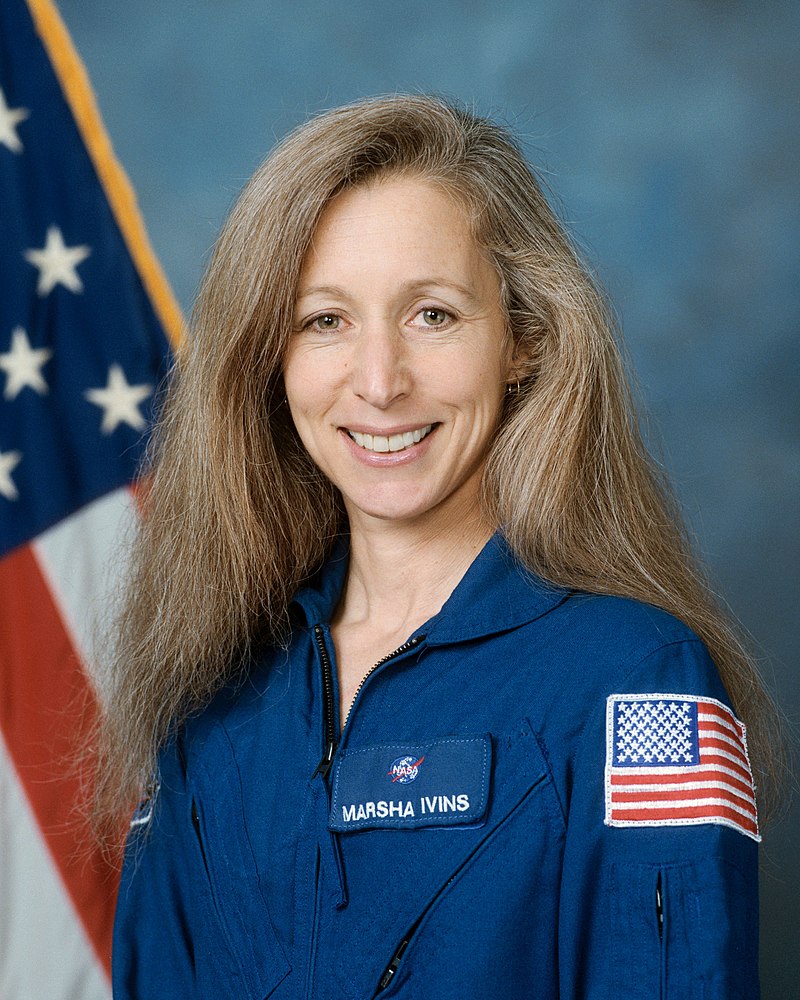
Marsha Sue Ivins

Marsha Sue Ivins
Marsha Sue Ivins (born April 15, 1951) is an American retired astronaut and a veteran of five Space Shuttle missions.
She has flown aboard five space missions: STS-32 (1990), STS-46 (1992), STS-62 (1994), STS-81 (1997), and STS-98 (2001). Ivins retired from NASA on December 31, 2010.
STS-32 (January 9–20, 1990) launched from the Kennedy Space Center, Florida, on an eleven-day flight, during which crew members on board the Space Shuttle Columbia successfully deployed a Syncom satellite, and retrieved the 21,400-pound Long Duration Exposure Facility (LDEF). Mission duration was 261 hours, 1 minute, and 38 seconds. Following 173 orbits of the Earth and 4.5 million miles, Columbia returned with a night landing at Edwards Air Force Base, California.
STS-46 (July 31 – August 8, 1992) was an 8-day mission, during which crew members deployed the EURECA (European Retrievable Carrier) satellite, and conducted the first Tethered Satellite System (TSS) test flight. Mission duration was 191 hours, 16 minutes, and 7 seconds. Space Shuttle Atlantis and her crew launched and landed at the Kennedy Space Center, Florida, completing 126 orbits of the Earth in 3.35 million miles.
STS-62 (March 4–18, 1994) was a 14-day mission for the United States Microgravity Payload (USMP) 2 and Office of Aeronautics and Space Technology (OAST) 2 payloads. Mission duration was 312 hours, 23 minutes, and 16 seconds. Space Shuttle Columbia launched and landed at the Kennedy Space Center, Florida, completing 224 orbits in 5.82 million miles.
STS-81 Atlantis (January 12–22, 1997) was a 10-day mission, the fifth to dock with Russia's Space Station Mir, and the second to exchange U.S. astronauts. The mission also carried the Spacehab double module providing additional middeck locker space for secondary experiments. Following 160 orbits of the Earth, the STS-81 mission concluded with a landing on Kennedy Space Center's Runway 33 ending a 3.9 million mile journey. Mission duration was 244 hours, 56 minutes.
STS-98 Atlantis (February 7–20, 2001) continued the task of building and enhancing the International Space Station by delivering the U.S. laboratory module Destiny. The Shuttle spent seven days docked to the station while Destiny was attached and three spacewalks were conducted to complete its assembly. Space Shuttle Atlantis returned to land at Edwards Air Force Base, California traveling 5.3 million miles in 203 orbits. Mission duration was 12 days, 21 hours, 20 minutes.
267
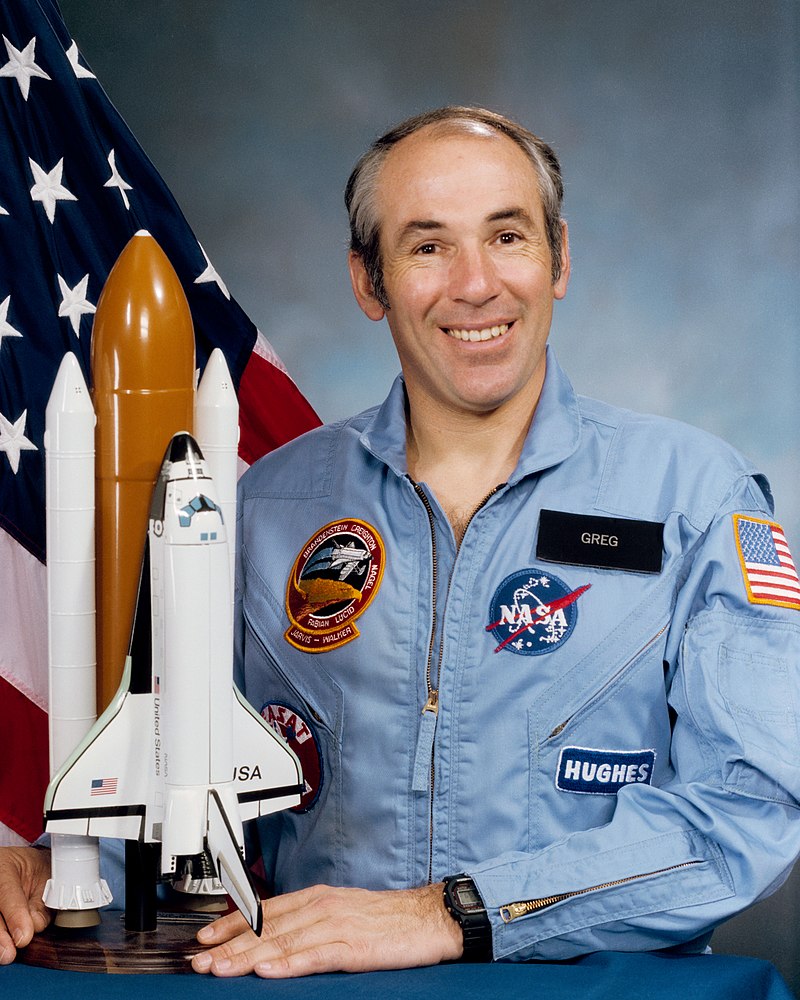
Gregory Bruce Jarvis

Gregory Bruce Jarvis
Gregory Bruce Jarvis (August 24, 1944 – January 28, 1986) was an American engineer and astronaut who died during the destruction of the Space Shuttle Challenger on mission STS-51-L.
Jarvis was payload specialist 2 on STS-51-L which was launched from the Kennedy Space Center, Florida, at 11:38:00 EST on January 28, 1986. The crew on board the Orbiter Challenger included Commander Dick Scobee, pilot Michael J. Smith (USN), mission specialists Dr. Ronald McNair, Lt. Col. Ellison Onizuka (USAF), Dr. Judith Resnik, and fellow civilian payload specialist Christa McAuliffe. The entire STS-51-L crew died when Challenger broke up during launch.
268
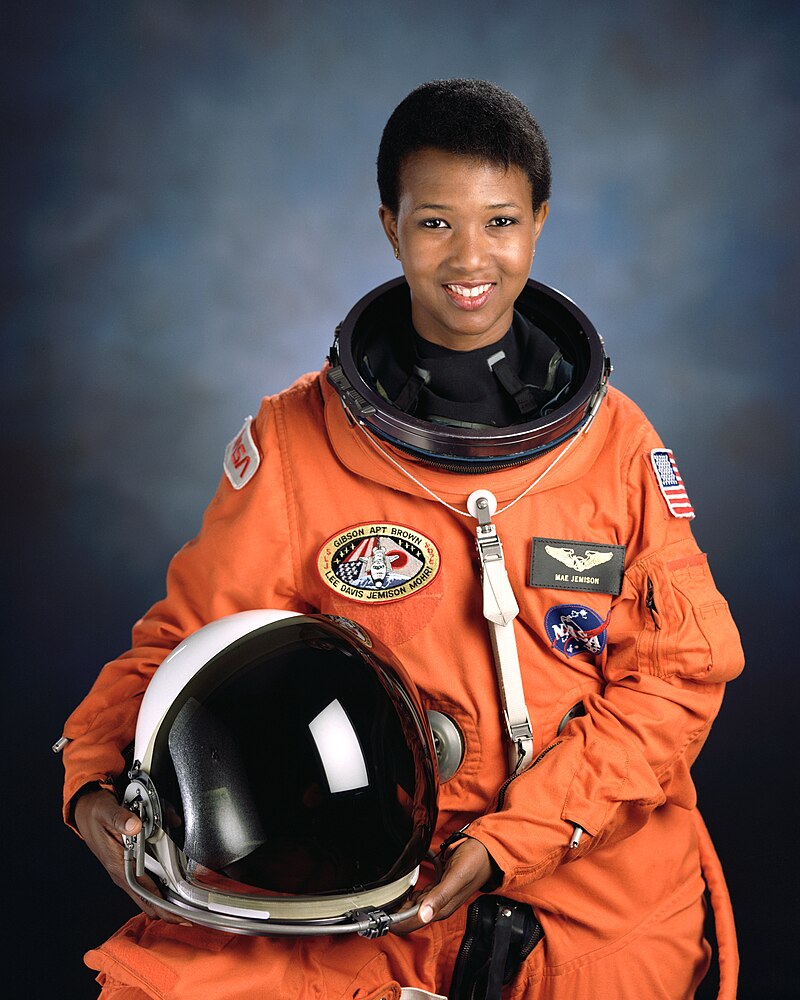
Mae Carol Jemison

Mae Carol Jemison
Mae Carol Jemison (born October 17, 1956) is an American engineer, physician, and former NASA astronaut. She became the first African-American woman to travel into space when she served as a mission specialist aboard the Space Shuttle Endeavour in 1992. Jemison joined NASA's astronaut corps in 1987 and was selected to serve for the STS-47 mission, during which the Endeavour orbited the Earth for nearly eight days on September 12–20, 1992.
Jemison flew her only space mission from September 12 to 20, 1992, as one of the seven-member crew aboard Space Shuttle Endeavour, on mission STS-47, a cooperative mission between the United States and Japan, as well as the 50th shuttle mission. Jemison logged 190 hours, 30 minutes, 23 seconds in space and orbited the earth 127 times.
269
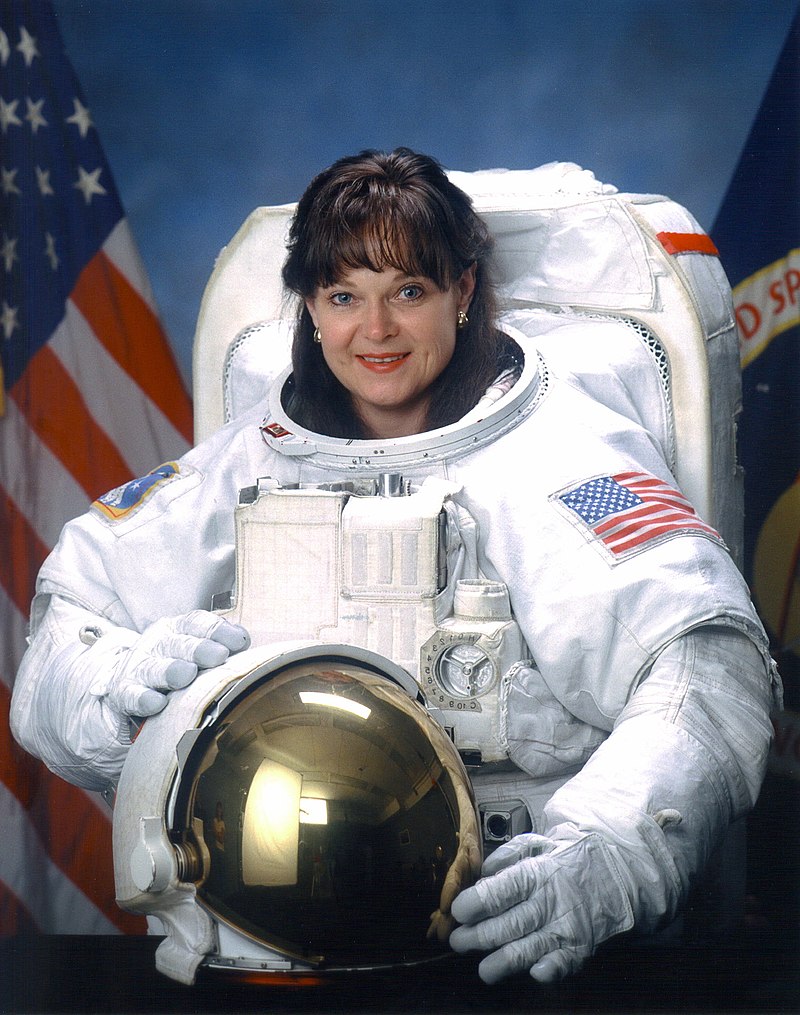
Tamara Elizabeth Jernigan

Tamara Elizabeth Jernigan
Tamara Elizabeth "Tammy" Jernigan (born May 7, 1959) is an American astrophysicist and former NASA astronaut. During her career she completed five Space Shuttle program missions (three on Columbia and one each on Endeavour and Discovery), logging over 1512 hours in space.
Her first trip to space was on June 5, 1991. She flew on five Space Shuttle program missions (three on Columbia and one each on Endeavour and Discovery) and logged over 1512 hours in space. In her last mission on Discovery in 1999, she performed an extra-vehicular activity for 7 hours and 55.5 minutes.
270
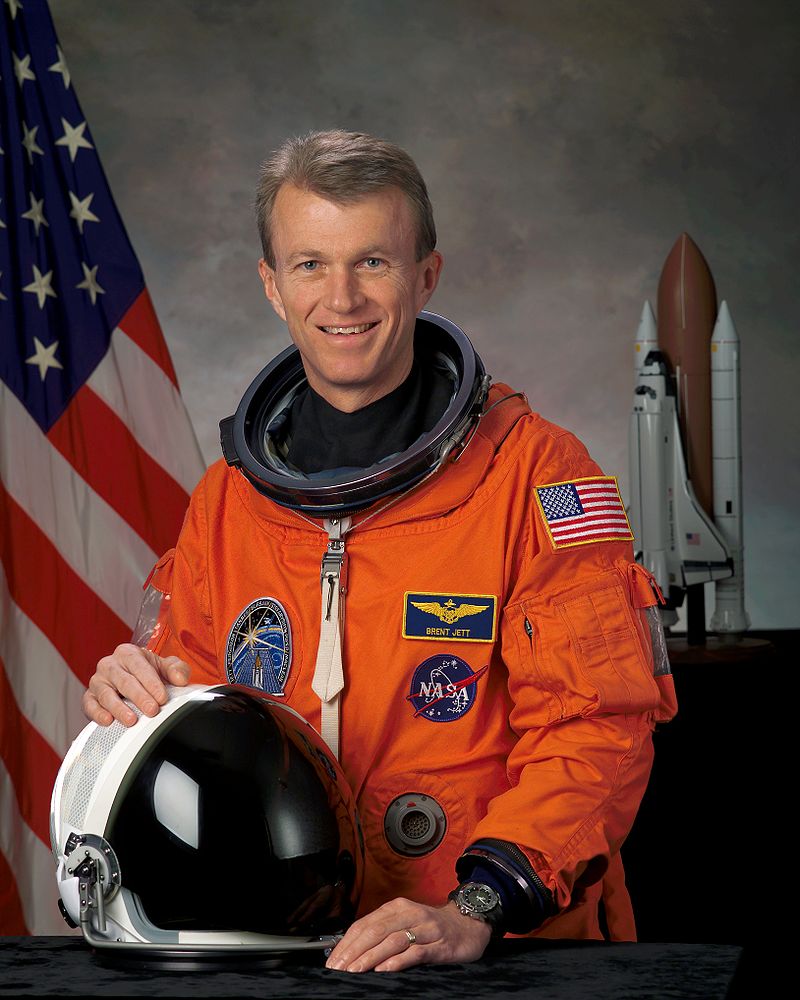
Brent Ward Jett Jr.

Brent Ward Jett Jr.
Brent Ward Jett Jr. (born October 5, 1958), (Capt, USN, Ret.), is a retired NASA astronaut.
Space Shuttle Endeavour(STS-72), piloted by Jett, launched from Kennedy Space Center Launch Complex 39B, January 11, 1996, 09:41 UTC. During the 9-day mission the crew retrieved the Japanese Space Flyer Unit launched by NASDA March 18, 1995. The crew additionally performed two EVAs with the purpose of preparing techniques for assembling the International Space Station. Endavour landed at the Shuttle Landing Facility 20 January 1996, 07:41 UTC.
Space Shuttle Atlantis(STS-81), piloted by Jett, lifted off from Kennedy Space Center Launch Complex 39B January 12, 1997, 09:27 UTC. The 10-day mission marked Jett's second space flight. In five days of docked operations more than three tons of food, water, experiment equipment and samples were moved back and forth between the two spacecraft. Atlantis touched down at the Space Shuttle Landing Facility, January 22, 1997, 14:23 UTC.
Space Shuttle Endeavour (STS-97) launched from Kennedy Space Center Launch Complex 39B, 1 December 2000, 03:06 UTS. STS-97 was Jett's third mission to space and first time in command. The primary objective of the mission was to deliver and install a 17 ton solar array to the International Space Station, in addition to batteries, radiators to provide cooling and a communications system for voice and telemetry. Assembly operations were conducted during 3 EVAs. Endeavour touched down at the Shuttle Landing Facility, 11 December 2000, 23:04 UTC
Jett's fourth and final space mission commenced as Space Shuttle Atlantis(STS-115) launched from Kennedy Space Center Launch Complex 39B, 9 September 2006, 15:15 UTC. STS-115 was the first assembly mission to the International Space Station after the Columbia disaster. The primary objective of the mission was to deliver and install the P3/P4 truss structure and solar array to the International Space Station during 3 EVAs. The mission concluded with the landing of Atlantis at the Shuttle Landing Facility, 21 September 2006, 10:21 UTC.
271
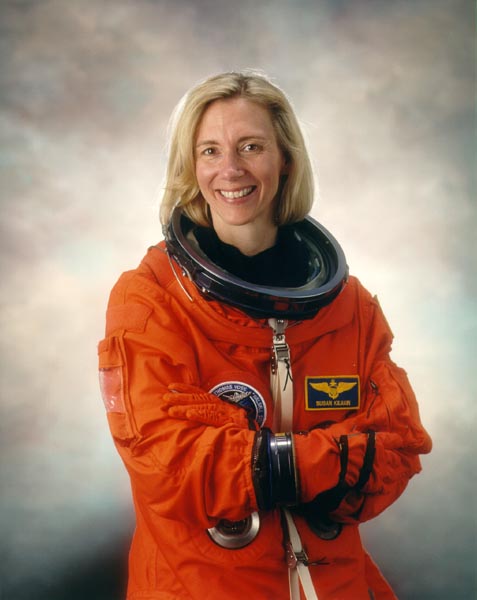
Susan Kilrain

Susan Kilrain
Susan Kilrain (born on October 24, 1961, Augusta, Georgia) is an American aerospace engineer and a former NASA astronaut. She is the youngest person to pilot a Space Shuttle.
In 1997 she flew to space twice as a shuttle pilot on the missions STS-83 (April 4 to 8, 1997) and STS-94 (July 1 to 17, 1997). The STS-83 mission delivered to space a Microgravity Science Laboratory (MSL-1), a collection of 33 microgravity experiments housed inside the Spacelab. The mission, which was supposed to last 16 days was cut short because of problems with one of the Shuttle's three fuel cell power generation units. Mission duration was 95 hours and 12 minutes, traveling 1.5 million miles in 63 orbits of the Earth. In July 1997 the STS-83 mission was renamed as STS-94 and represented a re-flight of the MSL-1 Spacelab mission. This mission focused on materials and combustion science research in microgravity. Mission duration was 376 hours and 45 minutes, traveling 6.3 million miles in 251 orbits of the Earth.
Susan logged 472 hours in space over two missions and is the second woman to pilot a space shuttle. 272
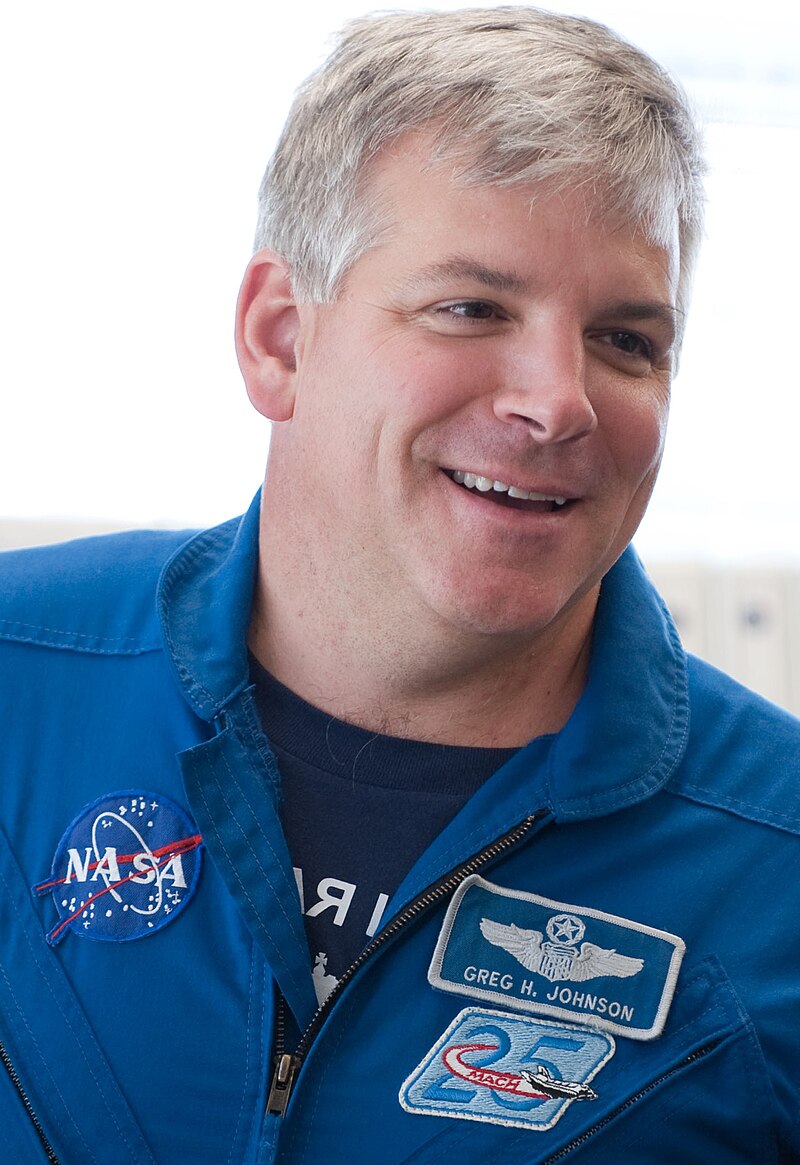
Gregory Harold Johnson

Gregory Harold Johnson
Gregory Harold "Box" Johnson (born May 12, 1962) is a former NASA astronaut and a retired colonel in the United States Air Force. Johnson is a veteran of two space flights, STS-123 and STS-134. He served as pilot on his first mission, which delivered the Kibo logistics module and the Dextre robot arm to the International Space Station. Johnson was also assigned as the pilot to the STS-134 mission, which launched on May 16, 2011, and landed on June 1, 2011.
Johnson was the pilot on STS-123. The launch of STS-123 was March 11, 2008. Johnson was picked to be the mission's primary robotic arm operator.
Johnson was the pilot of STS-134, the final flight of Space Shuttle Endeavour and the penultimate flight of the Space Shuttle Program.
273
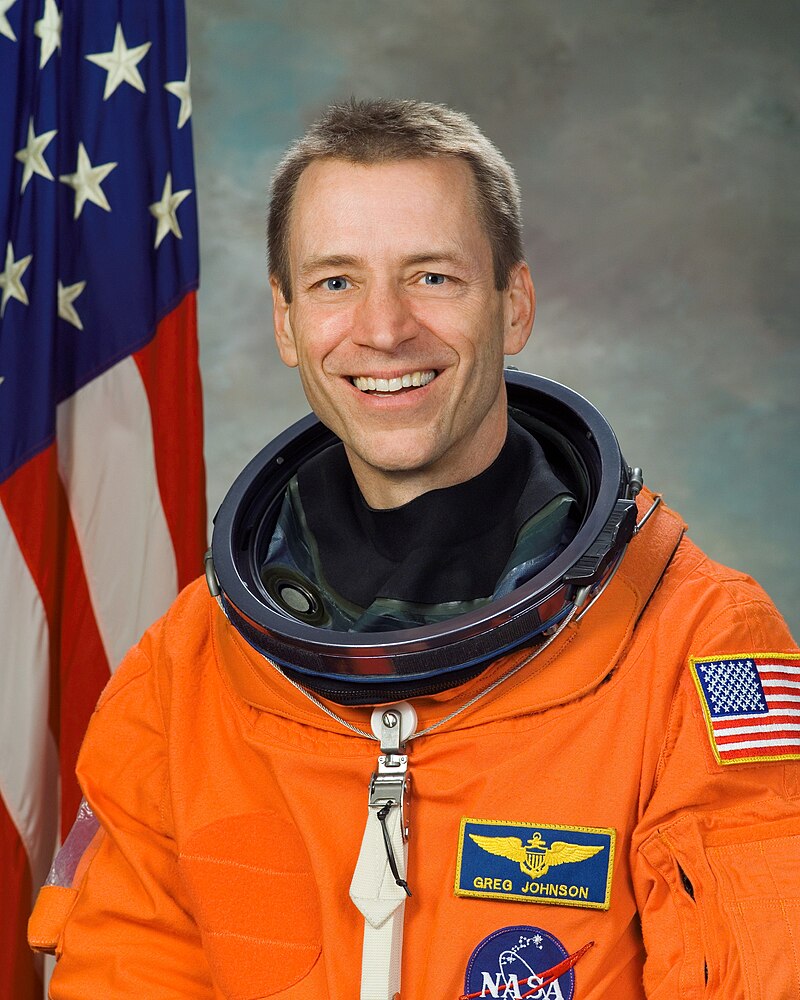
Gregory Carl Johnson

Gregory Carl Johnson
Gregory Carl Johnson (born July 30, 1954), (CAPT, USNR, Ret.), is a retired NASA astronaut. Johnson was the pilot on Space Shuttle mission STS-125, the final Hubble Space Telescope servicing mission. Johnson was born on July 30, 1954, in Seattle, Washington.
Johnson was the pilot on STS-125, the final Space Shuttle mission to the Hubble Space Telescope. It lasted from May 11–24, 2009, traveling 5,276,000 miles in 197 Earth orbits. Atlantis carried two new instruments to the Hubble Space telescope, the Cosmic Origins Spectrograph and the Wide Field Camera 3. The mission also replaced a Fine Guidance Sensor, six gyroscopes, and two battery unit modules to allow the telescope to continue to function at least through 2014. The crew also installed new thermal blanket insulating panels to provide improved thermal protection, and a soft-capture mechanism that would aid in the safe de-orbiting of the telescope by an unmanned spacecraft at the end of its operational lifespan.
274
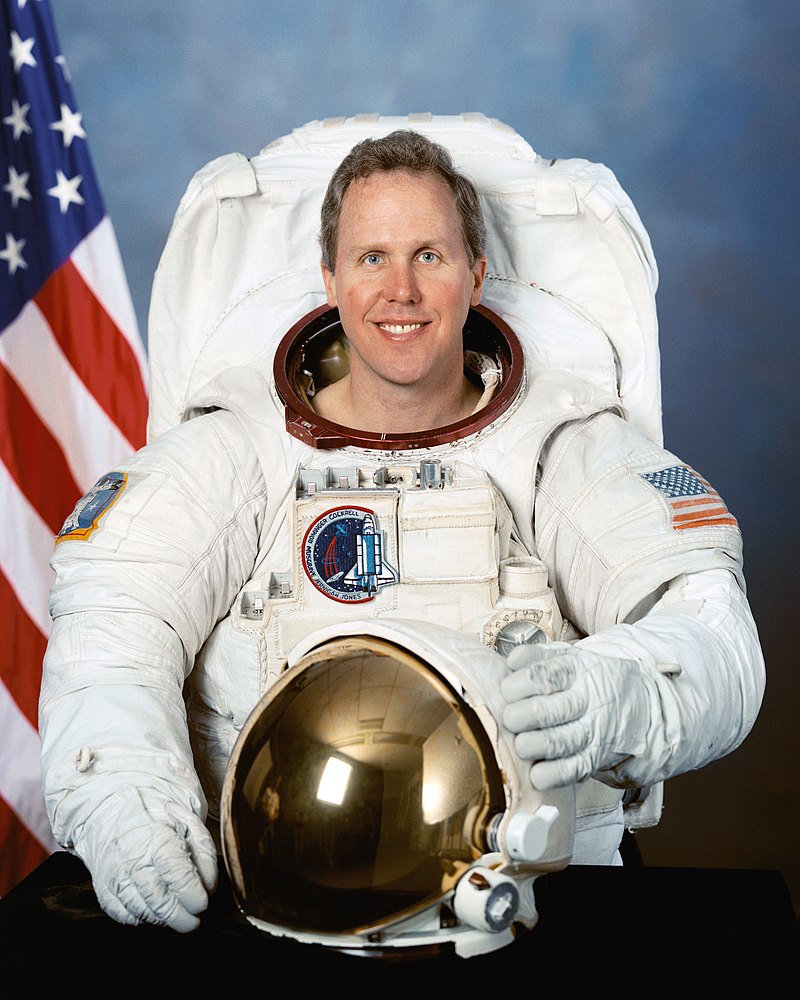
Thomas David Jones

Thomas David Jones
Thomas David Jones (born January 22, 1955) is a former United States astronaut. He was selected to the astronaut corps in 1990 and completed four Space Shuttle flights before retiring in 2001. He flew on STS-59 and STS-68 in 1994, STS-80 in 1996, and STS-98 in 2001. His total mission time was 53 days 48 minutes.
Jones became an astronaut in July 1991. In 1994 he flew as a mission specialist on successive flights of Space Shuttle Endeavour. First, in April 1994, he ran science operations on the "night shift" during STS-59, the first flight of the Space Radar Laboratory (SRL-1). Then, in October 1994, he was the payload commander on the SRL-2 mission, STS-68. Jones next flew in late 1996 on Space Shuttle Columbia. STS-80 successfully deployed and retrieved 2 science satellites, ORFEUS/SPAS and the Wake Shield Facility. While helping set a Shuttle endurance record of nearly 18 days in orbit, Jones used Columbia's robot arm to release the Wake Shield satellite and later grapple it from orbit. His latest space flight was aboard Space Shuttle Atlantis on STS-98, in February 2001. Jones and his crew delivered the Destiny module to the International Space Station, (ISS) and he helped install the Lab in a series of three spacewalks lasting over 19 hours. The successful addition of Destiny gave the first Expedition Crew the largest space outpost in history and marked the start of onboard scientific research at the ISS. A veteran of four space flights, Jones has logged over 52 days (1,272 hours) in space.
275
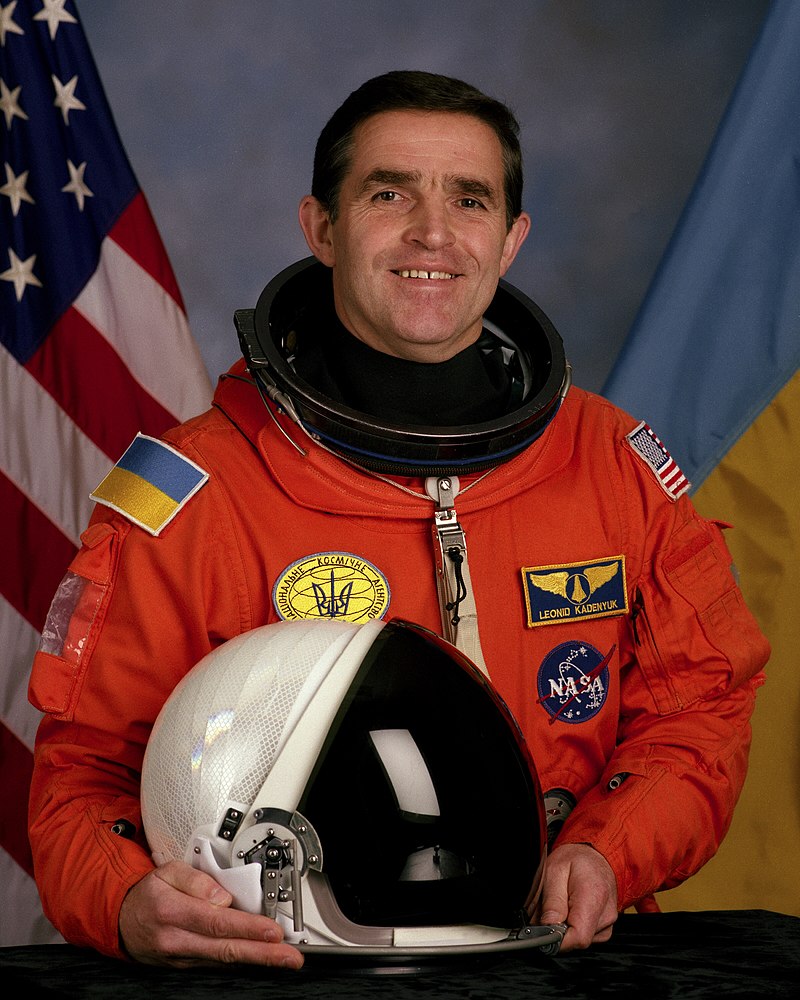
Leonid Kostyantynovych Kadenyuk

Leonid Kostyantynovych Kadenyuk
Leonid Kostyantynovych Kadenyuk (Ukrainian: 28 January 1951 – 31 January 2018) was the first astronaut of independent Ukraine who flew into outer space. He flew on NASA's Space Shuttle Columbia in 1997 as part of the international mission STS-87.
He was trained by NASA for a space flight on the US reusable spacecraft Columbia, mission STS-87, as a payload specialist. From 19 November to 5 December 1997, he made a space flight on the American Space Shuttle Columbia, mission STS-87.
After the flight, Leonid Kadeniuk continued his Ukrainian space program career in the State Space Agency of Ukraine.
276
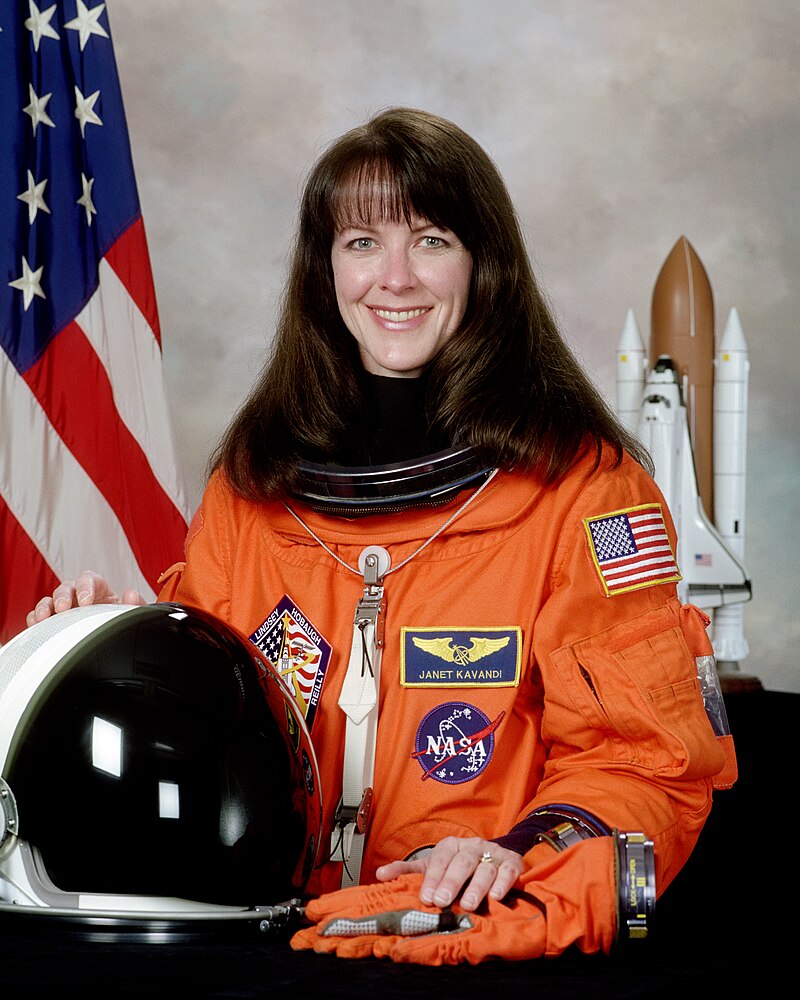
Janet Lynn Kavandi

Janet Lynn Kavandi
Janet Lynn Kavandi, a native of Carthage, Missouri, (born July 17, 1959) is an American scientist and a NASA astronaut.
Kavandi served as a mission specialist on STS-91 (June 2–12, 1998), the 9th and final Shuttle-Mir docking mission, concluding the joint U.S./Russian Phase 1 program. Following the mission, she worked as a CAPCOM (spacecraft communicator) in NASA's Mission Control Center. On her second mission, she served aboard STS-99 (February 11–22, 2000), the Shuttle Radar Topography Mission, which mapped more than 47 million miles of the Earth's land surface to provide data for a highly accurate three-dimensional topographical map.
On her most recent mission, she served aboard STS-104/ISS Assembly Flight 7A (July 12–24, 2001) on the tenth mission to the International Space Station. The shuttle crew installed the joint airlock "Quest" and conducted joint operations with the Expedition 2 crew. Kavandi had trained in the Neutral Buoyancy Laboratory for spacewalking, but she did not take a spacewalk during STS-104.
A three flight veteran, Kavandi has logged over 33 days in space, traveling over 13.1 million miles in 535 Earth orbits.
277
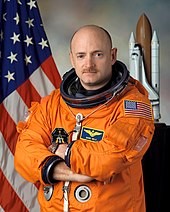
Mark Edward Kelly

Mark Edward Kelly
Mark Edward Kelly (born February 21, 1964) is an American politician, former astronaut, and United States Navy captain who has served as the junior United States senator from Arizona since 2020. A member of the Democratic Party, he was elected in the special election held following the death of Senator John McCain, defeating incumbent Republican Martha McSally.
Mark Kelly has logged over 54 days in space.[16] During his 2006 flight on Space Shuttle Discovery, the second mission after the loss of Space Shuttle Columbia.
Kelly's first trip into space was as pilot of STS-108. After several delays, Endeavour lifted off on December 5, 2001, on the final Shuttle mission of 2001. STS-108 Endeavour visited the ISS, delivering over three tons of equipment, supplies, and a fresh crew to the orbiting outpost. The hatches were opened between Endeavour and the ISS Destiny Laboratory on December 7, enabling the 10 crew members to greet one another. The Expedition 3 crew officially ended their 117-day residency on board the ISS on December 8 as their custom Soyuz seat-liners were transferred to Endeavour for the return trip home. The transfer of the Expedition 4 seat-liners to the Soyuz return vehicle attached to the station marked the official exchange of crews.[20]
Kelly traveled over 4.8 million miles and orbited the Earth 186 times over 11 days and 19+ hours.
In July 2006, Kelly piloted STS-121 Discovery, the second "Return to Flight" mission following the loss of Columbia in February 2003. Because of weather delays, STS-121 became the first shuttle mission to launch on the Fourth of July. Kelly traveled over 5.28 million miles and orbited the Earth 202 times over 12 days and 18+ hours in STS-121.
STS-124 Discovery was Kelly's first mission as commander. The mission was the second of three shuttle missions to carry components of Japan's Kibo laboratory to the ISS. Kibo is Japanese for "hope". Kelly traveled over 5.7 million miles, and orbited the Earth 218 times over 13 days and 18 hours.
STS-134 was launched on May 16, 2011. Kelly was the commander of the mission which was Space Shuttle Endeavour's last. His crew and he delivered the Alpha Magnetic Spectrometer to the ISS.
278
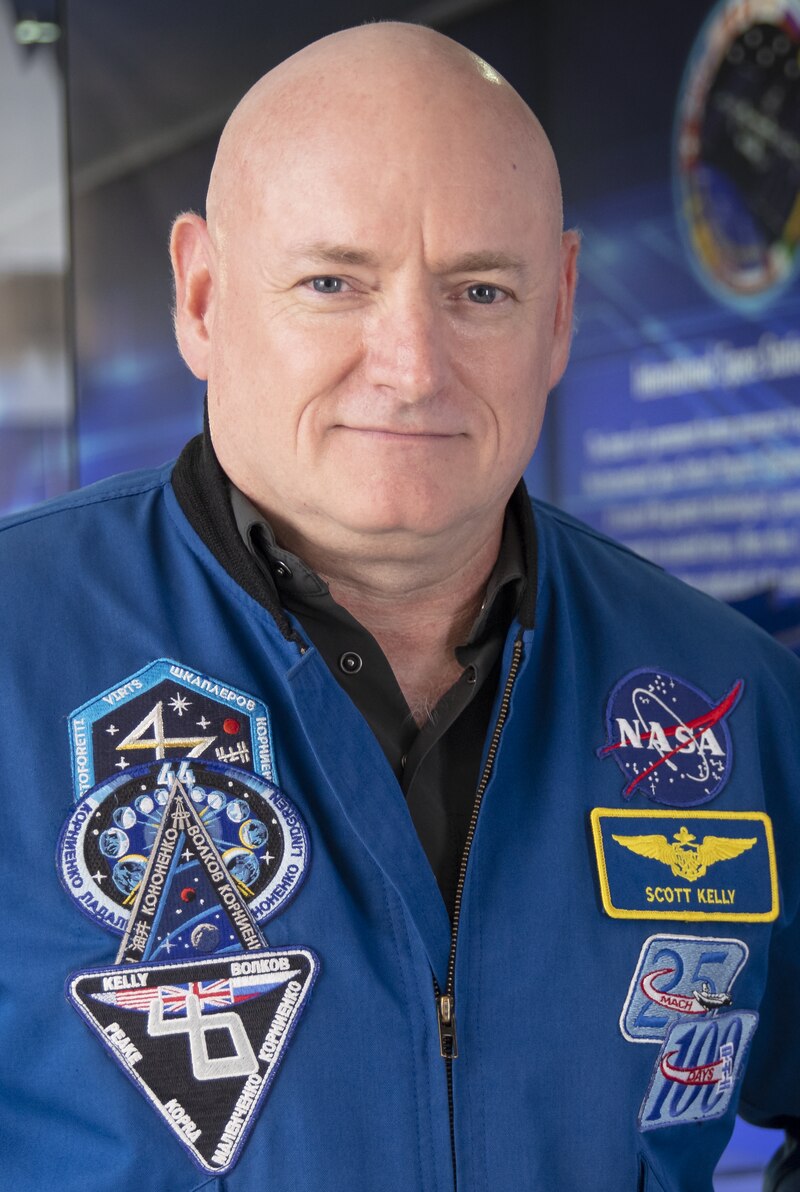
Scott Joseph Kelly

Scott Joseph Kelly
Scott Joseph Kelly (born February 21, 1964) is an American engineer, retired astronaut, and naval aviator. A veteran of four space flights, Kelly commanded the International Space Station (ISS) on Expeditions 26, 45, and 46.
Kelly's first spaceflight was as pilot of Space Shuttle Discovery during STS-103 in December 1999. This was the third servicing mission to the Hubble Space Telescope, and lasted for just under eight days. Kelly's second spaceflight was as mission commander of STS-118, a 12-day Space Shuttle mission to the ISS in August 2007. Kelly's third spaceflight was as a crewmember on Expedition 25/26 on the ISS. He arrived at the ISS aboard Soyuz TMA-01M on October 9, 2010, and served as a flight engineer until he took over command of the station on November 25, 2010, at the start of Expedition 26. Expedition 26 ended on March 16, 2011, with the departure of Soyuz TMA-01M.
In November 2012, Kelly and Russian cosmonaut Mikhail Kornienko were selected for a year-long mission to the ISS. Their year in space began with the launch of Soyuz TMA-16M on March 27, 2015, and they remained on the station for Expeditions 43, 44, 45, and 46. The mission ended on March 1, 2016, with the departure of Soyuz TMA-18M from the station.
279
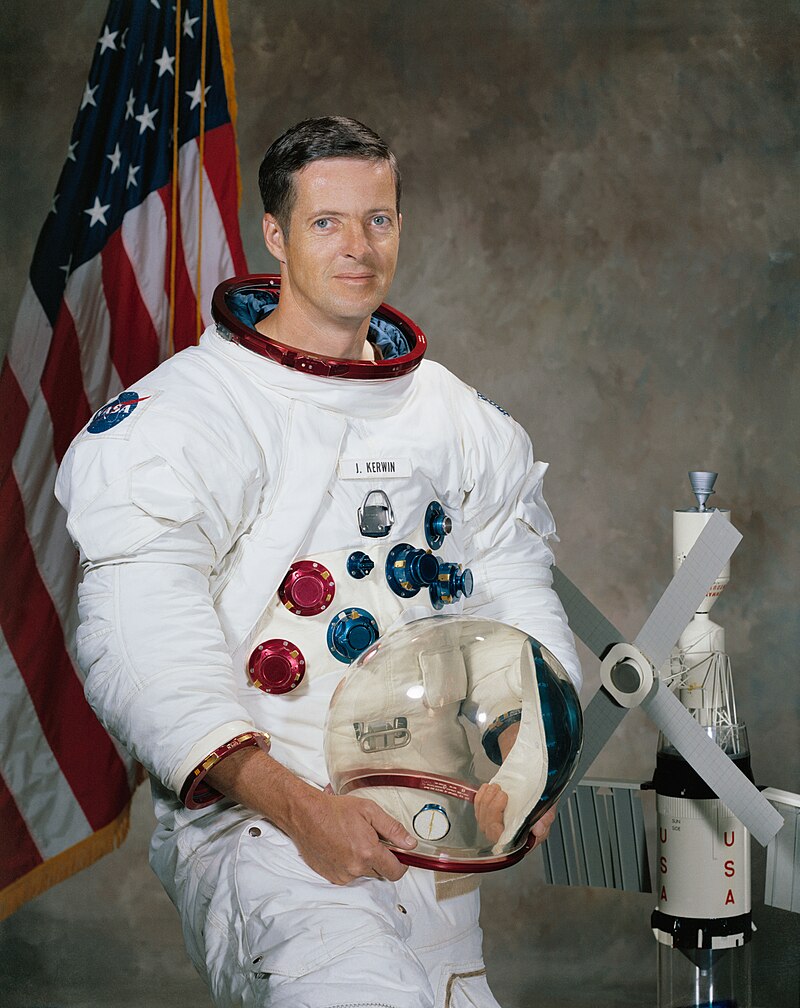
Joseph Peter Kerwin

Joseph Peter Kerwin
Joseph Peter Kerwin (born February 19, 1932) is an American physician and former NASA astronaut, who served as Science Pilot for the Skylab 2 mission from May 25 – June 22, 1973.
He served as Science Pilot for the Skylab 2 (SL-2) mission which launched on May 25 and splashed down on June 22, 1973. With him for the initial activation and 28-day flight qualification operations of the Skylab Orbital Workshop were Charles "Pete" Conrad (spacecraft commander) and Paul J. Weitz (Pilot).
280
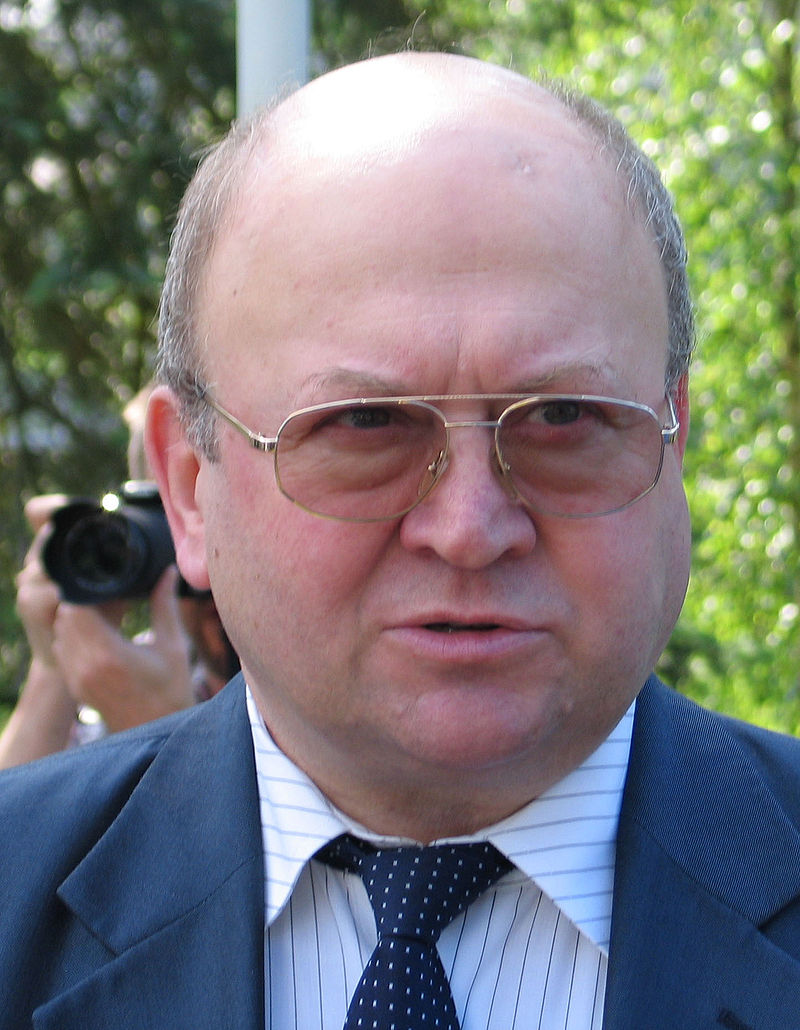
Vladimir Remek

Vladimir Remek
Vladimír Remek (born 26 September 1948) is a Czech politician and diplomat, as well as a former cosmonaut and military pilot. He flew aboard Soyuz 28 from 2 to 10 March 1978, becoming the first and only Czechoslovak in space. As the first cosmonaut from a country other than the Soviet Union or the United States, and with the entry of the Czech Republic and Slovakia into the European Union, Remek is considered to be the first astronaut from the European Union.
281
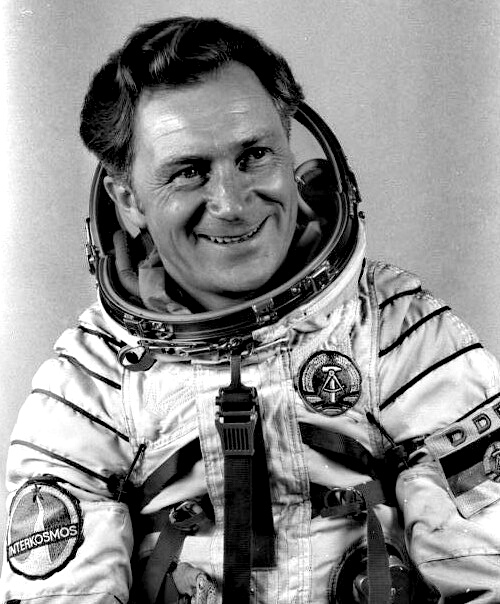
Sigmund Werner Paul Jahn

Sigmund Werner Paul Jahn
Sigmund Werner Paul Jahn (East German: 13 February 1937 – 21 September 2019) was a German cosmonaut and pilot who in 1978 became the first German to fly into space as part of the Soviet Union's Interkosmos programme.
He flew on board Soyuz 31, launched 26 August 1978 to the Soviet space station Salyut 6, where he conducted experiments in remote sensing of the Earth, medicine, biology, materials science, and geophysics. After 124 orbits he returned on Soyuz 29 and landed on 3 September 1978, having spent 7 days, 20 hours, and 49 minutes in space. Because the Soviet and American space programs maintained distinct vocabularies, he was referred to as a cosmonaut.
282
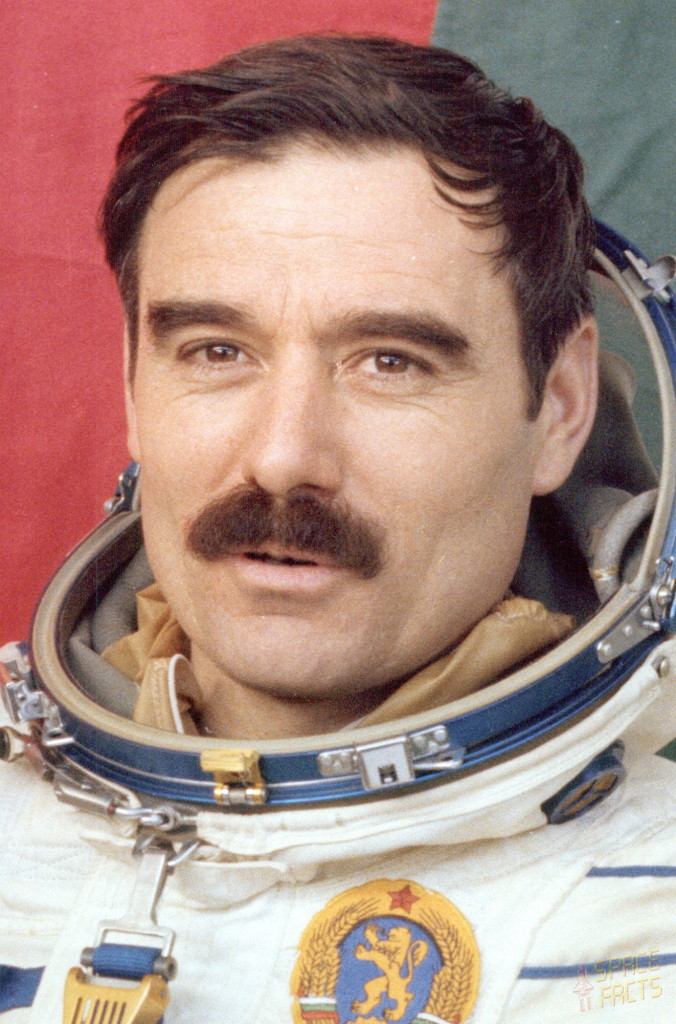
Georgi Ivanov Kakalov

Georgi Ivanov Kakalov
Major general Georgi Ivanov Kakalov (Bulgarian: born July 2, 1940) is a Bulgarian former military officer who was the first Bulgarian cosmonaut. He was a member of the National Assembly of Bulgaria in 1990.
Ivanov, along with Soviet cosmonaut Nikolai Rukavishnikov, was launched into space as part of the Soyuz 33 mission from Baikonur Cosmodrome on April 10, 1979, at 17:34 (GMT). The scientific program for the flight was prepared entirely by Bulgarian scientists, along with some of the equipment.
Though take-off was smooth, the mission was a disaster, with severe damage of the engine preventing docking in orbit to Salyut 6 orbital station as it was initially planned. A premature return to Earth became the only possible decision for Ivanov and Rukavishnikov. Due to some additional technical problems landing was difficult to endure-more than 9Gs. When Soyuz 33 finally landed, it was 320 kilometres (200 mi) southeast of Dzhezkazgan. It completed 31 orbits, and was in space for 1 day, 23 hours, and 1 minute. The flight remains the only example for manual landing and is thus quoted in every astronautic textbook.
284
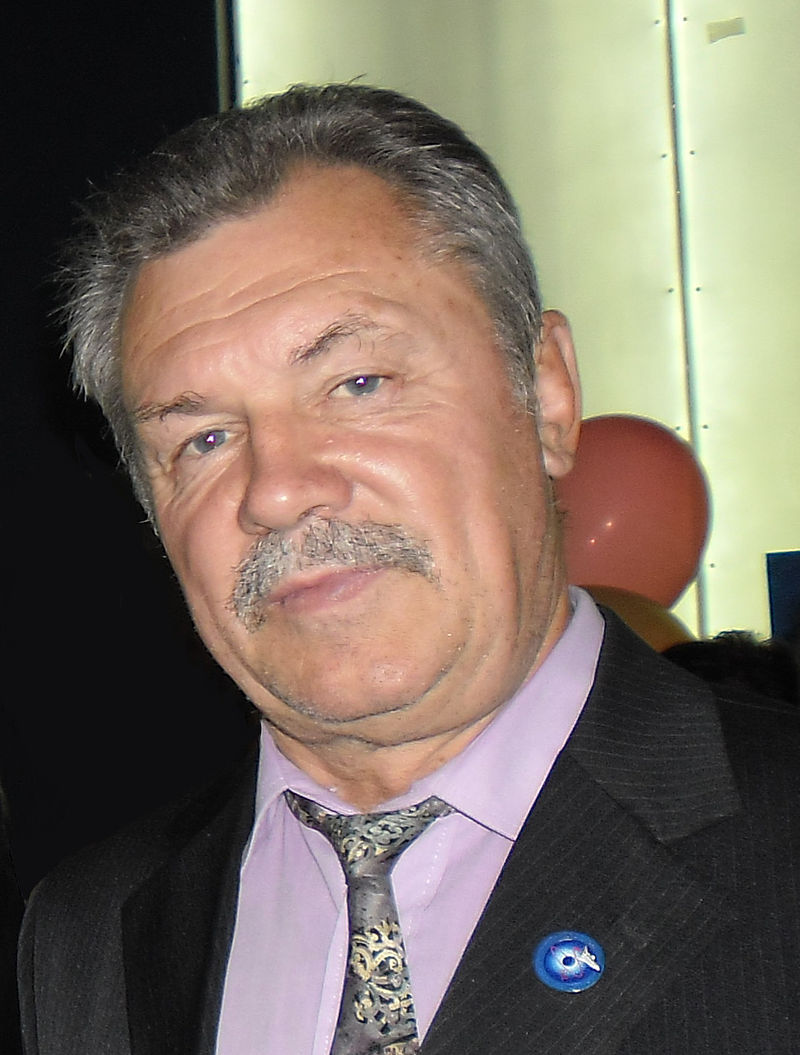
Bertalan Farkas

Bertalan Farkas
Bertalan Farkas (born August 2, 1949) is the first Hungarian cosmonaut, space explorer and fighter pilot. Hungary became the seventh nation to be represented in space by him.
Farkas, along with Soviet cosmonaut Valery Kubasov, was launched into space on Soyuz 36 from Baikonur Cosmodrome on May 26, 1980, at 18:20 (UTC).
While in orbit, Farkas conducted experiments in materials science. After 7 days, 20 hours and 45 minutes, and having completed 124 orbits, Farkas and Kubasov returned to Earth, landing 140 km southeast of Jezkazgan.
285
Pham Tuan
Pham Tuan
Pham Tuan (born on 14 February 1947) is a retired Vietnam Air Force aviator and cosmonaut. He became the first Vietnamese citizen and the first person from an Asian country to fly in space when he launched aboard the Soyuz 37 mission as an Interkosmos Research Cosmonaut.
Tuan, along with Soviet cosmonaut Viktor Gorbatko, was launched from Baikonur Cosmodrome on 23 July 1980, on board the Soyuz 37 mission to the Salyut 6 space station. Tuan was informed only three days prior that he would be the main pilot of the Soyuz 37.
During his flight aboard the Soyuz 37, there were technical issues regarding the Soyuz 3’s engine system. Tuan was commanded to shut down all systems and inform Command of the situation. After this, Command restored the engine to normal and the mission continued.
During his time in orbit, Tuan performed experiments on the melting of mineral samples in microgravity. He also carried out plant experiments on azolla and photographed Vietnam from orbit for mapping purposes. Tuan was in space for 7 days, 20 hours, and 42 minutes, completing 142 orbits, and returned to Earth on 31 July 1980.
286
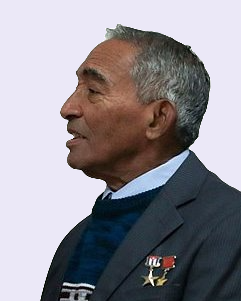
Arnaldo Tamayo Mendez

Arnaldo Tamayo Mendez
Arnaldo Tamayo Mendez (born January 29, 1942) is a Cuban military officer, legislator, and former cosmonaut and the first person of African heritage in space. In 1980, as a member of the crew of Soyuz 38, he became the first Cuban citizen, the first Latin American, the first person of African descent, and the first person from a country in the Western Hemisphere other than the United States to travel into Earth orbit.
Tamayo, along with Soviet cosmonaut Yuri Romanenko, was launched into space aboard Soyuz 38 from Baikonur Cosmodrome on September 18, 1980, at 19:11 UTC. After docking with Salyut 6, Tamayo and Romanenko conducted experiments in an attempt to find what caused space adaptation syndrome (SAS), and perhaps even find a cure, and on the crystallisation of sucrose in microgravity, for the benefit of Cuba's sugar industry. The SAS experiment involved wearing special adjustable shoes that placed a load on the arch of the foot for six hours a day. After 124 orbits of the Earth (lasting 7 days, 20 hours and 43 minutes), Tamayo and Romanenko landed 180 km (110 mi) from Dzhezkazgan. The landing was risky, as it was at night.
287
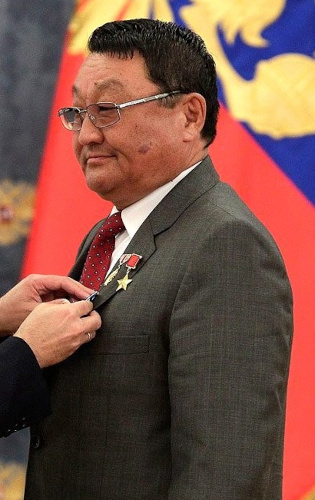
Jugderdemidiin Gurragchaa

Jugderdemidiin Gurragchaa
Jugderdemidiin Gurragchaa (Mongolian: born 5 December 1947) is a Mongolian cosmonaut and military leader. He was the first Mongolian and second Asian to go into space.
Gurragchaa, along with Soviet cosmonaut Vladimir Dzhanibekov, departed from Baikonur Cosmodrome on 22 March 1981. They docked with Salyut 6.
While in orbit, Dzhanibekov and Gurragchaa carried out experiments on Earth science. After 124 orbits and 7 days, 20 hours and 42 minutes in space, Gurragchaa and Dzhanibekov landed 170 km southeast of Dzhezkasgan.
288
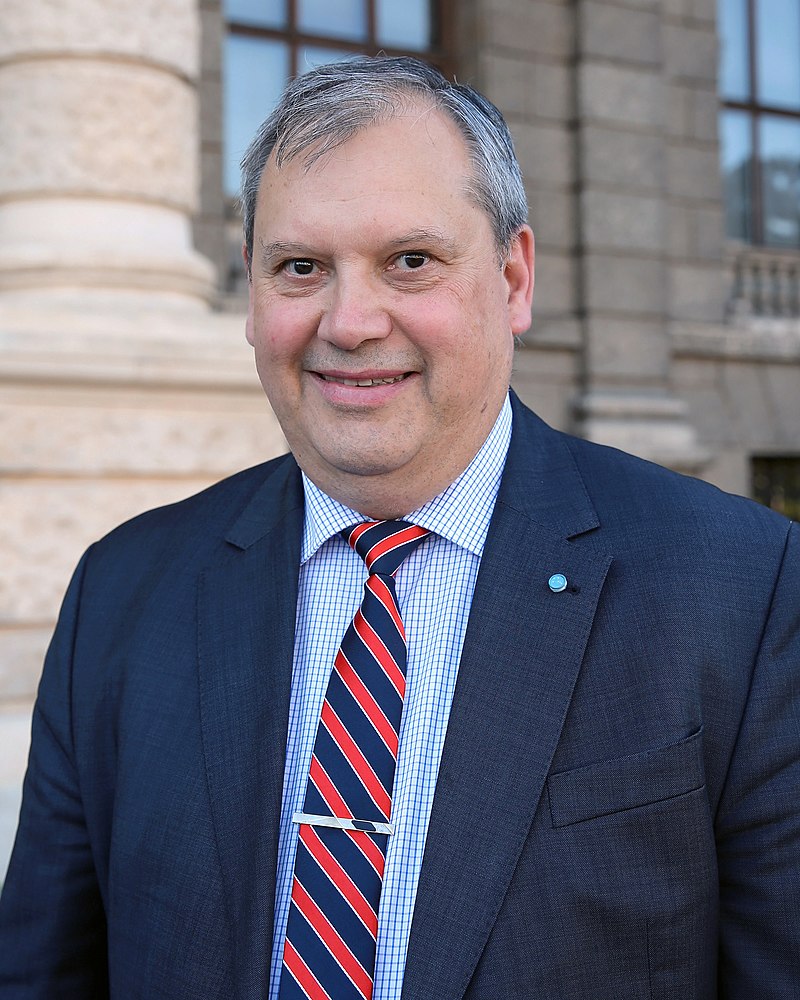
Dumitru-Dorin Prunariu

Dumitru-Dorin Prunariu
Dumitru-Dorin Prunariu (born 27 September 1952) is a Romanian cosmonaut. He flew in space aboard Soyuz 40 spacecraft and Salyut 6 space laboratory. He teamed with the Soviet cosmonaut Leonid Popov.
In May 1981 they completed an eight-day space mission on board Soyuz 40 and the Salyut 6 space laboratory where they completed scientific experiments in the fields of astrophysics, space radiation, space technology, space medicine and biology.
Prunariu is the 103rd human being to fly into space.
289
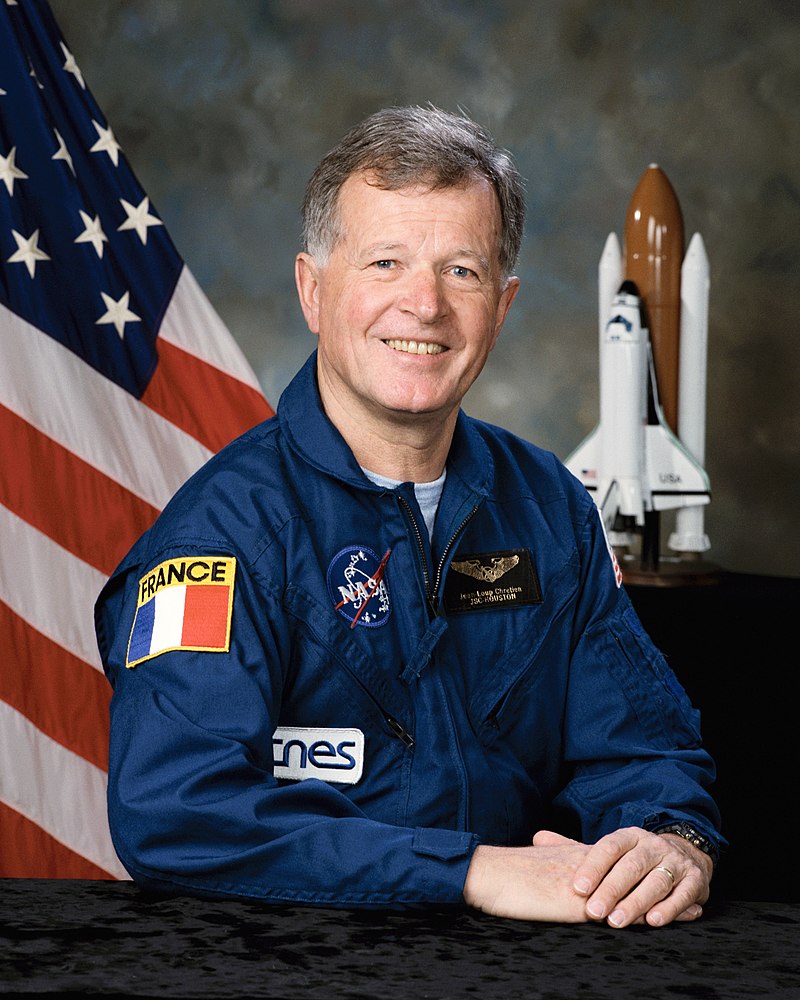
Jean-Loup Jacques Marie Chretien

Jean-Loup Jacques Marie Chretien
Jean-Loup Jacques Marie Chretien (born 20 August 1938) is a French retired Brigadier General in the French air force, and a former CNES spationaut. He flew on two Franco-Soviet space missions and a NASA Space Shuttle mission. Chretien was the first Frenchman and the first western European in space.
Soyuz T-6 was launched on 24 June 1982, and Chrétien, Vladimir Dzhanibekov and Aleksandr Ivanchenkov linked up with Salyut 7 and joined the crew of Anatoli Berezovoy and Valentin Lebedev already on board. They spent nearly seven days carrying out a program of joint Soviet-French experiments, including a series of French echography cardiovascular monitoring system experiments, before returning to Earth after a flight lasting 7 days, 21 hours, 50 minutes, 42 seconds. Following the mission he was appointed Chief, CNES Astronaut Office.
Chretien made his second space flight as a Research Cosmonaut on board Soyuz TM-7, which launched on 26 November 1988. Together with Alexander Alexandrovich Volkov and Sergei Krikalev, he linked up with Mir and joined the crew of Vladimir Titov, Musa Manarov and Valeriy Polyakov already on board. They spent 22 days carrying out a program of joint Soviet-French experiments, including a 5-hour and 57 minute EVA by Volkov and Chretien during which the two men installed the French ERA experimental deployable structure and a panel of material samples. In making the EVA, he became the first non-American and non-Soviet to walk in space. In addition, he was the first non-Soviet cosmonaut to make a second space flight aboard a Soviet spacecraft. The mission lasted 24 days, 18 hours, 7 minutes.
In 1994, he was selected as part of NASA Astronaut Group 15 to officially become an International Mission Specialist with NASA.
He served on the crew of STS-86 Atlantis (25 September to 6 October 1997) the seventh mission to rendezvous and dock with the Russian Space Station Mir. Mission duration was 10 days, 19 hours, 21 minutes.
290
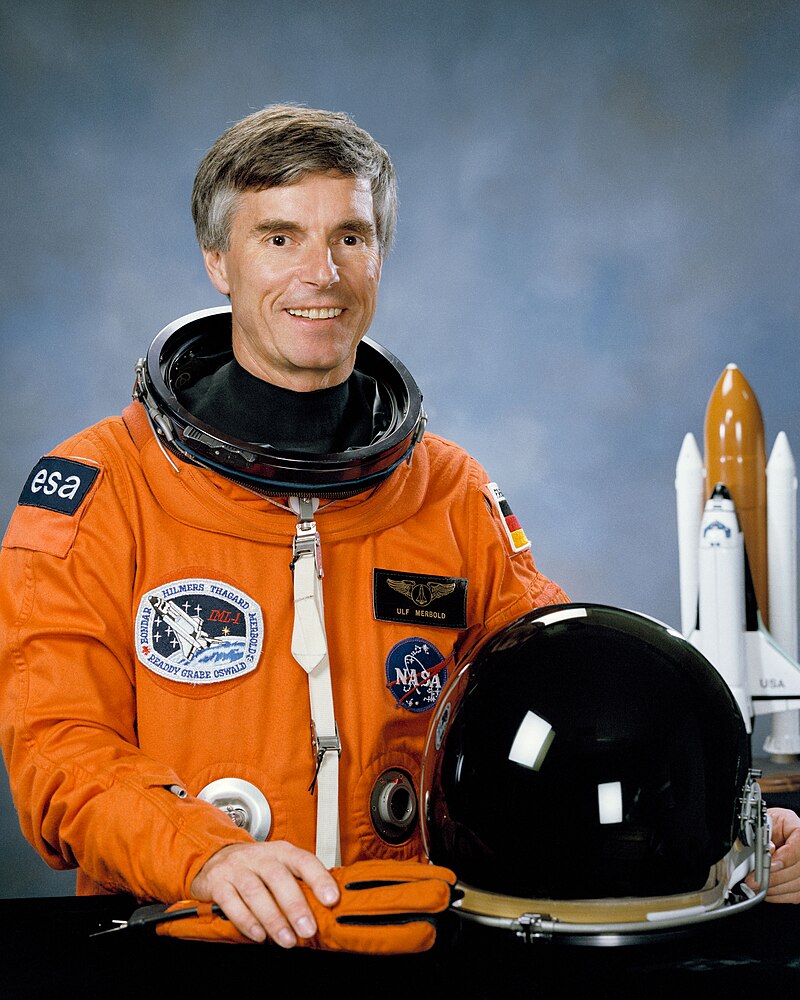
Ulf Dietrich Merbold

Ulf Dietrich Merbold
Ulf Dietrich Merbold (born June 20, 1941) is a German physicist and astronaut who flew to space three times, becoming the first West German citizen in space and the first non-American to fly on a NASA spacecraft. Merbold flew on two Space Shuttle missions and on a Russian mission to the space station Mir, spending a total of 49 days in space.
In 1983, Merbold flew to space for the first time as a payload specialist or science astronaut on the first Spacelab mission, STS-9, aboard the Space Shuttle Columbia. He performed experiments in materials science and on the effects of microgravity on humans. In 1989, Merbold was selected as payload specialist for the International Microgravity Laboratory-1 (IML-1) Spacelab mission STS-42, which launched in January 1992 on the Space Shuttle Discovery. Again, he mainly performed experiments in life sciences and materials science in microgravity. After ESA decided to cooperate with Russia, Merbold was chosen as one of the astronauts for the joint ESA–Russian Euromir missions and received training at the Russian Yuri Gagarin Cosmonaut Training Center. He flew to space for the third and last time in October 1994, spending a month working on experiments on the Mir space station.
291
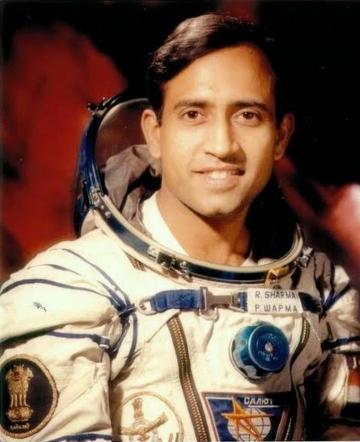
Rakesh Sharma

Rakesh Sharma
Wing Commander Rakesh Sharma, AC (born 13 January 1949) is a former Indian Air Force pilot who flew aboard Soyuz T-11 on 3 April 1984 as part of the Soviet Interkosmos programme. He is the only Indian citizen to travel in space, although there have been other astronauts of Indian origin who travelled to space, who were not Indian citizens.
He flew aboard the Soviet rocket Soyuz T-11 launched from Baikonur Cosmodrome in the Kazakh Soviet Socialist Republic on 3 April 1984. The Soyuz T-11 spacecraft carrying cosmonauts including Sharma docked and transferred the three member Soviet-Indian international crew, consisting of the ship's commander, Yury Malyshev, and flight engineer, Gennadi Strekalov, to the Salyut 7 Orbital Station. Sharma spent 7 days, 21 hours, and 40 minutes aboard the Salyut 7 during which his team conducted scientific and technical studies which included forty-three experimental sessions.
292
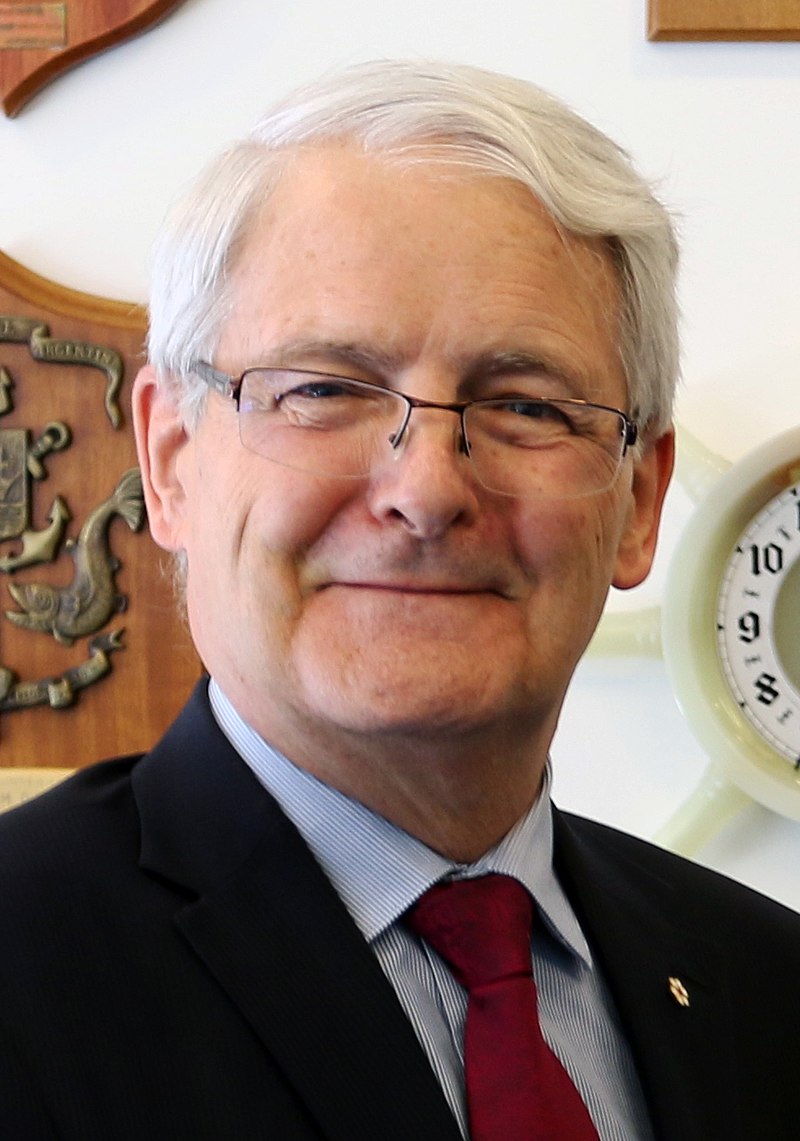
Joseph Jean-Pierre Marc Garneau

Joseph Jean-Pierre Marc Garneau
Joseph Jean-Pierre Marc Garneau (born February 23, 1949) is a Canadian retired politician, retired Royal Canadian Navy officer and former astronaut who served as a Cabinet minister from 2015 to 2021.
On October 5, 1984, he became the first Canadian in outer space as part of STS-41-G and served on two subsequent Space Shuttle missions—STS-77 and STS-97.
Garneau flew on the Space Shuttle Challenger, STS-41-G from October 5 to 13, 1984, as payload specialist. He worked as CAPCOM for a number of shuttle flights and was on two further flights himself: STS-77 (May 19 to 29, 1996) and STS-97 (to the ISS, November 30 to December 11, 2000). He has logged over 677 hours in space.
293
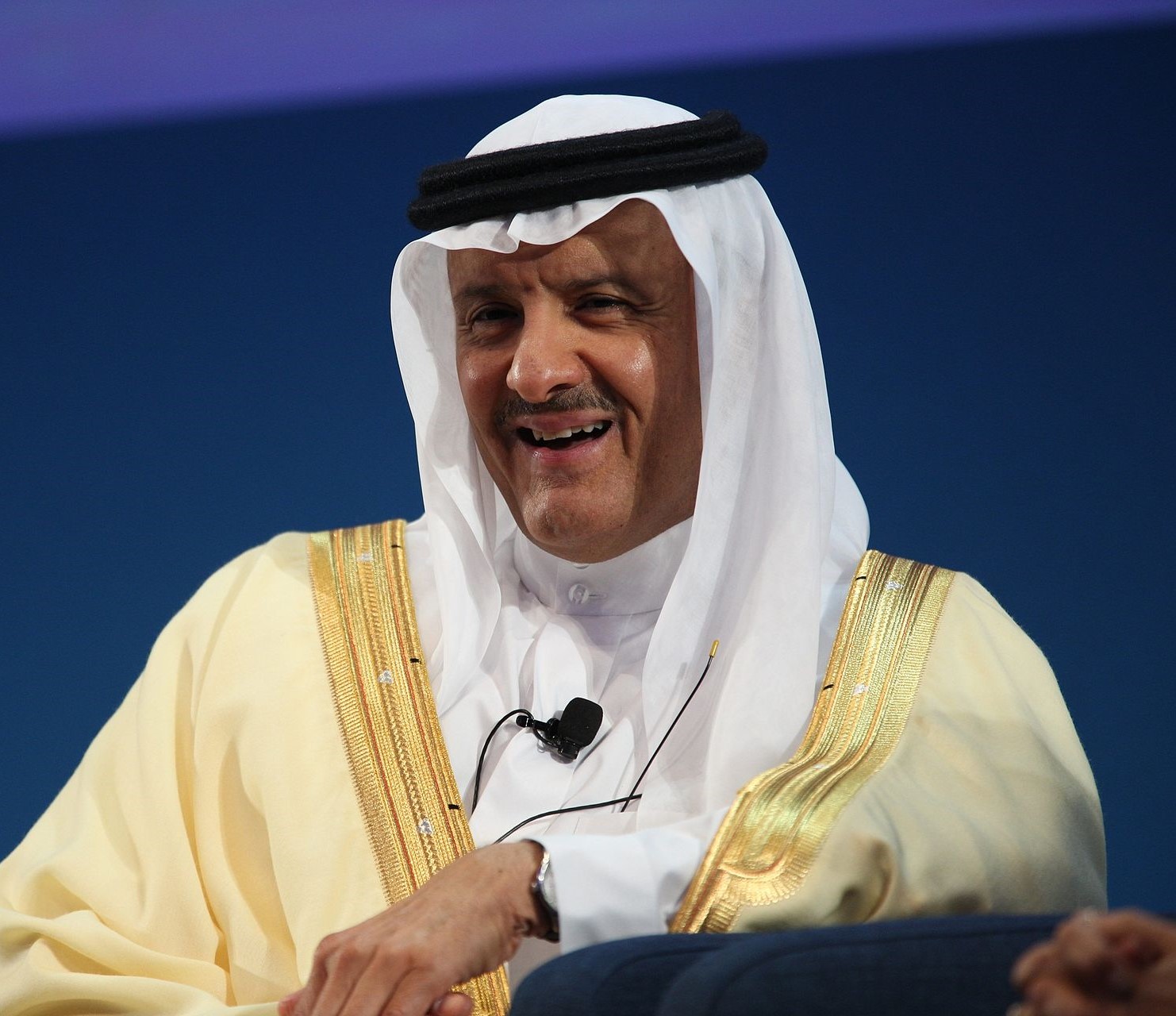
Sultan bin Salman Al Saud

Sultan bin Salman Al Saud
Sultan bin Salman Al Saud (Arabic: born 27 June 1956) is a Saudi prince and former Royal Saudi Air Force pilot who flew aboard the American STS-51-G Space Shuttle mission as a payload specialist. He is the first member of a royal family to fly in space, the first Arab to fly in space, and the first Muslim to fly in space, as well as (at 28 years old) the youngest person ever to fly on the Space Shuttle.
From 17 June through 24 June 1985, he flew as a payload specialist on STS-51-G Discovery. As one of a seven-member international crew, which also included American and French astronauts, he represented the Arab Satellite Communications Organization (ARABSAT) in deploying its satellite, ARABSAT-1B
294
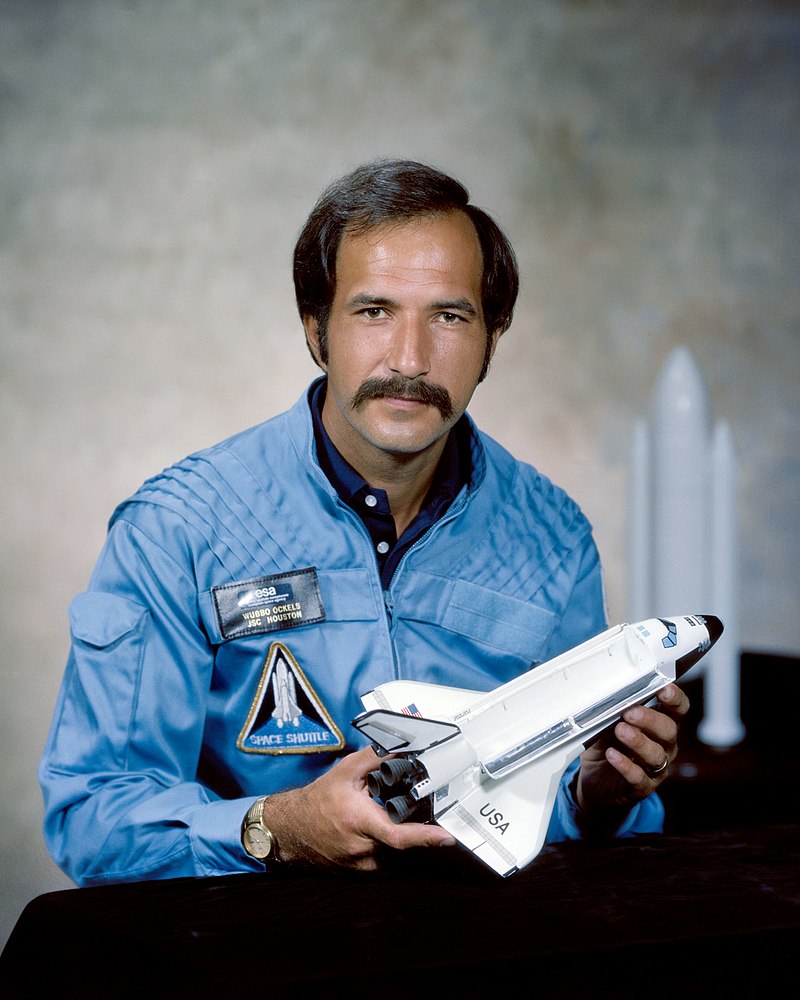
Wubbo Johannes Ockels

Wubbo Johannes Ockels
Wubbo Johannes Ockels (28 March 1946 – 18 May 2014) was a Dutch physicist and astronaut with the European Space Agency who, in 1985, became the first Dutch citizen in space when he flew on STS-61-A as a payload specialist.
Ockels flew as a payload specialist on the crew of STS-61A Challenger (30 October to 6 November 1985). STS-61A was the West German D-1 Spacelab mission. It was the first to carry eight crew members, (five Americans, two Germans and Ockels); the largest to fly in space; and was also the first in which payload activities were controlled from outside the United States: from the DLR control center in Germany. More than 75 scientific experiments were completed in the areas of physiological sciences, materials science, biology, and navigation. At mission conclusion Ockels had traveled 2.5 million miles in 110 Earth orbits, and logged over 168 hours in space.
295
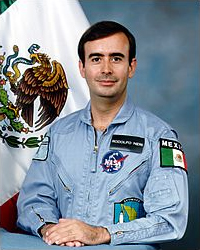
Rodolfo Neri Vela

Rodolfo Neri Vela
Rodolfo Neri Vela (born 19 February 1952) is a Mexican scientist and astronaut who flew aboard a NASA Space Shuttle mission in the year 1985.[1] He is the second Latin American to have traveled to space.
Neri was a Payload Specialist aboard the STS-61-B Atlantis mission, from (November 26 to December 3, 1985). STS-61B launched at night from Kennedy Space Center, Florida, and returned to land at Edwards Air Force Base, California. During the mission the crew deployed the MORELOS-B, AUSSATT II, and SATCOM K-2 communications satellites, conducted two six-hour spacewalks to demonstrate space station construction techniques with the EASE/ACCESS experiments. At mission conclusion, Neri had traveled 2.4 million miles (3.8 million km) in 108 Earth orbits, and logged over 165 hours in space.
296

Muhammed Ahmed Faris

Muhammed Ahmed Faris
Muhammed Ahmed Faris (Arabic: born 26 May 1951) is a Syrian military aviator. He was the first Syrian and the second Arab in space.
Born in Aleppo, Syria, he was a pilot in the Syrian Air Force with the rank of a colonel. He specialized in navigation when he was selected to participate in the Intercosmos spaceflight program on 30 September 1985.
He flew as Research Cosmonaut in the Interkosmos program on Soyuz TM-3 to the Mir space station in July 1987, spending 7 days 23 hours and 5 minutes in space. He returned to Earth aboard Soyuz TM-2.
297
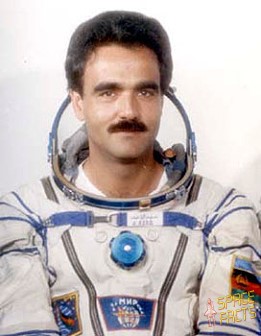
Abdul Ahad Mohmand

Abdul Ahad Mohmand
Abdul Ahad Momand (Pashto: born 1959) is an Afghan-German and former Afghan Air Force aviator who became the first, and currently only, Afghan citizen to journey to outer space.
He became one of Soyuz TM-6 crew members and spent nine days aboard the Mir space station in 1988 as an Intercosmos Research Cosmonaut. He holds many records as an Afghan Astronaut. During this mission, Abdul Ahad Momand was the first cosmonaut to speak the Pashto language after he made a telephone call to Afghanistan, making it the fourth language to be officially spoken in space. He became the first Afghan citizen and the fourth Muslim to visit outer space, after Sultan bin Salman Al Saud, Muhammed Faris, and Musa Manarov.
Along with Commander Vladimir Lyakhov and Flight Engineer Valery Polyakov, Momand was part of the Soyuz TM-6 three-man crew, which launched at 04:23 GMT 29 August 1988. Momand's inclusion in the mission was a significant symbol during the Soviet–Afghan War.
During his nine days stay on the Mir space station, Momand took photographs of his country, participated in astrophysical, medical and biological experiments.
Lyakhov and Momand returned to Earth aboard Soyuz TM-5. The 6 September planned landing of Soyuz TM-5 was delayed because of mechanical complications on the Mir. A day later, the retro-fire was successful, and at 00:50 GMT Soyuz TM-5 landed near Dzhezkazgan.
298
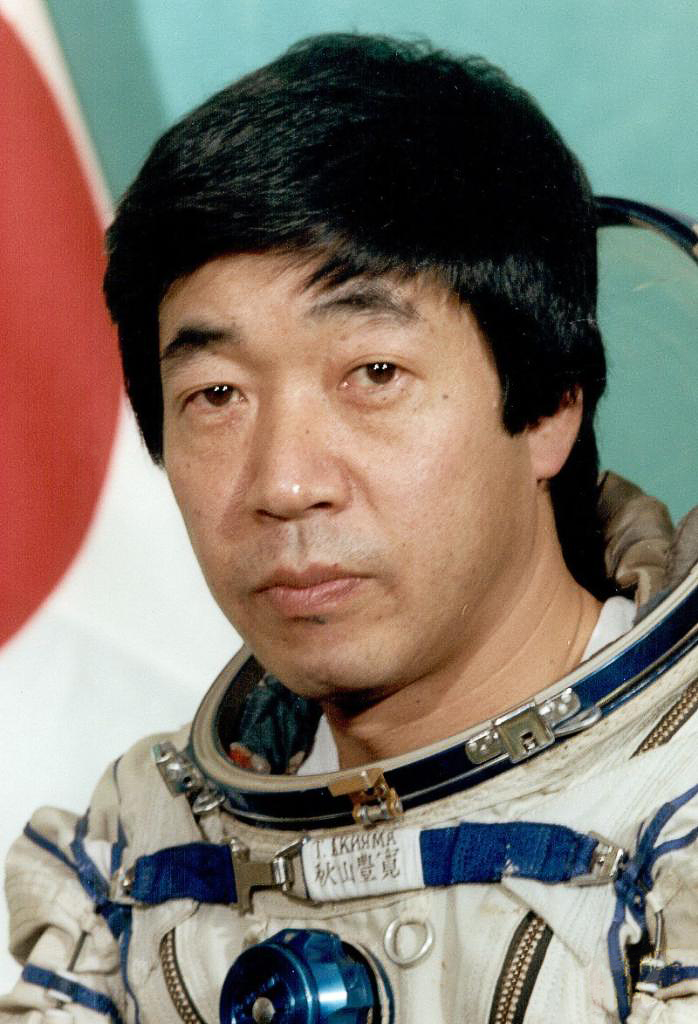
Toyohiro Akiyama

Toyohiro Akiyama
Toyohiro Akiyama (born 22 July 1942) is a retired Japanese TV journalist and professor at Kyoto University of Art and Design. In December 1990, he spent seven days aboard the Mir space station. He became the first person of Japanese nationality to fly in space, and his space mission was the second spaceflight to be commercially sponsored and funded. Akiyama was also the first civilian to use commercial space flight, and the first journalist to report from outer space.
After successfully completing a Research Cosmonaut training course at the Yuri Gagarin Cosmonaut Training Center in present-day Russia, Akiyama launched aboard the Soyuz TM-11 mission to the Mir space station on 2 December 1990 along with mission commander Viktor Afanasyev and flight engineer Musa Manarov. During his time aboard Mir, Akiyama gave live reports each day documenting life aboard the station. He returned just over a week later aboard Soyuz TM-10 along with Gennadi Manakov and Gennadi Strekalov on 10 December. Akiyama's mission marked the first flight of a person of Japanese nationality in space as well as the first commercially sponsored and funded spaceflight of an individual in history.Akiyama was also the first journalist to give live reports from space.
299
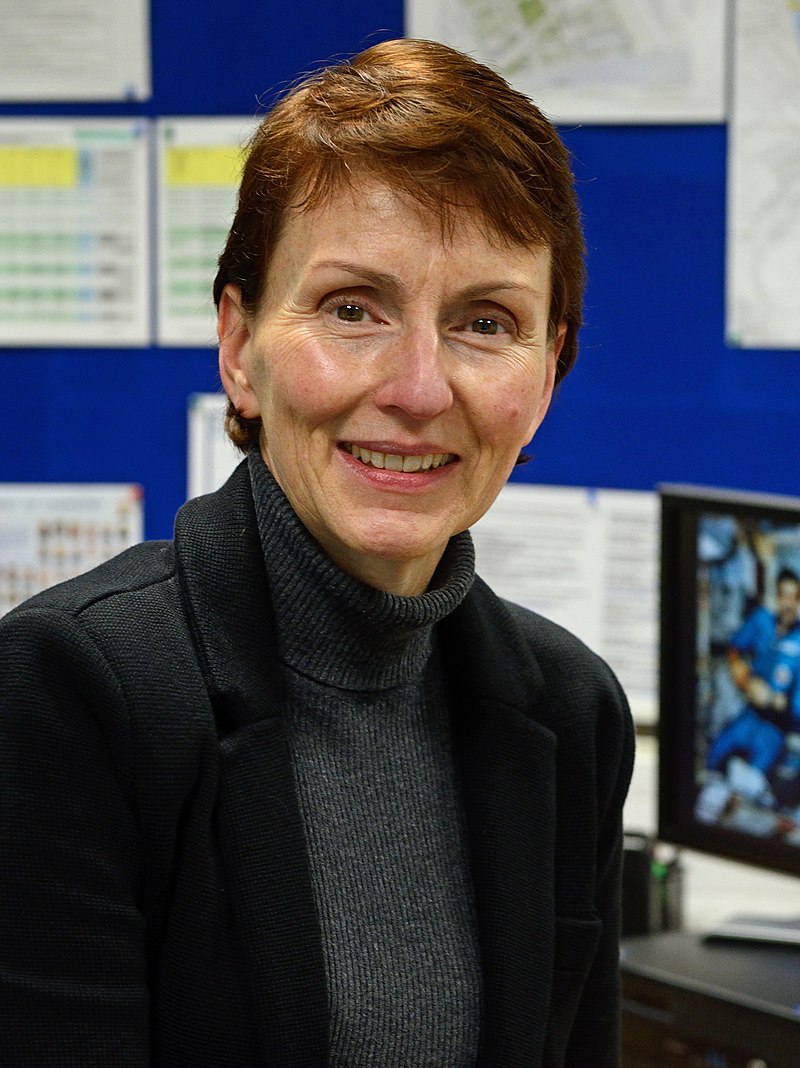
Helen Patricia Sharman

Helen Patricia Sharman
Helen Patricia Sharman, (born 30 May 1963) is a British chemist and cosmonaut who became the first British person, first Western European woman and first privately funded woman in space, as well as the first woman to visit the Mir space station, in May 1991.
She was on board the Soyuz TM-12 mission, which included Soviet cosmonauts Anatoly Artsebarsky and Sergei Krikalev, launched on 18 May 1991 and lasted eight days, most of that time spent at the Mir space station. Sharman's tasks included medical and agricultural tests, photographing the British Isles, and participating in a licensed amateur radio hookup with British schoolchildren. She landed aboard Soyuz TM-11 on 26 May 1991, along with Viktor Afanasyev and Musa Manarov.
300
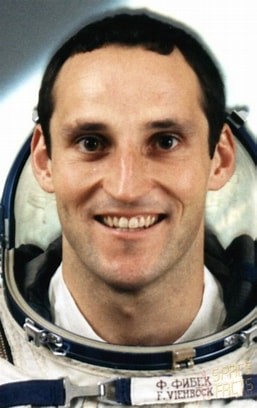
Franz Artur Viehbock

Franz Artur Viehbock
Franz Artur Viehbock (born 24 August 1960 in Vienna) is an Austrian electrical engineer and cosmonaut, who became the first Austrian to fly in space. He visited the Mir space station in 1991 aboard Soyuz TM-13, returning aboard Soyuz TM-12 after spending just over a week in space.
He was chosen for the mission, and launched on 2 October 1991 together with the Russian cosmonauts Alexander A. Volkov and the Kazakh Toktar Aubakirov in Soyuz TM-13 from the Baikonur Cosmodrome spaceport.
At the Mir space station he conducted 15 experiments in the fields of space medicine, physics, and space technology, together with the cosmonauts Anatoly Artsebarsky and Sergey Krikalev. Viehböck returned after 7 days and 22 hours with Soyuz TM-12, and landed in Kazakhstan on 10 October.
301
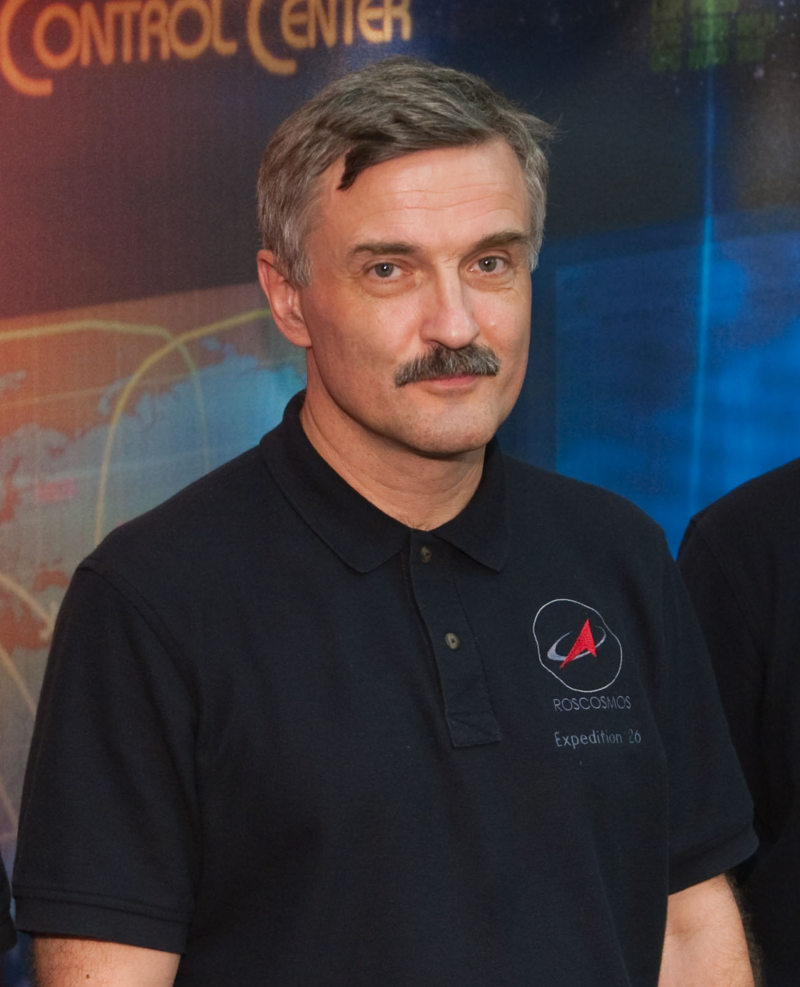
Aleksandr Yuriyevich Kaleri

Aleksandr Yuriyevich Kaleri
Aleksandr "Sasha" Yuriyevich Kaleri (Russian: born in Jurmala, Latvia on 13 May 1956) is a former Russian cosmonaut and veteran of extended stays on the Mir Space Station and the International Space Station (ISS). Kaleri has most recently been in space in 2010 and 2011 aboard the ISS serving as a flight engineer for the long duration Expedition 25/26 missions. He has spent the fourth-longest time in space of any person, and the longest time in space of any person not born in what is now Russia.
Kaleri has participated in three extended missions aboard the Mir Space Station. In 1992, he participated in a 145-day flight aboard the Soyuz-TM-14 spacecraft and the Mir. Between 17 August 1996 to 2 March 1997, Kaleri spent 197-days in space aboard the Soyuz-TM-24 spacecraft and the Mir as the Mir-22 mission flight engineer. In 2000, Kaleri performed his third spaceflight aboard the Soyuz-TM-30 spacecraft and the Mir as the Mir-28 mission flight engineer.
302
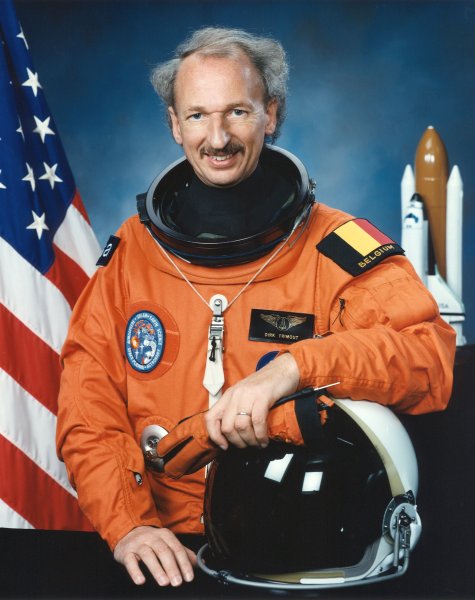
Dirk Dries David Damiaan

Dirk Dries David Damiaan
Dirk Dries David Damiaan, Viscount Frimout (born 21 March 1941 in Poperinge, Belgium) is an astrophysicist for the European Space Agency. He flew aboard NASA Space Shuttle mission STS-45 as a payload specialist, making him the first Belgian in space.
Frimout flew as a payload specialist on STS-45 Atlantis (24 March to 2 April 1992). STS-45 was launched from and returned to land at the Kennedy Space Center, Florida. It was the first Spacelab mission dedicated to NASA's Mission to Planet Earth. During the nine-day flight, the crew aboard Atlantis operated the twelve experiments that constituted the ATLAS-1 (Atmospheric Laboratory for Applications and Science) cargo. In addition, this was the first time an artificial beam of electrons was used to stimulate a man-made auroral discharge. At mission conclusion, Frimout had traveled 3.2 million miles in 143 Earth orbits and logged over 214 hours in space.
303
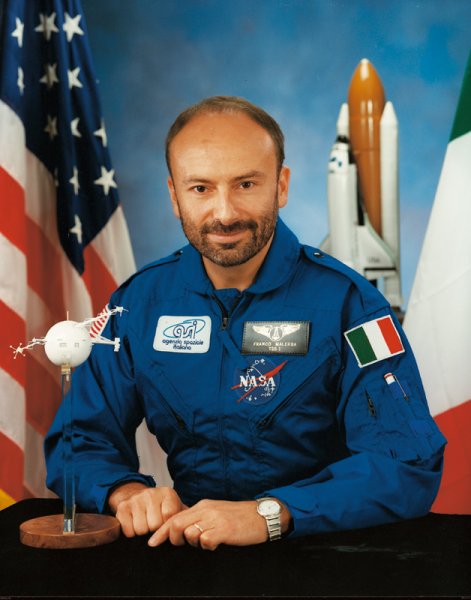
Franco Egidio Malerba

Franco Egidio Malerba
Franco Egidio Malerba (born 10 October 1946 in Busalla, Metropolitan City of Genoa, Italy) is an Italian astronaut and Member of the European Parliament. He was the first citizen of Italy to travel to space.
After selection in 1989 as a Payload Specialist by the Italian Space Agency (ASI) and NASA, he became a staff member of ASI and was assigned to the NASA Johnson Space Center, Houston, Texas, for training. In September 1991, he was designated Prime Payload Specialist for the TSS-1 Space Shuttle mission. Malerba flew as the first Italian citizen in space on STS-46 (31 July 1992 to 7 August 1992).
304
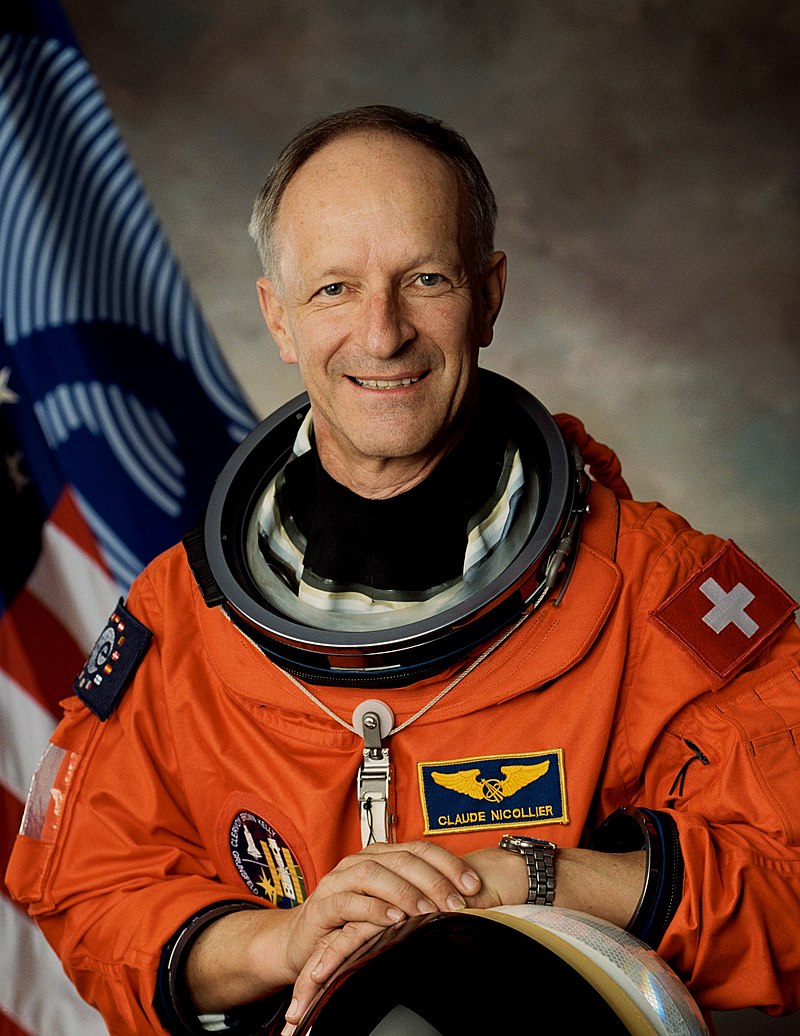
Claude Nicollier

Claude Nicollier
Claude Nicollier (born 2 September 1944 in Vevey, Switzerland) is the first astronaut from Switzerland. He has flown on four Space Shuttle missions. His first spaceflight (STS-46) was in 1992, and his final spaceflight (STS-103) was in 1999. He took part in two servicing missions to the Hubble Space Telescope (called STS-61 and STS-103). During his final spaceflight he participated in a spacewalk, becoming the first European Space Agency astronaut to do so during a Space Shuttle mission (previous ESA astronauts conducted spacewalks aboard Mir, see List of spacewalks and moonwalks 1965–1999).
Nicollier's first spaceflight was as a mission specialist on the 8-day Space Shuttle mission aboard Atlantis, called STS-46, in 1992. The crew deployed the European Retrievable Carrier EURECA, as well as the Tethered Satellite System-1, which was a joint NASA and Italian Space Agency project.
His second spaceflight was as a mission specialist on the 10-day mission aboard Endeavour, called STS-61, in 1993. It was the first mission to perform maintenance on the Hubble Space Telescope, which had been launched three years previously. The nature of this repair was to correct a 2 nm error in the lens, which caused significant distortion of the images taken by the telescope.
In 1996 he took part in STS-75, aboard Space Shuttle Columbia, which deployed TSS-1R, which was a follow-up mission to TSS-1 which had been deployed during STS-46.
His final spaceflight was an eight-day mission aboard Space Shuttle Discovery, called STS-103, in 1999. It was the third servicing mission to the Hubble Space Telescope. During this mission Nicollier participated in an 8-hour spacewalk; it was his first, and the first of any ESA astronaut during a Space Shuttle mission.
Nicollier has spent over 1000 hours in space (42 days, 12 hours and 5 minutes), including one space walk lasting 8 hours and 10 minutes. He served as mission specialist on four missions with four different space shuttles.
305
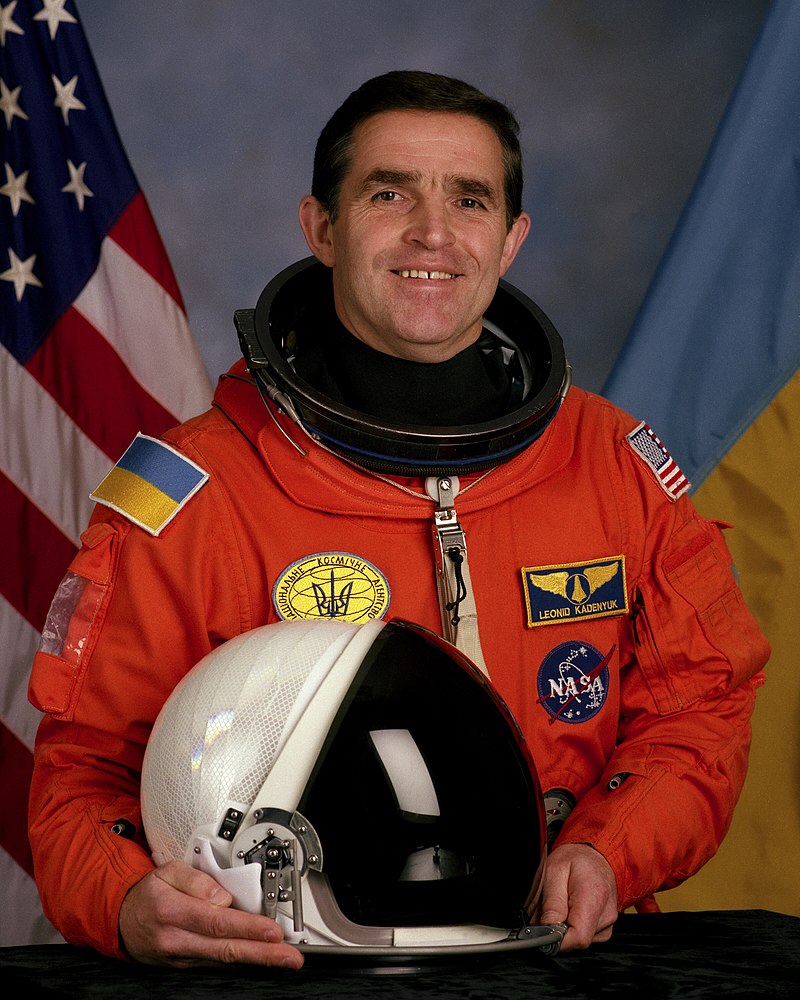
Leonid Kostyantynovych Kadenyuk

Leonid Kostyantynovych Kadenyuk
Leonid Kostyantynovych Kadenyuk (Ukrainian: 28 January 1951 – 31 January 2018) was the first astronaut of independent Ukraine who flew into outer space. He flew on NASA's Space Shuttle Columbia in 1997 as part of the international mission STS-87.
From 19 November to 5 December 1997, he made a space flight on the American Space Shuttle Columbia, mission STS-87.
306
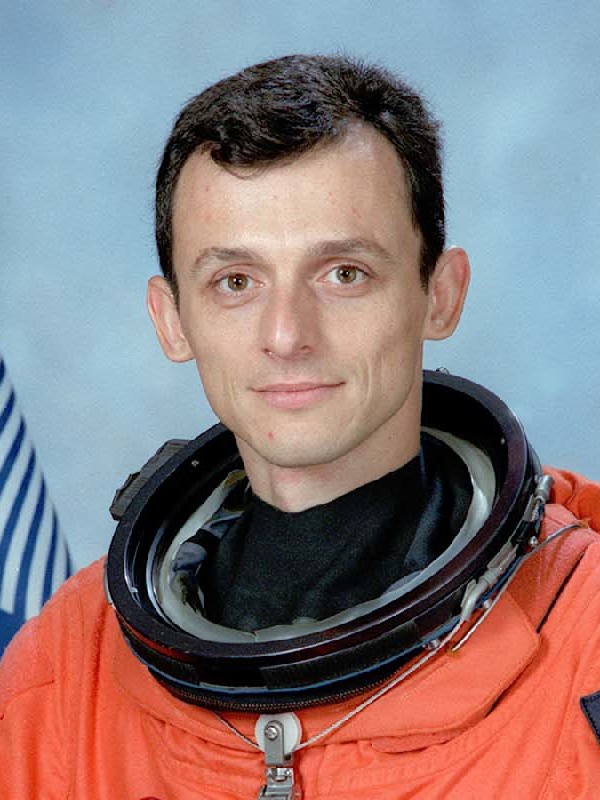
Pedro Francisco Duque

Pedro Francisco Duque
Pedro Francisco Duque, (Madrid, 14 March 1963) is a Spanish astronaut and aeronautics engineer who served as Minister of Science of the Government of Spain from 2018 to 2021.
Duque underwent training in both Russia and the United States. His first spaceflight was as a mission specialist aboard Space Shuttle mission STS-95, during which Duque supervised ESA experimental modules. In October 2003, Duque visited the International Space Station on board a Soyuz TMA Ship for several days during a crew changeover. The name designated by ESA/Spain for the scientific program of this visit was Mission Cervantes
307
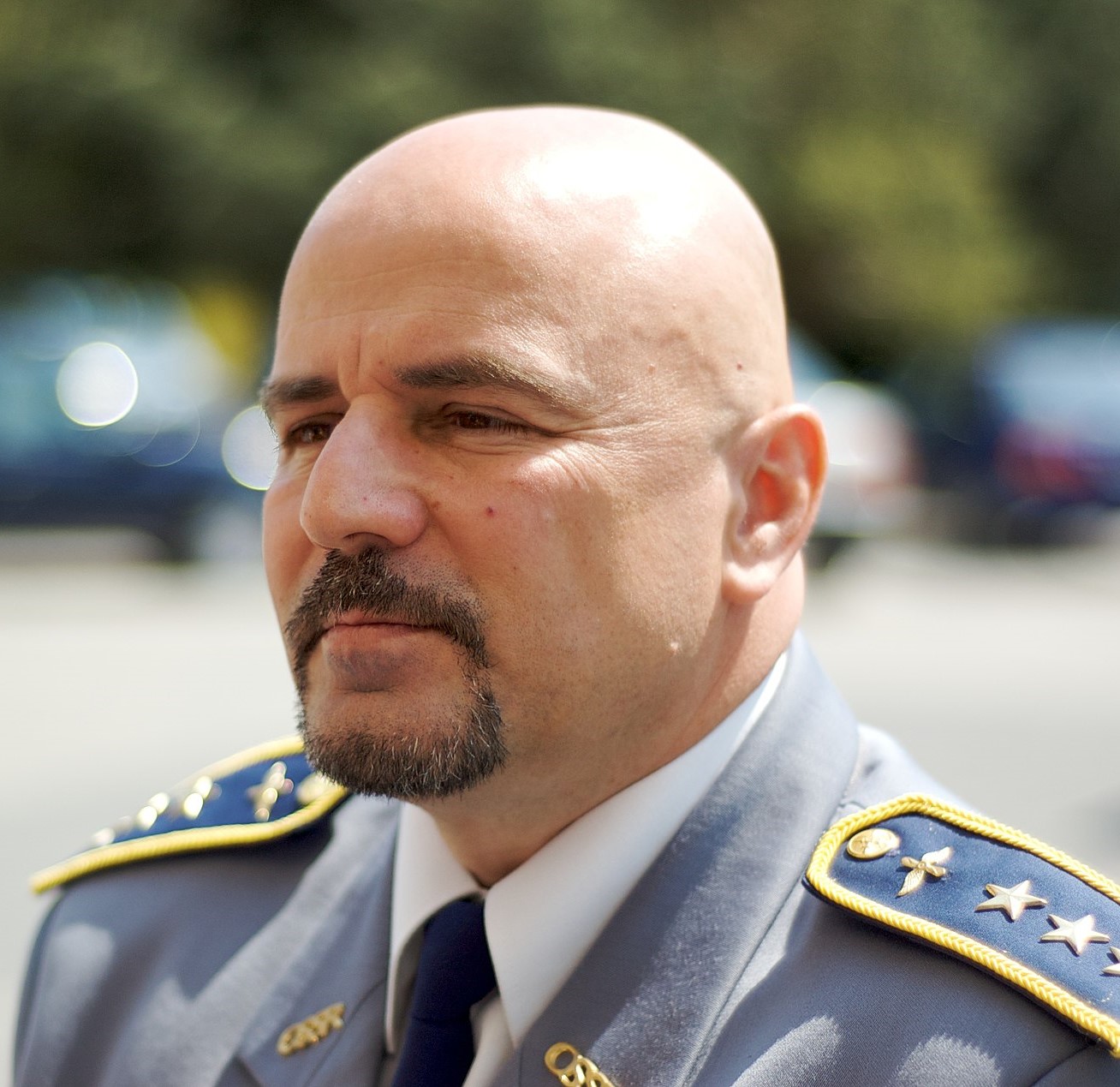
Ivan Bella

Ivan Bella
Ivan Bella (born 21 May 1964) is a Slovak Air Force officer who became the first Slovak citizen to fly in space. He participated in an eight-day joint Russian-French-Slovak mission to the Mir space station in 1999.
Bella was launched along with mission commander Viktor Afanasyev and flight engineer Jean-Pierre Haigneré on the Soyuz TM-29 mission on 20 February 1999. TM-29 arrived at Mir on 22 February. While on board the station Bella performed various scientific experiments as well as experiments involving the possibility of survival of Japanese quails during long flights. Bella spent just over a week in space and returned to earth on 28 February aboard Soyuz TM-28 along with fellow crew member Gennady Padalka.
308
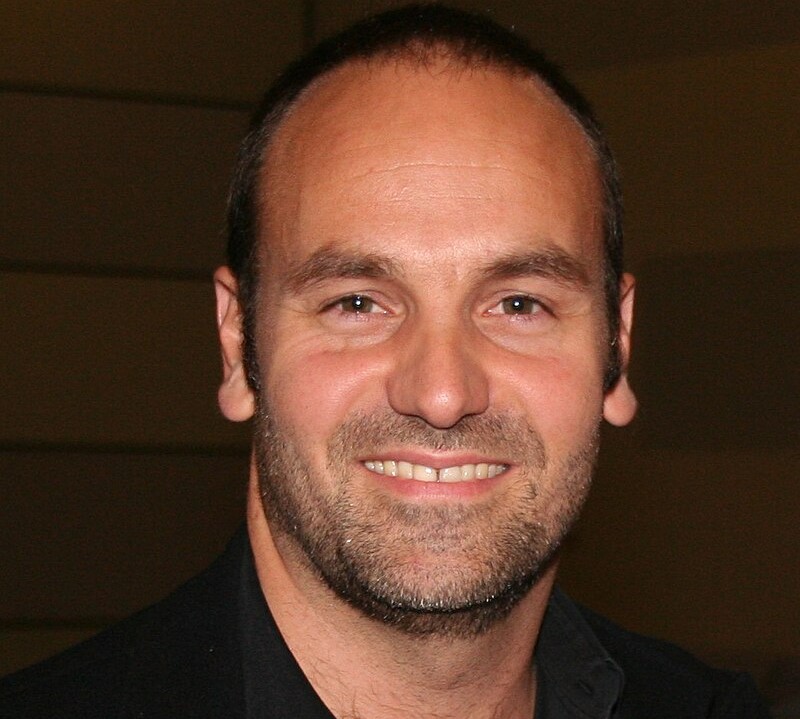
Mark Richard Shuttleworth

Mark Richard Shuttleworth
Mark Richard Shuttleworth (born 18 September 1973) is a South African and British entrepreneur who is the founder and CEO of Canonical, the company behind the development of the Linux-based Ubuntu operating system. In 2002, Shuttleworth became the first South African to travel to space as a space tourist. He lives on the Isle of Man and holds dual citizenship from South Africa and the United Kingdom.
Shuttleworth gained worldwide fame on 25 April 2002, as the second self-funded space tourist and the first South African in space. Flying through Space Adventures, he launched aboard the Russian Soyuz TM-34 mission as a spaceflight participant, paying approximately US$20 million for the voyage (equivalent to $29.22 million in 2021). Two days later, the Soyuz spacecraft arrived at the International Space Station, where he spent eight days participating in experiments related to AIDS and genome research. On 5 May 2002, he returned to Earth on Soyuz TM-33.
When he was in space, he spoke to Thabo Mbeki, then president of South Africa, on video link as part of the Freedom Day celebrations to mark the end of apartheid.
309
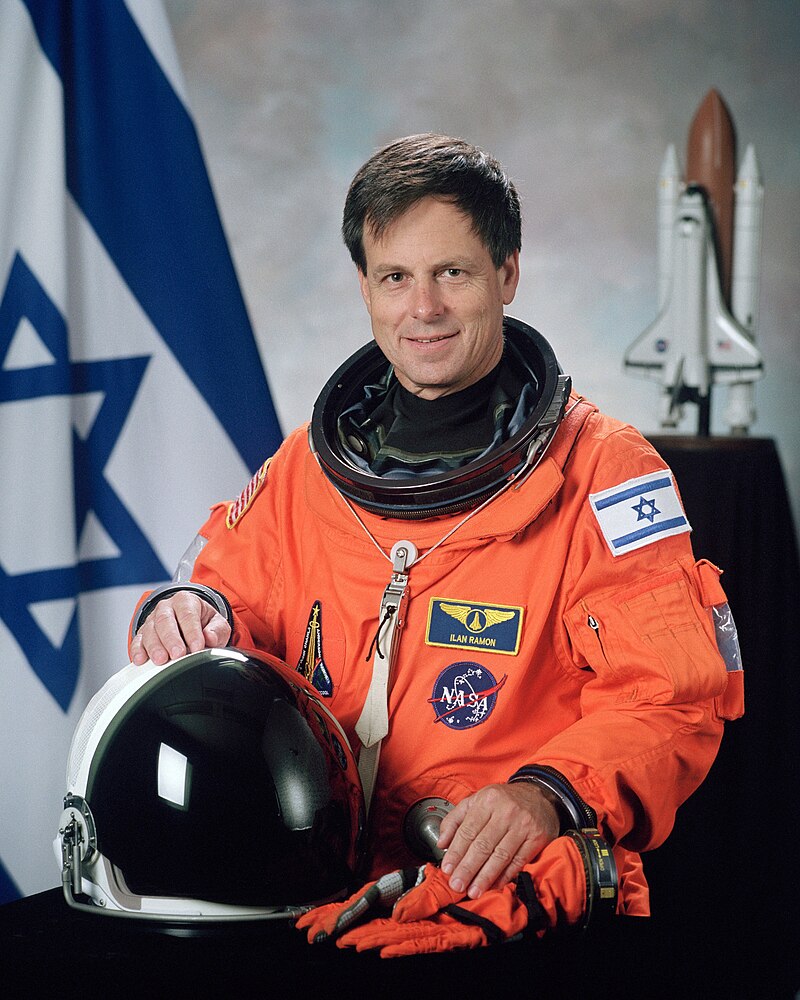
Ilan Ramon

Ilan Ramon
Ilan Ramon born June 20, 1954 – February 1, 2003) was an Israeli fighter pilot and later the first Israeli astronaut. He served as a Space Shuttle payload specialist on STS-107, the fatal mission of Columbia, in which he and the six other crew members were killed when the spacecraft disintegrated during re-entry.
STS-107 Columbia (January 16 – February 1, 2003), a 16-day flight, was a dedicated science and research mission. Working 24 hours a day, in two alternating shifts, the crew successfully conducted approximately 80 experiments.
The STS-107 mission ended abruptly when Space Shuttle Columbia was destroyed and its crew died during re-entry, 16 minutes before scheduled landing.
310
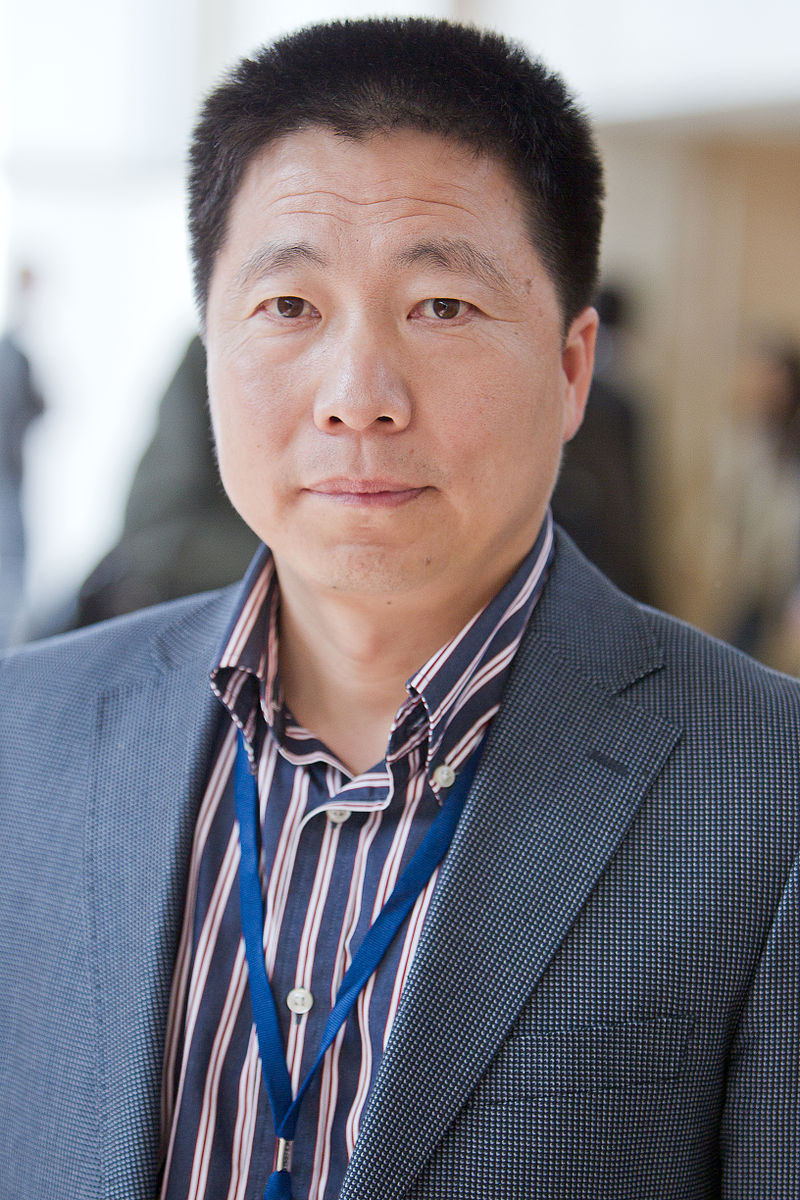
Yang Liwei

Yang Liwei
Yang Liwei (born 21 June 1965) is a Chinese major general, former military pilot, and former taikonaut at the People's Liberation Army.
In October 2003, Yang became the first person sent into space by the Chinese space program. This mission, Shenzhou 5, made China the third country to independently send humans into space.
He was launched into space aboard his Shenzhou 5 spacecraft atop a Long March 2F rocket from Jiuquan Satellite Launch Center in the Gobi Desert at 09:00 CST (01:00 UTC) on 15 October 2003. Prior to his launch almost nothing was made public about the Chinese taikonaut candidates; his selection for the Shenzhou 5 launch was only leaked to the media one day before the launch.
Yang's craft landed in the grasslands of the Chinese region of Inner Mongolia at around 06:30 CST on 16 October 2003 (22:00 UTC), having completed 14 orbits and travelled more than 600,000 km.[15] Yang was in space for a total of 21 hours.
311
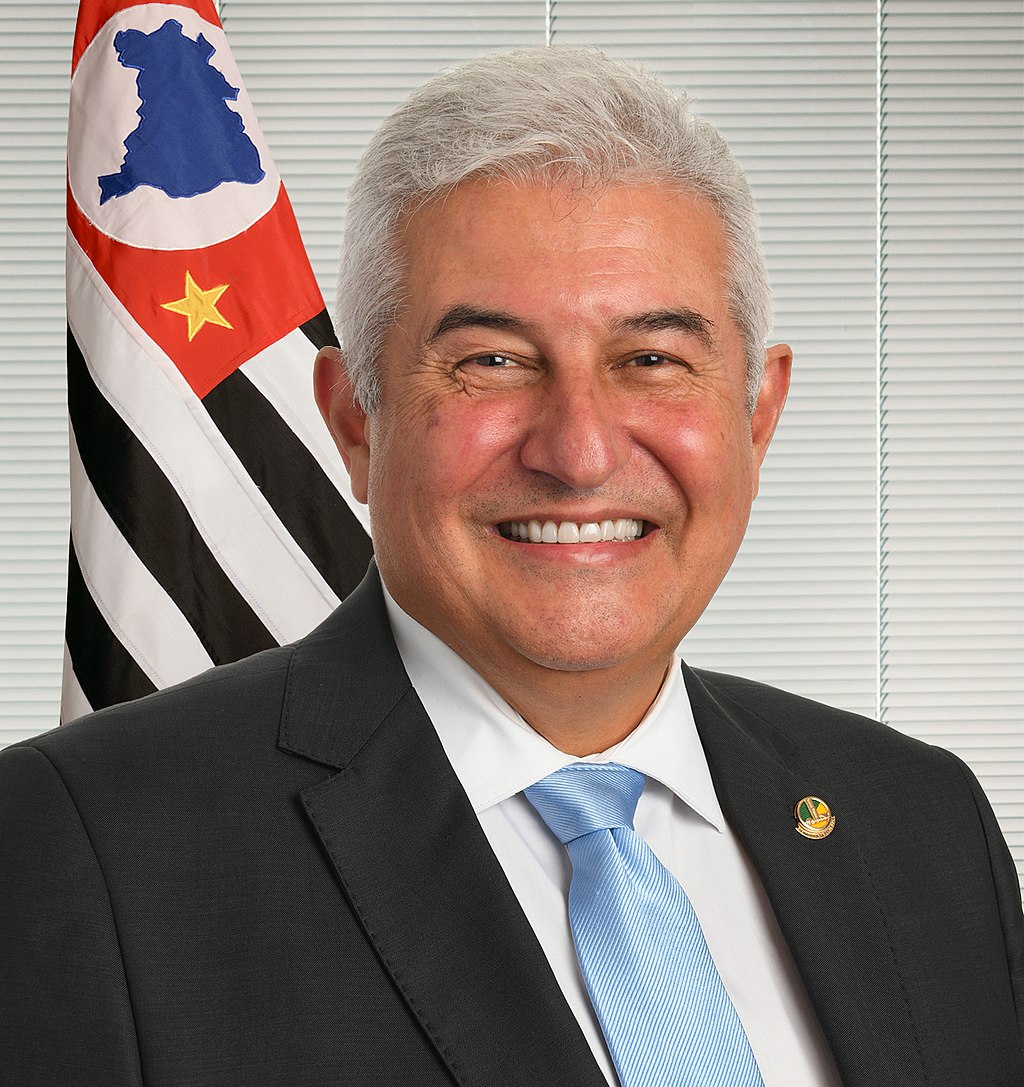
Marcos Cesar Pontes

Marcos Cesar Pontes
Marcos Cesar Pontes (born 11 March 1963) is a Brazilian Air Force pilot, engineer, AEB astronaut, politician and author. He became the first South American and the first Lusophone to go into space when he docked onto the International Space Station aboard Soyuz TMA-8 on March 30, 2006. He is the only Brazilian to have completed the NASA astronaut training program, although he switched to training in Russia after NASA's Space Shuttle program encountered problems.
On March 30, 2006, Pontes became the first Brazilian and the first native Portuguese-speaking person to go into space, where he stayed on the International Space Station for a week. During his trip, Pontes carried out eight experiments selected by the Brazilian Space Agency. He landed in Kazakhstan on April 8, 2006, with the crew of Expedition 12.
312
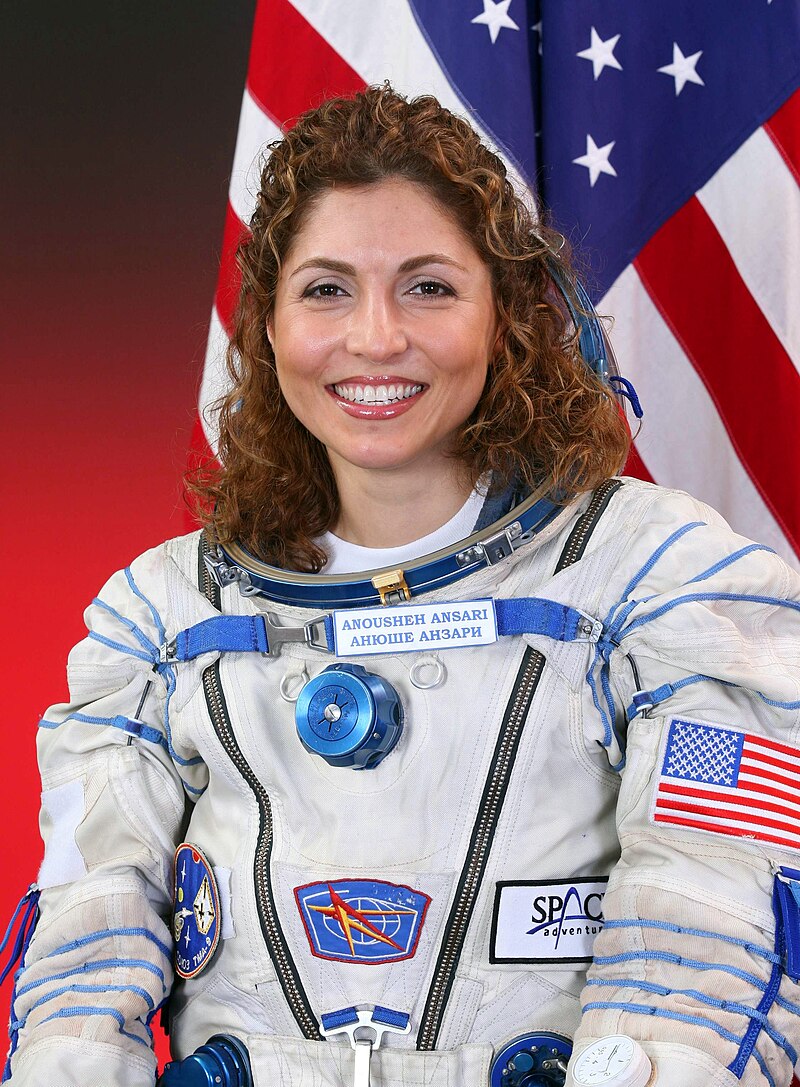
Anousheh Ansari

Anousheh Ansari
Anousheh Ansari (born September 12, 1966) is an Iranian American engineer and co-founder and chairwoman of Prodea Systems. Her previous business accomplishments include serving as co-founder and CEO of Telecom Technologies, Inc. (TTI). The Ansari family is also the title sponsor of the Ansari X Prize. On September 18, 2006, a few days after her 40th birthday, she became the first Iranian in space. Ansari was the fourth overall self-funded space tourist, and the first self-funded woman to fly to the International Space Station.
Ansari lifted off on the Soyuz TMA-9 mission with commander Mikhail Tyurin (RSA) and flight engineer Michael Lopez-Alegria (NASA) at 04:59 (UTC) on Monday, September 18, 2006, from Baikonur, Kazakhstan. Ansari became the fourth (and first female) space tourist. Her contract did not allow for disclosure of the amount paid, but previous space tourists have paid more than $20 million USD. The spacecraft docked with the International Space Station (ISS) on Wednesday, September 20, 2006, at 05:21 (UTC). Ansari landed safely aboard Soyuz TMA-8 on September 29, 2006, at 01:13 UTC on the steppes of Kazakhstan (90 kilometers north of Arkalyk) with U.S. astronaut Jeffrey Williams and Russian cosmonaut Pavel Vinogradov.
313
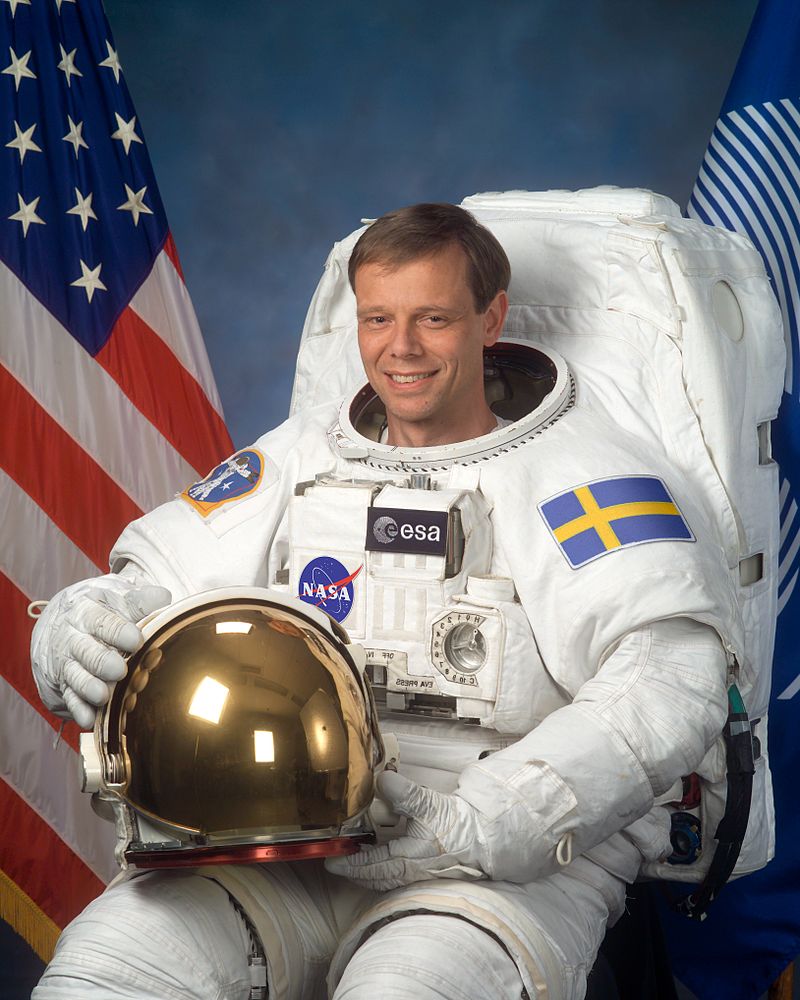
Arne Christer Fuglesang

Arne Christer Fuglesang
Arne Christer Fuglesang (born 18 March 1957) is a Swedish physicist and an ESA astronaut. He was first launched aboard the STS-116 Space Shuttle mission on 10 December 2006, making him the first Swedish citizen in space.
Fuglesang's first spaceflight mission was as a mission specialist on STS-116 in 2006, an assembly and crew-rotation mission to the International Space Station. This flight was called the Celsius Mission by ESA in recognition of Anders Celsius, the Swedish 18th-century astronomer who invented the Celsius temperature scale.
• First spacewalk with the primary task of Installation of the P5 truss segment performed together with Astronaut Robert Curbeam as EV1, 12 December.
• EV2 during second spacewalk which included first part of rewiring the power system of the ISS specifically channel 2 and 3. Also performed together with Astronaut Robert Curbeam as EV1, 14 December.
• An extra spacewalk (EVA4) attempting, successfully, to fix a problem when retracting a solar panel. Also performed together with Astronaut Robert Curbeam as EV1, 18 December. EVA duration: 6h 38min.
Total EVA time during STS-116: 18 hours and 15 minutes.
On 15 July 2008 Fuglesang was selected as a mission specialist of the STS-128, launched on 28–29 August 2009. STS-128 (ISS assembly mission "17A") delivered equipment allowing the ISS crew to be expanded from three to six astronauts.
During STS-128 Fuglesang also became the first spacewalker outside Russia and United States to do more than three spacewalks. With the completion of two more EVAs, he has performed five spacewalks.
Total EVA time from five spacewalks adds up to 31 hours 54 minutes giving Fuglesang a 29th place in history as of 14 September 2009.
314
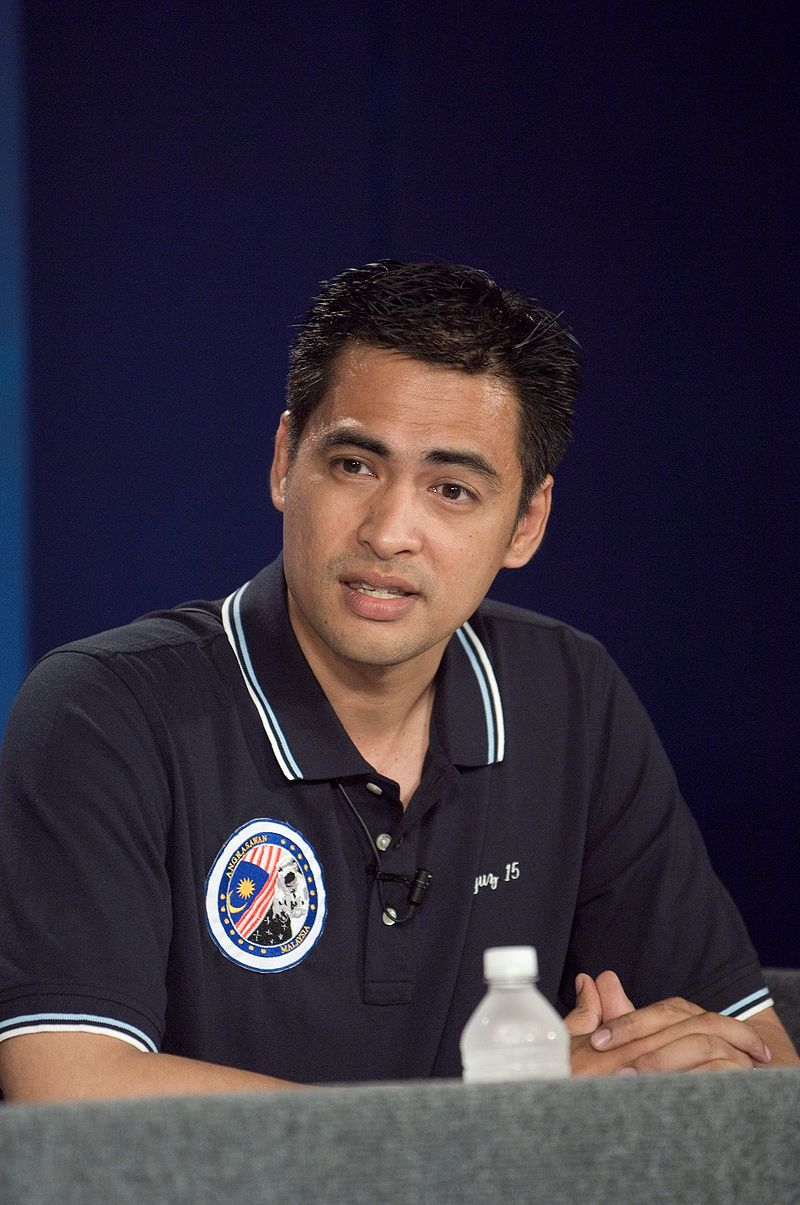
Sheikh Muszaphar Shukor Al Masrie bin Sheikh Mustapha

Sheikh Muszaphar Shukor Al Masrie bin Sheikh Mustapha
Sheikh Muszaphar Shukor Al Masrie bin Sheikh Mustapha (born 27 July 1972) is the first Malaysian astronaut. He launched to the International Space Station aboard Soyuz TMA-11 with the Expedition 16 crew on 10 October 2007.[2][3] Sheikh Muszaphar flew under an agreement with Russia through the Angkasawan program, and returned to Earth on 21 October 2007, aboard Soyuz TMA-10 with the Expedition 15 crew members, Fyodor Yurchikhin and Oleg Kotov.
Soyuz TMA-11 carrying Yuri Malenchenko, Peggy Whitson and Sheikh Muszaphar successfully launched at 13:22 UTC, Wednesday, 10 October 2007.
After 10 days in space, Sheikh Muszaphar boarded Soyuz TMA-10 for his return. TMA-10 undocked from the ISS at 07:14 UTC on 21 October, and deorbit occurred at 09:47. During atmospheric re-entry, the spacecraft transitioned to a ballistic reentry, resulting in it landing west of Arkalyk, approximately 340 km (210 mi) northwest of the intended Kazakhstan landing site. Landing occurred at 10:36 GMT, the duration of his flight is 10d 20h 14m.
315
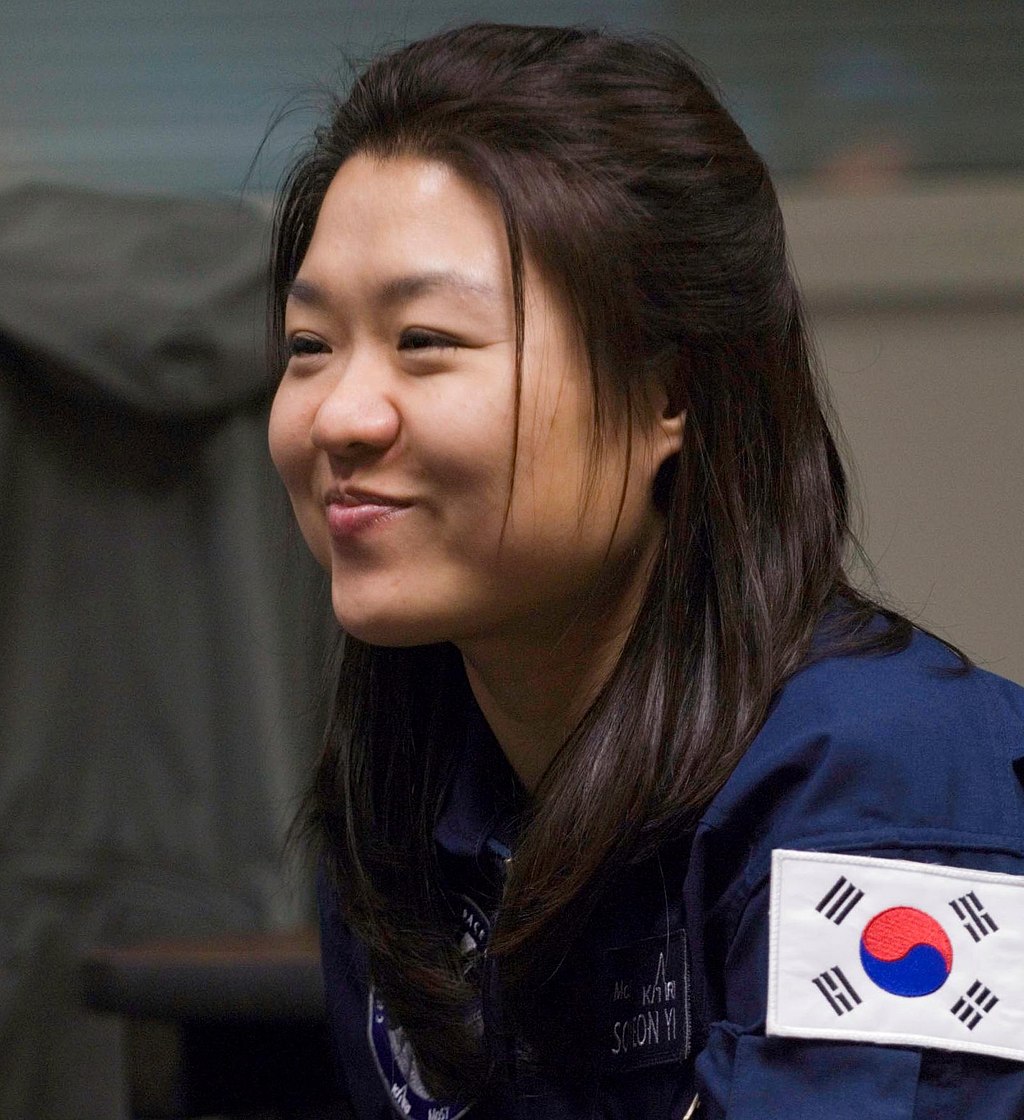
Yi So-yeon

Yi So-yeon
Yi So-yeon (born June 2, 1978) is a South Korean astronaut and biotechnologist who became the first Korean to fly in space.
She was born and raised in Gwangju, South Korea and graduated from KAIST with a Master's degree in Mechanical Engineering. In 2006, she was selected as one of two finalists in the Korean Astronaut Program: a mission to send the first Koreans to space.
On April 8, 2008, Yi was launched into space on board Soyuz TMA-12 with two Russian cosmonauts. She is the third woman, after Helen Sharman of the United Kingdom and Anousheh Ansari an Iranian American, to be the first national from their country in space.
At the end of the mission, Yi returned to Earth along with ISS crew members Peggy Whitson and Yuri Malenchenko aboard Soyuz TMA-11, on April 19, 2008.
316
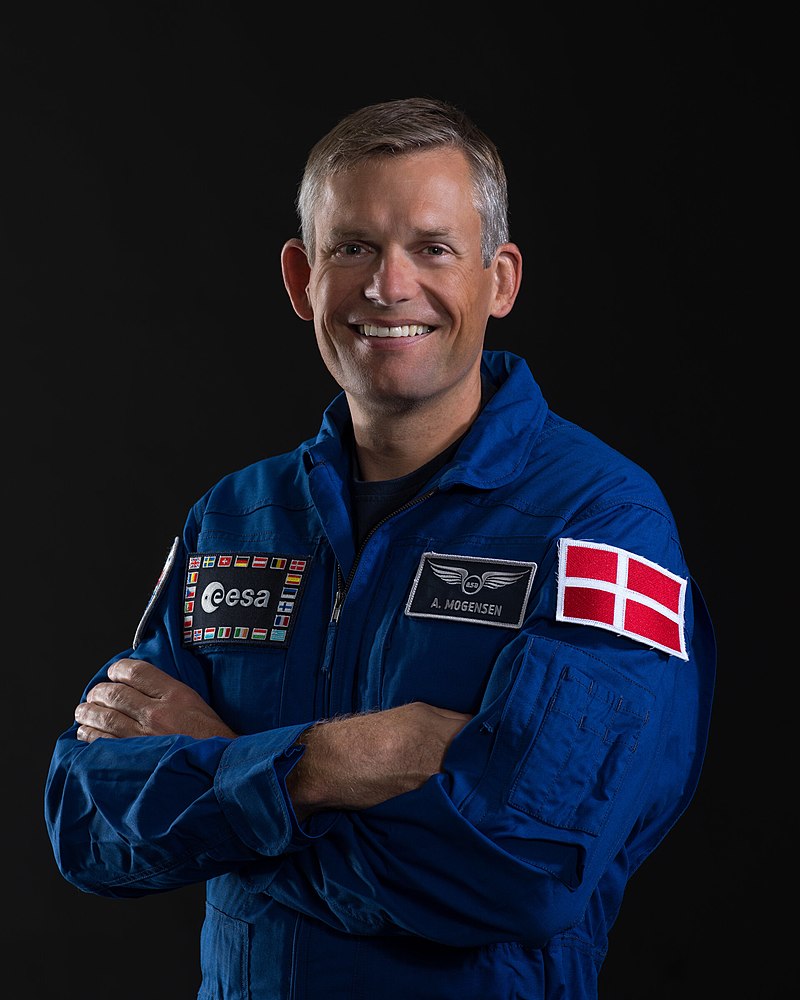
Andreas Enevold Mogensen

Andreas Enevold Mogensen
Andreas Enevold Mogensen (born 2 November 1976) is a Danish engineer and ESA astronaut who is best known for being the first Dane to fly in space as part of the European Space Agency's iriss program. Mogensen returned to space in August 2023 for his second spaceflight to the ISS onboard SpaceX Crew Dragon as the first non-American to serve as a pilot.
Mogensen was selected to become the first Danish astronaut by the European Space Agency in May 2009. He completed initial training and became a member of the European Astronaut Corps in November 2010.
Between September and November 2021, Mogensen participated in the fourth edition of ESA PANGAEA training program. Together with the NASA astronaut Kathleen Rubins, Mogensen went to the Italian Dolomites, to the Ries Crater in Germany and the volcanic landscapes of Lanzarote, Spain. ESA's Pangaea program prepares astronauts and space engineers to identify planetary geological features for future missions to the Moon, Mars and asteroids.
Mogensen's mission to the ISS was called "iriss". The mission name was chosen from suggestions received from across Europe. "iriss" had two logos, one to highlight the overall mission and one for the educational outreach activities.
On 2 September 2015, Mogensen was launched with Soyuz TMA-18M to ISS and landed with Soyuz TMA-16M ten days later.
Mogensen left the station on 11 September 2015. The crew landed at 00:51 UTC on 12 September 2015, just over three hours after departing the ISS.
In March 2022 he was selected as pilot of SpaceX Crew-7 and is the first European pilot of a spacecraft and the first pilot of a US spacecraft who is not a US citizen. He is also the ISS Expedition 70 commander. The European segment of the mission is called "huginn".
317
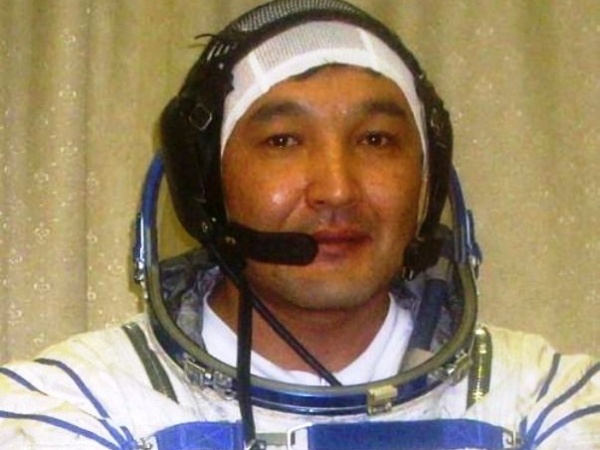
Aidyn Akanuly Aimbetov

Aidyn Akanuly Aimbetov
Aidyn Akanuly Aimbetov (Kazakh: born 27 July 1972) is a Kazakh cosmonaut.
Aimbetov was selected to the first Kazakh cosmonaut class in 2002, along with Mukhtar Aimakhanov, out of a pool of 2,000 candidates. From 2003 to 2009, he trained in Russia as a cosmonaut at Star City. He returned to Astana, in Kazakhstan, after failing to secure a spaceflight. He had been scheduled to fly in autumn 2009, but due to the world financial crisis, this fell through. Aimakhanov remained in Russia, becoming a Russian citizen, making Aimbetov the sole Kazakhstani cosmonaut. After returning, Aimbetov stayed in the JSC (national center of space research and technologies) of the National Space Agency (NSA) of Kazakhstan. He founded the Institute for Space Development to promote the space industry in Kazakhstan. He started the Young Cosmonauts School in the Astana Pupil's Palace in 2012. He was still flight ready in April 2015.
In June 2015, he was selected to fly on the Soyuz TMA-18M mission. The mission was projected to launch to the International Space Station on 1 September 2015. Aimbetov becomes the third Kazakh-born cosmonaut to fly since Kazakhstan's independence in 1991, and the first to fly under the Kazakh flag, and as part of KazCosmos. Aimbetov had originally been projected to fly on a 2017 launch. On 2 September 2015, Aimbetov launched from Baikonour, Kazakhstan, aboard Soyuz TMA-18M, along with rookie astronaut Andreas Mogensen and capsule commander cosmonaut Sergey Volkov. On 11 September 2015, Aimbetov returned from his 10-day mission to the International Space Station, and touched down on the Kazakhstan Steppe, aboard Soyuz TMA-16M.
318
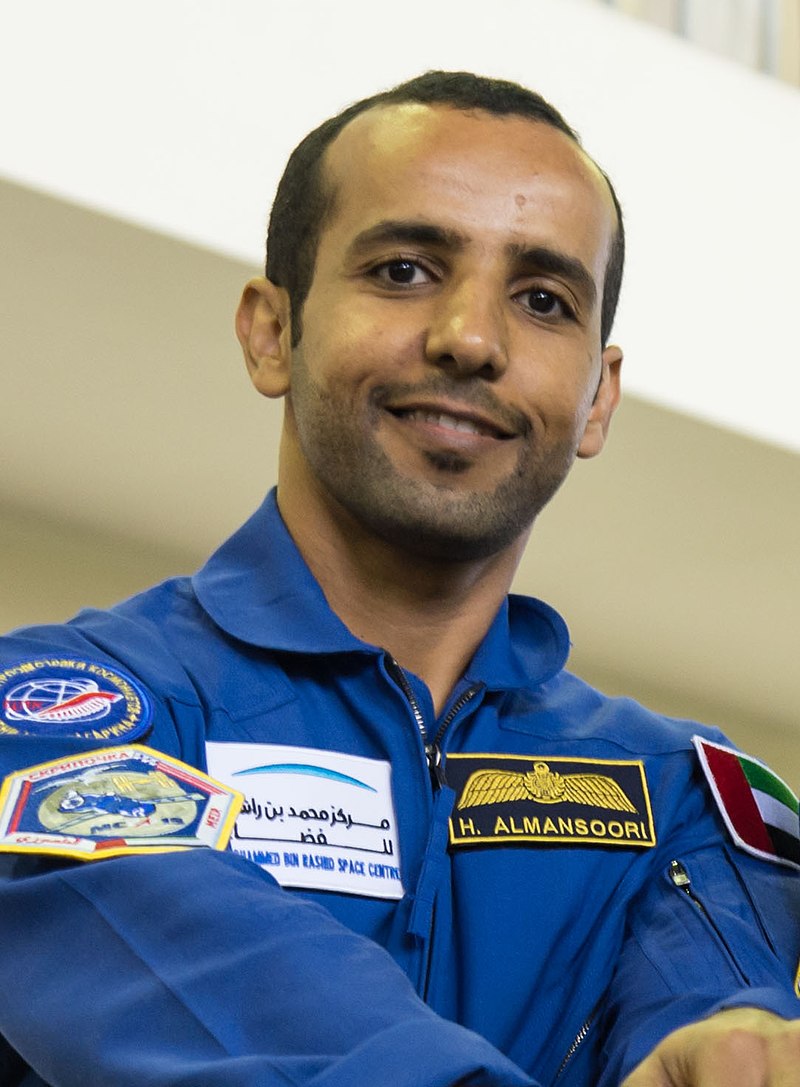
Hazza Al Mansouri

Hazza Al Mansouri
Hazza Al Mansouri (Arabic: "AlMansoori", full name Hazzaa Ali Abdan Khalfan AlMansoori is an Emirati astronaut and the first person from the United Arab Emirates in space. In 2019, he embarked on the UAE's first scientific mission to the International Space Station (ISS). The mission carried the slogan 'Zayed's Ambition', making the UAE the 19th country worldwide, and the first country in the Arab region, to travel to the ISS.
Al Mansoori, Skripocka and Meir launched on 25 September 2019 from the Baikonur Cosmodrome; the trio spent under six hours free flying in space before docking to the Zvezda module on the ISS. Originally the spacecraft was scheduled to dock to the Poisk module but Soyuz MS-13 had moved there a month earlier to allow for the uncrewed Soyuz MS-14 spacecraft to dock to the Zvezda module for a short period of time. Following docking the hatches between Soyuz MS-15 and Zvezda were opened, allowing Al Mansoori, Skripochka and Meir to travel inside and meet their six crew mates.
On 3 October 2019, Al Mansoori, Ovchinin and Hague boarded the Soyuz MS-12 spacecraft, and undocked from the ISS, ending Expedition 60 and officially beginning Expedition 61, the three spent around five hours free flying in space before de-orbiting and touching down on the Kazakh Steppe, following which Ovchinin and AlMansoori were flown to Star City, Russia, before AlMansoori began his journey back to the UAE.
319
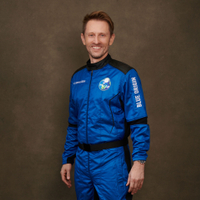
Chris Boshuizen

Chris Boshuizen
Chris Boshuizen travelled to space as a tourist on board Blue Origin NS-18 sub-orbital spaceflight mission operated by Blue Origin that launched on 13 October 2021. The mission was the eighteenth flight of the company's New Shepard integrated launch vehicle and spacecraft. It was the second crewed New Shepard launch. The flight, carrying four people including actor Chris Boshuizen, launched from Blue Origin's sub-orbital launch site in West Texas aboard the fourth flight of New Shepard booster NS4 and the spacecraft RSS First Step, both having previously flown on NS-14, NS-15, and NS-16 earlier in the year.
The crew of four include Blue Origin's vice president of mission and flight operations Audrey Powers, former NASA engineer and third Australian-born person in space Chris Boshuizen, vice chair for life sciences and healthcare at the French software company Dassault Systèmes Glen de Vries, and Canadian actor William Shatner.
320
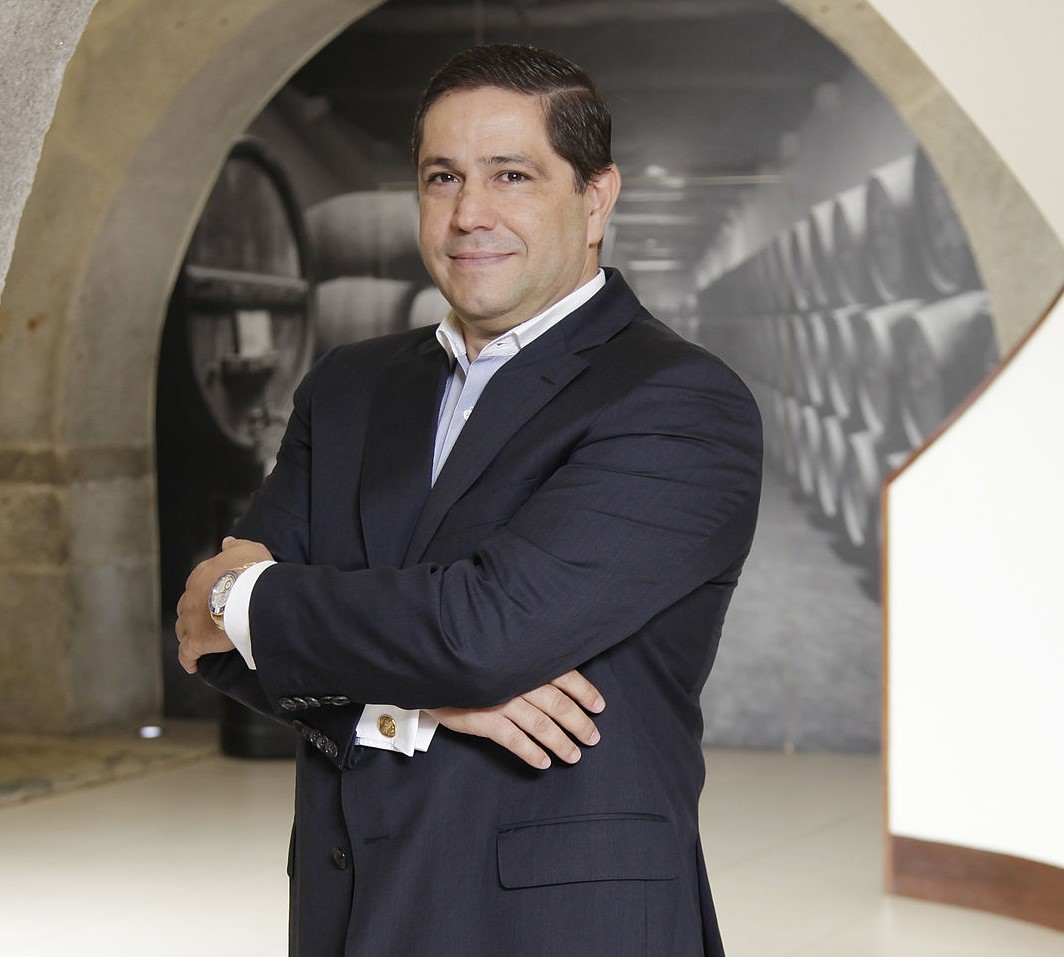
Mario Nuno dos Santos Ferreira

Mario Nuno dos Santos Ferreira
Mario Nuno dos Santos Ferreira (born 1968) is a Portuguese businessman and entrepreneur in the tourism, hotel, real estate and photography sectors, among others. Since 2021, he is the Chairman of Media Capital, a major Portuguese media company with holdings including CNN Portugal. He travelled as a space tourist on board Blue Origin NS-22
On 4 August 2022 at 8:57 (GMT-5), as part of the Blue Origin NS-22 mission, Mario Ferreira lifted off from Corn Ranch, Texas to space on board of New Shepard (NS4). He became the first Portuguese person to travel to space.
321
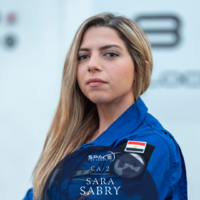
Sara Sabry

Sara Sabry
Sara Sabry (born May 23, 1993) is an Egyptian–Lebanese engineer, astronaut, entrepreneur and the founder and CEO of the non-profit organization Deep Space Initiative. She is best known for becoming the first Egyptian person and the first Arab woman and African woman to travel into space.
In 2022 Sabry was selected from seven thousand international applicants to participate in the Space for Humanity Citizen Astronaut Program, becoming the first Egyptian, Arab woman, and African woman to go into space. On August 4, 2022 she flew on Blue Origin NS-22 flight, a suborbital flight that reached an altitude of 107 km (66 miles) above sea level.
322
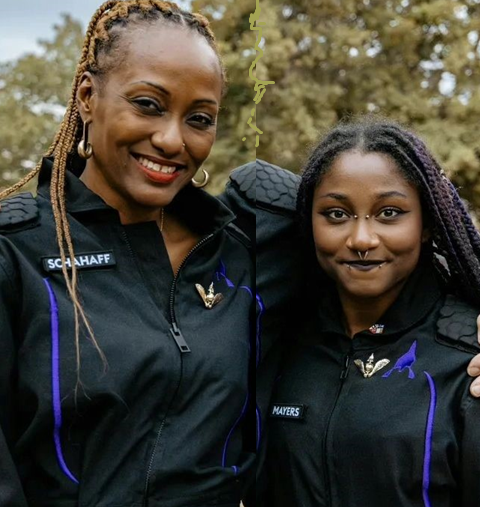
Keisha Schahaff and Anastatia Mayers

Keisha Schahaff and Anastatia Mayers
Keisha Schahaff (born 1976 or 1977) and Anastatia Mayers (born 2004) ar Antiguan and Barbudan, the mother and daughter duo, became the first citizen from Antigua and Barbuda and the first mother and daughter tourist duo to go into space. The Galactic 02 launch occurred 10 August 2023.
The trip, which launched on 10 August 2023, was the company's seventh spaceflight, second commercial space flight, and first private passenger launch. The expedition was expected to last a minimum of 90 minutes. Prior to the launch, all passengers underwent a "full medical examination by a doctor approved by the Federal Aviation Administration (FAA) many medical records checks," and pre-flight training.
Mayers and her mother are the first people from a Caribbean country to ever travel to space, as well as the first mother-daughter duo.
323
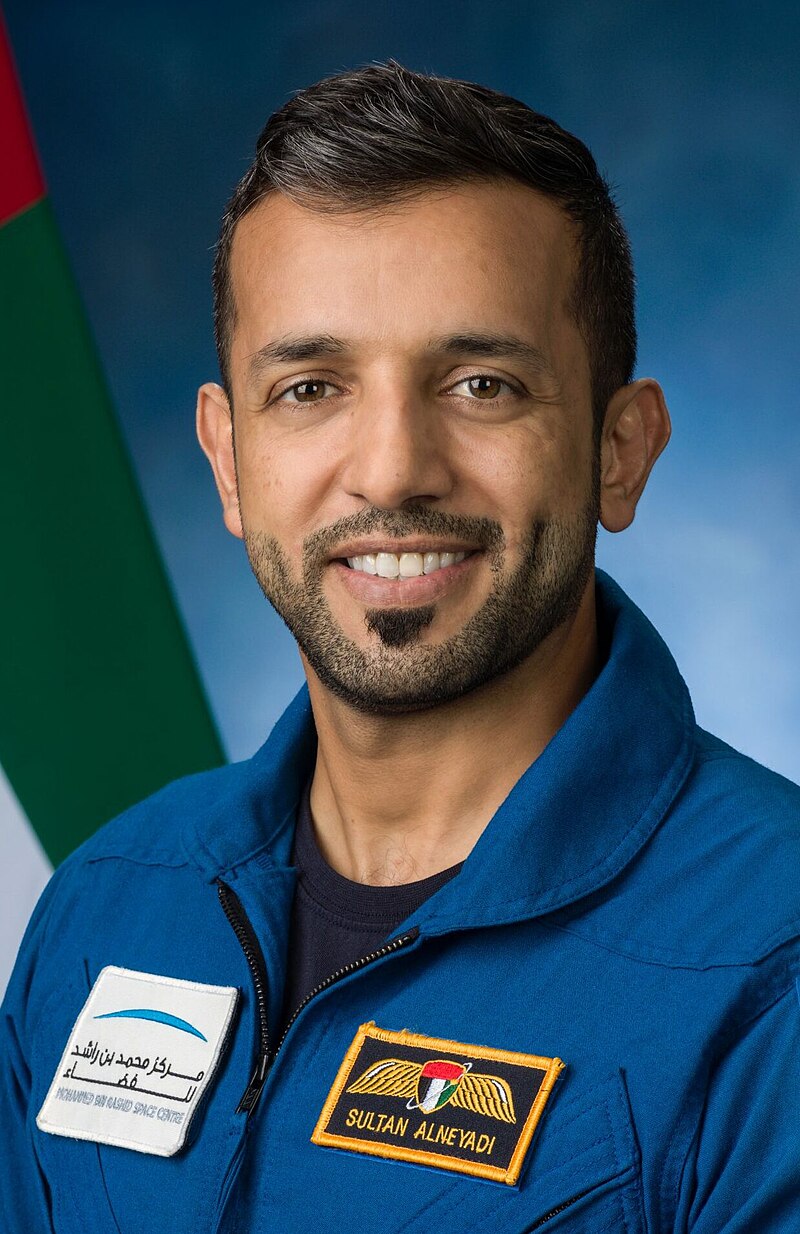
Sultan AlNeyadi

Sultan AlNeyadi
Sultan AlNeyadi (Arabic: born May 23, 1981) is an Emirati astronaut and one of the first two astronauts from the United Arab Emirates, along with Hazzaa AlMansoori. He is the first Arab to serve on the International Space Station (ISS) for a 6-month mission, as part of Expedition 69 and the first Arab Astronaut to perform a spacewalk.
AlNeyadi along with his Crew-6 team launched from Cape Canaveral in Florida on March 2, 2023. AlNeyadi also recently became the first Arab to undertake a spacewalk during Expedition 69, along with NASA astronaut Stephen Bowen.
During the spacewalk, which lasted 7 hours and 1 minute, they successfully completed a series of preparatory tasks which included routing power cables, as a precursor to the installation of the iROSA.
AlNeyadi, during his tenure of over 4,000 hours aboard the International Space Station (ISS), is spearheading 20+ research experiments and studies in collaboration with NASA, European Space Agency (ESA), Canadian Space Agency (CSA), Japan Aerospace Exploration Agency (JAXA) and the National Centre for Space Studies (CNES) on a wide range of topics.
AlNeyadi spent 185 days, 22 hours and 43 minutes in space.
324
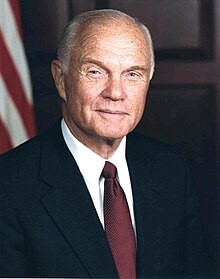
John Herschel Glenn Jr.

John Herschel Glenn Jr.
John Herschel Glenn Jr. (July 18, 1921 – December 8, 2016) was an American Marine Corps aviator, engineer, astronaut, businessman, and politician. He was the third American in space, and the first American to orbit the Earth, circling it three times in 1962. In 1998, he flew into space again at the age of 77.
He was one of the Mercury Seven, military test pilots selected in 1959 by NASA as the nation's first astronauts. On February 20, 1962, Glenn flew the Friendship 7 mission, becoming the first American to orbit the Earth, the third American and fifth person in history to be in space. He received the NASA Distinguished Service Medal in 1962, the Congressional Space Medal of Honor in 1978, was inducted into the U.S. Astronaut Hall of Fame in 1990, and received the Presidential Medal of Freedom in 2012.
In 1998, at age 77, Glenn flew on Space Shuttle Discovery's STS-95 mission, making him the oldest person to enter Earth orbit, the only person to fly in both the Mercury and the Space Shuttle programs, and the first Member of Congress to visit space since Congressman Bill Nelson (D-FL) in 1986.
325
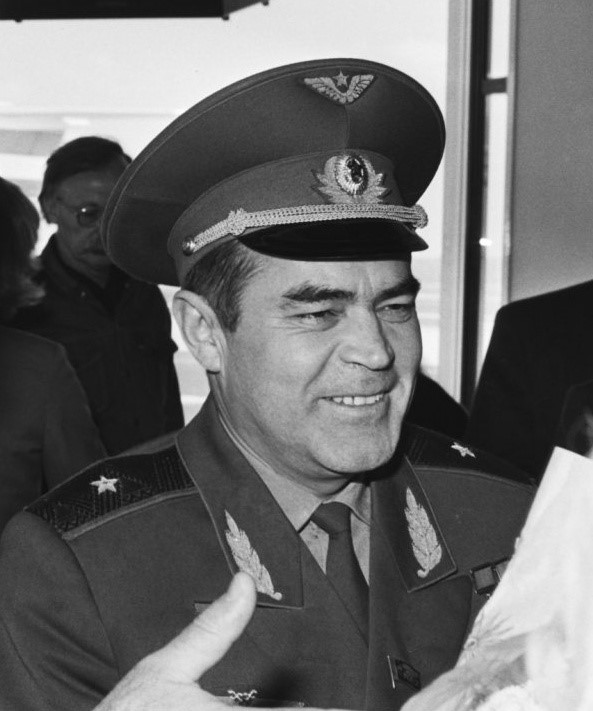
Andriyan Grigoryevich Nikolayev

Andriyan Grigoryevich Nikolayev
Andriyan Grigoryevich Nikolayev (Chuvash and Russian 5 September 1929 – 3 July 2004) was a Soviet cosmonaut. In 1962, aboard Vostok 3, he became the third Soviet cosmonaut to fly into space.
Nikolayev flew on two space flights: Vostok 3 (becoming the third Soviet cosmonaut) and Soyuz 9. His call sign in these flights was Falcon. On both, he set new endurance records for the longest time a human being had remained in orbit. He also served as backup for the Vostok 2 and Soyuz 8 missions.
Nikolayev was also the first person to make a television broadcast from space, in August 1962. Vostok 3 was part the first dual space flight, with Pavel Popovich on Vostok 4.
In the early days of space travel, it was usual to place trainee astronauts into isolation chambers to see how long they could last alone. They sat in silence unable to gauge time. Many men cracked but Nikolayev lasted the longest – four days – and became known as the Iron Man.
326
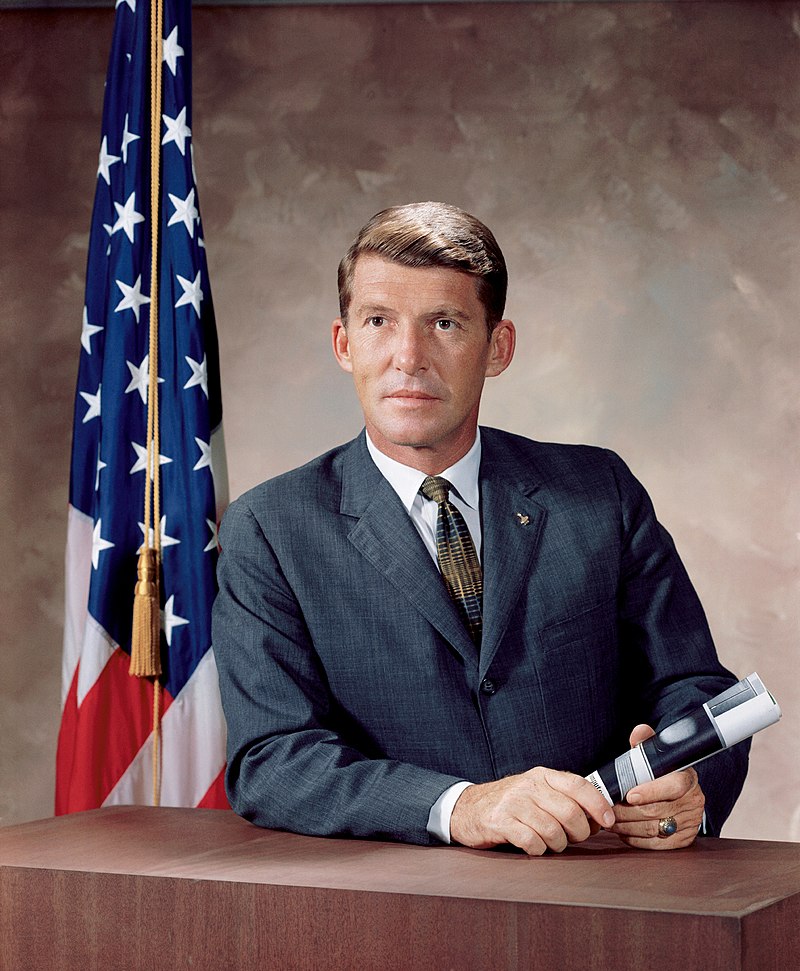
Walter Marty Schirra Jr

Walter Marty Schirra Jr
Walter Marty Schirra Jr. (March 12, 1923 – May 3, 2007) was an American naval aviator, test pilot, and NASA astronaut. In 1959, he became one of the original seven astronauts chosen for Project Mercury, which was the United States' first effort to put humans into space. On October 3, 1962, he flew the six-orbit, nine-hour, Mercury-Atlas 8 mission, in a spacecraft he nicknamed Sigma 7, becoming the fifth American and ninth human to travel into space. In December 1965, as part of the two-man Gemini program, he achieved the first space rendezvous, station-keeping his Gemini 6A spacecraft within 1 foot (30 cm) of the sister Gemini 7 spacecraft. In October 1968, he commanded Apollo 7, an 11-day low Earth orbit shakedown test of the three-man Apollo Command/Service Module and the first crewed launch for the Apollo program.
327
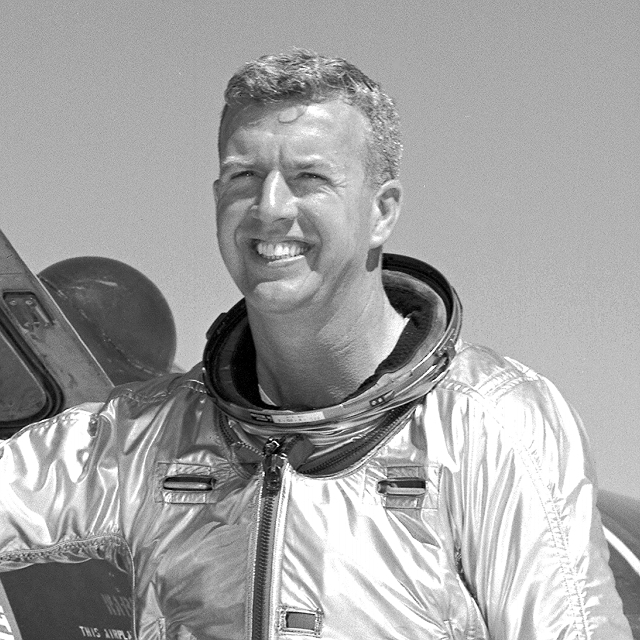
Joseph Albert Walker

Joseph Albert Walker
Joseph Albert Walker (February 20, 1921 – June 8, 1966) (Capt, USAF) was an American World War II pilot, experimental physicist, NASA test pilot, and astronaut who was the first person to fly an airplane to space. He was one of twelve pilots who flew the North American X-15, an experimental spaceplane jointly operated by the Air Force and NASA.
In 1961, Walker became the first human in the mesosphere when piloting Flight 35, and in 1963, Walker made three flights above 50 miles, thereby qualifying as an astronaut according to the United States definition of the boundary of space. The latter two, X-15 Flights 90 and 91, also surpassed the Kármán line, the internationally accepted boundary of 100 kilometers (62.14 miles). Making the latter flights immediately after the completion of the Mercury and Vostok programs, Walker became the first person to fly to space twice. He was the only X-15 pilot to fly above 100 km during the program.
328
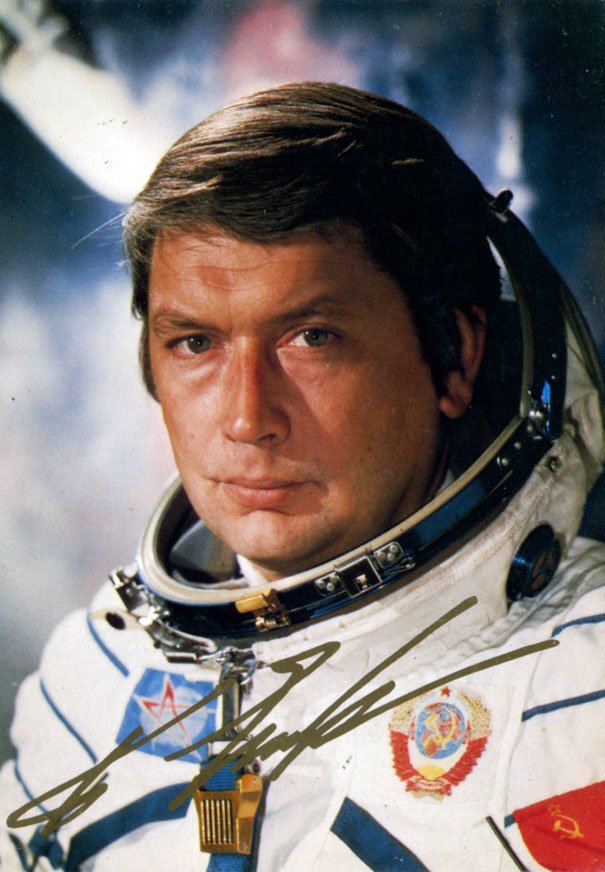
Boris Yegorov

Boris Yegorov
Boris Yegorov (November 26, 1937 – September 12, 1994) was a Soviet physician and cosmonaut who became the first medical doctor to travel to space. He was born in Moscow, Soviet Union (now Russia) and received his medical degree from the Moscow Medical Institute in 1961.
Yegorov was selected as a member of the multi-disciplinary team that flew on Voskhod 1. As a result of this space flight, Yegorov was awarded the title of the Hero of the Soviet Union on October 19, 1964.
After his successful spaceflight, Yegorov continued his work in space medicine and became a professor at the Moscow Medical Institute. He was involved in the development of medical equipment for use in space and contributed significantly to the understanding of the effects of spaceflight on the human body.
329
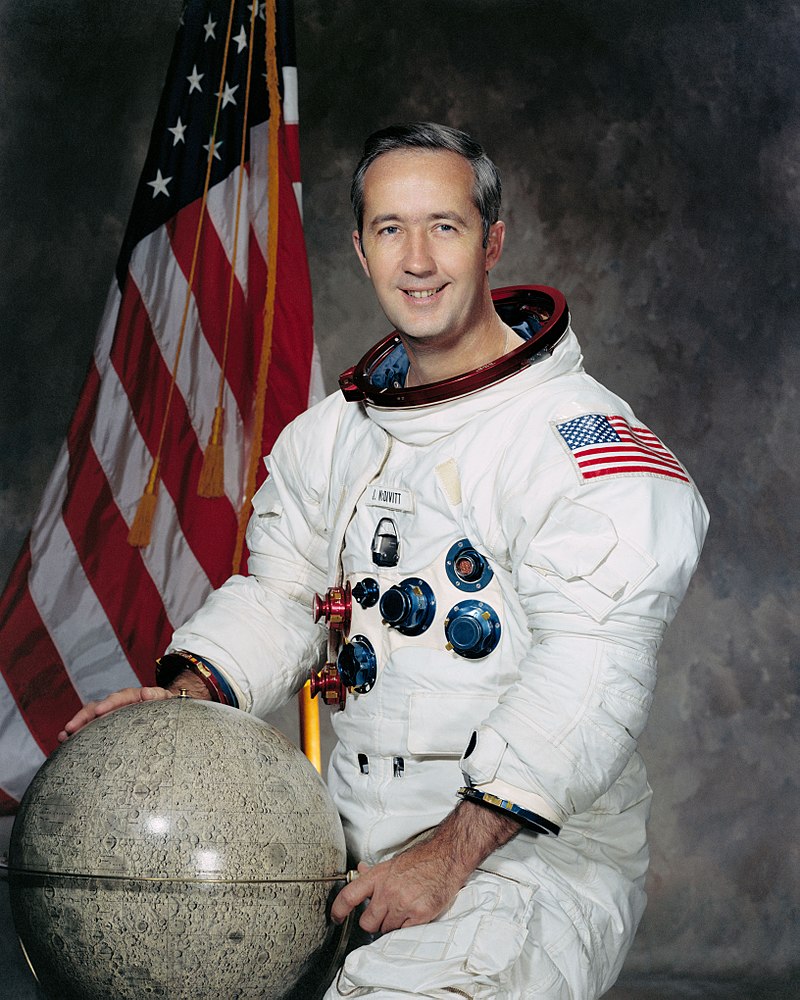
James Alton McDivitt Jr.

James Alton McDivitt Jr.
James Alton McDivitt Jr. (June 10, 1929 – October 13, 2022) was an American test pilot, United States Air Force (USAF) pilot, aeronautical engineer, and NASA astronaut in the Gemini and Apollo programs.
In 1962, McDivitt was selected as an astronaut by NASA as part of Astronaut Group 2. He commanded the Gemini 4 mission, during which Ed White performed the first U.S. spacewalk, and later the Apollo 9 flight, which was the first crewed flight test of the Apollo lunar module and the complete set of Apollo flight hardware.
Gemini 4 was launched on June 3, 1965. The mission lasted 97 hours and 56 minutes, and made 62 orbits.
Apollo 9, McDivitt's ten-day Earth orbital Lunar module test mission, lifted off on March 3, 1969. Because there were two spacecraft, two names were required. McDivitt's crew called their lunar module "Spider" and the command module "Gumdrop".
After 10 days during which it had made 151 orbits, Apollo 9 splashed safely down in the Atlantic, where it was retrieved by the USS Guadalcanal.
330
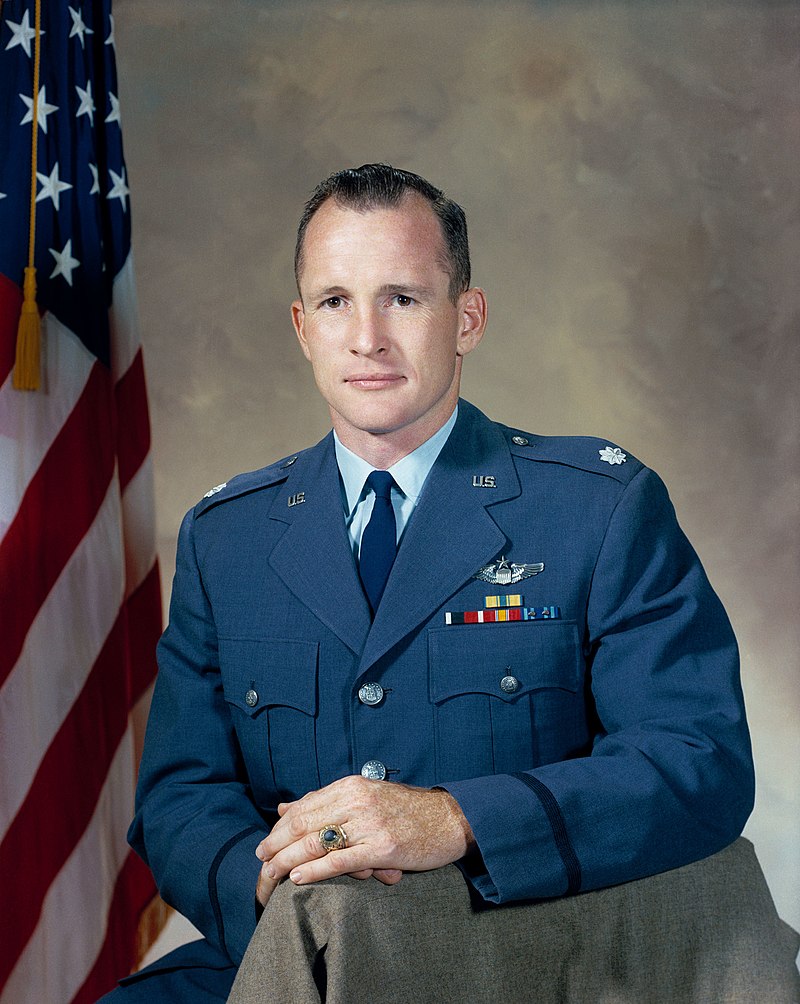
Edward Higgins White II

Edward Higgins White II
Edward Higgins White II (November 14, 1930 – January 27, 1967) was an American aeronautical engineer, United States Air Force officer, test pilot, and NASA astronaut. He was a member of the crews of Gemini 4 and Apollo 1.
He was assigned as pilot of Gemini 4 alongside command pilot James McDivitt. On June 3, 1965, White became the first American to walk in space. He was then assigned as senior pilot of the first crewed Apollo mission, Apollo 1. White died on January 27, 1967, alongside astronauts Virgil "Gus" Grissom and Roger B. Chaffee in a fire during pre-launch testing for Apollo 1 at Cape Canaveral, Florida.
331
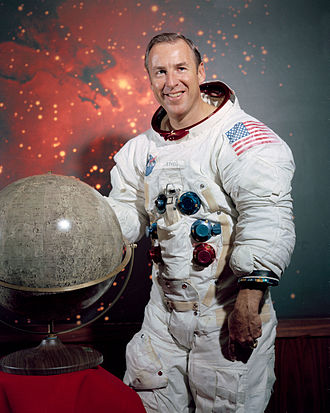
James Arthur Lovell Jr.

James Arthur Lovell Jr.
James Arthur Lovell Jr. (born March 25, 1928) is an American retired astronaut, naval aviator, test pilot and mechanical engineer. In 1968, as command module pilot of Apollo 8, he became, with Frank Borman and William Anders, one of the first three astronauts to fly to and orbit the Moon. He then commanded the Apollo 13 lunar mission in 1970 which, after a critical failure en route, circled the Moon and returned safely to Earth.
332
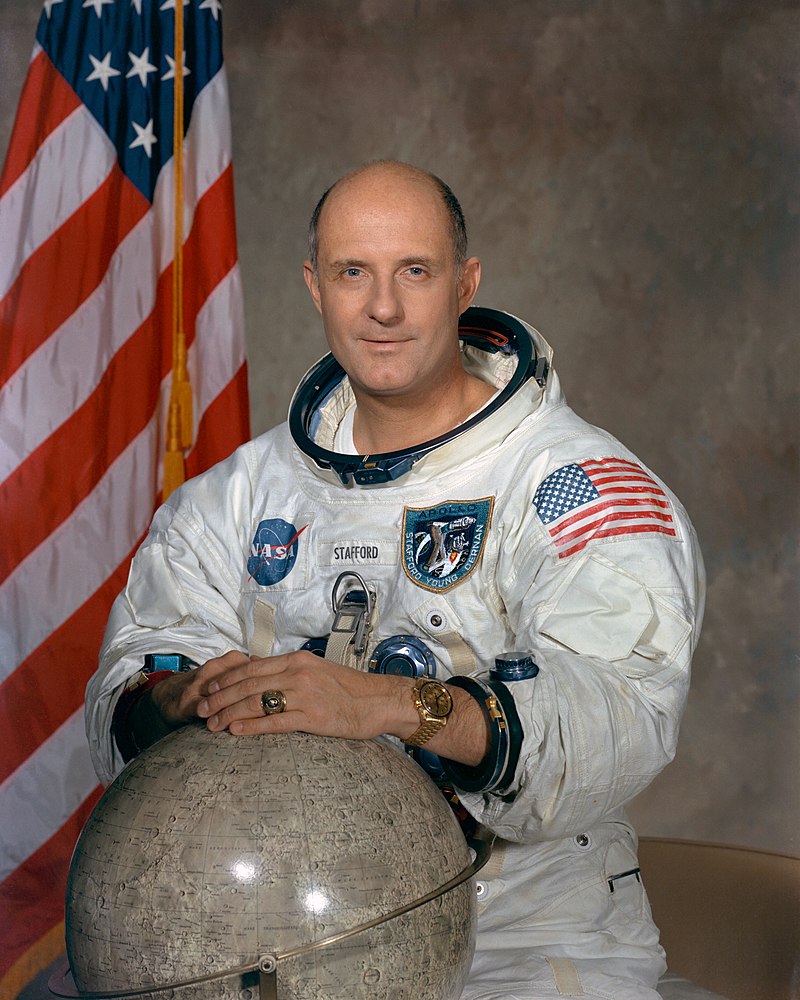
Thomas Patten Stafford

Thomas Patten Stafford
Thomas Patten Stafford (born September 17, 1930) is an American former Air Force officer, test pilot, and NASA astronaut, and one of 24 astronauts who flew to the Moon. He also served as Chief of the Astronaut Office from 1969 to 1971.
On December 15, 1965, Gemini 6A lifted off and rendezvoused with Gemini 7. The two spacecraft kept station for about five hours, coming within feet of each other. Gemini 6A splashed down on December 16, and was recovered by USS Wasp.
Gemini 9A launched on June 3, and rendezvoused with the ATDA on the second orbit. However, the shroud on the ATDA had only partially opened, and Gemini 9A was unable to dock with it. Nonetheless, Stafford and Cernan conducted orbital rendezvous maneuvers with the ATDA, including a simulated rescue of a lunar module in a lower orbit.
On June 6, Gemini 9A landed, and was recovered by USS Wasp.
After Gemini 9A, Stafford was assigned as the backup command module pilot on what was then planned as Apollo 2, with Frank Borman as the commander and Mike Collins as the lunar module pilot. For his technical assignment, Stafford was tasked as an astronaut liaison for the development of Apollo guidance and navigation systems, as well as the command and service module. In late 1966, he was reassigned to Apollo 2 backup commander, with Apollo 10 crewmates John Young as the command module pilot and Gene Cernan as the lunar module pilot. While testing the command module, they received word of the Apollo 1 fire and subsequent suspension of the Apollo program.
Apollo 10 lifted off on May 18, 1969. Despite heavy oscillation during ascent, Apollo 10 achieved orbit without incident, docked the LM and CM, and achieved its translunar injection burn. Upon arriving in lunar orbit, Stafford and Cernan undocked in the LM and entered an elliptical orbit with a periapsis (the closest distance) of nine miles over the lunar surface. The LM docked with the CM to return the astronauts and was jettisoned. After two days in lunar orbit, Apollo 10 began its return trajectory. Apollo 10 splashed down east of Samoa and was recovered by USS Princeton.
In July 1969, Stafford replaced Alan Shepard (who had returned to flight status) as Chief of the Astronaut Office. Along with Director of Flight Crew Operations Deke Slayton, Stafford oversaw assignments to the upcoming Apollo and Skylab missions until Shepard resumed the position after Apollo 14 in July 1971. During this period, U.S. President Richard Nixon and Soviet Premier Alexei Kosygin agreed to the Apollo-Soyuz Test Project (ASTP). Stafford was promoted to the rank of brigadier general in late 1972, and was soon named the commander of ASTP, along with Slayton.
Beginning in 1973, the ASTP team trained extensively in Russia and the United States. Soyuz 19, carrying Alexei Leonov and Valery Kubasov, launched on July 15, 1975, at 12:20 UTC, followed by Apollo at 19:50 UTC. After two days in space, Soyuz and Apollo docked on July 17, where the crews met and conducted joint experiments and held press conferences Apollo remained in orbit until July 24. All crew were safely recovered aboard USS New Orleans, and were hospitalized in Hawaii for edema (swelling) from fuel inhalation.â
333
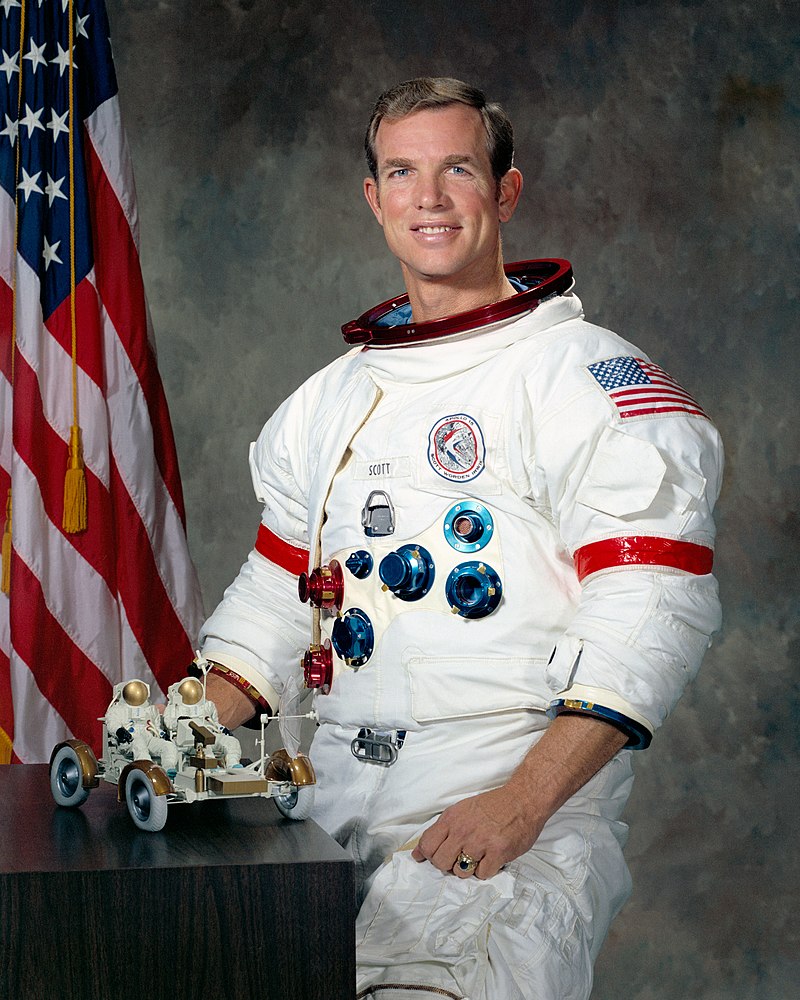
David Randolph Scott

David Randolph Scott
David Randolph Scott (born June 6, 1932) is an American retired test pilot and NASA astronaut who was the seventh person to walk on the Moon. Selected as part of the third group of astronauts in 1963, Scott flew to space three times and commanded Apollo 15, the fourth lunar landing; he is one of four surviving Moon walkers and the only living commander of a spacecraft that landed on the Moon.
As an astronaut, Scott made his first flight into space as a pilot of the Gemini 8 mission, along with Neil Armstrong, in March 1966, spending just under eleven hours in low Earth orbit. He would have been the second American astronaut to walk in space had Gemini 8 not made an emergency abort. Scott then spent ten days in orbit in March 1969 as Command Module Pilot of Apollo 9, a mission that extensively tested the Apollo spacecraft, along with Commander James McDivitt and Lunar Module Pilot Rusty Schweickart.
After backing up Apollo 12, Scott made his third and final flight into space as commander of the Apollo 15 mission, the fourth crewed lunar landing and the first J mission. Scott and James Irwin remained on the Moon for three days.
334
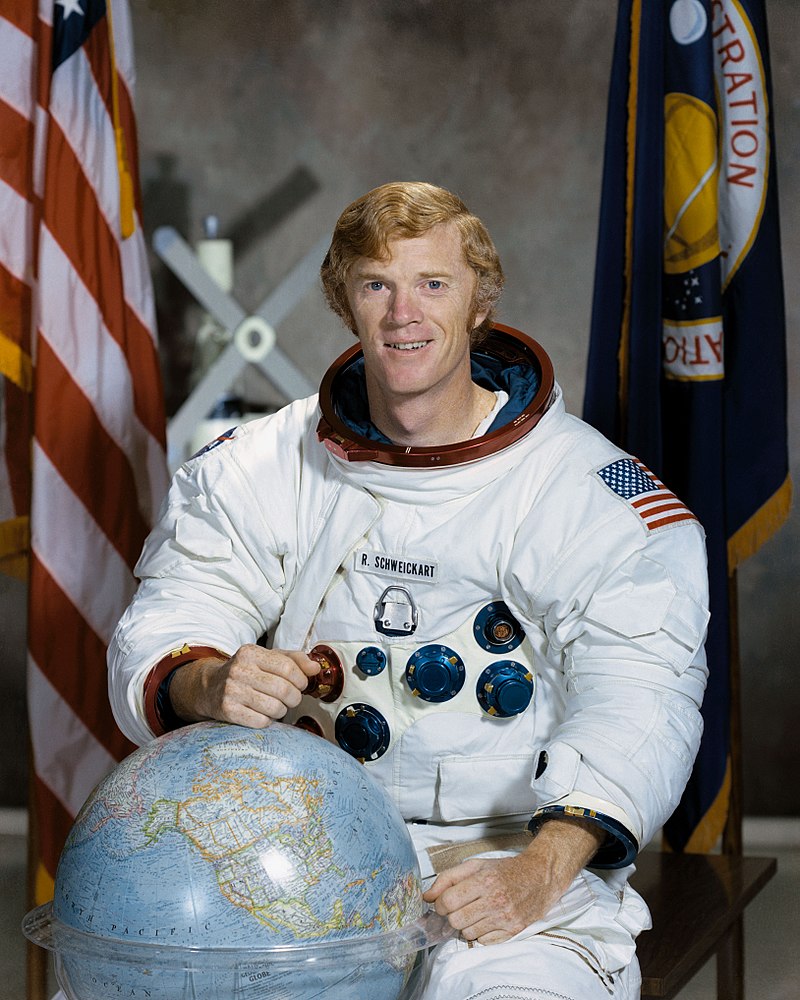
Russell Louis Schweickart

Russell Louis Schweickart
Russell Louis Schweickart (also Schweikart; born October 25, 1935) is an American aeronautical engineer, and a former NASA astronaut, research scientist, U.S. Air Force fighter pilot, as well as a former business executive and government executive.
Schweickart was selected in 1963 for NASA's third astronaut group. He was the Lunar Module Pilot on the 1969 Apollo 9 mission, the first crewed flight test of the lunar module, on which he performed the first in-space test of the portable life support system used by the Apollo astronauts who walked on the Moon. As backup commander of the first crewed Skylab mission in 1973, he was responsible for developing the hardware and procedures used by the first crew to perform critical in-flight repairs of the Skylab station. After Skylab, he served for a time as Director of User Affairs in NASA's Office of Applications.
335
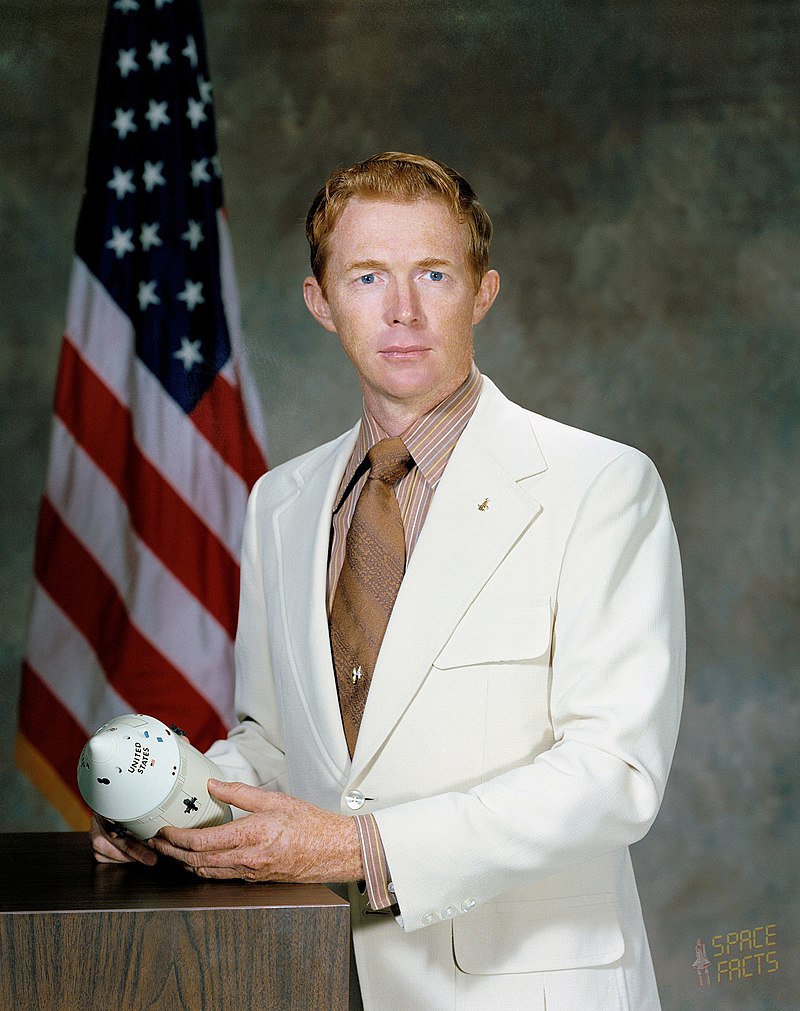
Stuart Allen Roosa

Stuart Allen Roosa
Stuart Allen Roosa (August 16, 1933 – December 12, 1994) was an American aeronautical engineer, smokejumper, United States Air Force pilot, test pilot, and NASA astronaut, who was the Command Module Pilot for the Apollo 14 mission. The mission lasted from January 31 to February 9, 1971, and was the third mission to land astronauts (Alan Shepard and Edgar Mitchell) on the Moon. While Shepard and Mitchell spent two days on the lunar surface, Roosa conducted experiments from orbit in the Command Module Kitty Hawk. He was one of 24 men to travel to the Moon, which he orbited 34 times.
336
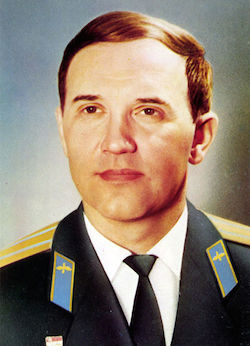
Georgy Timofeyevich Dobrovolsky

Georgy Timofeyevich Dobrovolsky
Georgy Timofeyevich Dobrovolsky (Russian: 1 June 1928 – 30 June 1971) was a Soviet cosmonaut who commanded the three-man crew of the Soyuz 11 spacecraft. They became the world's first space station crew aboard Salyut 1, but died of asphyxiation because of an accidentally opened valve. They were the first and only humans to have died in space.
After a normal re-entry, the capsule was opened and the crew was found dead.[2] It was discovered that a valve had opened just prior to leaving orbit that had allowed the capsule's atmosphere to vent away into space, suffocating the crew.
337
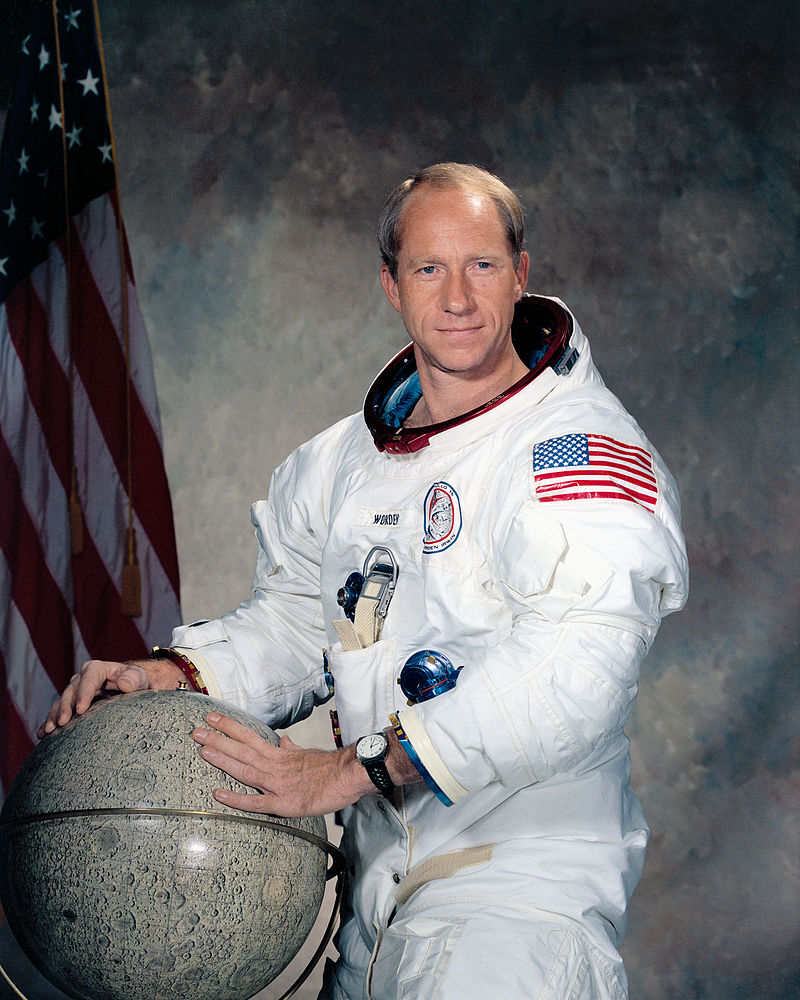
Alfred Merrill Worden

Alfred Merrill Worden
Alfred Merrill Worden (February 7, 1932 – March 18, 2020) was an American test pilot, engineer and NASA astronaut who was command module pilot for the Apollo 15 lunar mission in 1971. One of 24 people to have flown to the Moon, he orbited it 74 times in the command module (CM) Endeavour.
After Apollo 15 reached lunar orbit, and his crewmates departed to land on the Moon, Worden spent three days alone in the CM, becoming in the process the individual who traveled the farthest from any other human being, a distinction he still holds. He took many photographs of the Moon and operated a suite of scientific instruments that probed the Moon. During Apollo 15's return flight to Earth, Worden performed an extravehicular activity (EVA), or spacewalk, to retrieve film cassettes from cameras on the exterior of the spacecraft. It was the first "deep space" EVA in history, and as of 2022 remains the one that has taken place farthest from Earth.
338
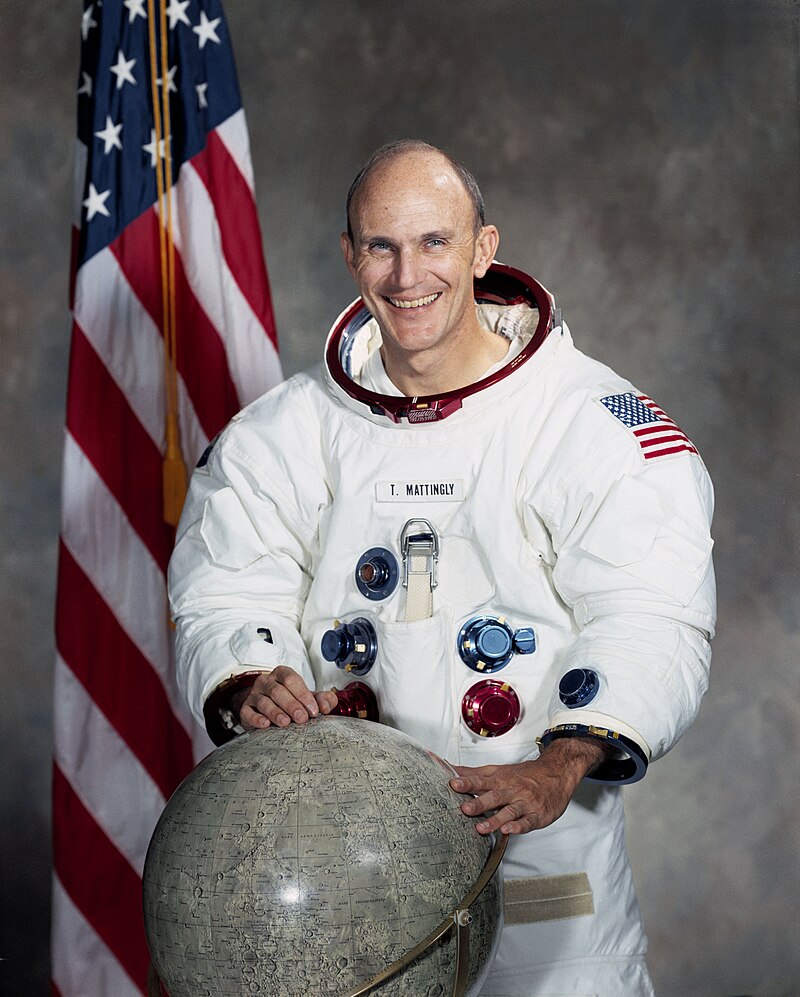
Thomas Kenneth Mattingly II

Thomas Kenneth Mattingly II
Thomas Kenneth Mattingly II (March 17, 1936 – October 31, 2023) was an American aviator, aeronautical engineer, test pilot, rear admiral in the United States Navy, and astronaut who flew on Apollo 16 and Space Shuttle STS-4 and STS-51-C missions.
Mattingly flew as Command Module Pilot for Apollo 16 and made 64 lunar orbits, making him one of 24 people to fly to the Moon. Mattingly and his Apollo 16 commander, John Young, are the only people to have flown to the Moon and also a Space Shuttle mission. (Fred Haise, his former training crewmate from Apollo 13, performed atmospheric flight testing of the Space Shuttle Approach and Landing Tests.)
During Apollo 16's return flight to Earth, Mattingly performed an extravehicular activity (EVA) to retrieve film cassettes from the exterior of the spacecraft, the command and service module. It was the second "deep space" EVA in history, at great distance from any planetary body. As of 2023, it remains one of only three such EVAs which have taken place, all during the Apollo program's J-missions.
339
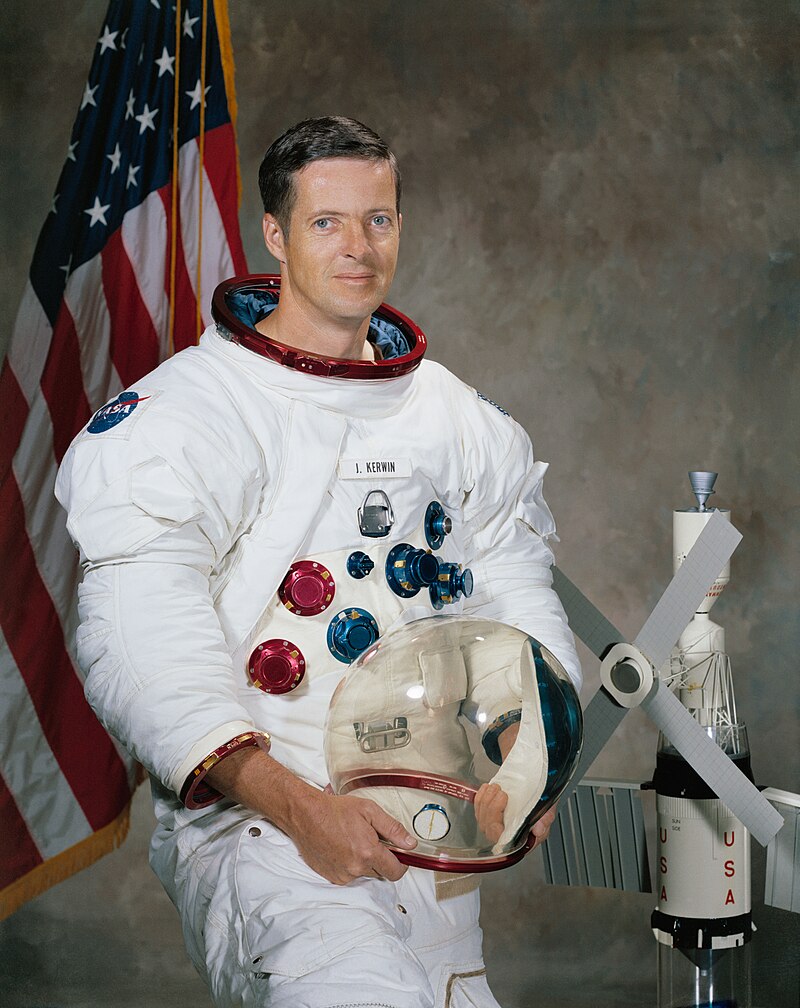
Joseph Peter Kerwin

Joseph Peter Kerwin
Joseph Peter Kerwin (born February 19, 1932) is an American physician and former NASA astronaut. He served as the science pilot for the Skylab 2 mission from May 25, 1973, to June 22, 1973. He was the first physician to be selected for astronaut training and the first doctor from the United States to enter space.
Kerwin was the one who uttered the words during Apollo 13: "Farewell, Aquarius, and we thank you. He was inducted into the United States Astronaut Hall of Fame in 1997.
340

Paul Joseph Weitz

Paul Joseph Weitz
Paul Joseph Weitz was born in 1932 in Erie, Pennsylvania, United States (July 25, 1932 – October 22, 2017) was an American naval officer and aviator, aeronautical engineer, test pilot, and NASA astronaut, who flew into space twice. He was a member of the three-man crew who flew on Skylab 2, the first crewed Skylab mission. He was also commander of the STS-6 mission, the maiden flight of the Space Shuttle Challenger.
He served as pilot on the crew of Skylab 2 (SL-2), which launched on May 25 and splashed down on June 22, 1973. SL-2 was the first crewed Skylab mission. The mission lasted for 28 days, a record at the time. In 1976 Weitz retired from NASA and went back to the Navy, but he returned to NASA to fly the maiden spaceflight of the Challenger at over 50 years old.
Weitz was spacecraft commander on the crew of STS-6, which launched from Kennedy Space Center, Florida, on April 4, 1983. This was the maiden voyage of the orbiter Challenger. Mission duration was 120 hours before Challenger landed on a concrete runway at Edwards Air Force Base, California, on April 9, 1983. With the completion of this flight, Weitz logged a total of 793 hours in space.
341
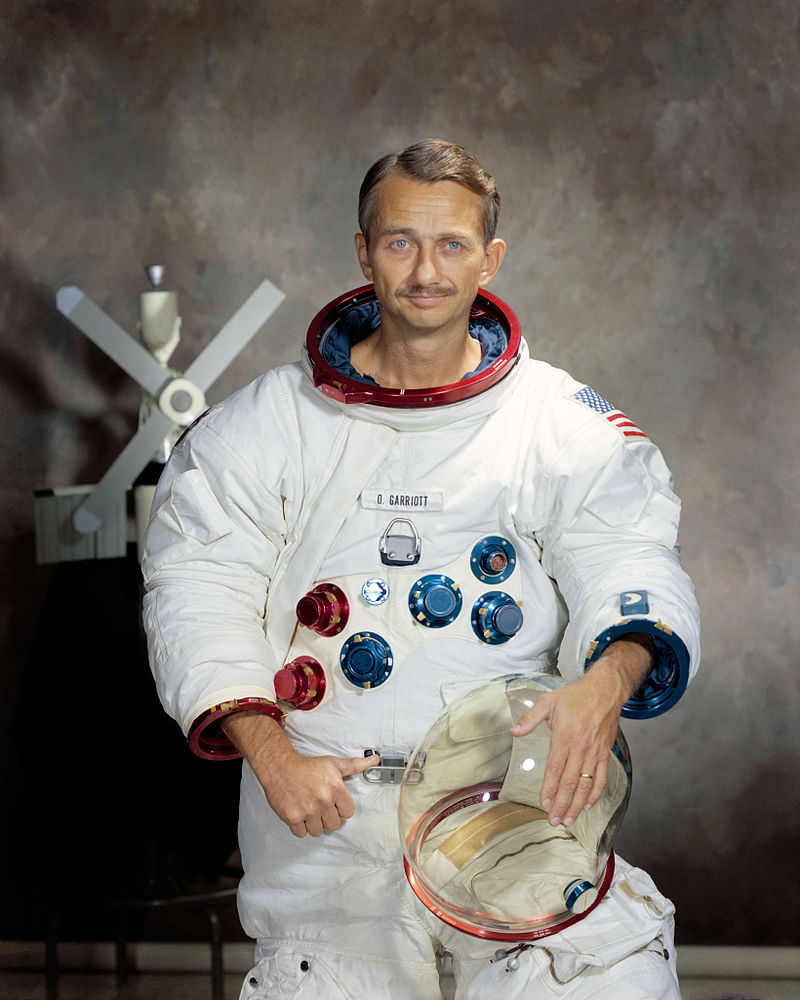
Owen Kay Garriott

Owen Kay Garriott
Owen Kay Garriott (November 22, 1930 – April 15, 2019) was an American electrical engineer and NASA astronaut, who spent 60 days aboard the Skylab space station in 1973 during the Skylab 3 mission, and 10 days aboard Spacelab-1 on a Space Shuttle mission in 1983.
342
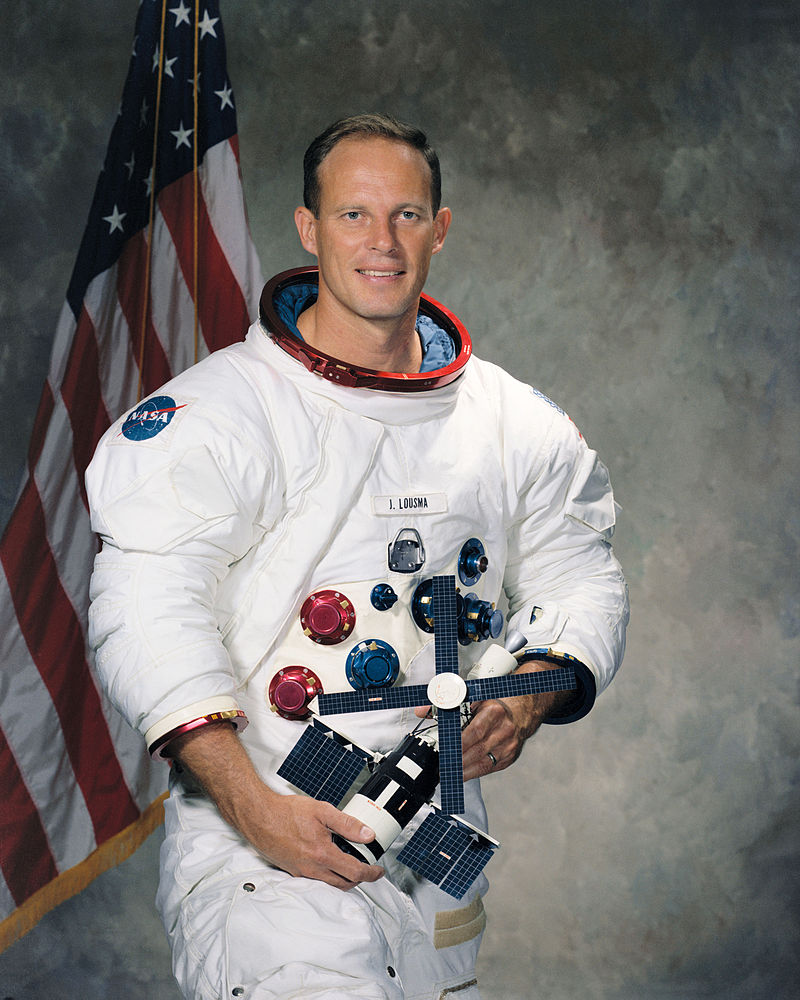
Jack Robert Lousma

Jack Robert Lousma
Jack Robert Lousma was born in Grand Rapids, Michigan, on February 29, 1936. He is of Dutch (Frisian) descent, is an American astronaut, aeronautical engineer, retired United States Marine Corps officer, former naval aviator, NASA astronaut, and politician. He was a member of the second crew, Skylab-3, on the Skylab space station in 1973. In 1982, he commanded STS-3, the third Space Shuttle mission. Lousma was inducted into the United States Astronaut Hall of Fame in 1997. He is the last living crew member of both of his spaceflights.
343
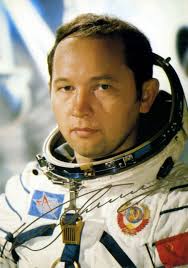
Gennady Vasiliyevich Sarafanov

Gennady Vasiliyevich Sarafanov
Gennady Vasiliyevich Sarafanov (Russian: 1 January 1942 – 29 September 2005) was a Soviet cosmonaut who flew on the Soyuz 15 spaceflight in 1974. This mission was intended to dock with the space station Salyut 3, but failed to do so after the docking system malfunctioned.
Sarafanov was born in Sinenkiye, Saratov Oblast, USSR. He graduated from the Soviet Air Force academy and held the rank of colonel.
He made a single spaceflight before resigning from the space programme in 1986 and subsequently lectured on technology.
344
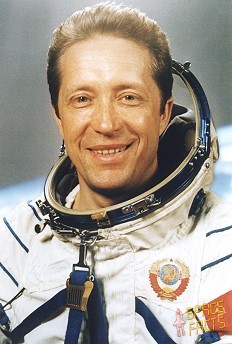
Vladimir Viktorovich Aksyonov

Vladimir Viktorovich Aksyonov
Vladimir Viktorovich Aksyonov (Russian: born 1 February 1935) is a former Soviet cosmonaut who served as the flight engineer on the Soyuz 22 and Soyuz T-2.
345
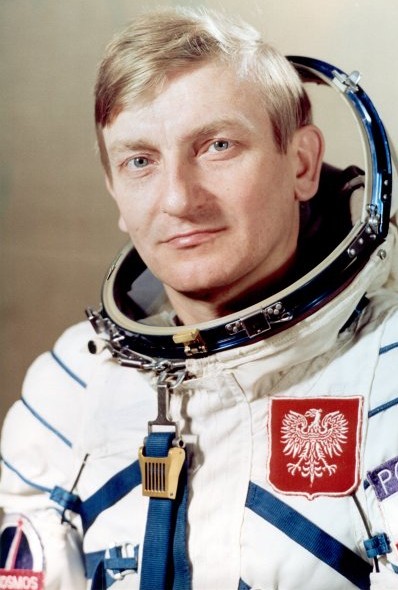
Miroslaw Hermaszewski

Miroslaw Hermaszewski
MirosÅÂÂÂaw Hermaszewski (Polish: 15 September 1941 – 12 December 2022) was a Polish cosmonaut, fighter plane pilot, and Polish Air Force officer. He became the first, and at the time of his death in December 2022, the only, Polish national in space when he flew aboard the Soviet Soyuz 30 spacecraft in 1978. He was the 89th human to reach outer space.
In 1976, he was chosen from a pool of 500 Polish military pilots to take part in the Interkosmos space programme. In late June 1978, together with Soviet cosmonaut Pyotr Klimuk from Belarus, Hermaszewski flew from the Baikonur Cosmodrome to spend eight days aboard the Salyut 6 space station (from 17:27 on 27 June to 16:31 on 5 July 1978). The latter fulfilled the role of deck engineer, while the former (having performed two space missions up to this point) served as commander.
During their time in orbit, Klimuk and Hermaszewski carried out various geoscience experiments and photographed the Earth – orbiting it 126 times. They landed in the steppes of Kazakhstan, 300 km west of Tselinograd
346
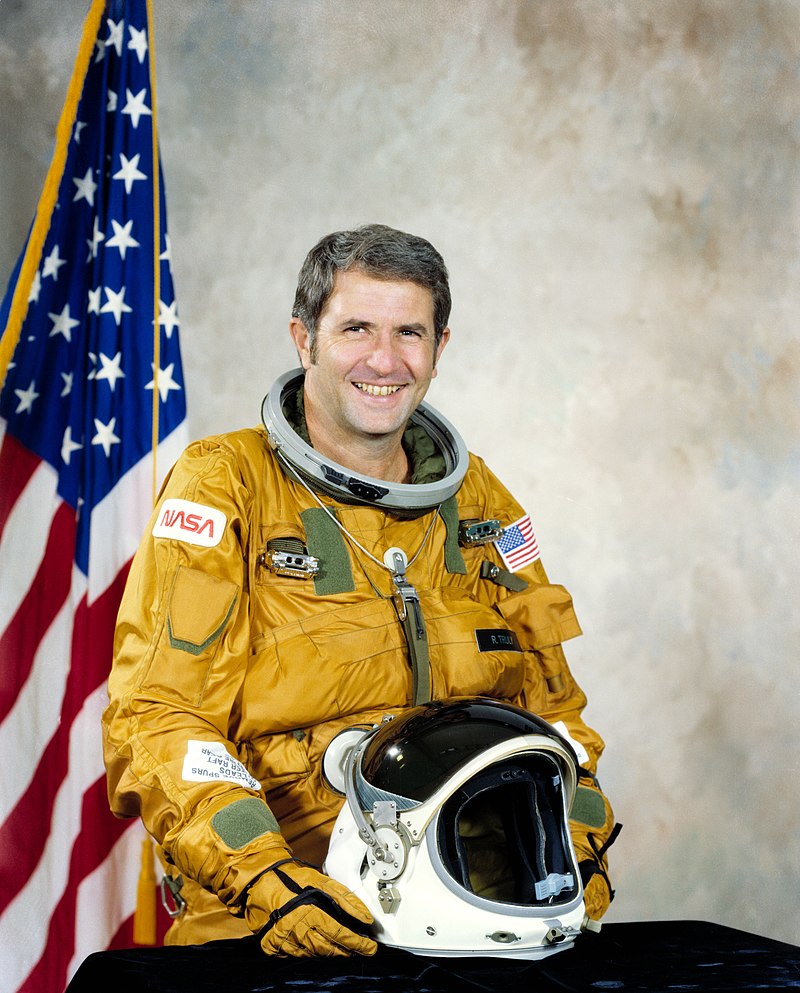
Richard Harrison Truly

Richard Harrison Truly
Richard Harrison Truly (born November 12, 1937) is a retired vice admiral in the United States Navy, a former fighter pilot, engineer, astronaut, and was the eighth administrator of the National Aeronautics and Space Administration (NASA) from 1989 to 1992. He was the first former astronaut to head the space agency.
He flew three times on one of the two-man crews for the 1977 Approach and Landing Tests of the Space Shuttle Enterprise, and on the STS-2 mission in 1981, becoming the first man to be launched into space on his birthday. Truly then served as commander of STS-8 in 1983.
After STS-8, Truly left NASA to become the first commander of the Naval Space Command.
347
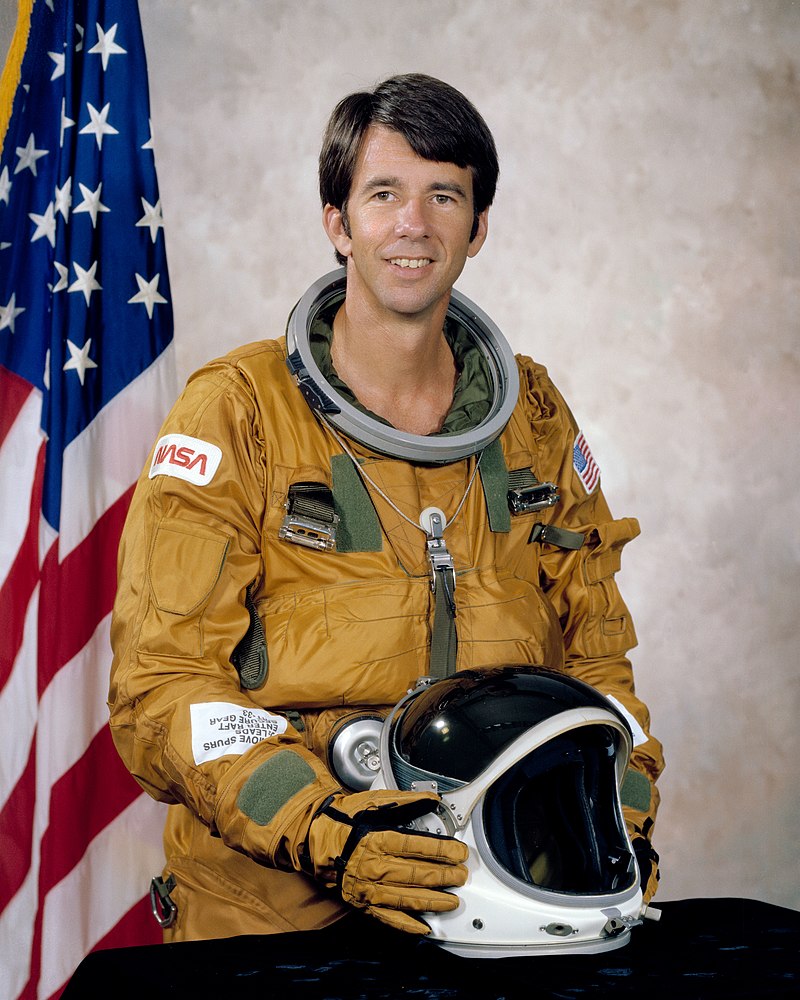
William Benjamin Lenoir

William Benjamin Lenoir
William Benjamin Lenoir (March 14, 1939 – August 26, 2010) was an American electrical engineer and NASA astronaut.
Lenoir flew as a mission specialist on STS-5 (November 11–16, 1982), the first Space Shuttle flight to deploy commercial satellites, and logged over 122 hours in space. Following STS-5, Lenoir was responsible for the direction and management of mission development within the Astronaut Office.
The STS-5 crew successfully concluded the 5-day orbital flight of Columbia with the first entry and landing through a cloud deck to a hard-surface runway, demonstrating maximum braking. STS-5 completed 81 orbits of the Earth before landing at Edwards Air Force Base, California, on November 16, 1982.
348
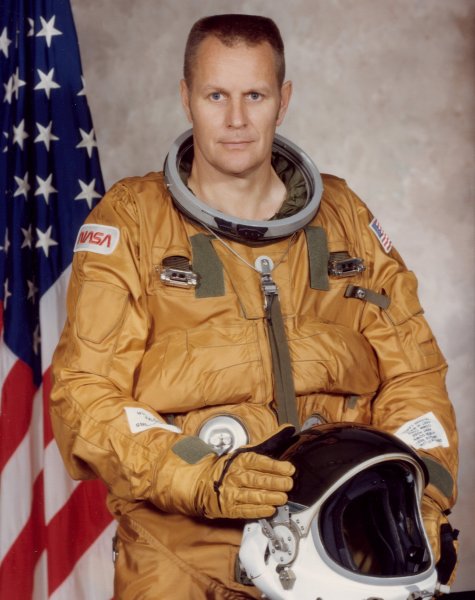
Robert Franklyn Overmyer

Robert Franklyn Overmyer
Robert Franklyn "Bob" Overmyer (July 14, 1936 – March 22, 1996) was an American test pilot, naval aviator, aeronautical engineer, physicist, United States Marine Corps officer, and USAF/NASA astronaut. In 1969, he became a NASA astronaut and served support crew duties for the Apollo program, Skylab program, and Apollo-Soyuz Test Project. In 1976, he was assigned to the Space Shuttle program and flew as pilot on STS-5 in 1982 and as commander on STS-51-B in 1985.
Overmyer was the pilot for STS-5, the first fully operational flight of the shuttle program, which launched from Kennedy Space Center, Florida, on November 11, 1982. The STS-5 crew successfully concluded the five-day orbital flight of Columbia with the first entry and landing through a cloud deck to a hard-surface runway and demonstrated maximum braking. Mission duration was 122 hours before landing on a concrete runway at Edwards Air Force Base, California, on November 16, 1982.
Overmyer was the commander of STS-51-B, the Spacelab-3 (SL-3) mission. STS-51-B was also the first shuttle flight to launch a small payload from a "Getaway Special" canister. STS-51-B launched at 12:02 p.m. EDT on April 29, 1985, from Kennedy Space Center, Florida, and landed at Edwards Air Force Base, California, at 9:11 a.m. PDT on May 6, 1985. STS-51-B completed 110 orbits of Earth at an altitude of 190 nautical miles.
349
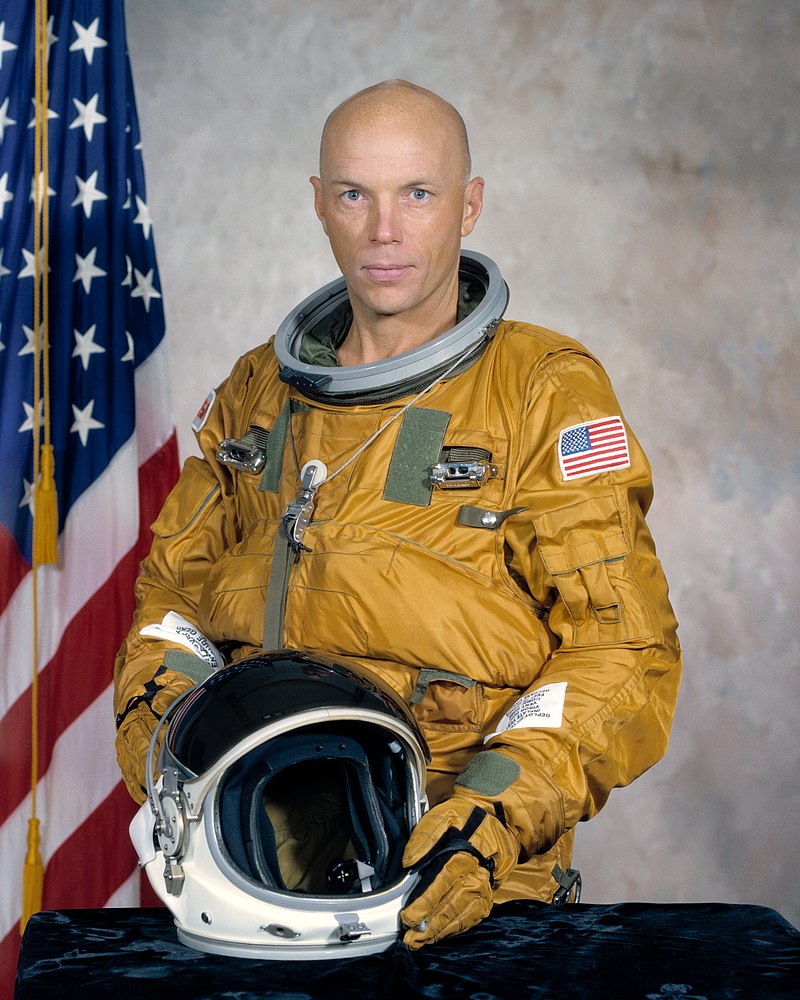
Franklin Story Musgrave

Franklin Story Musgrave
Franklin Story Musgrave (born August 19, 1935) is an American physician and a retired NASA astronaut. He grew up in Stockbridge, Massachusetts, but considers Lexington, Kentucky, to be his hometown. He is a public speaker and consultant to both Disney's Imagineering group and Applied Minds in California. In 1996, he became only the second astronaut to fly on six spaceflights, and he is the most formally educated astronaut with six academic degrees. Musgrave is the only astronaut to have flown aboard all five Space Shuttles.
He first flew on STS-6, which launched from the Kennedy Space Center, on April 4, 1983, and landed at Edwards Air Force Base in California, on April 9, 1983. Mission duration was 5 days, 23 minutes, 42 seconds.
On STS-51-F/Spacelab-2, the crew aboard Challenger launched from the Kennedy Space Center, Florida, on July 29, 1985, and landed at Edwards Air Force Base, California, on August 6, 1985. Mission duration was 7 days, 22 hours, 45 minutes, 26 seconds.
On STS-33, he served aboard the Space Shuttle Discovery, which launched at night from the Kennedy Space Center, Florida, on November 22, 1989. Following 79 orbits, the mission concluded on November 27, 1989, with a landing at sunset on Runway 04 at Edwards Air Force Base, California. Mission duration was 5 days, 7 minutes, 32 seconds.
STS-44 also launched at night on November 24, 1991. The mission was concluded in 110 orbits of the Earth with Atlantis returning to a landing on the lakebed at Edwards Air Force Base, California, on December 1, 1991. Mission duration was 6 days, 22 hours, 50 minutes, 42 seconds.
STS-61 was the first Hubble Space Telescope (HST) servicing and repair mission. During this 11-day flight, the HST was restored to its full capabilities through the work of two pairs of astronauts during a record 5 spacewalks. Musgrave performed 3 of these spacewalks. After having travelled 4,433,772 miles in 163 orbits of the Earth, Endeavour returned to a night landing in Florida on December 13, 1993. Mission duration was 10 days, 19 hours, 59 minutes.
On STS-80, (November 19 to December 7, 1996), the crew aboard Space Shuttle Columbia deployed and retrieved the Wake Shield Facility (WSF) and the Orbiting Retrievable Far and Extreme Ultraviolet Spectrometer (ORFEUS) satellites. In completing this mission Musgrave logged a record 278 Earth orbits and traveled over 7 million miles in 17 days, 15 hours, 53 minutes.
350
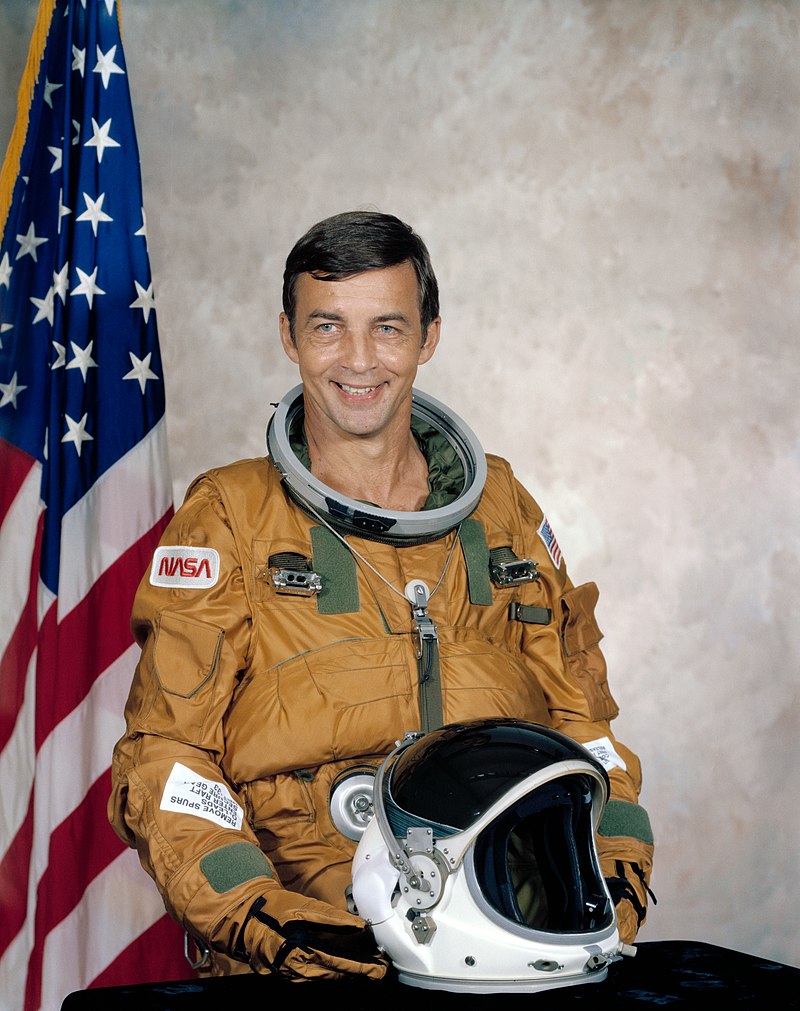
Donald Herod Peterson

Donald Herod Peterson
Donald Herod Peterson (October 22, 1933 – May 27, 2018) was a United States Air Force officer and NASA astronaut. Peterson was originally selected for the Air Force Manned Orbiting Laboratory (MOL) program, but, when that was canceled, he became a NASA astronaut in September 1969. He was a mission specialist on STS-6 on board Challenger. During the mission Peterson performed a spacewalk to test the new airlock and space suits. He logged 120 hours in space.
He was a mission specialist on STS-6, which launched from Kennedy Space Center, Florida, on April 4, 1983. This was the maiden voyage of the spacecraft Challenger, the STS-6. After 120 hours of orbital operations STS-6 landed on the concrete runway at Edwards Air Force Base, California, on April 9, 1983. With the completion of this flight, Don Peterson had logged 4 hours 15 minutes in extravehicular activity and a total of 120 hours in space.
351
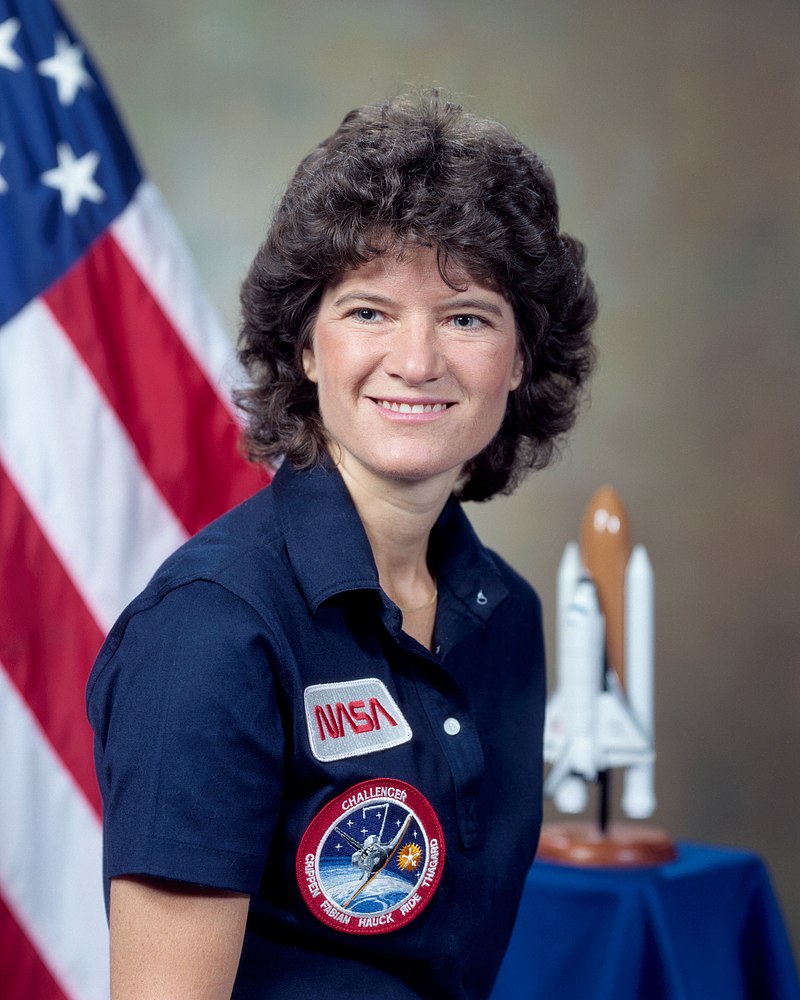
Sally Kristen Ride

Sally Kristen Ride
Sally Kristen Ride (May 26, 1951 – July 23, 2012) was an American astronaut and physicist. Born in Los Angeles, she joined NASA in 1978, and in 1983 became the first American woman and the third woman to fly in space, after cosmonauts Valentina Tereshkova in 1963 and Svetlana Savitskaya in 1982. She was the youngest American astronaut to have flown in space, having done so at the age of 32.
When the Space Shuttle Challenger lifted off from the Kennedy Space Center (KSC) on June 18, 1983, Ride became the first American woman to fly in space, and the third woman overall. The purpose of the mission was to deploy two communications satellites: Anik C2 for Telesat of Canada and Palapa B1 for Indonesia. Both were deployed during the first two days of the mission.
Bad weather forced Challenger to land at Edwards Air Force Base in California instead of the Shuttle Landing Facility at the KSC. â The mission lasted 6 days, 2 hours, 23 minutes and 59 seconds.
352
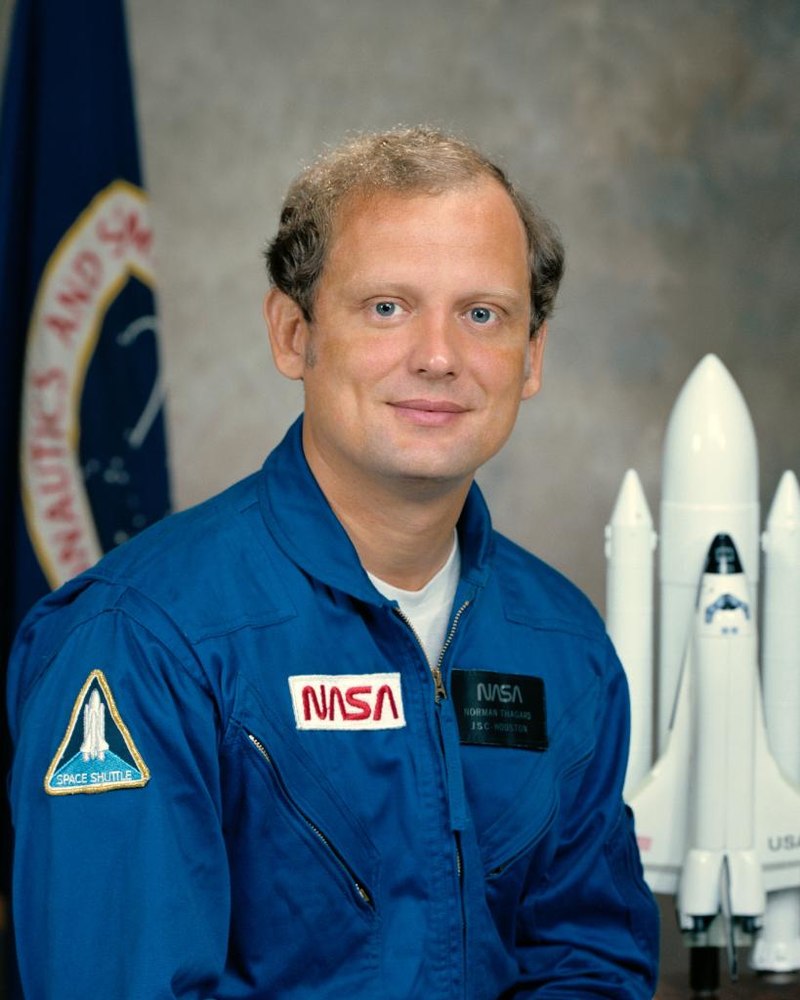
Norman Earl Thagard

Norman Earl Thagard
Norman Earl Thagard (born July 3, 1943; Capt, USMC, Ret.), is an American scientist and former U.S. Marine Corps officer and naval aviator and NASA astronaut. He is the first American to ride to space on board a Russian vehicle, and can be considered the first American cosmonaut. He did this on March 14, 1995, in the Soyuz TM-21 spacecraft for the Russian Mir-18 mission.
A veteran of five space flights, he logged over 140 days in space. He was a mission specialist on STS-7 in 1983, STS-51-B in 1985, STS-30 in 1989, was the payload commander on STS-42 in 1992, and was the cosmonaut/researcher on the Russian Mir-18 mission in 1995.
Thagard first flew on the crew of STS-7, which launched from Kennedy Space Center, Florida, on June 18, 1983. Mission duration was 147 hours before landing at Edwards Air Force Base, California, on June 24, 1983.
Thagard then flew on STS-51-B, the Spacelab-3 science mission, which launched from Kennedy Space Center, Florida, on April 29, 1985, aboard Challenger. After 110 orbits of the Earth, Challenger landed at Edwards Air Force Base, California, on May 6, 1985.
He next served on the crew of STS-30, which launched from Kennedy Space Center, Florida, on May 4, 1989, aboard the Orbiter Atlantis. Mission duration was 97 hours. Following 64 orbits of the Earth, the STS-30 mission concluded with a landing at Edwards Air Force Base, California, on May 8, 1989.
Thagard served as payload commander on STS-42, aboard the orbiter Discovery, which lifted off from the Kennedy Space Center, Florida, on January 22, 1992. This eight-day mission culminated in a landing at Edwards Air Force Base, California, on January 30, 1992 after completing 128 orbits of the Earth.
On his last mission, Thagard was a crew member for the Russian Mir 18 mission. Liftoff was from the Baikonur Cosmodrome in Kazakhstan on March 14, 1995. The mission culminated in a landing at the Kennedy Space Center in the Space Shuttle Atlantis on July 7, 1995, in the course of the 115-day flight.
353
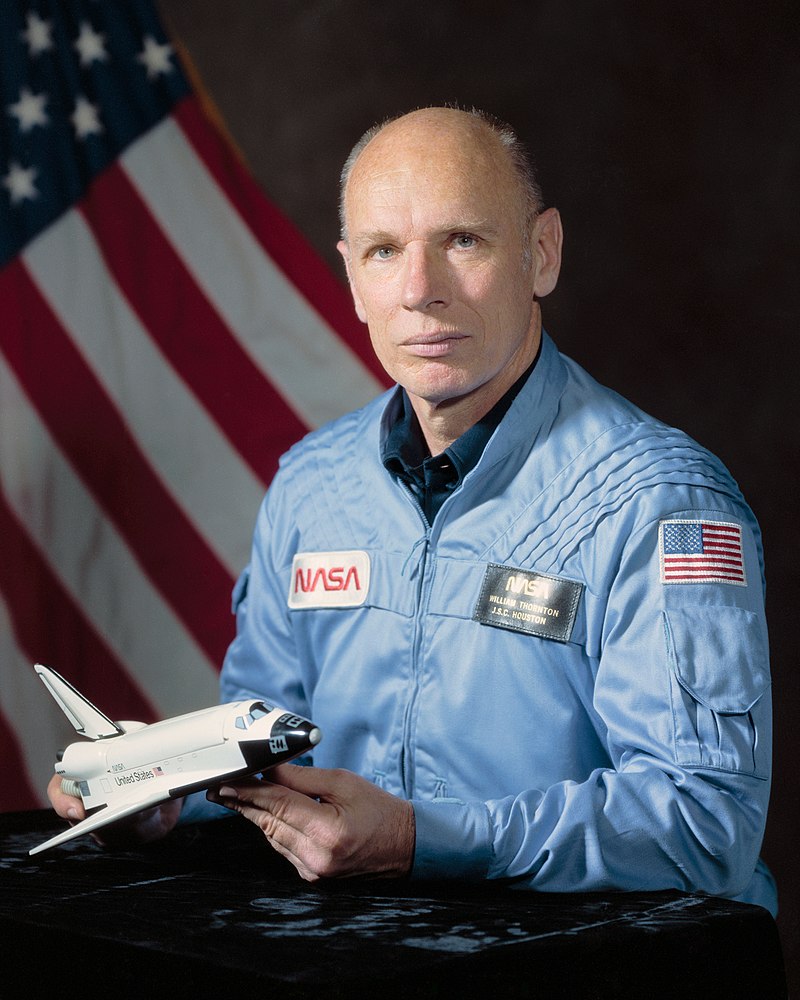
William Edgar Thornton

William Edgar Thornton
William Edgar Thornton (April 14, 1929 – January 11, 2021) was an American NASA astronaut. He flew on Challenger twice, the STS-8 and STS-51-B missions.
He was on-board STS-8 Challenger (August 30 to September 5, 1983). This was the third flight for the Challenger and the first mission with a night launch from Kennedy Space Center, Florida, and a night landing at Edwards Air Force Base, California. The mission was accomplished in 98 orbits of the Earth, traveling 2.2 million miles in 145 hours, 8 minutes, 4 seconds. He became the oldest person to fly in space.
STS-51B/Spacelab-3 Challenger (April 29 to May 6, 1985). The Spacelab-3 science mission was launched from Kennedy Space Center, Florida, and returned for a night landing at Edwards Air Force Base, California. During the 7-day flight, The mission was accomplished in 110 orbits of the Earth, traveling 2.9 million miles (4.7 million km) in 169 hours and 39 minutes.
At the conclusion of the STS-51B flight, Thornton had logged over 313 hours in space across his two missions.
354
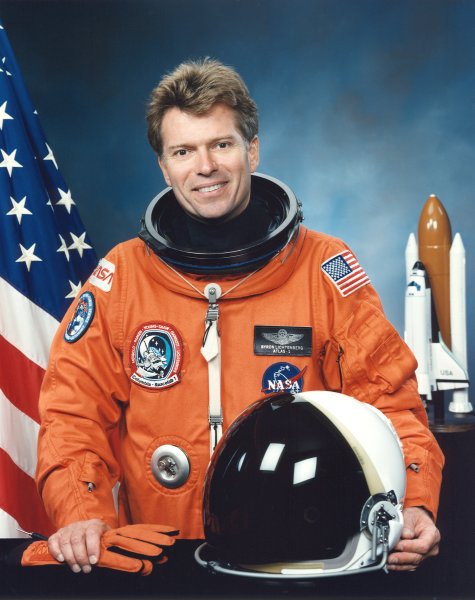
Byron Kurt Lichtenberg

Byron Kurt Lichtenberg
Byron Kurt Lichtenberg, Sc. D. (born February 19, 1948) is an American engineer and fighter pilot who flew aboard two NASA Space Shuttle missions as a Payload Specialist. In 1983, he and Ulf Merbold became the first Payload Specialists to fly on the shuttle.
He flew on Spacelab-1 (STS-9) mission for ten days in 1983, conducted multiple experiments in life sciences, materials sciences, Earth observations, astronomy and solar physics, upper atmosphere and plasma physics. His second flight was ATLAS-1 (STS-45) Spacelab mission for nine days in 1992; conducted 13 experiments in Atmospheric sciences and astronomy. He flew 310 orbits, and logged 468 hours in space.
355
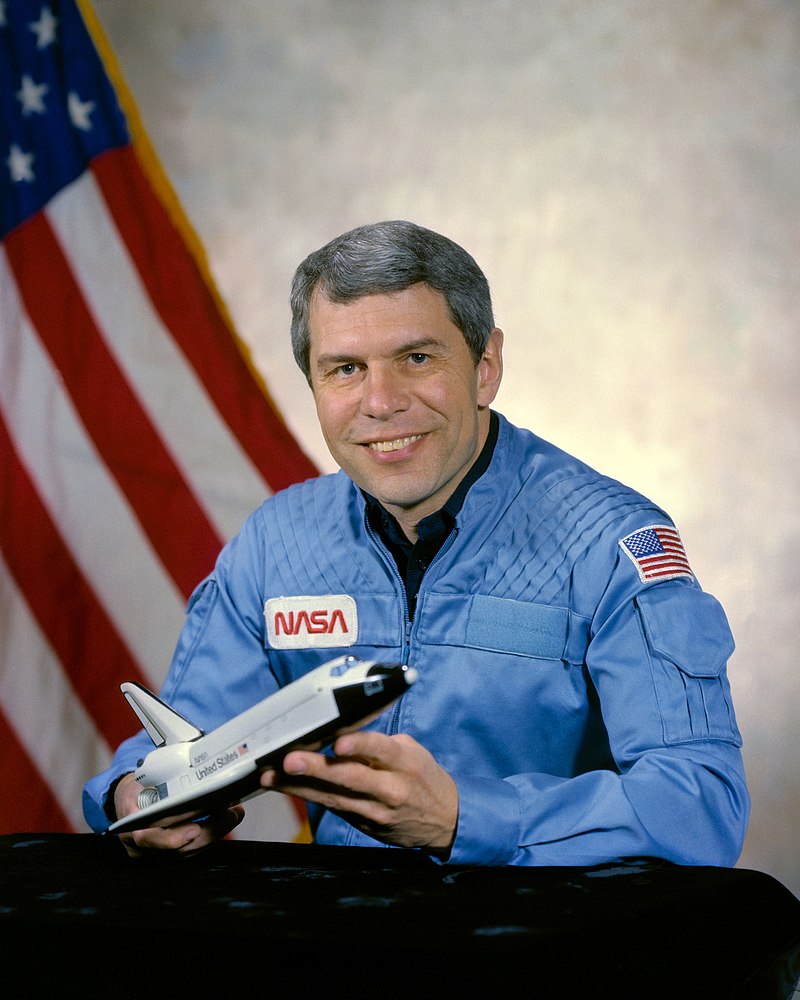
Robert Allan Parker

Robert Allan Parker
Robert Allan Ridley Parker (born December 14, 1936) is an American physicist and astronomer, former director of the NASA Management Office at the Jet Propulsion Laboratory, and a retired NASA astronaut. He was a mission specialist on two Space Shuttle missions, STS-9 and STS-35.
A veteran of two Spacelab missions, Parker was a mission specialist on STS-9/Spacelab-1 (November 28–December 8, 1983) and on STS-35 (December 2–10, 1990); which featured the ASTRO-1 ultraviolet astronomy laboratory.
He has logged over 463 hours in space.
356
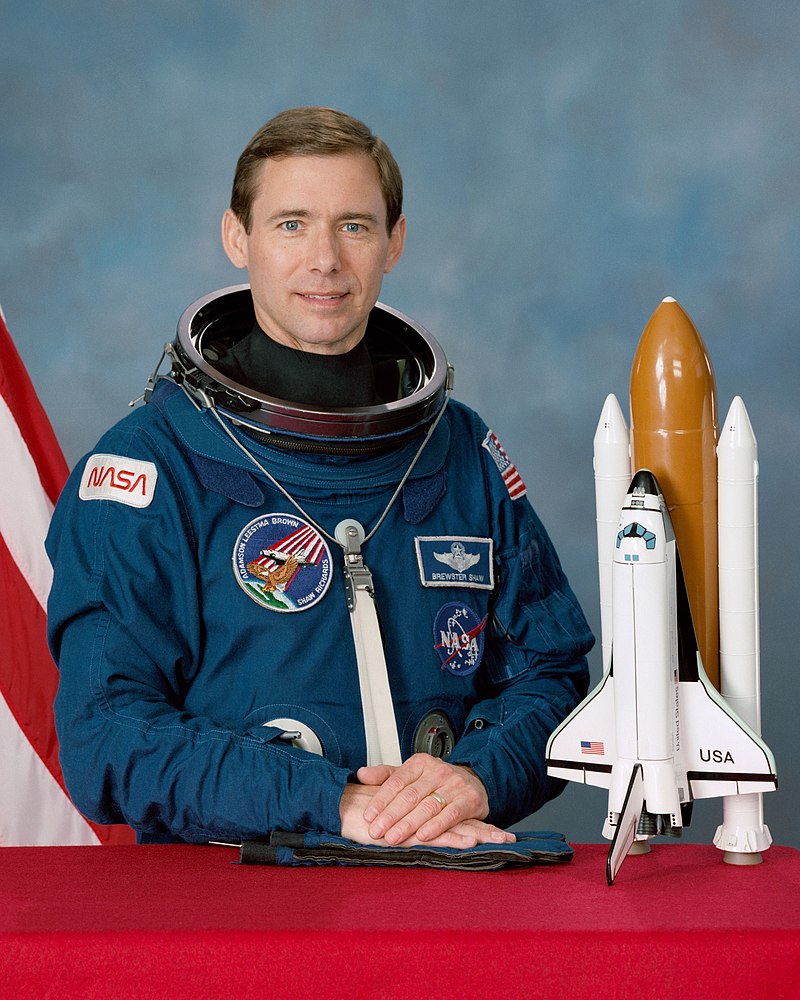
Brewster Hopkinson Shaw Jr.

Brewster Hopkinson Shaw Jr.
Brewster Hopkinson Shaw Jr. (born May 16, 1945) is a retired NASA astronaut, U.S. Air Force colonel, and former executive at Boeing. Shaw was inducted into the U.S. Astronaut Hall of Fame on May 6, 2006.
Shaw is a veteran of three Space Shuttle missions and has logged 533 hours of space flight. He was pilot of Space Shuttle Columbia in November 1983, commander of Space Shuttle Atlantis in November 1985 and commander of Columbia in August 1989.
Following the Space Shuttle Challenger accident in 1986, he supported the Rogers Presidential Commission investigating the accident. Shaw subsequently led the Space Shuttle Orbiter return-to-flight team chartered to enhance the safety of the vehicles’ operations.
Shaw's first trip to space was as pilot on STS-9 Columbia from November 28 to December 8, 1983. After ten days of spacelab hardware verification and around-the-clock scientific operations, Columbia and its laboratory cargo (the heaviest payload to be returned to Earth in the shuttle's cargo bay) returned to land on the dry lake bed at Edwards Air Force Base, California.
Brewster Shaw served as shuttle commander on STS-61B Atlantis. The mission launched at night on November 26 and returned on December 3, 1985. After completing 108 orbits of the Earth in 165 hours, Atlantis landed on Runway 22 at Edwards Air Force Base, California.
Shaw was the commander of STS-28 Columbia (August 8–13, 1989). After 80 orbits of Earth the five-day mission concluded with a dry lake bed landing on Runway 17 at Edwards Air Force Base, California.
357
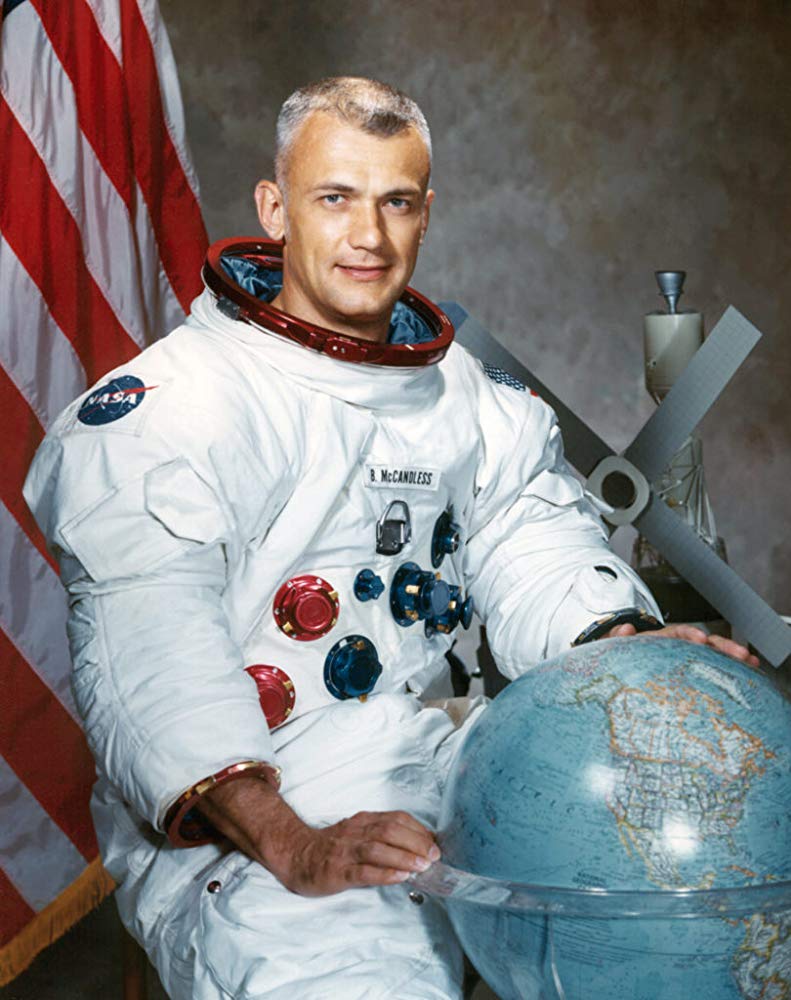
Bruce McCandless II

Bruce McCandless II
Bruce McCandless II (June 8, 1937 – December 21, 2017) was a United States Navy officer and aviator, electrical engineer, and NASA astronaut. In 1984, during the first of his two Space Shuttle missions, he completed the first untethered spacewalk by using the Manned Maneuvering Unit.
Challenger (STS-41B) launched from Kennedy Space Center, Florida, on February 3, 1984. McCandless's first EVA lasted 6 hours and 17 minutes. On February 11, 1984, after eight days in orbit, Challenger made the landing on the runway at Kennedy Space Center.
On this five-day Discovery (STS-31) flight, launched on April 24, 1990, from the Kennedy Space Center in Florida, the crew deployed the Hubble Space Telescope from their record-setting altitude of 380 miles (610 km). Discovery landed at Edwards Air Force Base, California, on April 29, 1990.
358
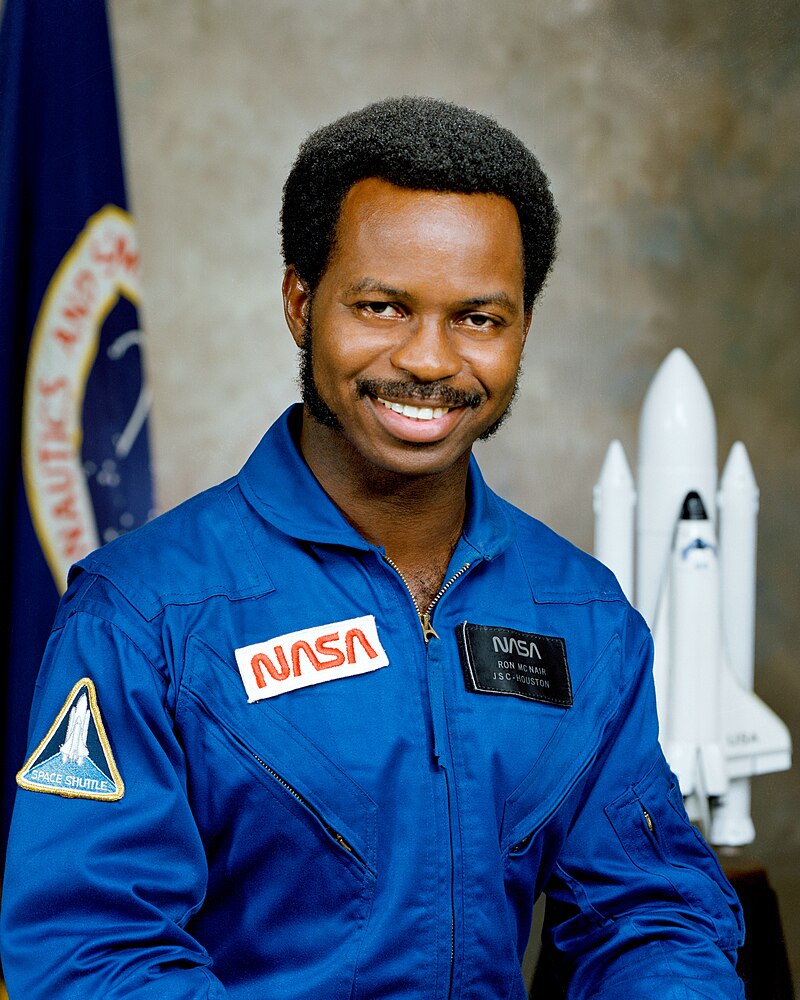
Ronald Erwin McNair

Ronald Erwin McNair
Ronald Erwin McNair (October 21, 1950 – January 28, 1986) was an American NASA astronaut and physicist. He died at the age of 35 during the launch of the Space Shuttle Challenger on mission STS-51-L, in which he was serving as one of three mission specialists in a crew of seven.
Prior to the Challenger disaster, McNair flew as a mission specialist on STS-41-B aboard Challenger from February 3 to 11, 1984, becoming the second African American in space.
Following the STS-41-B mission, McNair was selected for STS-51-L as one of three mission specialists in a crew of seven. The mission launched on January 28, 1986. He and the other six crew members were killed when Challenger disintegrated nine miles above the Atlantic Ocean, 73 seconds after liftoff.
359
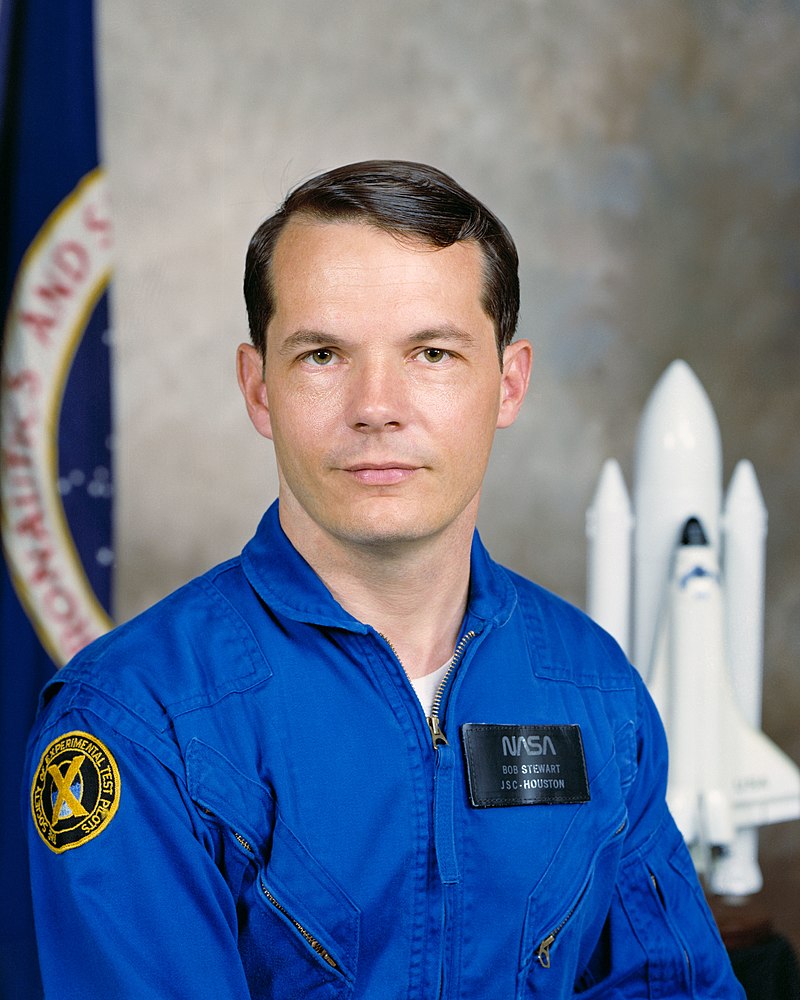
Robert Lee Stewart

Robert Lee Stewart
Robert Lee Stewart (born August 13, 1942)[2] is a retired brigadier general of the United States Army and a former NASA astronaut.
STS-41-B Challenger (February 3–11, 1984) was launched from Kennedy Space Center, Florida, and returned to land there 8 days later. During the mission, Stewart and fellow astronaut Bruce McCandless participated in two extravehicular activities (EVAs) to conduct first flight evaluations of the Manned Maneuvering Units (MMUs). These EVAs represented man's first untethered operations from a spacecraft in flight. Upon completion of this mission Stewart became the first Army officer awarded the Army Astronaut Badge.
Stewart first EVA, together with Bruce McCandless lasted 6 hours and 17 minutes. During the second EVA, Stewart used the MMU for an untethered spacewalk, lasted 5 hours and 55 minutes.
STS-51-J Atlantis (October 3–7, 1985) was launched from Kennedy Space Center, Florida, and after 98 hours of orbital operations returned to land at Edwards Air Force Base, California. It was the second Space Shuttle Department of Defense mission, and the maiden voyage of Atlantis.
360
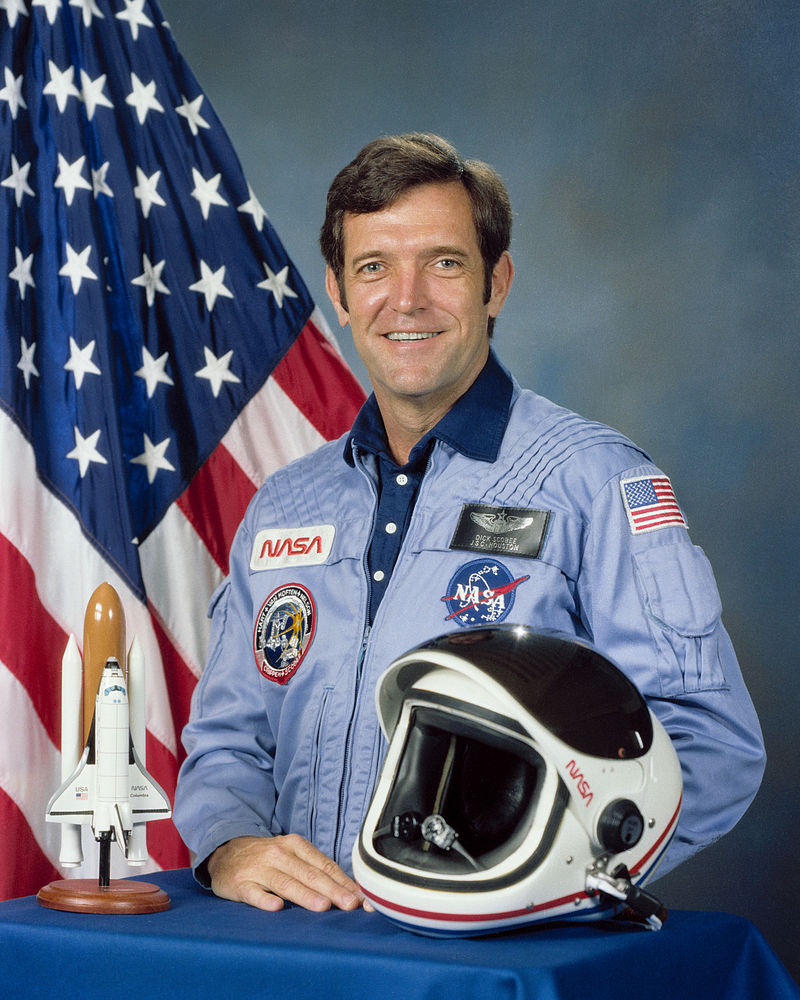
Francis Richard Scobee

Francis Richard Scobee
Francis Richard Scobee (May 19, 1939 – January 28, 1986) was an American pilot, engineer, and astronaut. He was killed while he was commanding the Space Shuttle Challenger in 1986, which suffered catastrophic booster failure during launch of the STS-51-L mission.
Scobee was assigned commander for the ill-fated STS-51-L mission, after having previously flown Challenger in STS-41-C as a pilot. When the mission finally did lift off the pad, a solid rocket booster O-ring seal failure destroyed the shuttle 73 seconds into the flight, killing Scobee and the other six crew members.
361
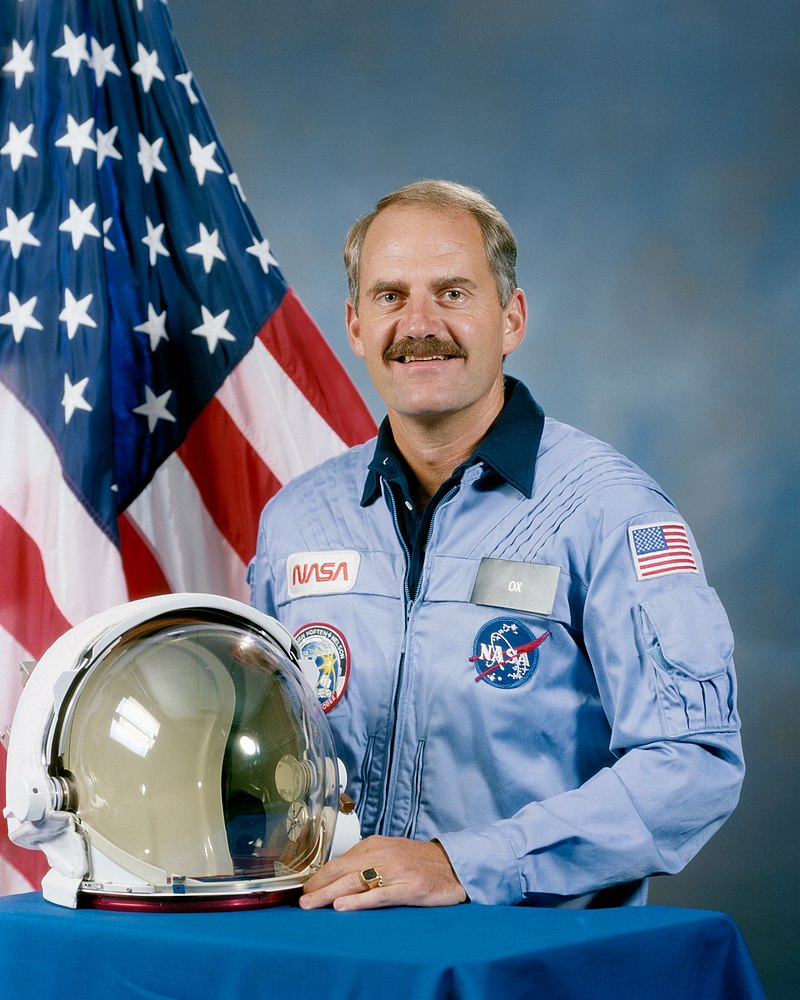
James Dougal van Hoften

James Dougal van Hoften
James Dougal van Hoften was born on June 11, 1944, in Fresno, California is an American civil and hydraulic engineer, retired U.S. Navy officer and aviator, and a former astronaut for NASA. He considers Burlingame, California, to be his hometown.
STS-41-C: Challenger (April 6–13, 1984) was launched from the Kennedy Space Center, Florida, and returned to land at Edwards Air Force Base, California. The mission was accomplished in 107 Earth orbits in 167 hours, 40 minutes, 7 seconds.
STS-51-I: Discovery (August 27 to September 3, 1985) launched from the Kennedy Space Center, Florida, and returned to land at Edwards Air Force Base, California. The mission was accomplished in 112 orbits of the Earth in 171 hours, 17 minutes, 42 seconds.
362
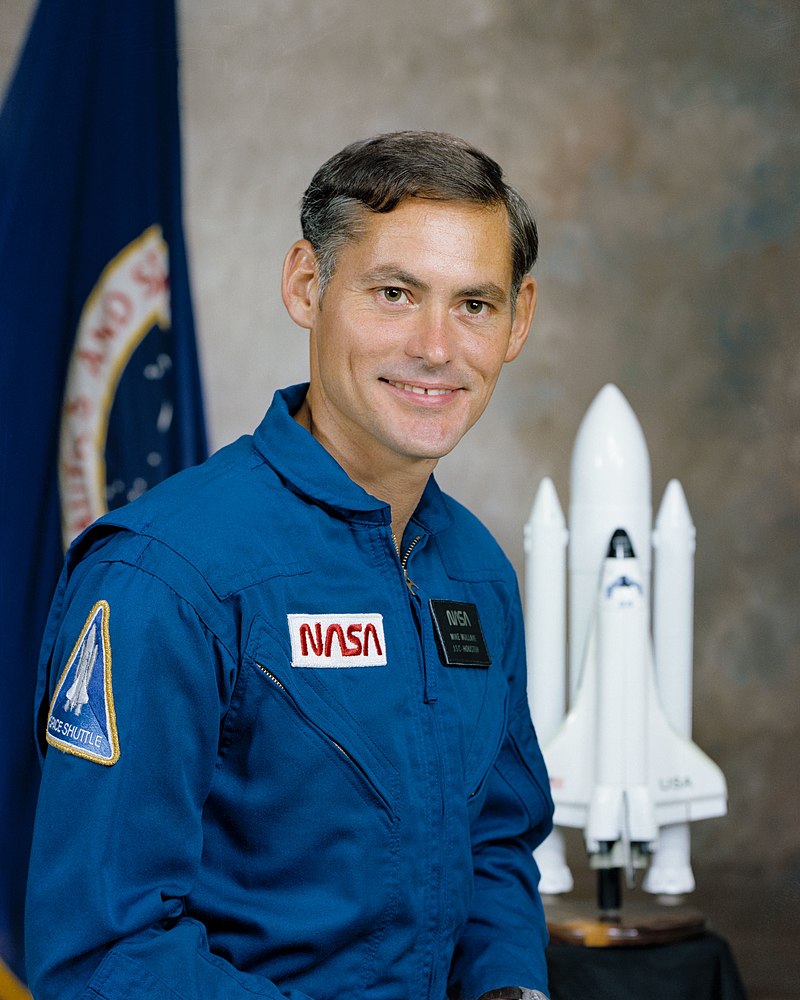
Richard Michael Mullane

Richard Michael Mullane
Richard Michael Mullane born on September 10, 1945, in Wichita Falls, Texas, is an engineer and weapon systems officer, a retired USAF officer, and a former NASA astronaut. During his career, he flew as a mission specialist on STS-41-D, STS-27, and STS-36.
Selected by NASA in January 1978, Mullane became an astronaut in August 1979. He flew on three Space Shuttle missions, serving as a mission specialist on the crew of STS-41-D in August 1984, on STS-27 in December 1988, and on STS-36 in March 1990.
On his first mission Mullane served as a mission specialist on the crew of STS-41-D, which launched from Kennedy Space Center, Florida, on August 30, 1984. This was the maiden flight of the Orbiter Discovery. STS 41-D completed 96 orbits of the Earth in 145 hours before landing at Edwards Air Force Base, California, on September 5, 1984.
He flew aboard the Orbiter Atlantis, on STS-27, which launched from Kennedy Space Center, Florida, on December 2, 1988. After 68 orbits of the earth, the mission concluded with a dry lakebed landing on Runway 17 at Edwards Air Force Base, California, on December 6, 1988. Mission duration was 105 hours.
On his third flight, Mullane served on the crew of STS-36, which launched from the Kennedy Space Center, Florida, on February 28, 1990, aboard the Space Shuttle Atlantis. After 72 orbits of the earth, the STS-36 mission concluded with a lakebed landing at Edwards Air Force Base, California, on March 4, 1990.
With the completion of his third flight, Mullane logged a total of 356 hours in space. He retired from NASA and the Air Force July 1, 1990.
363
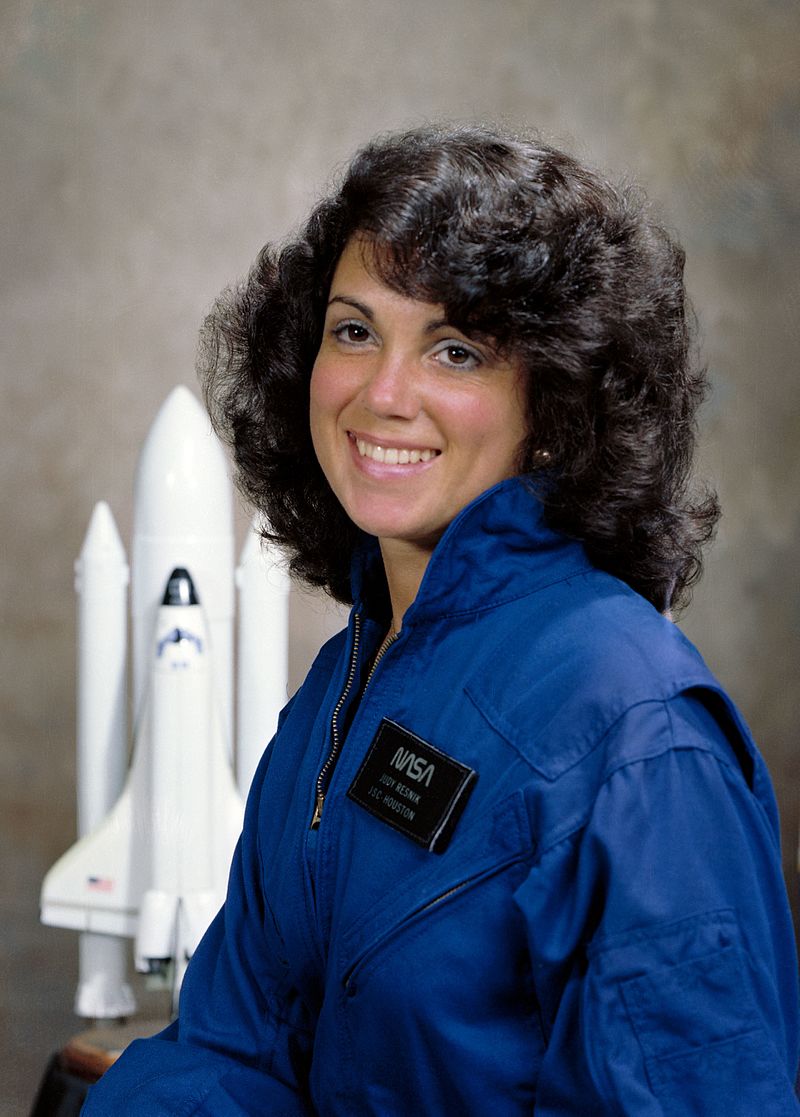
Judith Arlene Resnik

Judith Arlene Resnik
Judith Arlene Resnik (April 5, 1949 – January 28, 1986) was an American electrical engineer, software engineer, biomedical engineer, pilot and NASA astronaut who died in the Space Shuttle Challenger disaster. She was the fourth woman, the second American woman and the first Jewish woman of any nationality to fly in space, logging 145 hours in orbit.
Her first space flight was the STS-41-D mission in August and September 1984, the twelfth Space Shuttle flight, and the maiden voyage of Discovery , where her duties included operating its robotic arm. Her second Shuttle mission was STS-51-L in January 1986 aboard Challenger . She died when the orbiter broke up shortly after liftoff and crashed into the ocean.
364
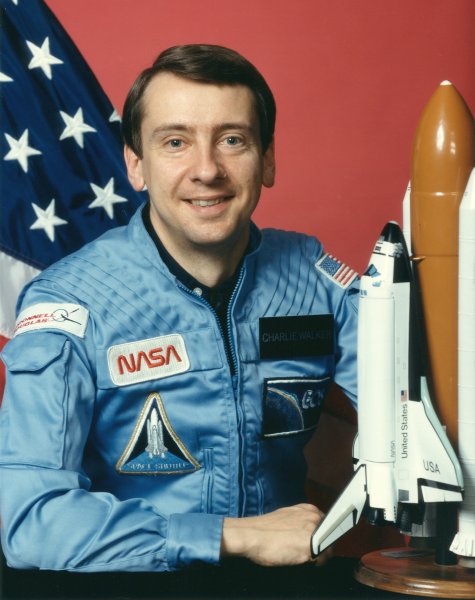
Charles David Walker

Charles David Walker
Charles David Walker (born on August 29, 1948, in Bedford, Indiana) is an American engineer and astronaut who flew on three Space Shuttle missions in 1984 and 1985 as a Payload Specialist for the McDonnell Douglas Corporation.
Although Walker believed at the time that 41-D would be his only flight, he also accompanied the CFES equipment on STS-51-D, and STS-61-B, accumulating 20 days of experience in space and traveling 8.2 million miles. Aboard these Space Shuttle missions Walker also performed early protein crystal growth experiments and participated as a test subject in numerous medical studies. He began training fellow McDonnell Douglas employee Robert Wood to fly on STS-61-M in 1986, and expected to fly at least once more himself, perhaps on Space Station Freedom, before the destruction of Challenger in January 1986 ended commercial shuttle payloads.
365
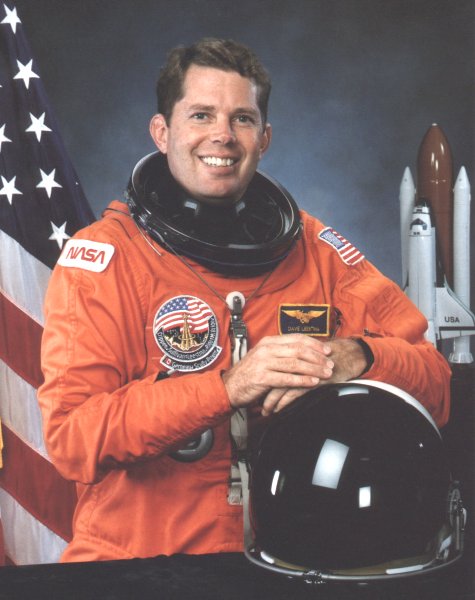
David Leestma

David Leestma
David Cornell Leestma (Born May 6, 1949, in Muskegon, Michigan) is a former American astronaut and retired Captain in the United States Navy. He is a veteran of three space flights.
STS-41-G Challenger, launched from Kennedy Space Center, Florida, on October 5, 1984. It was the sixth flight of the orbiter Challenger and the thirteenth flight of the Space Shuttle system. During this mission Dave Leestma and Kathryn Sullivan successfully conducted a 3½ hour extravehicular activity (EVA) to demonstrate the feasibility of actual satellite refueling. STS-41-G mission landed at Kennedy Space Center on October 13, 1984.
STS-28 Columbia, launched from Kennedy Space Center, Florida, on August 8, 1989. The mission carried Department of Defense payloads and a number of secondary payloads. After 80 orbits of the Earth, this five-day mission concluded with a lakebed landing on Runway 17 at Edwards Air Force Base, California, on August 13, 1989.
STS-45 Atlantis, launched from the Kennedy Space Center, Florida on March 24, 1992. During the nine-day mission, the crew carrid out twelve experiments. STS-45 landed on April 2, 1992, on Runway 33 at the Kennedy Space Center, Florida, after completing 142 orbits of the Earth.
366
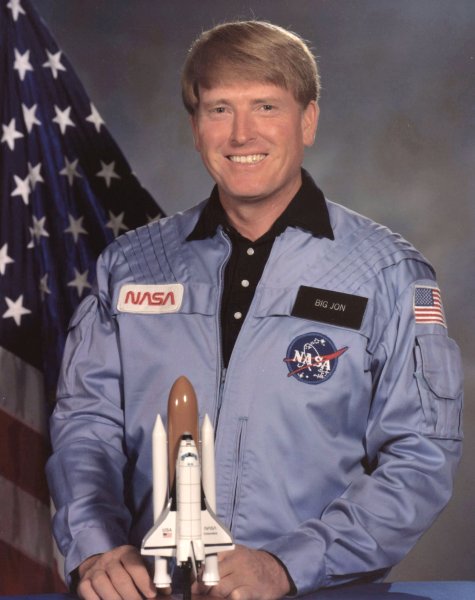
Jon McBride

Jon McBride
Jon McBride was born August 14, 1943, in Charleston, West Virginia, but considers Beckley, West Virginia, to be his hometown. He is a retired NASA astronaut and American naval officer.
McBride was with NASA, a role in which he piloted STS-41-G, and would have been commander of STS-61-E had the mission not been cancelled in the wake of the Challenger disaster.
McBride became an astronaut in August 1979. His NASA assignments have included lead chase pilot for the maiden voyage of Space Shuttle Columbia. McBride was pilot of STS-41-G, which launched from Kennedy Space Center, Florida, on October 5, 1984, aboard the Orbiter Challenger. This was the first crew of seven. Mission duration was 197 hours and concluded with a landing at Kennedy Space Center, Florida, on October 13, 1984.
367
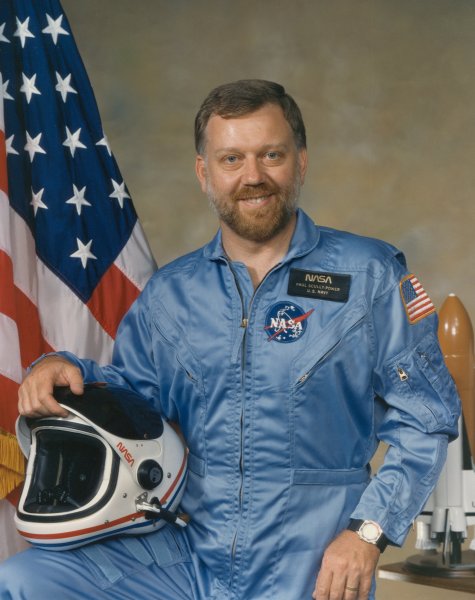
Paul Scully-Power

Paul Scully-Power
Paul Desmond Scully-Power, (born May 28, 1944 in Sydney, Australia) is an Australian-American oceanographer, technology expert and business executive. In 1984, while a civilian employee of the United States Naval Undersea Warfare Center, he flew aboard NASA Space Shuttle mission STS-41-G as a Payload Specialist. He was the first Australian-born person to journey into space, and the first astronaut with a beard.
In June 1984, Scully-Power was chosen by NASA to be a Payload Specialist (known among the crew affectionately as a blanket counter) on the 13th Shuttle mission, which would study Earth Sciences. His space flight STS-41-G Challenger (October 5–13, 1984) was launched from and returned to land at the Kennedy Space Center, Florida. STS-41-G was the first mission with a 7-person crew, and the first to demonstrate American orbital fuel transfer. During the 8-day flight, the crew deployed the Earth Radiation Budget Satellite, conducted scientific observations of the earth with the OSTA-3 pallet and Large Format Camera, and demonstrated potential satellite refueling with an EVA and associated hydrazine transfer. At mission conclusion, Scully-Power had traveled over 3.4 million miles in 133 Earth orbits, and logged over 197 hours in space.
368
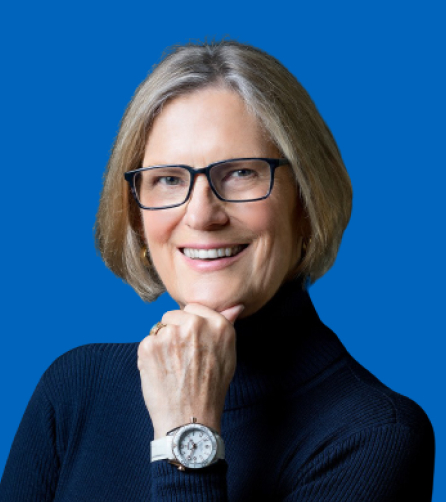
Kathryn D Sullivan

Kathryn D Sullivan
Kathryn D Sullivan ( was born in Paterson, New Jersey, on October 3, 1951) is an American geologist, oceanographer, and former NASA astronaut and US Navy officer. She was a crew member on three Space Shuttle missions.
In September 1983 Sullivan was officially assigned to this mission, which was designated STS-41-G.
Sally Ride was also assigned to this mission, so it became the first time that two women were in space together. The mission lifted off from the KSC in the Space Shuttle Challenger on October 5, 1984. Sullivan performed the first extra-vehicular activity (EVA) by an American woman on October 11, 1984. With fellow mission specialist David Leestma, she performed a 3.5-hour spacewalk, During the eight-day mission, STS-41G completed 132 orbits of Earth in 197.5 hours, before landing back at the KSC on October 13, 1984.
STS-31 was launched from KSC, on April 24, 1990. After making 76 orbits of Earth in 121 hours, Discovery landed at Edwards Air Force Base in California, on April 29, 1990.
Sullivan served as Payload Commander on STS-45, the first Spacelab mission dedicated to NASA's Mission to Planet Earth. It lifted off in the Discovery on March 24, 1992. Discovery landed at the Kennedy Space Center on April 2, 1992 after completing all the scheduled experiments and activities.
Sullivan left NASA in 1993 having flown on three Space Shuttle missions and logged 532 hours in space.
369
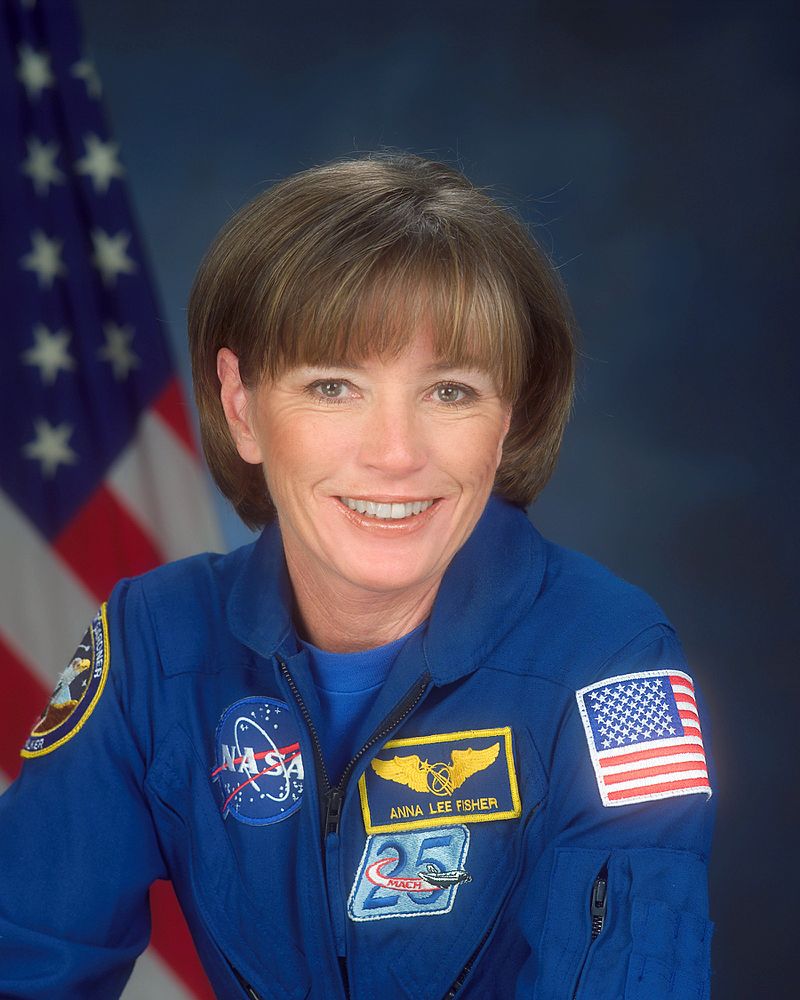
Anna Lee Fisher

Anna Lee Fisher
Anna Lee Fisher (born August 24, 1949) is an American chemist, emergency physician and a former NASA astronaut. During her career at NASA, she was involved with three major programs: the Space Shuttle, the International Space Station and the Orion spacecraft.
STS-51-A Discovery lifted off from Launch Pad 39A at KSC on November 8, 1984, on its second mission. Discovery touched down at KSC on November 16, 1984, after a flight lasting 7 days, 23 hours and 45 minutes, during which it had completed 127 orbits.
370
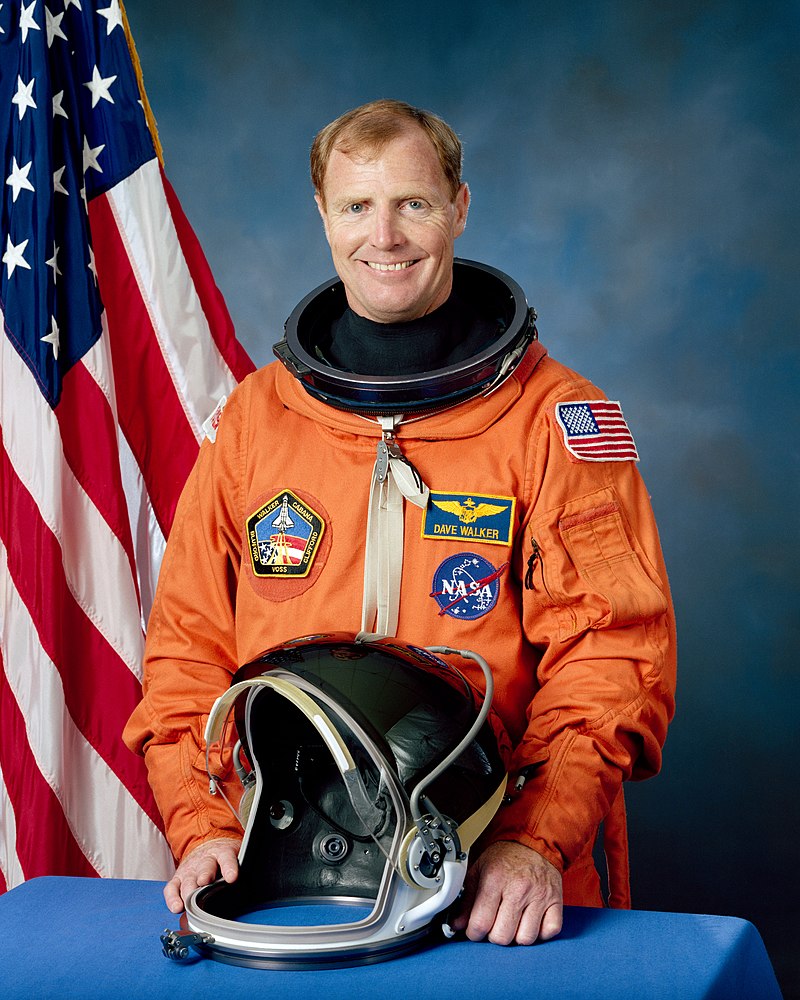
David Mathieson Walker

David Mathieson Walker
David Mathieson Walker (May 20, 1944 – April 23, 2001), was an American naval officer and aviator, fighter pilot, test pilot, and a former NASA astronaut. He flew aboard four Space Shuttle missions in the 1980s and 1990s.
STS-51-A Discovery (November 8–16, 1984) was launched from and returned to land at Kennedy Space Center, Florida. During the mission the crew deployed two satellites. In the first space salvage mission in history, the crew also retrieved for return to Earth the Palapa B-2 and Westar VI satellites. Mission duration was 127 Earth orbits in 7 days, 23 hours, 44 minutes, 56 seconds.
STS-30 Atlantis (May 4–8, 1989) was launched from Kennedy Space Center, Florida. Following 64 orbits of the Earth, the STS-30 mission concluded with the first cross-wind landing test of the Shuttle Orbiter at Edwards Air Force Base, California.
STS-53 Discovery (December 2–9, 1992) was launched from the Kennedy Space Center, Florida, and also returned to land at Edwards Air Force Base, California. During 115 Earth orbits, the five-man crew deployed a classified Department of Defense payload DOD-1 and then performed several Military-Man-in-Space and NASA experiments. Mission duration was 175 hours, 19 minutes, 17 seconds.
STS-69 Endeavour (September 7–18, 1995) was launched from and returned to land at Kennedy Space Center, Florida. Mission duration was 10 days, 20 hours, 28 minutes.
371
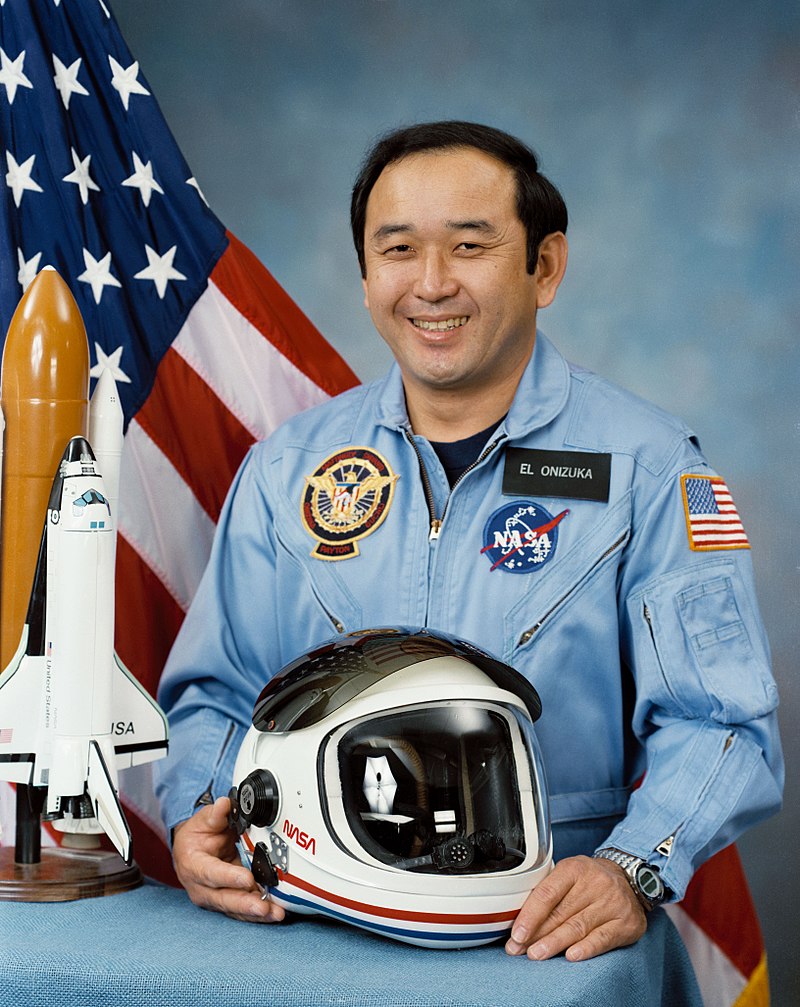
Ellison Shoji Onizuka

Ellison Shoji Onizuka
Ellison Shoji Onizuka (born on June 24, 1946 to Japanese American parents Masamitsu and Mitsue Onizuka. He was a Buddhist.Japanese) was an American astronaut, engineer, and U.S. Air Force flight test engineer from Kealakekua, Hawaii, who successfully flew into space with the Space Shuttle Discovery on STS-51-C. He died in the destruction of the Space Shuttle Challenger, on which he was serving as Mission Specialist for mission STS-51-L. Onizuka was the first Asian American and the first person of Japanese origin to reach space.
Onizuka's first space mission took place on January 24, 1985, with the launch of mission STS 51-C on Space Shuttle Discovery, the first Space Shuttle mission for the Department of Defense. After 48 orbits around the Earth, Discovery landed at Kennedy Space Center on January 27, 1985. Onizuka had completed a total of 74 hours in space.
Onizuka was assigned to the mission STS 51-L on the Space Shuttle Challenger that took off from Kennedy Space Center at 11:38:00 EST (16:38:00 UTC) on January 28, 1986. The other Challenger crew members were commander Dick Scobee, pilot Michael J. Smith, mission specialists Ronald McNair, Judith Resnik, and payload specialists Gregory Jarvis and Christa McAuliffe. The shuttle was destroyed when a flame jet leaking from a solid rocket booster ruptured the liquid hydrogen fuel tank 73 seconds after launch. All seven crew members were killed.
Following the Challenger disaster, examination of the recovered vehicle cockpit revealed that three of the crew members' Personal Egress Air Packs were activated: those of Onizuka, Resnik, and Smith. The location of Smith's activation switch, on the back side of his seat, means that either Resnik or Onizuka could have activated it for him. This is the only evidence available from the disaster that shows Onizuka and Resnik were alive after the cockpit separated from the vehicle. However, if the cabin had lost pressure, the packs alone would not have sustained the crew during the two-minute descent.
372
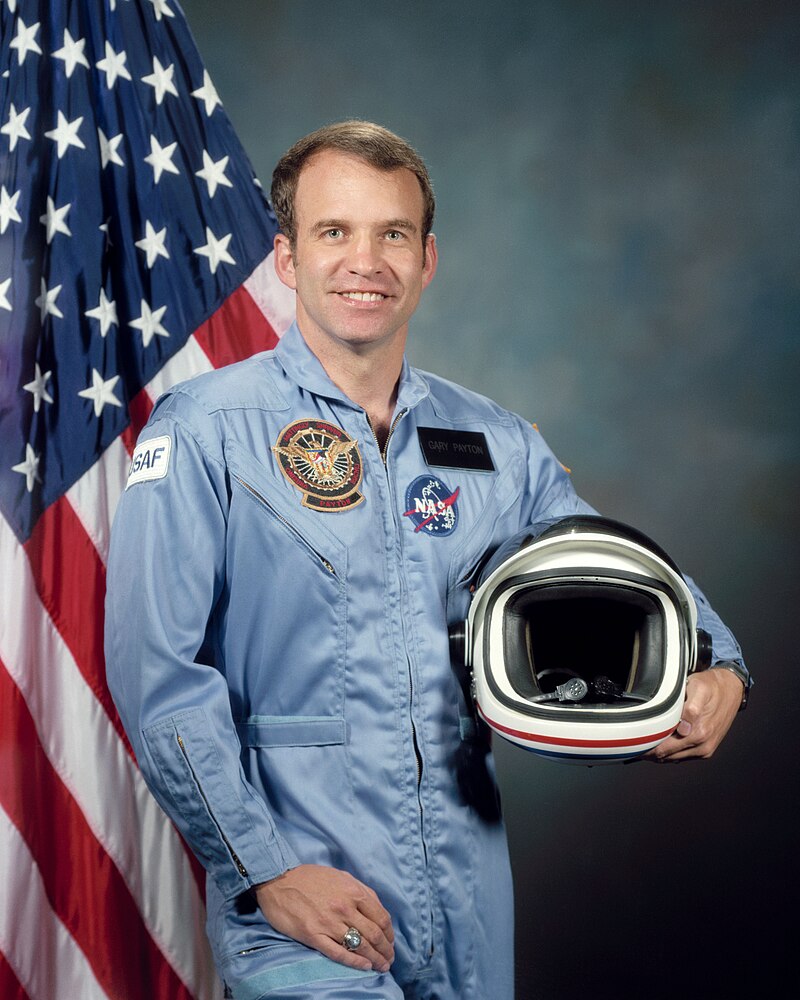
Colonel Gary Eugene Payton

Colonel Gary Eugene Payton
Colonel Gary Eugene Payton, USAF, (born June 20, 1948) is an American astronaut and USAF Manned Spaceflight Engineer. Payton flew on the STS-51-C mission aboard the Space Shuttle Discovery in January 1985.
Payton flew on the STS-51-C mission aboard the Space Shuttle Discovery in January 1985 which launched and returned to land at the Kennedy Space Center, in Florida. STS-51C was the first dedicated Space Shuttle Department of Defense mission. The mission carried an Inertial Upper Stage and deployed a DoD satellite. This was the first shuttle mission that most on-orbit details were classified and not publicized. Payton traveled over 1.2 million miles in 48 Earth orbits, and logged more than 73 hours in space.
373
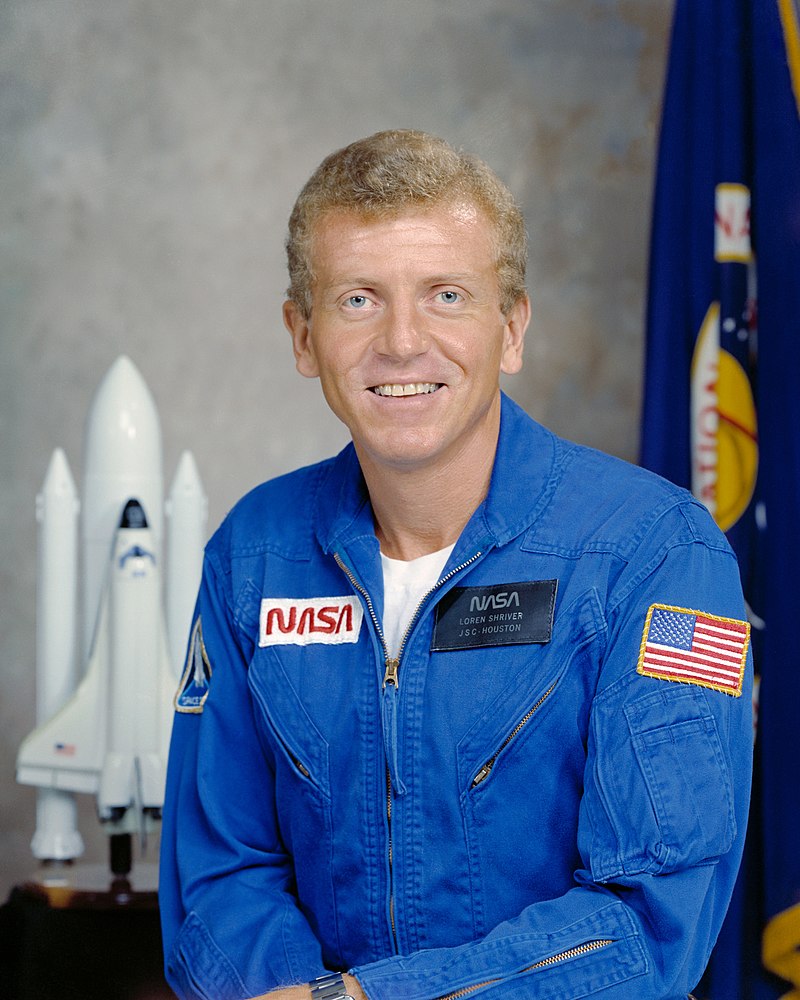
Loren James Shriver

Loren James Shriver
Loren James Shriver (born September 23, 1944) is a former NASA astronaut, aviator, and a retired US Air Force Colonel.
Shriver was selected as an astronaut by NASA in January 1978, participated in three space flights, and logged over 386 hours in space. In September 1982, he was selected as pilot of STS-10, the first Department of Defense mission for the Space Shuttle, but the mission was cancelled. He was pilot of STS-51-C, launched from Kennedy Space Center on January 24, 1985. He commanded a crew of five on his second mission, STS-31 which launched on April 24, 1990. This five-day flight deployed the Hubble Space Telescope. He also commanded mission STS-46 in 1992.
374
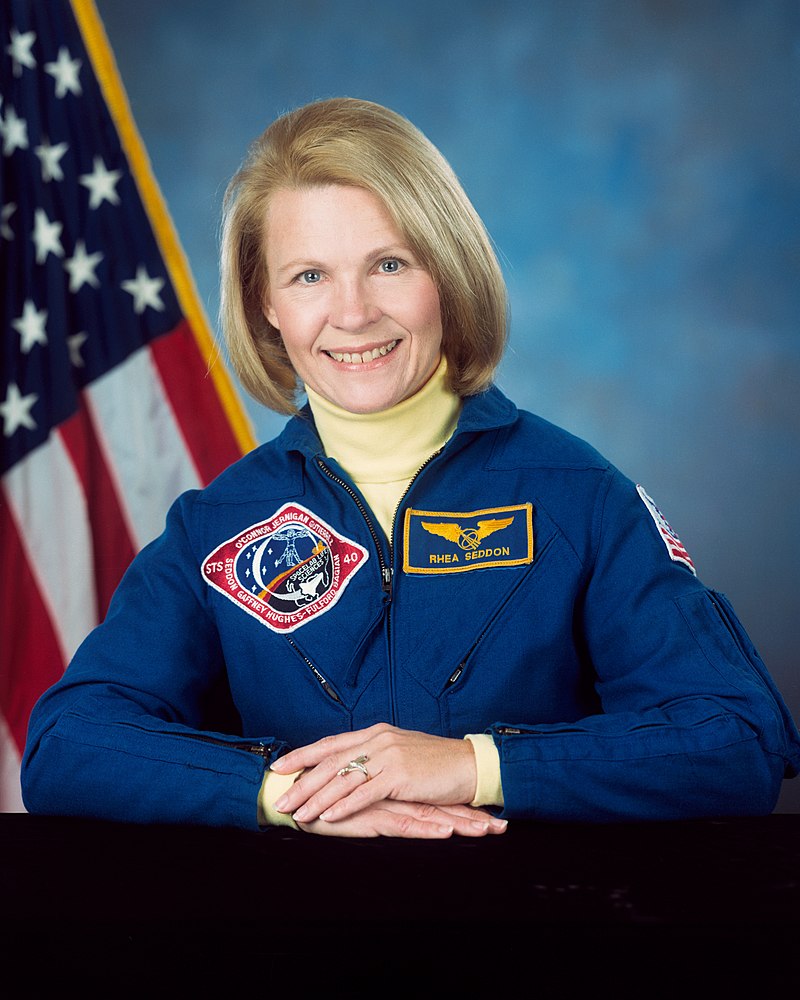
Margaret Rhea Seddon

Margaret Rhea Seddon
Margaret Rhea Seddon (born November 8, 1947) is an American surgeon and retired NASA astronaut. After being selected as part of the first group of astronauts to include women in 1978, she flew on three Space Shuttle flights: as a mission specialist on STS-51-D and STS-40, and as a payload commander for STS-58, accumulating over 722 hours in space.
STS-51-D lifted in the Discovery from the Kennedy Space Center (KSC) on April 12, 1985 On this mission she logged 168 hours in 109 Earth orbits.
After the flight she presented a banner she had flown with to Central Middle School (as Central High School now was), and met President Ronald Reagan at the Oval Office in Washington, DC.
The STS-40 SLS-1 mission lifted off from the KSC in the Space Shuttle Columbia on June 5, 1991. During the nine-day mission, the crew performed experiments that explored how humans, animals, and cells respond to microgravity and re-adapt to Earth's gravity on return. The mission completed 146 orbits of the Earth, and Seddon logged an additional 218 hours in space.
STS-58 with SLS-2 lifted off in the Space Shuttle Columbia on October 18, 1993. During the fourteen-day flight the seven-person crew performed neurovestibular, cardiovascular, cardiopulmonary, metabolic, and musculoskeletal medical experiments on themselves and 48 rats, studying human and animal physiology both on Earth and in space flight. In addition, the crew performed ten engineering tests aboard the Orbiter Columbia and nine Extended Duration Orbiter Medical Project experiments. The mission was accomplished in 225 orbits of the Earth in over 336 hours.
375
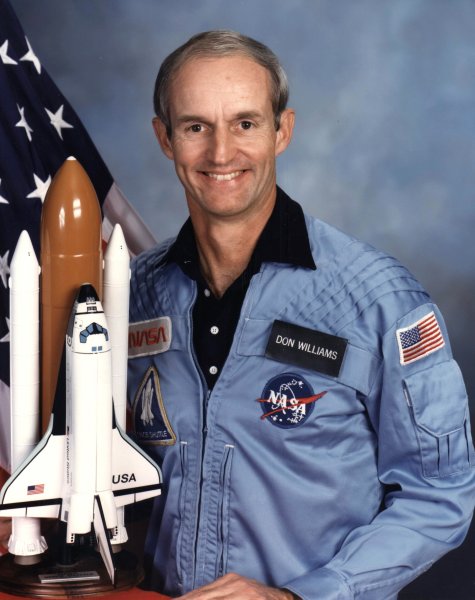
Donald Edward Williams

Donald Edward Williams
Captain Donald Edward Williams (February 13, 1942 – February 23, 2016) was an American naval officer and aviator, test pilot, mechanical engineer and NASA astronaut. He logged a total of 287 hours and 35 minutes in space.
STS-51-D Discovery (April 12–19, 1985) was launched from and returned to land at the Kennedy Space Center, Florida. The mission was accomplished in 109 orbits of the Earth in 167 hours, 54 minutes.
STS-34 Atlantis (October 18–23, 1989) was launched from Kennedy Space Center, Florida and returned to land at Edwards Air Force Base, California. The mission was accomplished in 79 orbits of the Earth in 119 hours, 41 minutes.
376
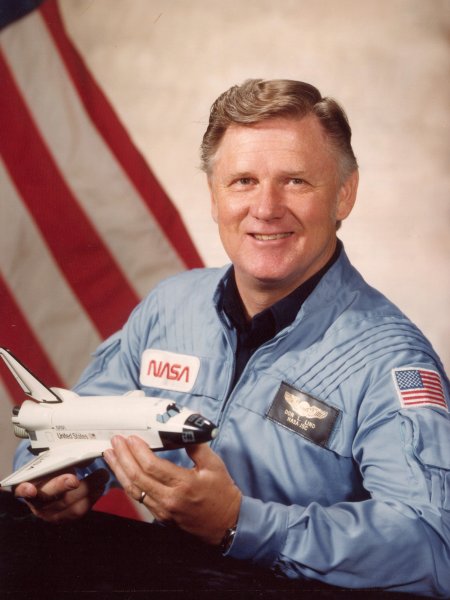
Don Leslie Lind

Don Leslie Lind
Don Leslie Lind (May 18, 1930 – August 30, 2022) was an American scientist, naval officer, aviator, and NASA astronaut. Lind flew as the lead mission specialist and de facto payload commander on STS-51-B (logging over 168 hours in space. STS-51-B, the Spacelab-3 science mission, launched from Kennedy Space Center, Florida, on April 29, 1985. Following several delays, this was the first fully operational Spacelab mission. After completing 110 orbits of the Earth, the Orbiter Challenger landed at Edwards Air Force Base, California, on May 6, 1985.
377
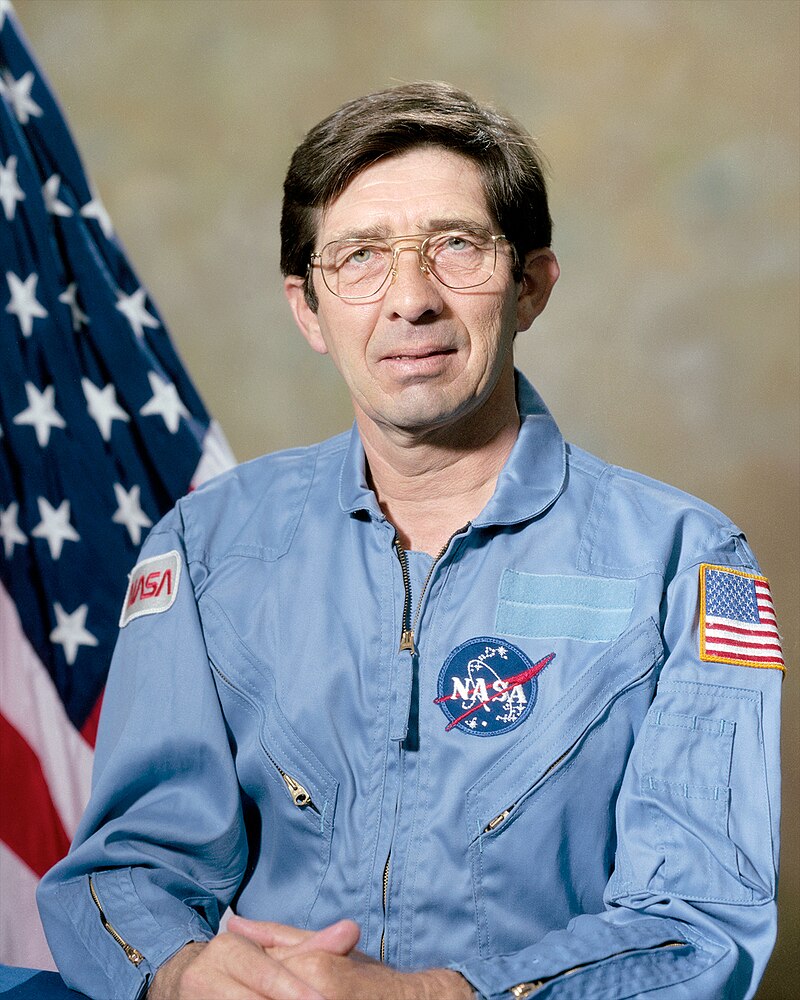
Lodewijk van den Berg

Lodewijk van den Berg
Lodewijk van den Berg (1932 – October 16, 2022) was a Dutch-born American chemical engineer. He studied crystal growth and flew on a 1985 Space Shuttle Challenger mission as a payload specialist.
Van den Berg was born in the Netherlands and was an astronaut; he was a naturalized American and not a Dutch citizen when he flew on the Challenger.
Van den Berg was a payload specialist on STS-51B Challenger (April 29 – May 6, 1985). STS-51B, the Spacelab-3 mission, was launched from the Kennedy Space Center, Florida, and returned to land at Edwards Air Force Base, California. It was the first operational Spacelab mission.
During the mission Van den Berg traveled over 2.9 million miles orbiting Earth 110 times and logged more than 168 hours in space.
378
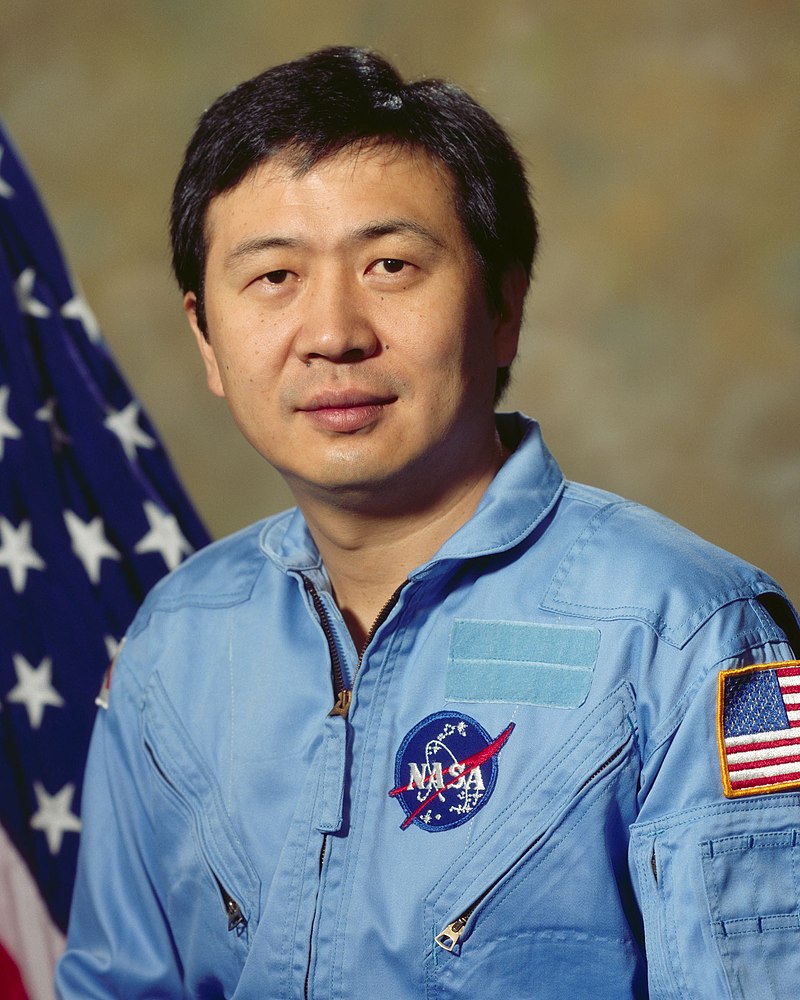
Taylor Gun-Jin Wang

Taylor Gun-Jin Wang
Taylor Gun-Jin Wang (born June 16, 1940) is a Chinese-born American scientist and in 1985, became the first person of Chinese origin to go into space. While an employee of the Jet Propulsion Laboratory, Wang was a payload specialist on the Space Shuttle Challenger mission STS-51-B.
Wang flew on STS-51-B Challenger (April 29-May 6, 1985). STS-51B/Spacelab-3 was launched from Kennedy Space Center, Florida, and returned to land at Edwards Air Force Base, California. It was the first operational Spacelab mission. The seven-man crew aboard Challenger conducted
The launch was flawless; all systems were "go", except for Dr. Wang's experiment. His experimental apparatus developed a malfunction. The possibility of going home empty handed saddened him. As the first person of Chinese descent to go into Space, the Chinese American community had taken a keen interest in his mission.
At mission conclusion, Wang traveled over 2.9 million miles in 110 Earth orbits, and logged over 168 hours in space.
379
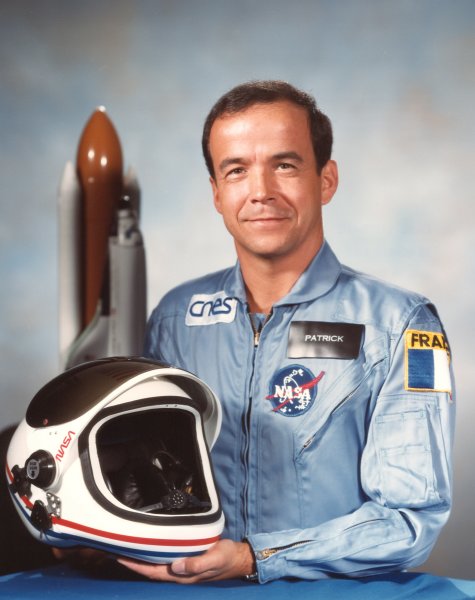
Patrick Pierre Roger Baudry

Patrick Pierre Roger Baudry
Patrick Pierre Roger Baudry (born March 6, 1946, in Cameroon) is a retired lieutenant colonel in the French Air Force and a former CNES astronaut. In 1985, he became the second French citizen in space, after Jean-Loup Chrétien, when he flew aboard NASA's Space Shuttle mission STS-51-G.
Baudry flew as a payload specialist on STS-51-G Discovery (June 17–24, 1985). STS-51-G was launched from Kennedy Space Center, Florida, and returned to land at Edwards Air Force Base, California. The international crew aboard Discovery deployed communications satellites for Mexico (Morelos), the Arab League (Arabsat), and the United States (AT&T Telstar). They deployed and later retrieved the SPARTAN satellite, which performed 17 hours of x-ray astronomy experiments while separated from the Space Shuttle. In completing this flight, Baudry traveled 2.5 million miles in 112 Earth orbits, logging over 169 hours in space.
380
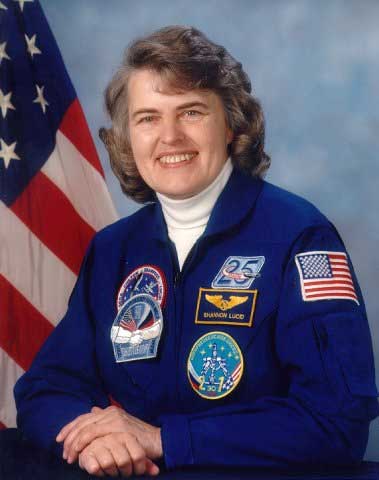
Shannon Matilda Wells Lucid

Shannon Matilda Wells Lucid
Shannon Matilda Wells Lucid (born January 14, 1943) is an American biochemist and retired NASA astronaut. She has flown in space five times, including a prolonged mission aboard the Russian space station Mir in 1996, and is the only American woman to have stayed on Mir. From 1996 to 2007, Lucid held the record for the longest duration spent in space by an American and by a woman. She was awarded the Congressional Space Medal of Honor in December 1996, making her the tenth person and the first woman to be accorded the honor.
STS-51-G lifted off from Launch Complex 39A at KSC in the Space Shuttle Discovery on June 17, 1985. The seven-day mission was to deploy three communications satellites: Morelos I for Mexico, Arabsat-1B for the Arab League, and Telstar 303 for the United States.
Discovery (STS-34 mission) landed at Edwards Air Force Base in California on June 24. The mission was accomplished in 112 orbits of the Earth, traveling 4.7 million kilometers (2.9 million miles) in 169 hours and 39 minutes (just over one week).
Atlantis (STS-43) lifted off from KSC on October 18, with Lucid on board. The crew filmed their activities with an IMAX camera. The mission completed 79 orbits of the Earth, traveling 3.2 million kilometers (2 million miles) in 119 hours and 39 minutes before landing at Edwards Air Force Base on October 23.
The Space Shuttle Columbia (STS-58) with SLS-2 on board lifted off from KSC on October 18, 1993. During the fourteen-day flight the crew performed neurovestibular, cardiovascular, cardiopulmonary, metabolic and musculoskeletal medical experiments on themselves and 48 rats. The mission completed 225 orbits of the Earth, traveling five million miles in 336 hours, 13 minutes and 1 second. Landing was at Edwards Air Force Base, California. On completion of this flight, Lucid had logged 838 hours and 54 minutes in space.
Lucid's mission to Mir (Shuttle-Mir) commenced on March 22, 1996, with liftoff from KSC aboard Atlantis on the STS-76 mission. Atlantis docked with Mir on March 24, and Lucid became the first American woman to live on the station. She joined cosmonauts Yuri Onufriyenko and Yuri Usachov, neither of whom spoke English.
In completing this mission Lucid traveled 121.0 million kilometers (75.2 million miles) in 188 days, 4 hours, 0 minutes. This included 179 days on Mir. Her stay on Mir was not expected to last so long but her return was delayed twice, extending her stay by about six weeks. As a result of her time aboard Mir, she held the record for the most hours in orbit by a non-Russian, and most hours in orbit by a woman until June 16, 2007, when her record for longest duration spaceflight by a woman was exceeded by Sunita Williams on the International Space Station.
381
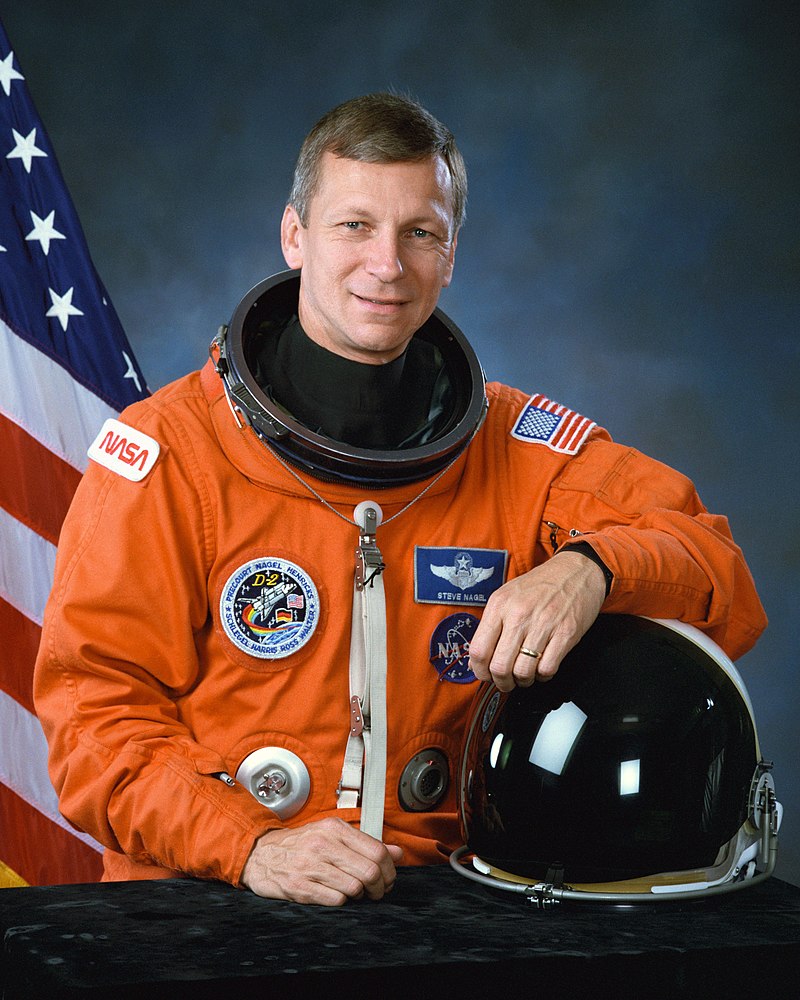
Steven Ray Nagel

Steven Ray Nagel
Steven Ray Nagel (October 27, 1946 – August 21, 2014), (Col, USAF), was an American astronaut, aeronautical and mechanical engineer, test pilot, and a United States Air Force pilot.[1] In total, he logged 723 hours in space.
Nagel first flew as a mission specialist on STS-51G, which launched from the Kennedy Space Center, Florida, on June 17, 1985. After completing approximately 170 hours of space flight, Discovery landed at Edwards Air Force Base, California, on June 24, 1985.
Nagel then flew as pilot on STS-61A, the West German D-1 Spacelab mission, which launched from Kennedy Space Center, Florida, on October 30, 1985. After completing 111 orbits of the Earth, Shuttle Challenger landed at Edwards Air Force Base, California on November 6, 1985.
On his third flight, Nagel was commander of STS-37, which launched into orbit on April 5, 1991, from Kennedy Space Center, Florida, and landed on April 11, 1991, at Edwards Air Force Base, California.
Nagel also served as commander of STS-55, the German D-2 Spacelab mission. After launching on April 26, 1993, on the Shuttle Columbia; the crew landed 10 days later on May 6, 1993, at Edwards Air Force Base, California. In total, he logged 723 hours in space.
382
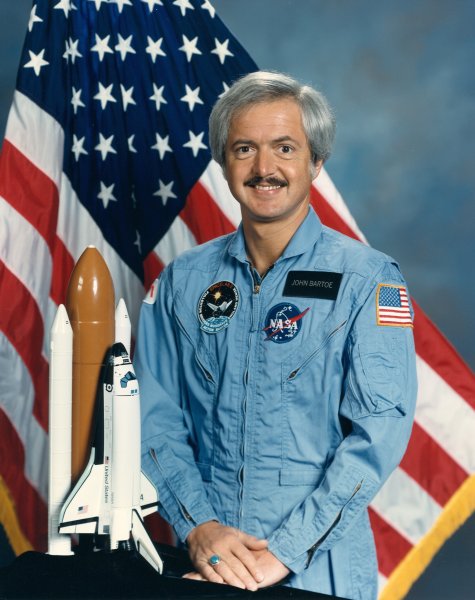
John-David Francis Bartoe

John-David Francis Bartoe
John-David Francis Bartoe (born November 17, 1944, in Abington, Pennsylvania) is an American astrophysicist. He flew aboard Space Shuttle mission STS-51-F as a Payload Specialist.
Before coming to NASA Headquarters, he flew on Space Shuttle mission STS-51-F (July 29 to August 6, 1985) as a civilian Navy payload specialist. In completing this flight, Bartoe traveled over 2.8 million miles in 126 Earth orbits and logged over 190 hours in space.
383
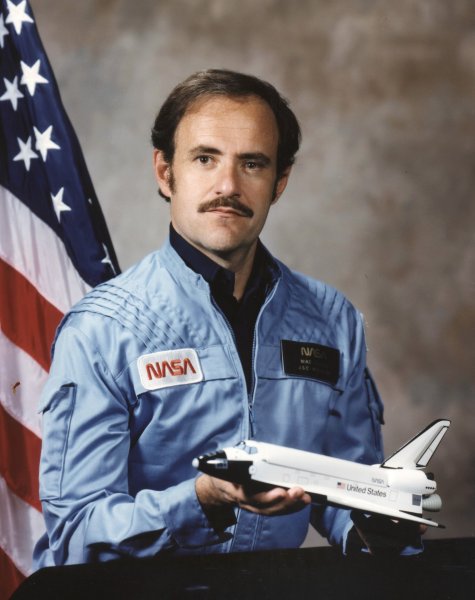
John Michael Lounge

John Michael Lounge
John Michael "Mike" Lounge (June 28, 1946 – March 1, 2011) was an American engineer, a United States Navy officer, a Vietnam War veteran, and a NASA astronaut. A veteran of three Space Shuttle flights, Lounge logged over 482 hours in space. He was a mission specialist on STS-51-I (1985) and STS-26 (1988) and was the flight engineer on STS-35 (1990).
Lounge was on-board STS-51-I Space Shuttle Discovery, launched from Kennedy Space Center, Florida, on August 27, 1985.. STS-51-I completed 112 orbits of the Earth before landing at Edwards Air Force Base, California, on September 3, 1985. Mission duration was 171 hours, 17 minutes, 42 seconds.
STS-26 Discovery, the first flight to be flown after the Challenger accident, launched from the Kennedy Space Center on September 29, 1988. It was a four-day mission Discovery completed 64 orbits of the Earth before landing at Edwards Air Force Base, California, on October 3, 1988. Mission duration was 97 hours, 57 seconds.
STS-35 Columbia, launched from the Kennedy Space Center on December 2, 1990. Lounge served as flight engineer on this 9-day flight that was dedicated to astronomy. Columbia completed 142 orbits of the Earth before landing at Edwards Air Force Base, California, on December 10, 1990. Mission duration was 215 hours, 5 minutes, 8 seconds.
384
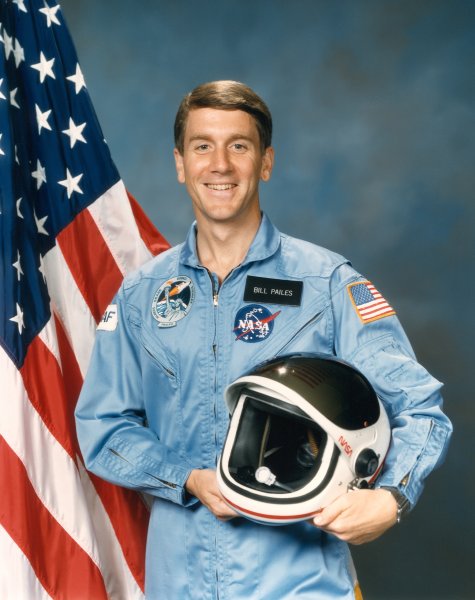
William Arthur Pailes

William Arthur Pailes
William Arthur Pailes (Colonel, USAF) (born June 26, 1952) is a former USAF astronaut in the Manned Spaceflight Engineer Program during the mid-1980s. He served as a payload specialist on STS-51-J Atlantis (October 3–7, 1985).
Colonel Pailes flew as a payload specialist on STS-51-J Atlantis (October 3–7, 1985) which launched from Kennedy Space Center, Florida, and returned to land at Edwards Air Force Base, California. STS-51-J was the second Space Shuttle Department of Defense mission. It was also the maiden voyage of the Atlantis orbiter. Pailes traveled over 1.6 million miles in 64 Earth orbits and logged more than 97 hours in space.
385
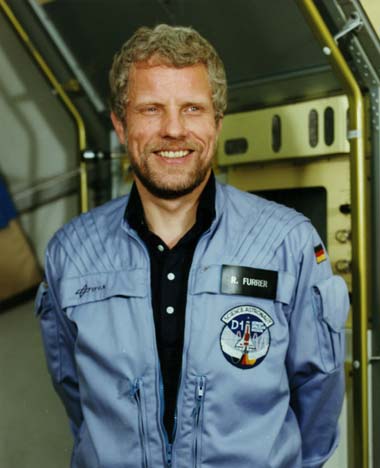
Reinhard Alfred Furrer

Reinhard Alfred Furrer
Reinhard Alfred Furrer (25 November 1940 – 9 September 1995) was a German physicist and astronaut. Furrer was born in Wörgl, Ostmark (now Austria).
He was a payload specialist on STS-61-A (D1), which was launched on 30 October 1985. He spent 7 days 00hours and 44 minutes
386
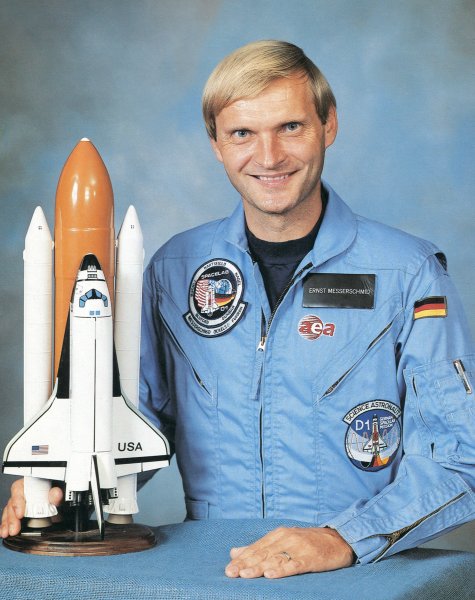
Ernst Willi Messerschmid

Ernst Willi Messerschmid
Ernst Willi Messerschmid (born 21 May 1945) is a German physicist and former astronaut. From 1978 to 1982, he worked at the DFVLR (the precursor of the DLR) in the Institute of Communications Technology in Oberpfaffenhofen on space-borne communications. In 1983, he was selected as one of the astronauts for the first German Spacelab mission D-1. He flew as a payload specialist on STS-61-A in 1985, spending over 168 hours in space.
387
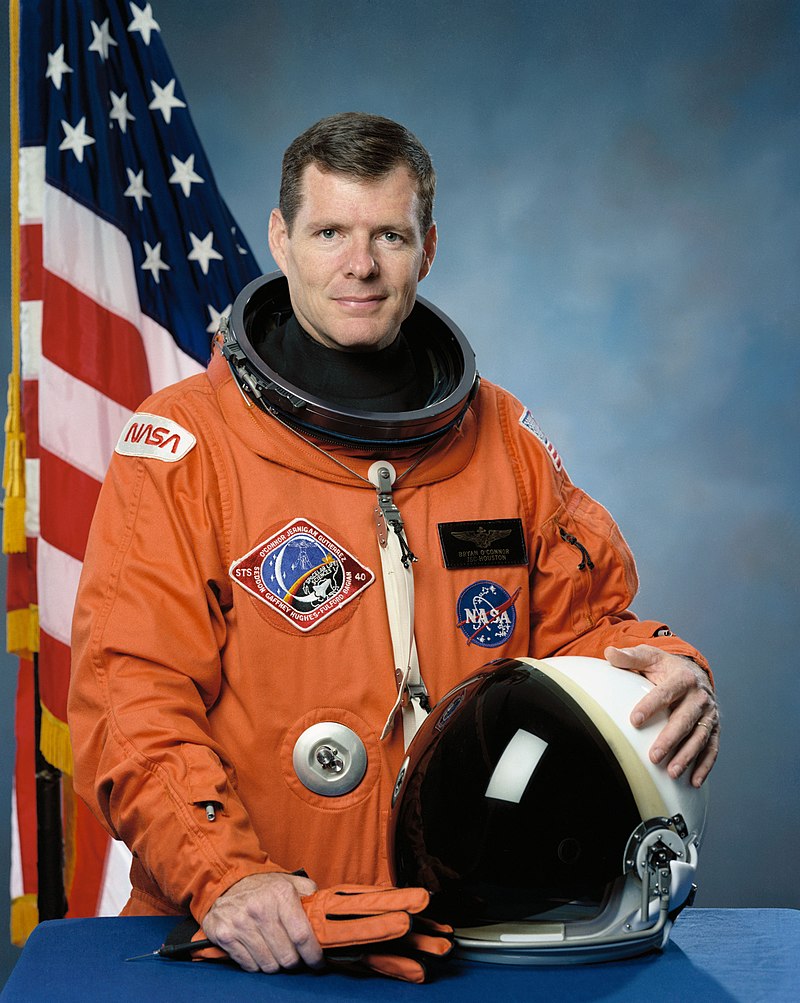
Bryan Daniel O'Connor

Bryan Daniel O'Connor
Bryan Daniel O'Connor (born September 6, 1946, in Orange, California, but considers Twentynine Palms, California to be his hometown) is a retired United States Marine Corps Colonel and former NASA astronaut.
He was part of STS-61-B Atlantis mission (November 26, to December 3, 1985). STS-61-B was the 22nd Shuttle flight and was the second-ever night shuttle launch from the Kennedy Space Center, Florida. It was the heaviest payload weight carried to orbit by the Space Shuttle to date, and the first flight to deploy four satellites. After completing 108 orbits of Earth in 165 hours, Atlantis returned to land at Edwards Air Force Base, California.
STS-40 was the first Space Shuttle mission (June 5–14, 1991), dedicated to life science studies. During the 9-day mission the crew performed an extensive series of biomedical experiments. After 145 orbits of the Earth traveling 3.29 million miles in 218 hours, O'Connor piloted Columbia to a landing at Edwards Air Force Base, California.
388
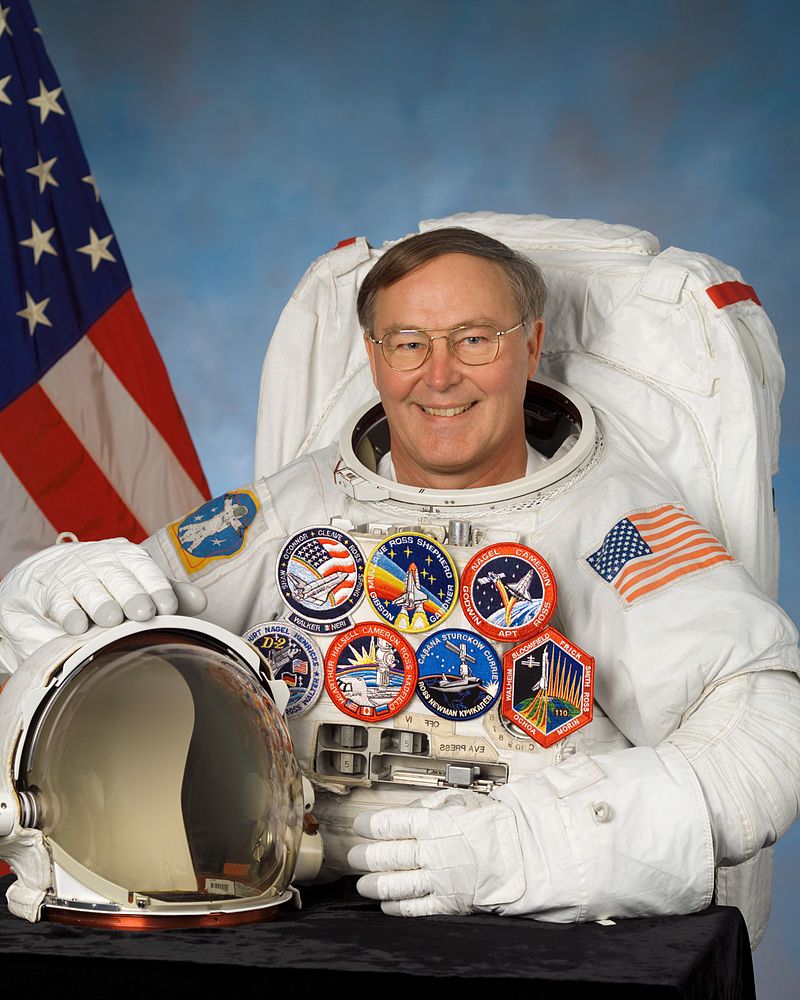
Jerry Lynn Ross

Jerry Lynn Ross
Jerry Lynn Ross (born January 20, 1948, Crown Point, Indiana) is a retired United States Air Force officer, engineer, and a former NASA astronaut. Ross is a veteran of 7 Space Shuttle missions, making him the joint record holder for most spaceflights (a record he shares with Franklin Chang-Diaz).
Ross flew as a mission specialist on STS 61-B (1985), STS-27 (1988) and STS-37 (1991), was the Payload Commander on STS-55/Spacelab-D2 (1993), and again served as a mission specialist on the second Space Shuttle to rendezvous and dock with the Russian Space Station Mir, STS-74 (1995), the first International Space Station assembly mission, STS-88 (1998) and STS-110 (2002). A veteran of 7 space flights, Ross has over 1,393 hours in space, including 57 hours and 55 minutes on 9 EVAs.
STS-61-B Atlantis was launched at night from the Kennedy Space Center (KSC), Florida, on November 26, 1985. Ross conducted two 6-hour spacewalks to demonstrate Space Station construction techniques with the EASE/ACCESS experiments. After completing 108 orbits of the Earth in 165 hours, 4 minutes, 49 seconds, Atlantis landed on Runway 22 at Edwards Air Force Base, California, on December 3, 1985.
STS-27 Atlantis, was launched from KSC on December 2, 1988. After 68 orbits of the Earth in 105 hours, 6 minutes, 19 seconds, the mission concluded with a dry lakebed landing on Runway 17 at Edwards Air Force Base, California, on December 6, 1988.
STS-37 Atlantis, was launched from KSC on April 5, 1991, and deployed the 35,000 pound Compton Gamma Ray Observatory. Ross performed two spacewalks totaling 10 hours and 49 minutes to manually deploy the stuck Gamma Ray Observatory antenna and to test prototype Space Station Freedom hardware. After 93 orbits of the Earth in 143 hours, 32 minutes, 44 seconds, the mission concluded with a landing on Runway 33, at Edwards Air Force Base, on April 11, 1991.
STS-55 Columbia, was launched from KSC on April 26, 1993, with Ross serving as Payload Commander/Mission Specialist. Columbia landed on May 6, 1993, at Edwards Air Force Base, after 160 orbits of the Earth in 239 hours and 45 minutes.
STS-74 Atlantis, launched from KSC on November 12, 1995, was NASA's second Space Shuttle mission to rendezvous and dock with the Russian Space Station Mir. During the eight-day flight, the crew aboard Space Shuttle Atlantis attached a permanent docking module to Mir. Atlantis landed at Kennedy Space Center on November 20 after accomplishing their achievements in 129 orbits of the Earth, traveling 3.4 million miles in 196 hours, 30 minutes, 44 seconds.
STS-88 Endeavour (December 4–15, 1998) was the first International Space Station assembly mission. During the 12-day mission, the U.S.-built Unity module was mated with the Russian Zarya module. Ross performed three spacewalks totaling 21 hours 22 minutes to connect umbilicals and attach tools/hardware The mission was accomplished in 185 orbits of the Earth in 283 hours and 18 minutes.
STS-110 Atlantis (April 8–19, 2002) was the 13th Shuttle mission to visit the International Space Station (ISS). Ross performed 2 EVAs totaling 14 hours and 9 minutes. Mission duration was 259 hours and 42 minutes.
389
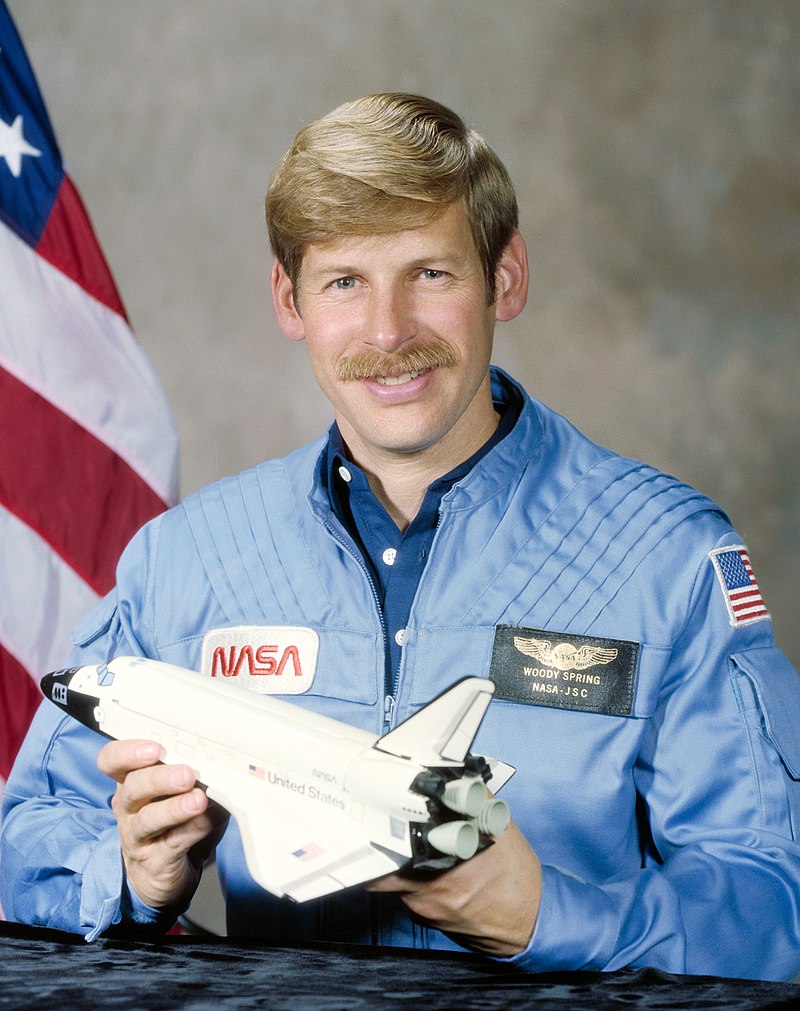
Sherwood Clark Spring

Sherwood Clark Spring
Sherwood Clark Spring (born September 3, 1944) is a retired United States Army colonel and former NASA astronaut.
Spring served as a mission specialist on STS-61-B which flew November 26, 1985, through December 3, 1985. During that mission, he was responsible for launching three communications satellites and performed two EVAs. With the completion of STS-61-B, he has logged a total of 165 hours in space.
390
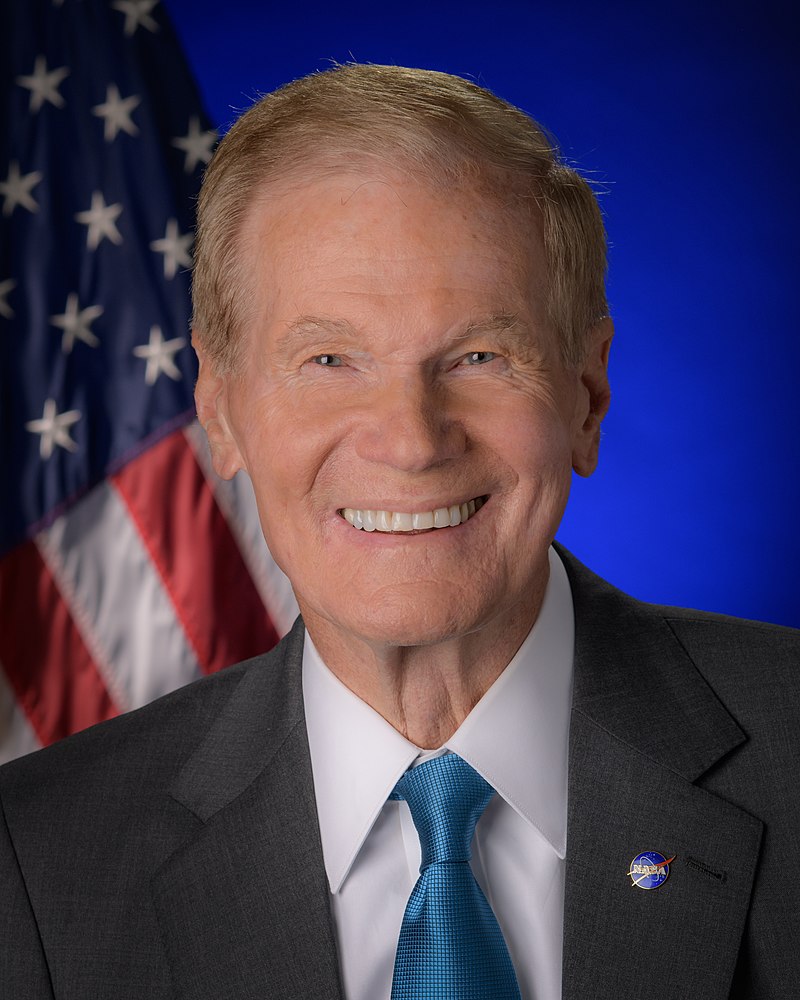
Bill Nelson

Bill Nelson
Bill Nelson (Clarence William Nelson II, born September 29, 1942) is an American politician and attorney serving as the administrator of the National Aeronautics and Space Administration (NASA). In January 1986, Nelson became the second sitting member of U.S. Congress to fly in space, after Senator Jake Garn, when he served as a payload specialist on mission STS-61-C aboard the Space Shuttle Columbia.
In 1986, Nelson became the second sitting member of Congress (and the first member of the House) to travel into space. He went through NASA training with Senator Jake Garn of Utah. Nelson was a Payload Specialist on Space Shuttle Columbia's STS-61-C mission from January 12 to 18, 1986. This mission was the last successful Space Shuttle flight prior to the Challenger accident, which occurred ten days after the end of this mission.
391
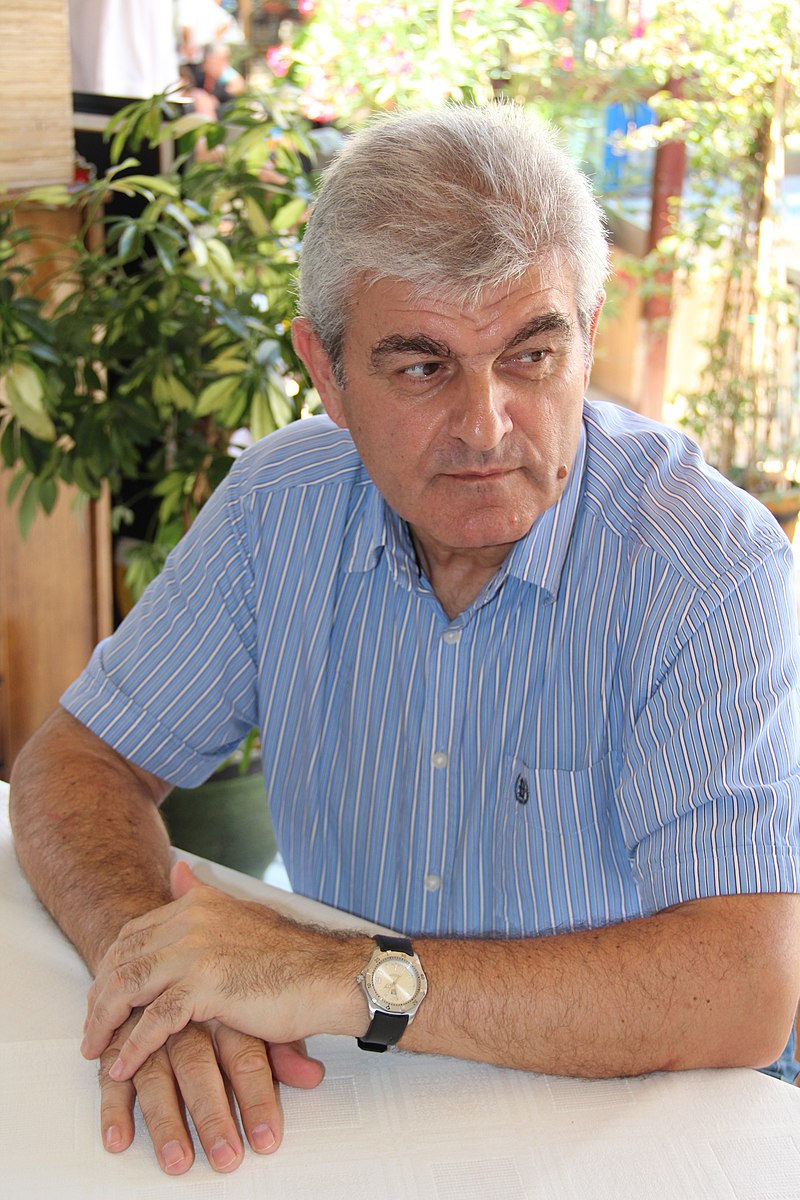
Aleksandr Panayotov Aleksandrov

Aleksandr Panayotov Aleksandrov
Aleksandr Panayotov Aleksandrov (Bulgarian: born December 1, 1951) is a retired Bulgarian cosmonaut. He is the second Bulgarian to have flown to space, after Georgi Ivanov.
Aleksandrov was selected as a Research Cosmonaut on March 1, 1978, as part of the Soviet Union's Intercosmos program. The selection featured six semifinalists, including the parachute jump record holder, Chavdar Djurov, who was killed during the selection process. Aleksandrov was selected as backup to Georgi Ivanov on the Soyuz 33 mission to the Salyut 6 space station. Subsequently, Aleksandrov was assigned to the prime crew of the Soyuz TM-5 mission to the Mir space station.
On June 7, 1988, Aleksandrov launched aboard TM-5 as a Research Cosmonaut along with mission commander Anatoly Solovyev and Viktor Savinykh. Upon arriving at Mir, Aleksandrov became the first Bulgarian to reach a Soviet space station, as the Soyuz 33 mission carrying Georgi Ivanov failed to reach the Salyut 6 space station. On June 17, Aleksandrov returned aboard Soyuz TM-4 along with his fellow crew members. He, along with his crew-mates, spent just under 10 days in space.
392
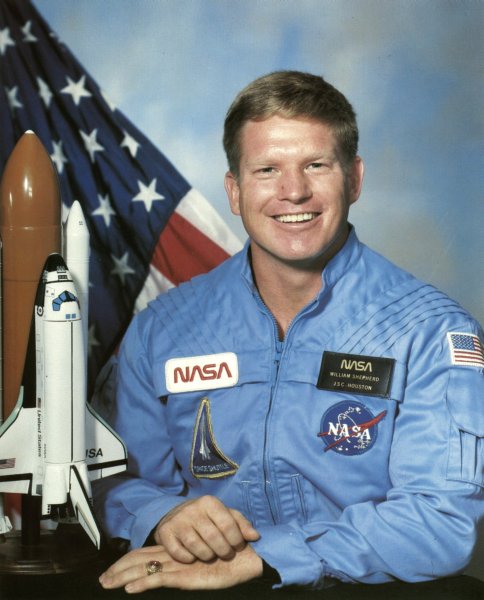
William Shepherd

William Shepherd
William Shepherd (William McMichael "Bill" Shepherd, born July 26, 1949), (Capt, USN, Ret.), is an American former Navy SEAL, aerospace, ocean, and mechanical engineer, and NASA astronaut, who served as commander of Expedition 1, the first crew on the International Space Station.
STS-27: Atlantis (December 2–6, 1988) Shepherd served with his crewmates on a mission that lasted 105 hours and carried Department of Defense payloads. The mission is noteworthy due to the severe damage Atlantis sustained to its critical heat-resistant tiles during ascent.
STS-41: Discovery (October 6–10, 1990) during 66 orbits of the Earth, the crew aboard the Orbiter successfully deployed the Ulysses, starting it on a four-year journey (via Jupiter) to investigate the polar regions of the Sun.
STS-52: Columbia (October 22 to November 1, 1992) was the 10-day mission deployed the Laser Geodynamic Satellite (LAGEOS), and conducted U.S. microgravity payload experiments.
Expedition 1: From October 31, 2000, to March 21, 2001, he and Russian cosmonauts Yuri Gidzenko and Sergey Krikalev launched from Baikonur on Soyuz TM 31 and served as Expedition 1, the first crew on board ISS. The crew returned to Earth on the Space Shuttle Discovery, STS 102.
393
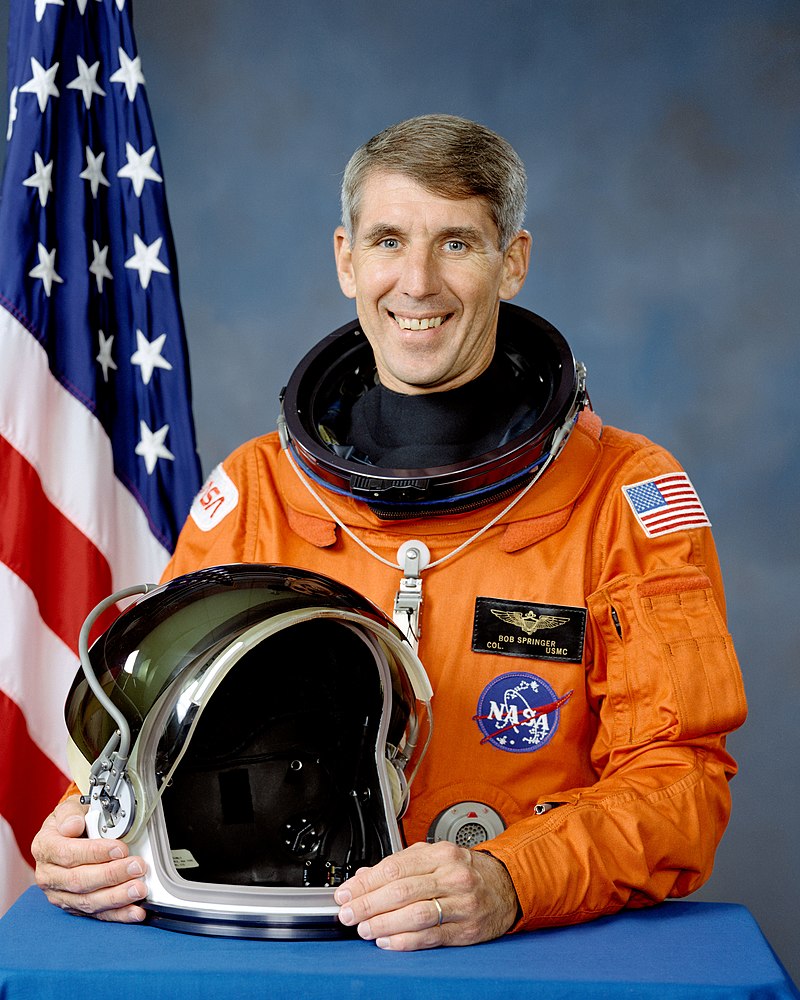
Robert Clyde Springer

Robert Clyde Springer
Robert Clyde Springer (born May 21, 1942) is a retired American astronaut and test pilot who flew as a mission specialist on two NASA Space Shuttle missions in 1989 and 1990. He has logged over 237 hours in space.
Springer became an astronaut in August 1981. His technical assignments included support crew for STS-3, concept development studies for the Space Operations Center, and the coordination of various aspects of the final development of the Remote Manipulator System ("Canadarm") for operational use. He worked at Mission Control in the Lyndon B. Johnson Space Center as the CAPCOM for seven flights between 1984 and 1985.
Space Shuttle Discovery (March 13–18, 1989) was launched from Kennedy Space Center. The STS-29 mission had 80 orbits of the Earth on this highly successful five-day mission. Mission duration was 119 hours and concluded with a landing at Edwards Air Force Base, California.
Space Shuttle Atlantis (November 15–20, 1990) was launched at night from Kennedy Space Center. During the five-day mission the crew conducted Department of Defense operations. After 80 orbits of the Earth, Atlantis and her crew landed back at the Kennedy Space Center, in the first Shuttle recovery in Florida since 1985.
394
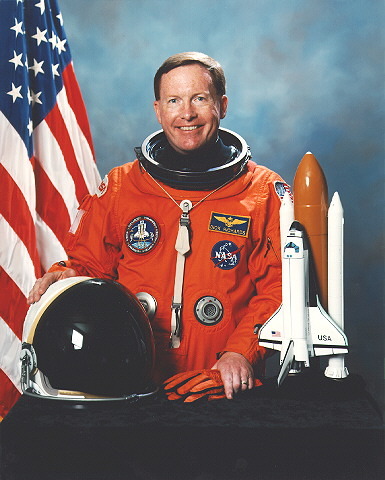
Richard N Richards

Richard N Richards
Richard N Richards (born August 24, 1946), (Capt, USN, Ret.), is a retired American naval officer and aviator, test pilot, chemical engineer, and a former NASA astronaut. He flew aboard four Space Shuttle missions in the 1980s and 1990s.
Richards became an astronaut in August 1981. Richards flew on four missions: STS-28 (August 8–13, 1989), STS-41 (October 6–10, 1990), STS-50 (June 25 – July 9, 1992), and STS-64 (September 9–20, 1994)--and logged a total of 33 days, 21 hours, 32 minutes, 15 seconds in space. In April 1995, Richards left the Astronaut Office, and was assigned to the Space Shuttle Program Office at the Johnson Space Center. He was designated as the Mission Director/Manager for the second Hubble Space Telescope Servicing Space Shuttle Mission (STS-82), and Mission Manager for the second Tethered Satellite System Space Shuttle mission (STS-75).
On his first space flight, Richards was pilot on the crew of STS-28 aboard the Space Shuttle Columbia, which launched from Kennedy Space Center, Florida, on August 8, 1989. The mission carried Department of Defense payloads and a number of secondary payloads. After 80 orbits of the Earth, this five-day mission concluded with a dry lakebed landing on Runway 17 at Edwards Air Force Base, California, on August 13, 1989. Mission duration was 121 hours 9 seconds.[3]
Slightly more than one year later, Richards commanded the crew of STS-41. The crew launched aboard the Space Shuttle Discovery on October 6 from the Kennedy Space Center, Florida, and landed at Edwards Air Force Base, California, on October 10, 1990, after 66 orbits of the Earth.
In June 1992, Richards commanded the crew of STS-50 aboard the Space Shuttle Columbia. STS-50 was the first flight of the United States Microgravity Laboratory and the first extended duration Orbiter flight. Over a two-week period, the STS-50 flight crew conducted a wide variety of experiments relating to materials processing and fluid physics in a microgravity environment. At that time this was the longest Space Shuttle flight in history.
In September 1994, Richards commanded the STS-64 crew aboard the Space Shuttle Discovery. Mission duration was 10 days, 22 hours, 51 minutes.
395
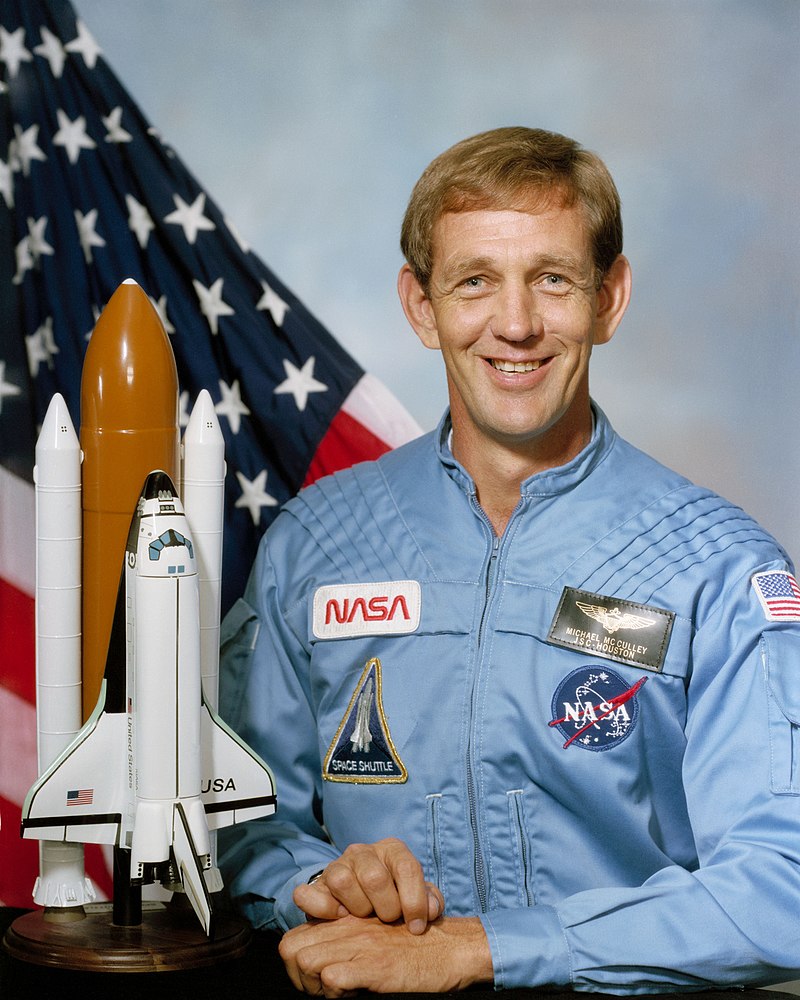
Michael James McCulley

Michael James McCulley
Michael James "Mike" McCulley (born August 4, 1943), (Capt, USN, Ret.), is a retired American naval officer and aviator, test pilot, metallurgical engineer, and former NASA astronaut, and was the first submariner in space. He served as pilot on STS-34 Atlantis mission that among other things deployed the Galileo spacecraft on its journey toward Jupiter.
McCulley was the pilot on mission STS-34. The crew aboard Shuttle Orbiter Atlantis launched from Kennedy Space Center, Florida on October 18, 1989, and landed at Edwards Air Force Base, California, on October 23, 1989. During the mission crew members successfully deployed the Galileo spacecraft on its journey to explore Jupiter. Mission duration was 4 days, 23 hours, 41 minutes.
396
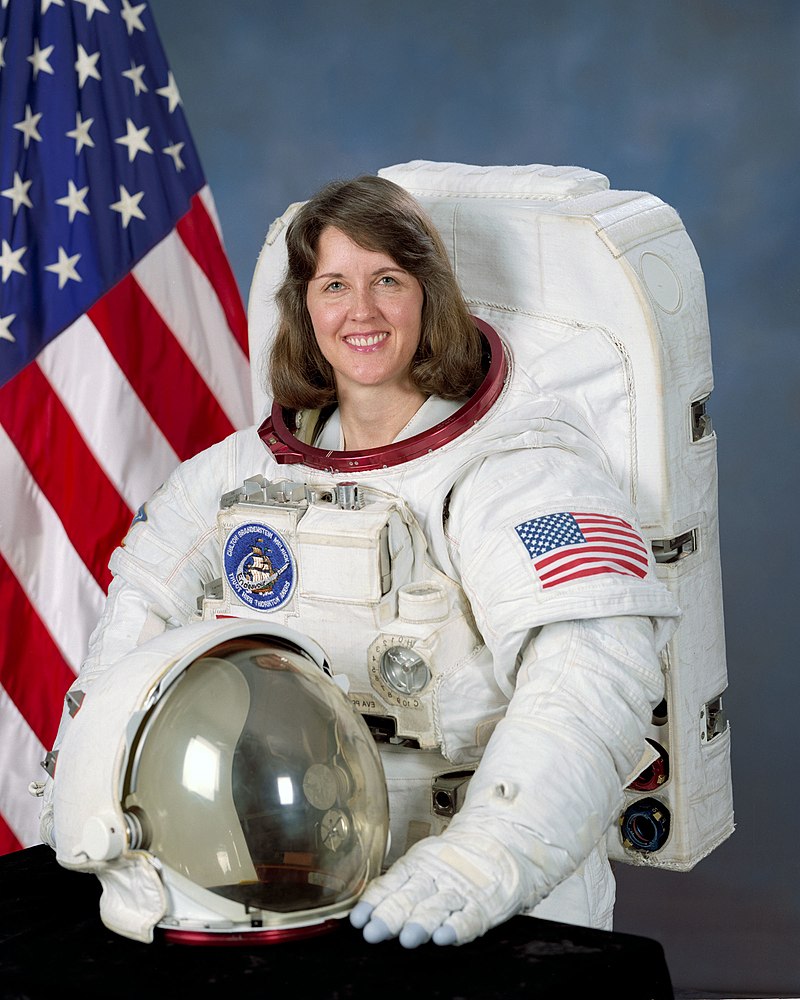
Kathryn C Thornton

Kathryn C Thornton
Kathryn C Thornton (born August 17, 1952) is an American scientist and a former NASA astronaut with over 975 hours in space, including 21 hours of extravehicular activity.
Selected by NASA Thornton became an astronaut in July 1985. A veteran of four space flights, Thornton flew on STS-33 in 1989, STS-49 in 1992, STS-61 in 1993, and STS-73 in 1995. She has logged over 975 hours in space, including more than 21 hours of extravehicular activity (EVA).
Thornton was a mission specialist on the crew of STS-33 which launched at night from Kennedy Space Center, Florida, on November 22, 1989, aboard the Space Shuttle Discovery. The mission carried Department of Defense payloads and other secondary payloads. After 79 orbits of the Earth, this five-day mission concluded on November 27, 1989, at Edwards Air Force Base, California.
On her second flight, Thornton served on the crew of STS-49, May 7–16, 1992, on board the maiden flight of the new Space Shuttle Endeavour. Thornton was one of two EVA crew members who evaluated Space Station assembly techniques on the fourth EVA. STS-49 logged 213 hours in space and 141 Earth orbits prior to landing at Edwards Air Force Base, California.
STS-61 launched at night from the Kennedy Space Center, Florida, on December 2, 1993. During the 11-day flight, the Hubble Space Telescope was captured and restored to full capacity through a record five spacewalks by four astronauts, including Thornton. After having traveled 4,433,772 miles in 163 orbits of the Earth, the crew of Endeavour returned to a night landing at the Kennedy Space Center on December 13, 1993.
From October 20 to November 5, 1995, Thornton served aboard Space Shuttle Columbia on STS-73,â as the payload commander of the second United States Microgravity Laboratory mission. In completing her fourth space flight, Thornton orbited the Earth 256 times, traveled over 6 million miles, and logged a total of 15 days, 21 hours, 52 minutes and 21 seconds in space.
397
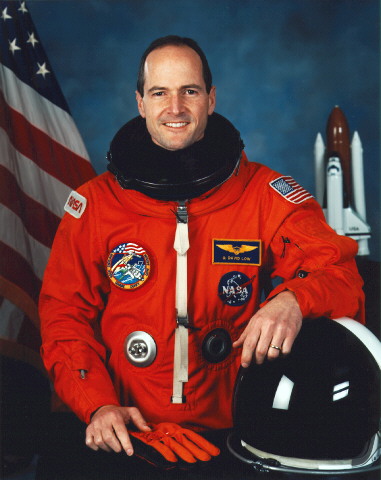
George David Low

George David Low
George David Low (February 19, 1956 – March 15, 2008) was an American aerospace executive and a NASA astronaut. In addition to holding some technical assignmentsin NASA, he logged more than 700 hours in space (including stints on the Columbia, the Atlantis, and the Endeavour Space Shuttles), before he left NASA in 1996 to pursue a career in the private sector.
On his first mission, Low was a crew member on STS-32 which launched from the Kennedy Space Center, Florida, on January 9, 1990. Following 173 orbits of the Earth in 261 hours, Columbia returned to a night landing at Edwards Air Force Base, California, on January 20, 1990.
Low next served as the flight engineer aboard the Space Shuttle Atlantis on STS-43. The nine-day mission launched from the Kennedy Space Center, Florida, on August 2, 1991. After 142 orbits of the Earth in 213 hours, the mission concluded with a landing on Runway 15 at the Kennedy Space Center on August 11, 1991.
On STS-57, Low served as payload commander aboard the Space Shuttle Endeavour, which launched from the Kennedy Space Center, Florida, on June 21, 1993. During the mission Low, along with crew mate Peter J.K. Wisoff, conducted a 5-hour, 50-minute spacewalk during which the EURECA communications antennas were manually positioned for latching. Endeavour landed at the Kennedy Space Center on July 1, 1993, after 155 orbits of the Earth in 239 hours.
398
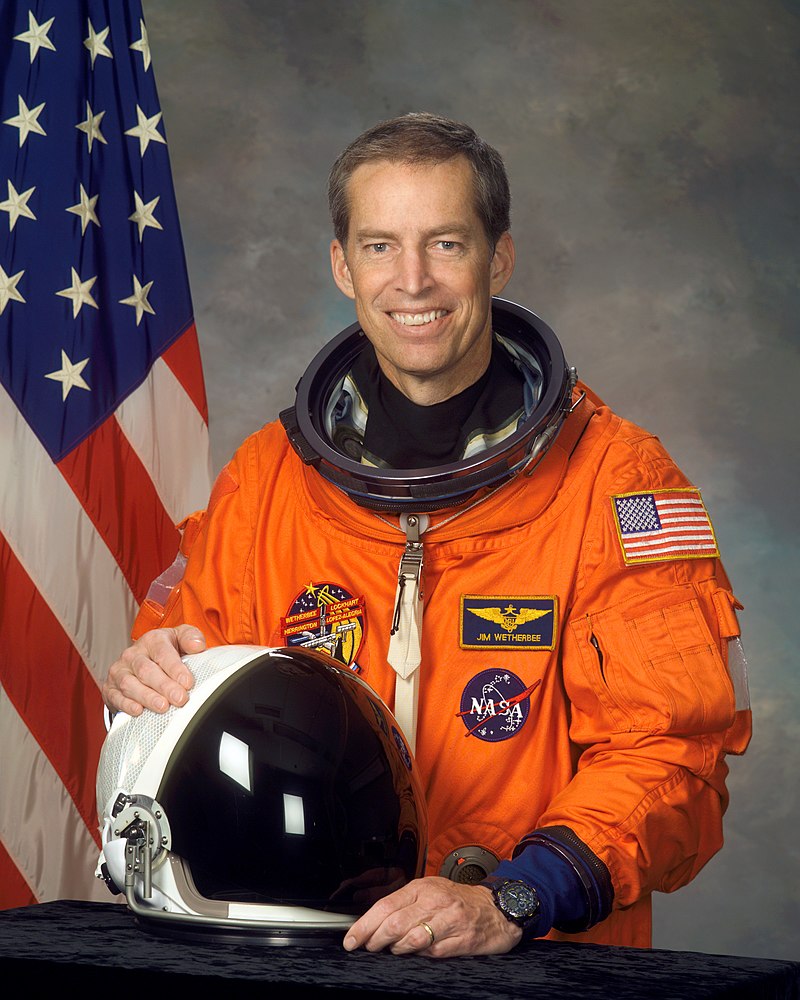
James Donald Wetherbee

James Donald Wetherbee
James Donald Wetherbee (born November 27, 1952) (Capt, USN, Ret.), is a retired United States Navy officer and aviator, test pilot, aerospace engineer, and NASA astronaut. He is a veteran of six Space Shuttle missions and is the only American to have commanded five spaceflight missions.
Wetherbee was selected as an astronaut candidate in 1984, and became an astronaut in June 1985. He piloted mission STS-32 in 1990 and commanded missions STS-52 (1992), STS-63 (1995), STS-86 (1997), STS-102 (2001), and STS-113 (2002). The final three missions were dockings with Mir and the International Space Station; STS-113 was the last Space Shuttle mission before the Columbia disaster.
Whetherbee piloted STS-32, Columbia (January 9–20, 1990). Mission duration was 173 orbits in 261 hours and 01 minute.
Whetherbee Commanded STS-52, Columbia (October 22 to November 1, 1992) successfully deployed the Laser Geodynamic Satellite (LAGEOS), a joint Italian-American project. Mission duration was 236 hours and 56 minutes.
He was commander for STS-63: Discovery (February 2–11, 1995), and was the first joint flight of the new Russian-American Space Program. Mission highlights included the rendezvous with the Russian Space Station, Mir, operation of Spacehab, and the deployment and retrieval of Spartan 204. The mission was accomplished in 129 orbits in 198 hours and 29 minutes.[8]
STS-86: Atlantis (September 25 to October 6, 1997) was the seventh mission to rendezvous and dock with the Russian Space Station Mir. Mission duration was 169 orbits in 259 hours and 21 minutes.âÂÂ
STS-102: Discovery (March 8–21, 2001) was the eighth Space Shuttle mission to visit the International Space Station. Mission duration was 307 hours and 49 minutes.[9]:âÂÂ152–153âÂÂ
STS-113: Endeavour (November 23 to December 7, 2002) was the sixteenth Space Shuttle mission to the International Space Station in which Whetherbee was also the part of crew. Endeavour also delivered a new Expedition 6 crew to the Station, returning to Earth on December 7, 2002, with the Expedition 5 crew ending their 6-month stay in space. The total mission duration was 13 days, 18 hours and 47 minutes.
399
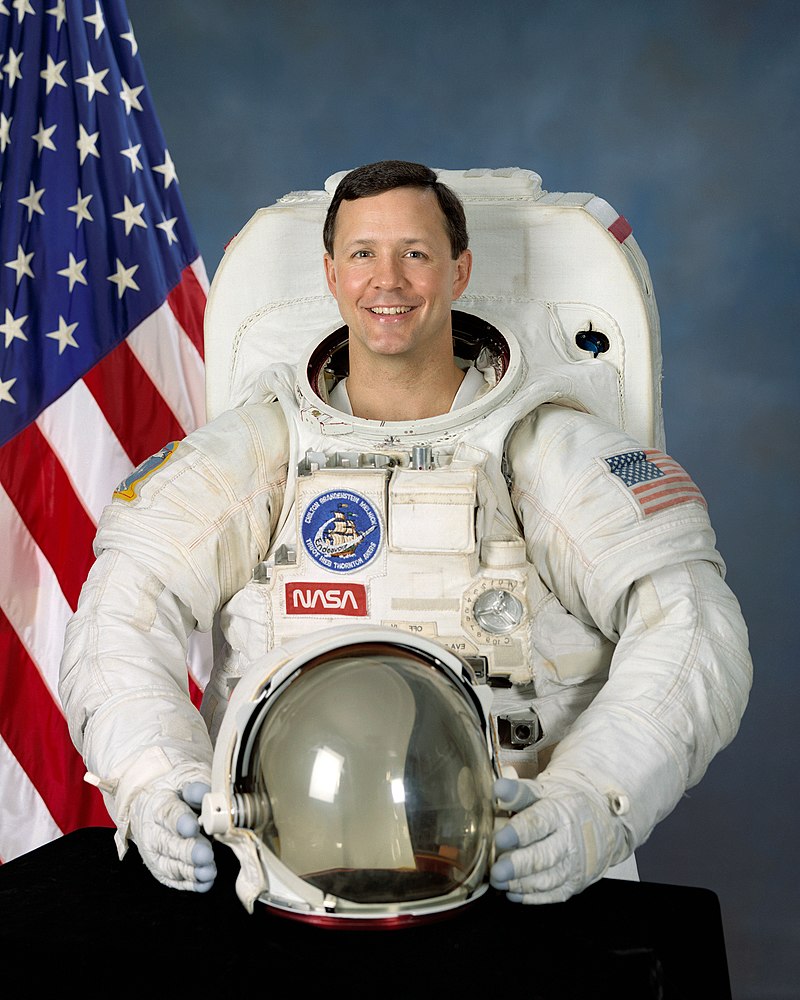
Pierre Joseph Thuot

Pierre Joseph Thuot
Pierre Joseph Thuot (born May 19, 1955) is a retired United States Navy captain and NASA astronaut. He went into space three times, spending over 650 hours in space, including over 15 hours in three space walks. He is a former U.S. record holder for time spent on one spacewalk, and participated in the first three-person spacewalk.
A veteran of three space flights, STS-36 in 1990, STS-49 in 1992 and STS-62 in 1994, Thuot has logged over 654 hours in space, including 17.7 hours on three space walks. Thuot was the first member of NASA Astronaut Group 11 to fly a shuttle mission.
On his first flight, Thuot was a mission specialist on the crew of STS-36 which was launched from the Kennedy Space Center, Florida, on February 28, 1990, aboard the Space Shuttle Atlantis. Following 72 orbits of the Earth in 106 hours, the STS-36 mission concluded with a lakebed landing at Edwards Air Force Base, California, on March 4, 1990, after traveling 1.87 million miles.
Thuot was a mission specialist on the crew of STS-49, the maiden voyage of the Space Shuttle Endeavour, which was launched from the Kennedy Space Center on May 7, 1992. During that mission, Thuot, along with astronaut Richard Hieb, performed three spacewalks which resulted in the capture and repair of the stranded Intelsat VI F3 communications satellite. The third spacewalk, which also included astronaut Thomas Akers, was the first-ever three-person spacewalk. This 8 hour and 29 minute spacewalk, the longest in history, broke a twenty-year-old record that was held by the Apollo 17 astronauts. The mission concluded on May 16, 1992, with a landing at Edwards Air Force Base after orbiting the Earth 141 times in 213 hours and traveling 3.7 million miles.
On March 4, 1994, Thuot was launched aboard Space Shuttle Columbia on STS-62. During the spacecraft glow investigation, Columbia's orbital altitude was lowered to 105 nautical miles (194 km), the lowest ever flown by a Space Shuttle. STS-62, one of the longest Space Shuttle missions, concluded on March 18, 1994, with a landing at the Kennedy Space Center after orbiting the Earth 224 times in 13 days, 23 hours, and 16 minutes and traveling 5.8 million miles.
With the completion of his third mission, Thuot has logged over 654 hours in space, including over 17.7 hours on three spacewalks.
400
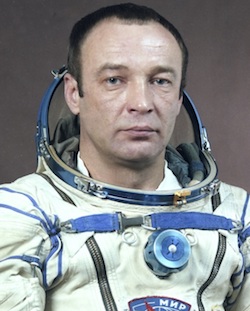
Gennady Mikhailovich Manakov

Gennady Mikhailovich Manakov
Gennady Mikhailovich Manakov (Russian: 1 June 1950 – 26 September 2019) was a Soviet and Russian cosmonaut who commanded two Soyuz flights to the Mir space station.
He was born in Yefimovka, Chkalov Oblast, Russian SFSR, on 1 June 1950. He was selected on 2 September 1985 and flew as Commander on Soyuz TM-10 and Soyuz TM-16, before retiring on 20 December 1996.
401
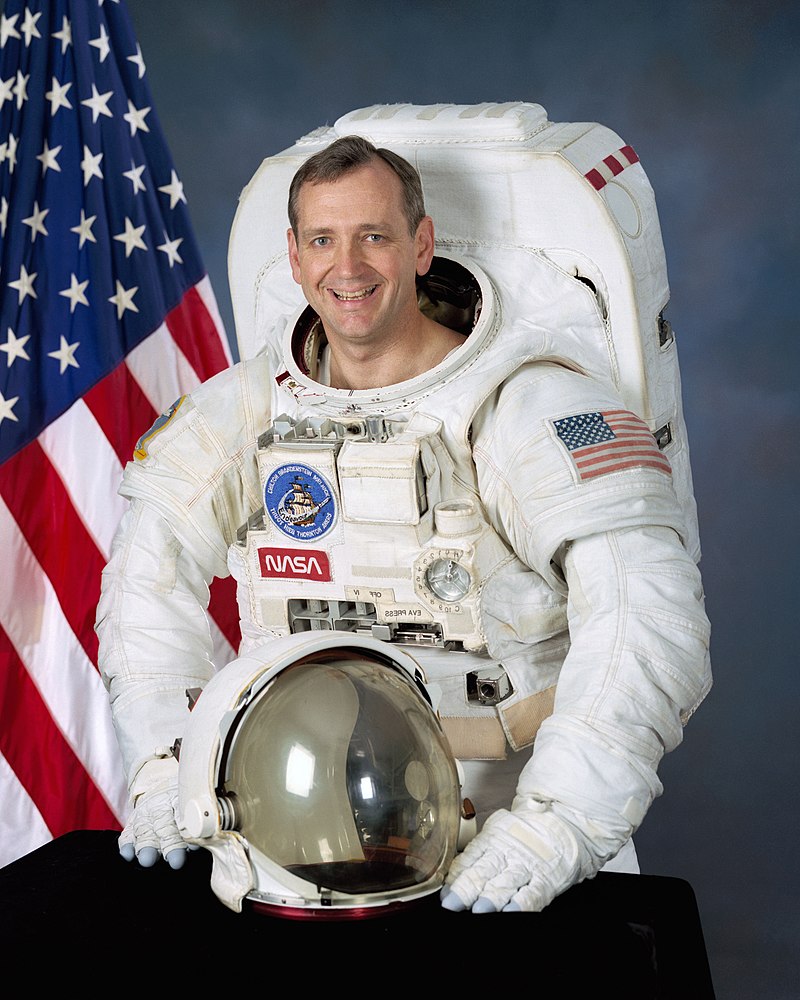
Thomas Dale Akers

Thomas Dale Akers
Thomas Dale Akers (born May 20, 1951) is a former American astronaut in NASA's Space Shuttle program.
Akers is a veteran of four shuttle flights in which he spent over 800 hours in orbit, including more than 29 hours of extra-vehicular activity (EVA) experience. In each of his flights, his role was as a mission specialist.
His first space flight was in 1990 on STS-41, the 11th flight of Space Shuttle Discovery. He was instrumental in deploying the European Space Agency satellite Ulysses, a solar-exploration craft, as well as tending several secondary payloads and experiments.
His next mission was in 1992 on STS-49, the maiden flight of Shuttle Endeavour. A primary goal of that mission was to capture and repair the non-functional Intelsat VI-F3 satellite. The first two attempts failed; Akers joined the third attempt which was successful. This marks the first three-person EVA in human history and was also the longest EVA (8 hours, 29 minutes) ever conducted to that time.
On Akers' third mission in 1993 on STS-61, the fifth flight of Endeavour, he was one of four mission specialists who repaired and upgraded the Hubble Space Telescope on its first servicing mission. Akers spent just under 13.5 hours outside the Endeavour in two EVAs.
His last mission was in 1996 on STS-79, the 17th flight of shuttle Atlantis. This was the fourth shuttle flight to rendezvous with the Russian space station Mir and the first to exchange U.S. astronauts with Mir, returning Shannon Lucid to earth and leaving John Blaha.
402
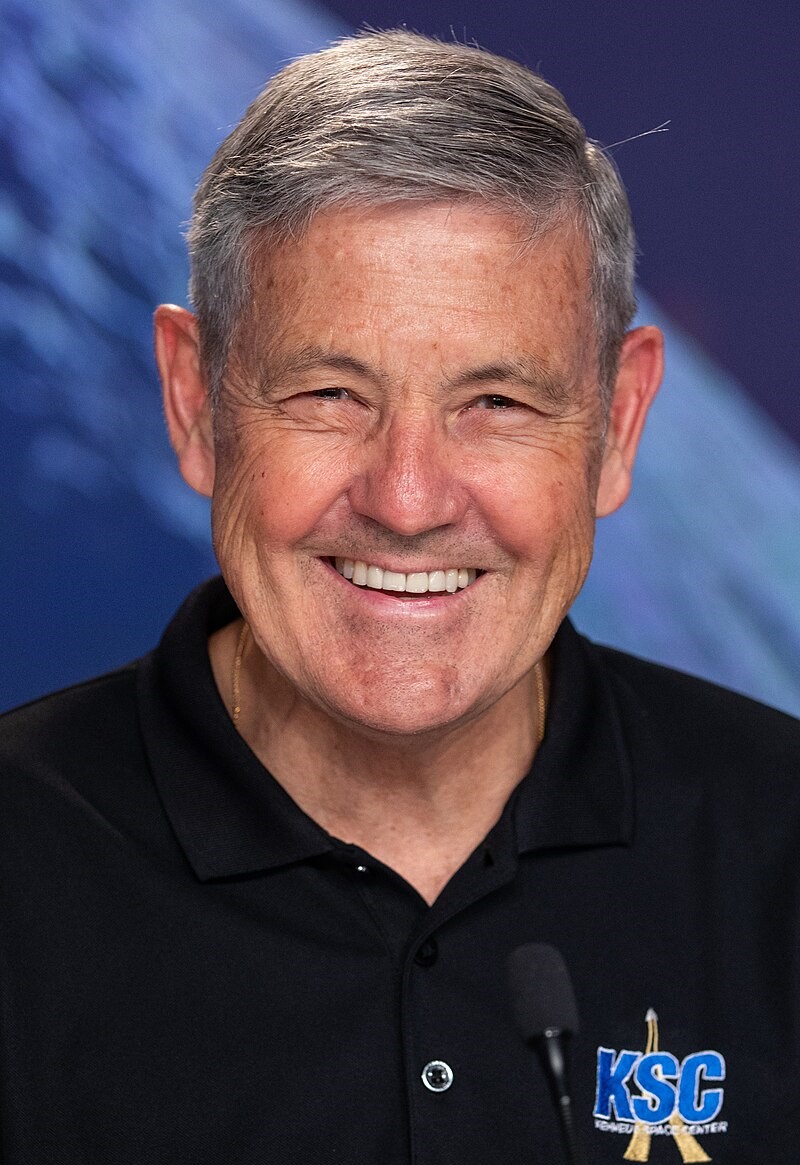
Robert Donald Cabana

Robert Donald Cabana
Robert Donald Cabana (born January 23, 1949 in Minneapolis, Minnesota) is the Associate Administrator of the National Aeronautics and Space Administration (NASA), a NASA astronaut (currently as a non-flight eligible management astronaut), and a veteran of four Space Shuttle flights STS-41 Discovery, STS-53 Discovery , STS-65 Columbia and STS-88 Endeavour .
Cabana was member of STS-41 Discovery launched on October 6, 1990, from the Kennedy Space Center, Florida, and landed at Edwards Air Force Base, California, on October 10, 1990, after 66 orbits of the Earth.
STS-53 Discovery launched from the Kennedy Space Center, Florida, on December 2, 1992. The crew of five deployed the classified Department of Defense payload DOD-1 and then performed several Military-Man-in-Space and NASA experiments. After completing 115 orbits of the Earth in 175 hours, Discovery landed at Edwards Air Force Base, California, on December 9, 1992.
STS-65 Columbia launched from the Kennedy Space Center, Florida, on July 8, 1994, returning to Florida on July 23, 1994. The mission was accomplished in 236 orbits of the Earth in 353 hours and 55 minutes.
STS-88 Endeavour (December 4–15, 1998) was the first International Space Station assembly mission. During the 12-day mission, Unity, the U.S. built node, was attached to Zarya, the Russian built Functional Cargo Block (FGB). The mission was accomplished in 185 orbits of the Earth in 283 hours and 18 minutes.
Cabana has logged over 1,010 hours in space.
403
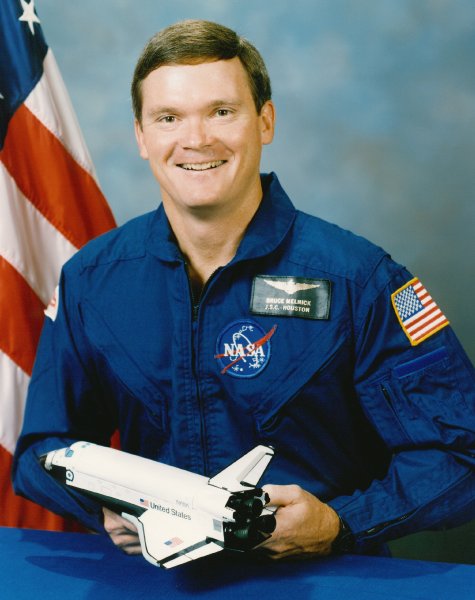
Bruce Edward Melnick

Bruce Edward Melnick
Bruce Edward Melnick (born December 5, 1949) is a retired American astronaut and United States Coast Guard officer. He participated in the STS-41 and STS-49 Missions
Melnick served as a mission specialist during STS-41. The Discovery launched from LC-39B, on October 6, 1990, at 11:47:15 UTC. The STS-41 mission concluded with the successful landing of the Discovery at Edwards Air Force Base, Runway 22, on October 10, 1990, at 13:57:19 UTC.
Melnick once again served as a mission specialist during STS-49. On May 7, 1992, 23:40:00 UTC, the Endeavour launched from LC-39B on its maiden flight. STS-49 concluded with the safe landing of the Endeavour at the Edwards Air Force Base, Runway 22 on May 16, 1992, at 20:57:38 UTC.
404
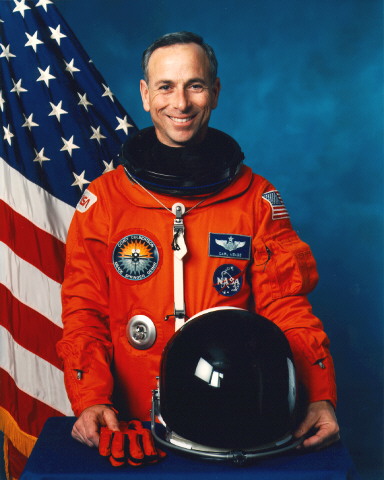
Carl Joseph Meade

Carl Joseph Meade
Carl Joseph Meade (born November 16, 1950) is a former NASA astronaut. A veteran of three space flights, Meade has logged over 712 hours in space. He served as a mission specialist on STS-38 in 1990, STS-50 in 1992, and STS-64 in 1994.
STS-38 launched at night from the Kennedy Space Center, Florida, on November 15, 1990, concluded after 80 orbits of the Earth in 117 hours, 54 minutes, 28 seconds. In the first Shuttle recovery in Florida since 1985, Space Shuttle Atlantis and her five-man crew landed back at the Kennedy Space Center on November 20, 1990.
STS-50, carrying the first United States Microgravity Laboratory (USML), launched from the Kennedy Space Center, Florida, on June 25, 1992 Mission duration was 331 hours, 30 minutes, 4 seconds. After 221 orbits of the Earth, the crew of Columbia landed at the Kennedy Space Center on July 9, 1992, thus ending the longest flight in the history of the Space Shuttle Program.
Meade flew on STS-64 (September 9–20, 1994) aboard the Space Shuttle Discovery. Meade logged 6.9 hours outside Discovery and 3.6 hours piloting the jetpack. Mission duration was 10 days, 22 hours, 51 minutes.
405
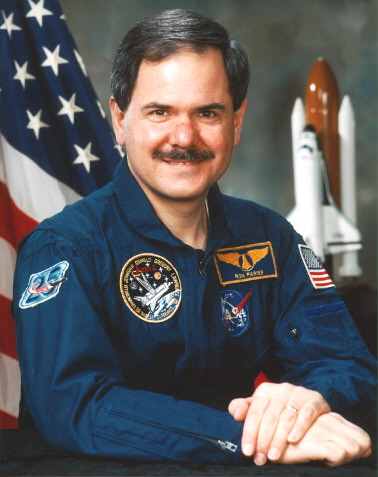
Ronald Anthony Parise

Ronald Anthony Parise
Ronald Anthony Parise (born on May 24, 1951 – May 9, 2008 in Warren, Ohio) was an Italian American scientist who flew aboard two NASA Space Shuttle missions as a payload specialist in STS-35/Astro-1 Columbia and STS-67/Astro-2 Endeavour missions.
STS-35/Astro-1 Columbia (December 2–December 10, 1990). The Astro observatory is a unique complement of three telescopes designed to simultaneously record spectral data, polarimetric data and imagery of faint astronomical objects in the far ultraviolet. The mission duration was 215 hours and 5 minutes. The Shuttle landed at Edwards Air Force Base in California.
STS-67/Astro-2 Endeavour (March 2–18, 1995). This was the second flight of the Astro observatory. During this record-setting 16-day mission, the crew conducted observations around the clock to study the far ultraviolet spectra of faint astronomical objects and the polarization of ultraviolet light coming from hot stars and distant galaxies. The mission duration was 399 hours and 9 minutes. The landing was at Edwards Air Force Base in California.
Parise was instrumental in bringing amateur radio equipment to the Shuttle and operated on the air during his own missions. His amateur radio call sign was WA4SIR.
406
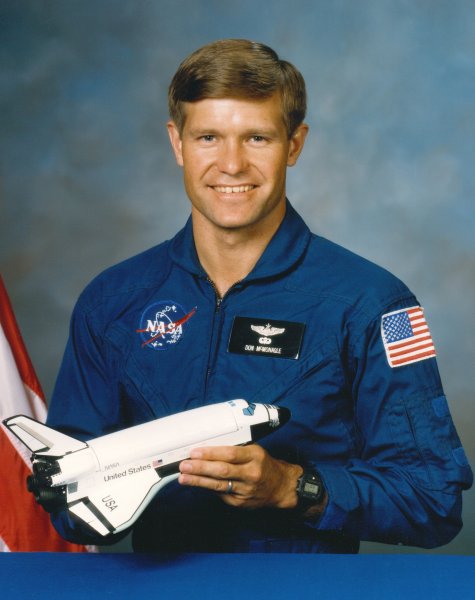
Donald Ray McMonagle

Donald Ray McMonagle
Donald Ray McMonagle (born on May 14, 1952, in Flint, Michigan, USA) is a former astronaut and a veteran of three shuttle flights.
McMonagle was selected as an astronaut by NASA in June 1987. During his three space flights, he has logged over 605 hours in space.
McMonagle flew as a mission specialist aboard the Space Shuttle Discovery on Department of Defense mission STS-39 in April 1991.
In January 1993, McMonagle served as pilot on STS-54 aboard the Space Shuttle Endeavour. The six-day mission featured the deployment of a tracking and data relay satellite (TDRS), and the collection of information about celestial x-rays using a diffuse X-ray spectrometer.
McMonagle commanded a crew of six aboard Space Shuttle Atlantis on the STS-66 Atmospheric Laboratory for Applications and Science-3 (ATLAS-3) 11-day mission in November 1994.
407
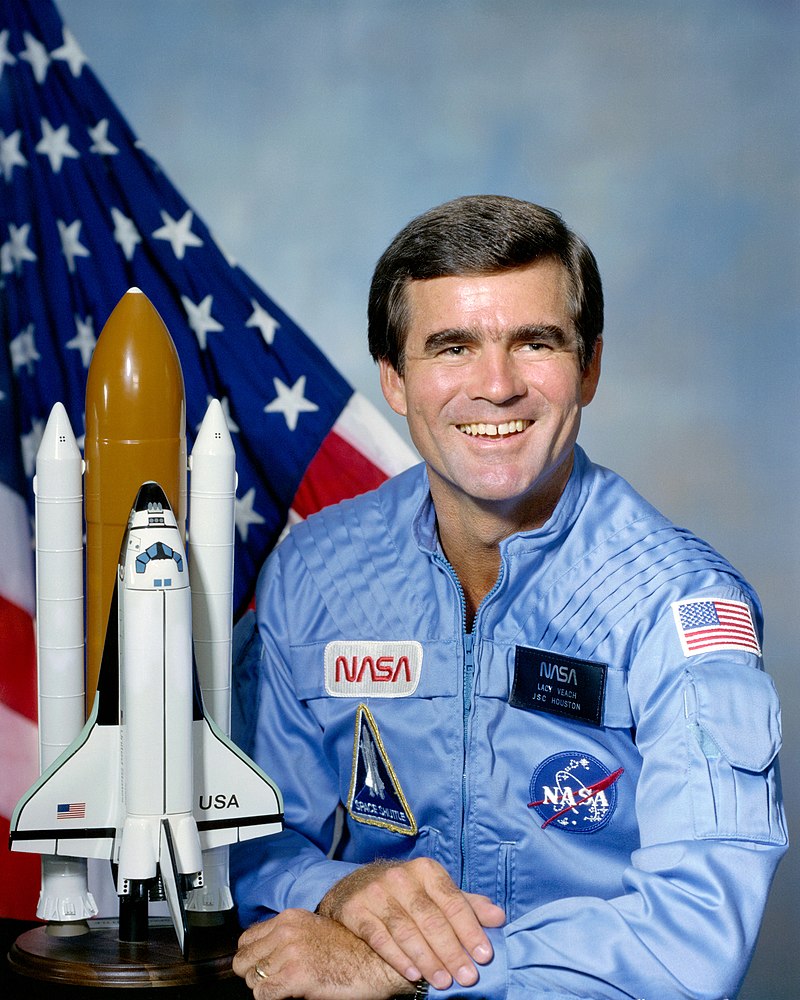
Charles Lacy Veach

Charles Lacy Veach
Charles Lacy Veach (September 18, 1944 – October 3, 1995) was a United States Air Force (USAF) fighter pilot and NASA astronaut.
Veach was selected as an astronaut candidate in May 1984 and became an astronaut in June 1985. He held a variety of technical assignments, and had flown as a mission specialist on two Space Shuttle missions, STS-39 in 1991 and STS-52 in 1992. He had logged 436.3 hours in space.
On STS-39, Veach was responsible for operating a group of instruments which included an ultraviolet astronomical camera, an x-ray telescope, and a liquid helium-cooled infrared telescope which performed landmark observations of the Earth's atmosphere and the Aurora Australis (the Southern Lights). The 8-day unclassified Department of Defense mission aboard the Orbiter Discovery launched from the Kennedy Space Center in Florida on April 28, 1991, and landed at Kennedy on May 6, 1991.
STS-52 was a 10-day mission aboard the Orbiter Columbia during which the crew successfully deployed the Laser Geodynamic Satellite (LAGEOS), a joint Italian-American project. They also operated the first U.S. Microgravity Payload (USMP) with French and American experiments. Veach was the primary Remote Manipulator System (RMS) operator on the mission, supporting the initial flight tests of the Canadian-built Space Vision System (SVS). STS-52 launched from the Kennedy Space Center in Florida on October 22, 1992, and landed at Kennedy on November 1, 1992.
408
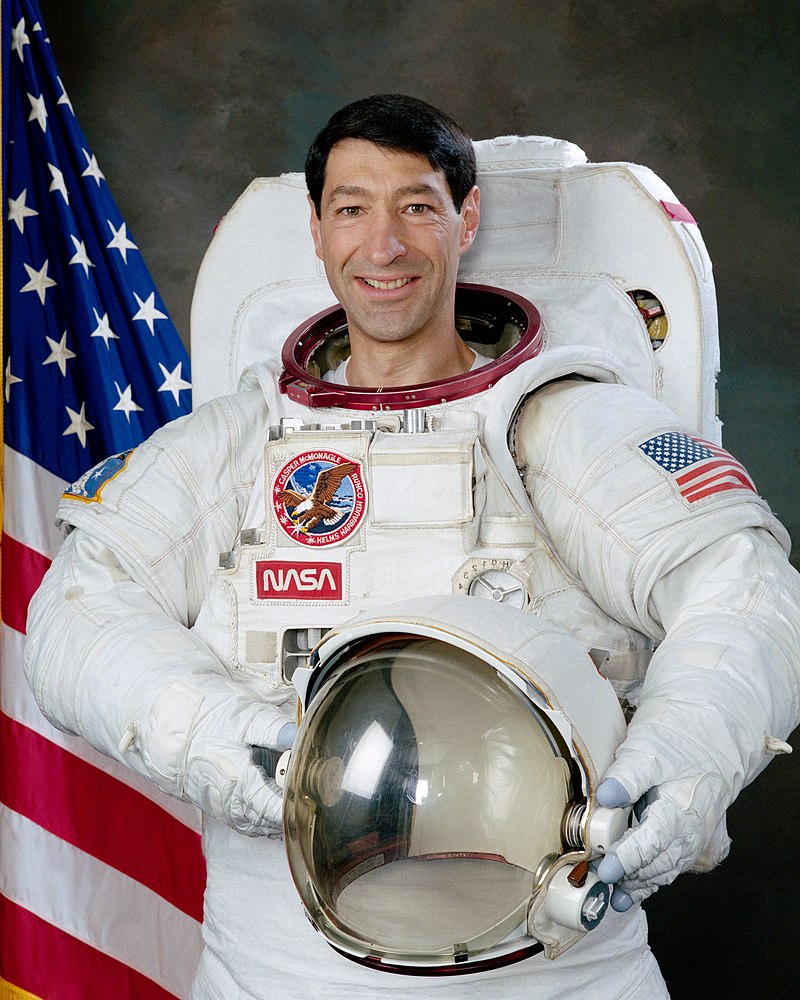
Mario Runco Jr.

Mario Runco Jr.
Mario Runco Jr. is a former United States Naval officer and NASA astronaut. He was selected as an astronaut with in 1987. He flew three Space Shuttle missions, performed a spacewalk on his second mission, and is now retired both from NASA and the U.S. Navy.
A veteran of three space flights (STS-44 in 1991, STS-54 in 1993, and STS-77 in 1996), Runco has logged over 551 hours in space which includes a 4.5 hour spacewalk during his STS-54 mission.
On his first flight, Runco served as a Mission Specialist (MS-3) on the crew of STS-44 aboard the Space Shuttle ATLANTIS (OV-104) which launched from the Kennedy Space Center's (KSC's) launch pad 39A on the night of November 24, 1991. STS-44 was originally scheduled as a 10-day mission; however, the oxygen loading for the mission was not sufficient to last 10 days due to the weight of the primary payload so the crew would need to drastically conserve power to be able to make the oxygen last through the full mission duration. ATLANTIS (OV-104) returned with only 2 of 3 IMU’s (#'s 1 and 3) operating to a contingency landing the next day on lakebed runway 05 at Edwards Air Force Base, California, on December 1, 1991, completing 110 orbits of the Earth.
STS-54 launched from KSC’s launch pad 39B launch pad 39B on January 13, 1993, and landed at the Shuttle Landing Facility (SLF) runway 33 at KSC in Florida on January 19, 1993, completing 96 orbits of the Earth. The six-day mission’s primary objective was accomplished with his deployment of a NASA Tracking and Data Relay Satellite (TDRS-F) on flight day 1. Mission duration was 5 days, 23 hours and 38 minutes.
On his last mission he served as a Mission Specialist (MS-3) on the crew of STS-77 aboard the Space Shuttle ENDEAVOUR (OV-105). Launching from KSC’s launch pad 39B on May 19, 1996, STS-77 carried a number of technology development experiments as well as a suite of microgravity science experiments. STS-77 landed at KSC’s SLF runway 33 on May 29, 1996, completing 161 orbits of the Earth. Mission duration was 10 days and 39 minutes.
409
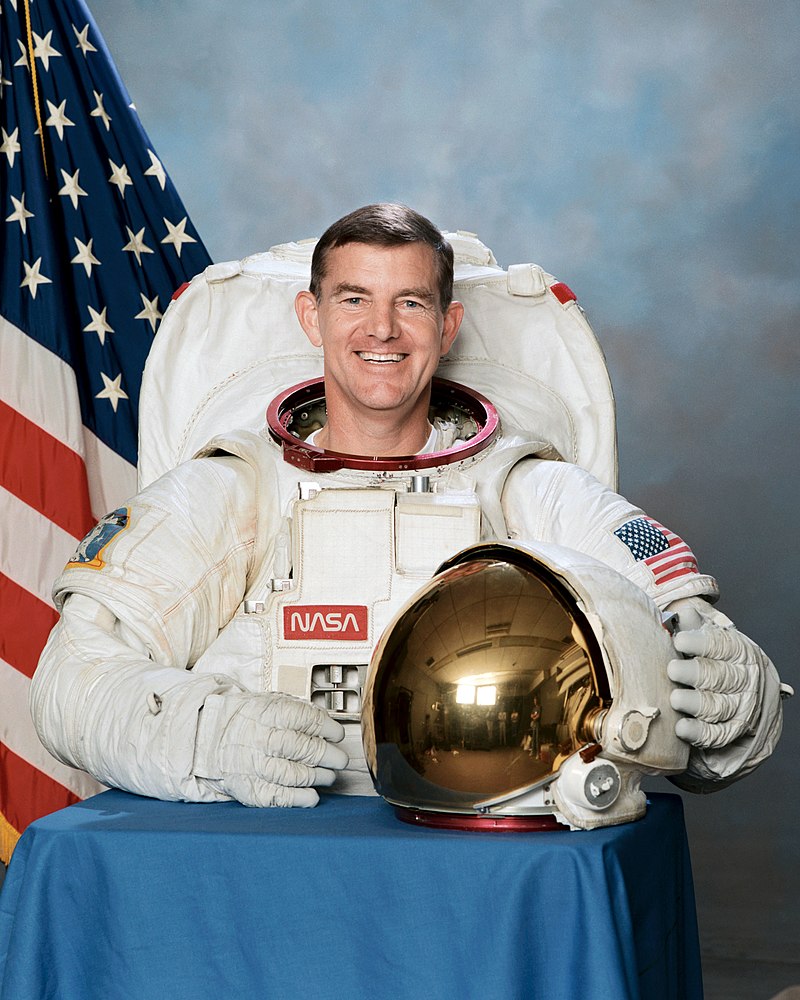
James Shelton Voss

James Shelton Voss
James Shelton Voss (born on March 3, 1949, in Cordova, Alabama) is a retired United States Army colonel and NASA astronaut.
Voss was a mission specialist on board Space Shuttle Atlantis during STS-44 from November 24 - December 1, 1991. The mission orbited the Earth 110 times before returning to Edwards Air Force Base in California.
From December 2–9, 1992, Voss flew as a mission specialist on STS-53. The 171 orbit flight of the Space Shuttle Discovery deployed a classified Department of Defense payload.
During STS-69, Voss was a mission specialist and payload commander on board Space Shuttle Endeavour. The flight, which orbited the Earth 171 times from September 7–18, 1995.
Voss was a mission specialist on board Space Shuttle Atlantis on STS-101. The Shuttle visited the then-unmanned International Space Station and delivered over 3,000 pounds of equipment and supplies. Jim and Jeff Williams conducted a six-hour spacewalk to finish installation of a Russian crane, replace a faulty antenna, and install handrails on the outside of the station.
Voss and his Expedition 2 crewmates launched as Mission Specialists March 8, 2001, on board Space Shuttle Discovery during the STS-102 mission. Voss participated in one of the missions two spacewalks, along with Susan Helms, to prepare a Pressurized Mating Adapter for relocation. The spacewalk set a record of 8 hours 56 minutes duration.
Voss, Susan Helms, and Yuri Usachev spent 163 days aboard the International Space Station conducting 18 scientific experiments, maintenance, and outfitting. During the flight, Jim (who was a Flight Engineer) was the first person to operate the Space Station Robotic Manipulator System (Canadarm2). He also participated in a 19-minute EVA, in which Voss and Usachev prepared a docking probe for the arrival of the Pirs Docking Compartment.
Voss returned home from his fifth spaceflight as a mission specialist on board the Space Shuttle Discovery on August 20, 2001 (STS-105). The mission saw a crew rotation, two spacewalks, and another flight of the MPLM.
410à¤à¥
